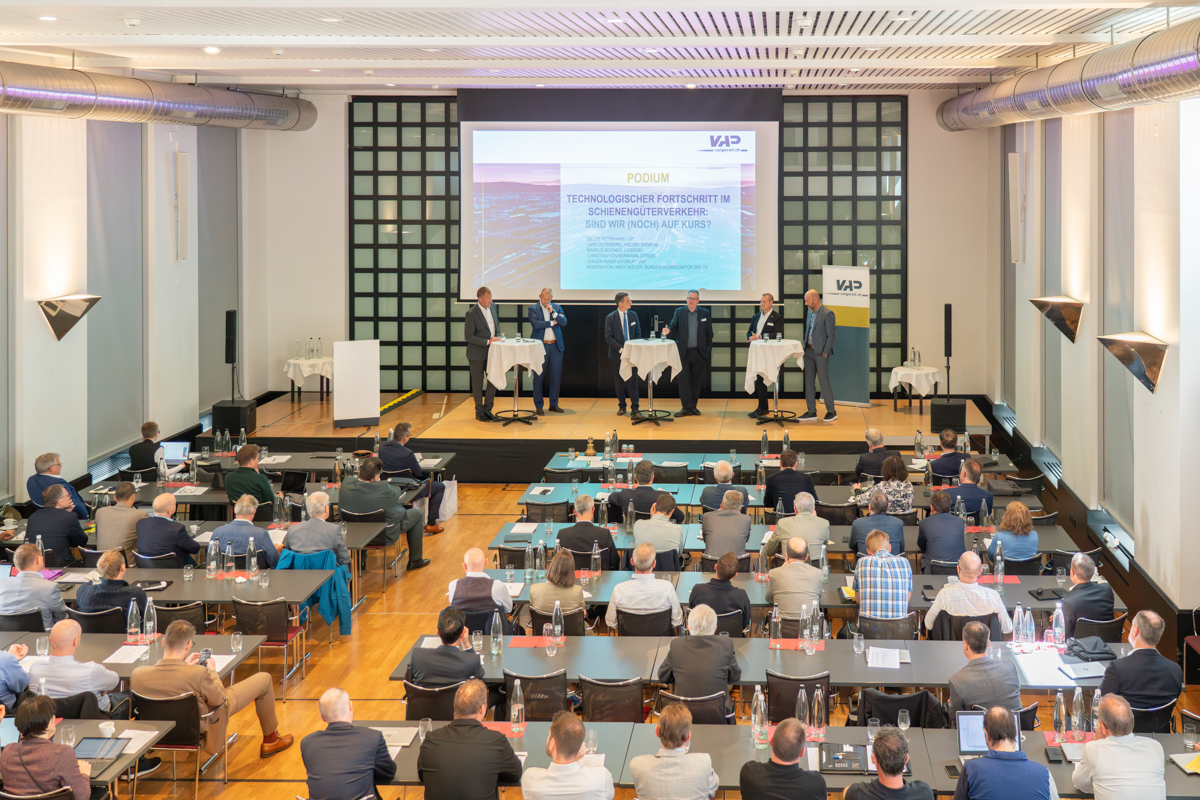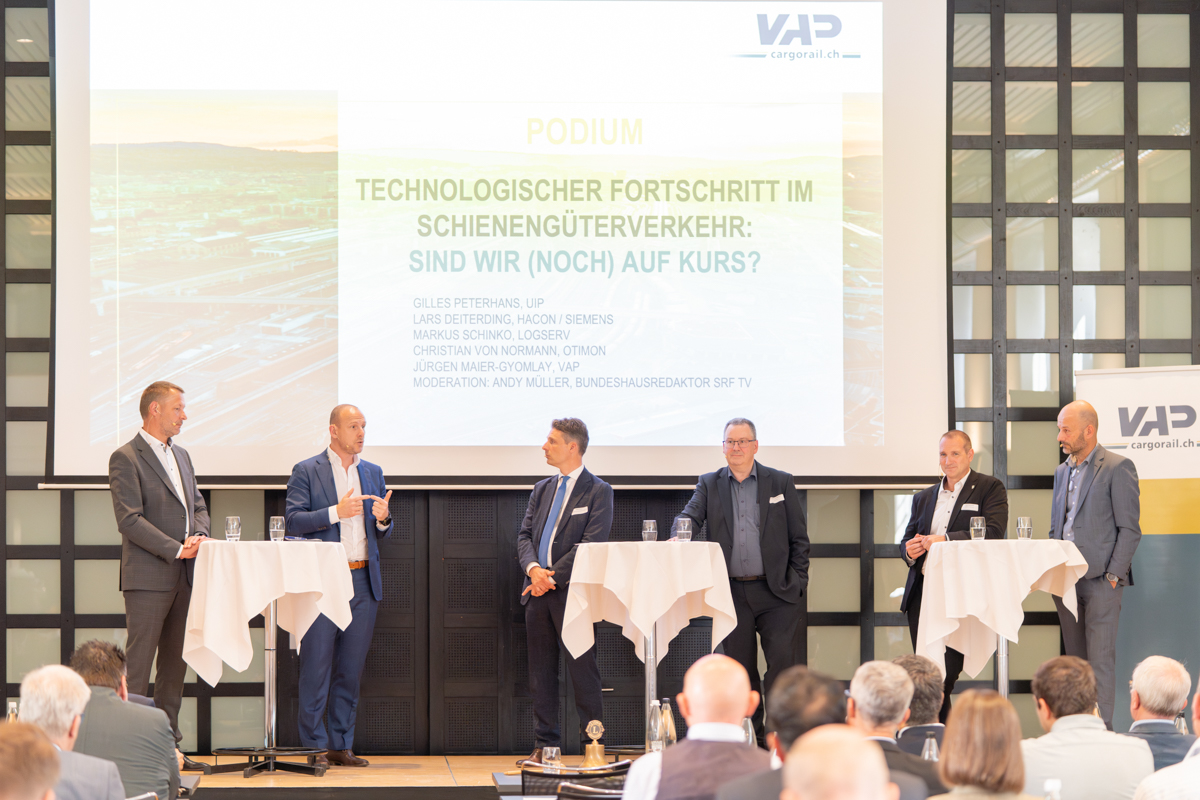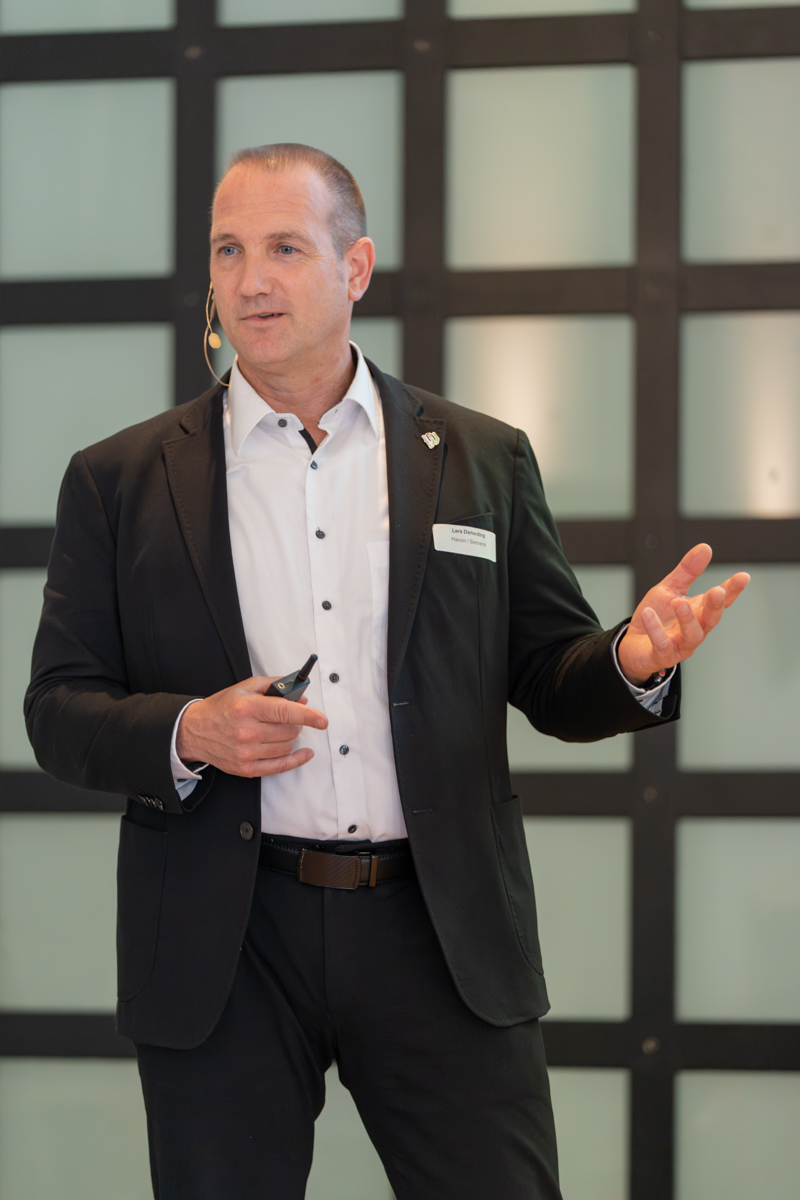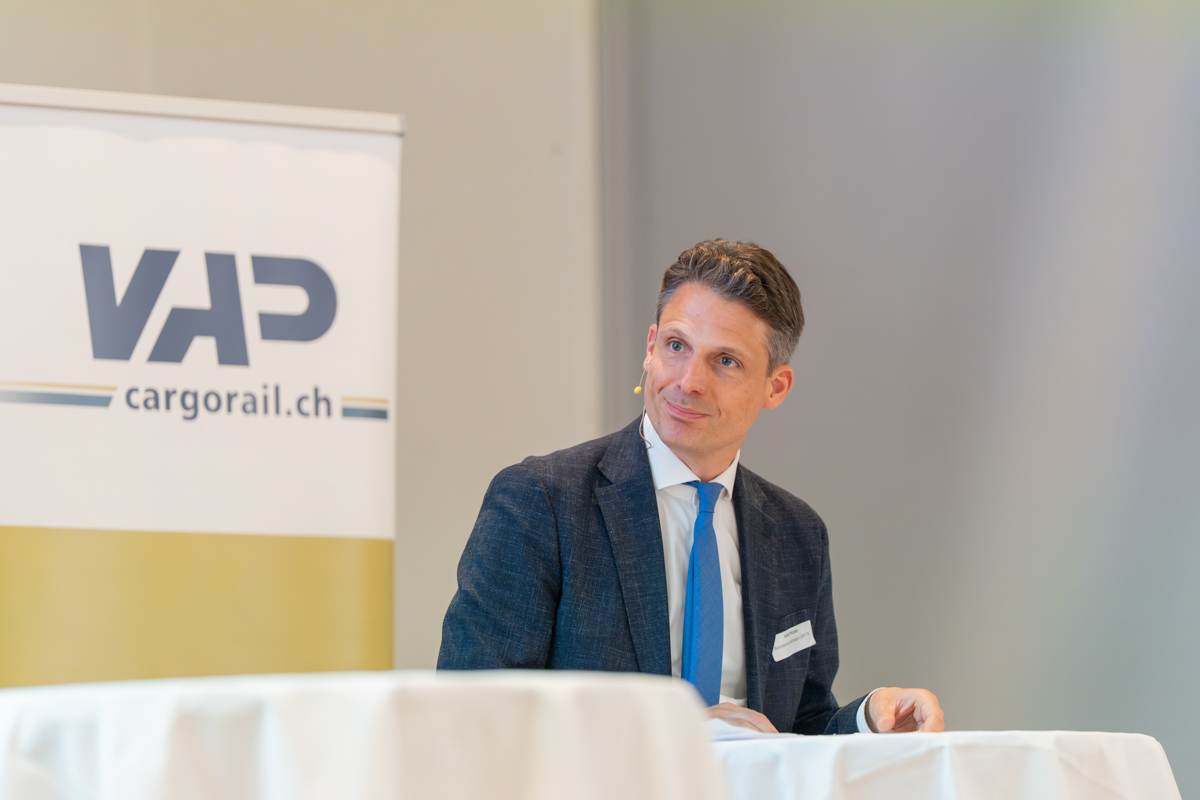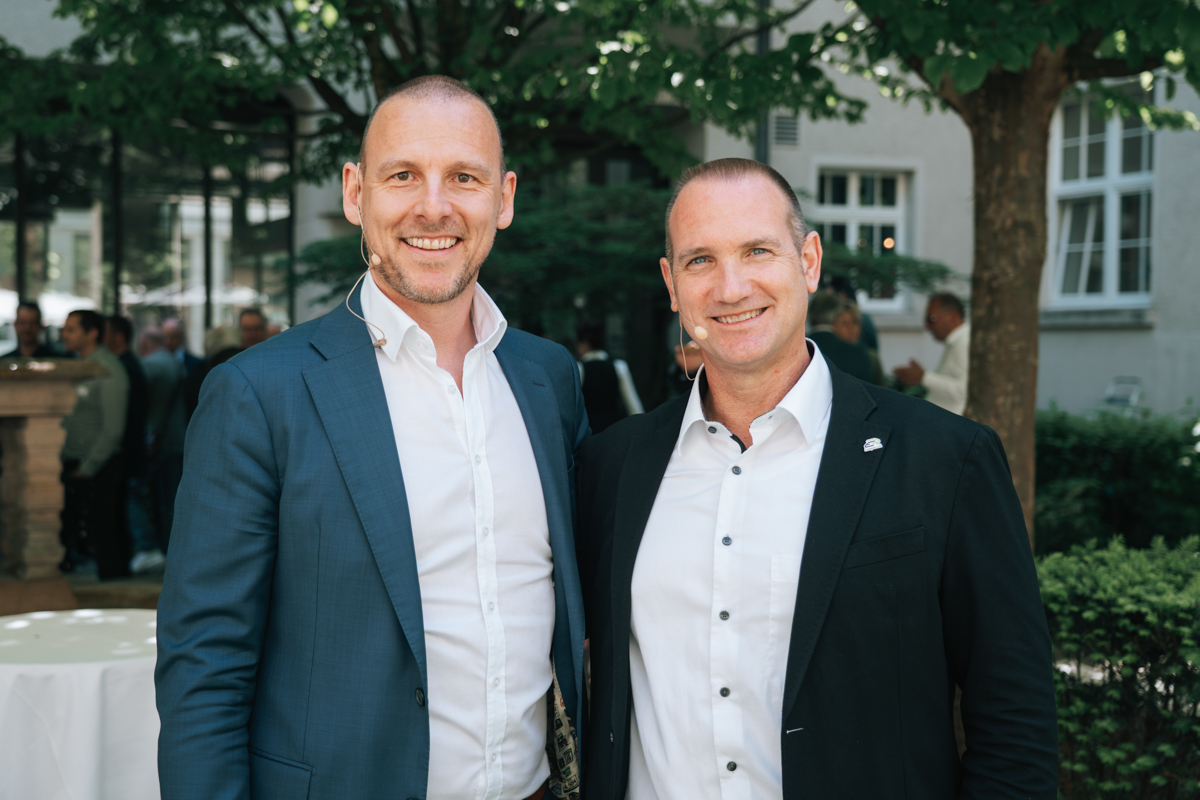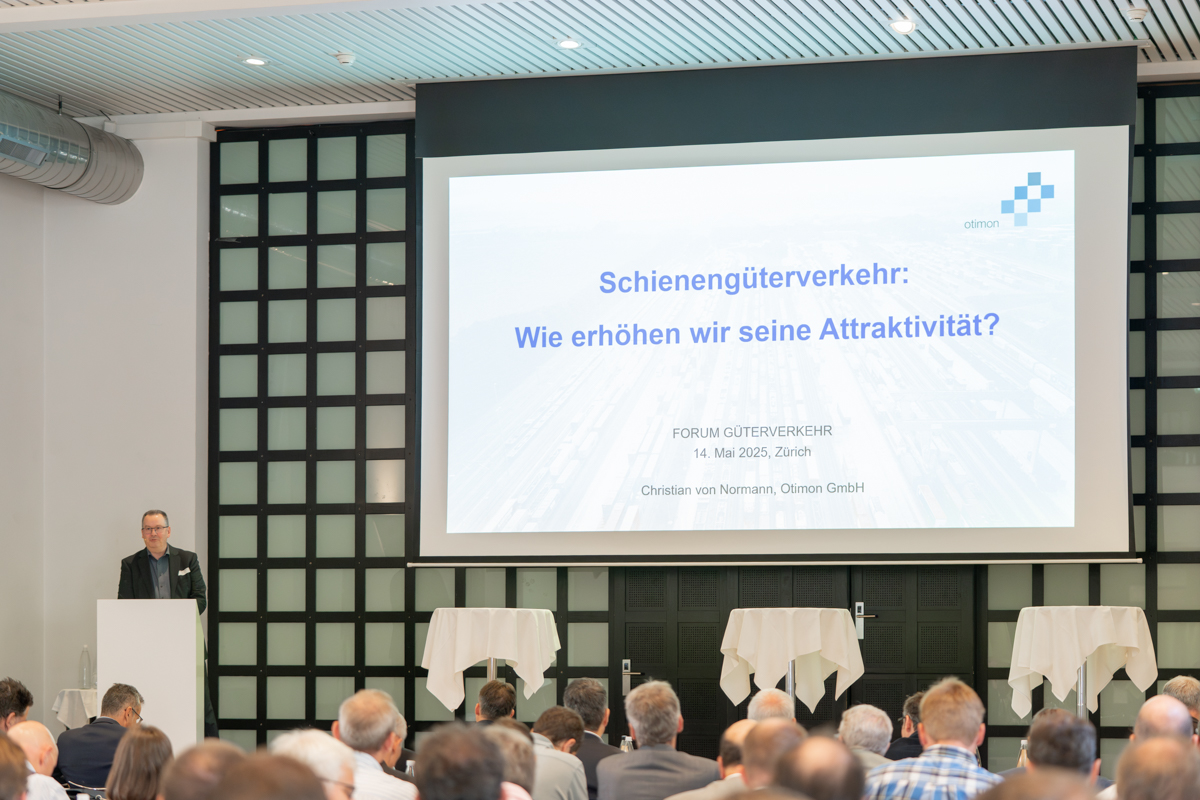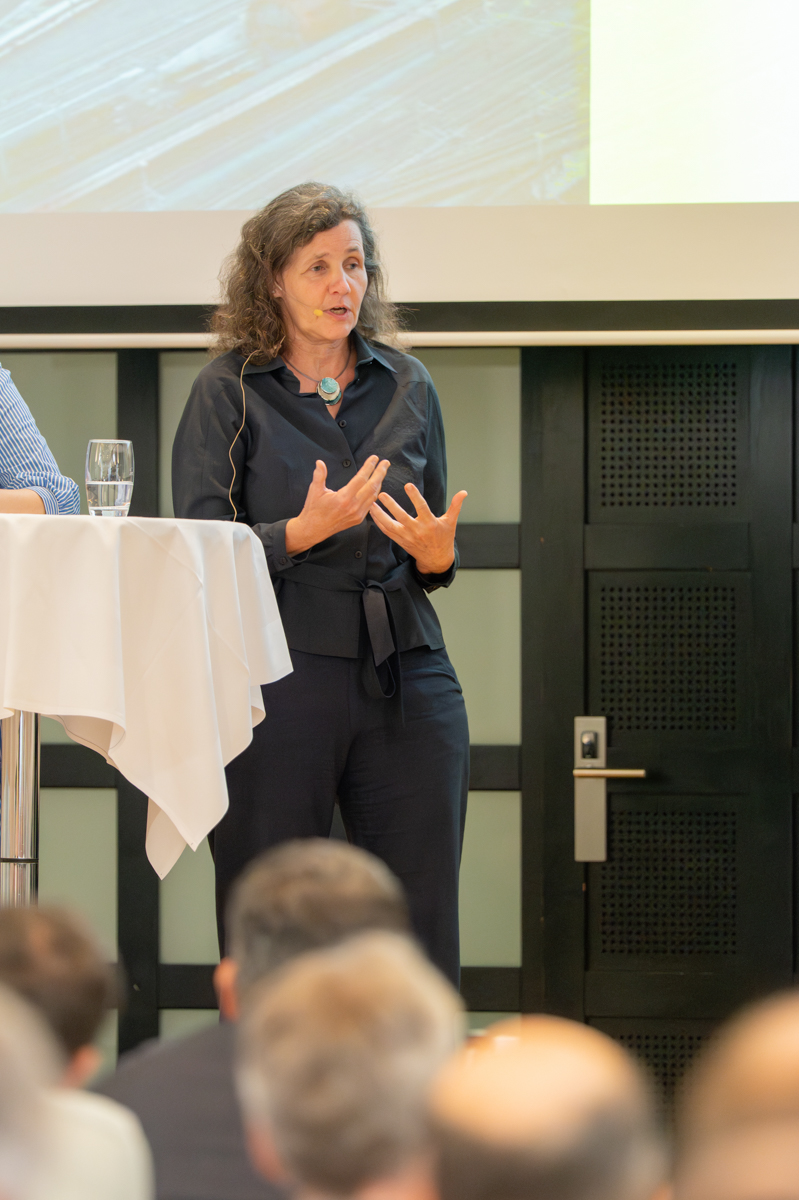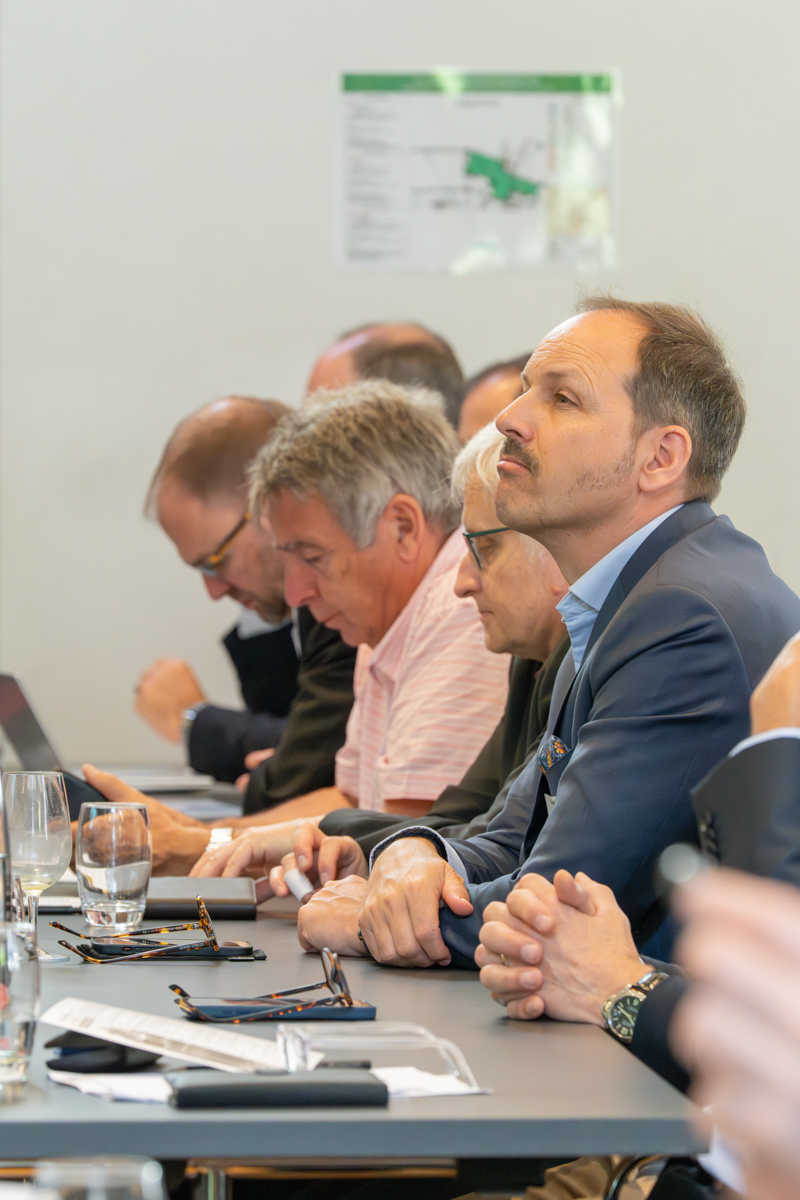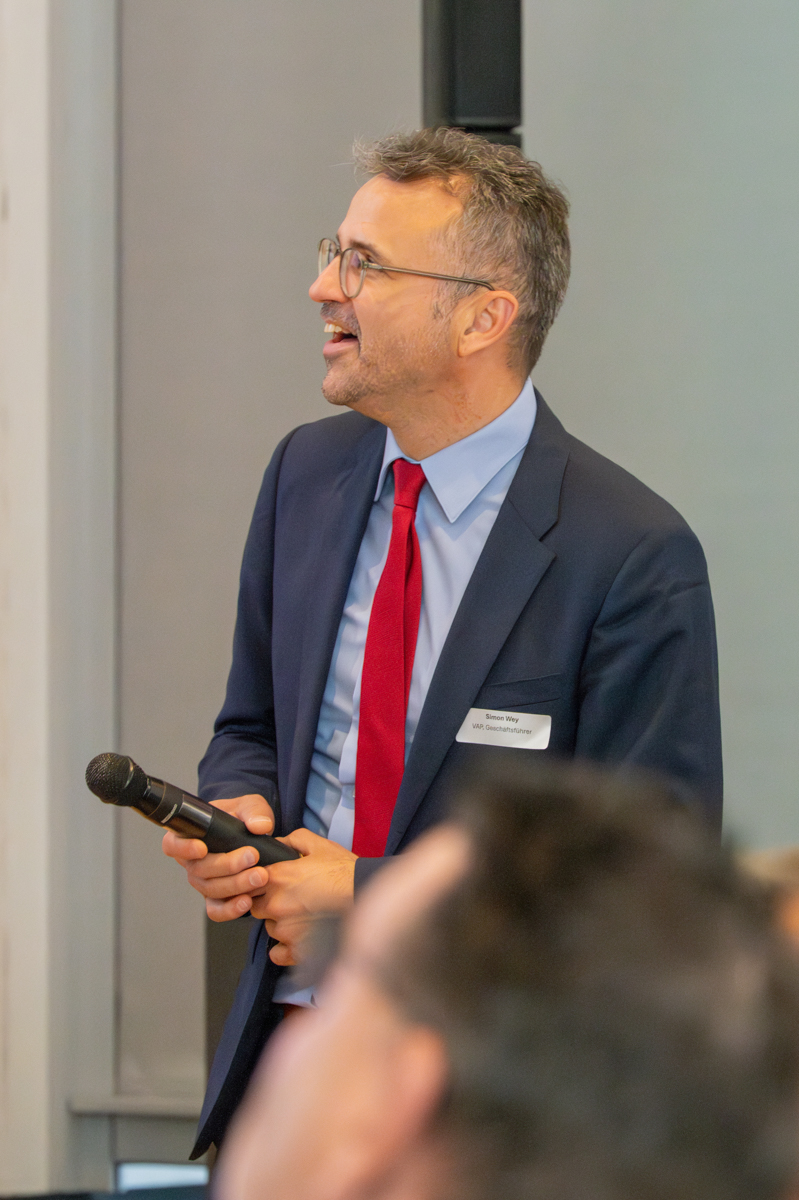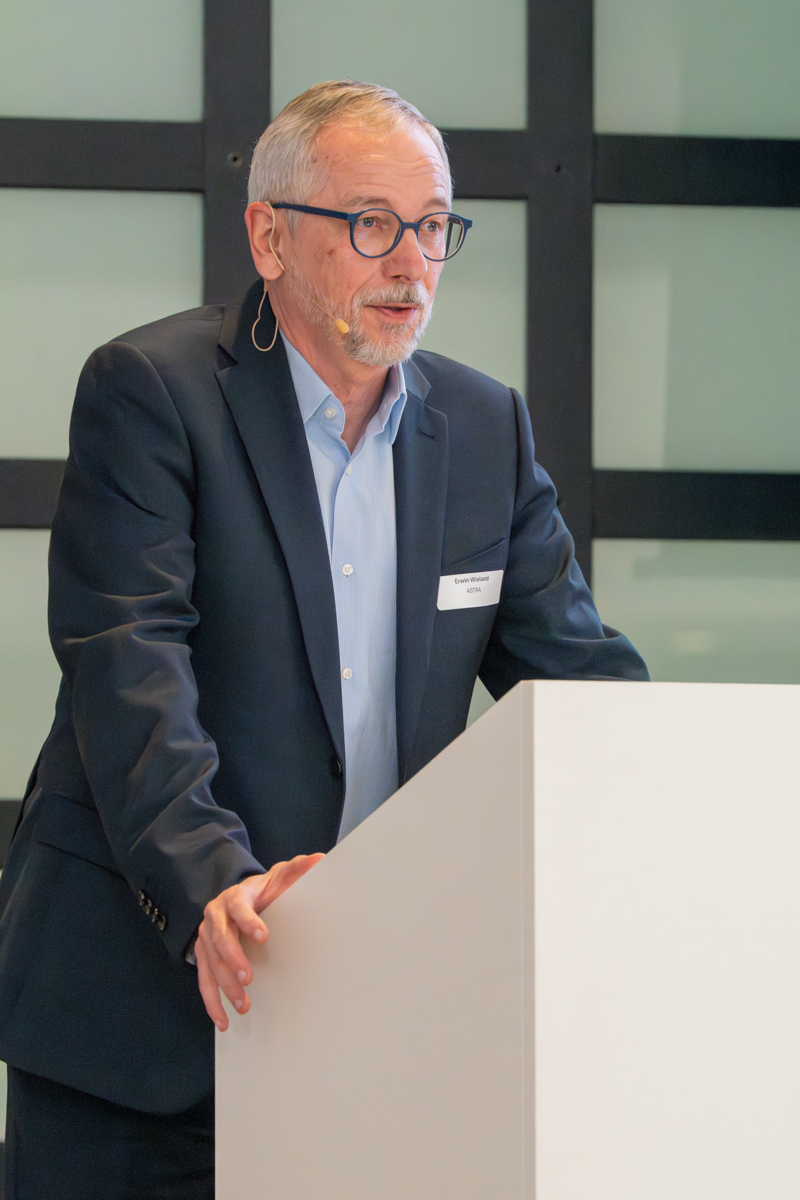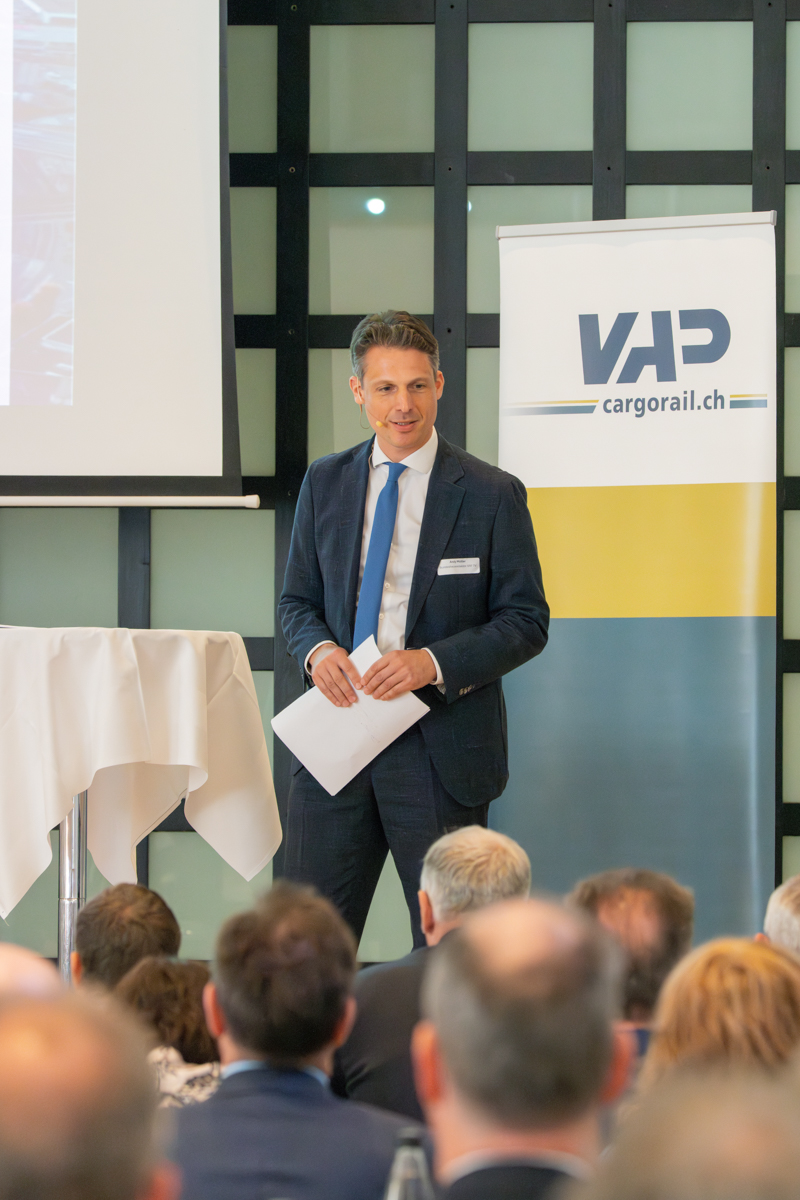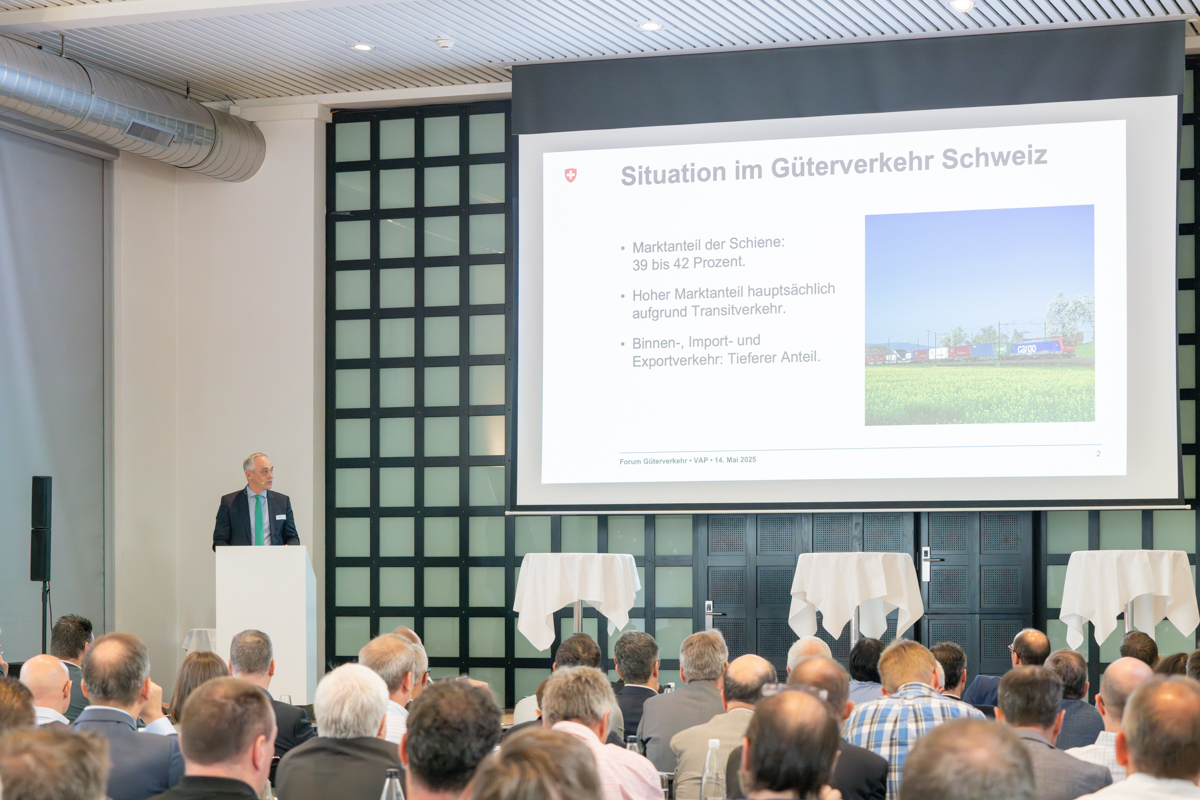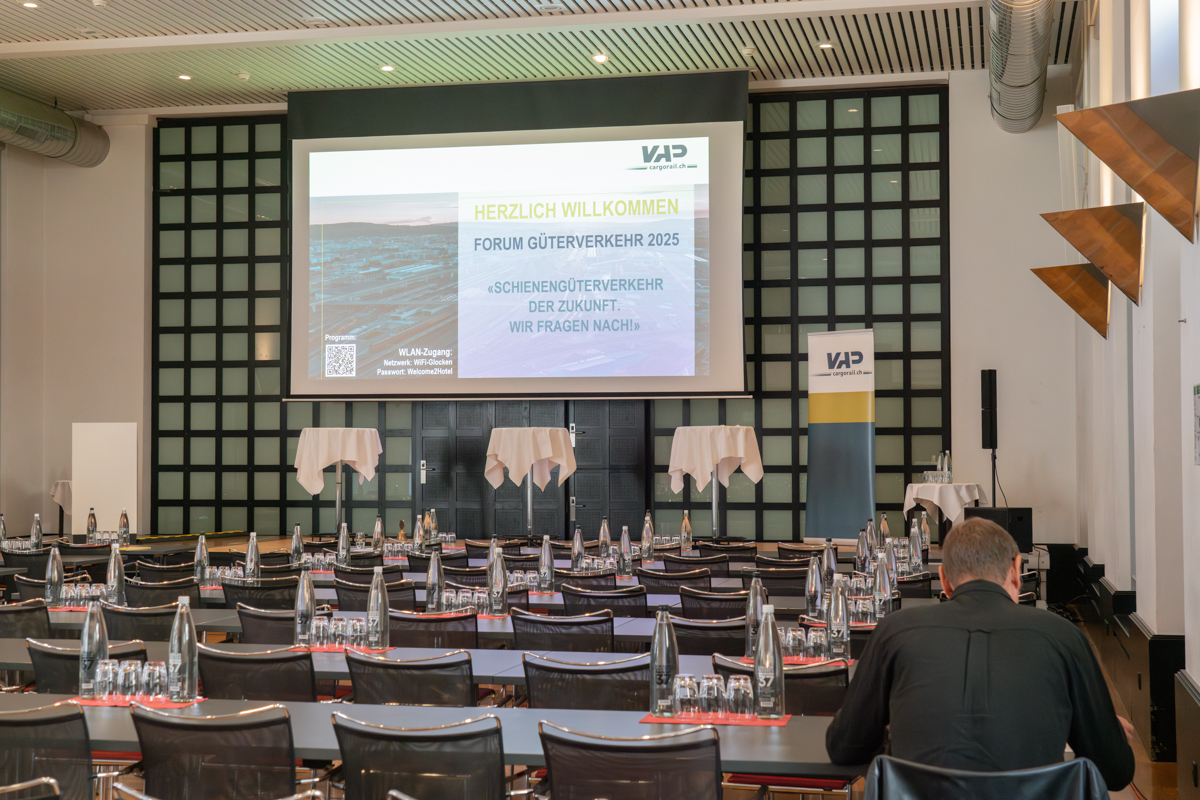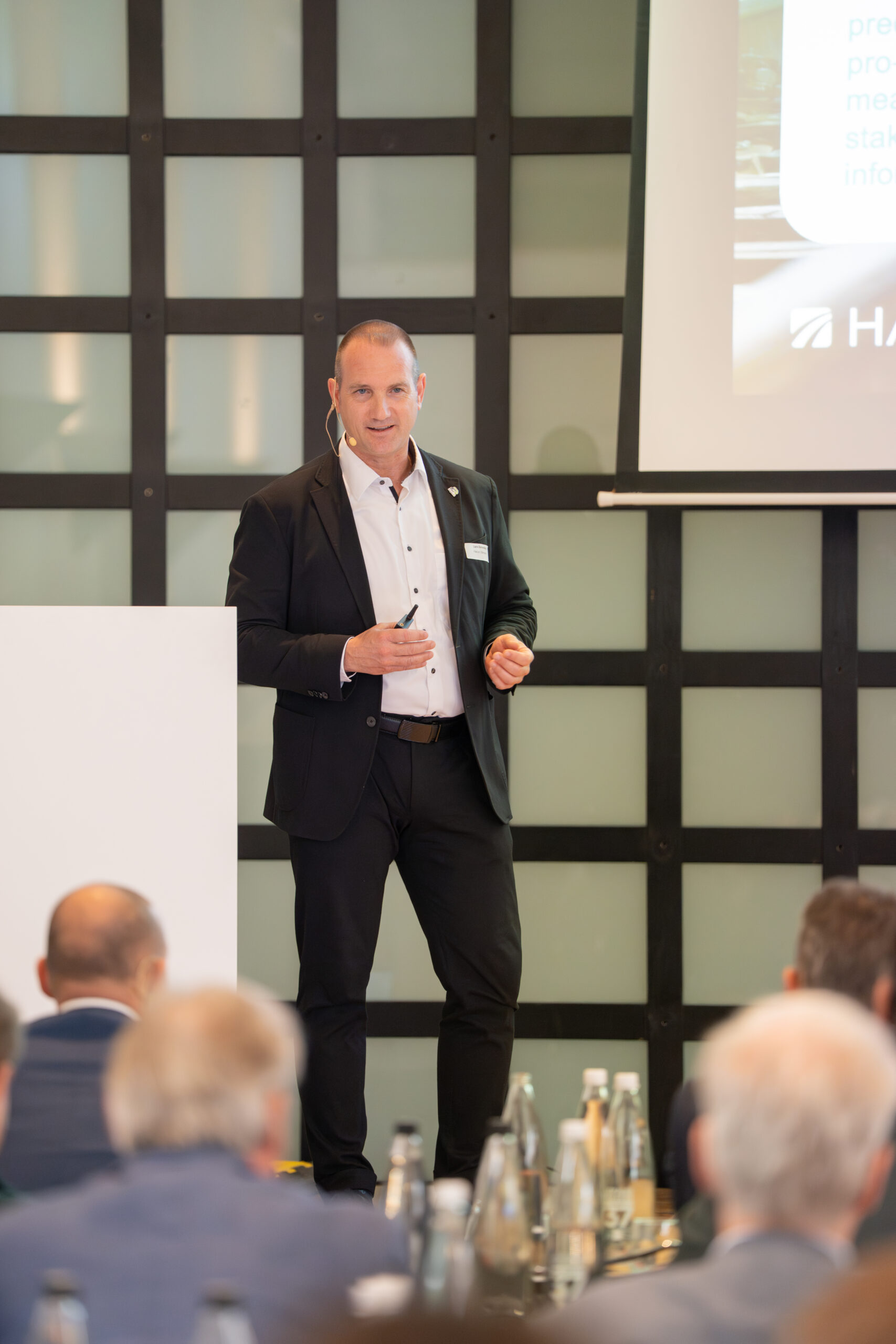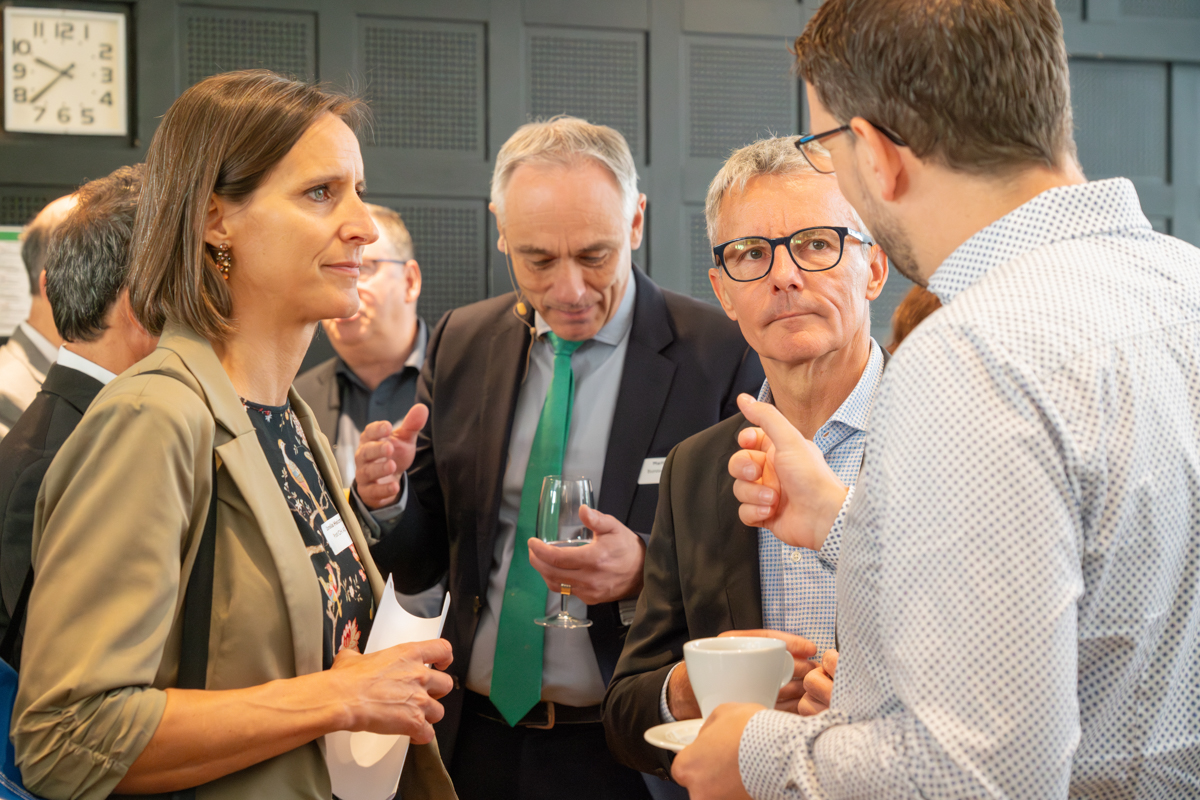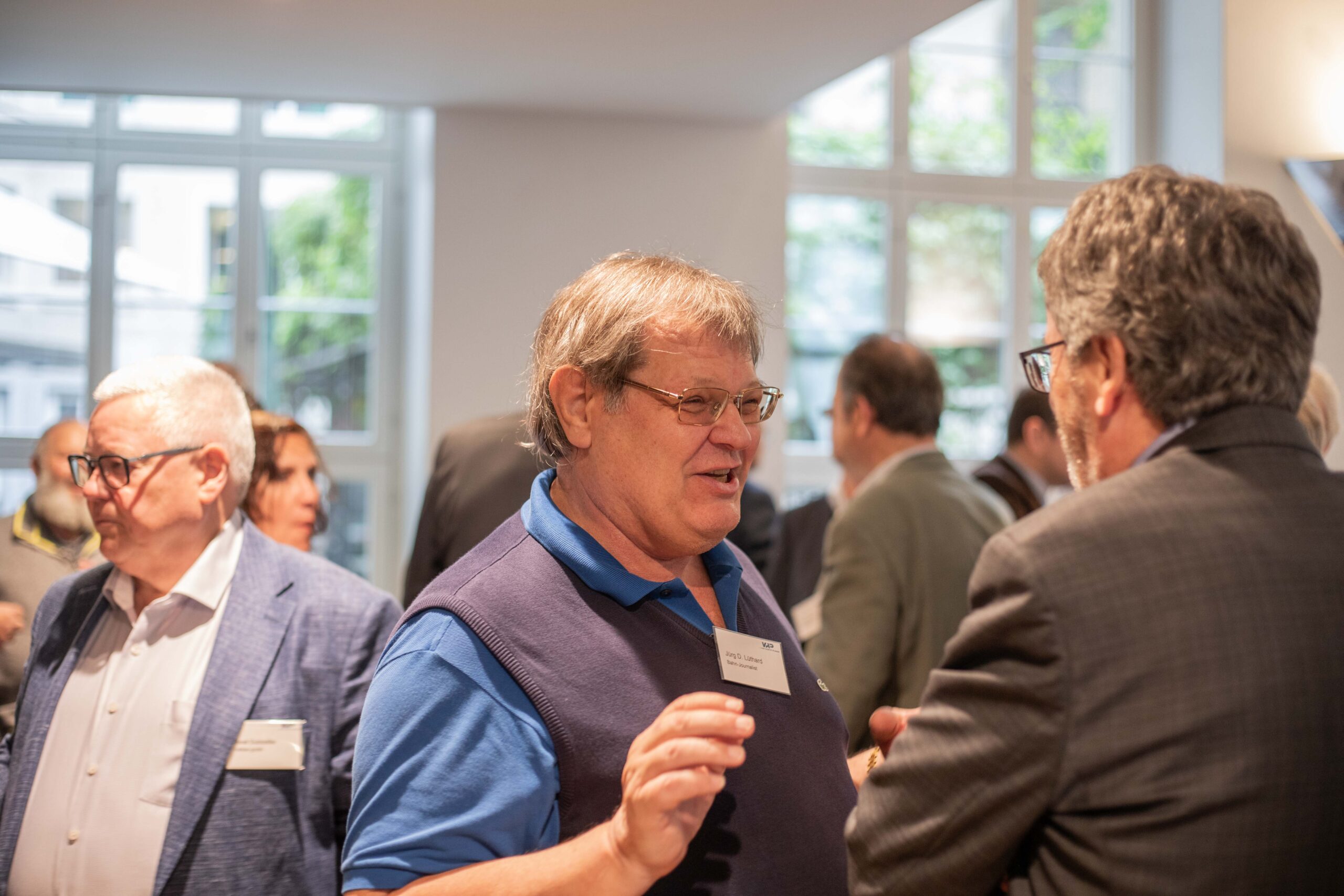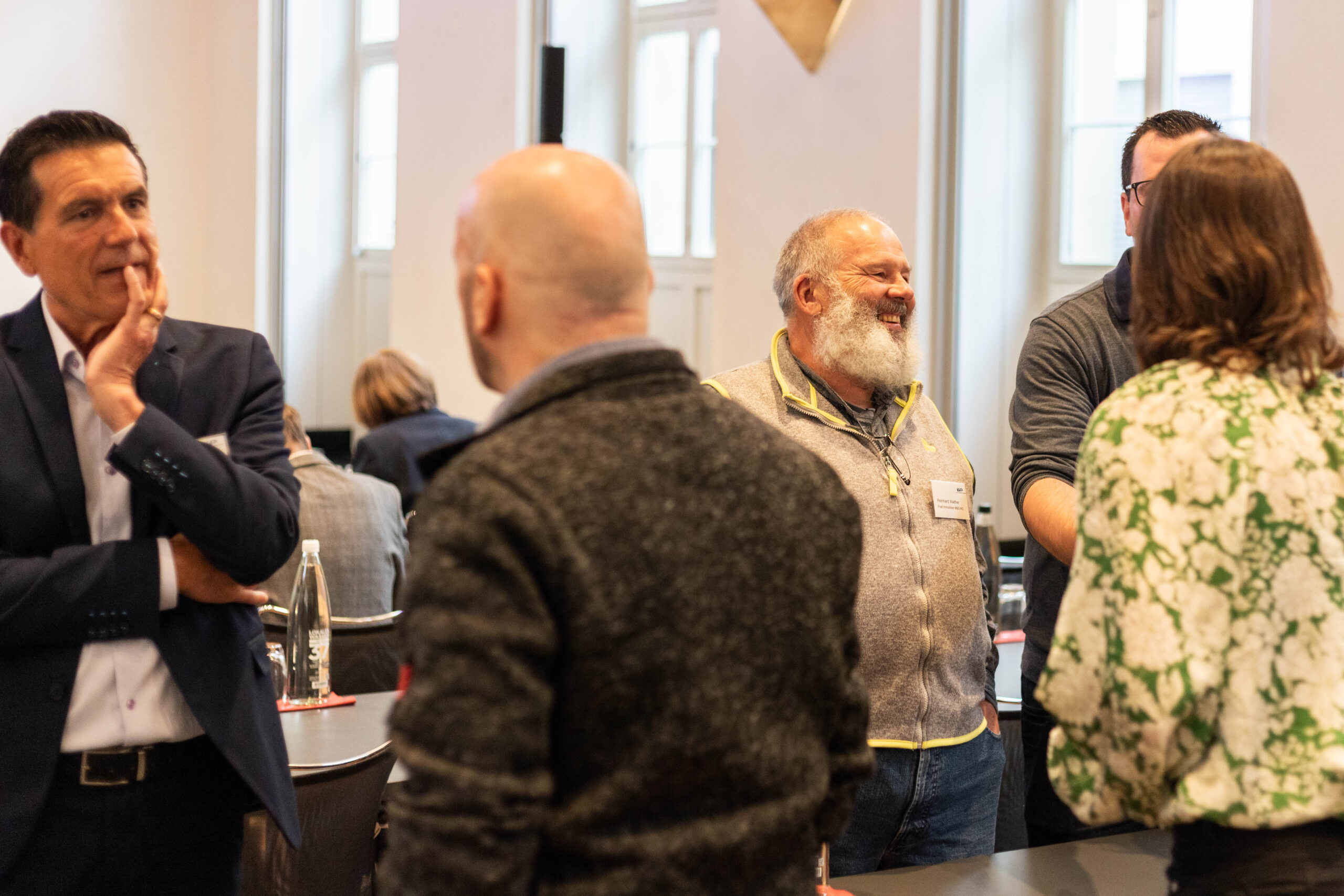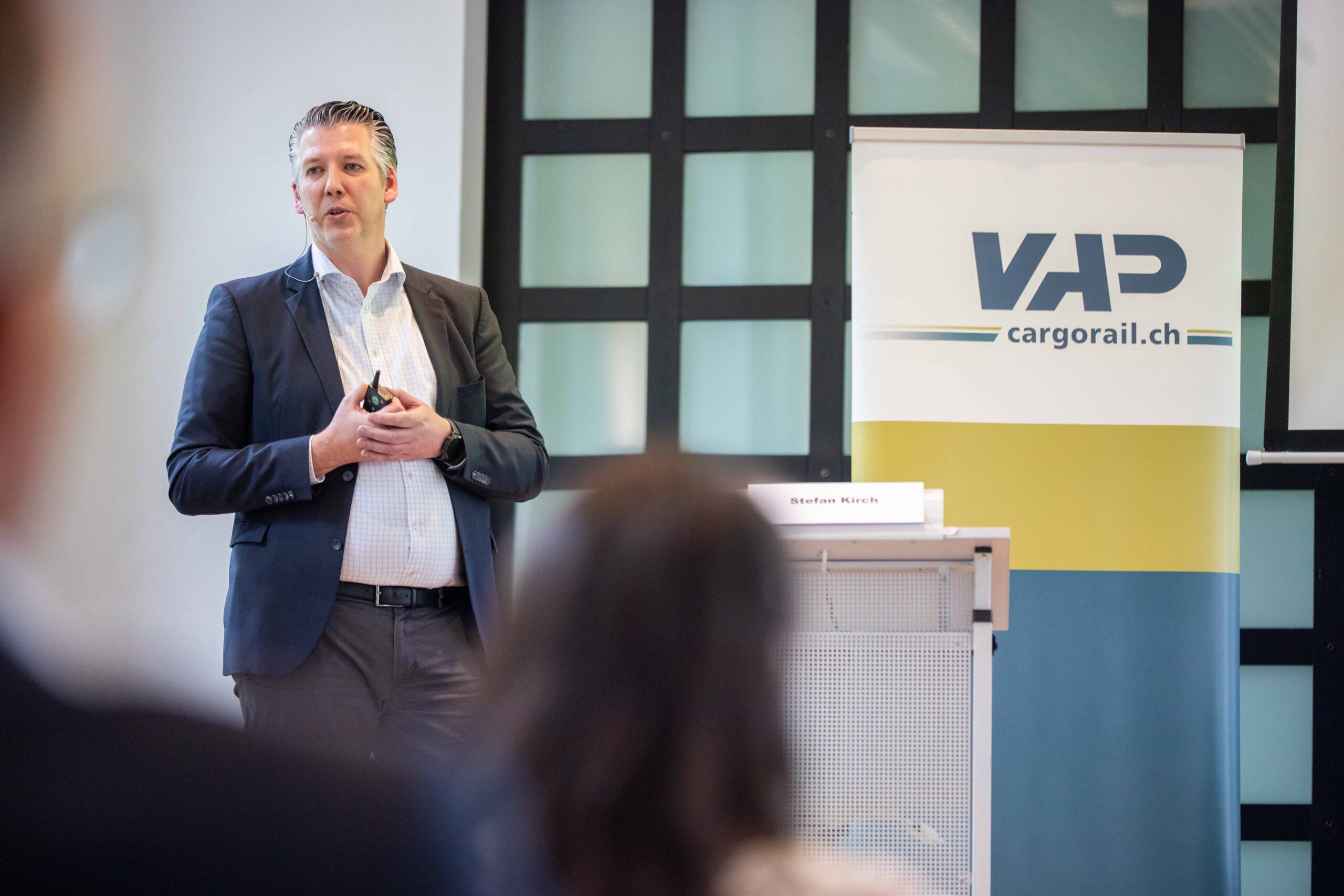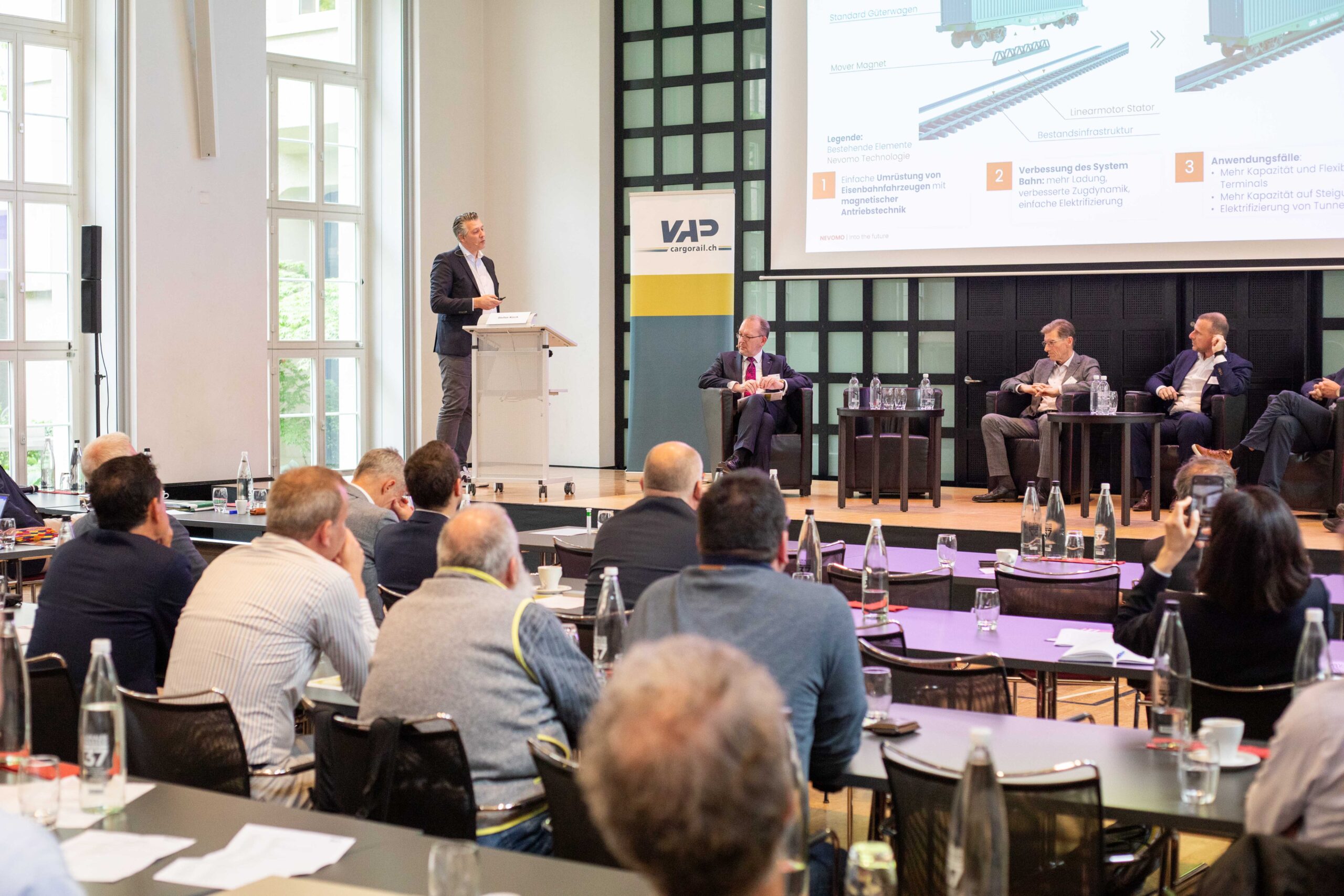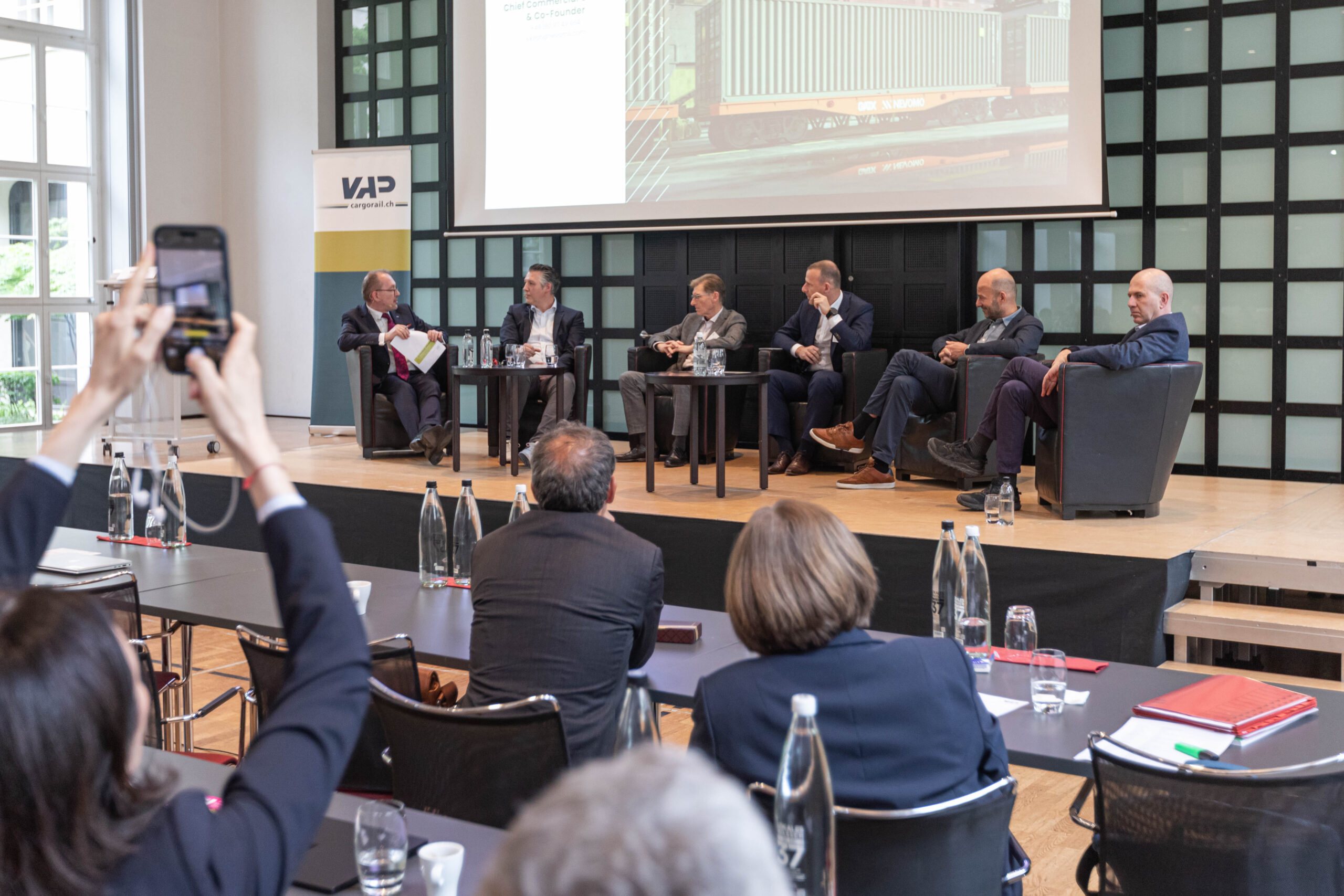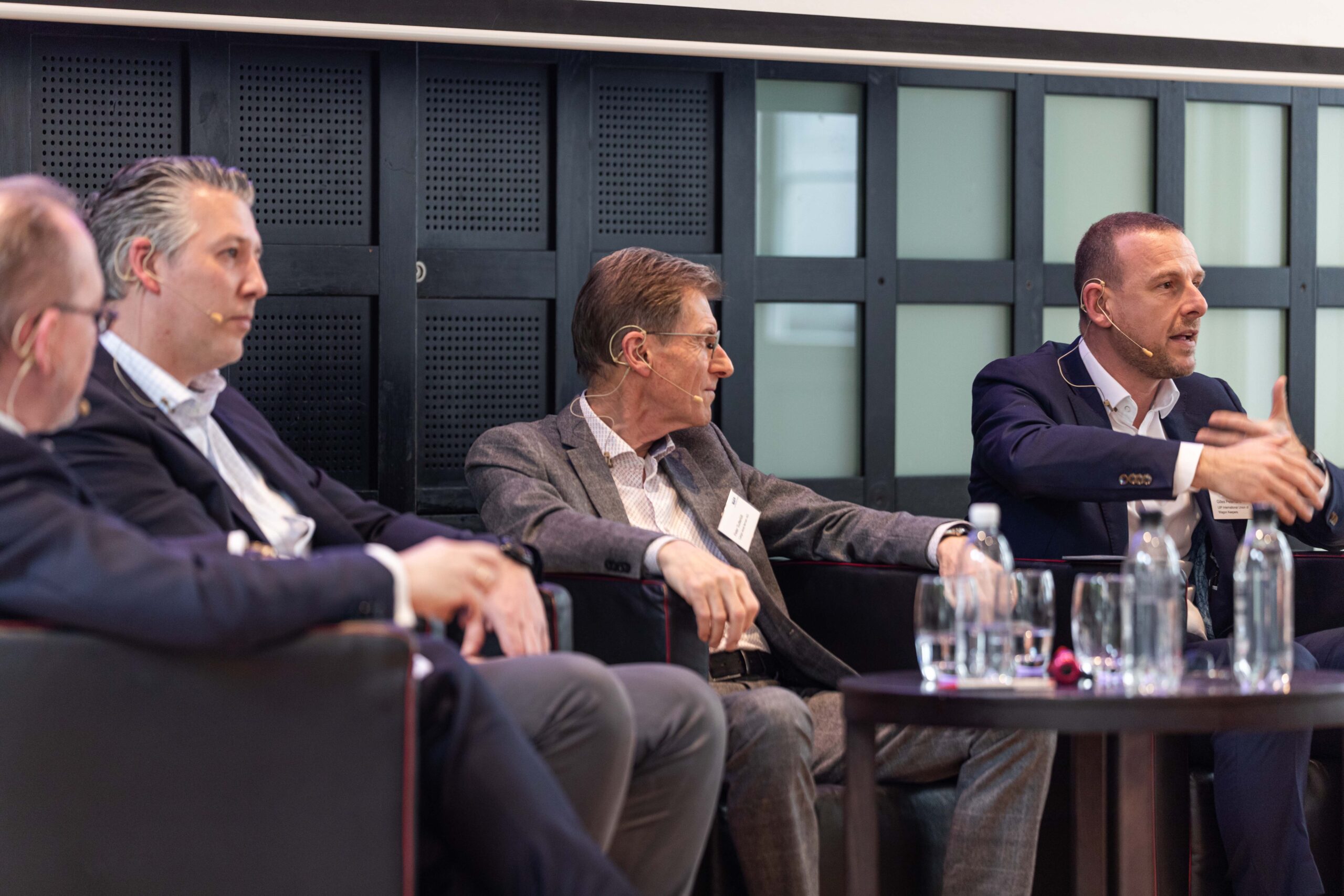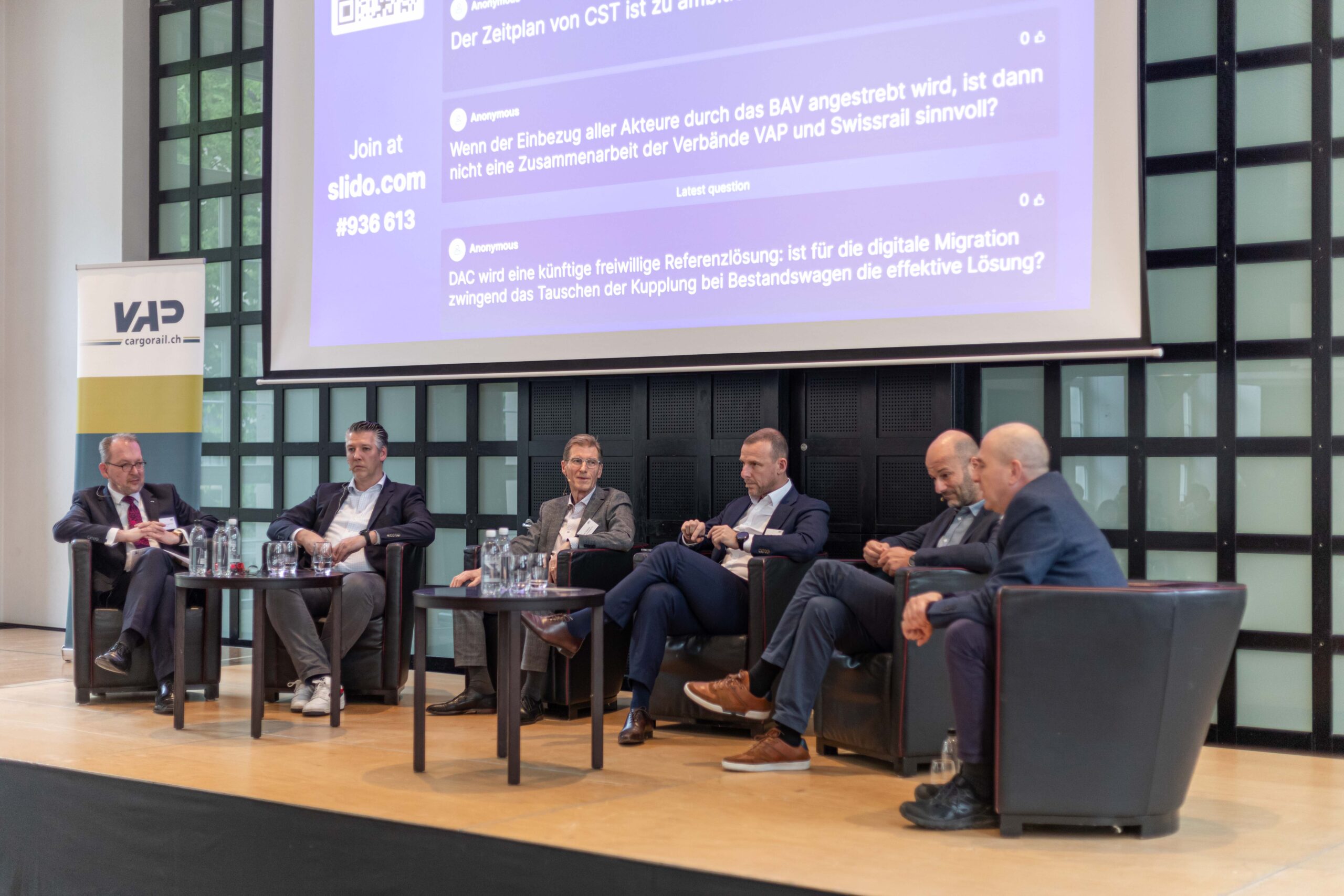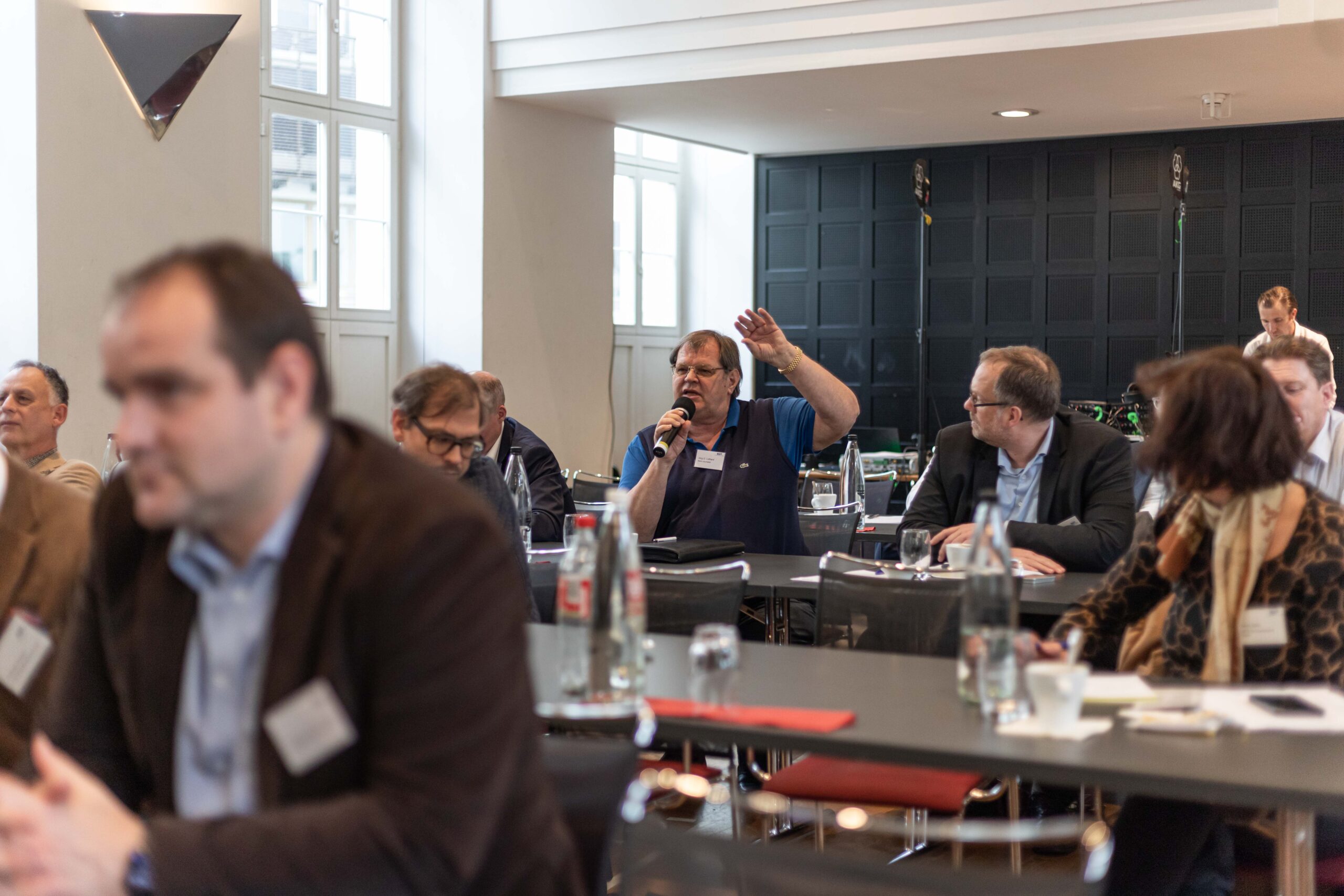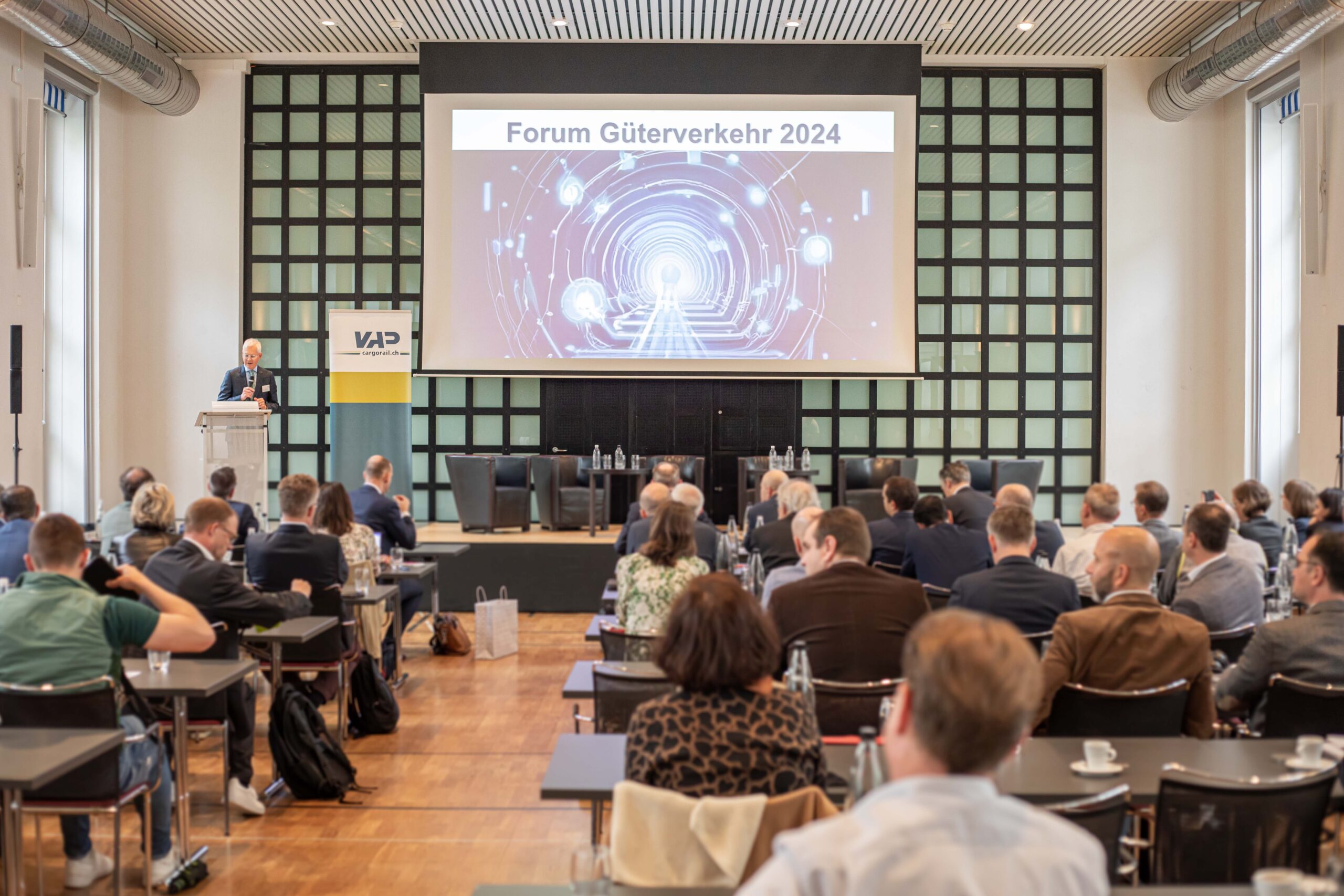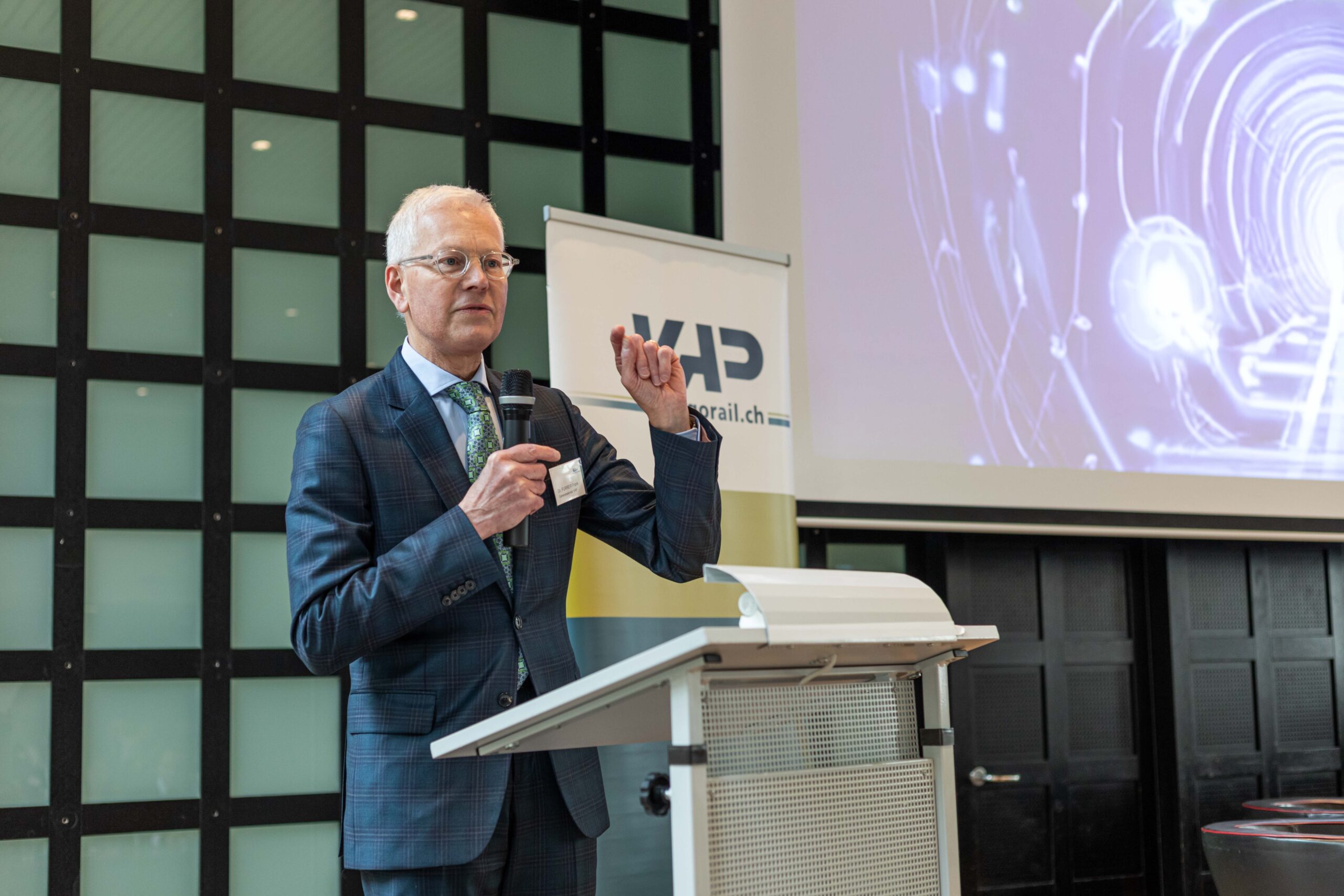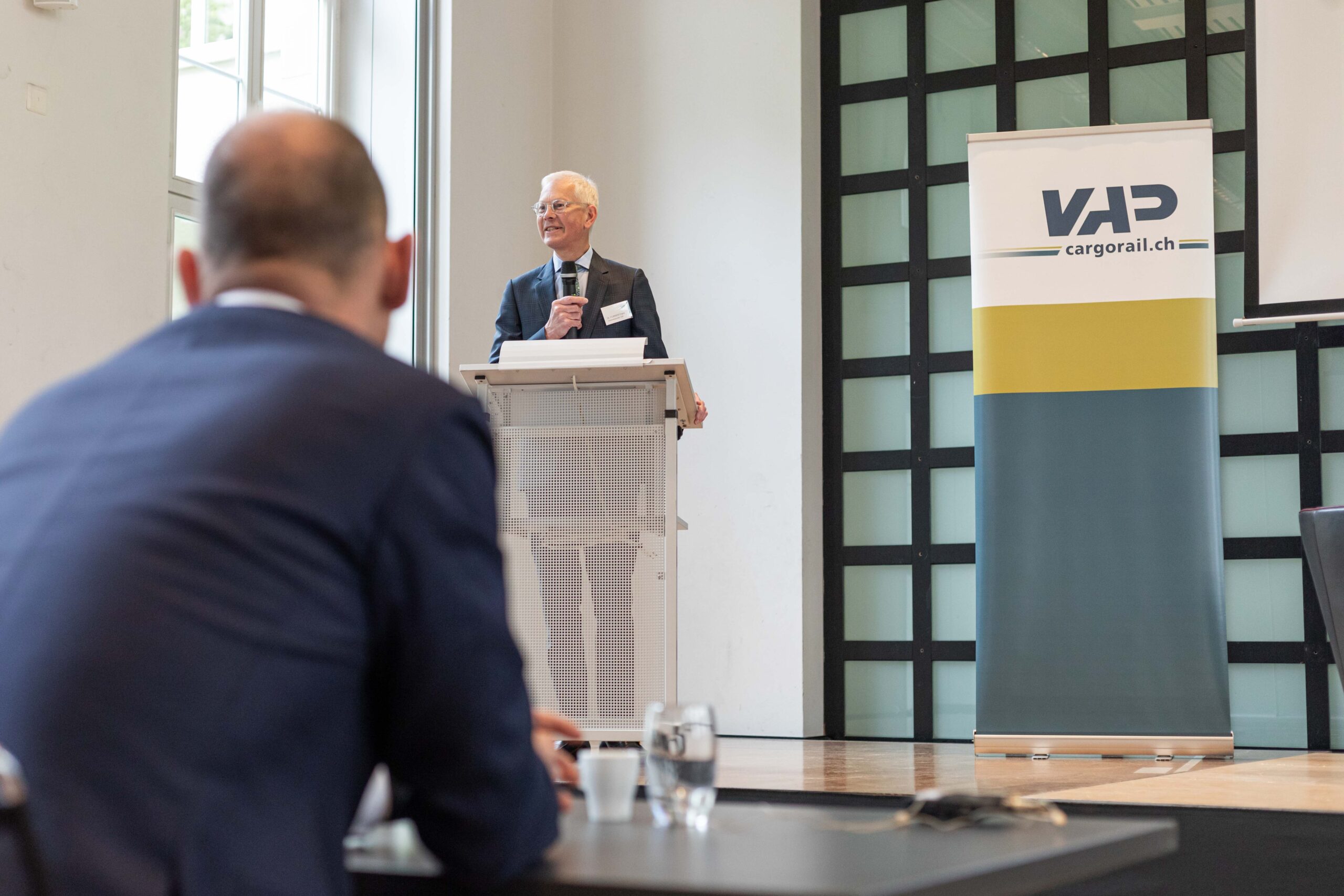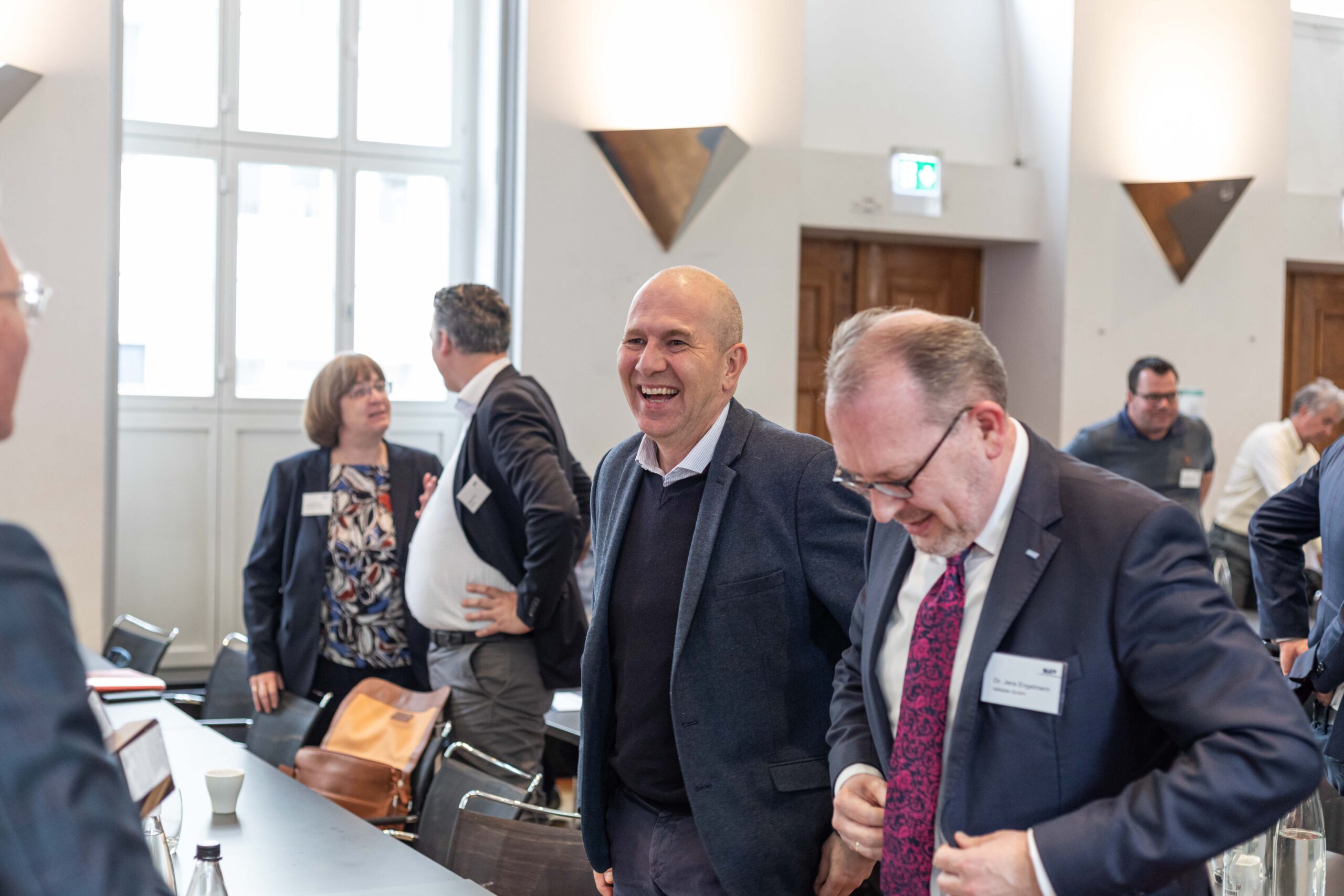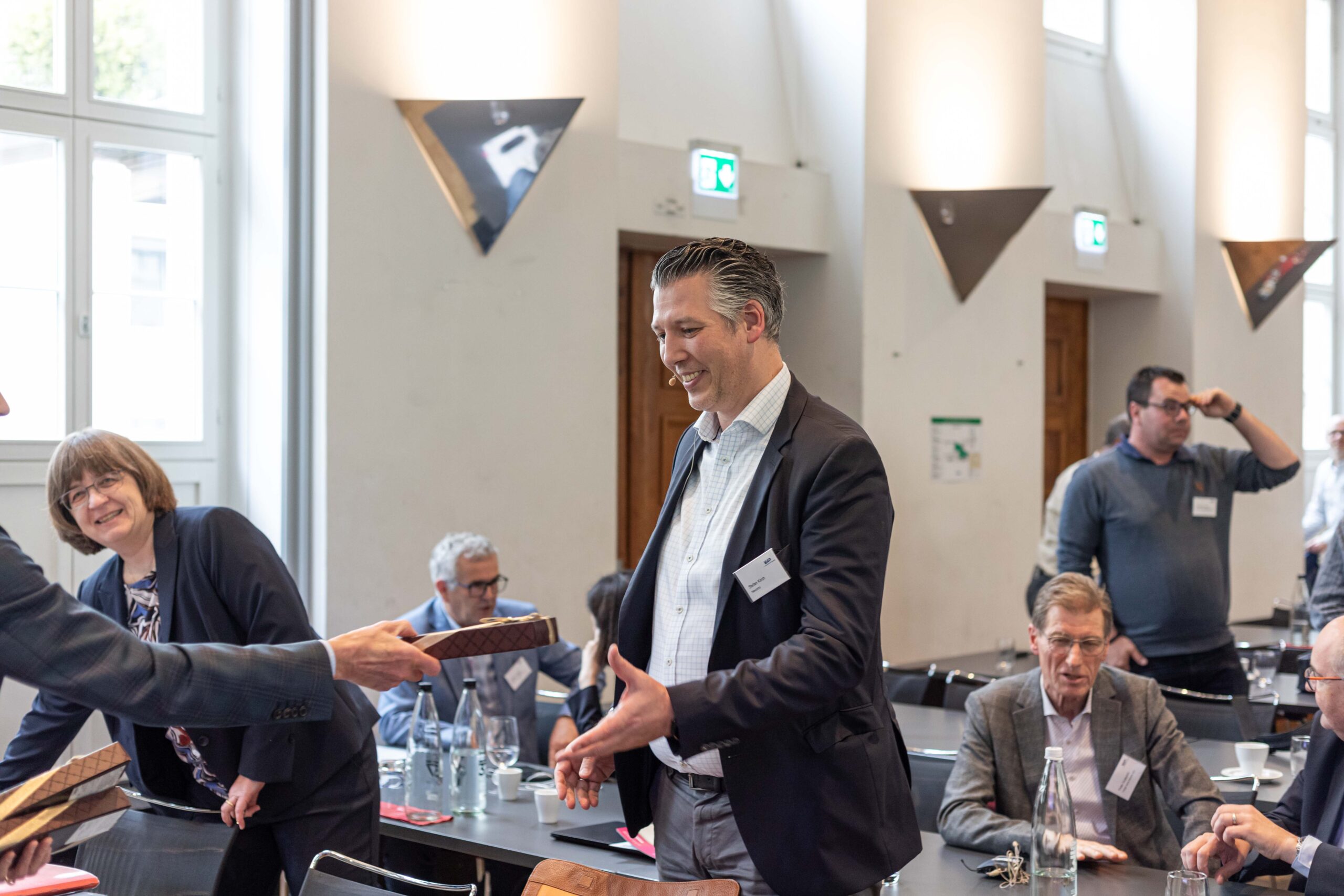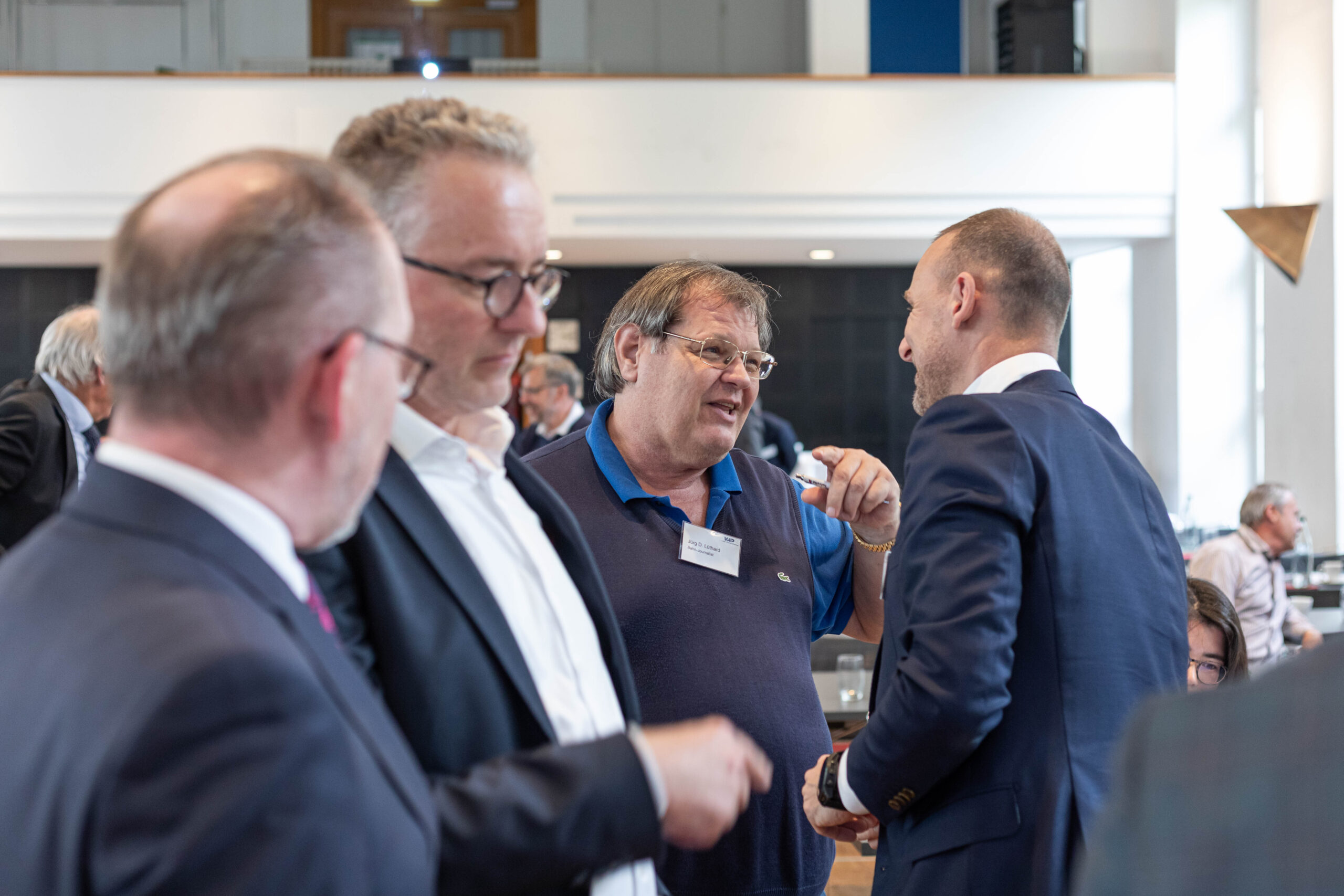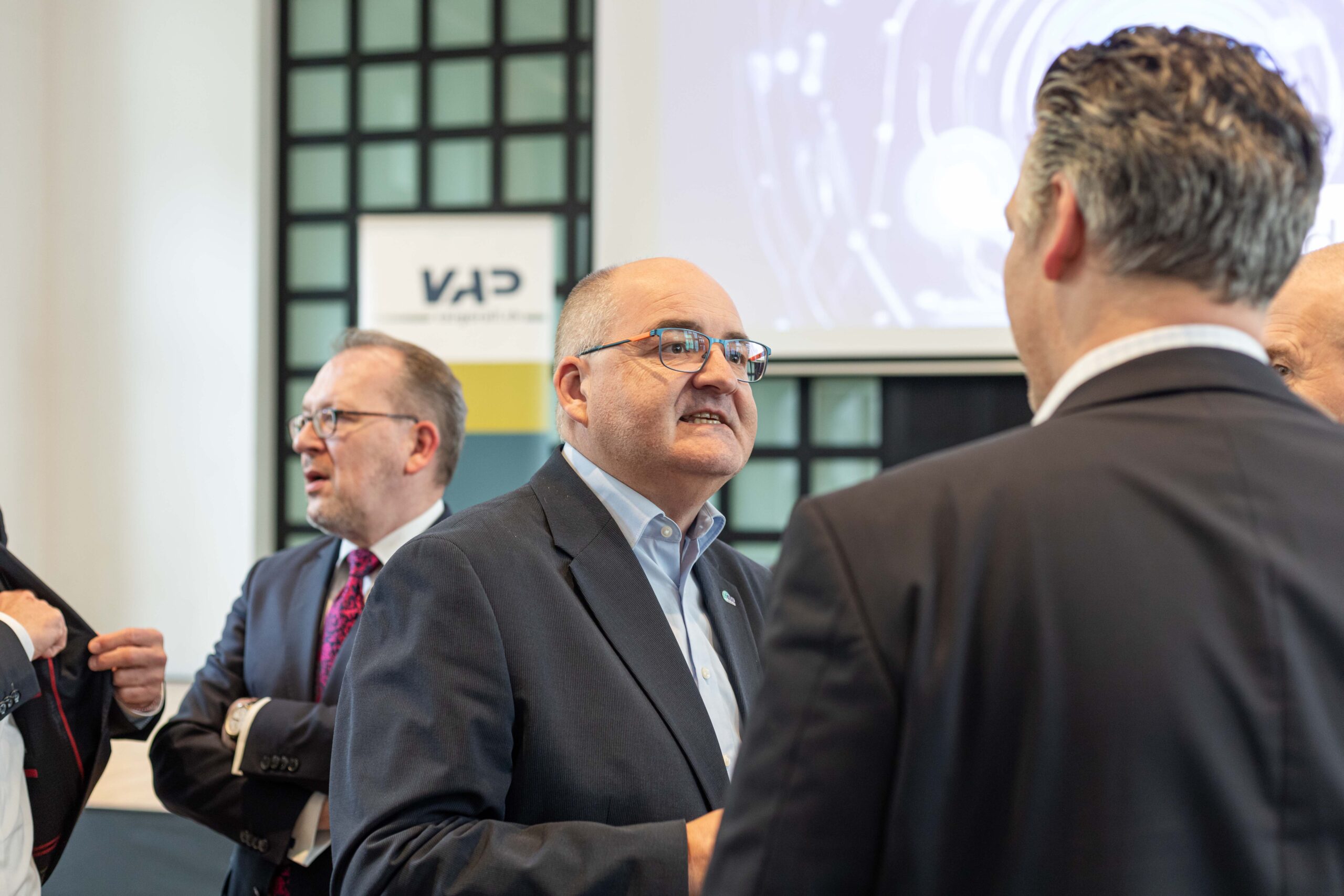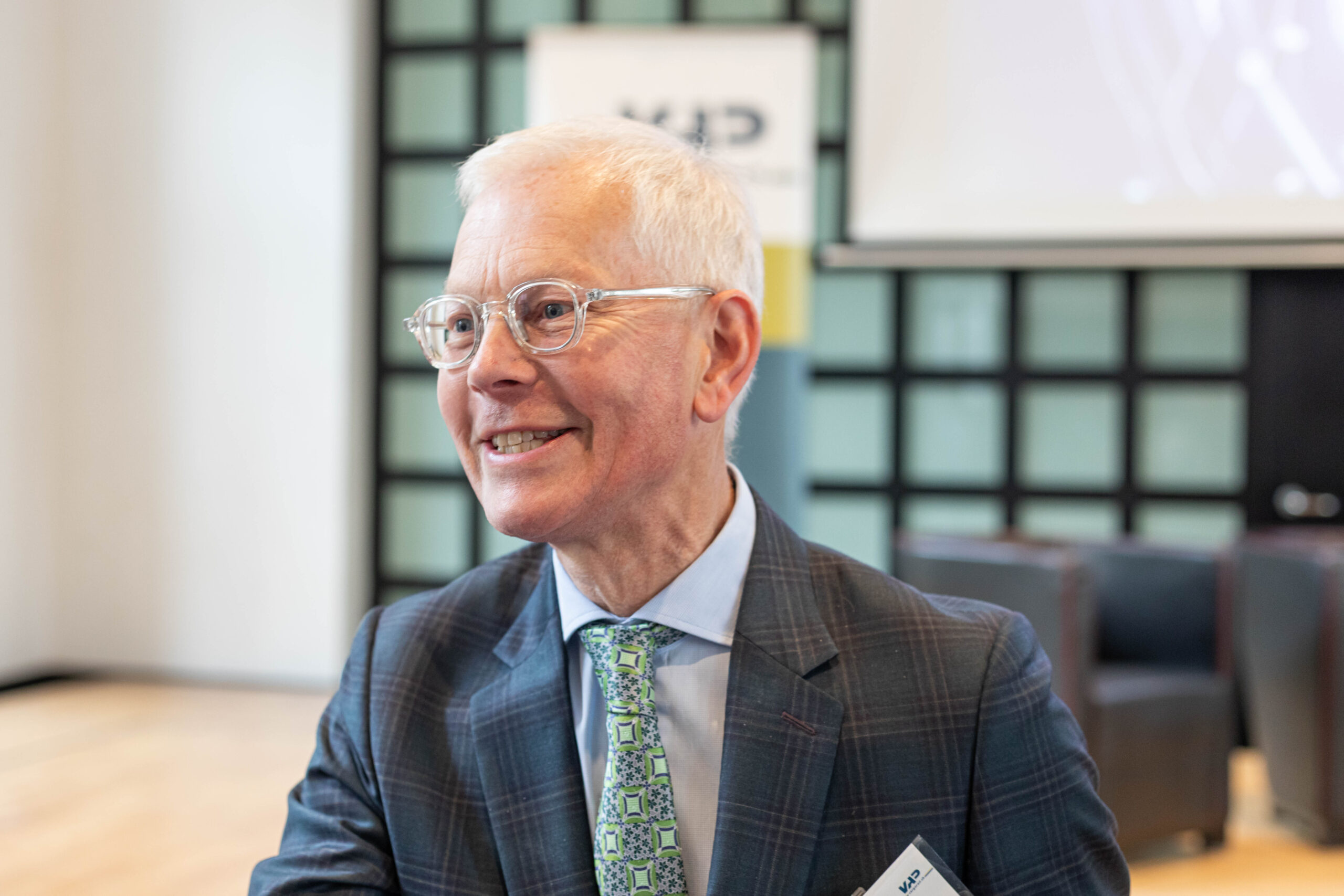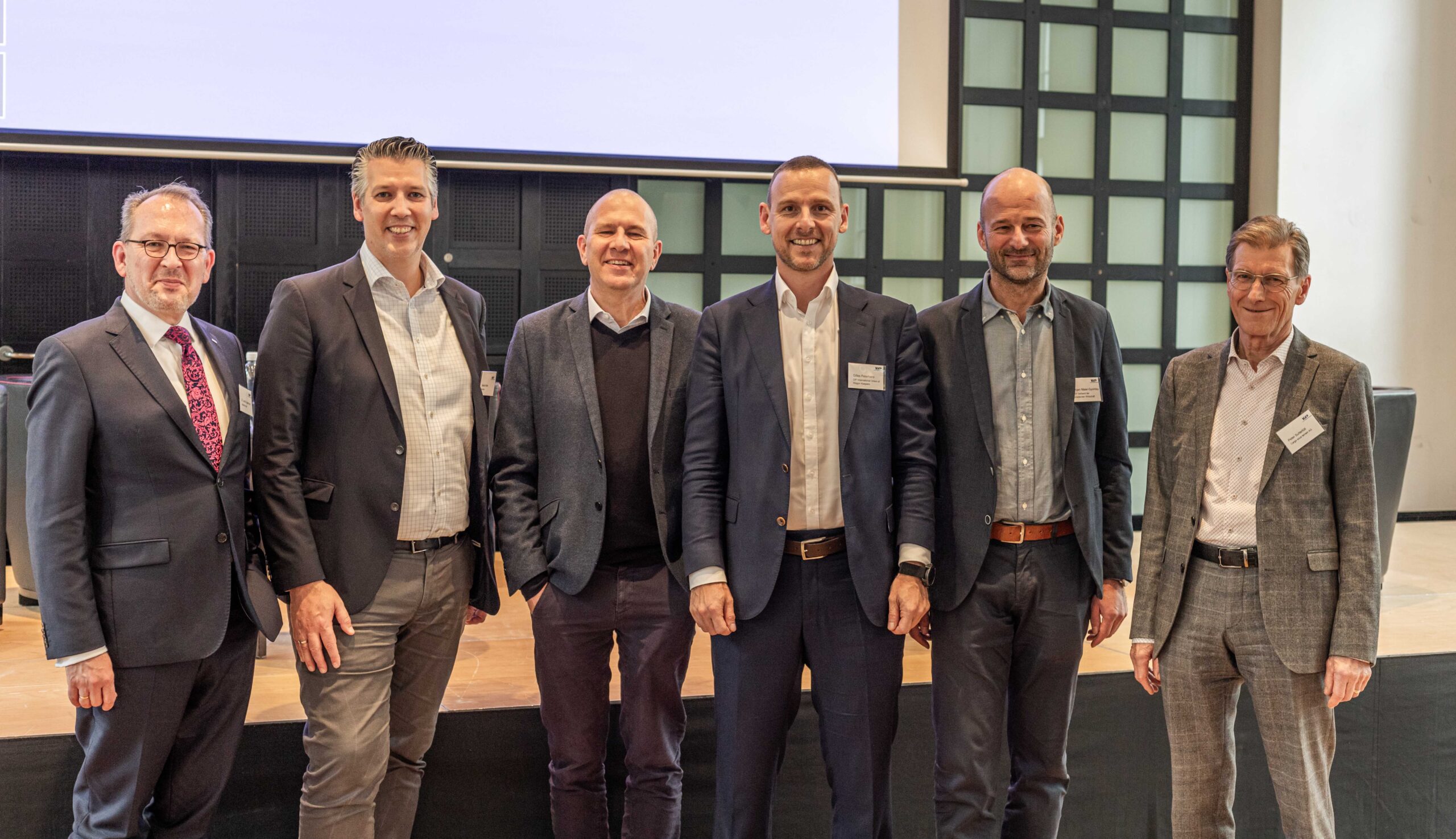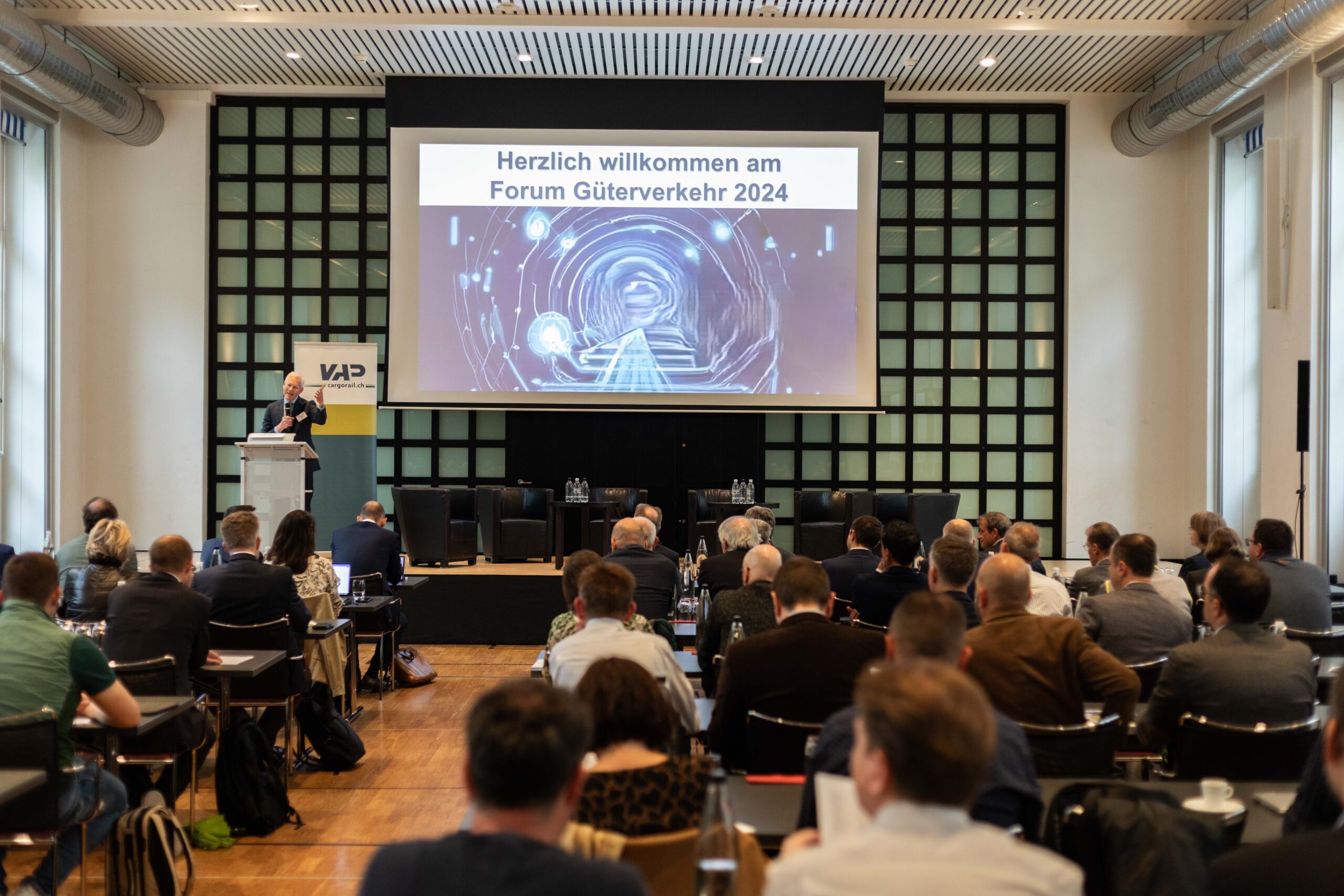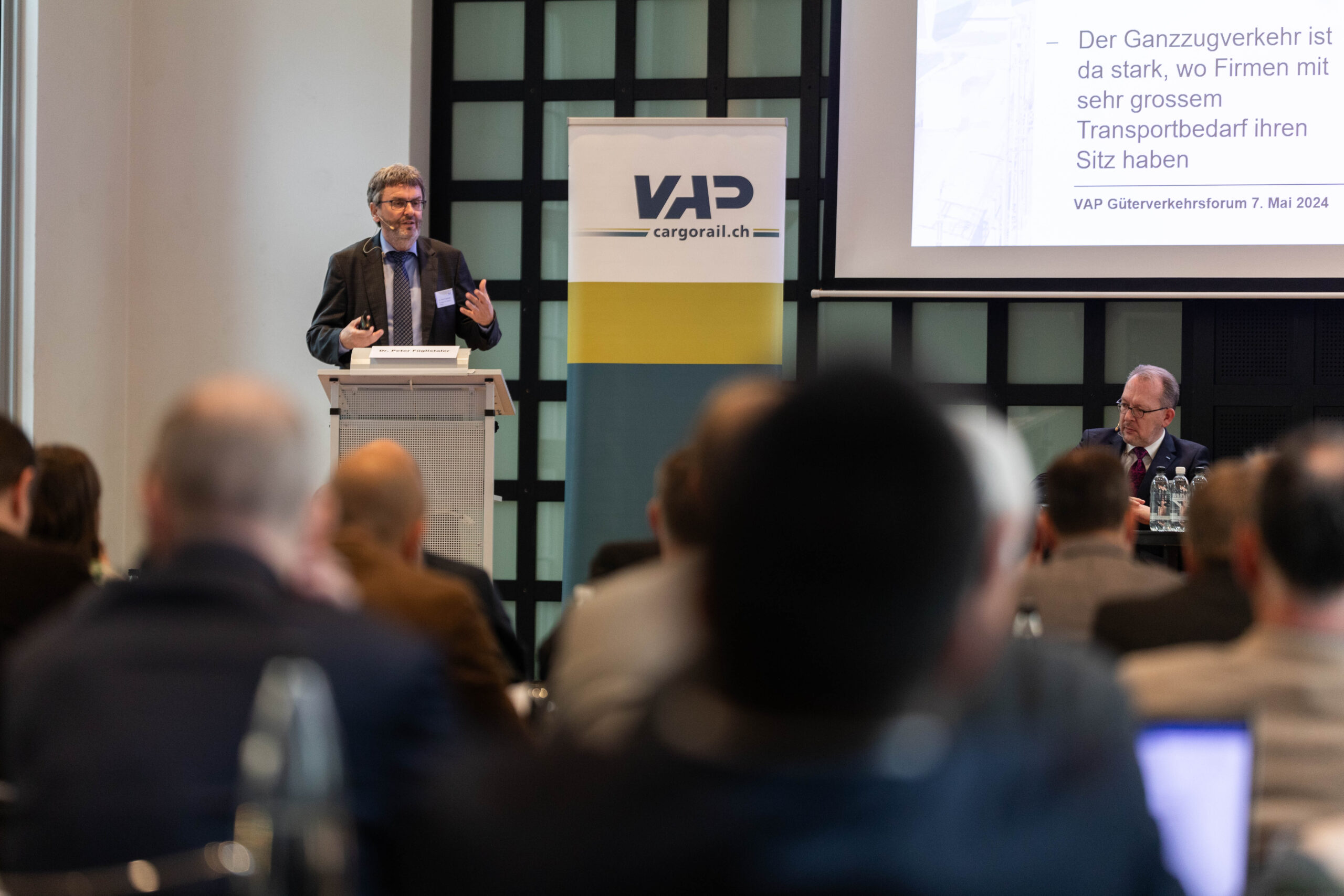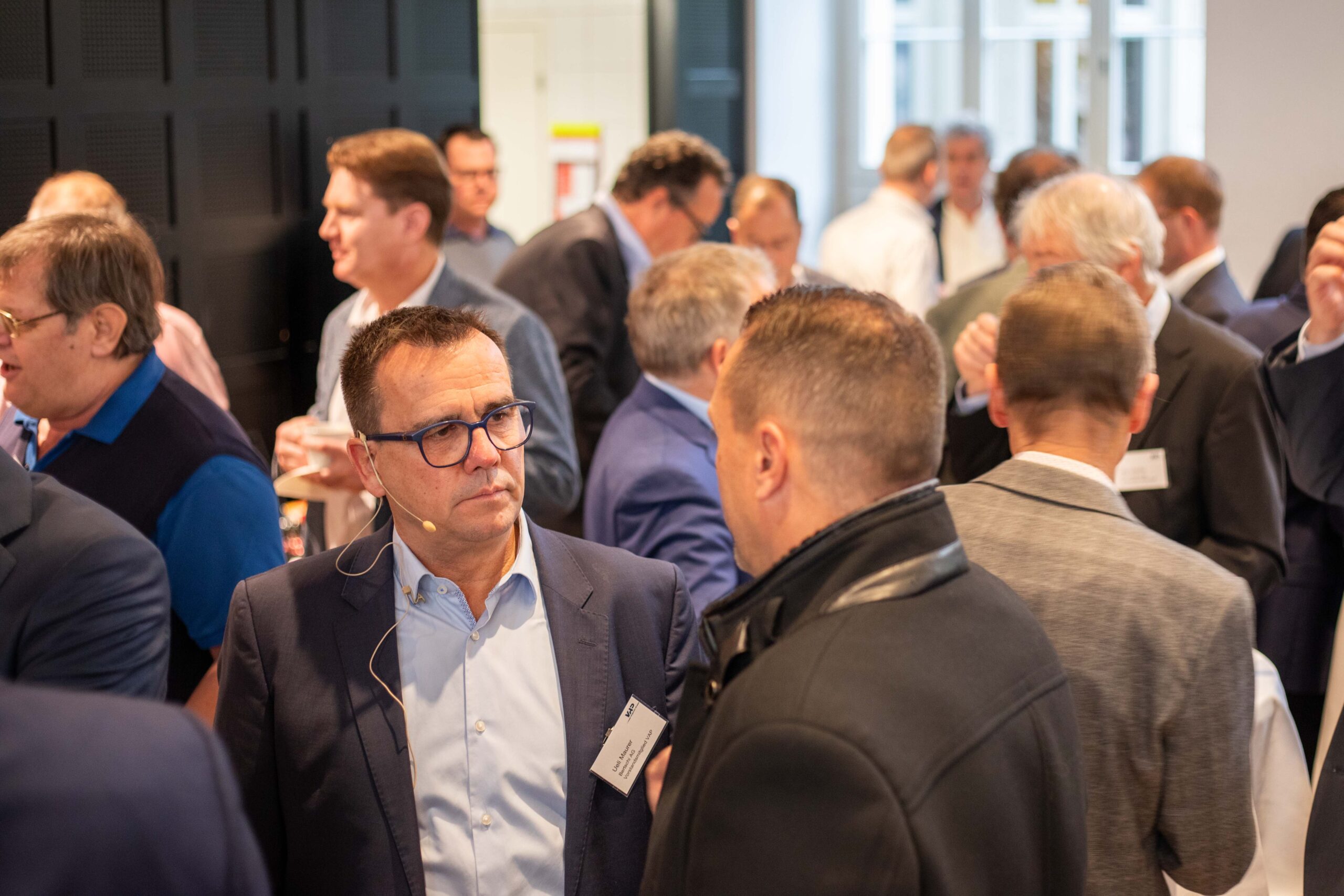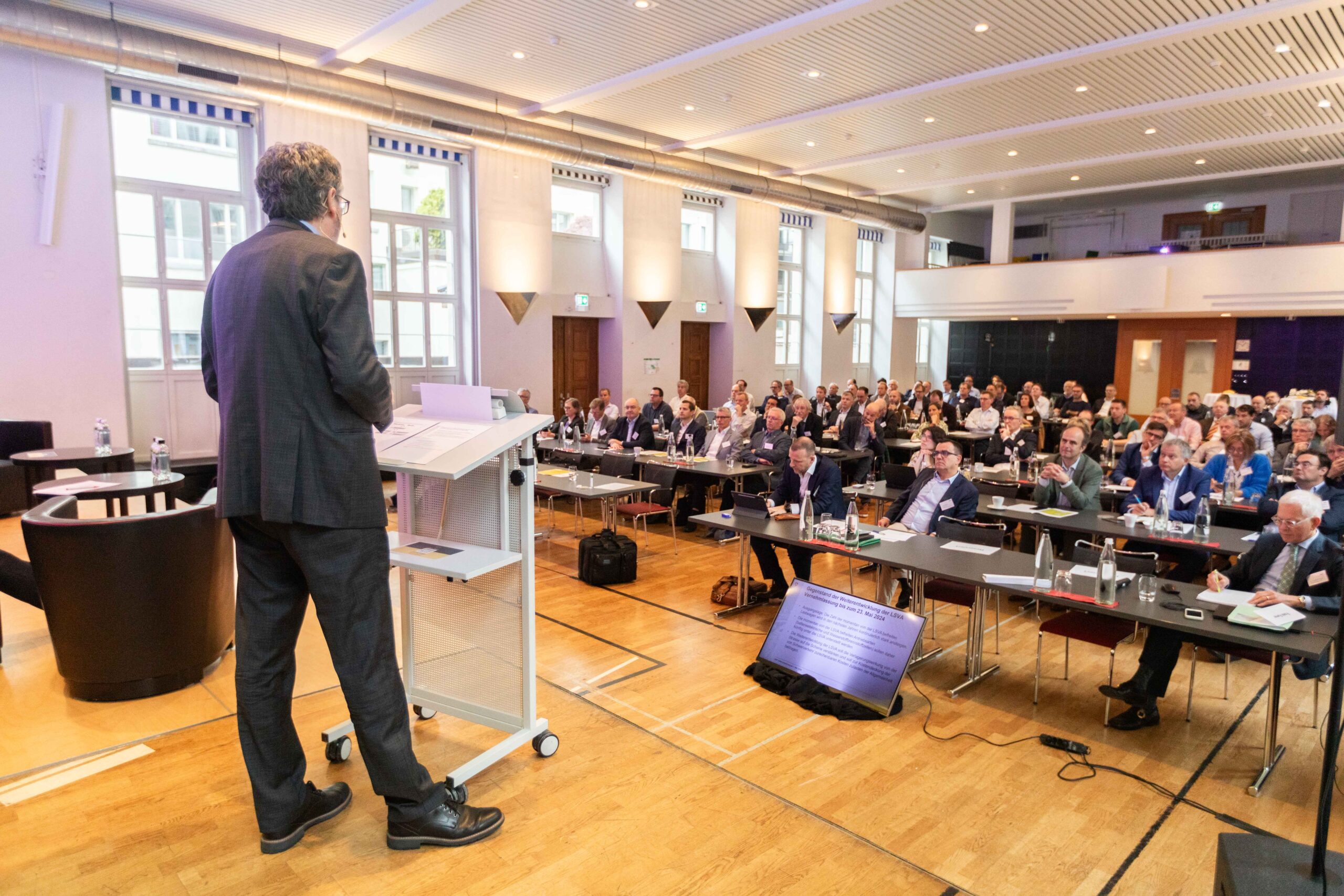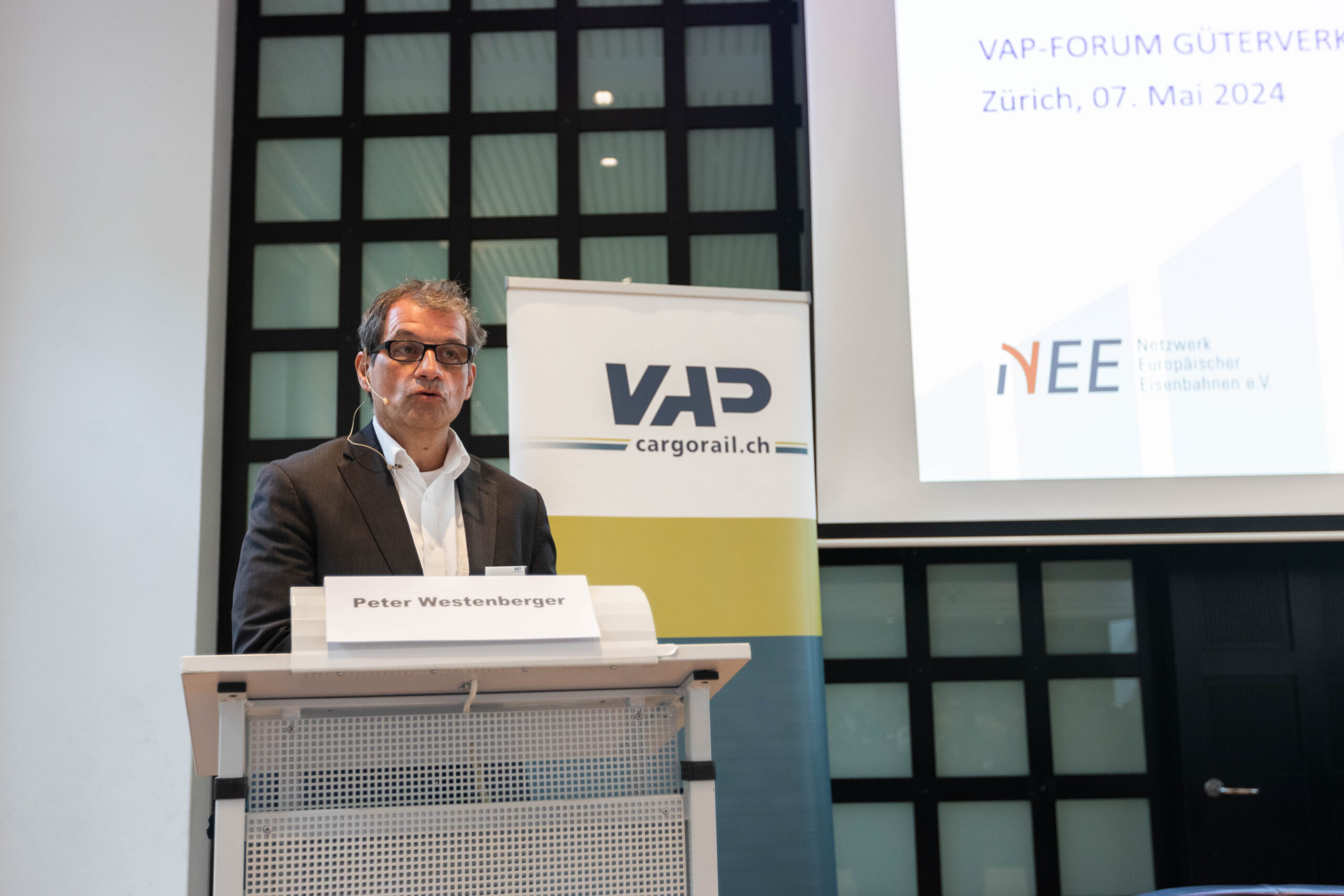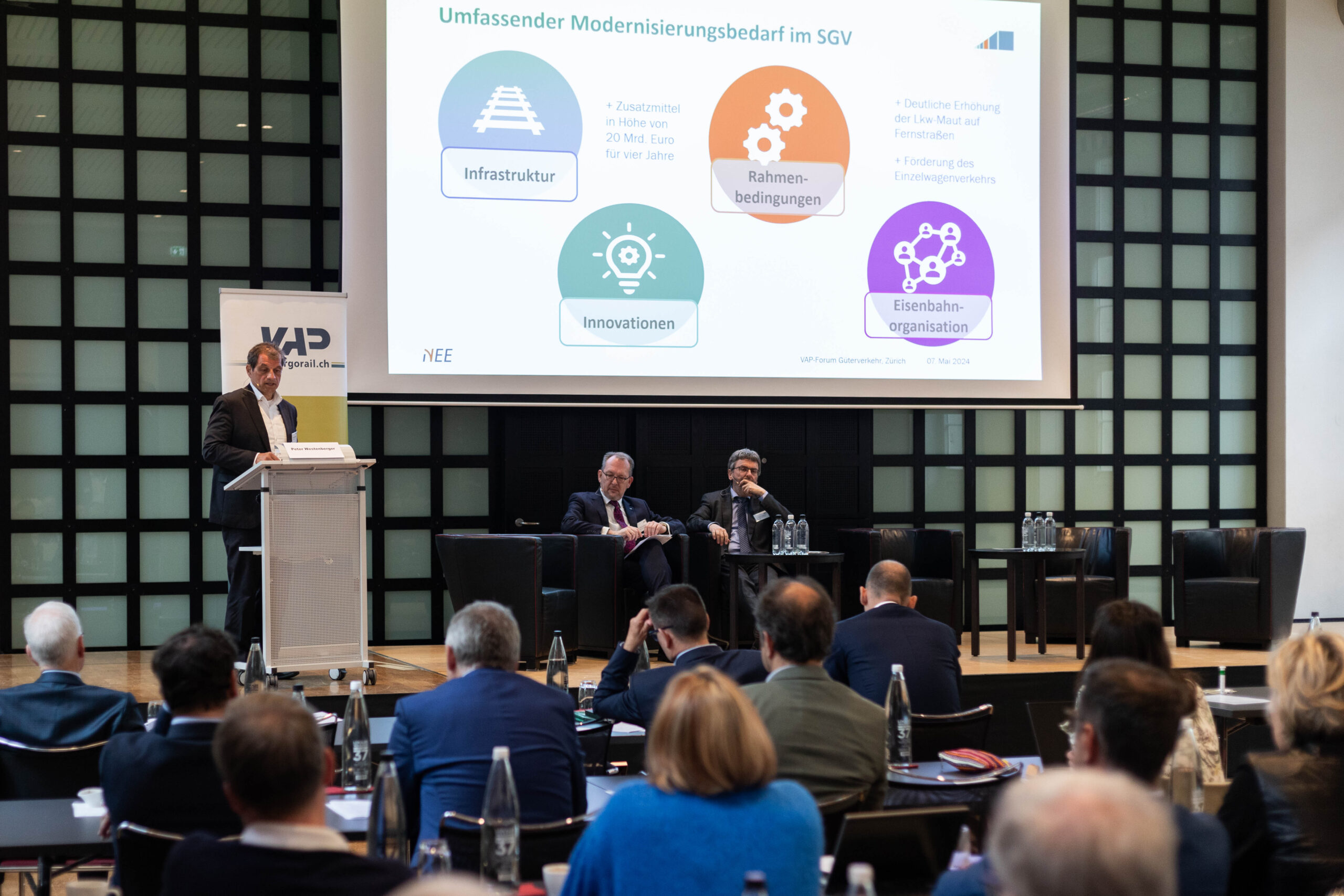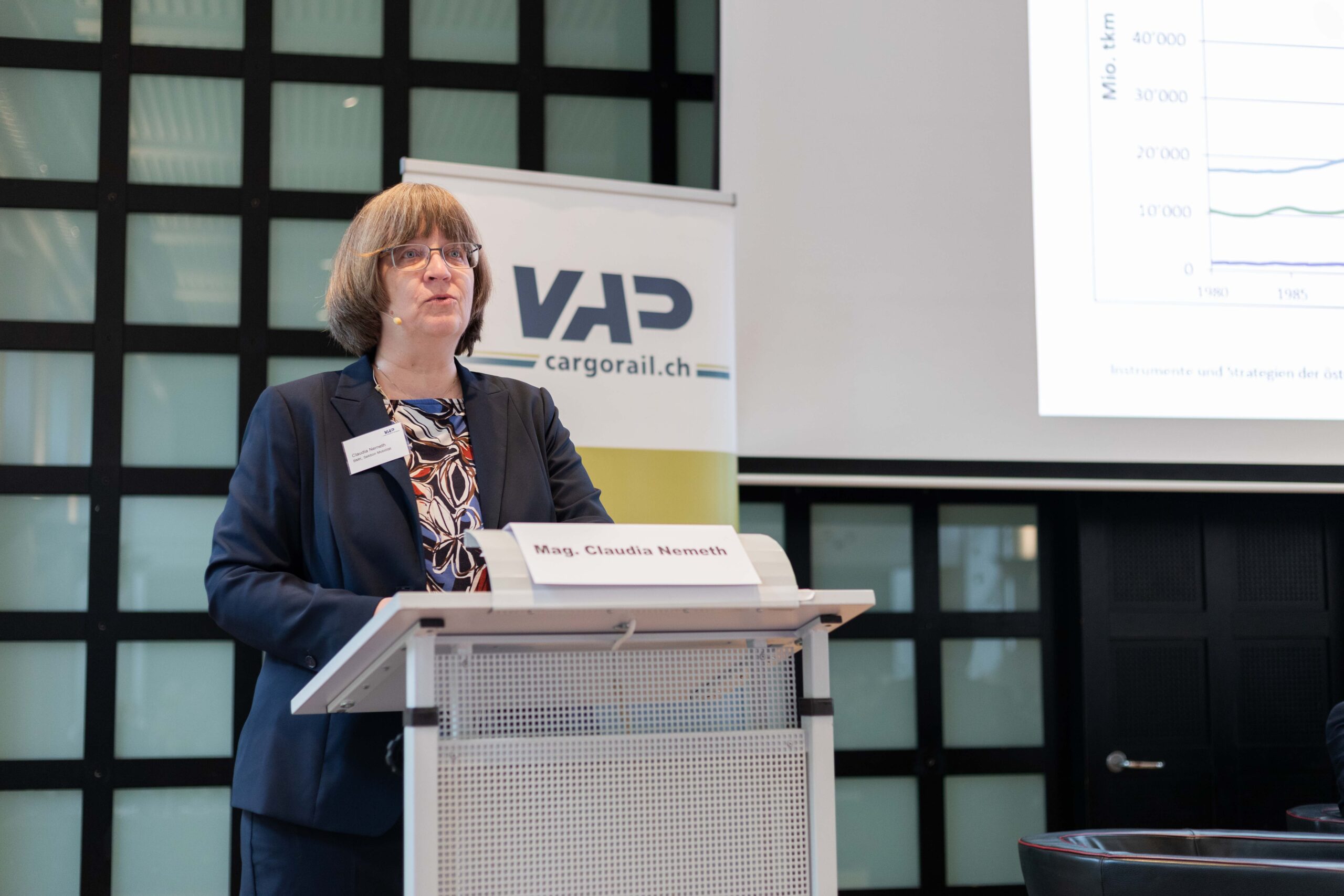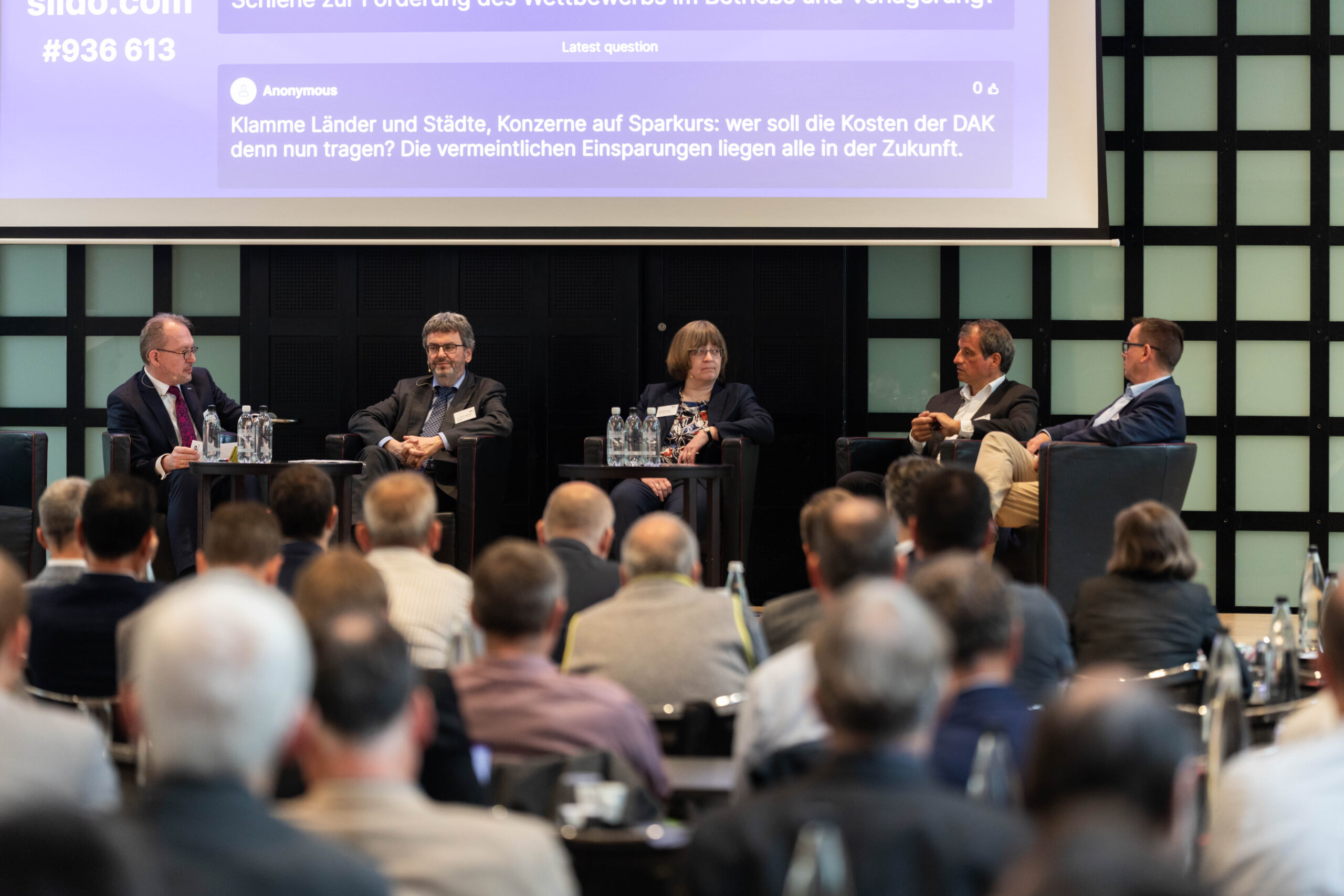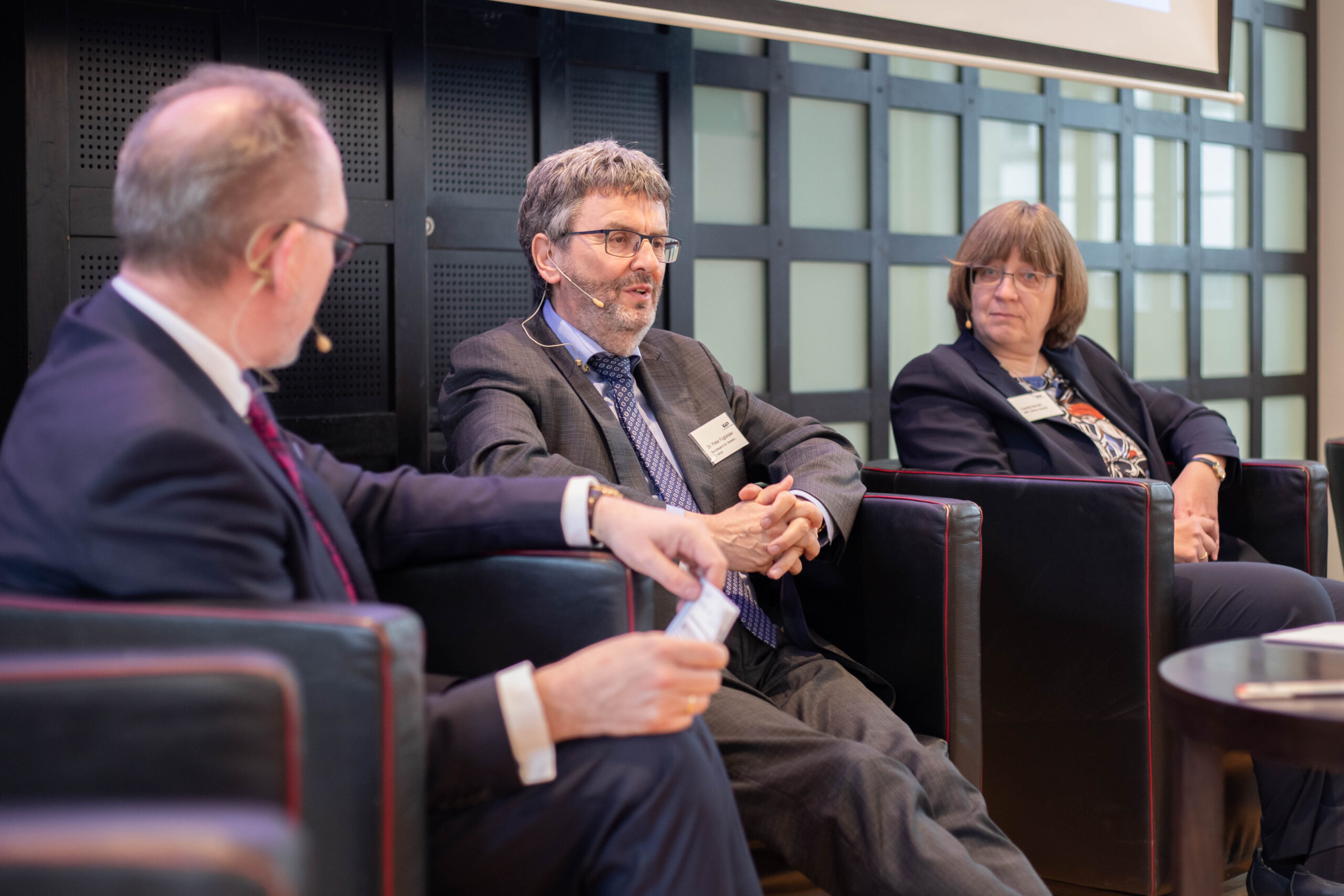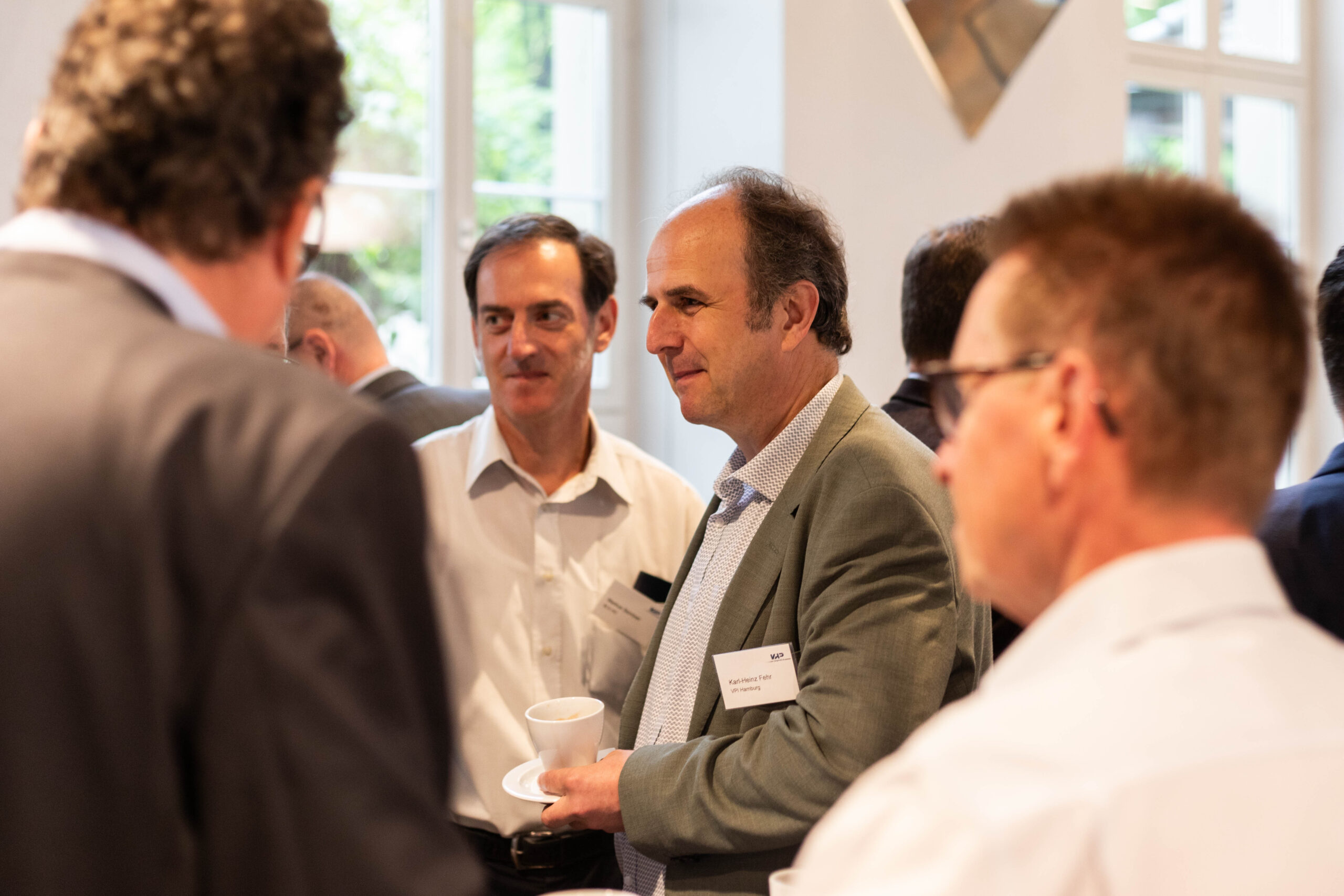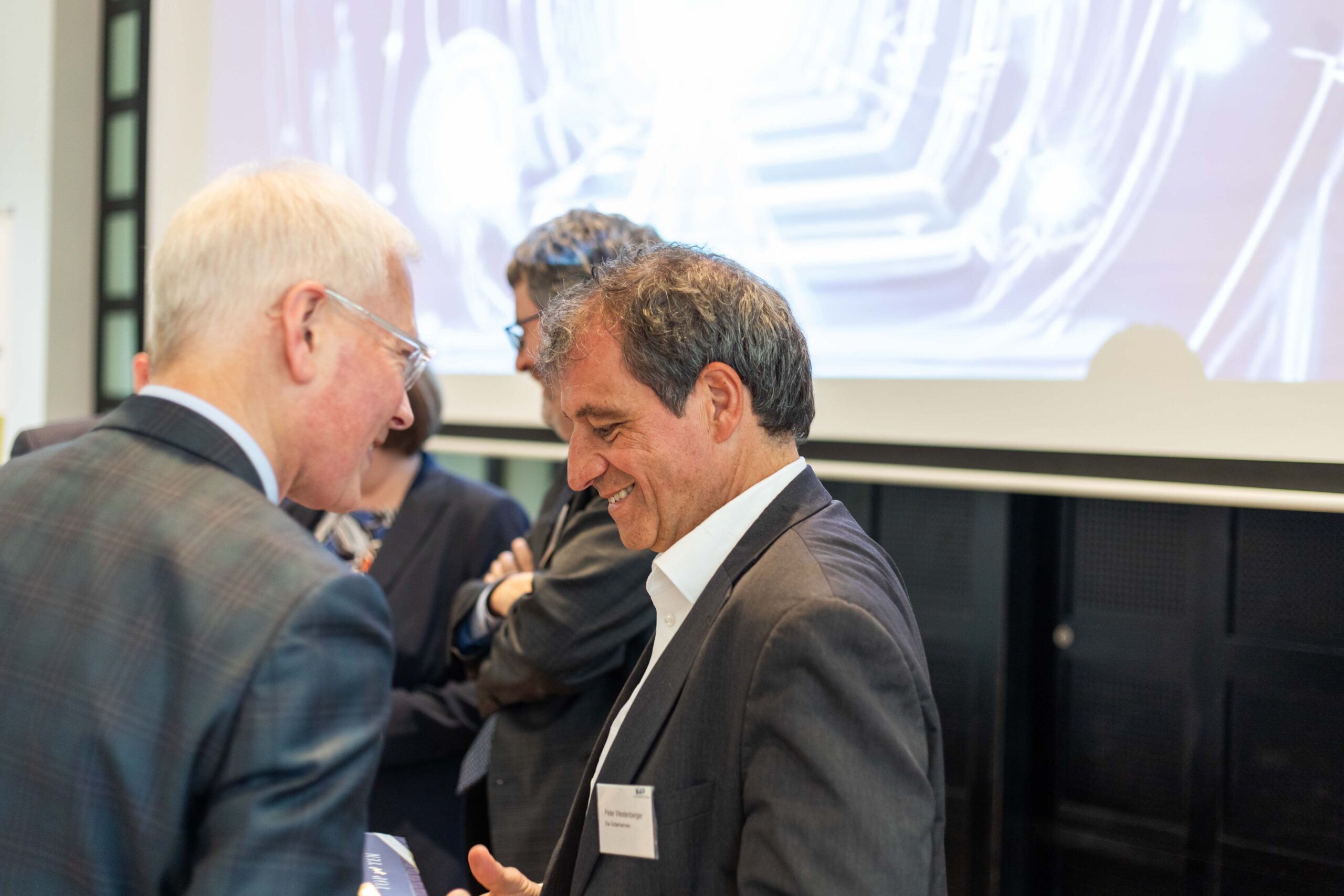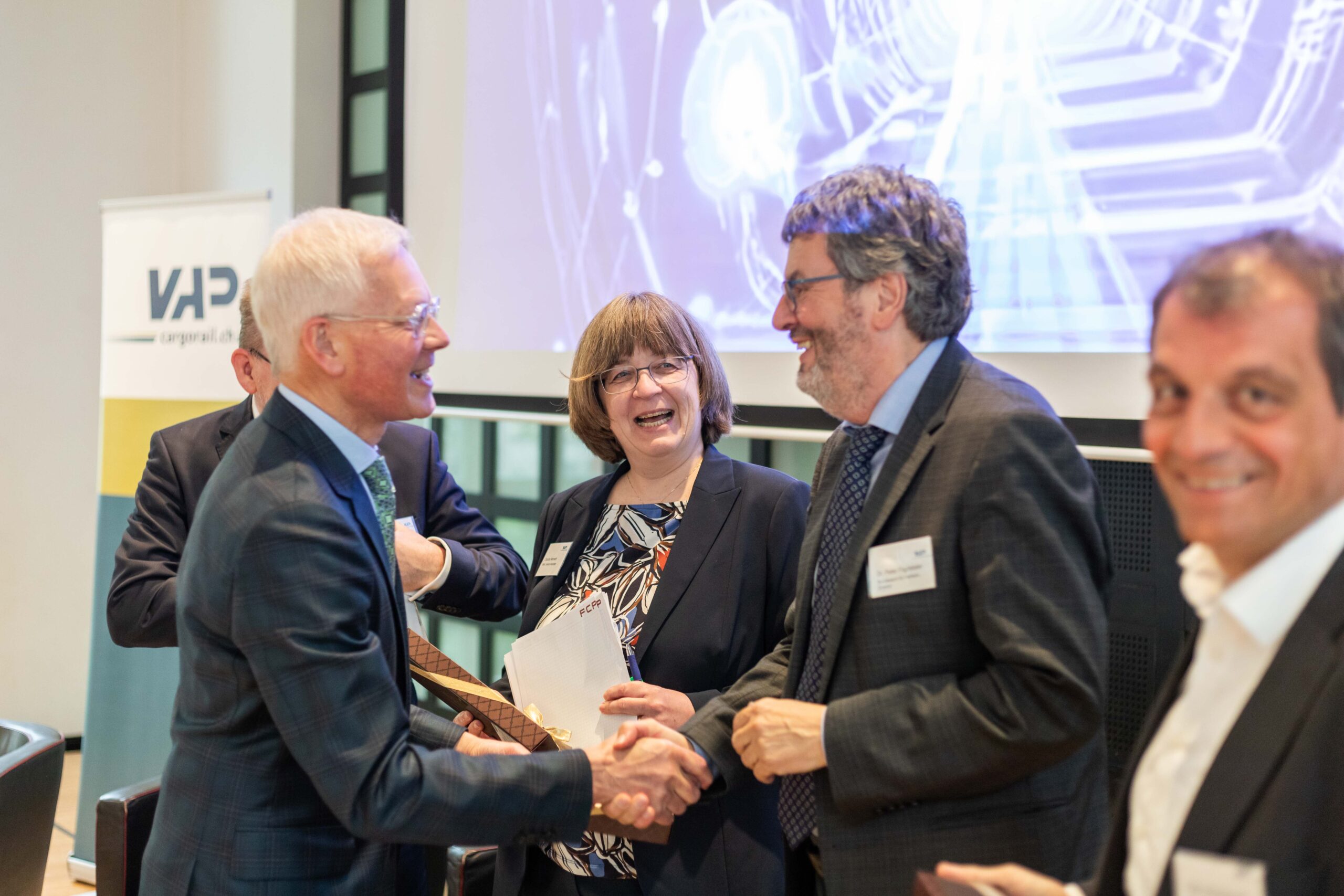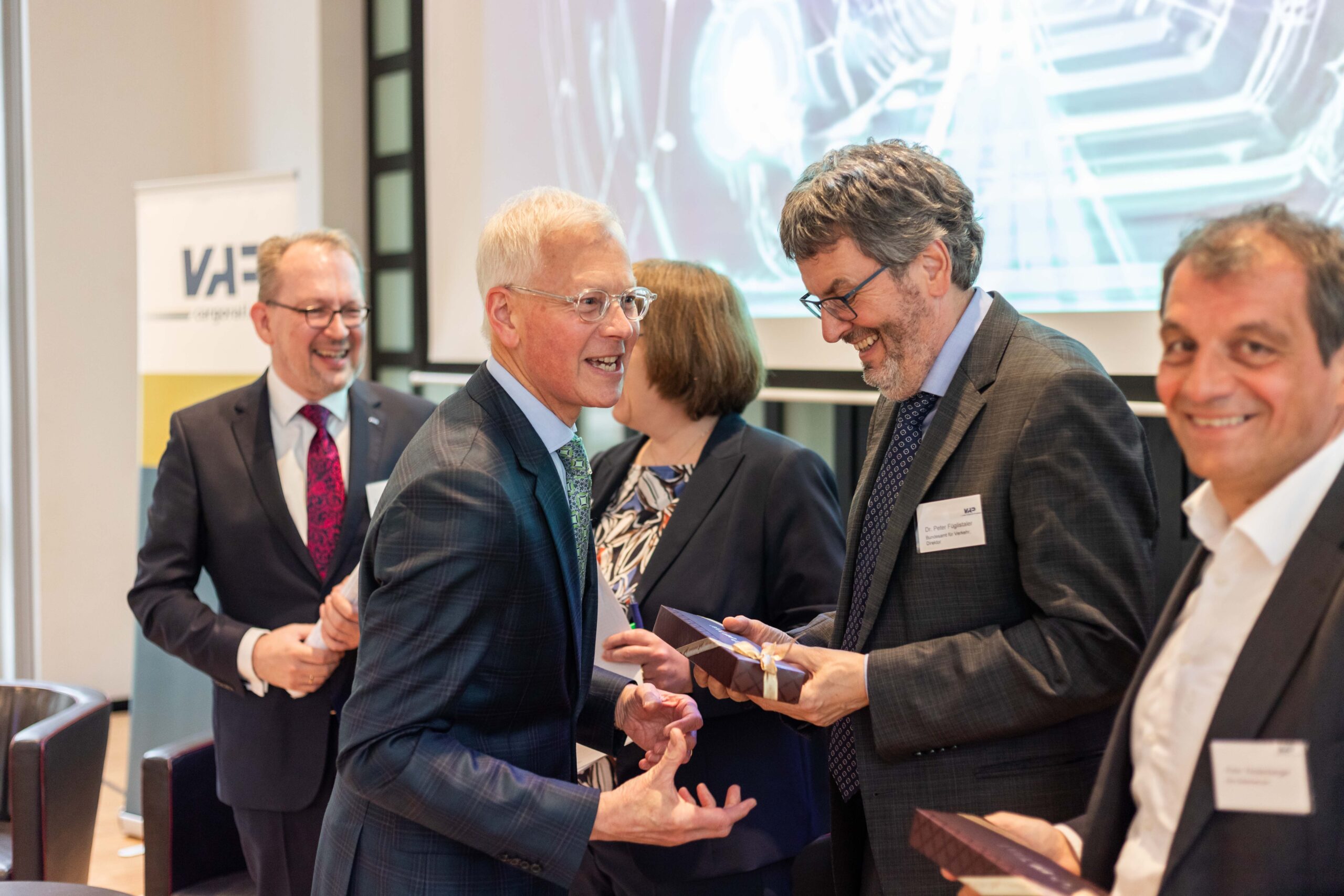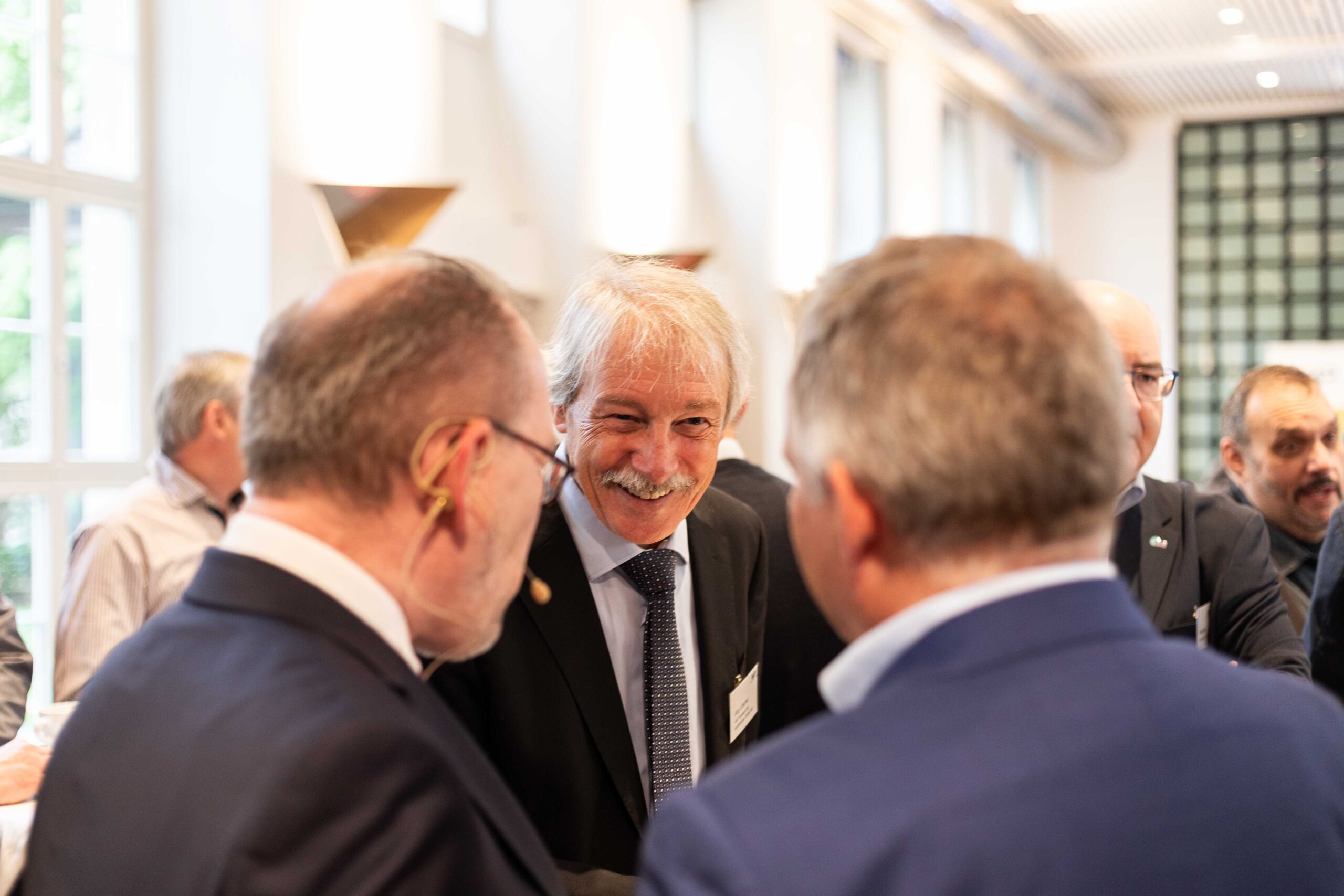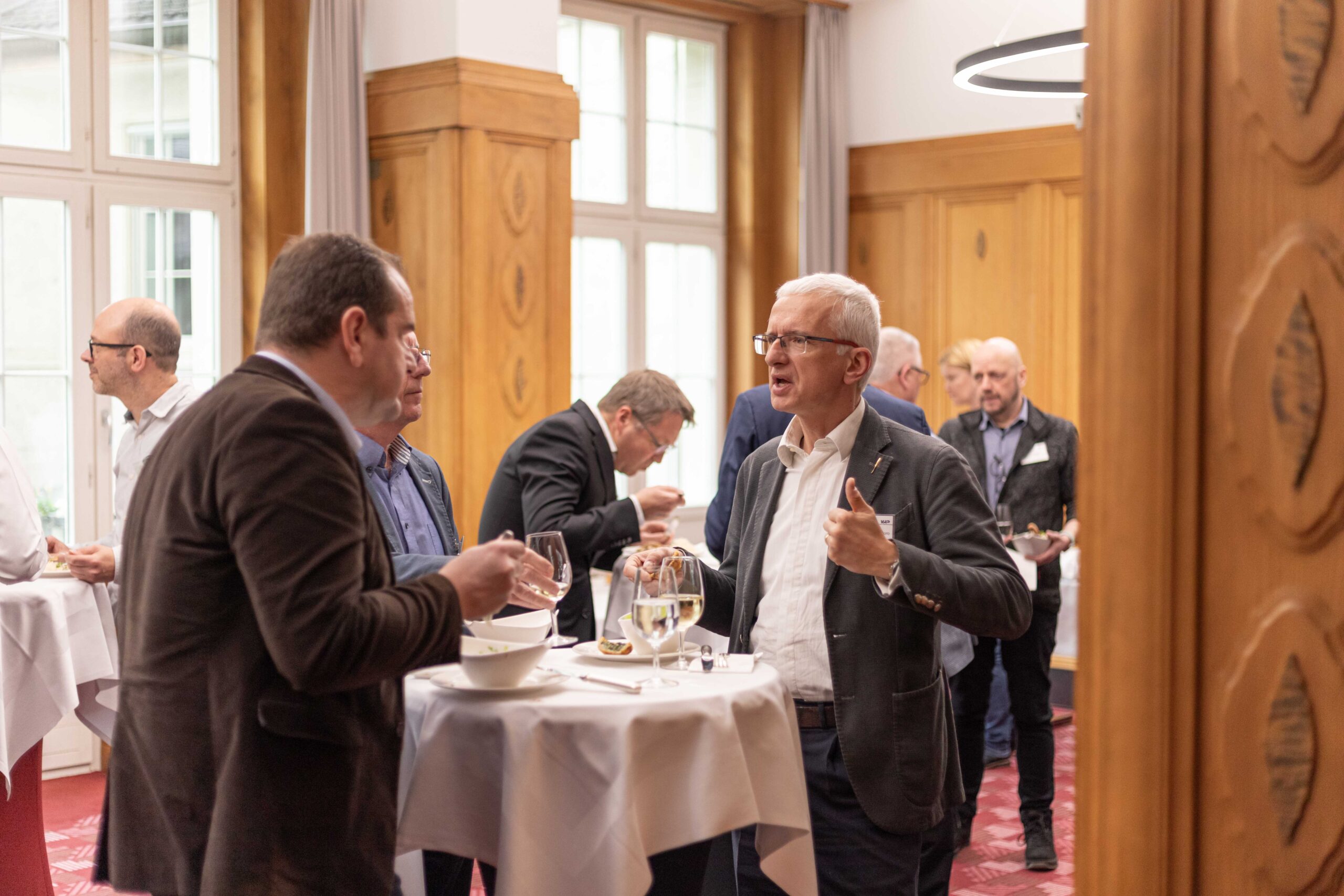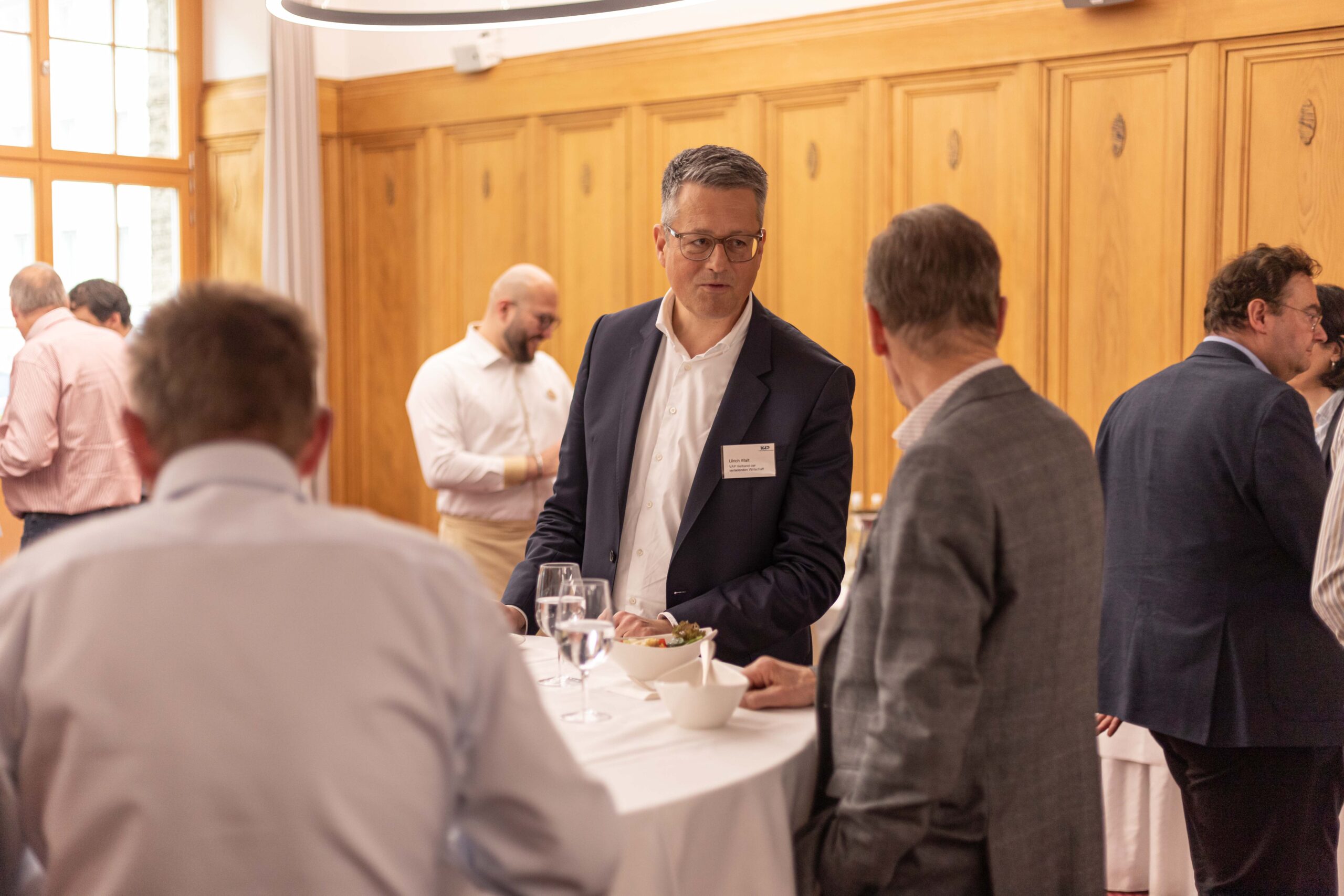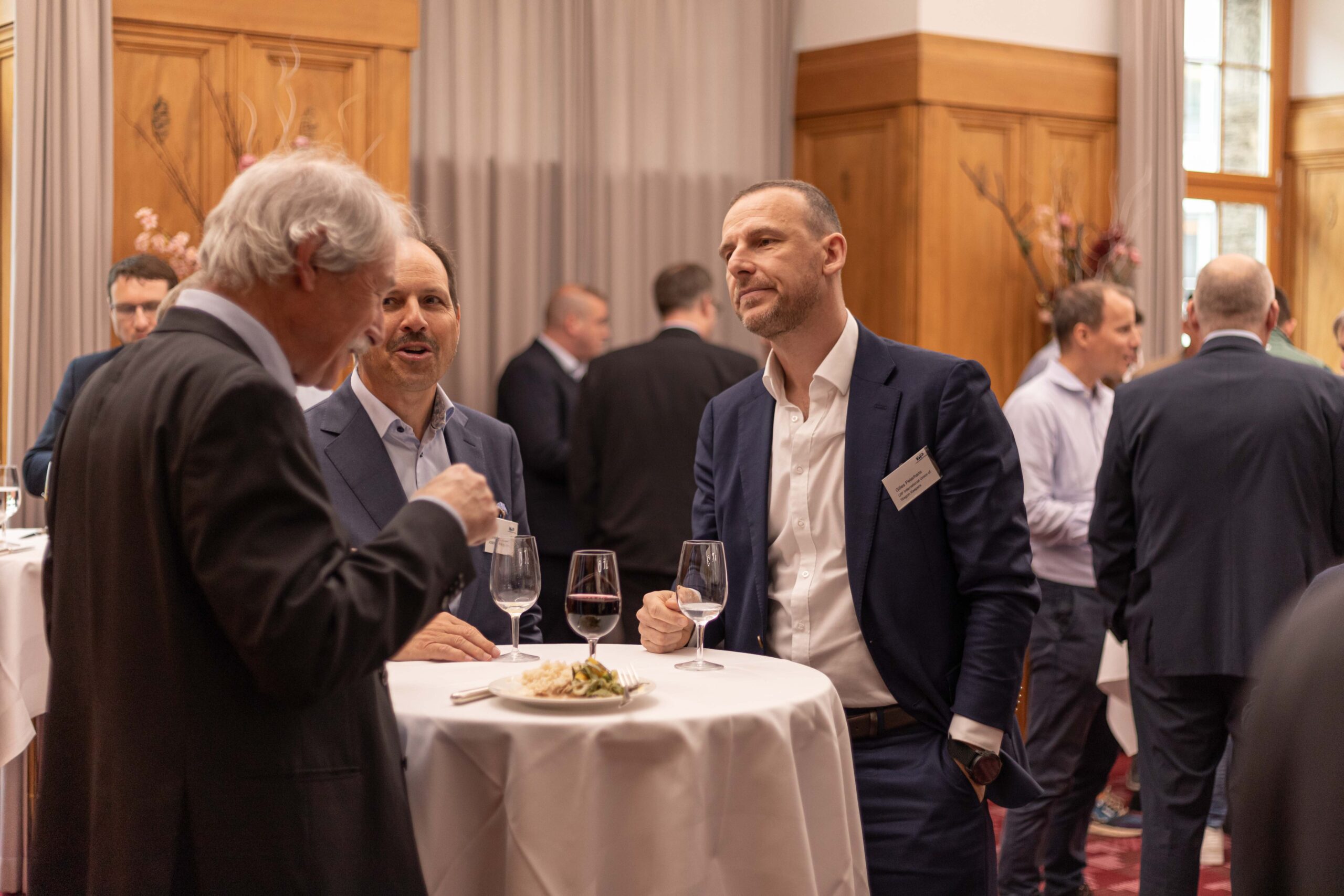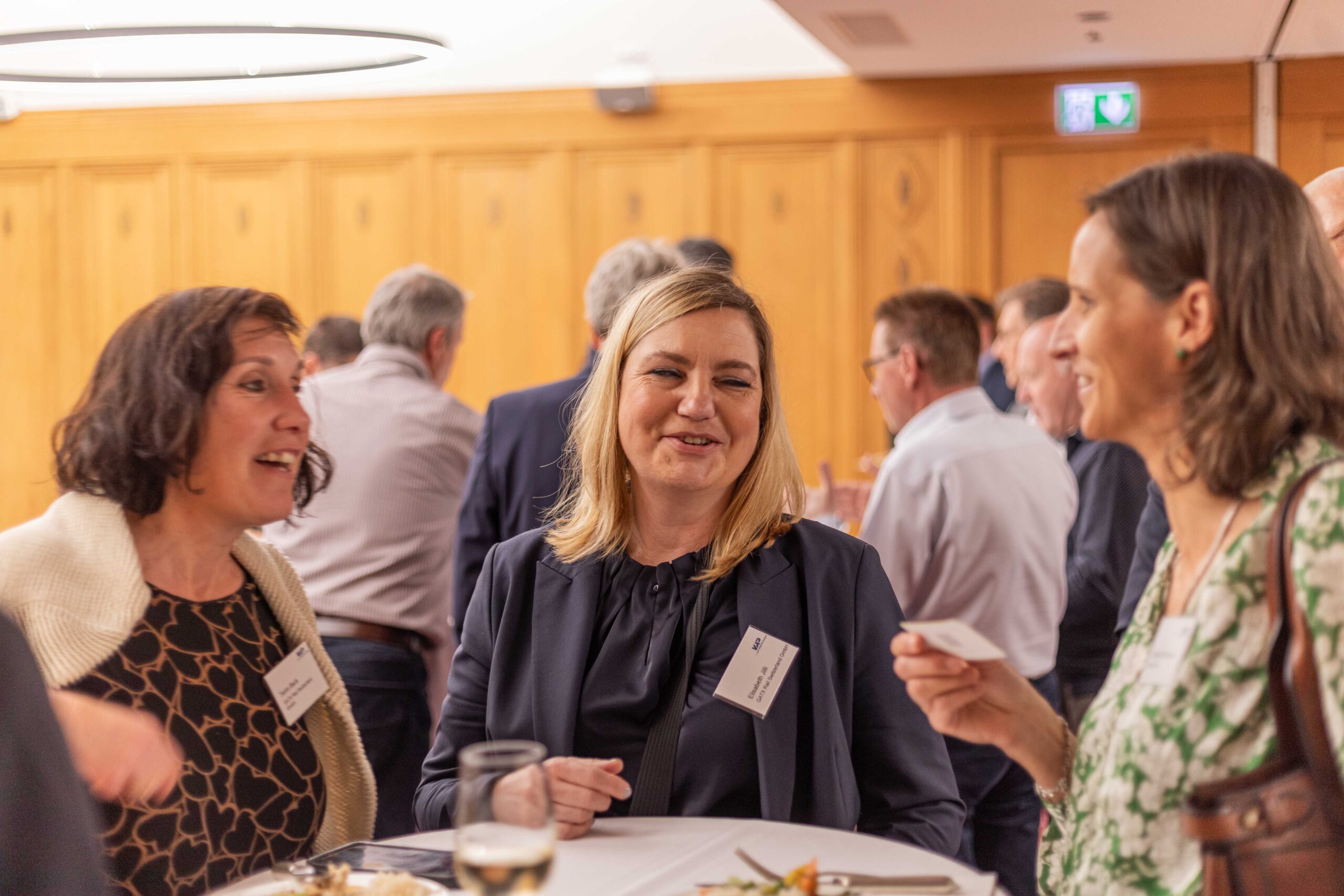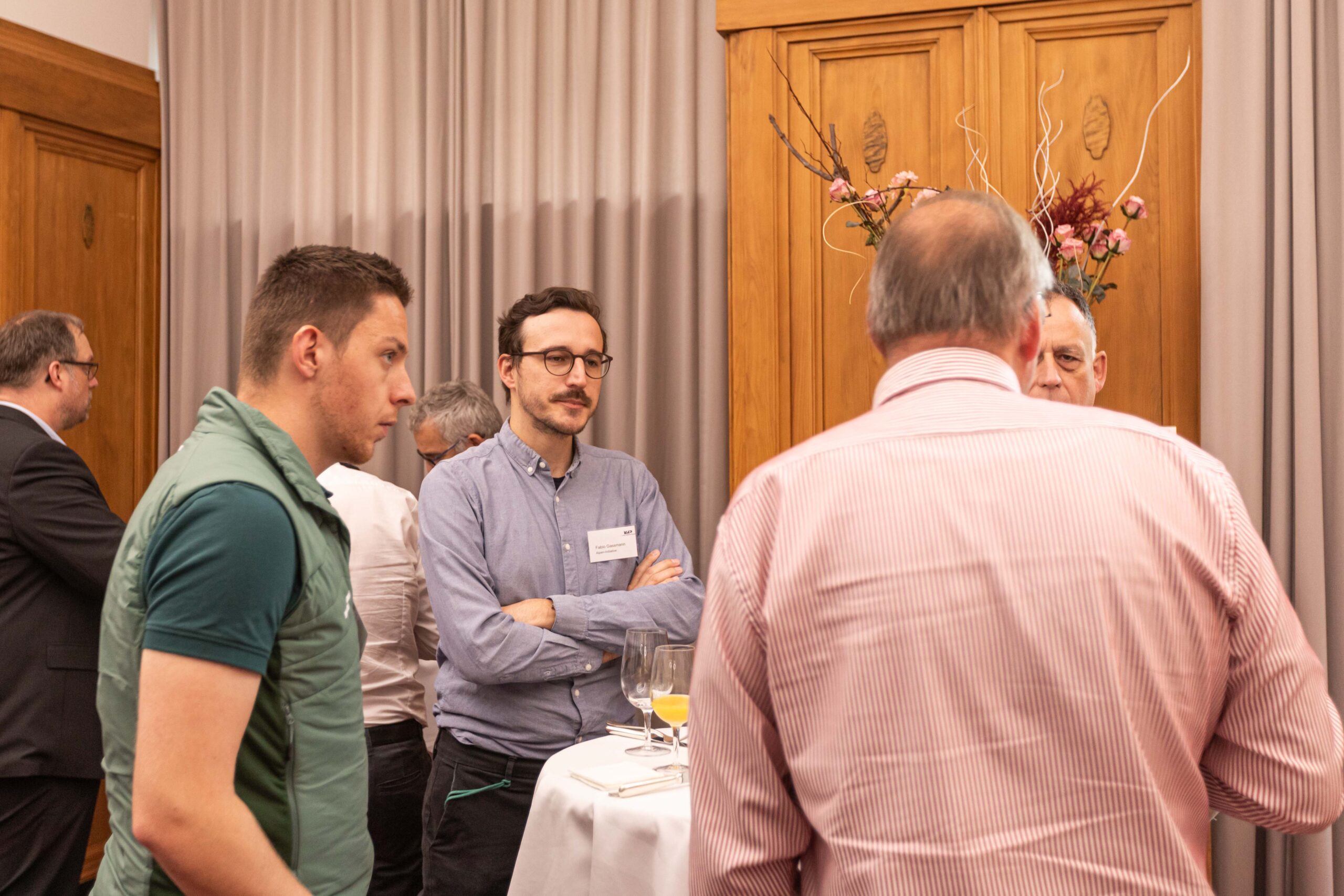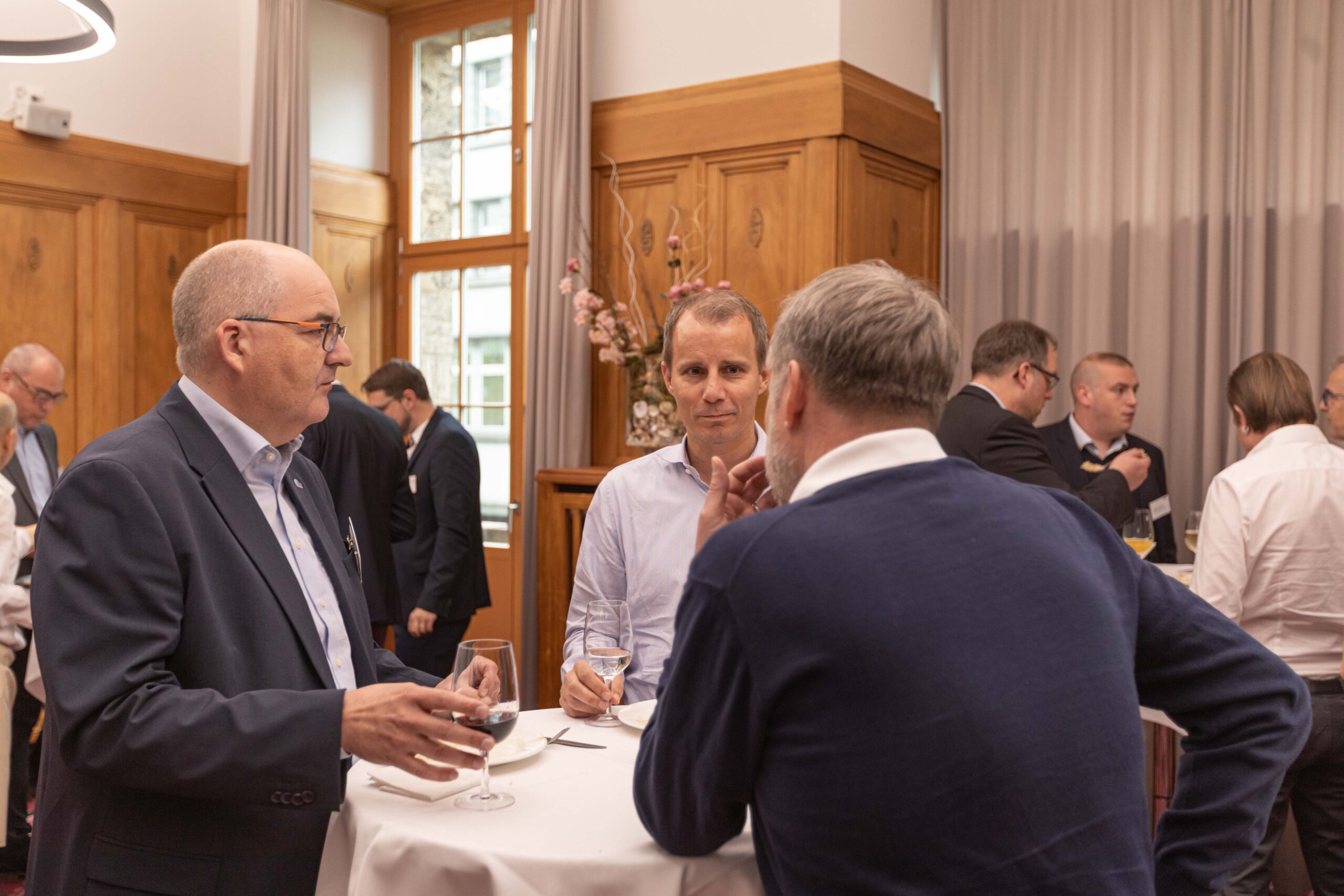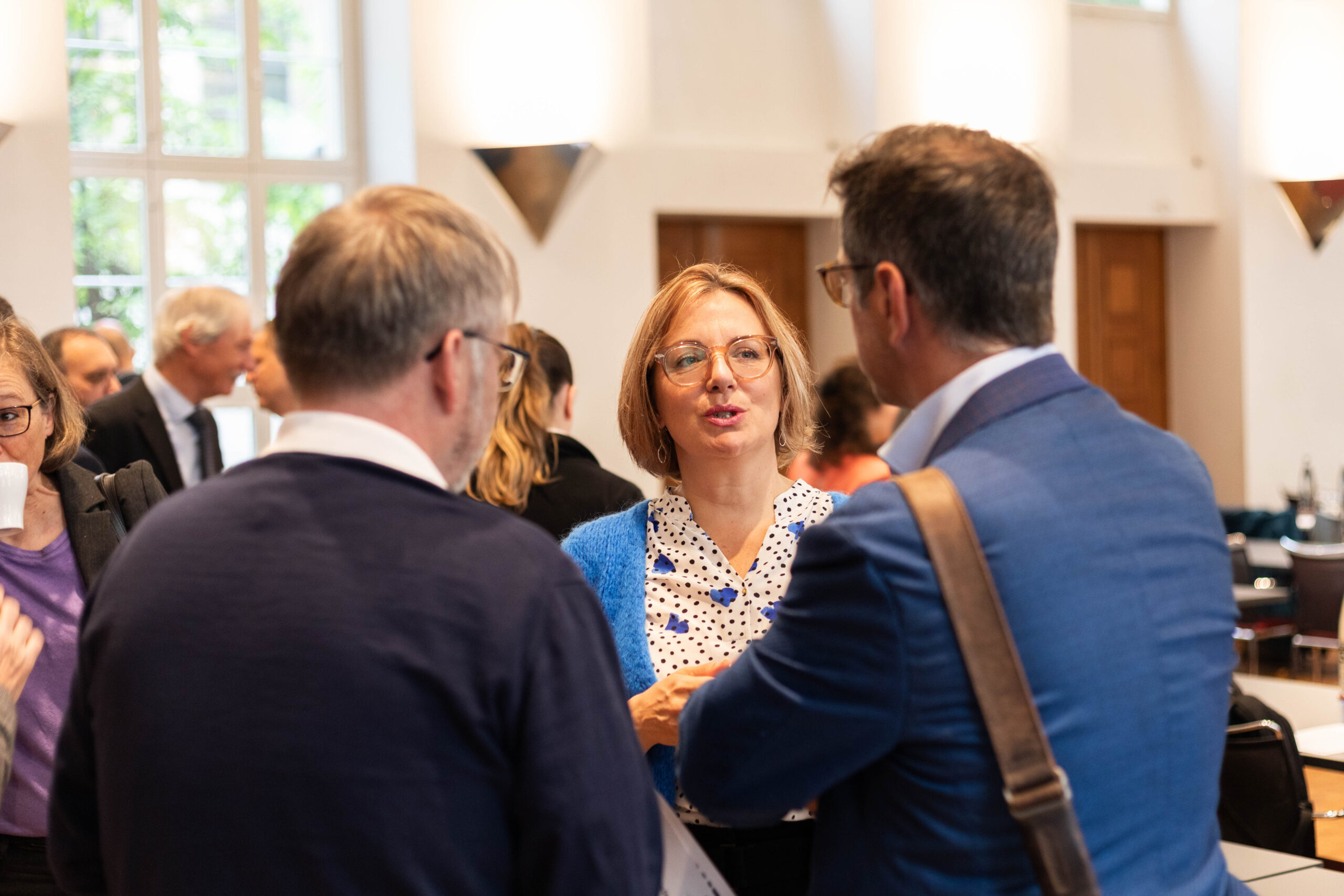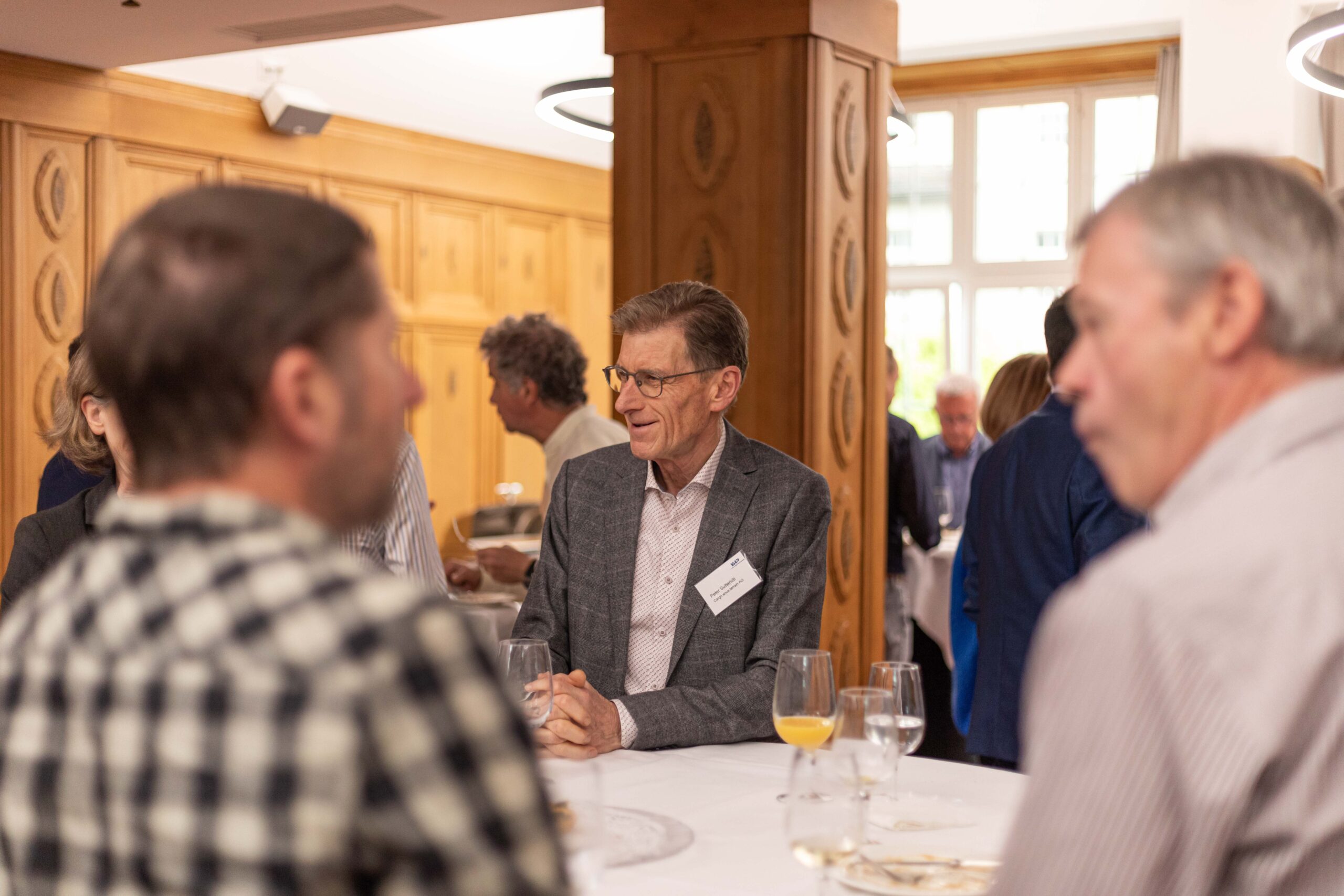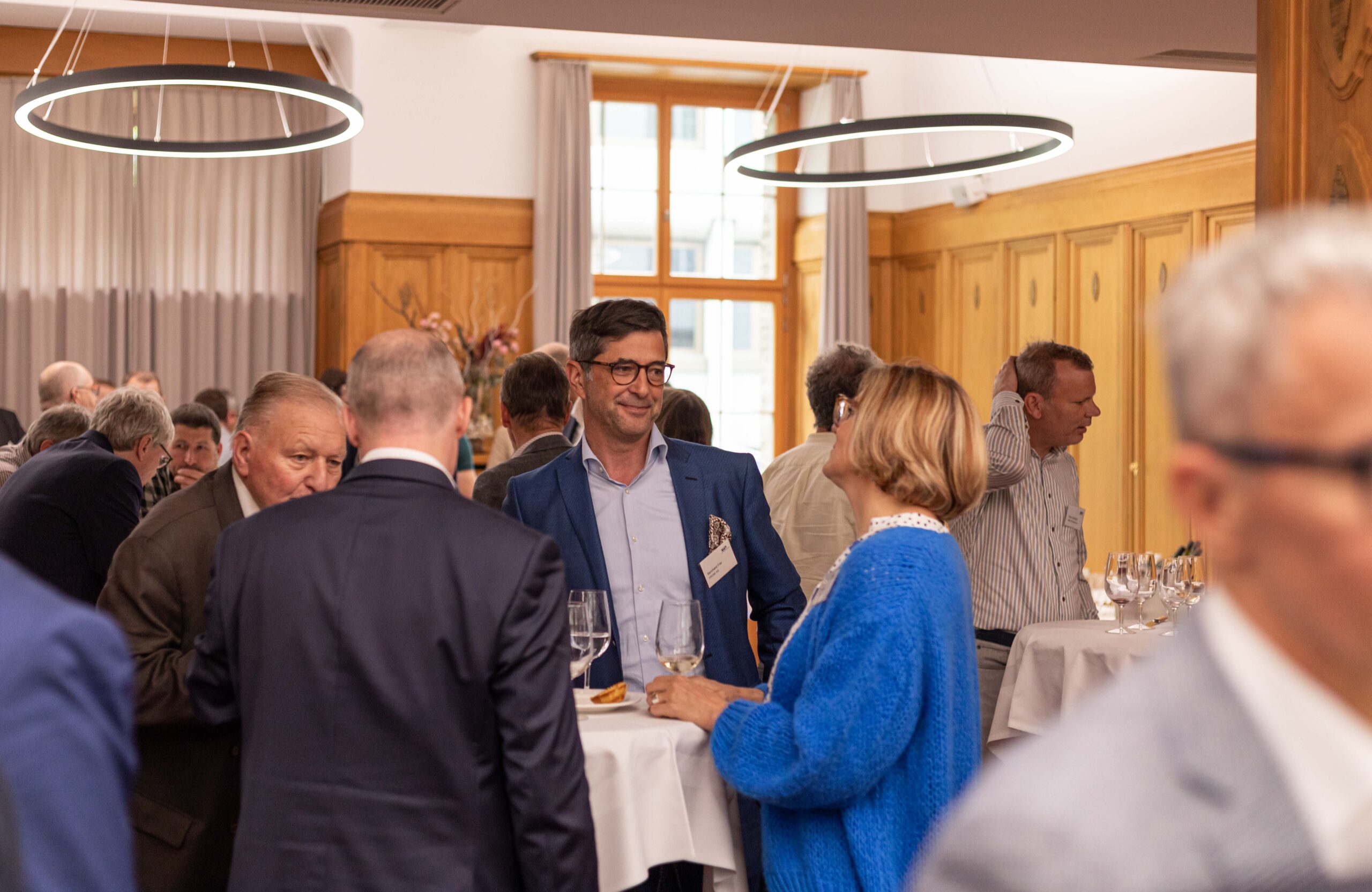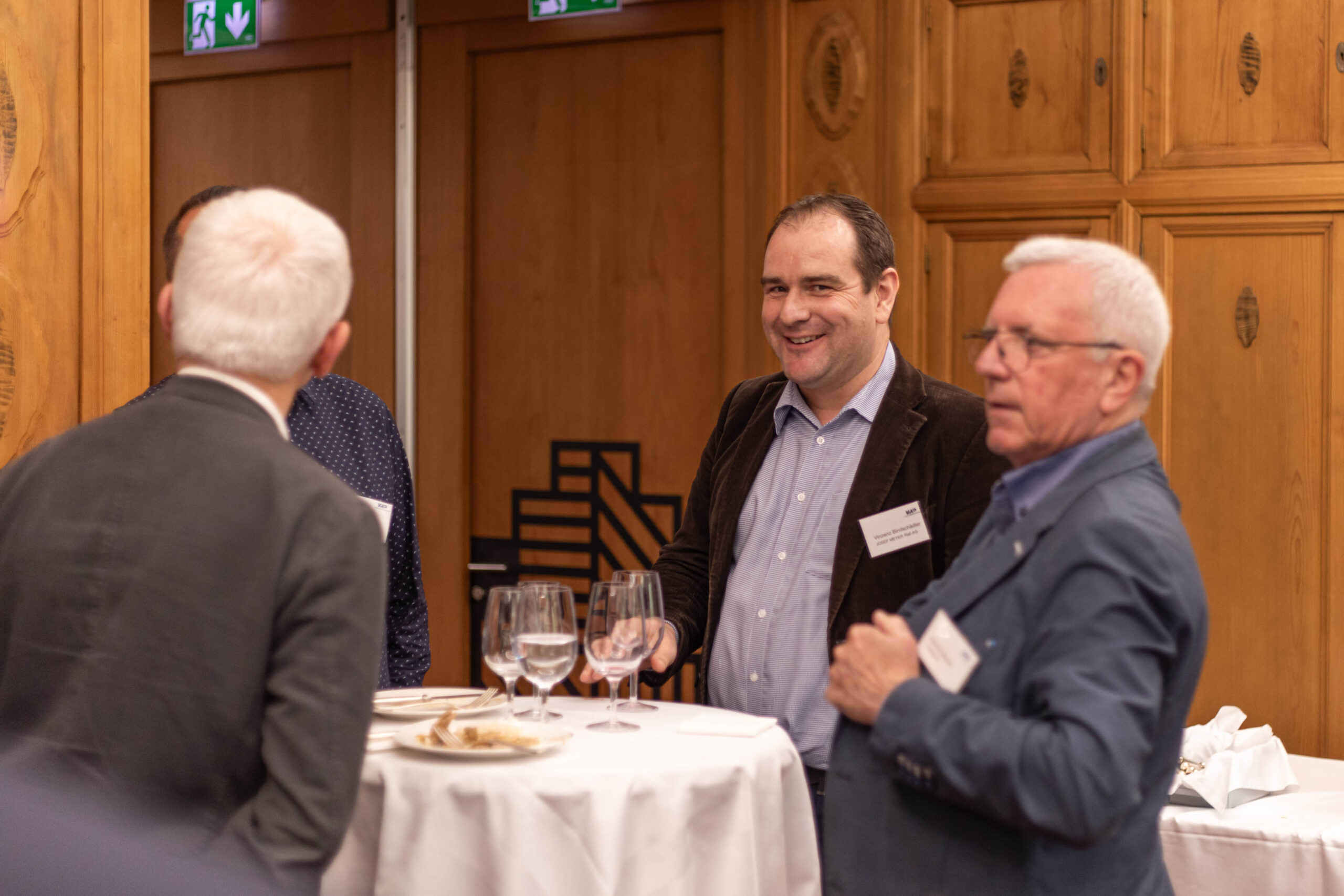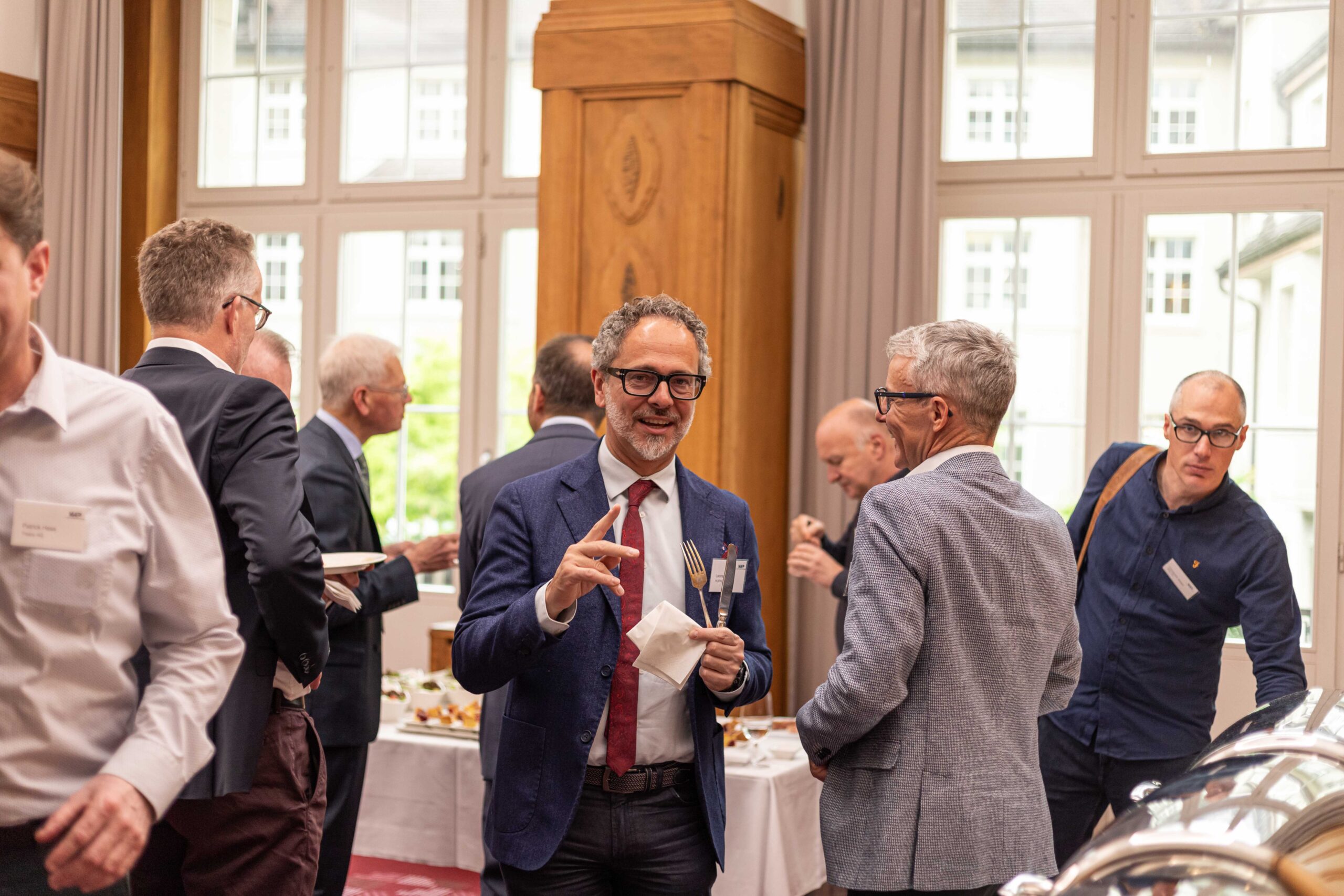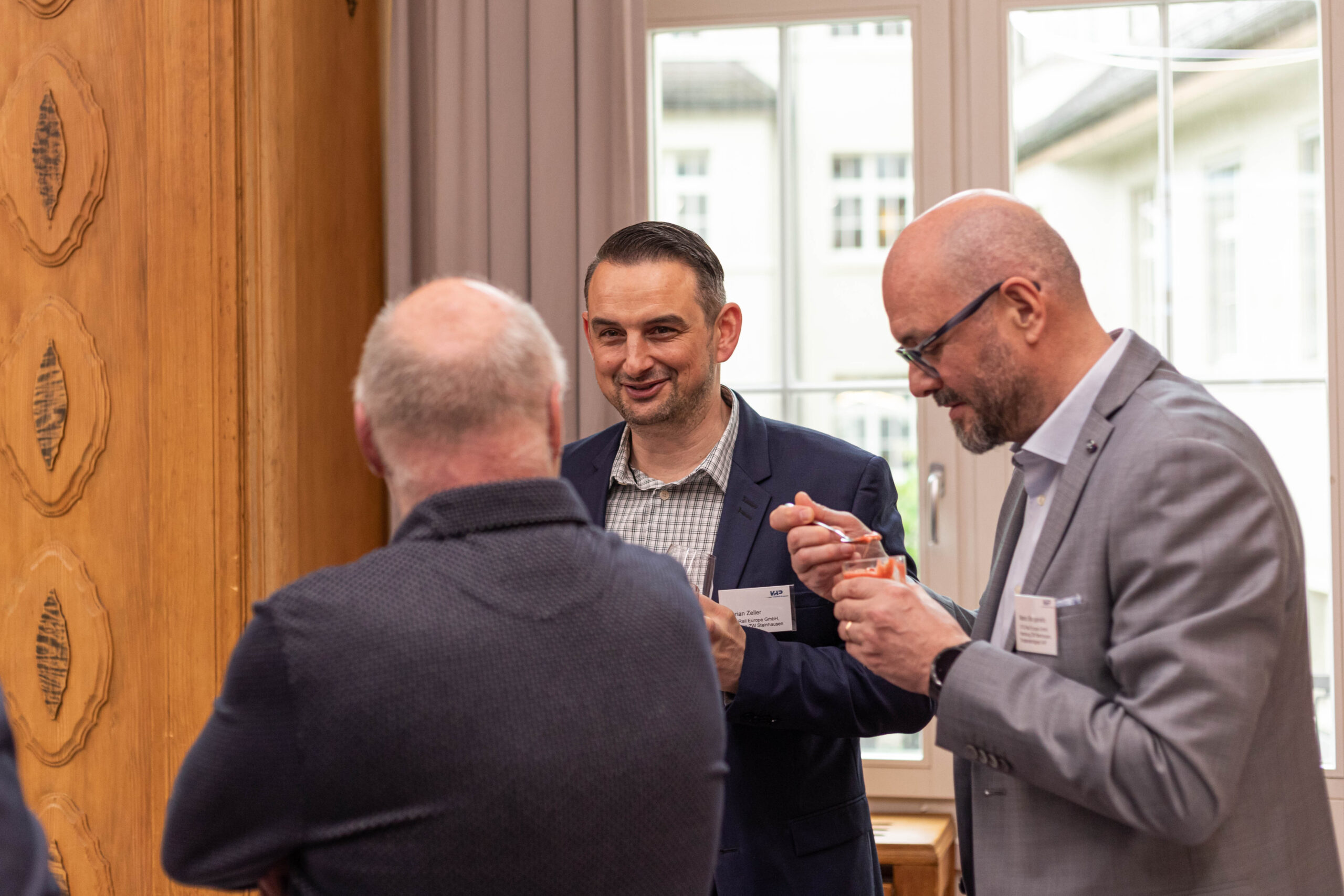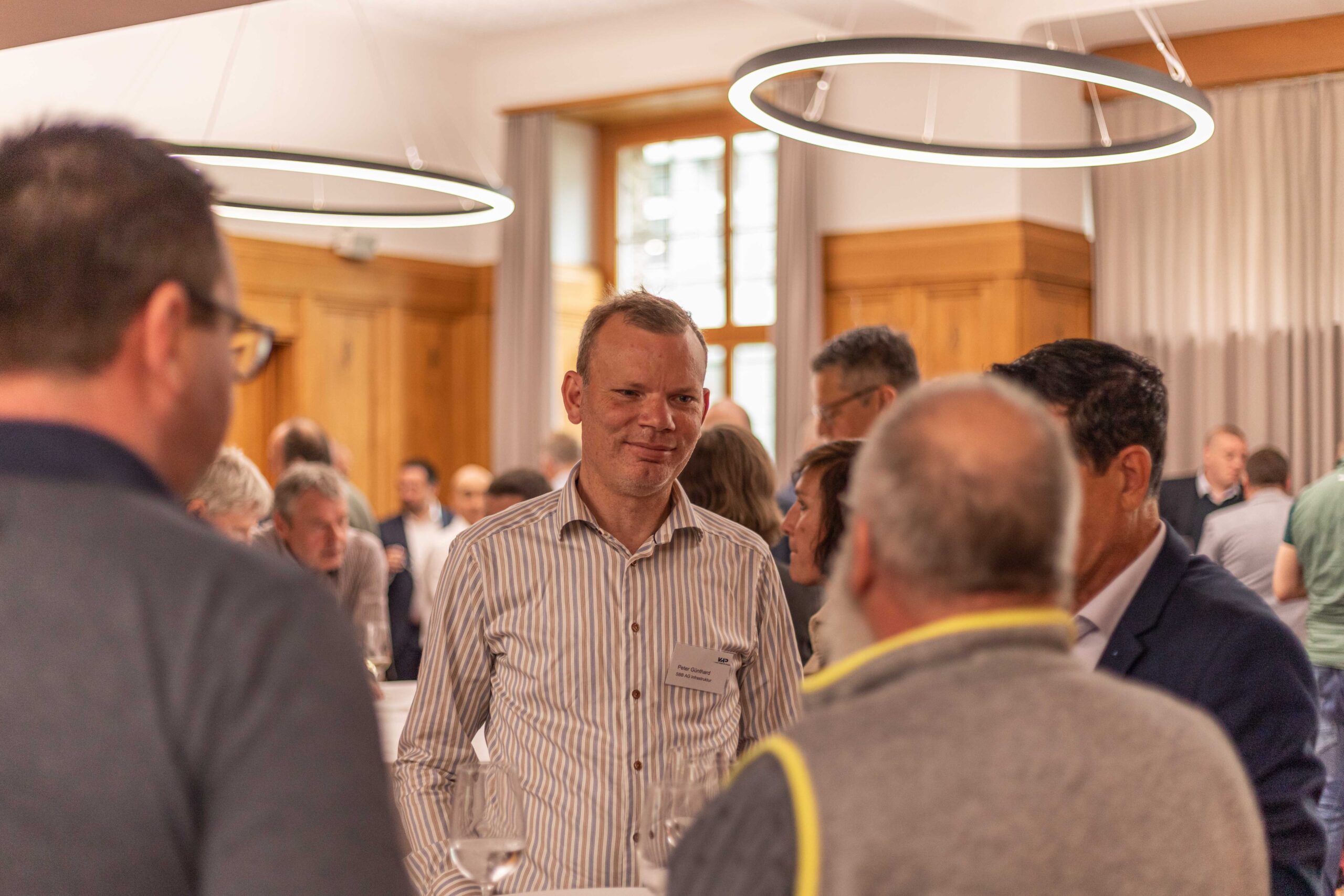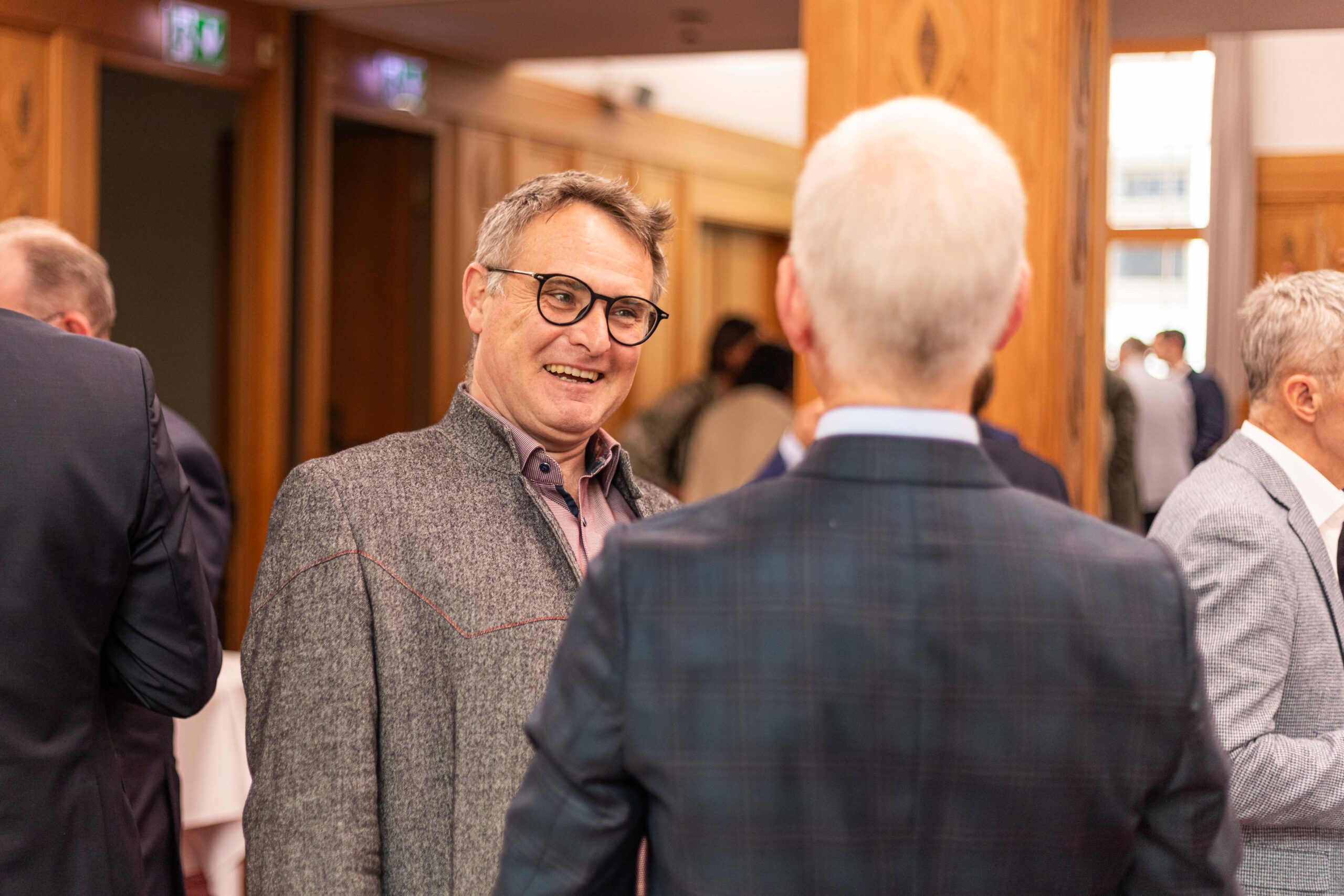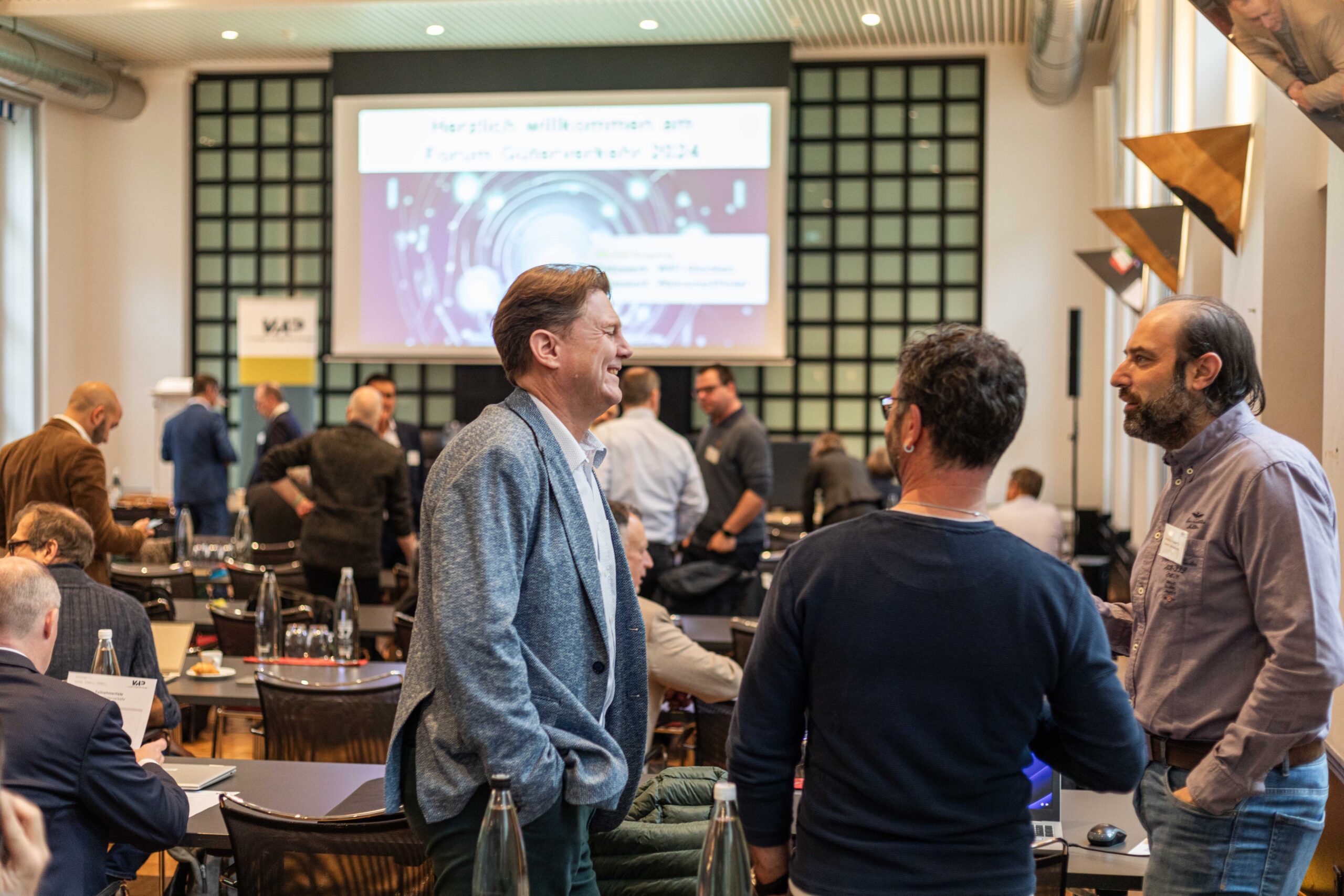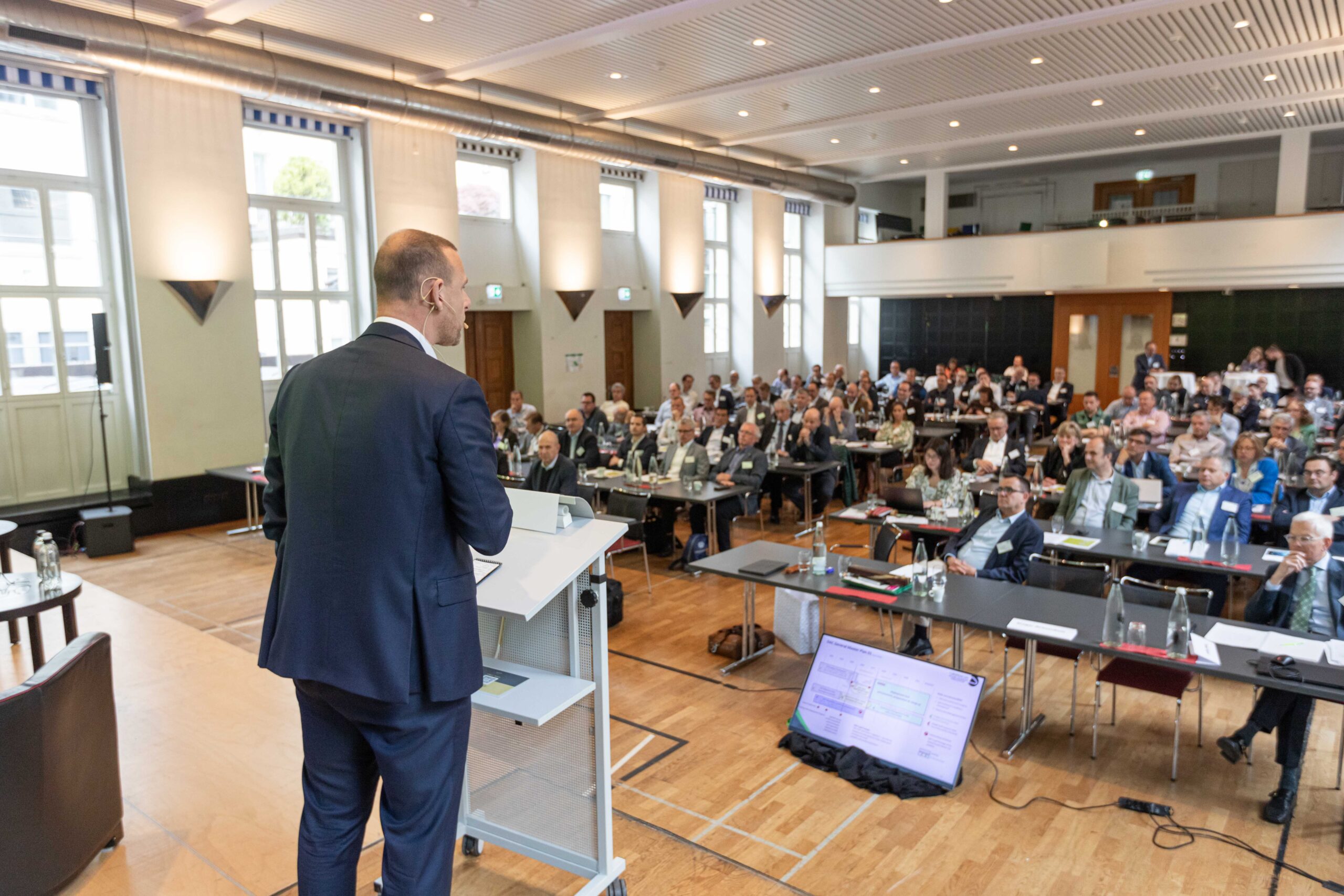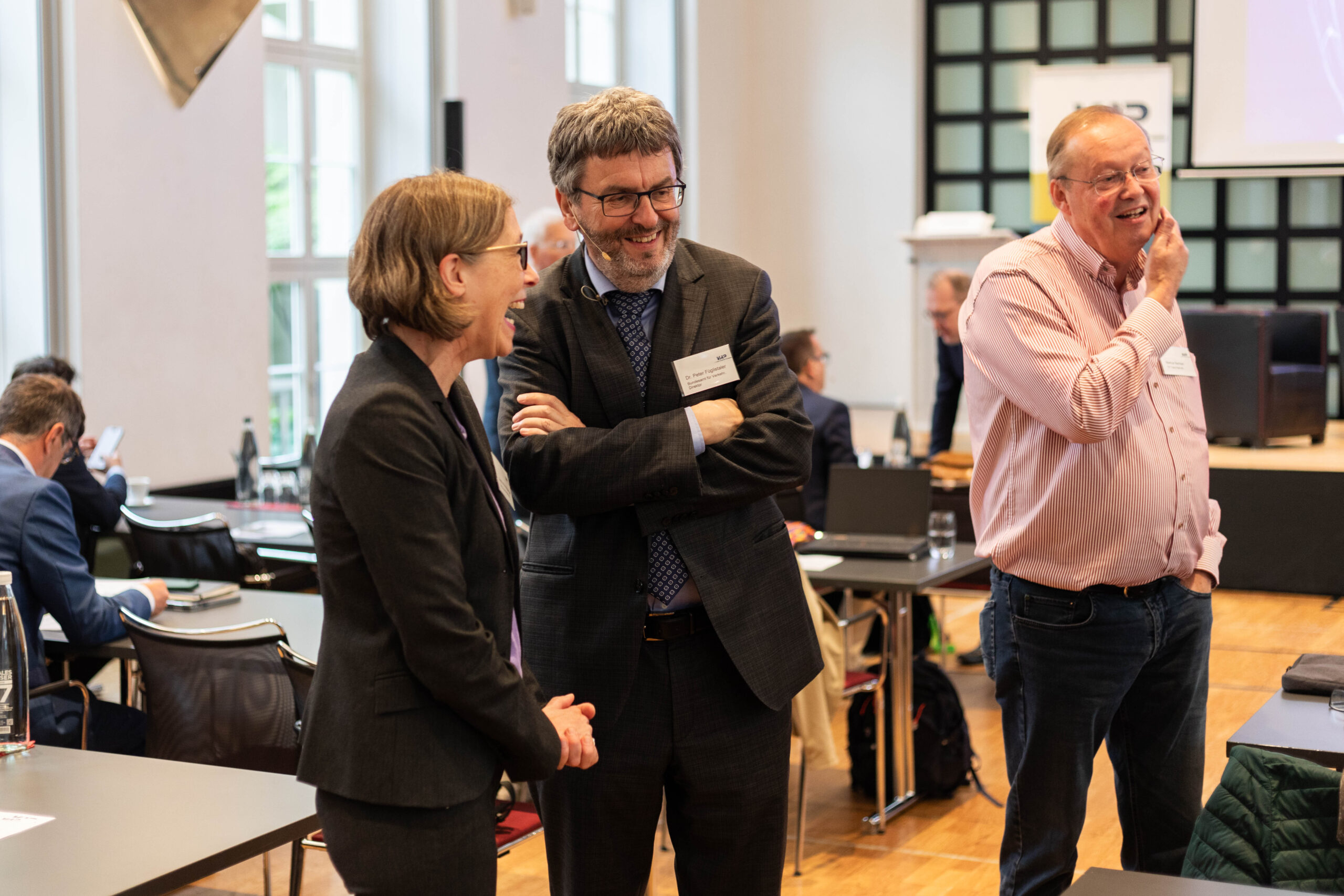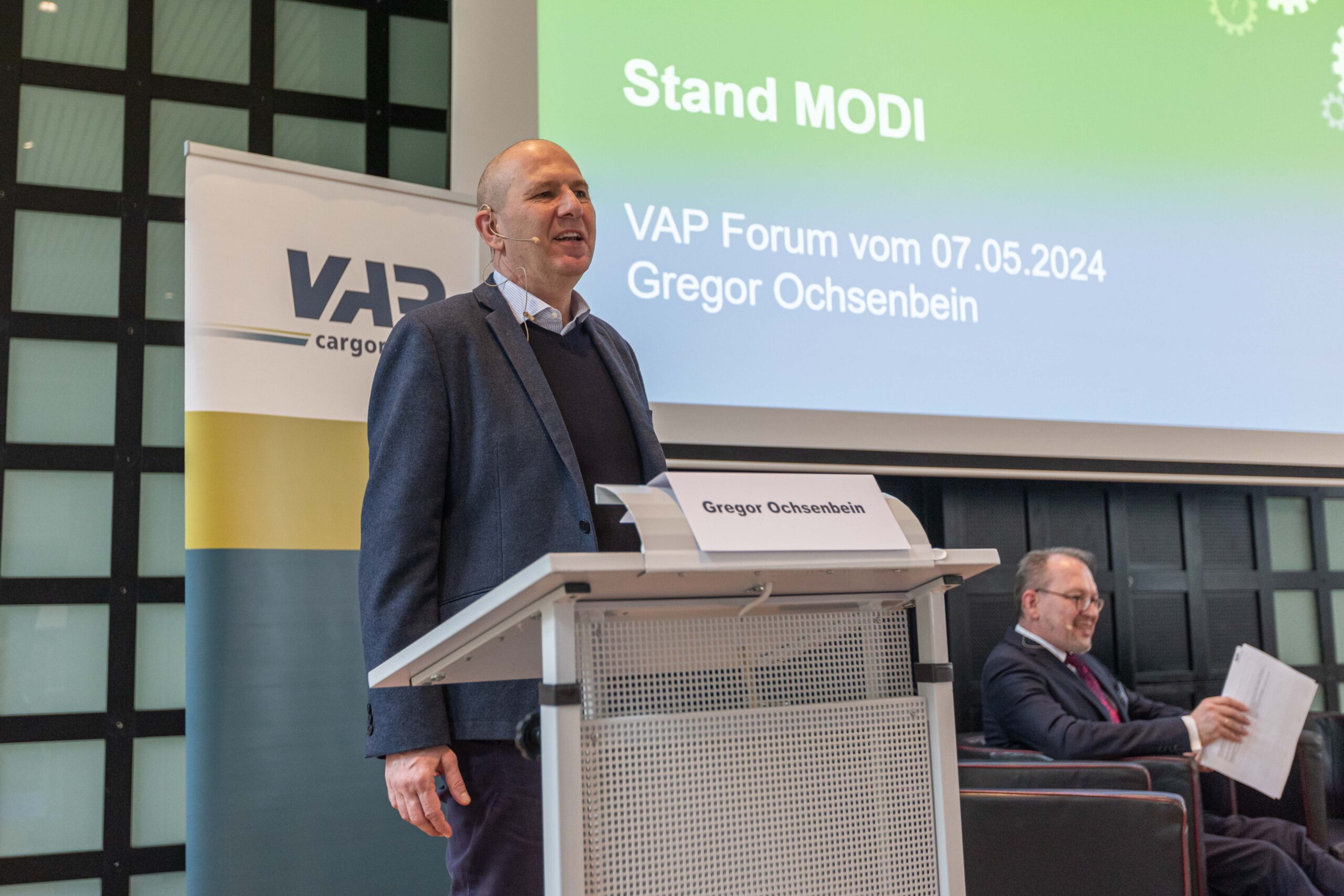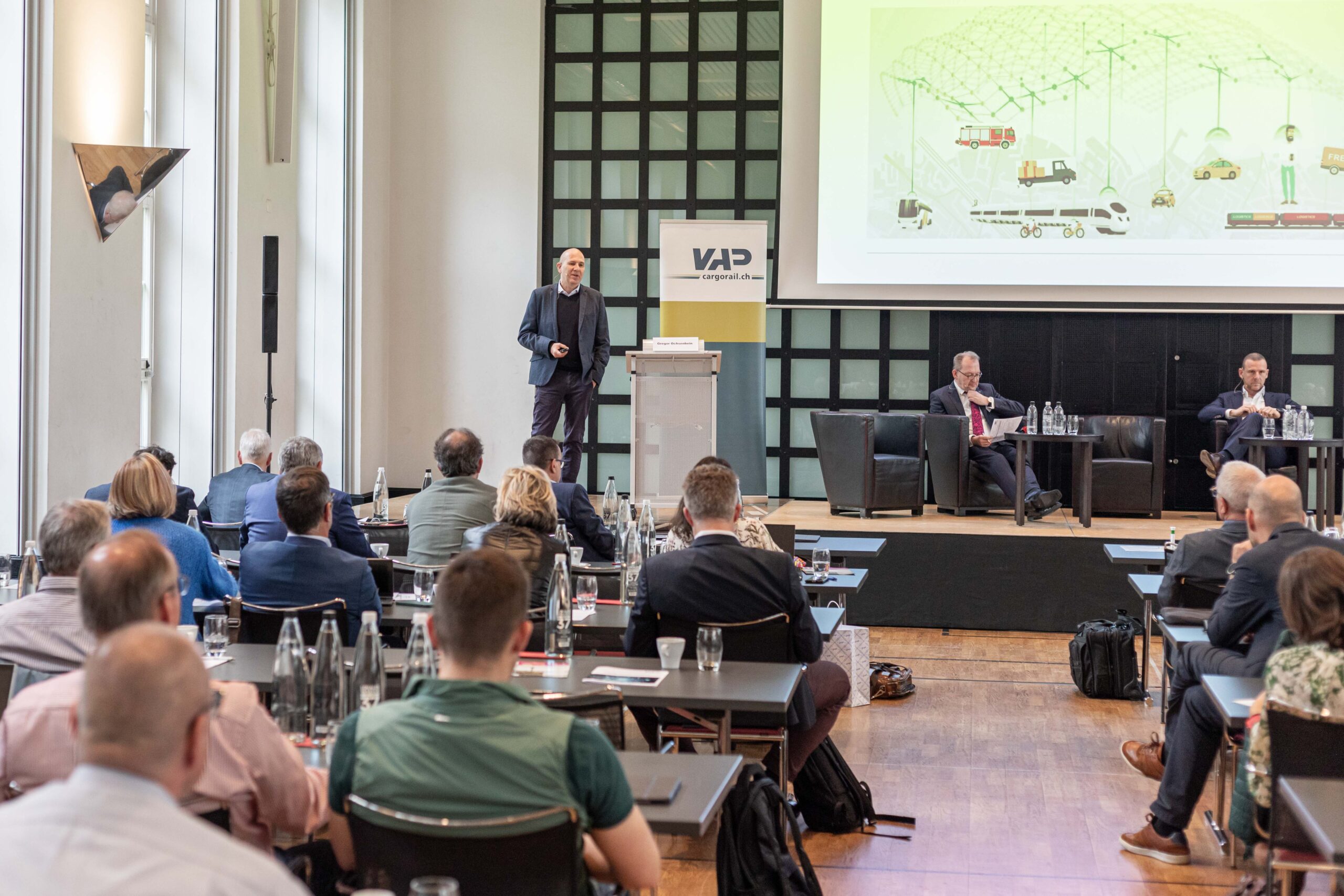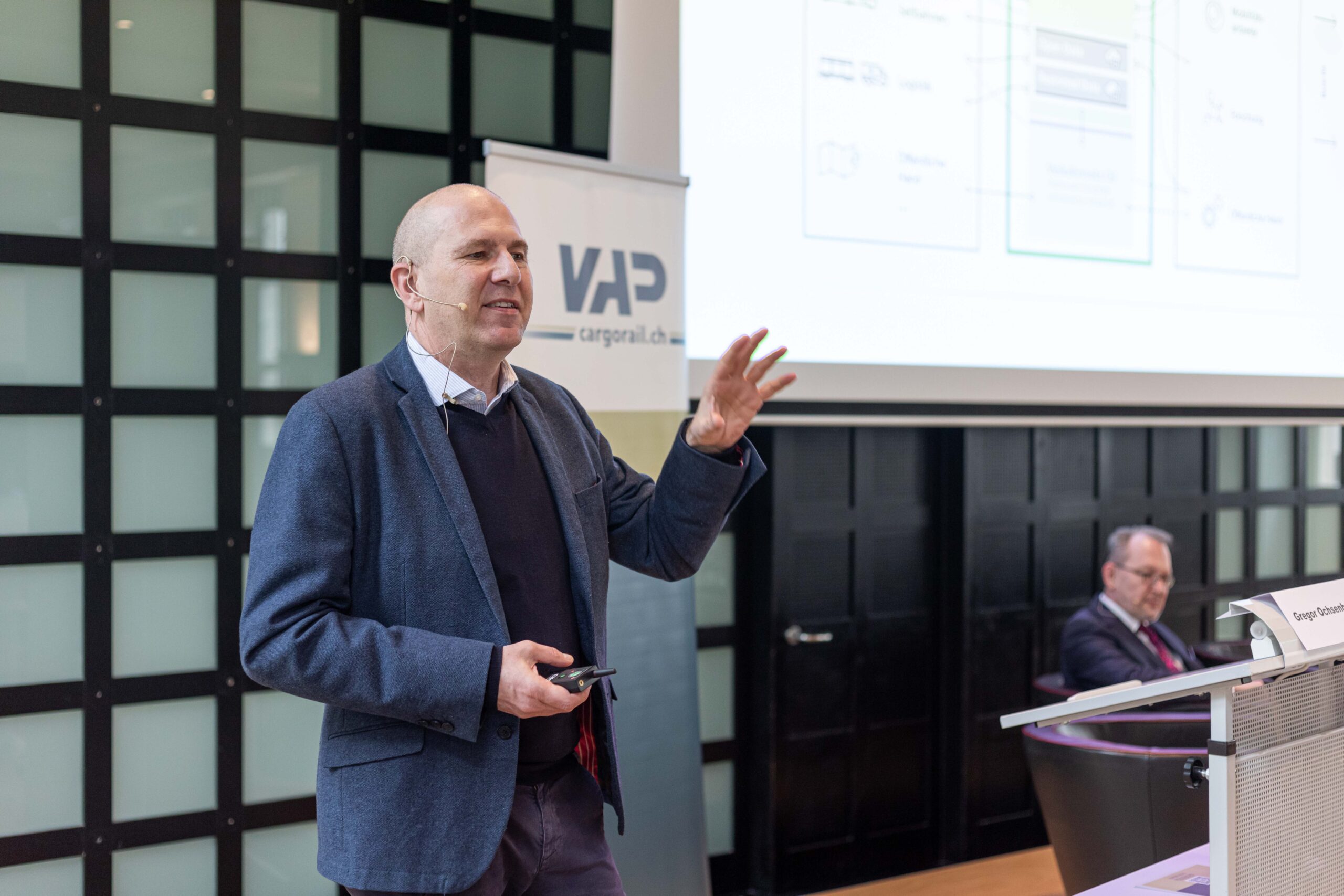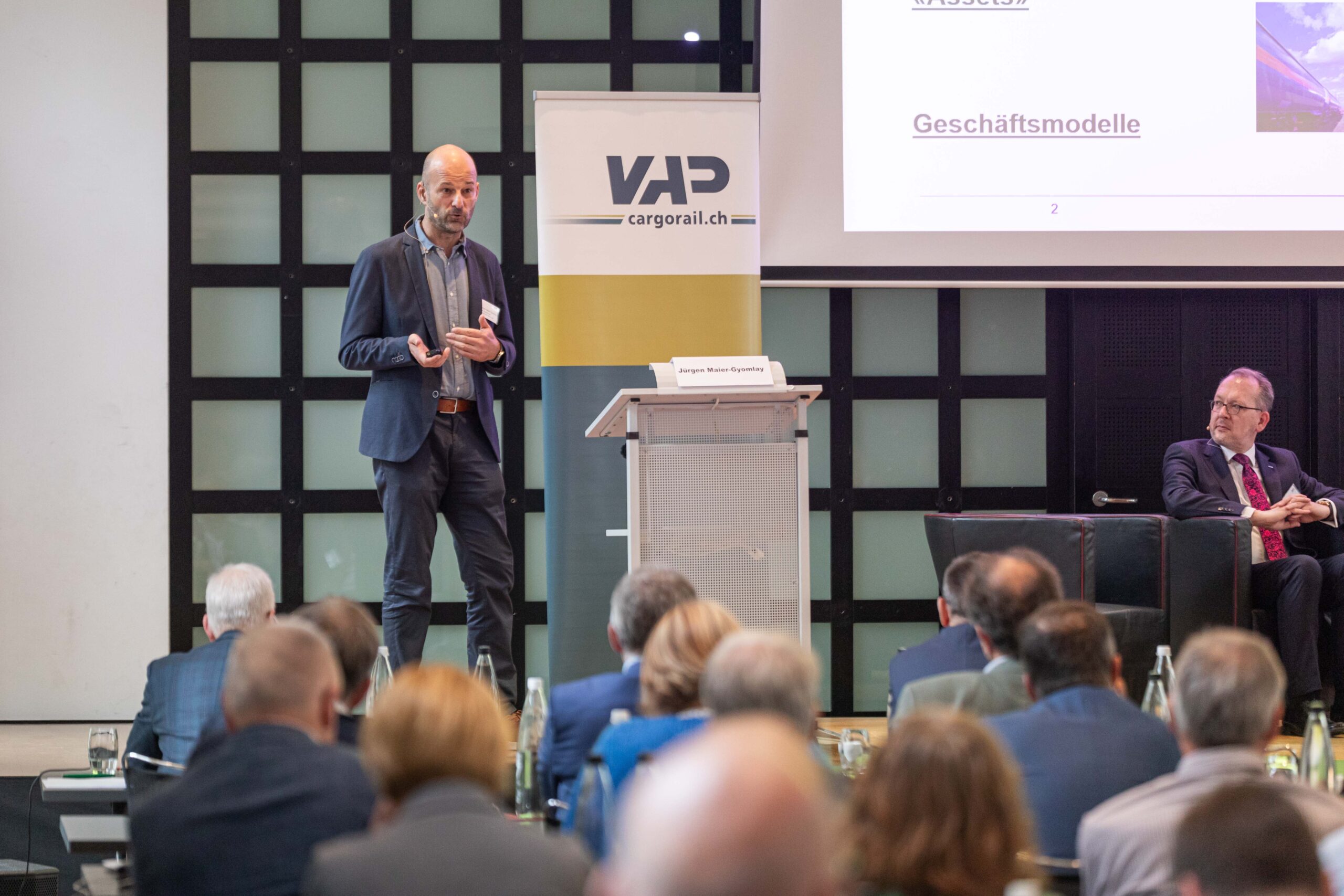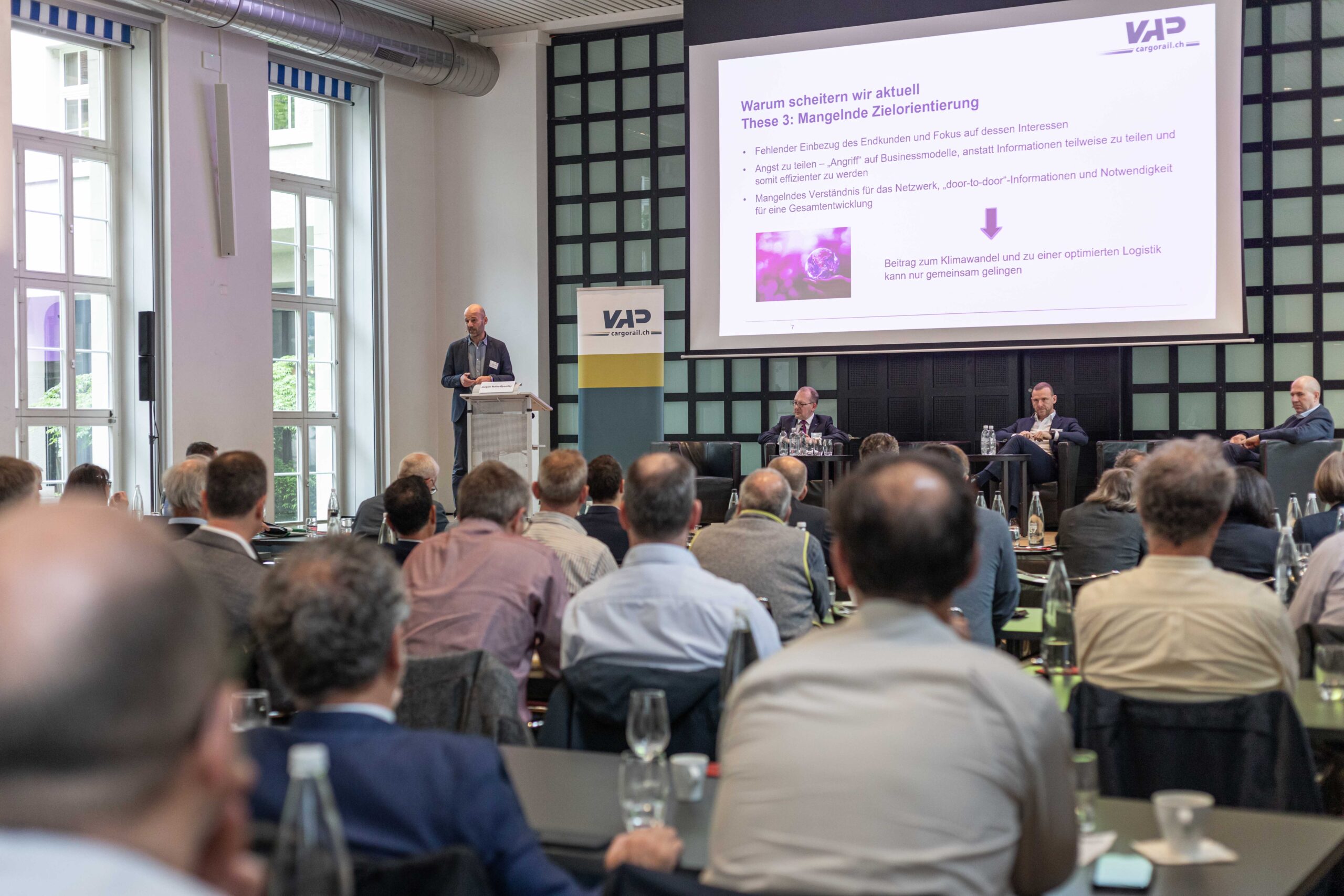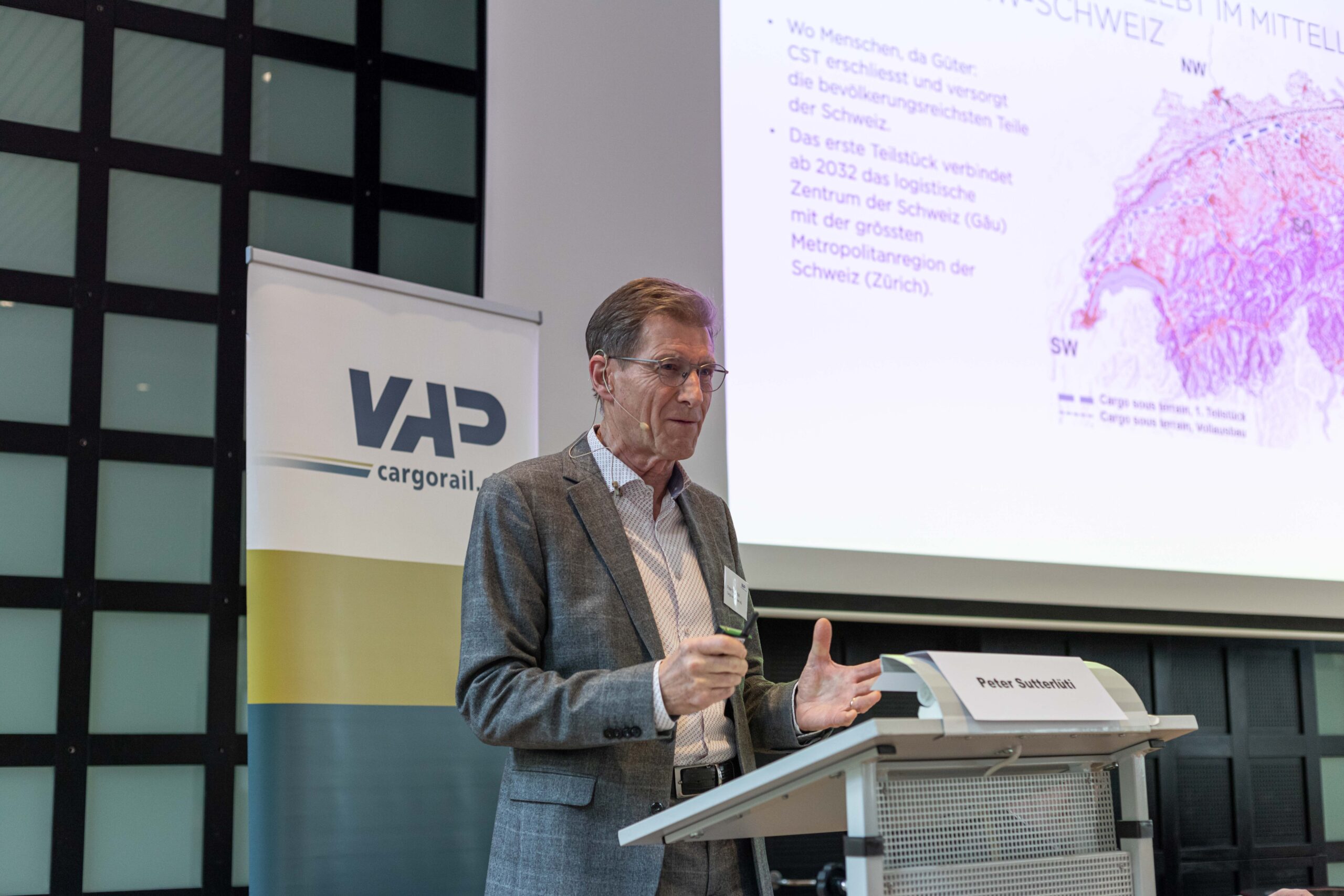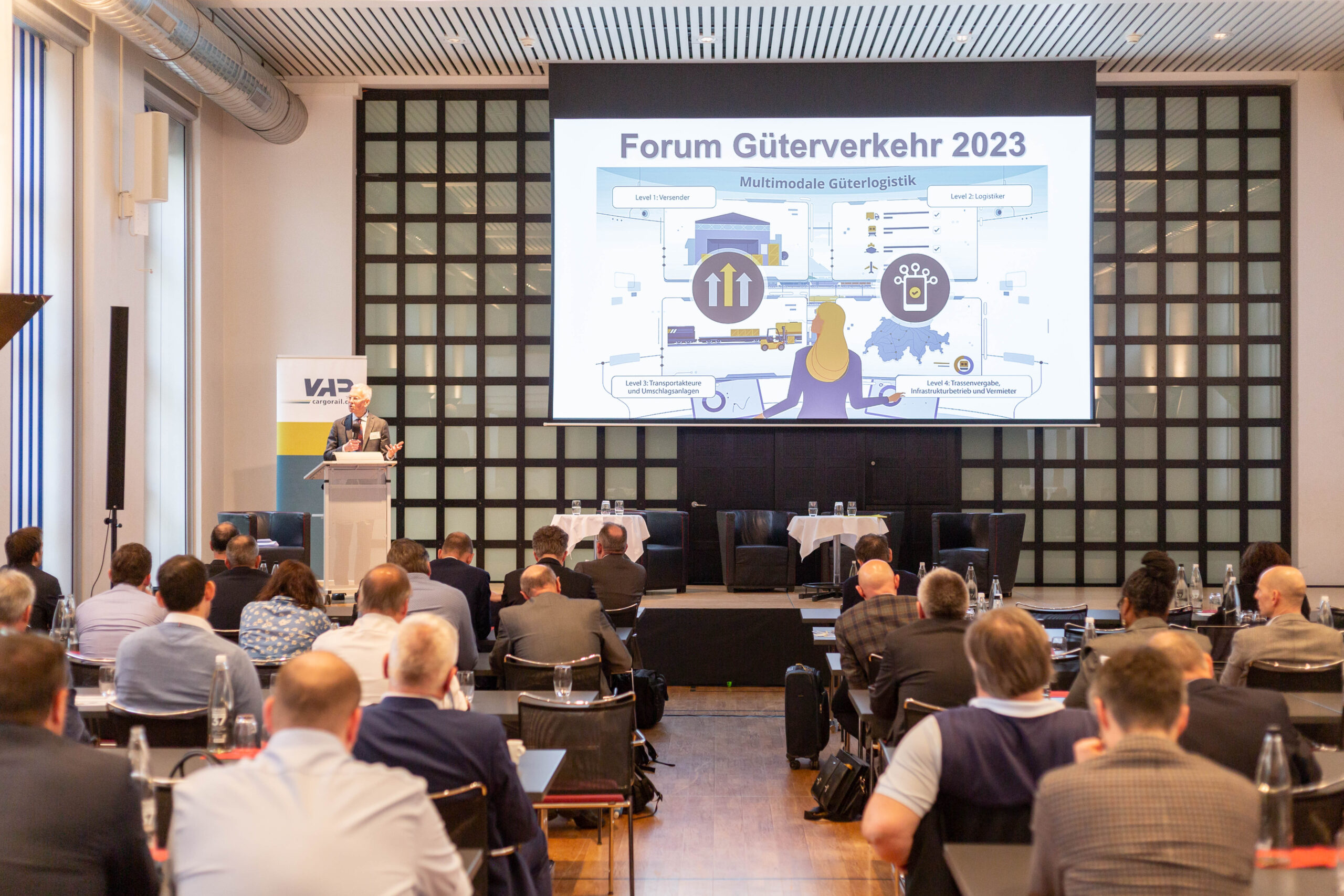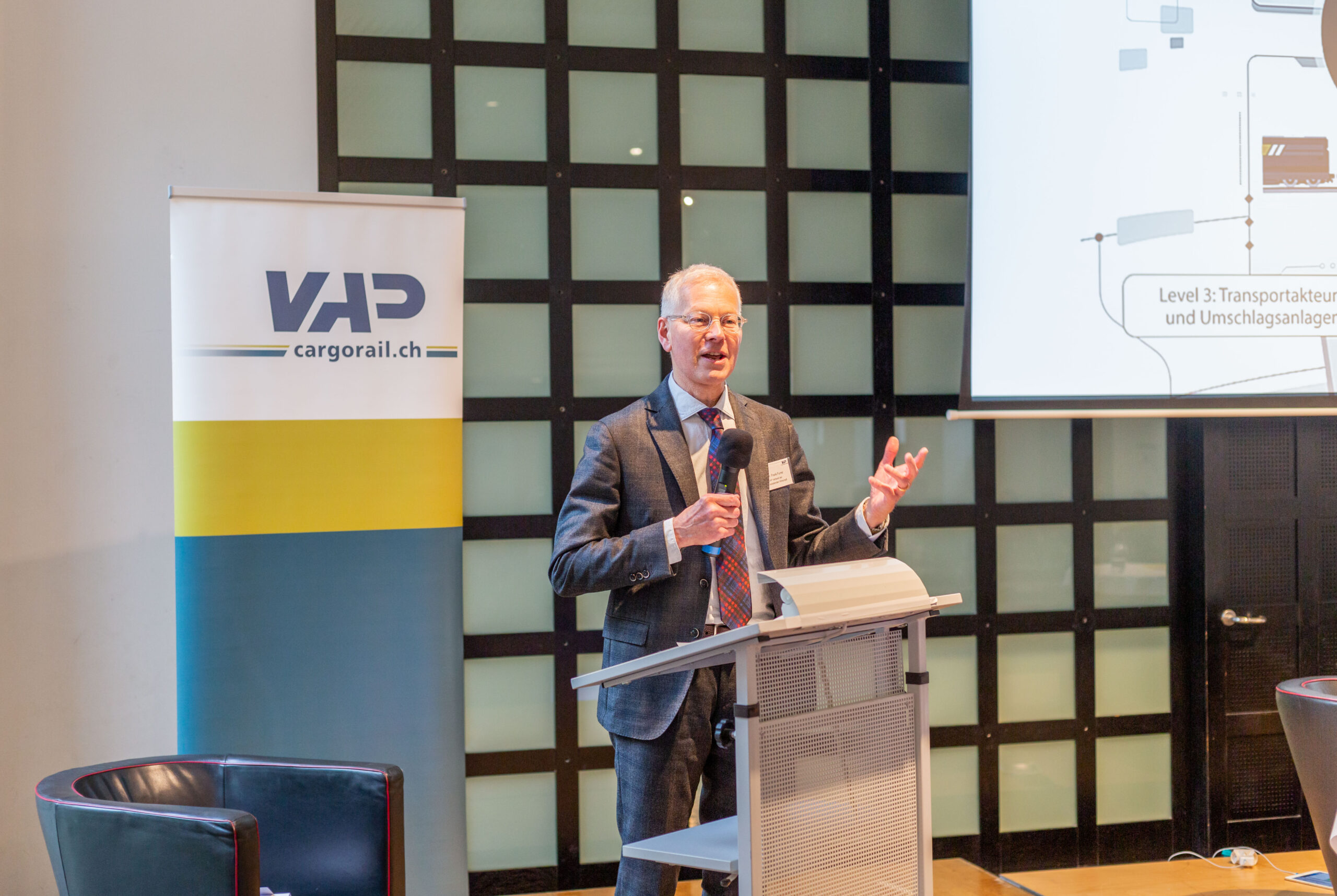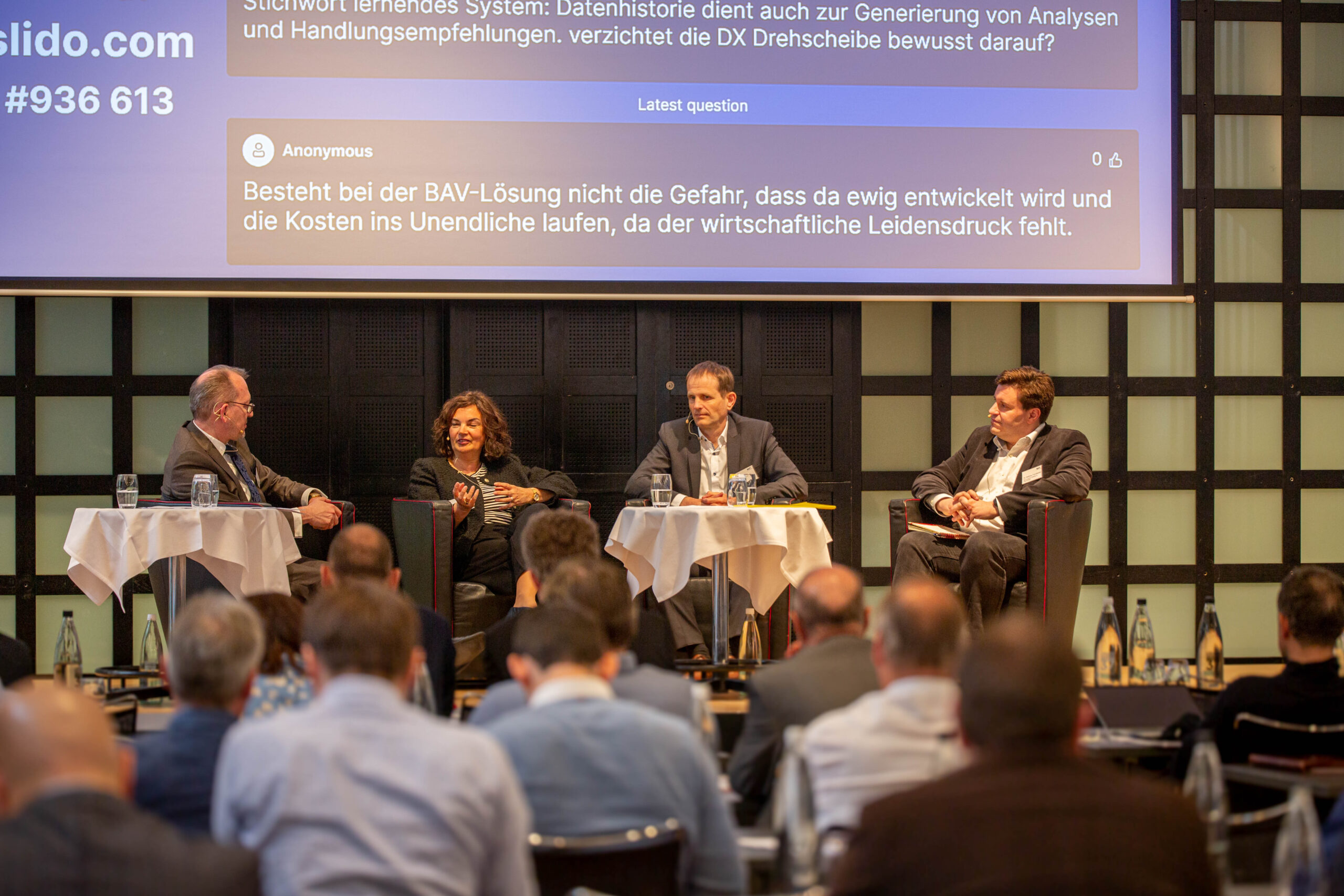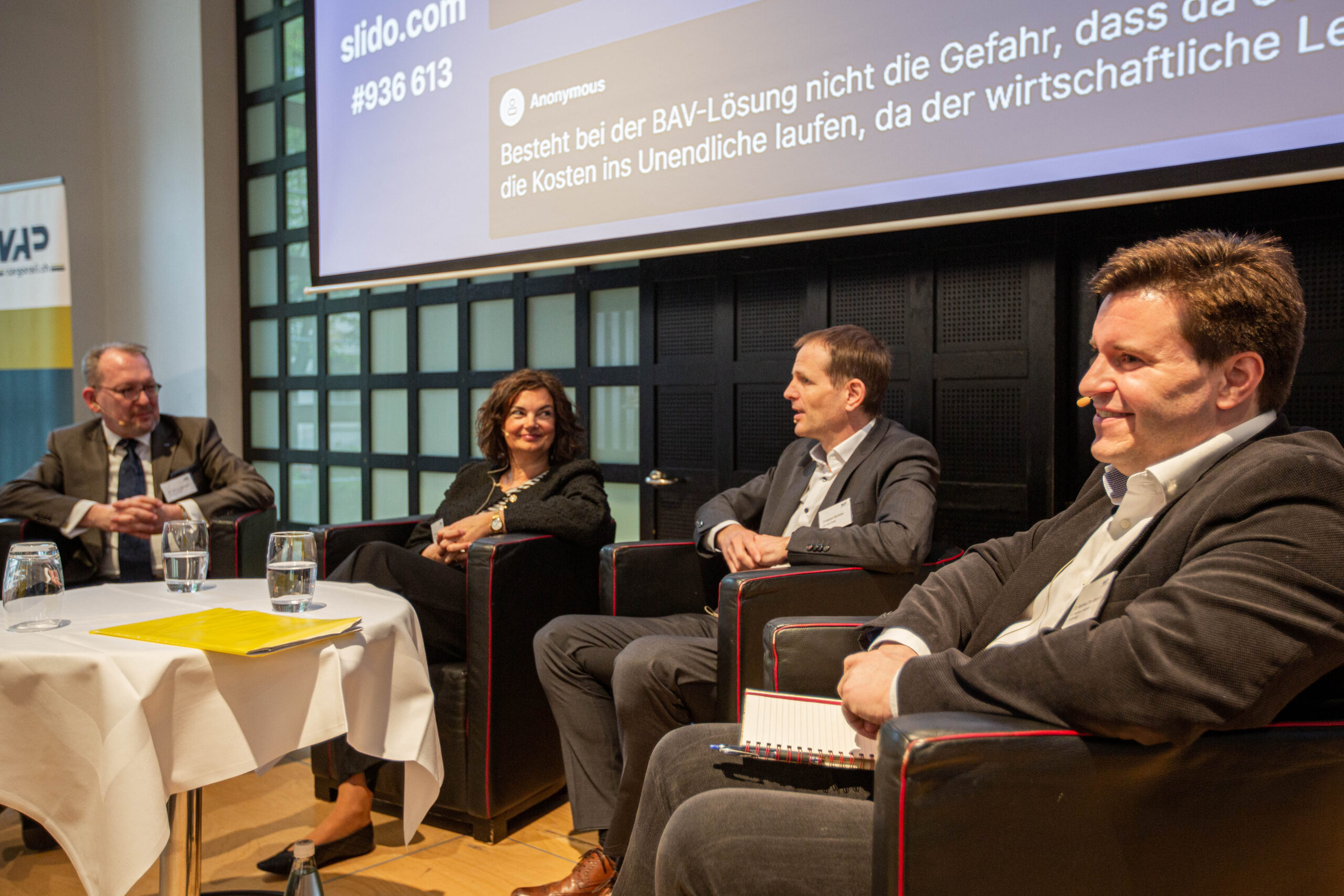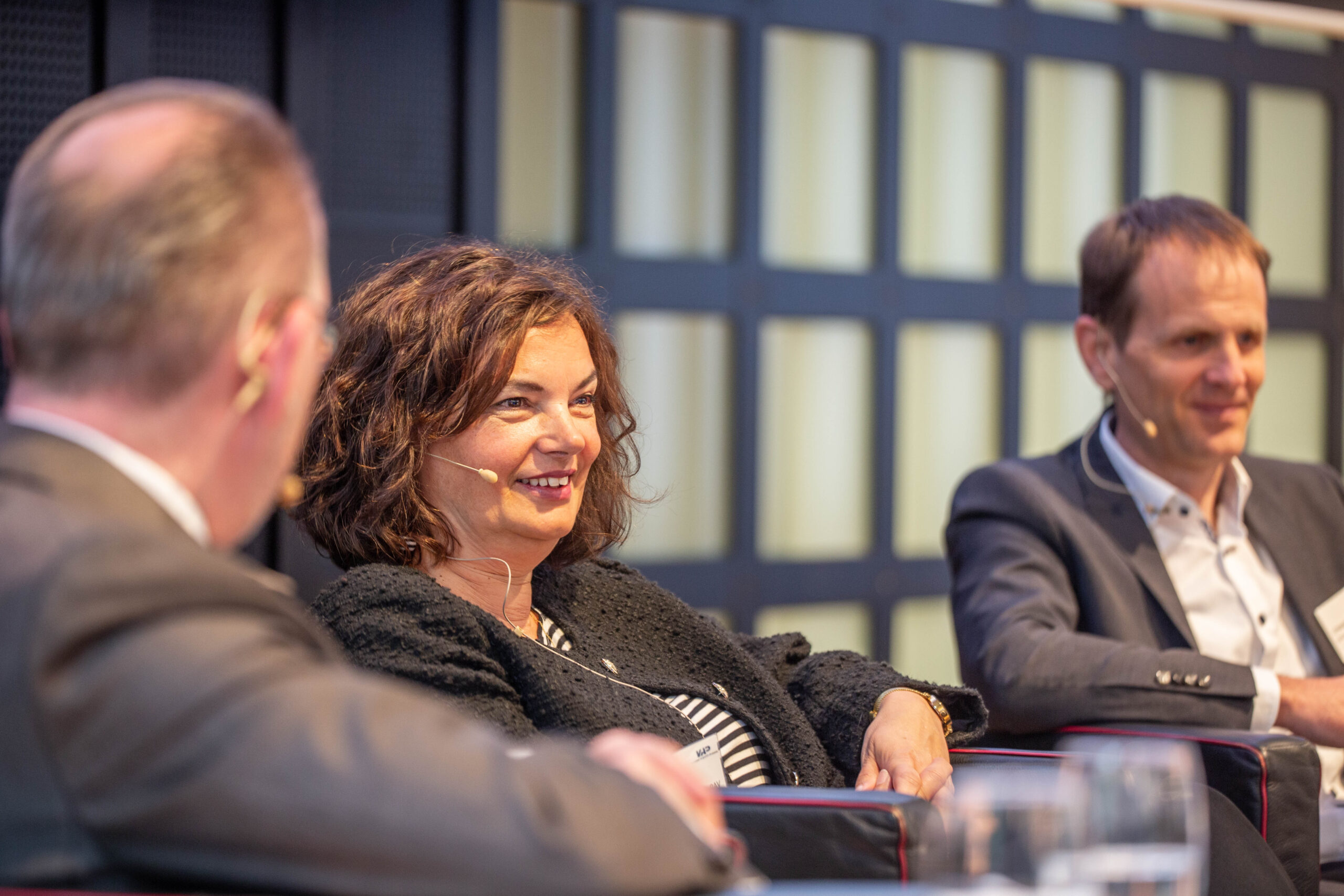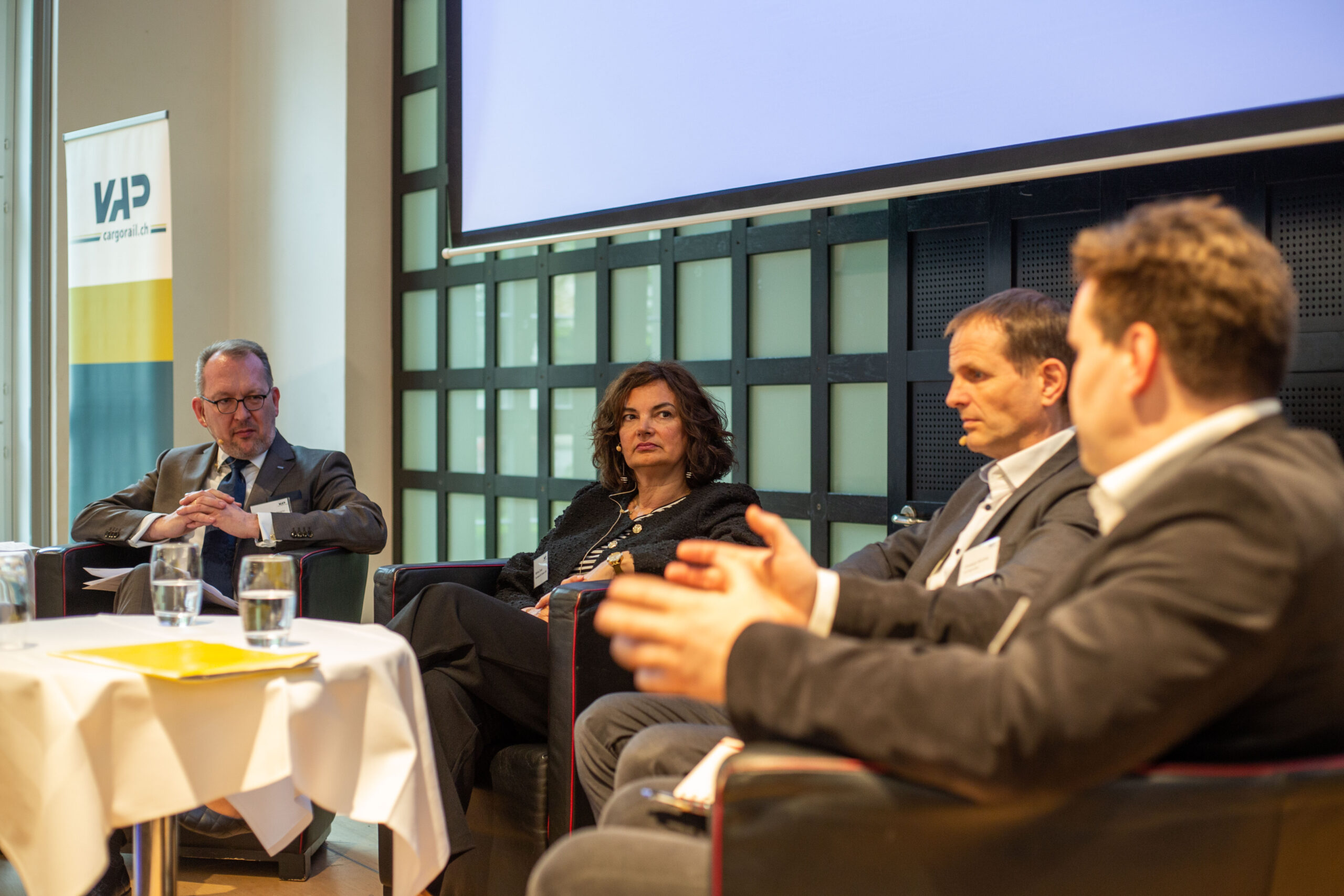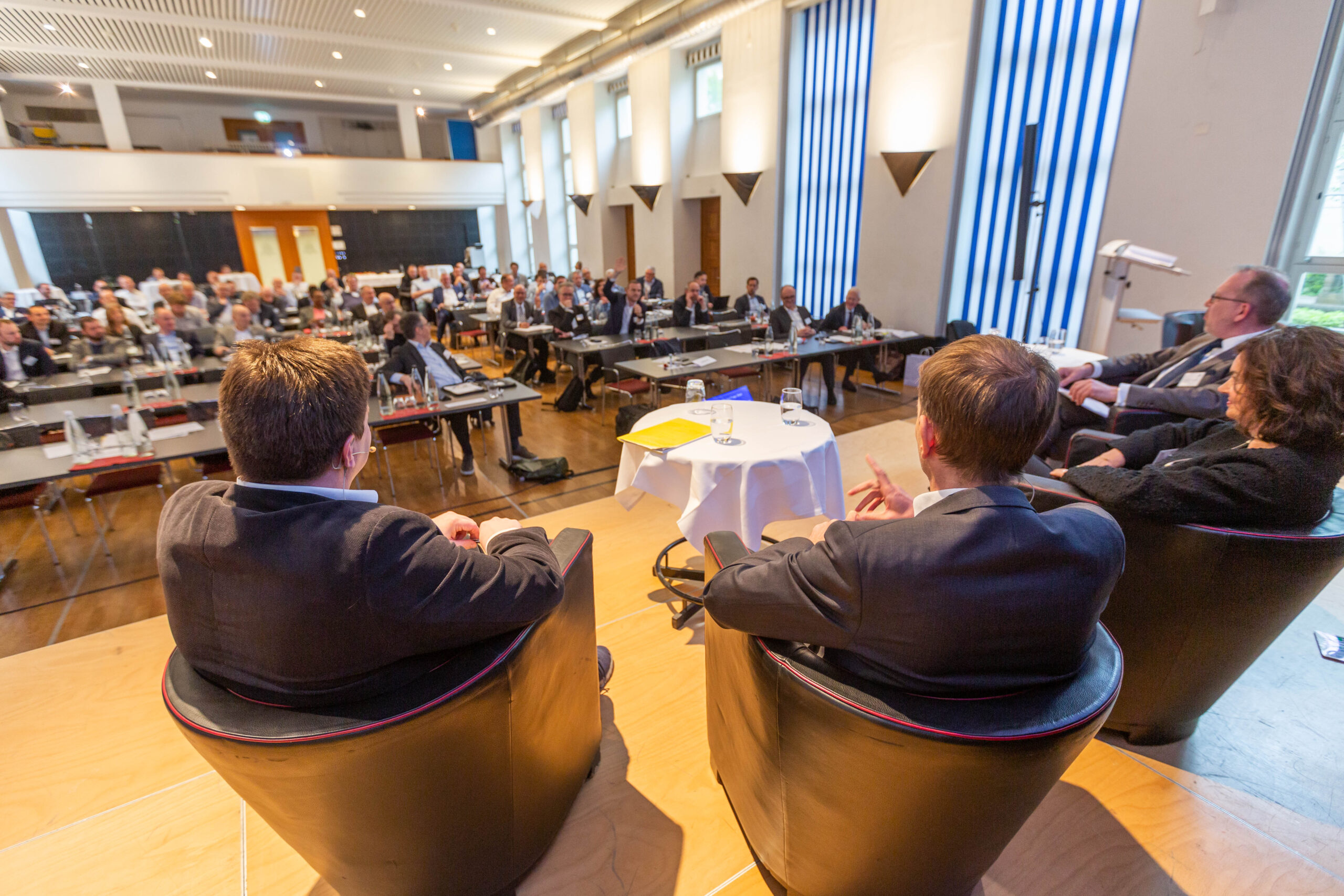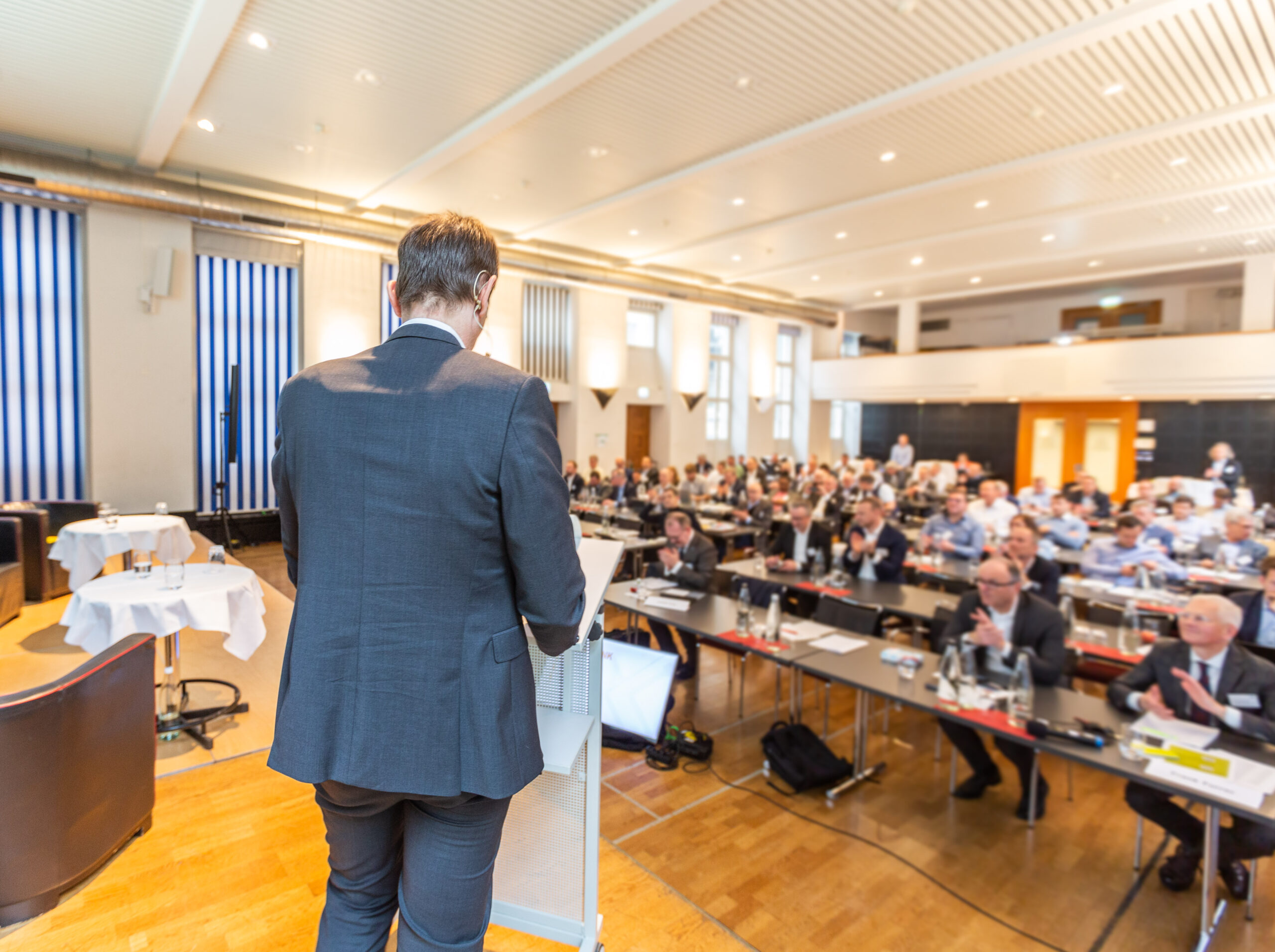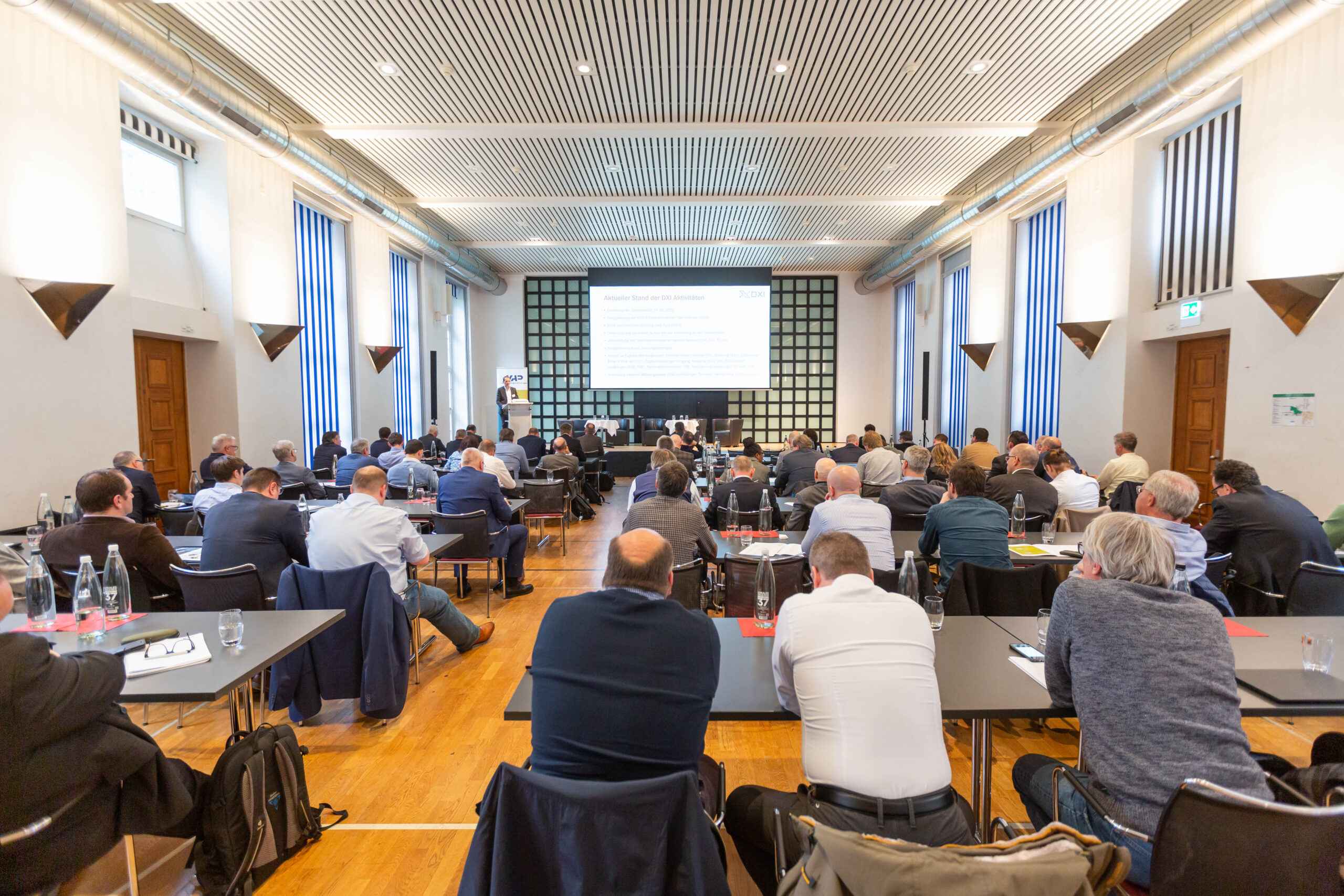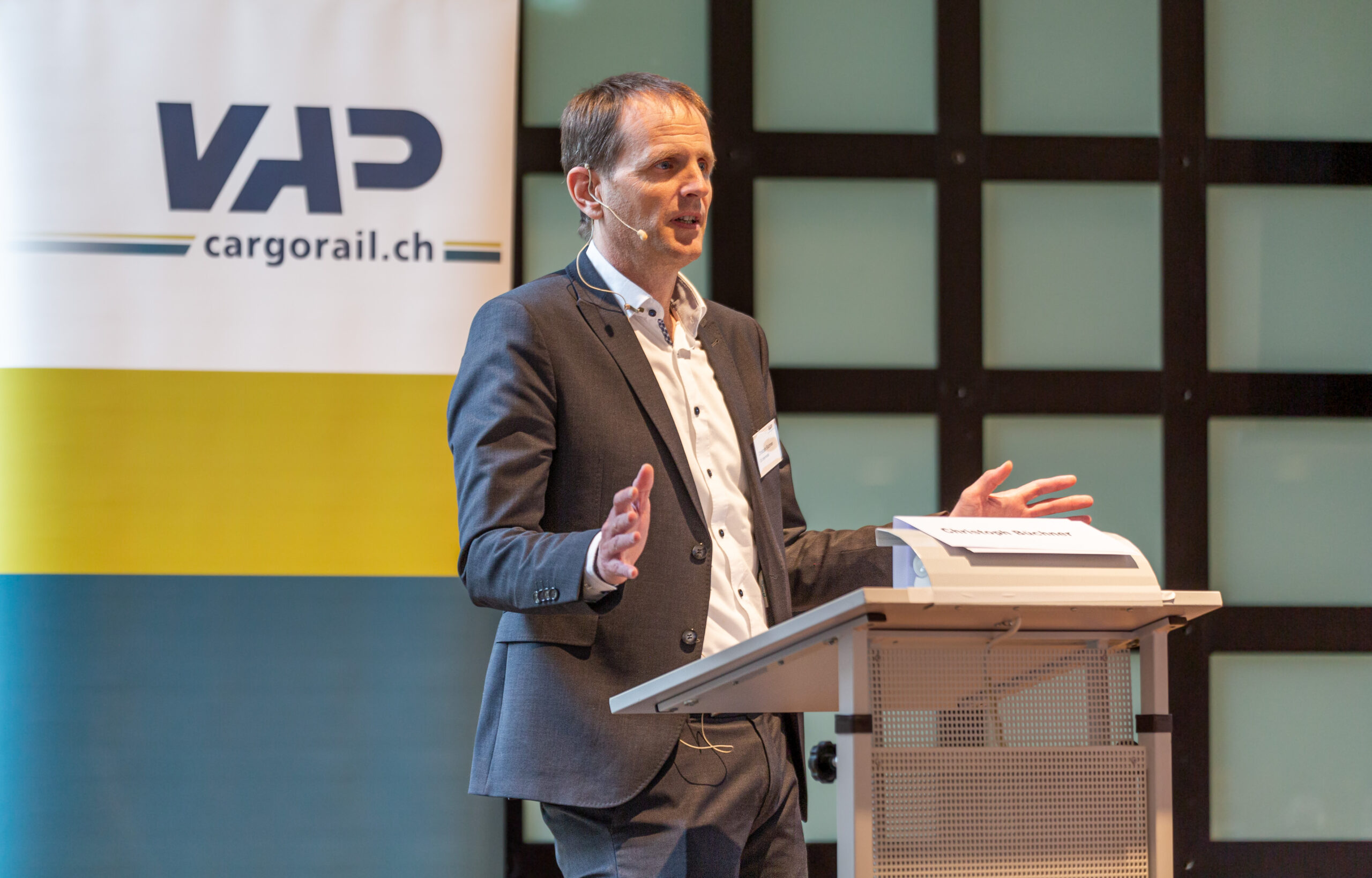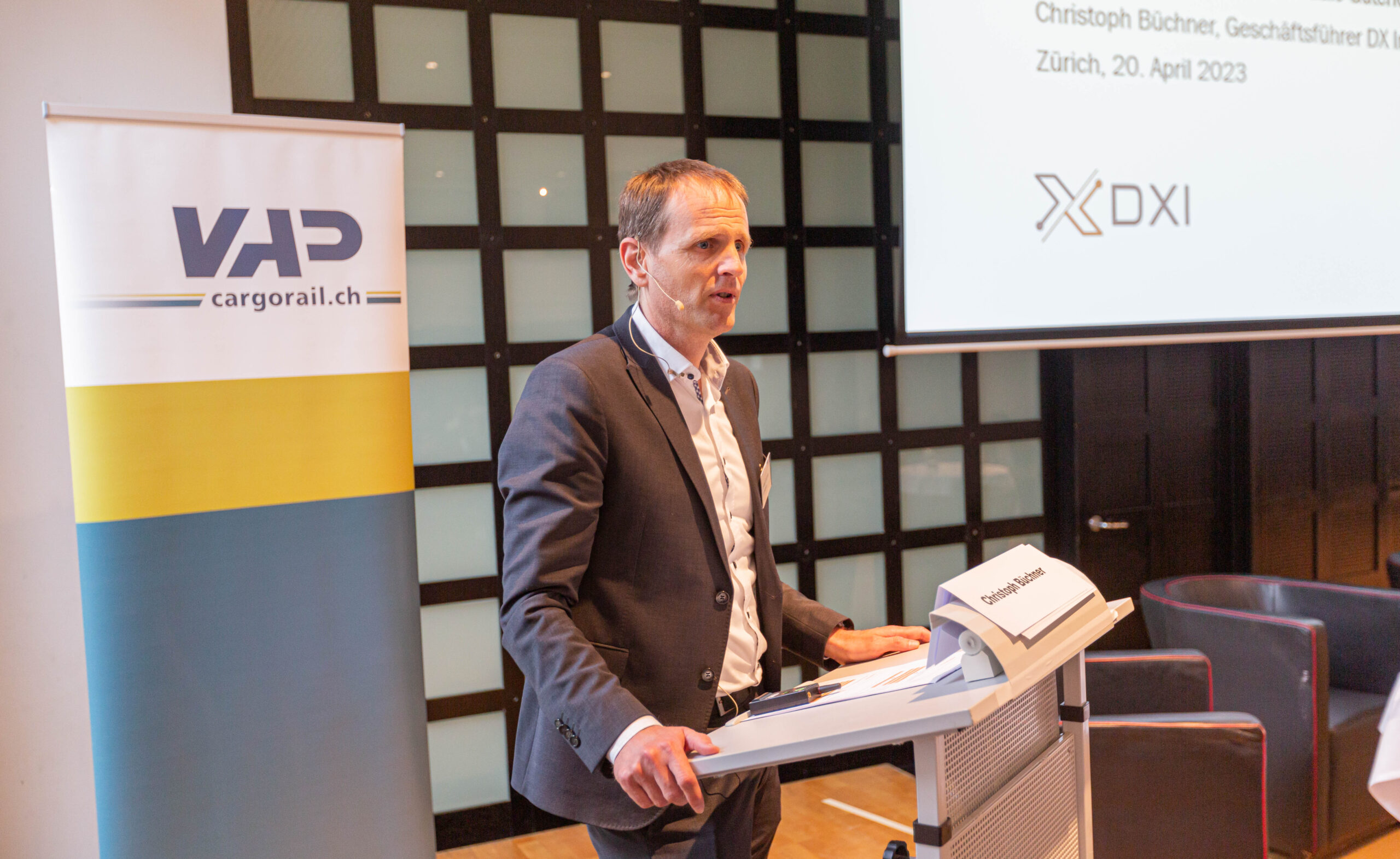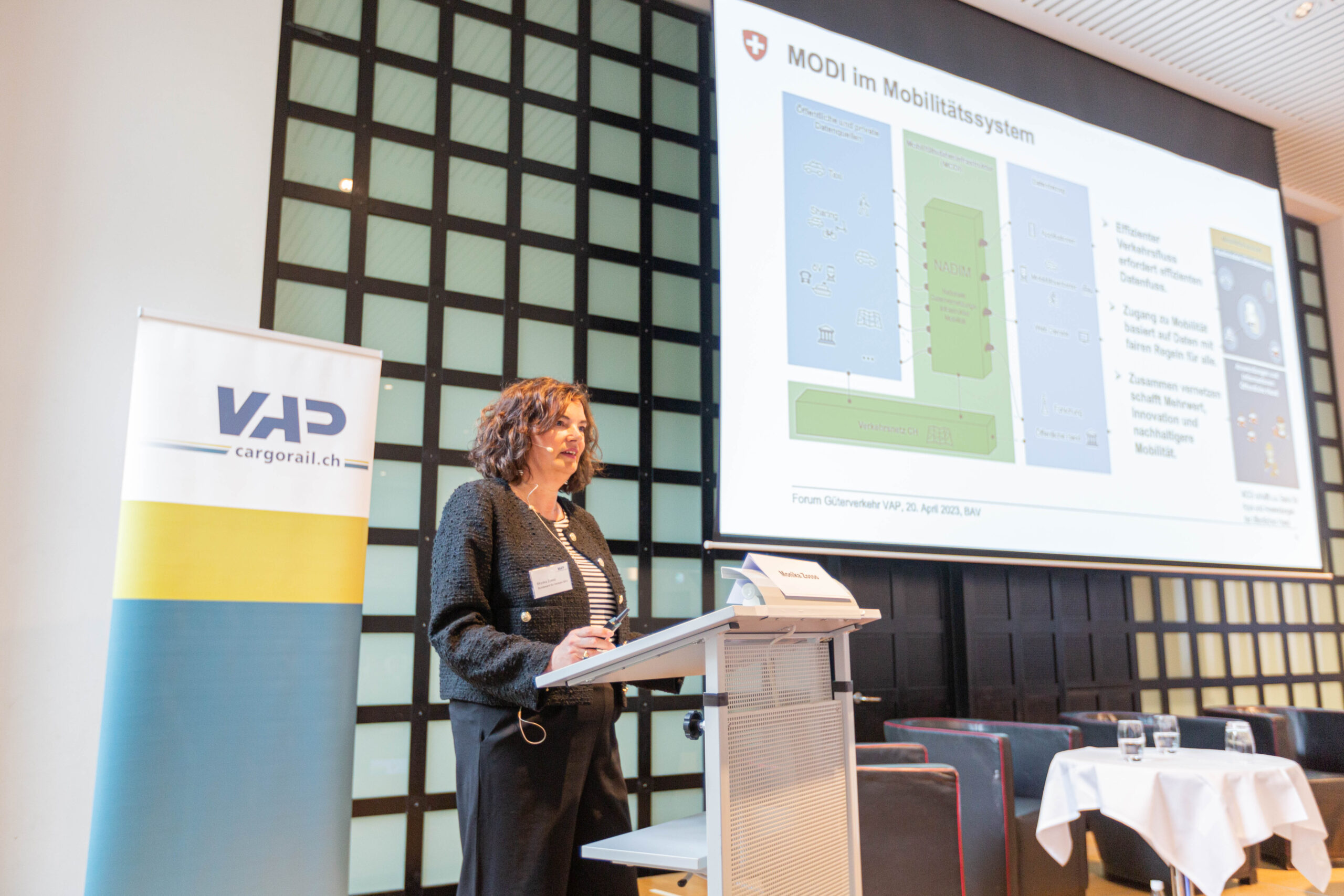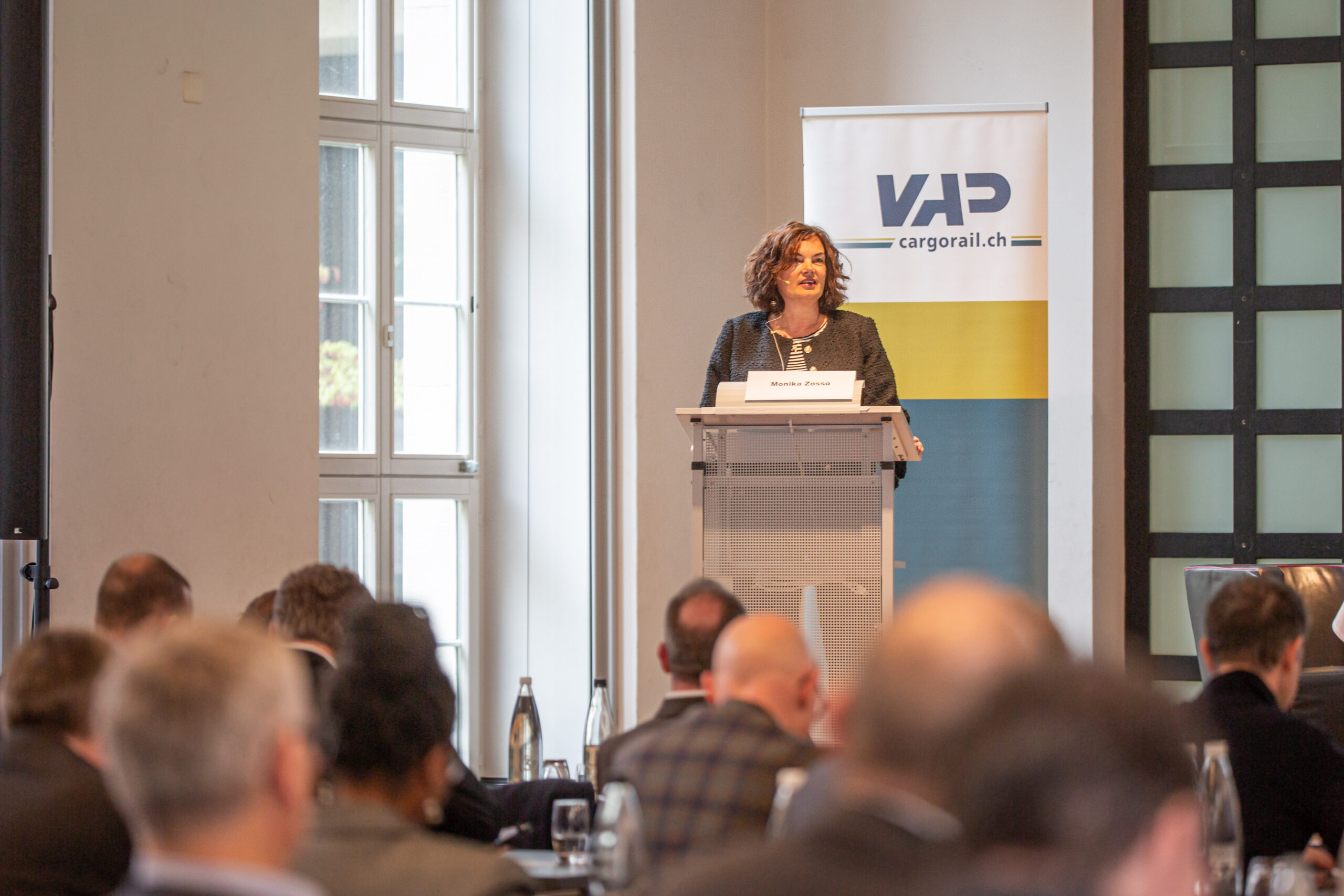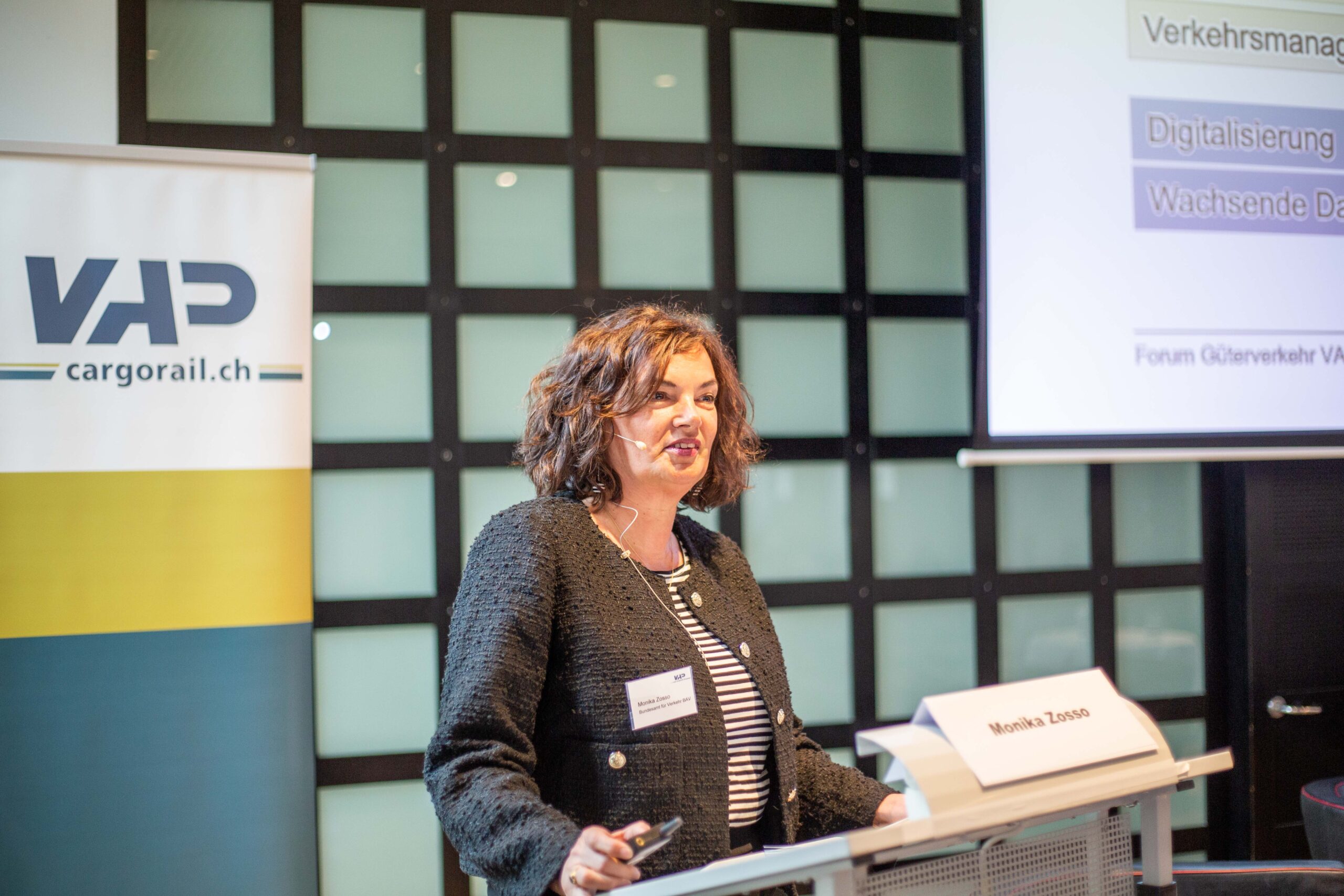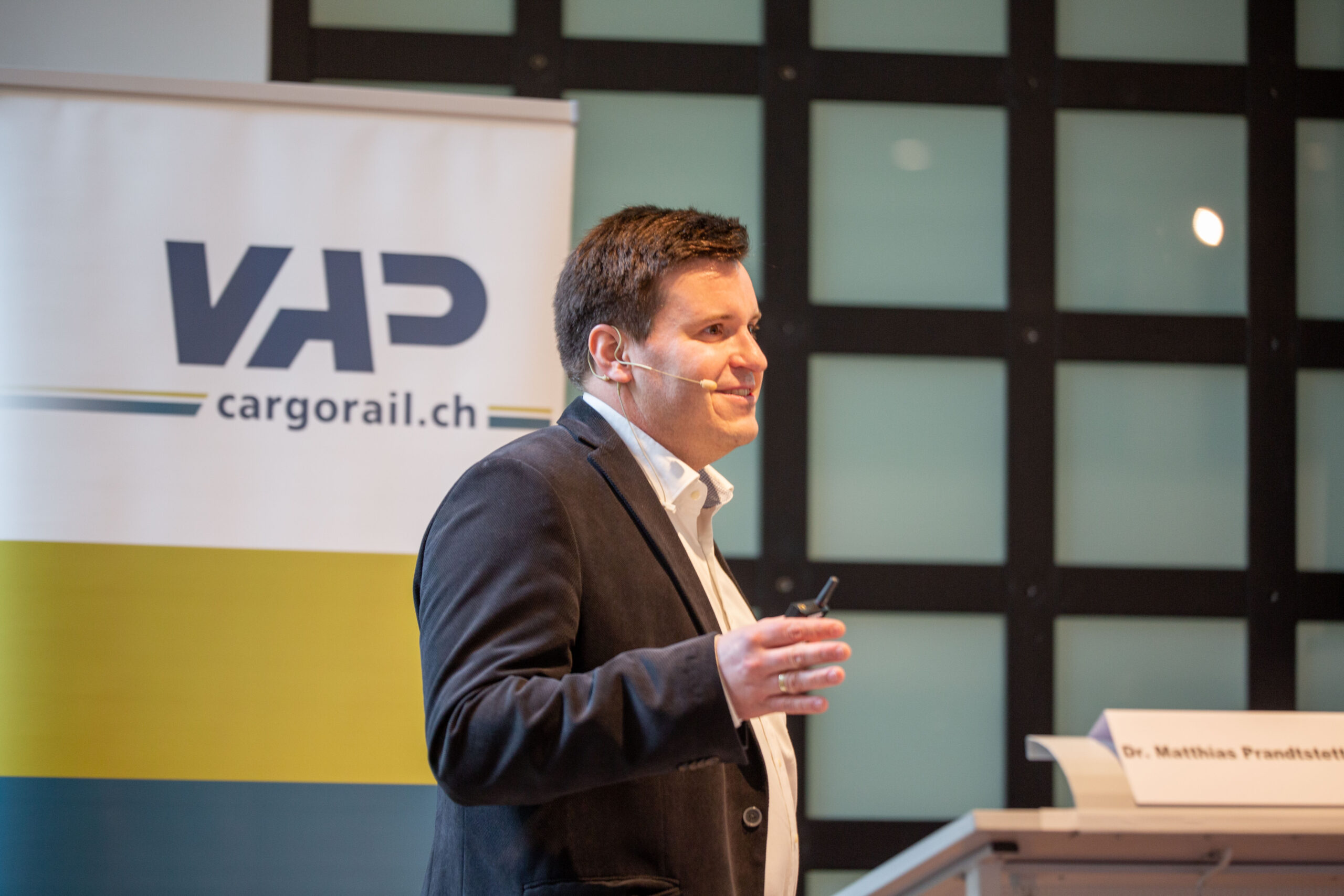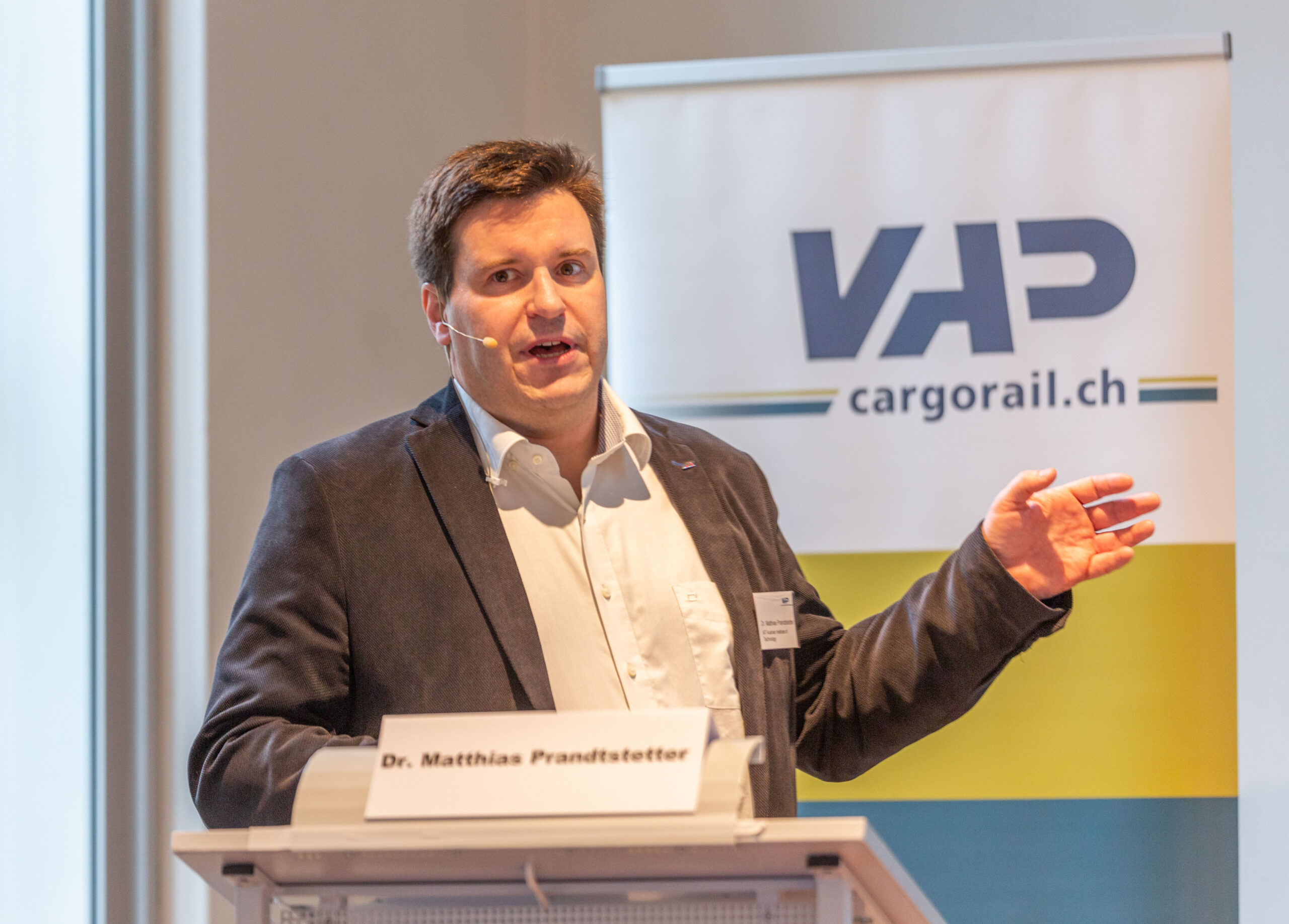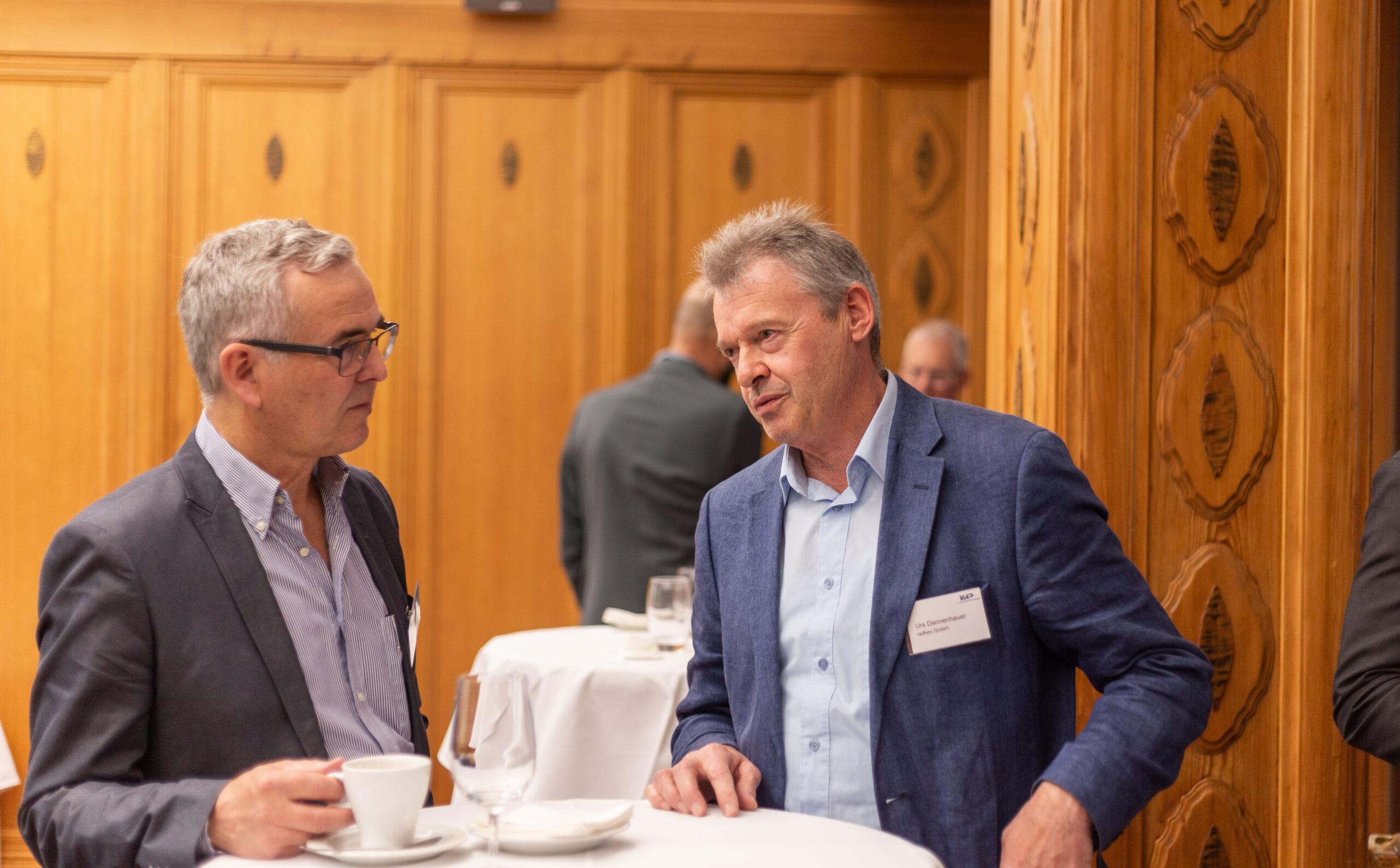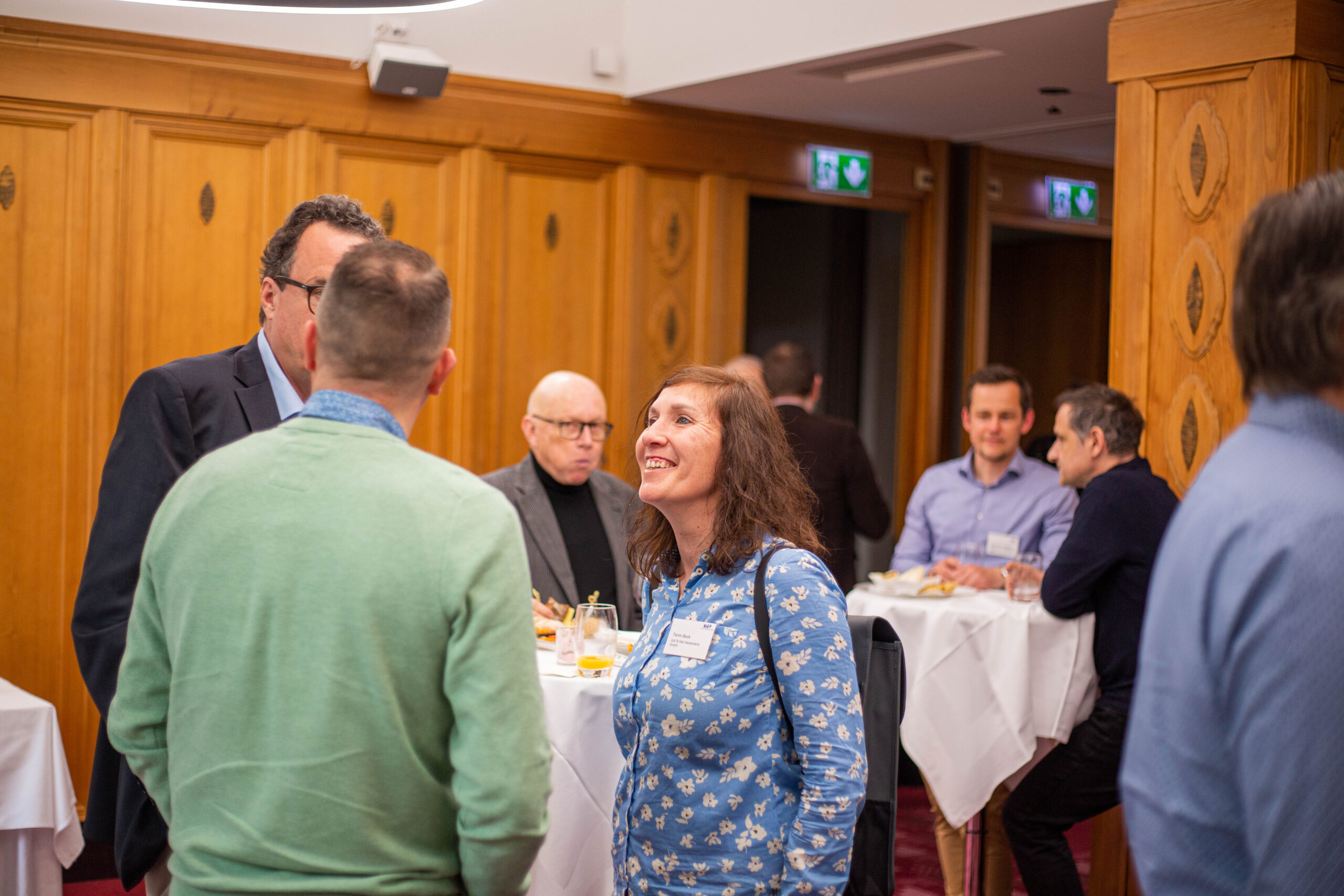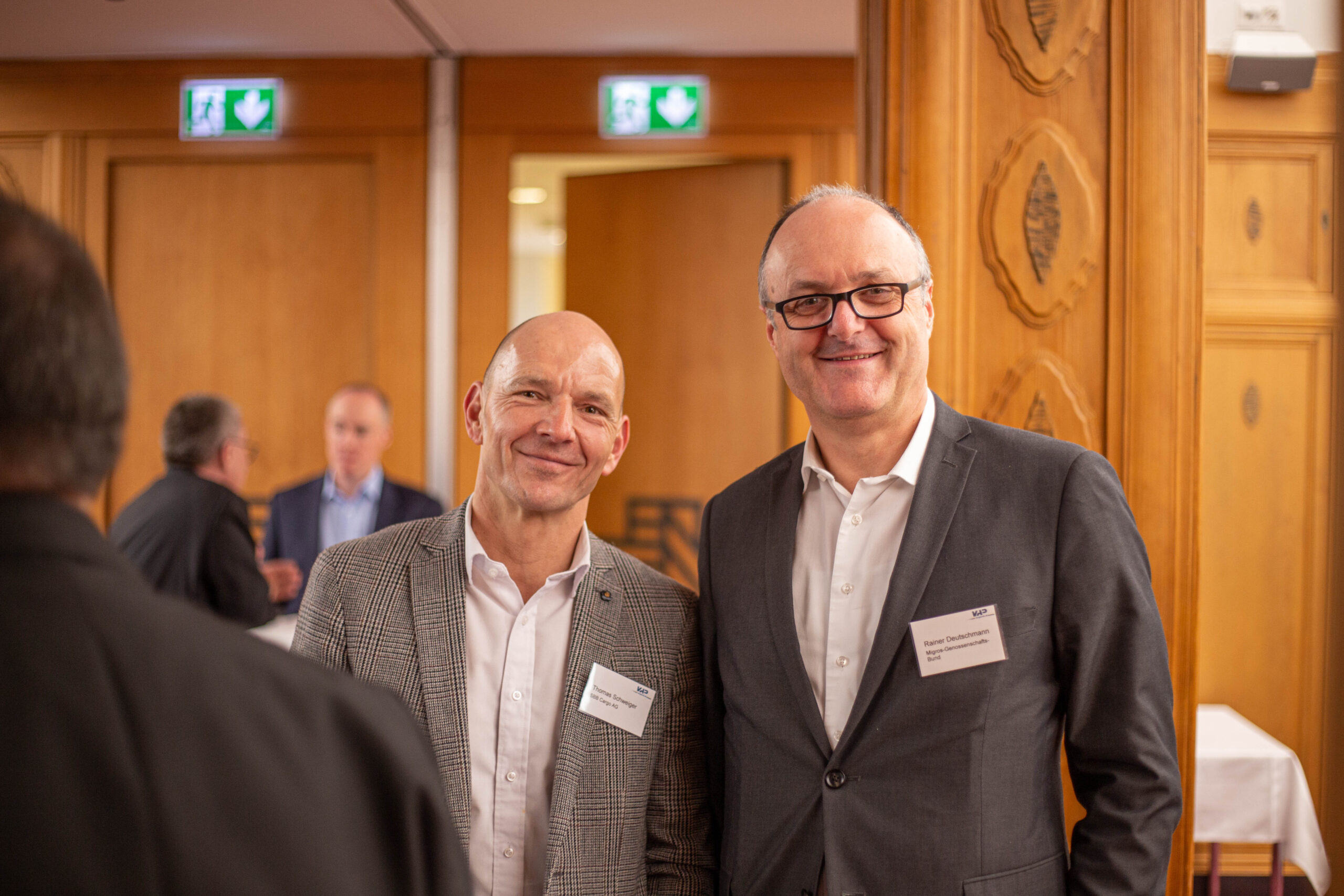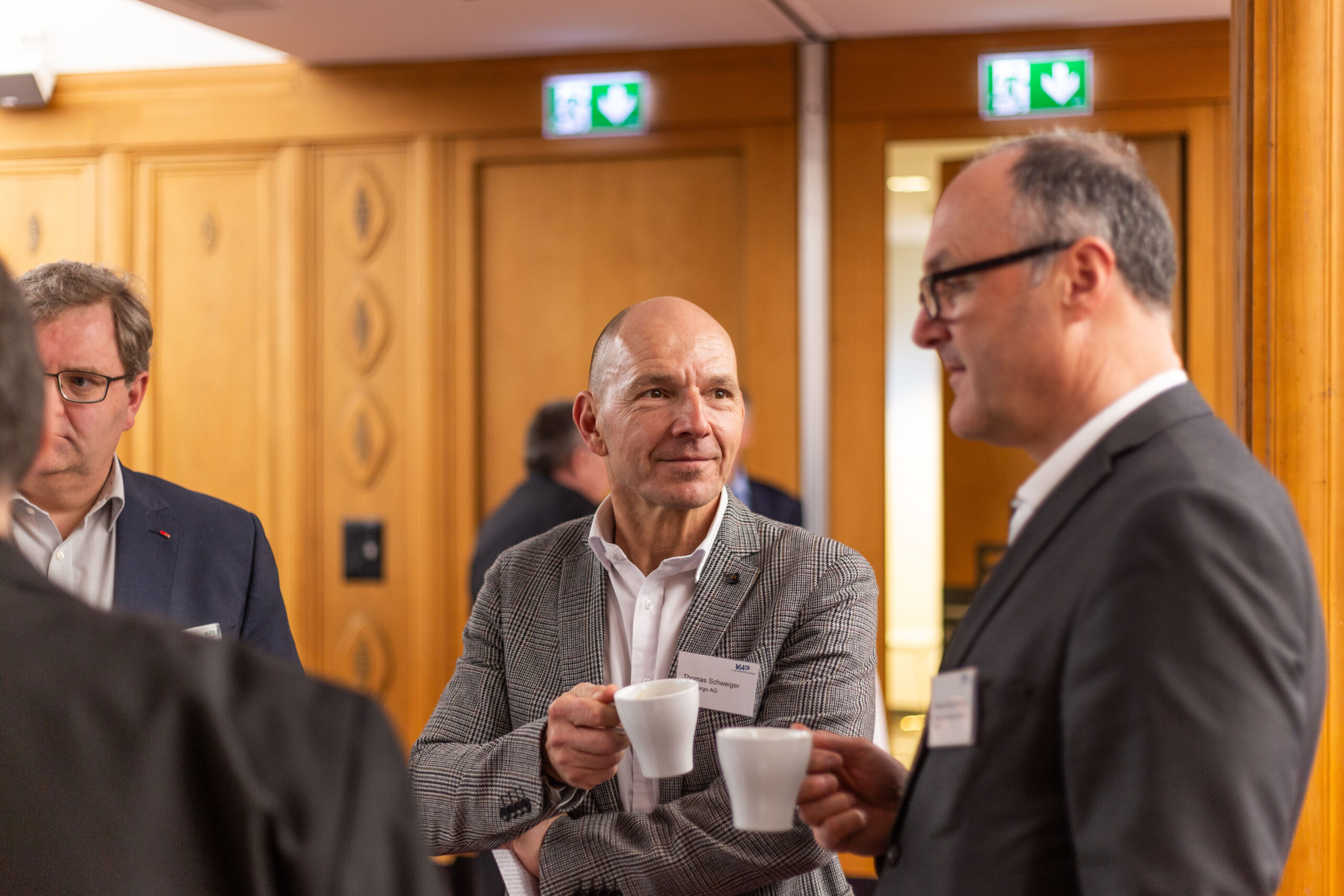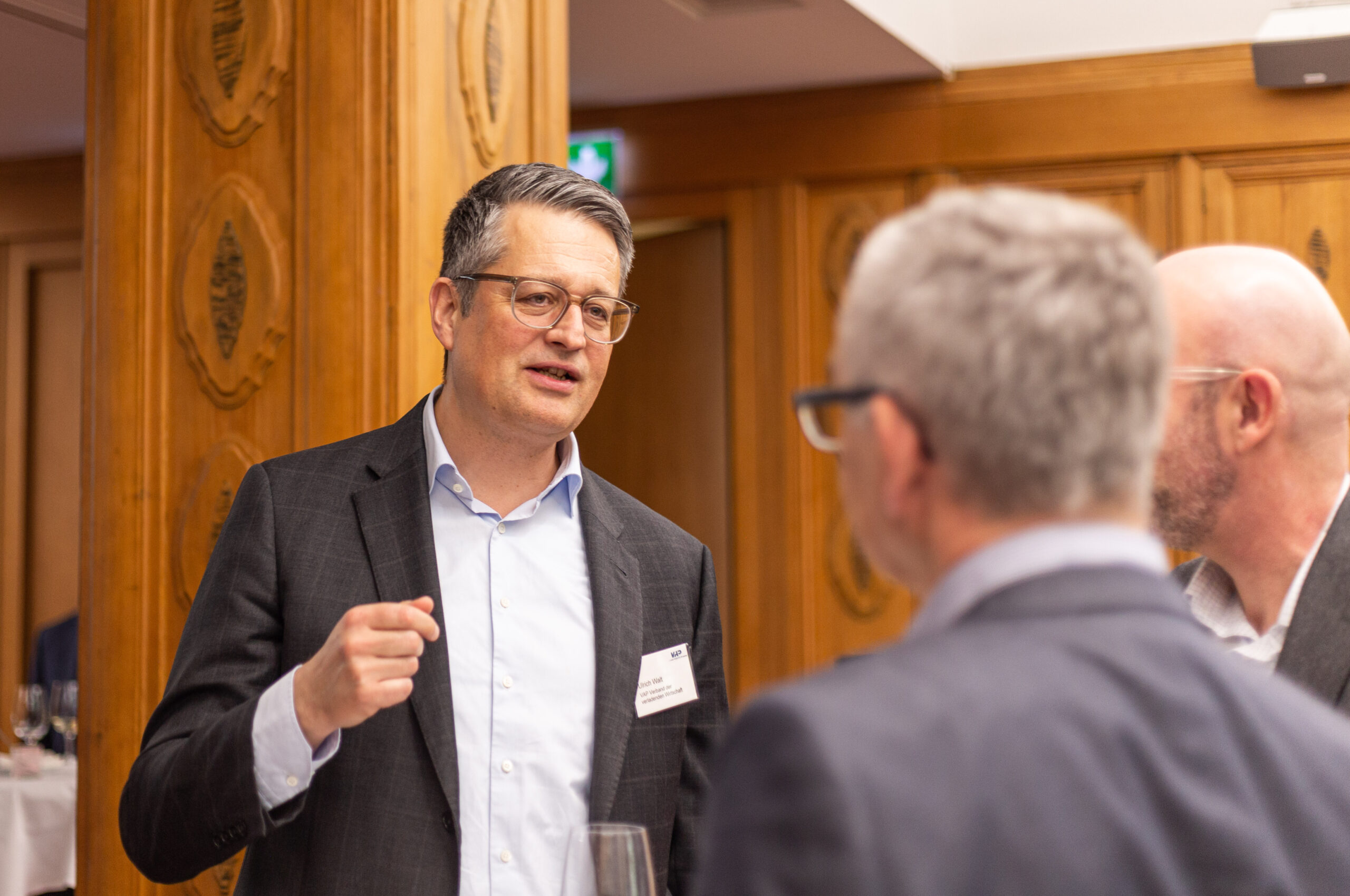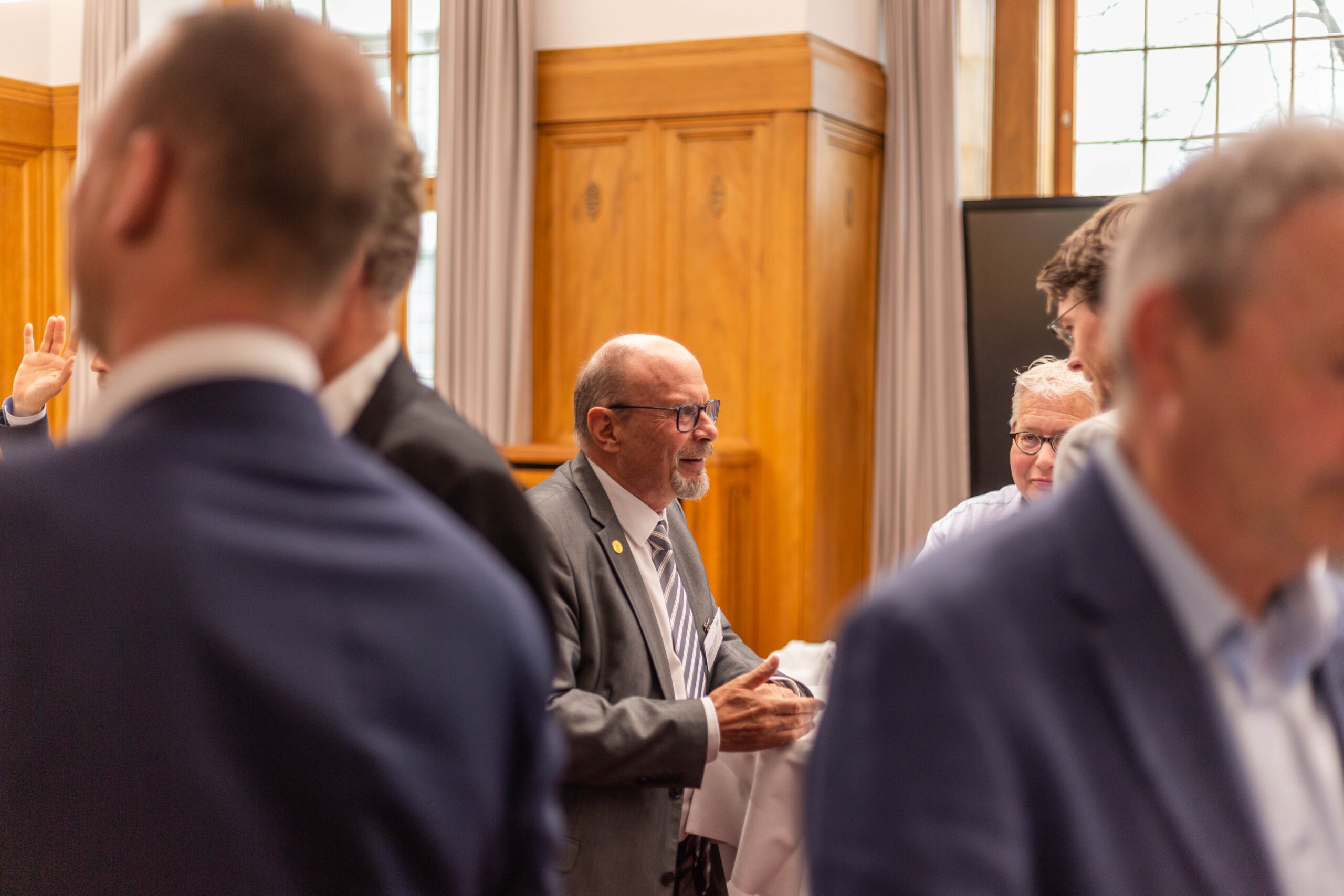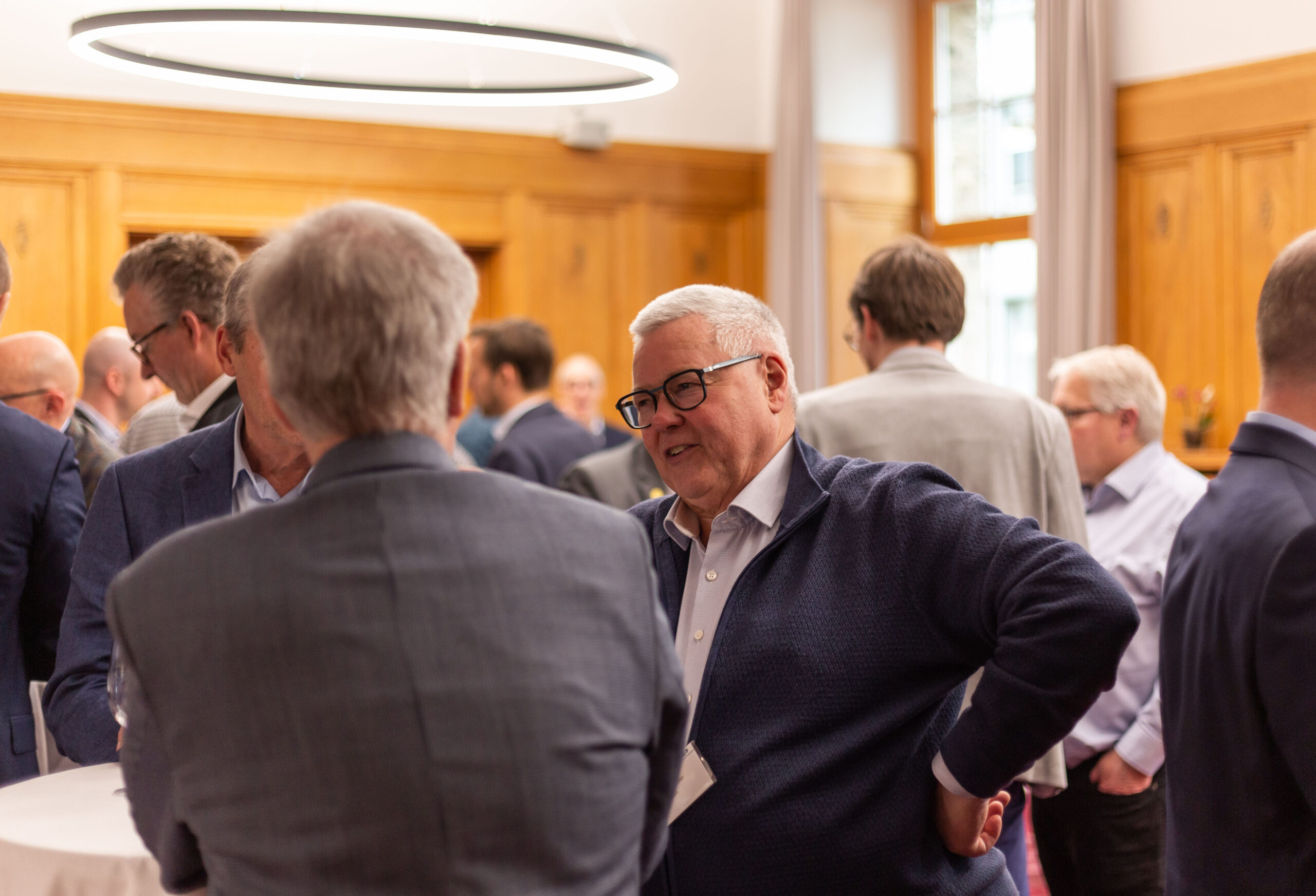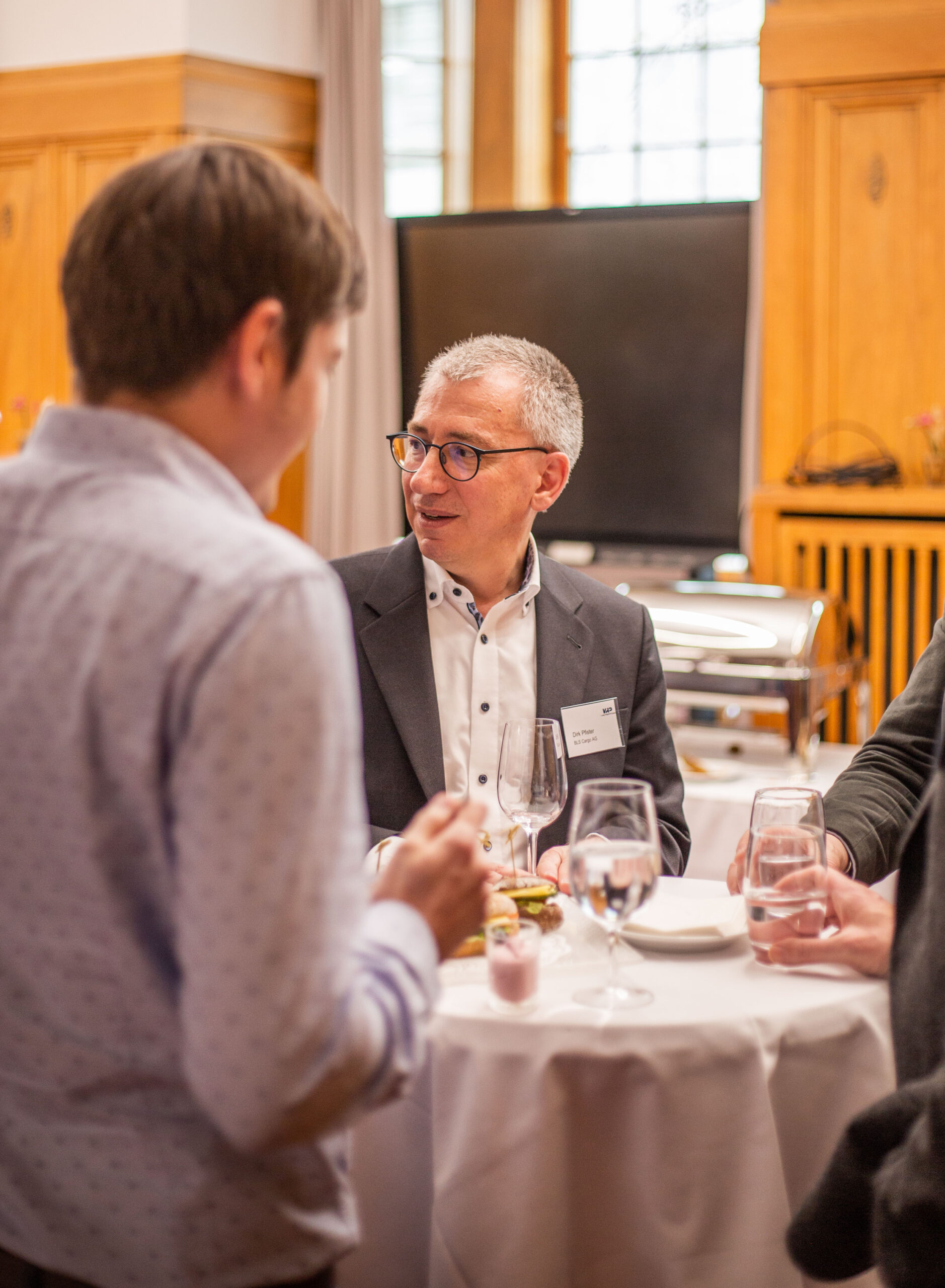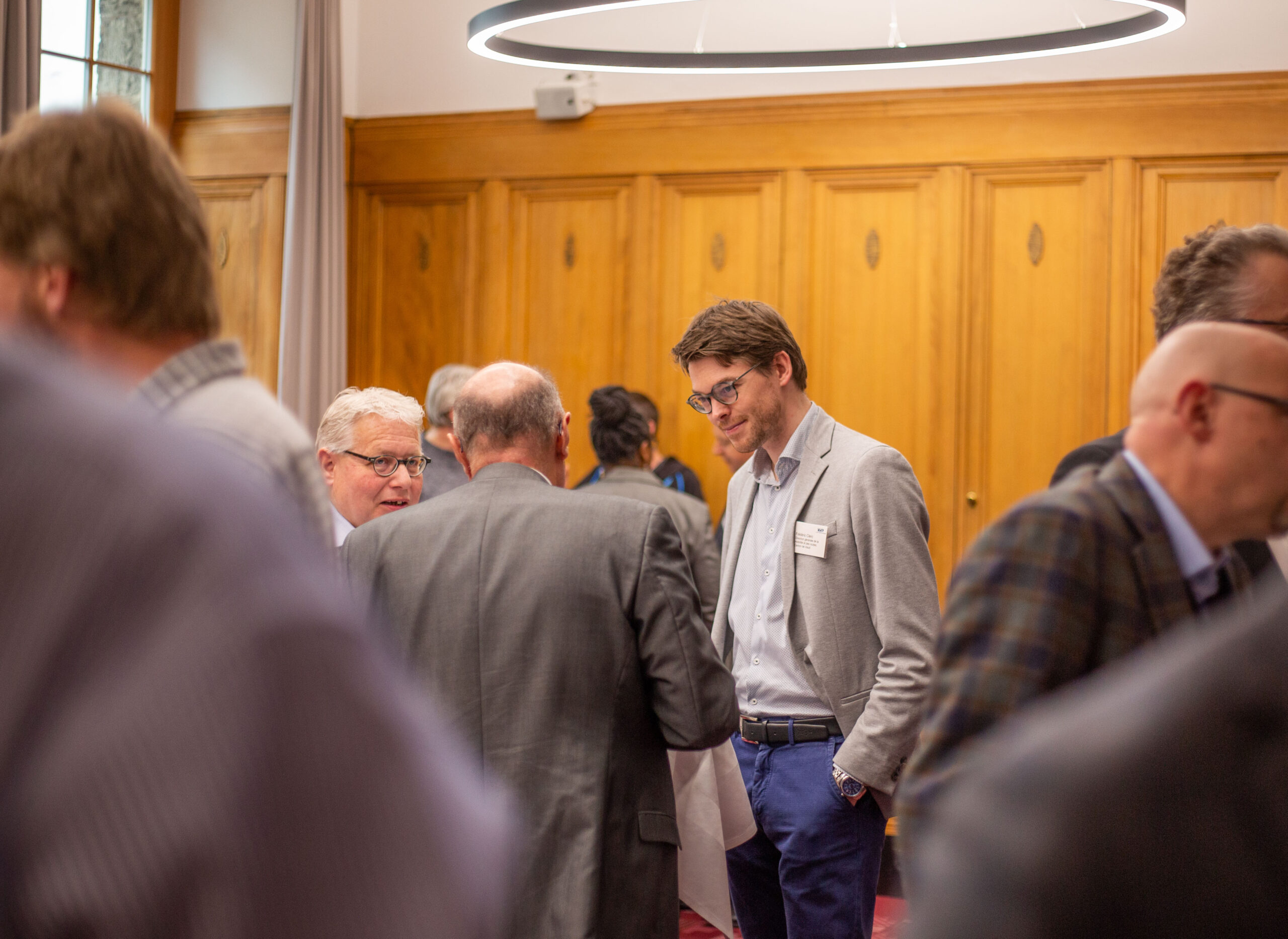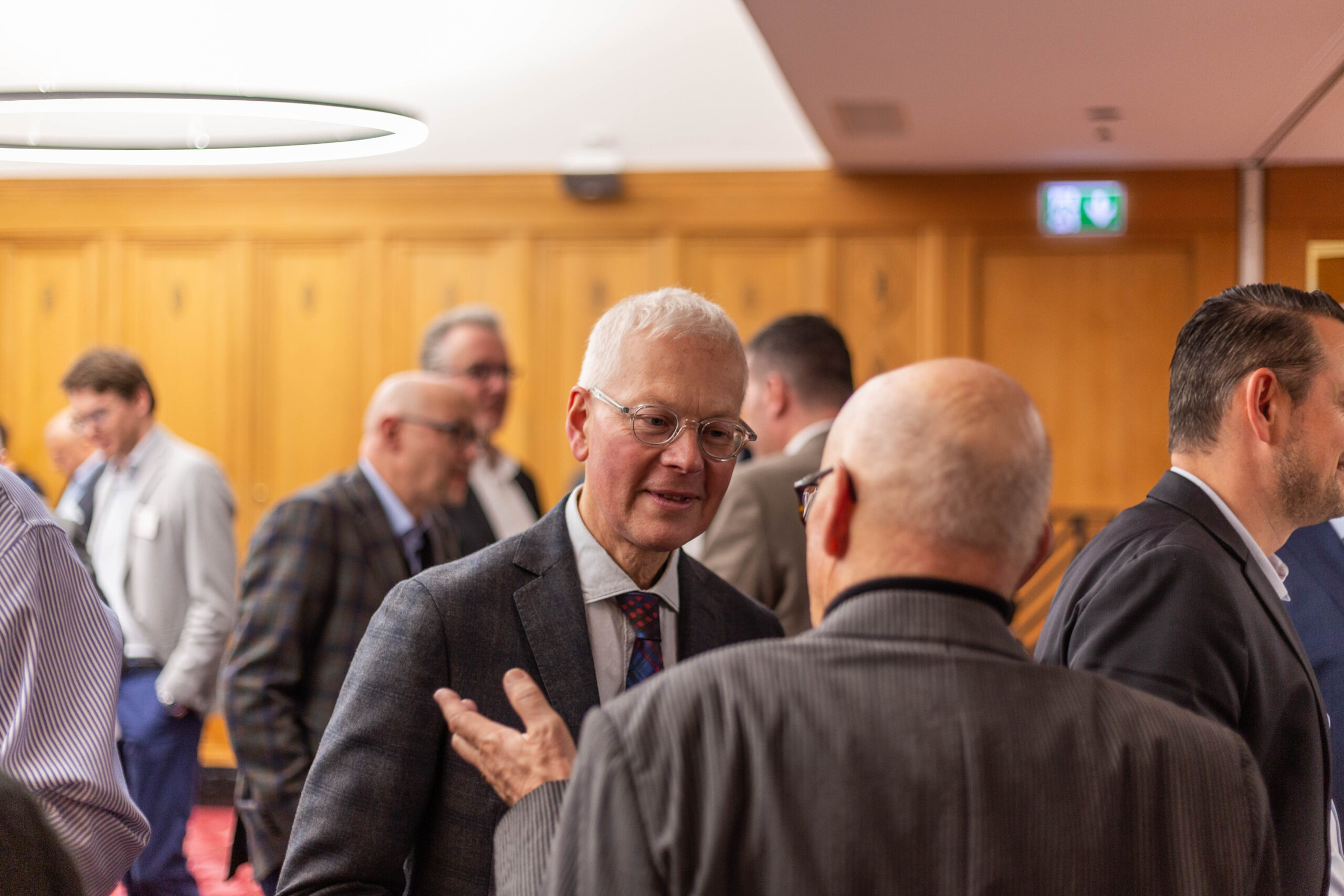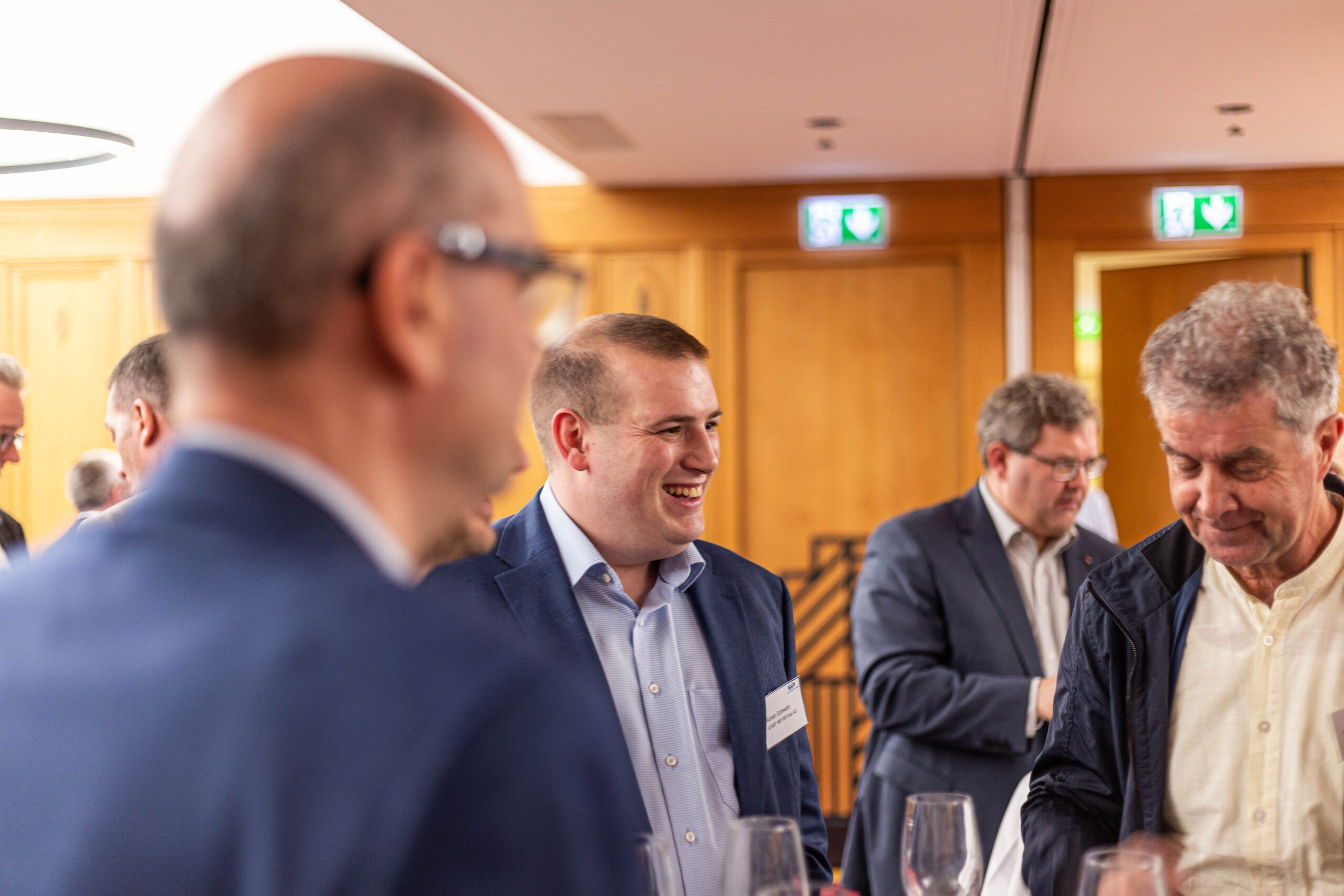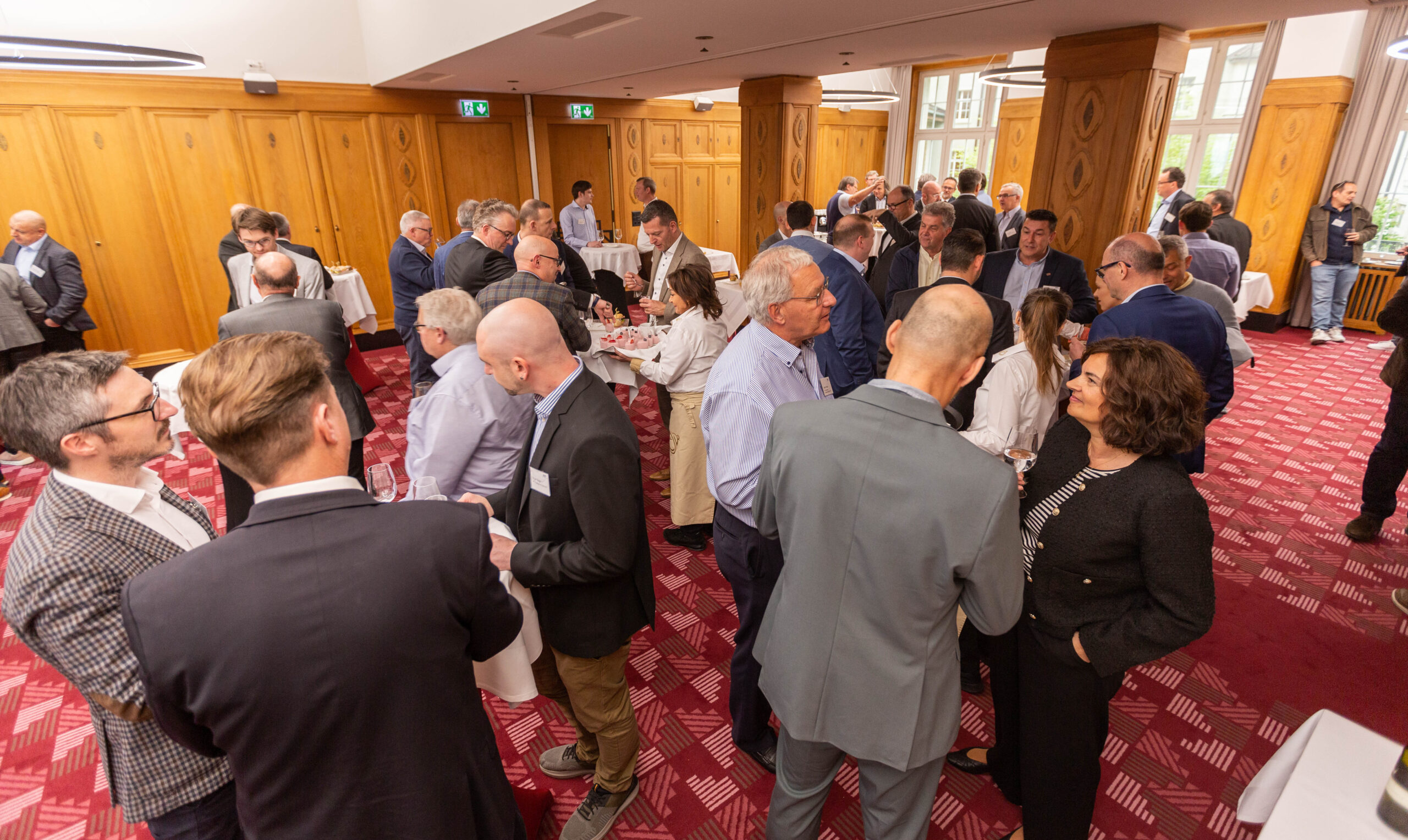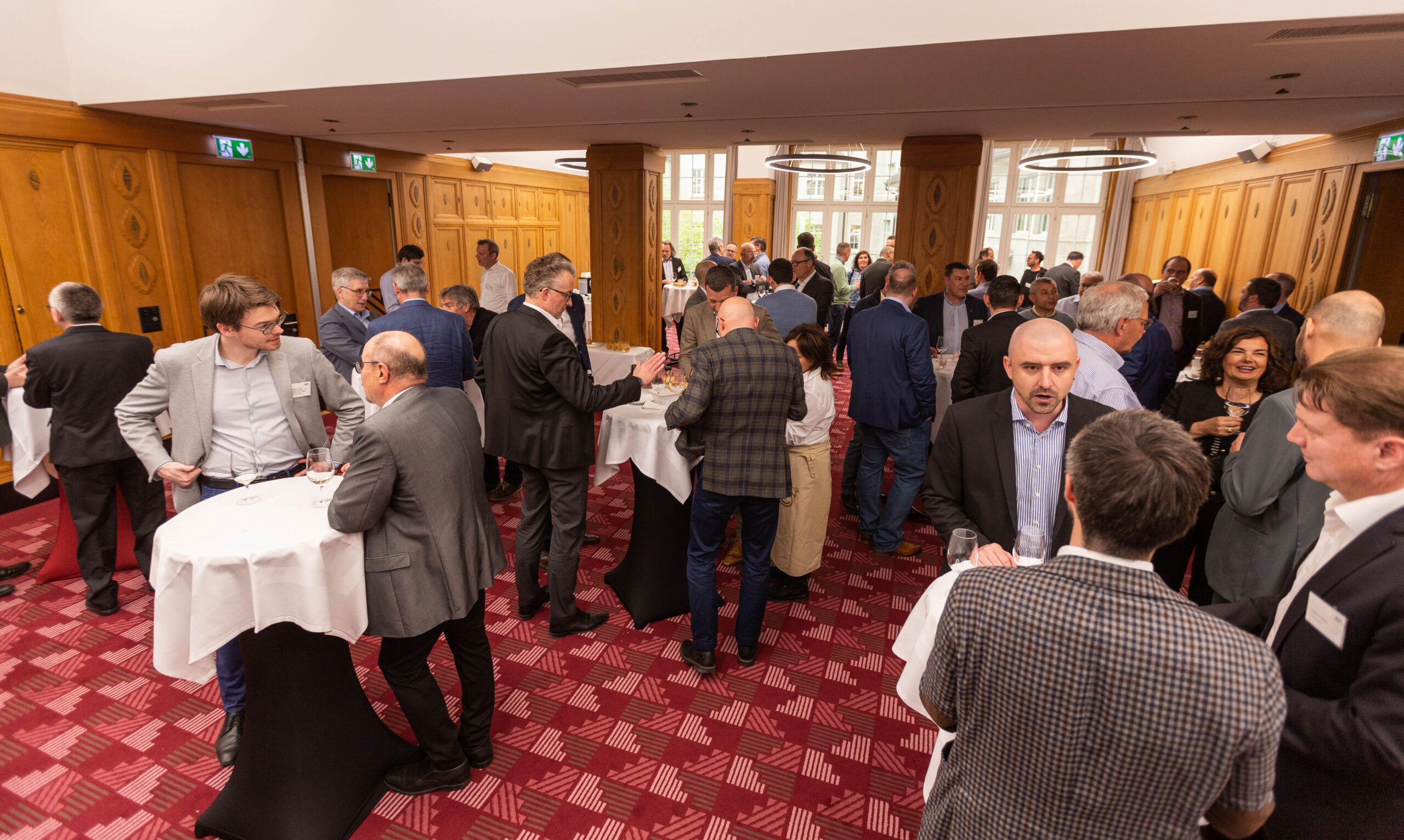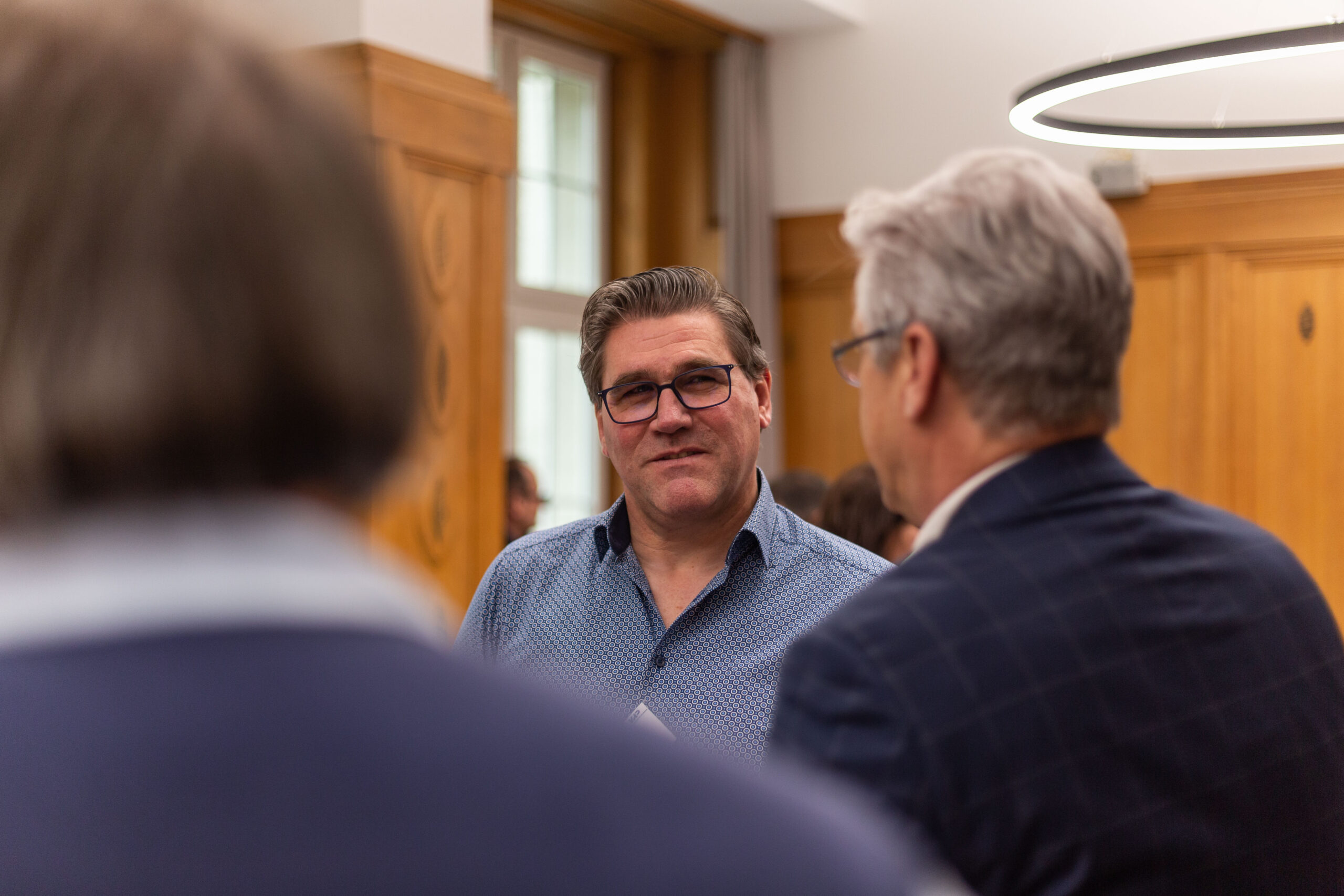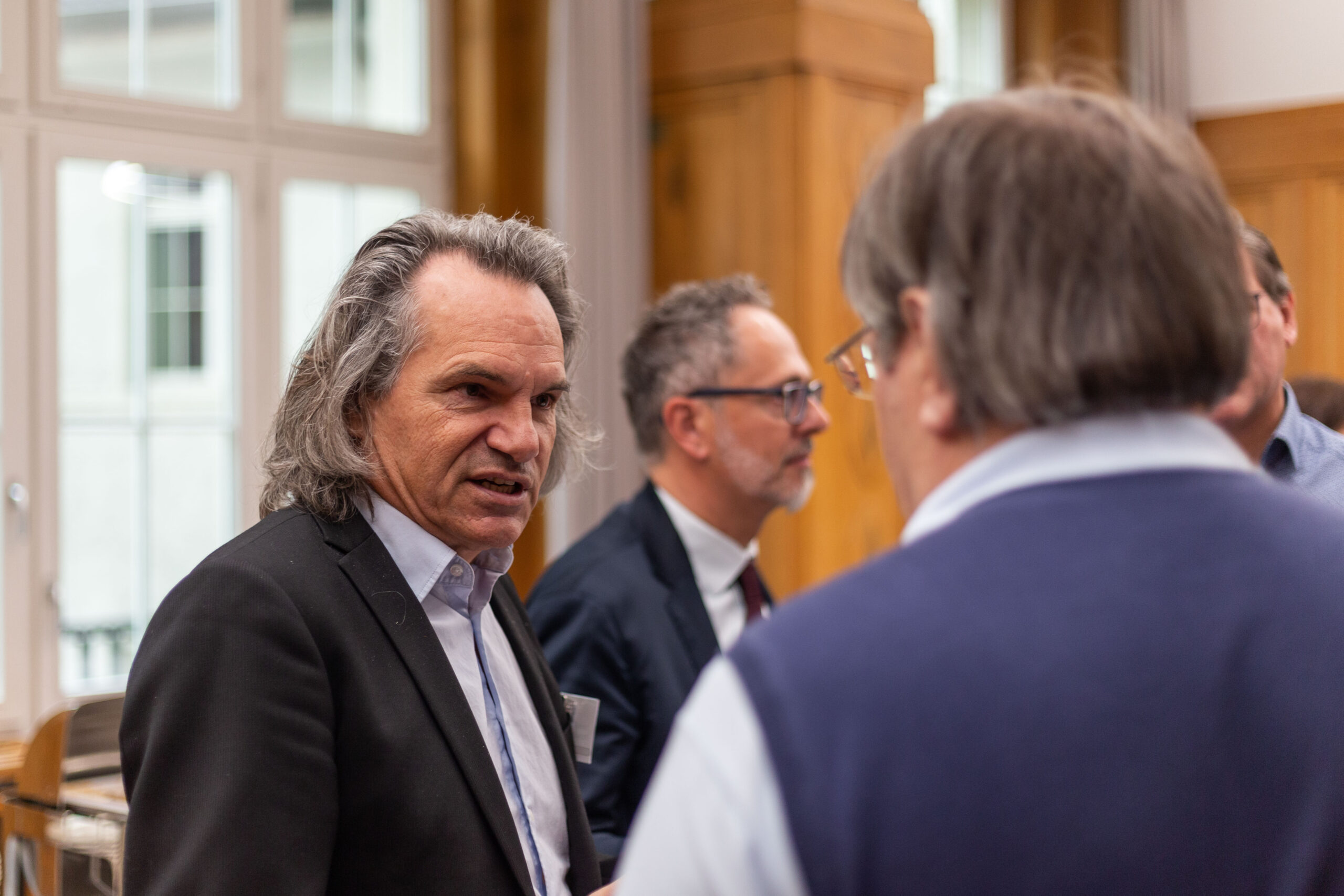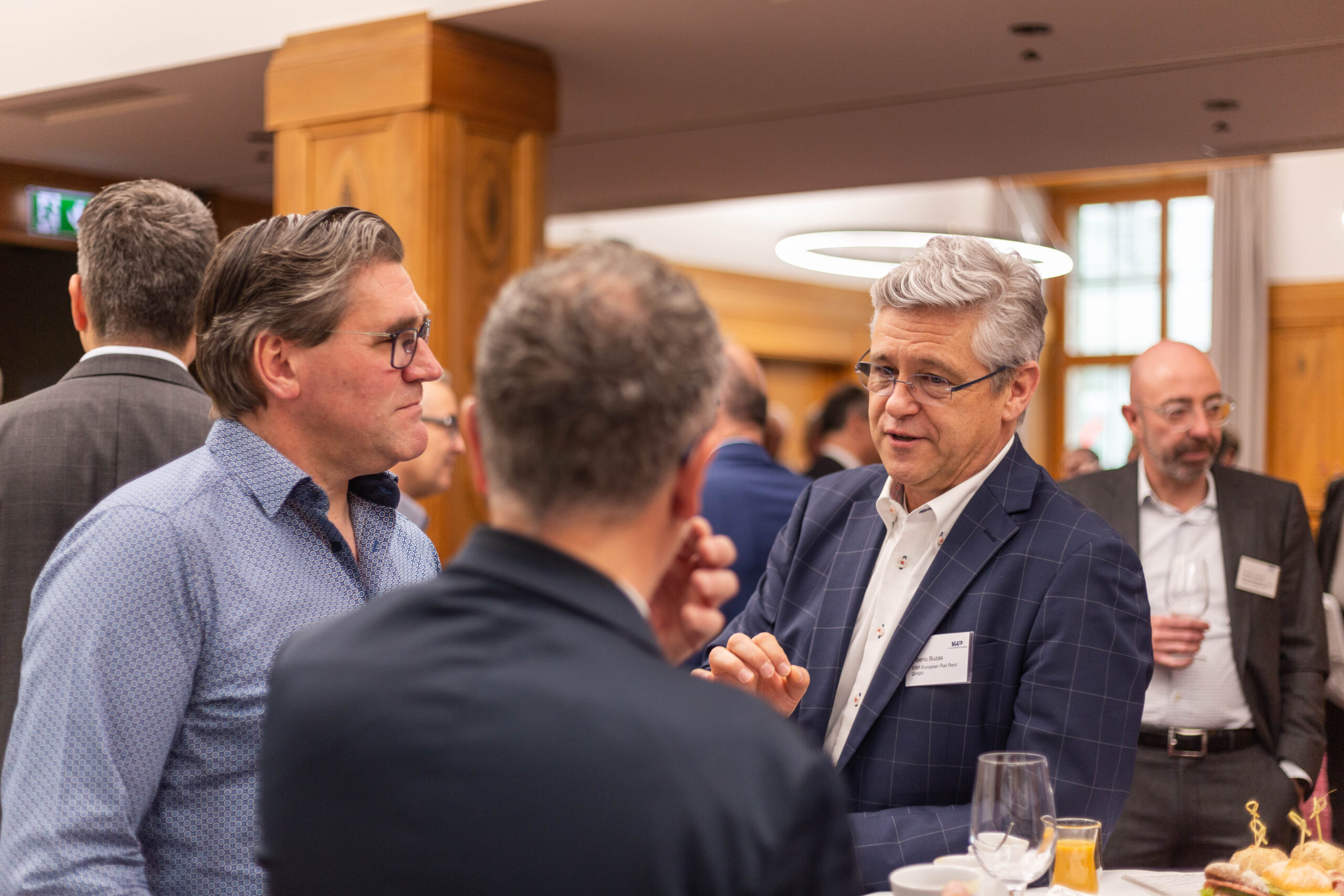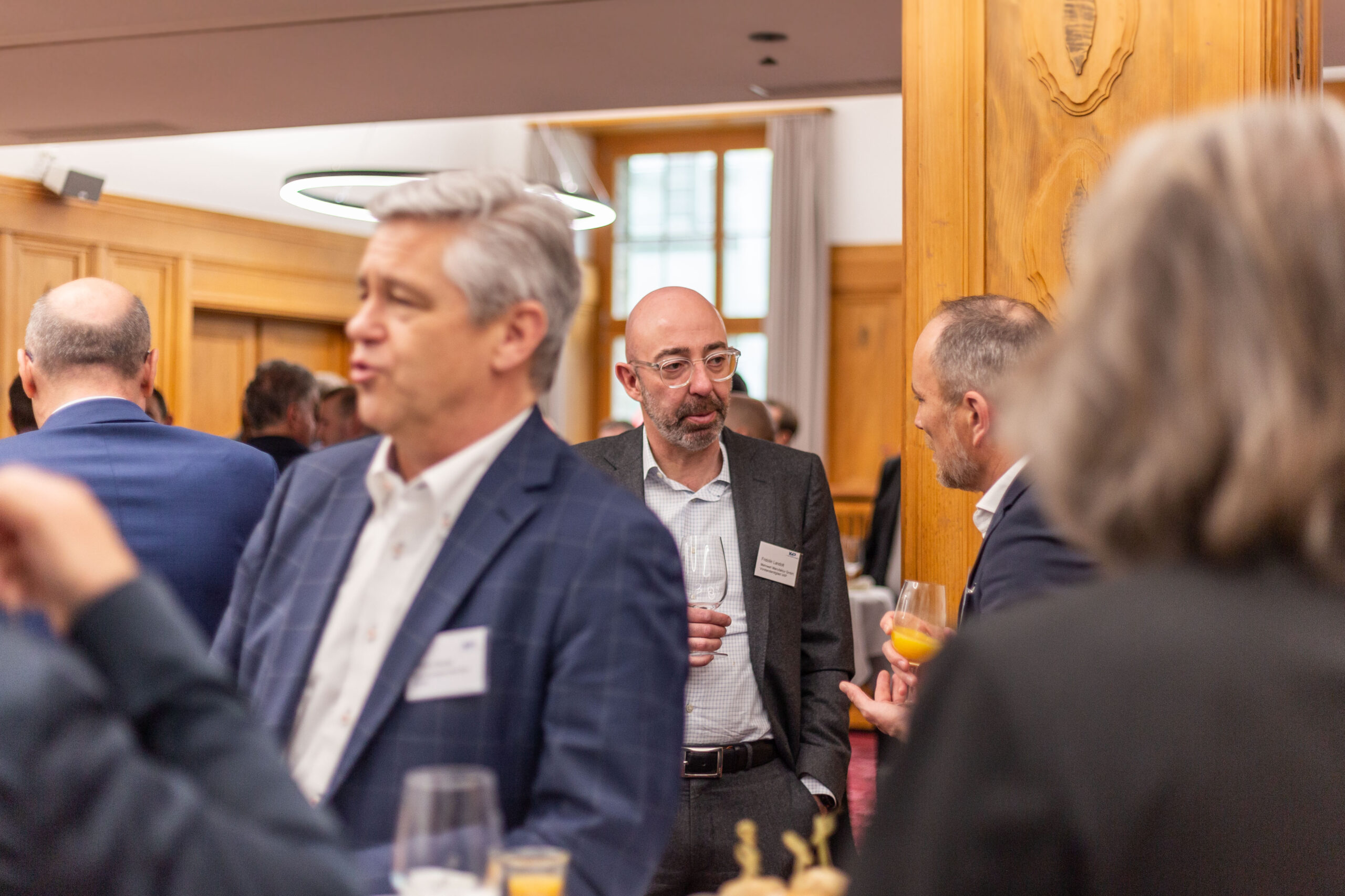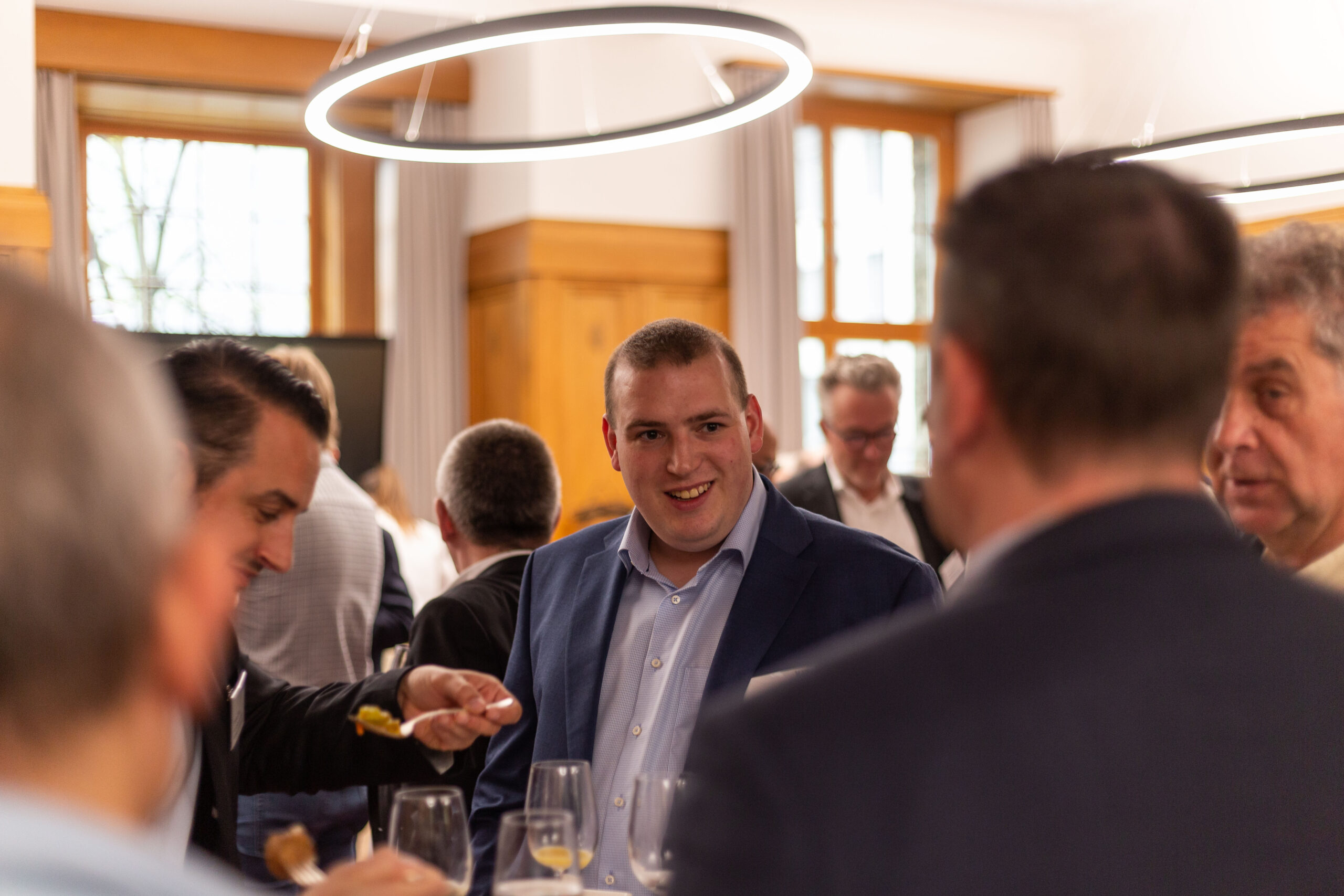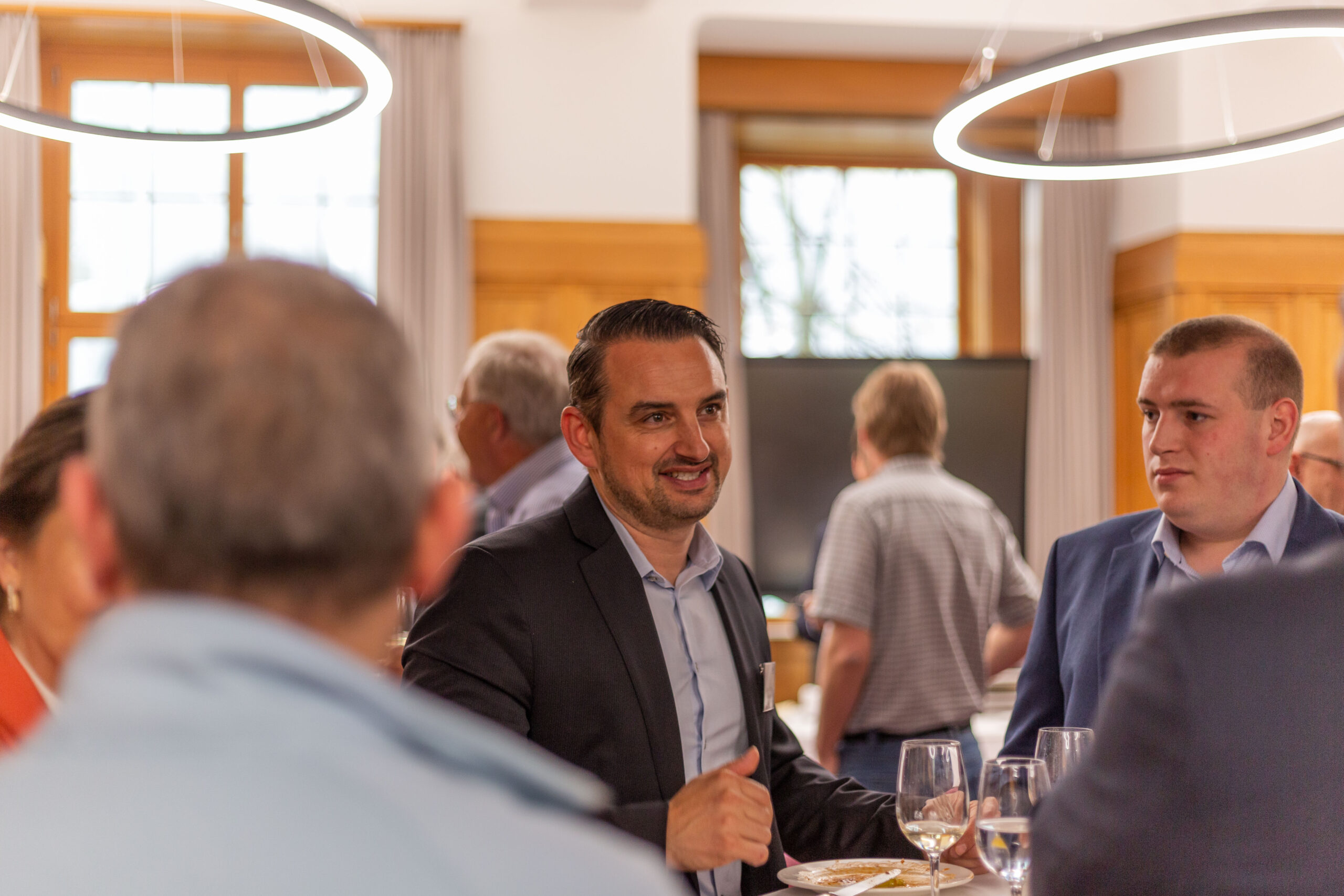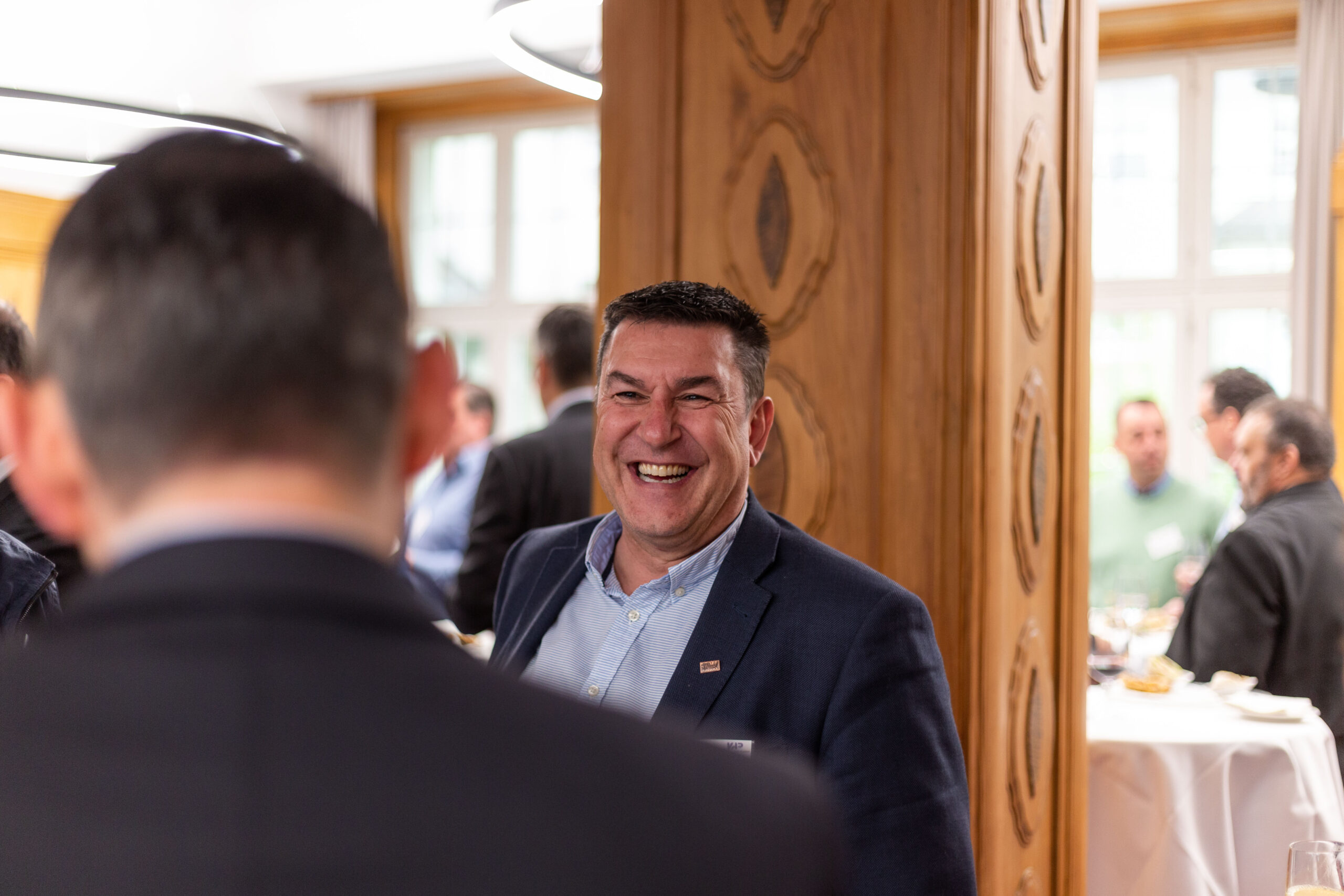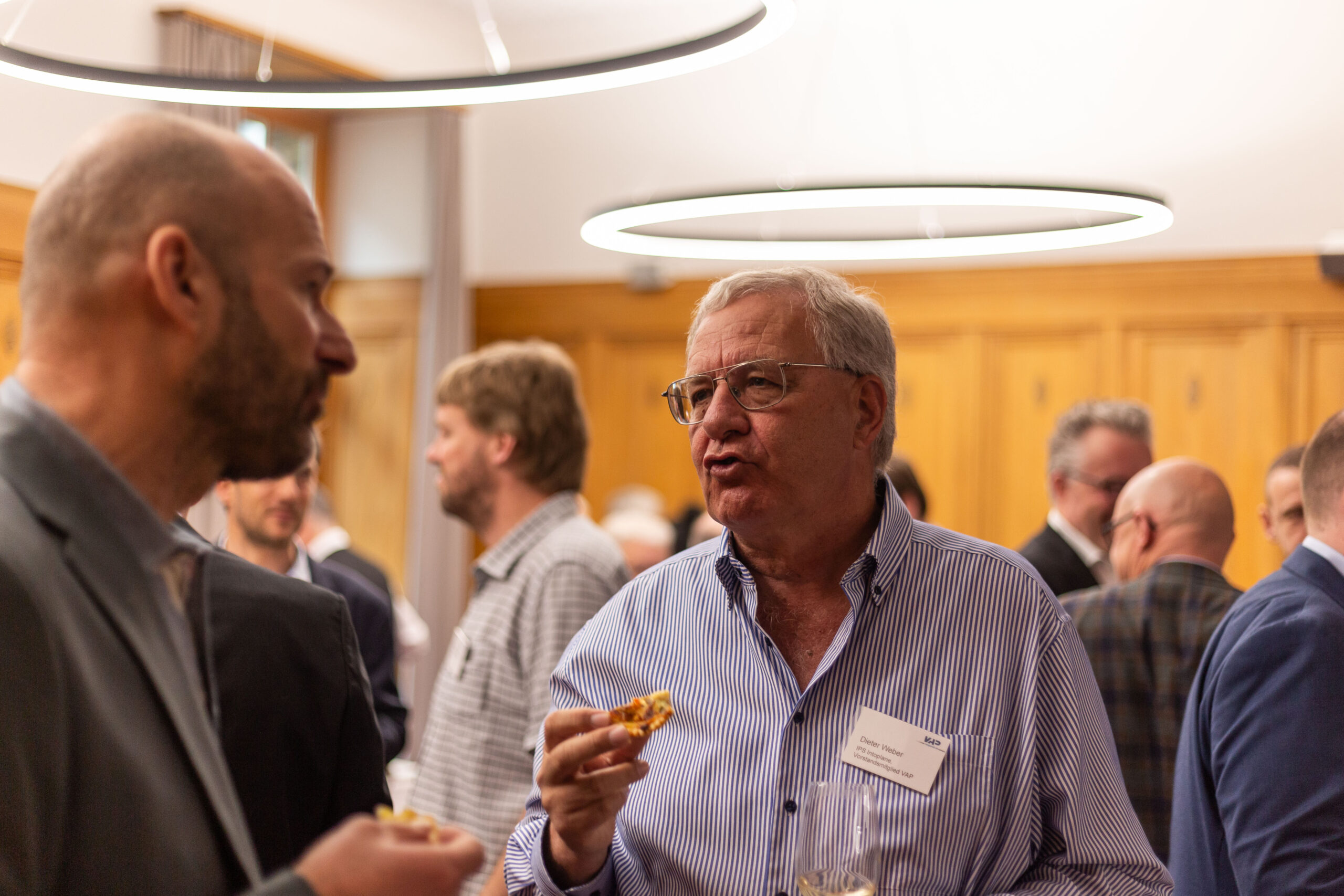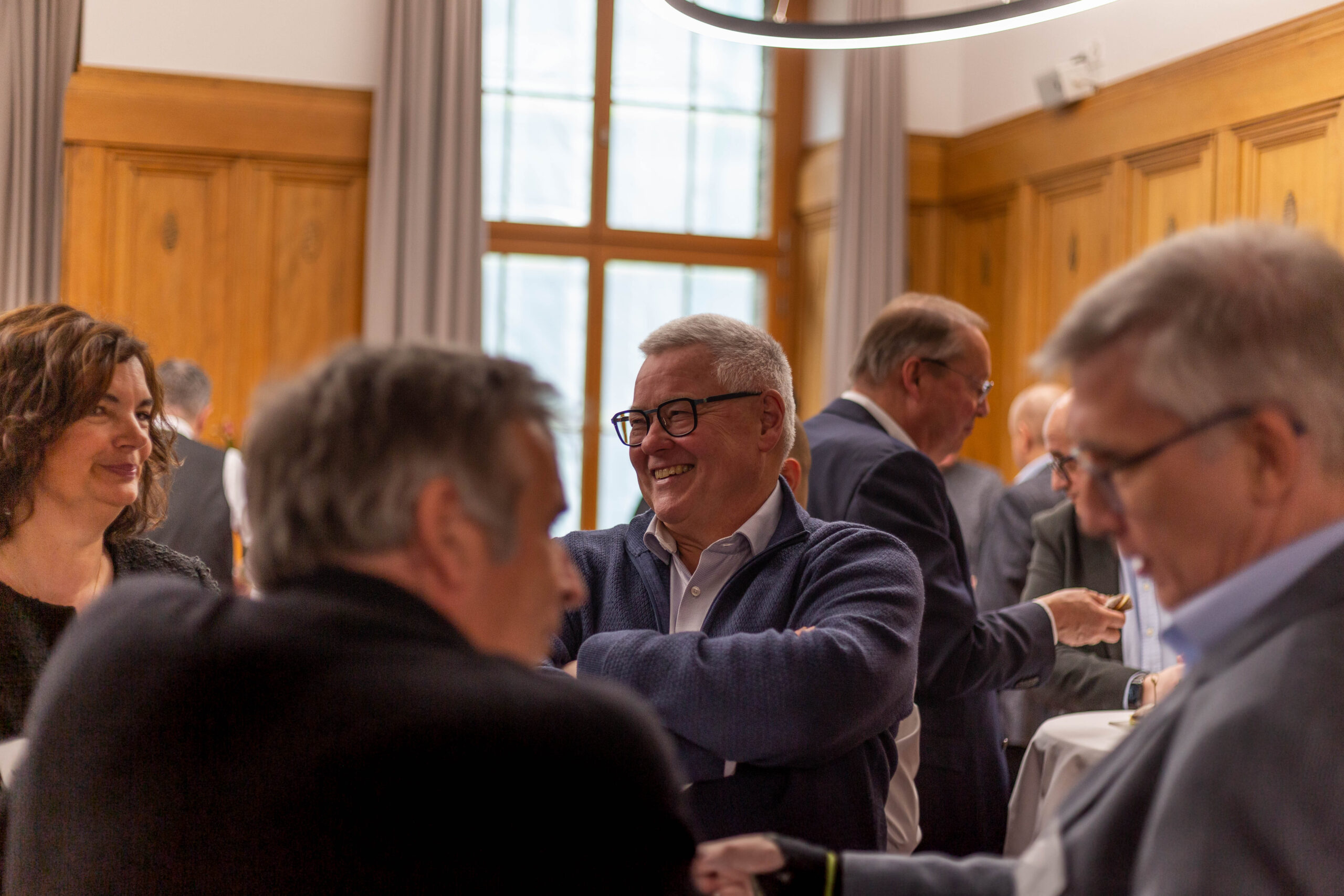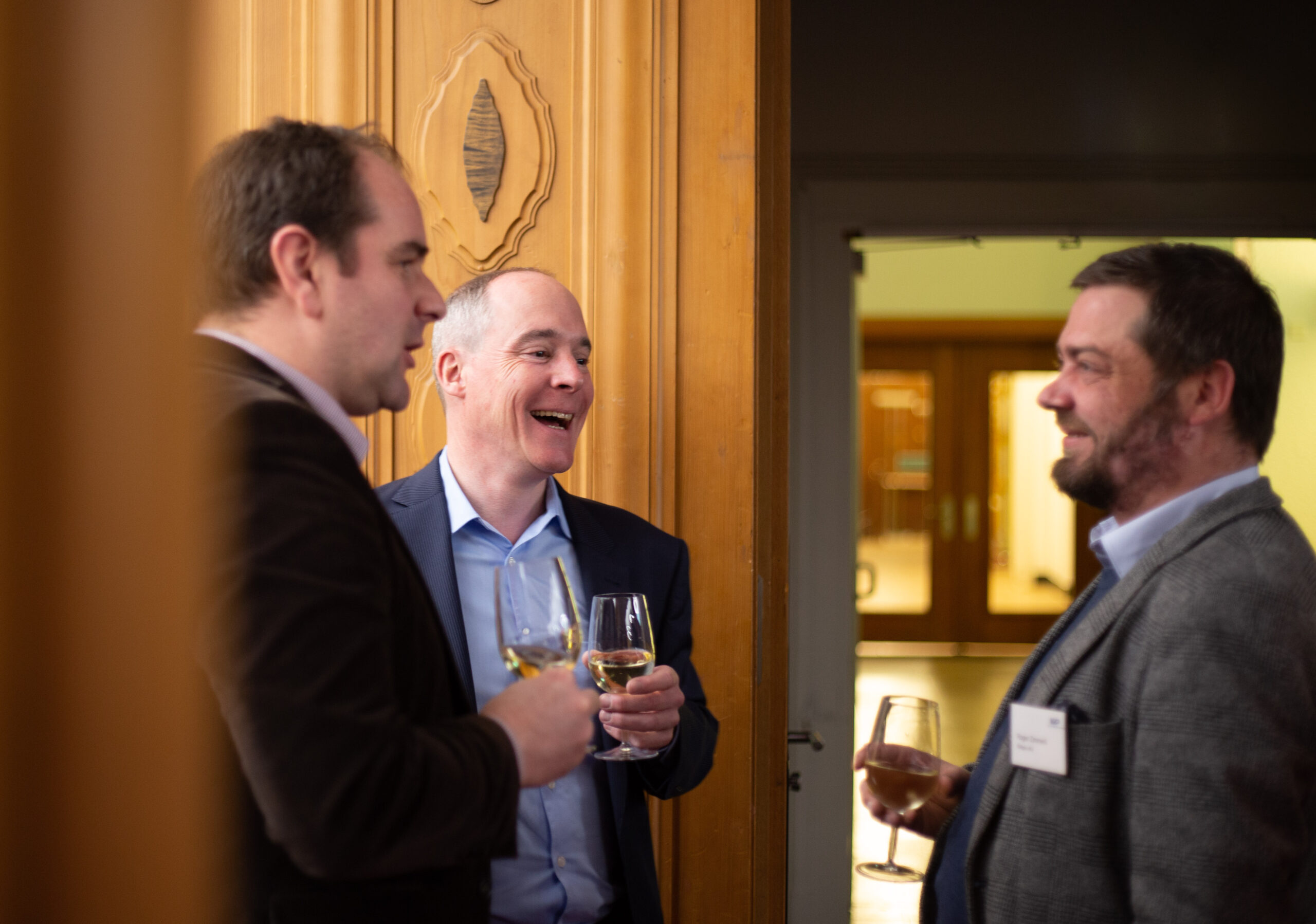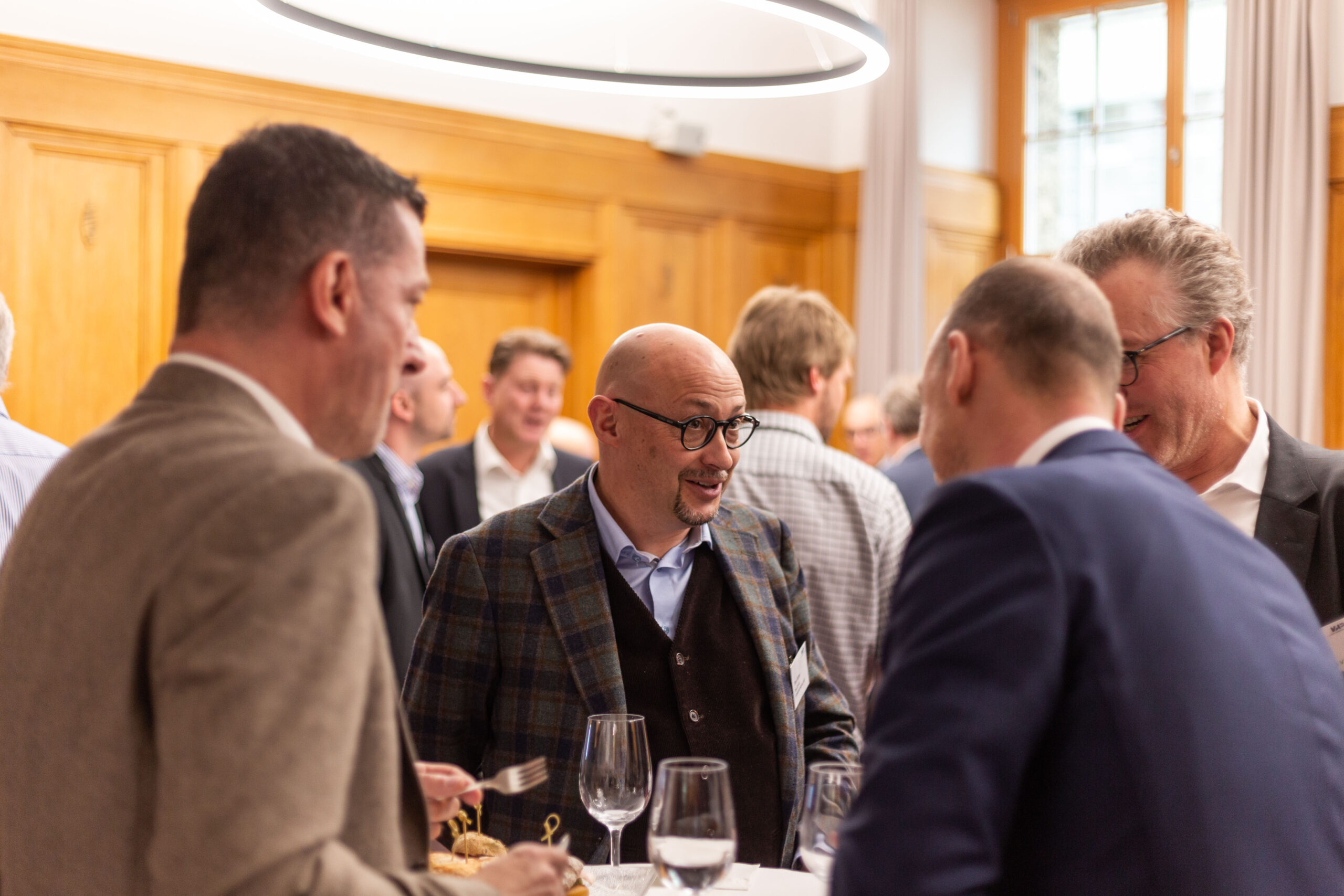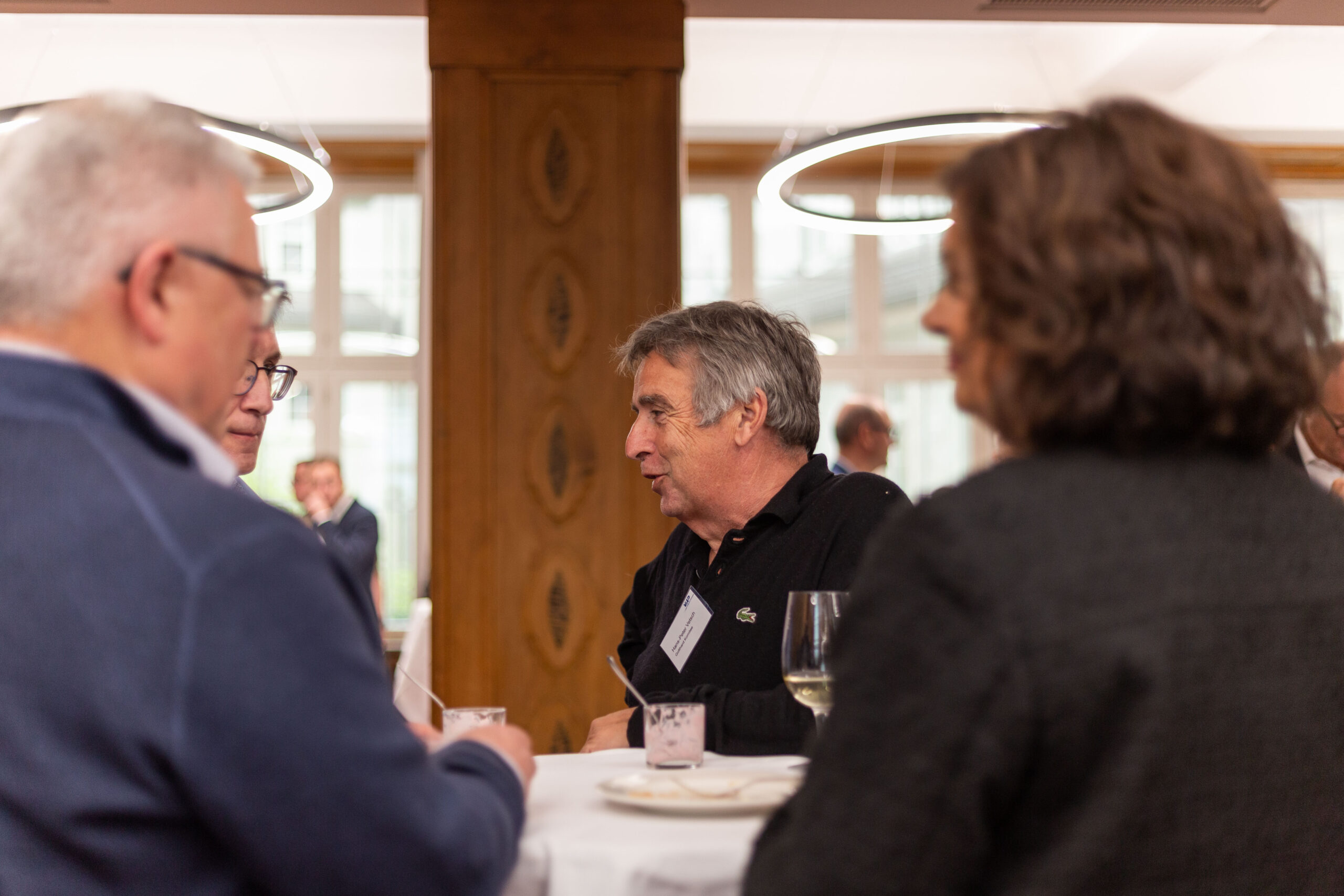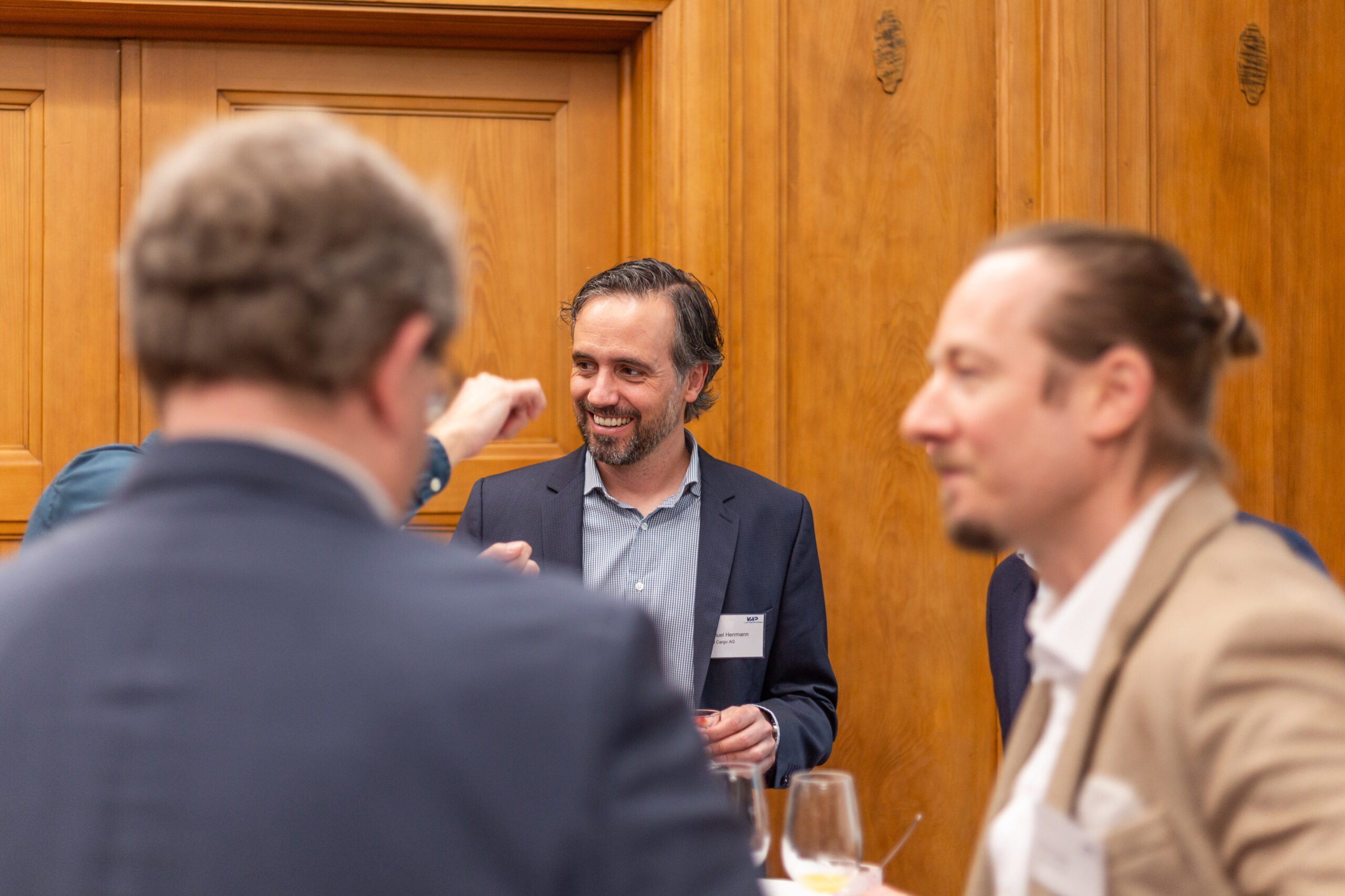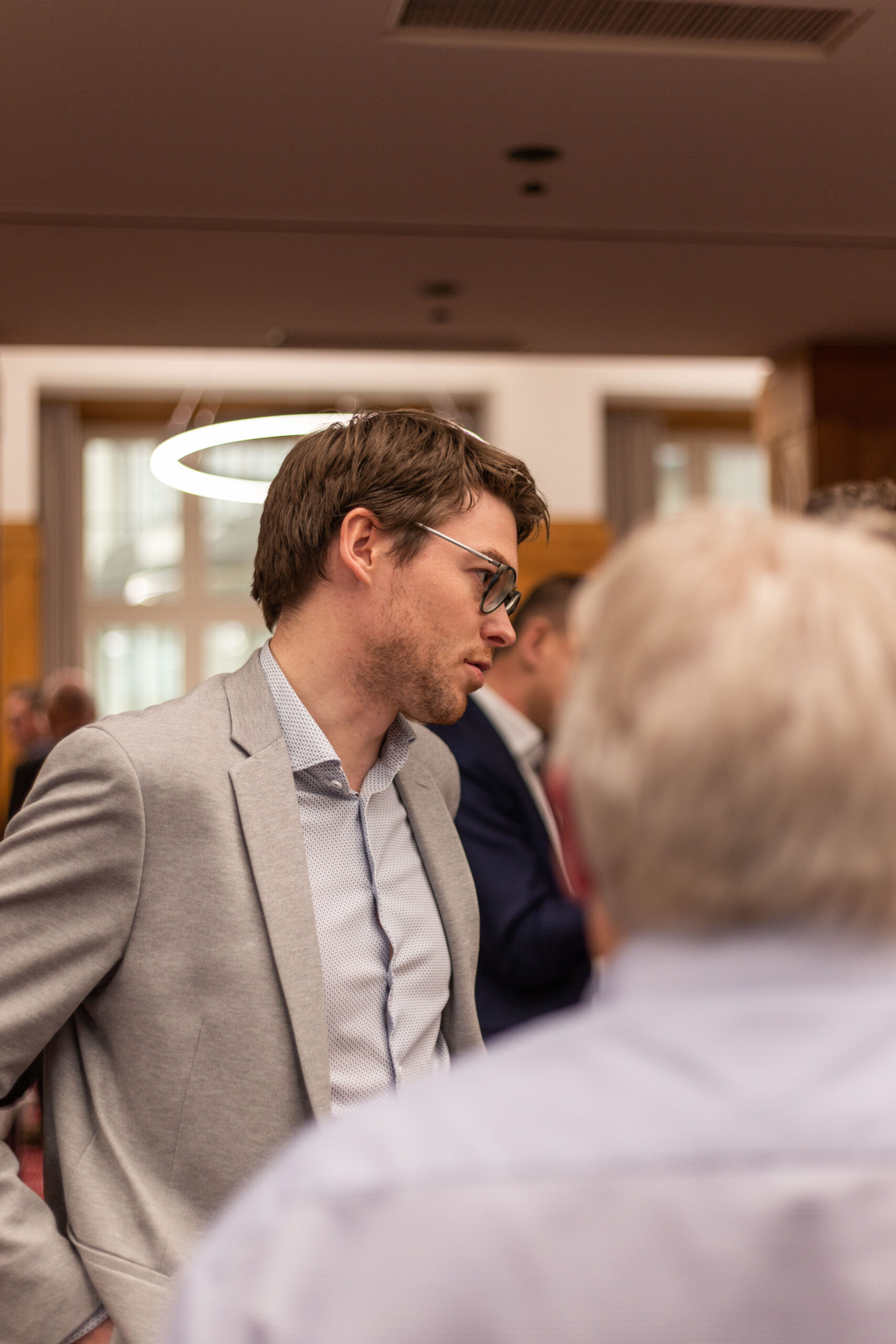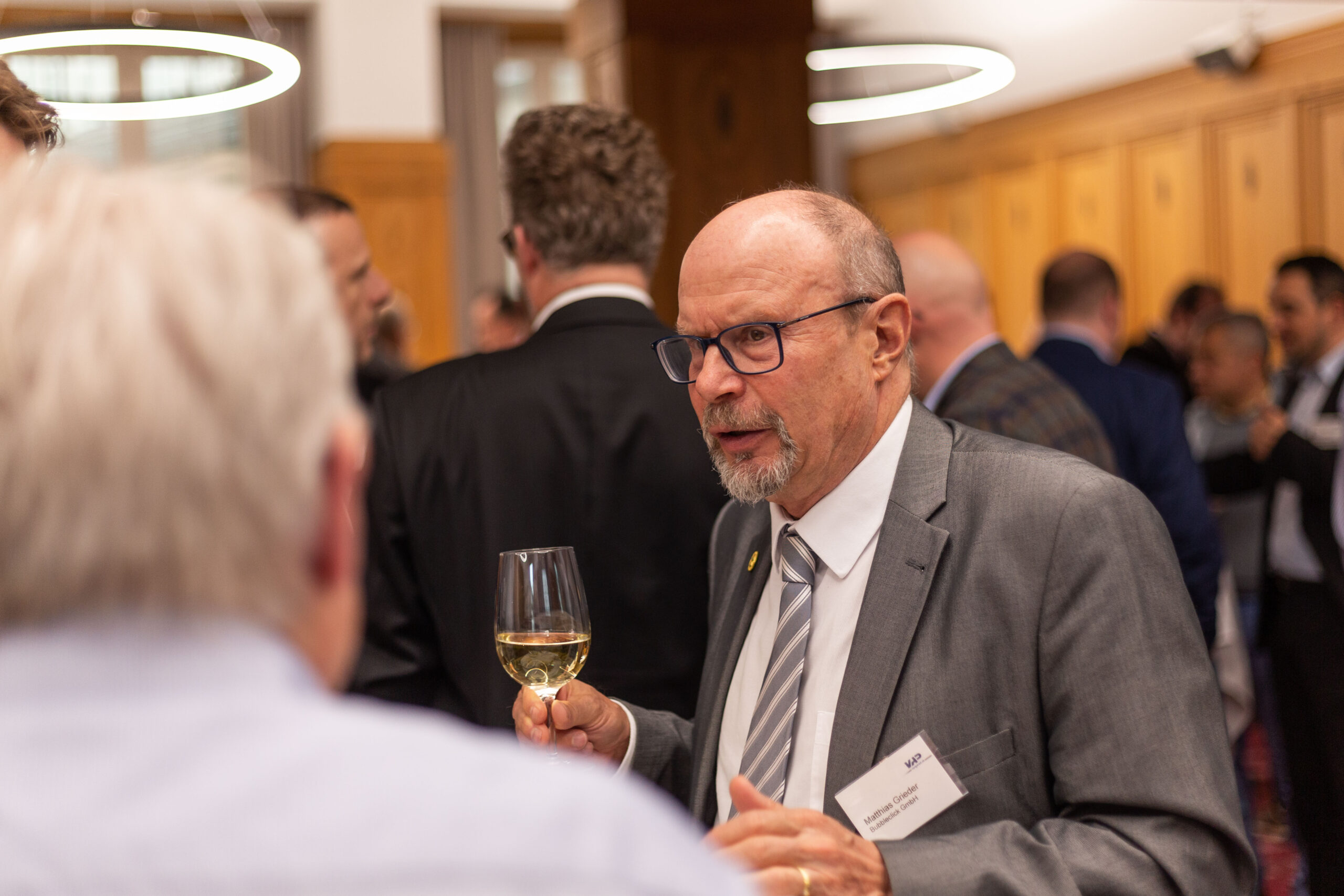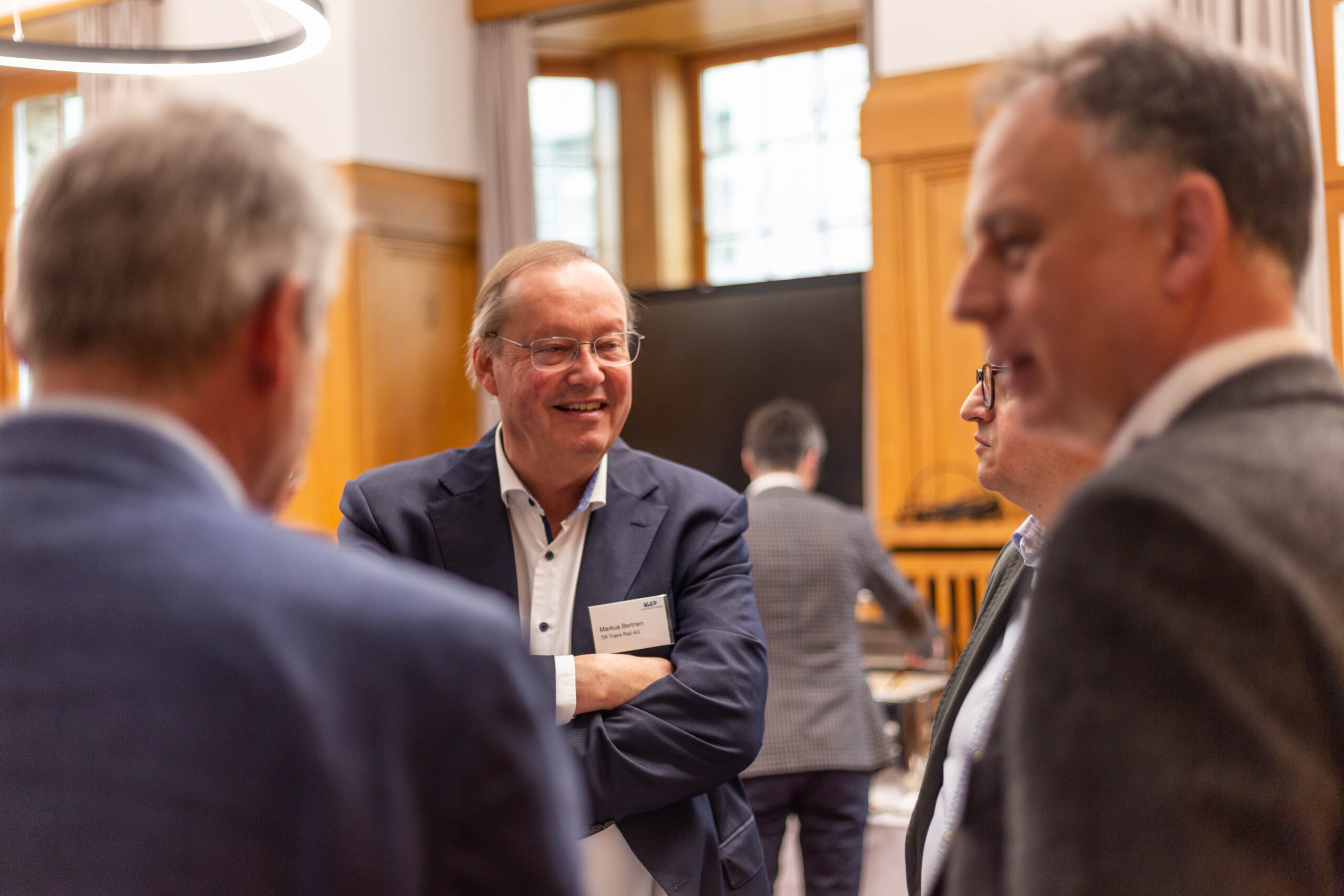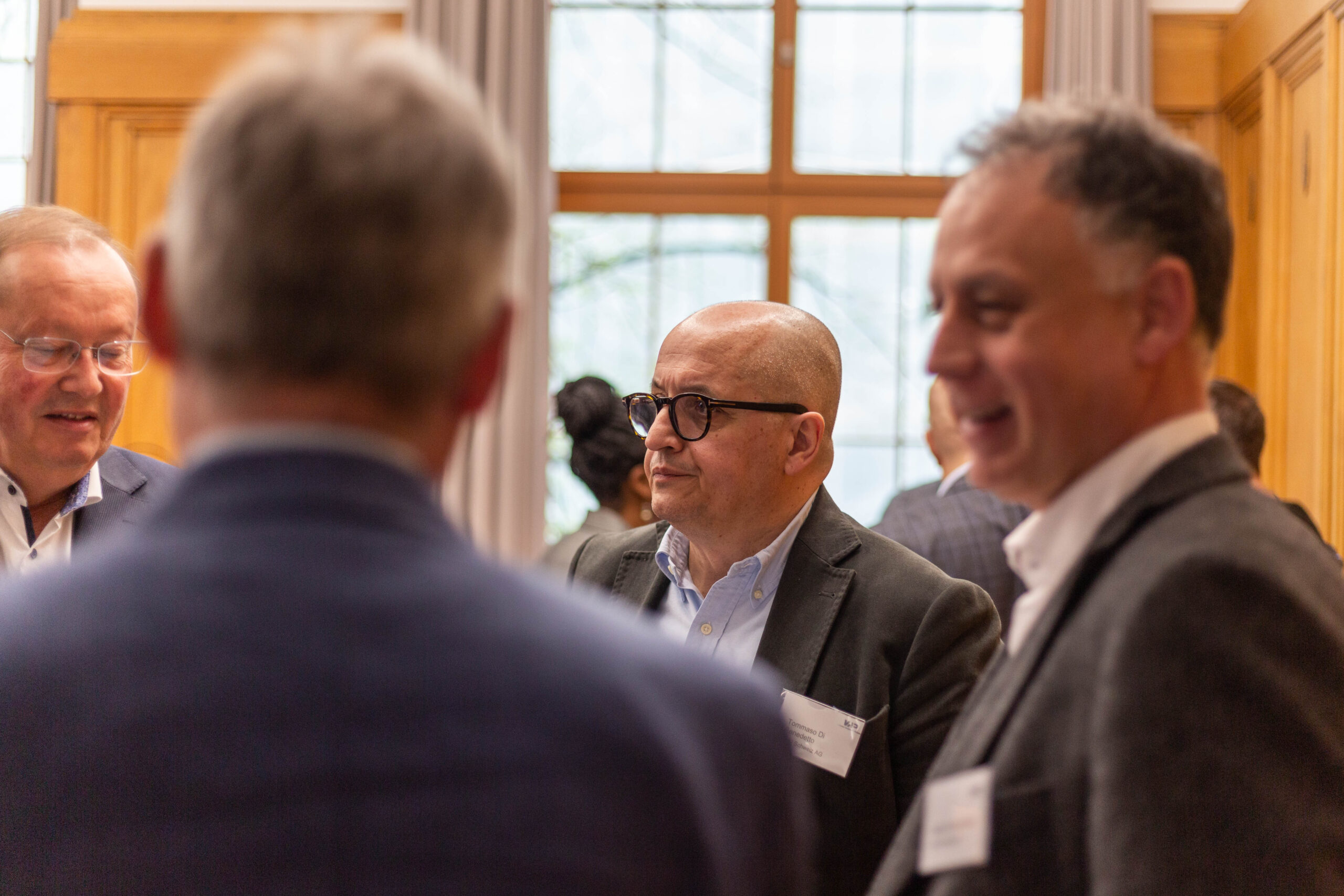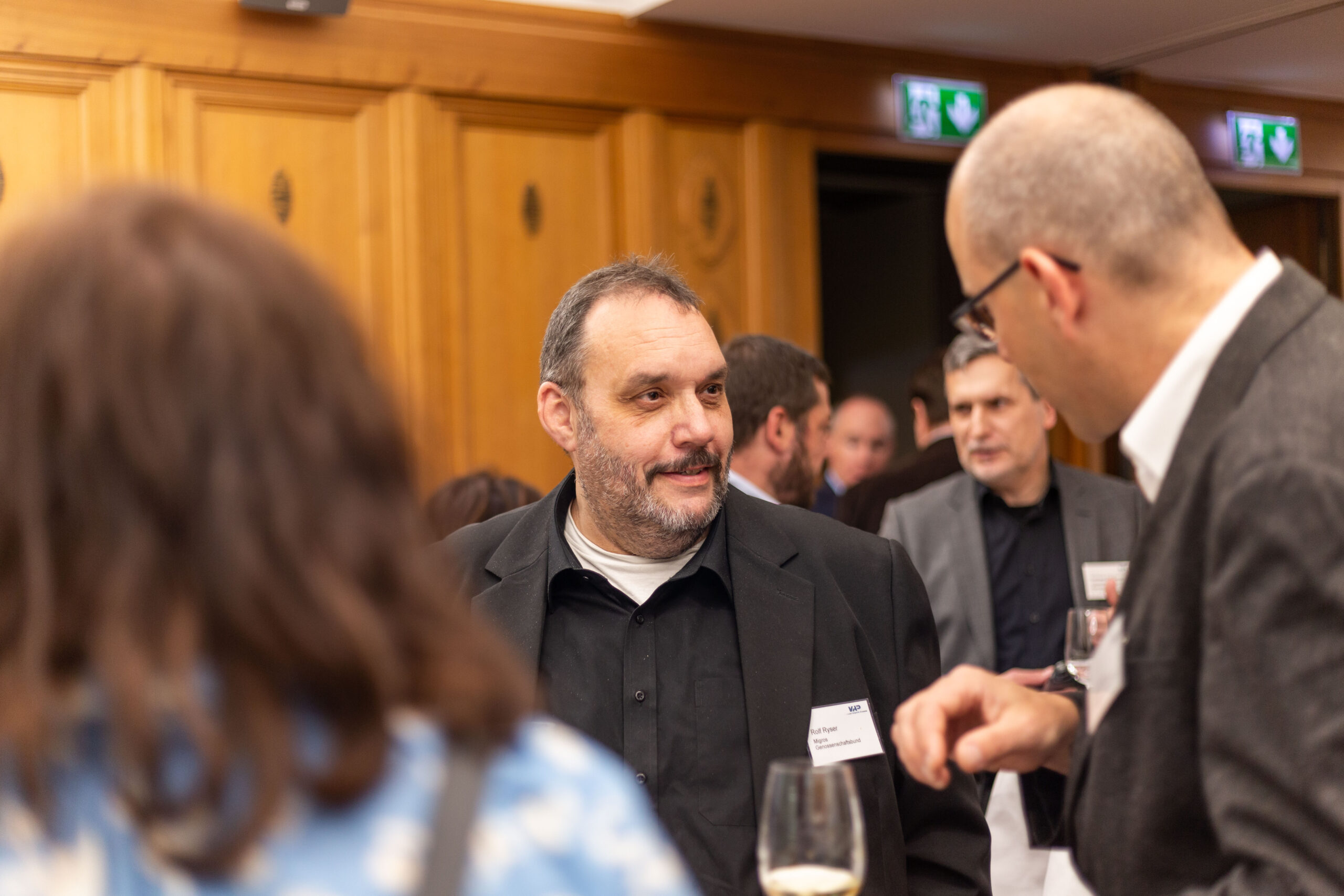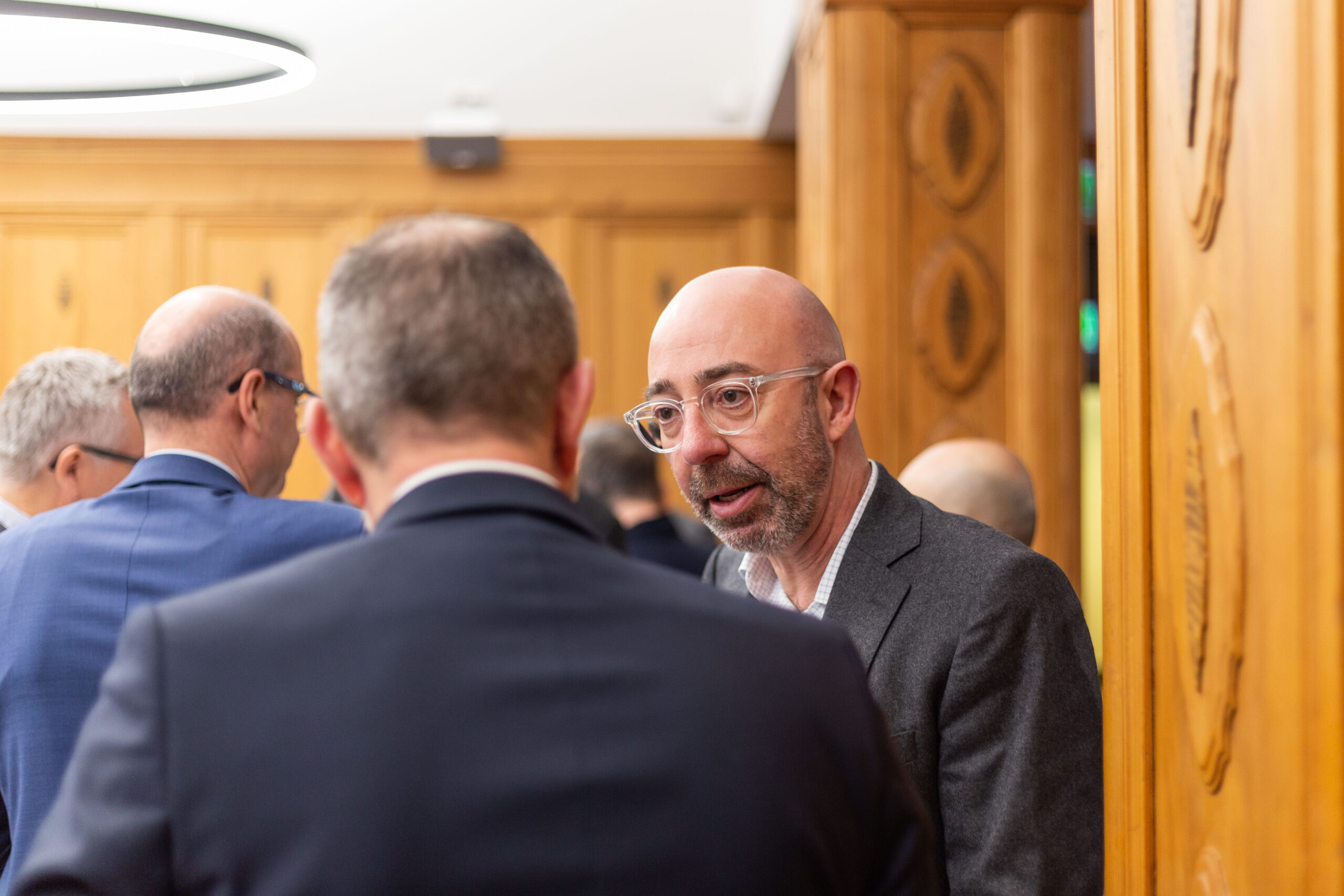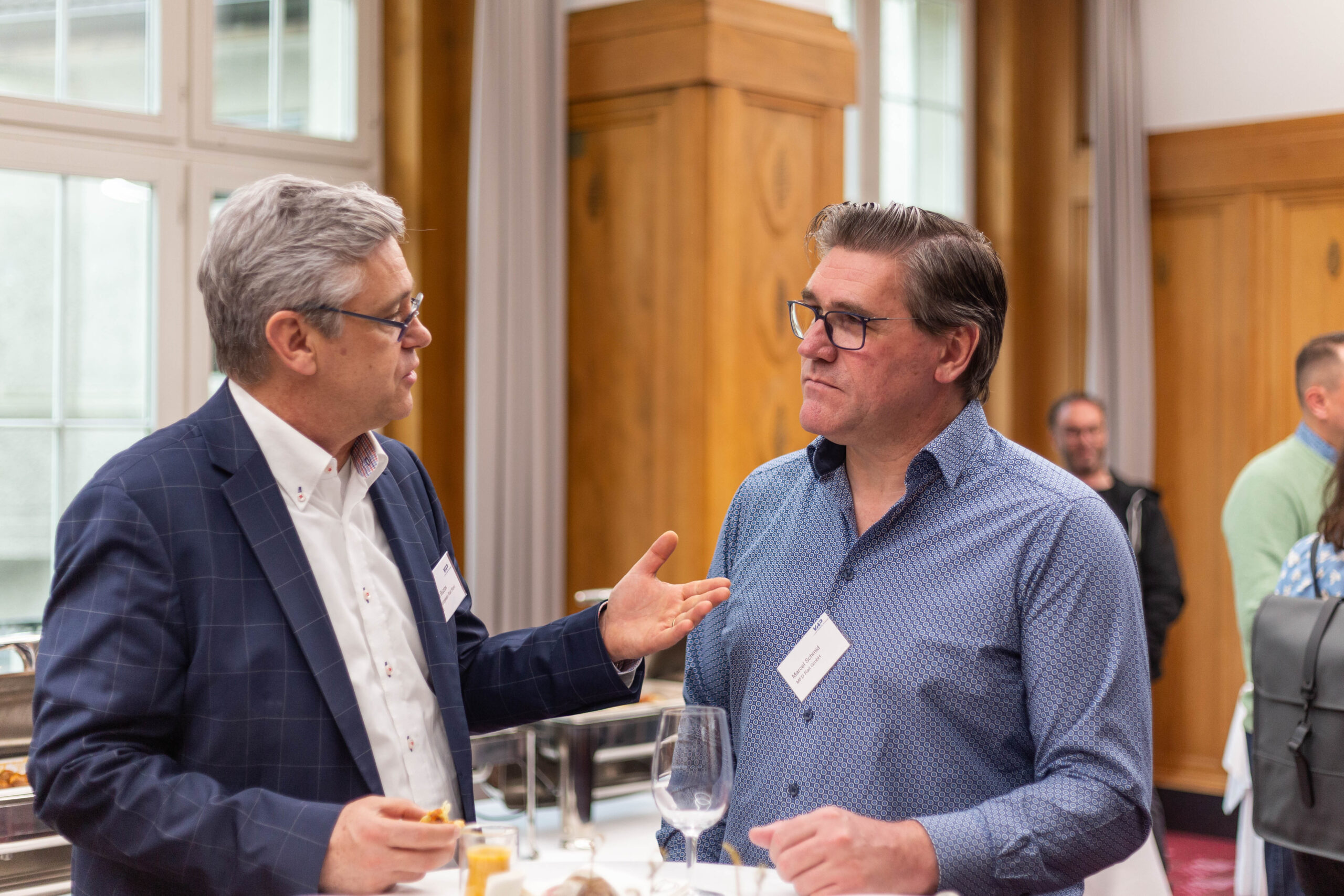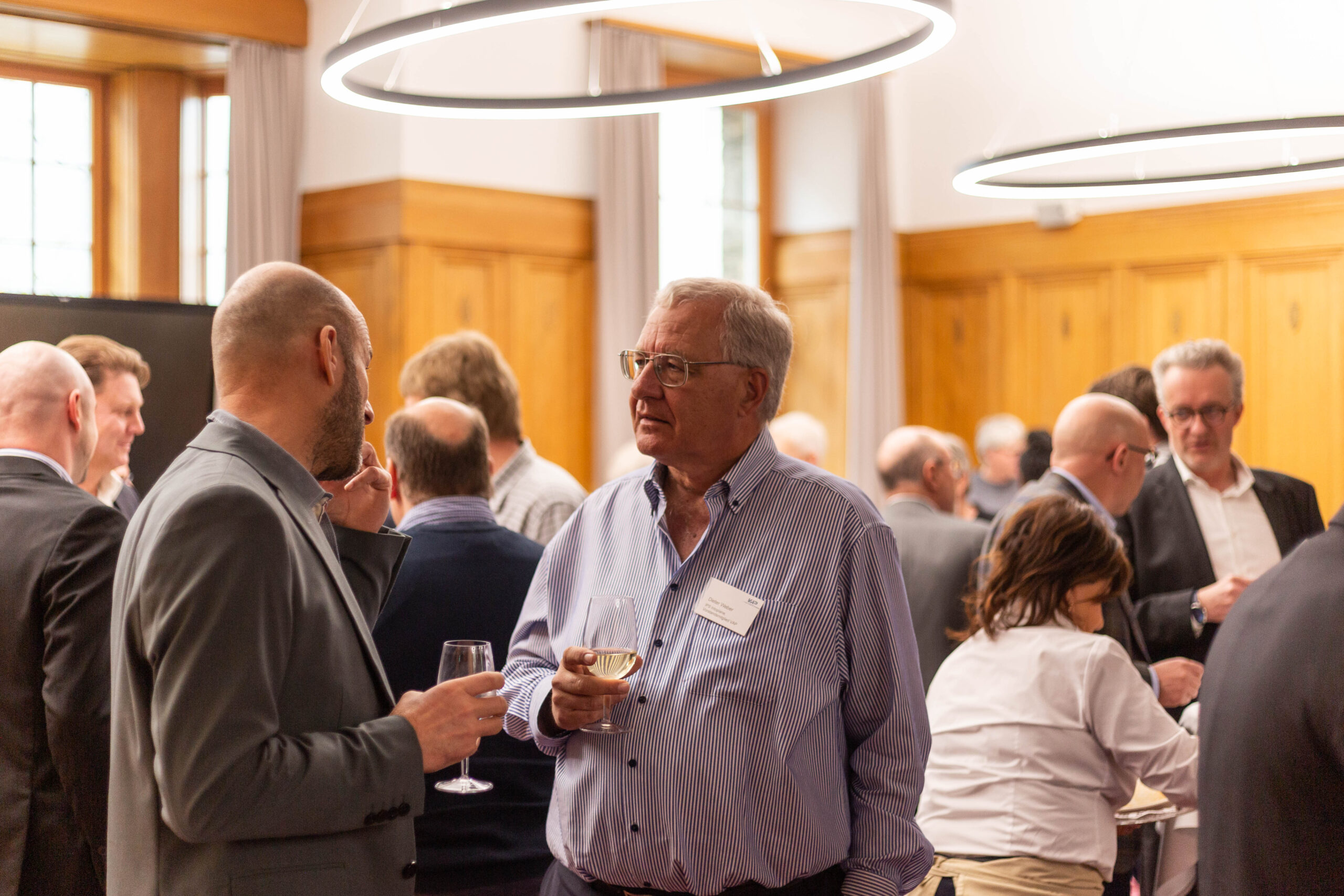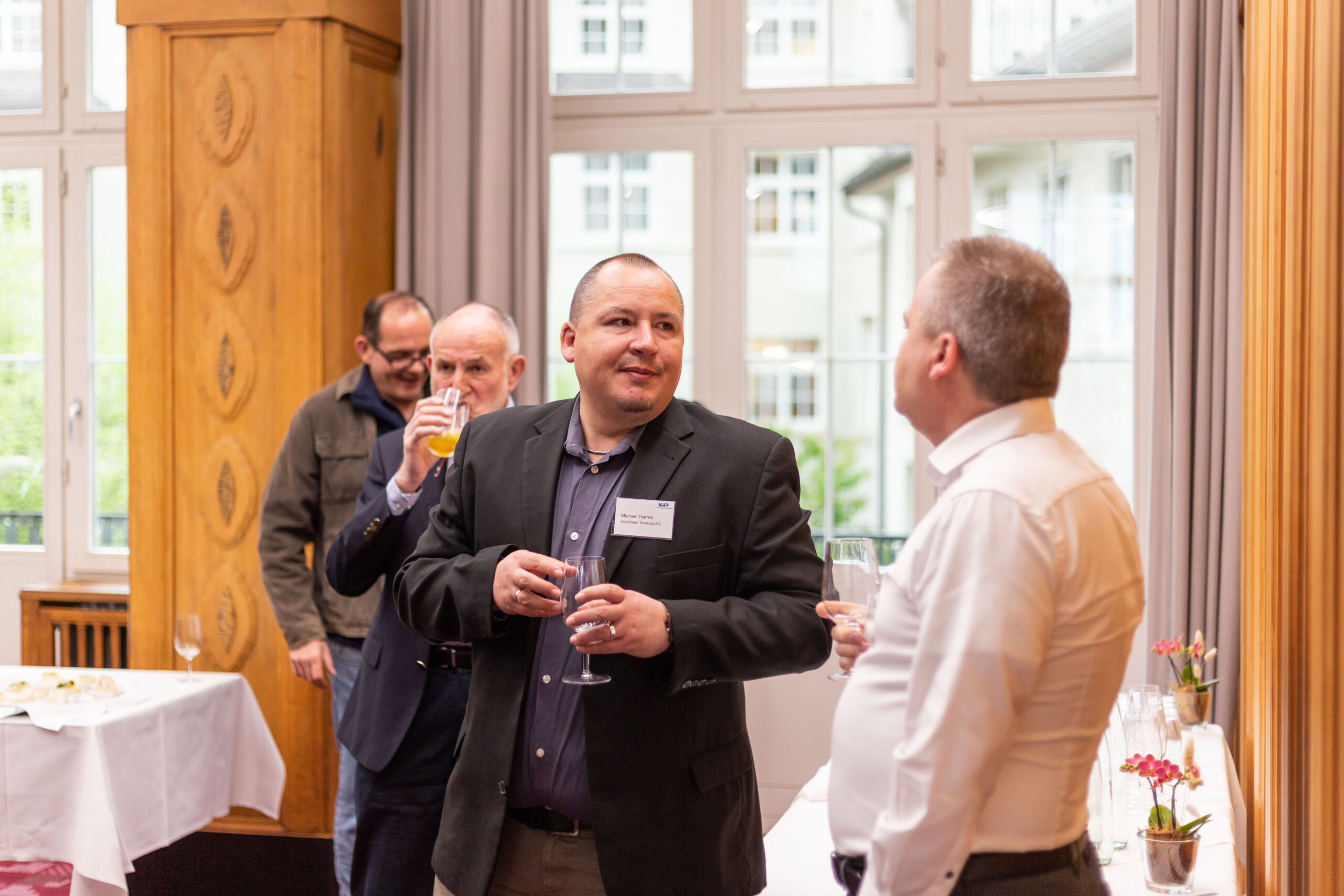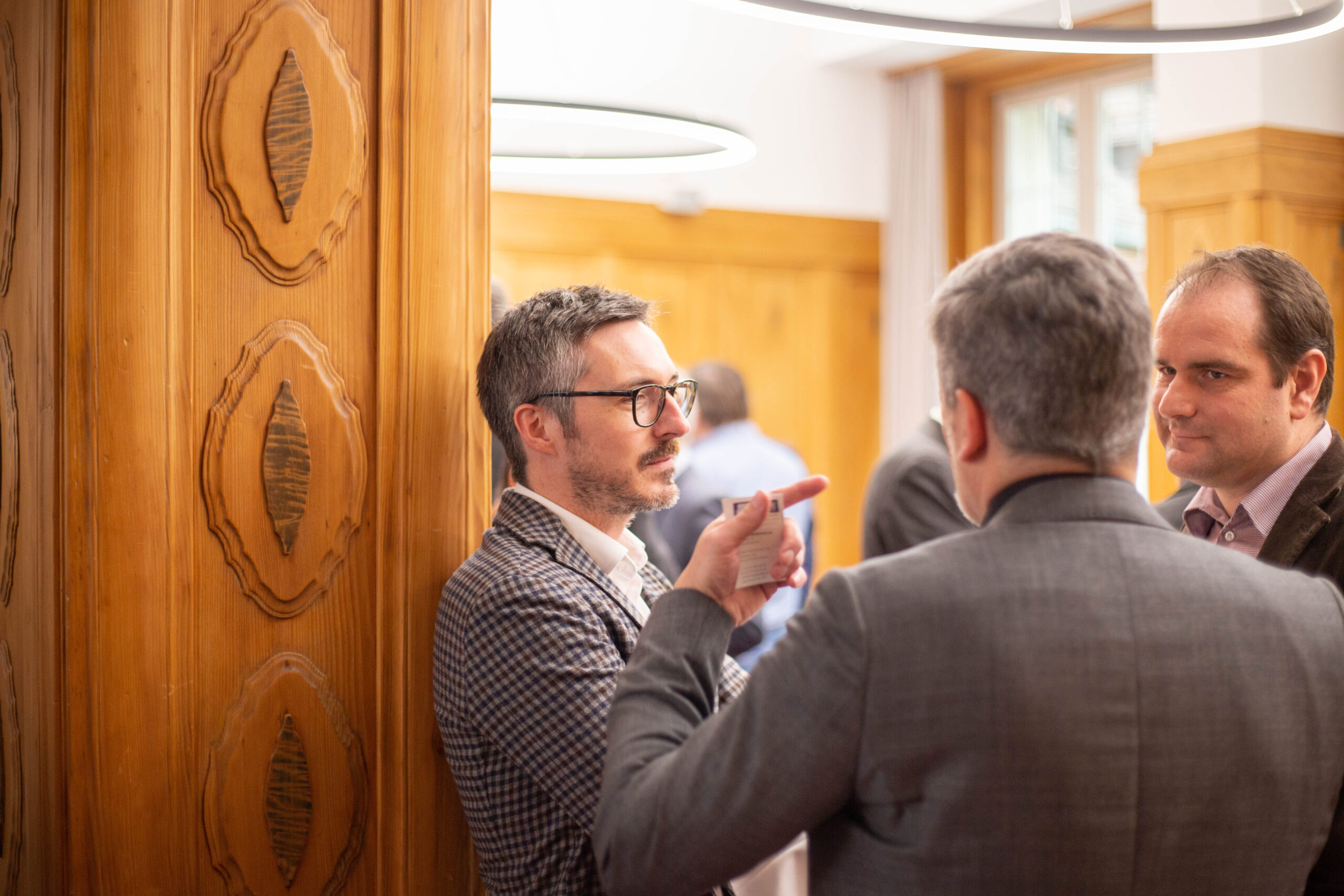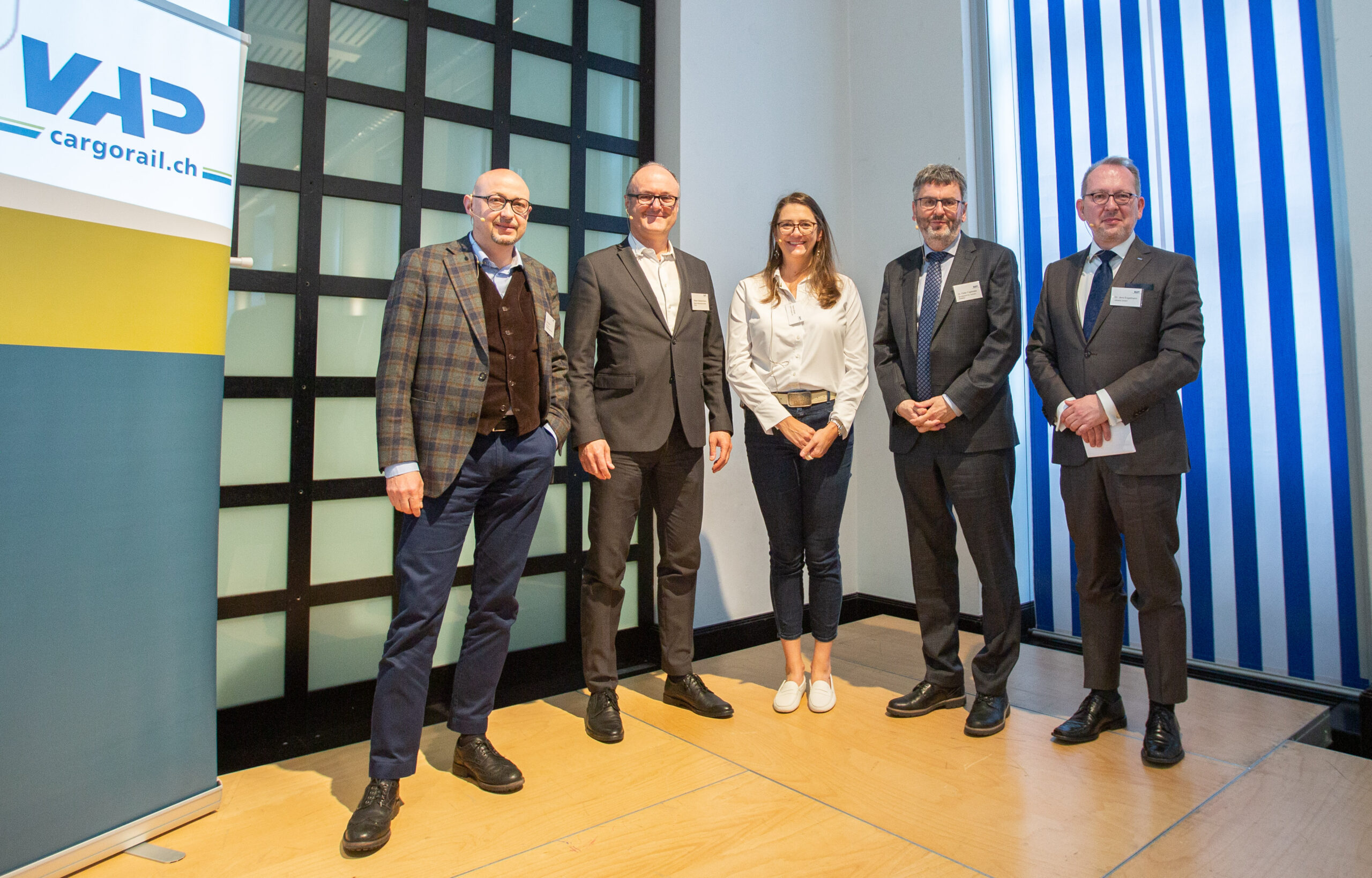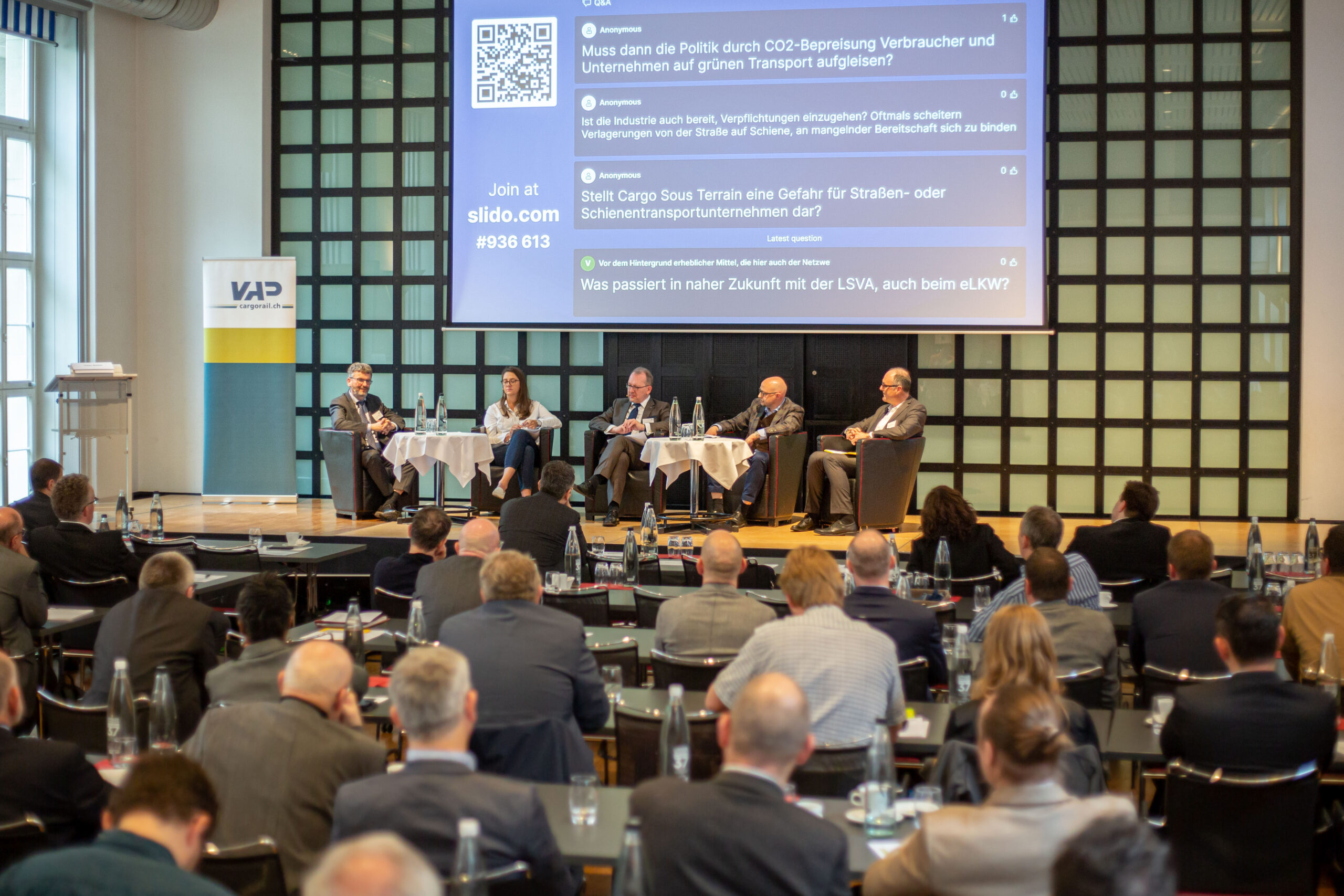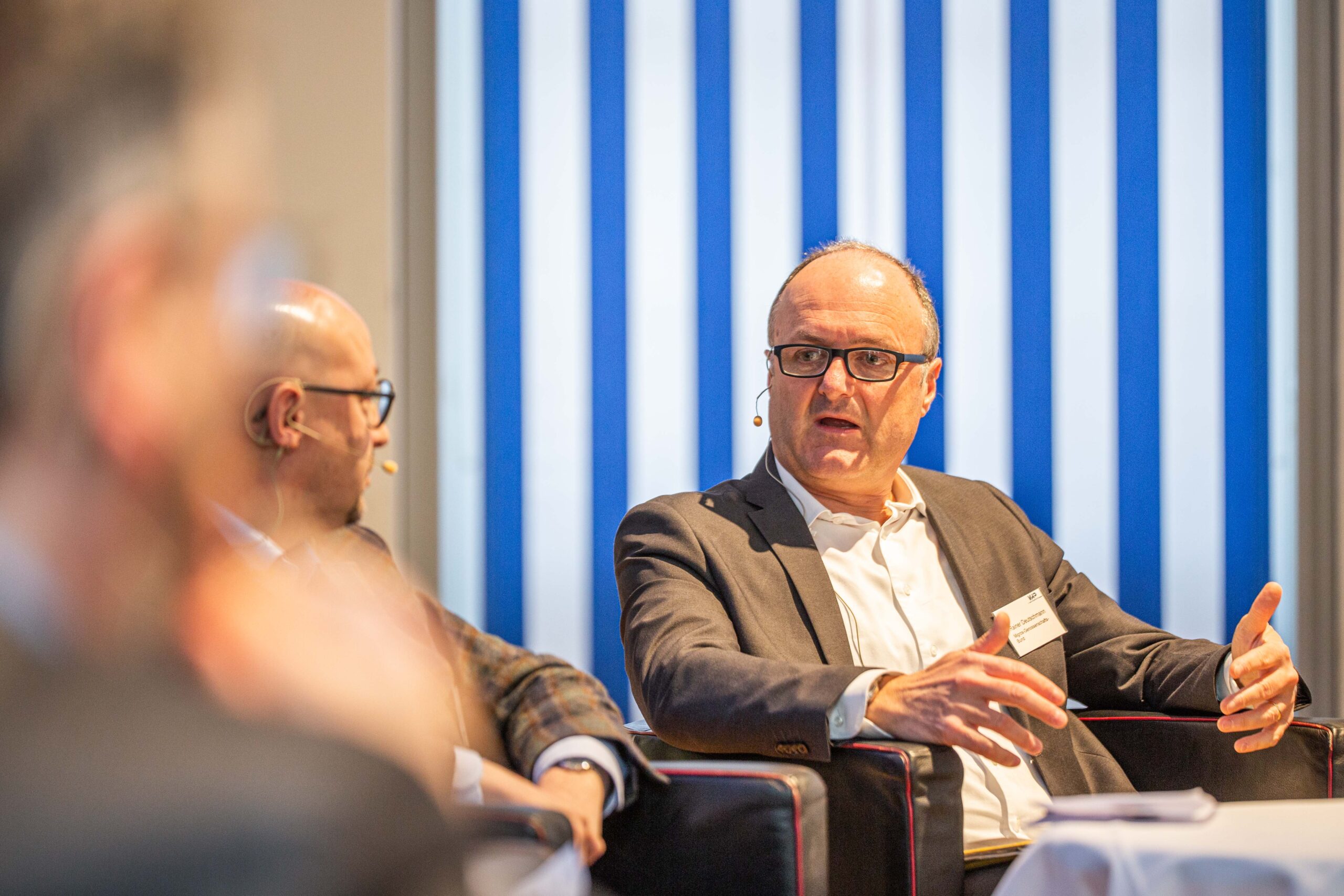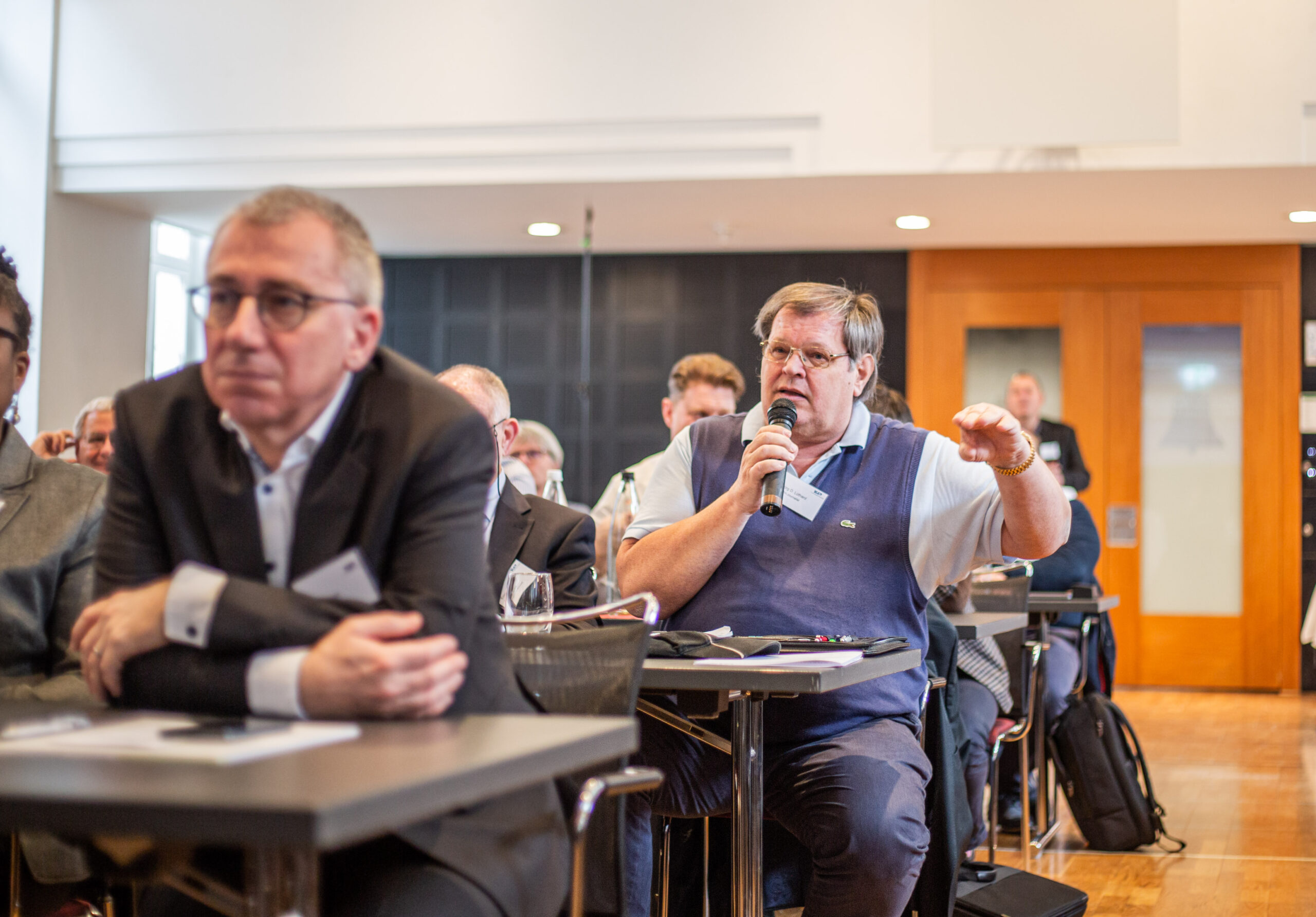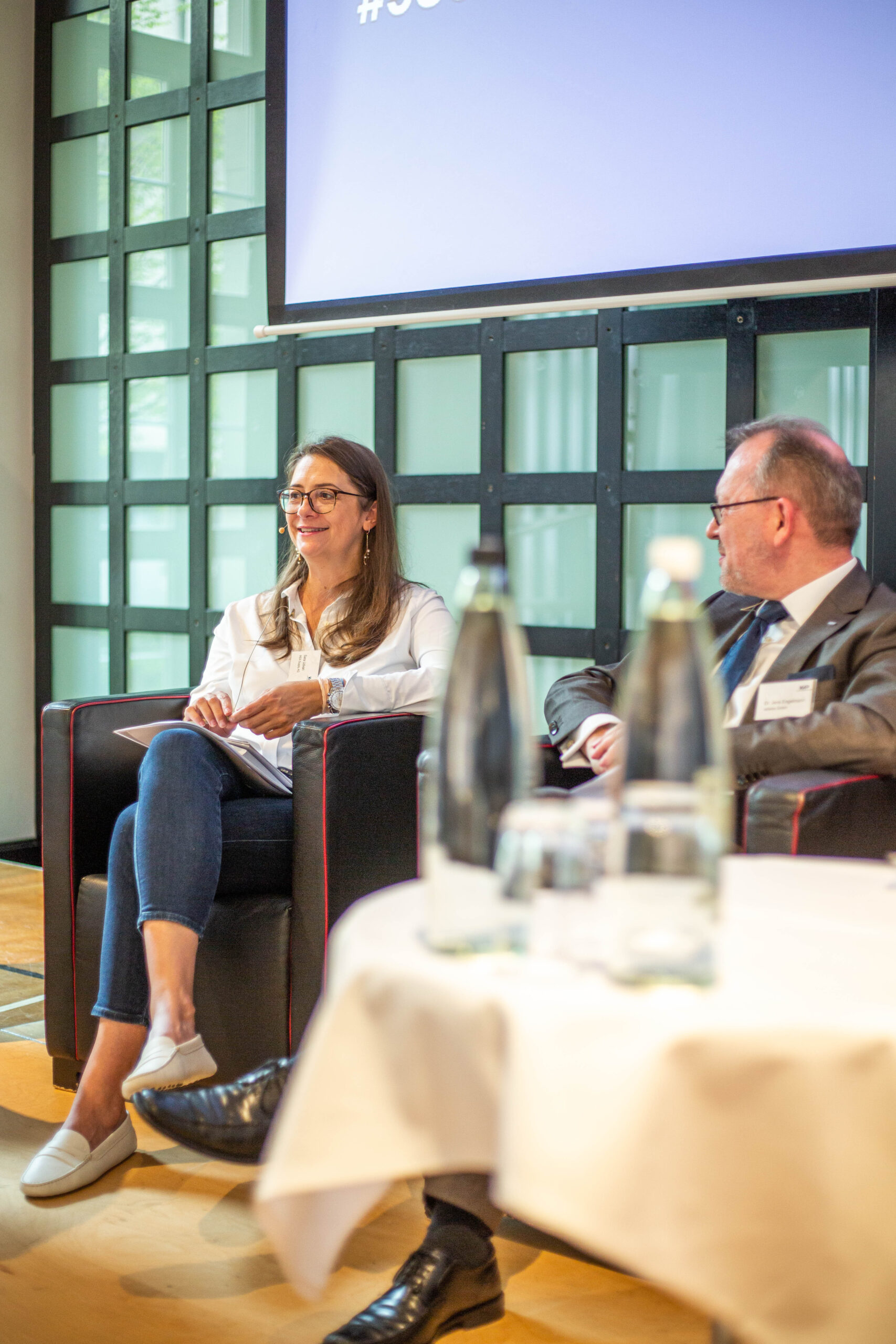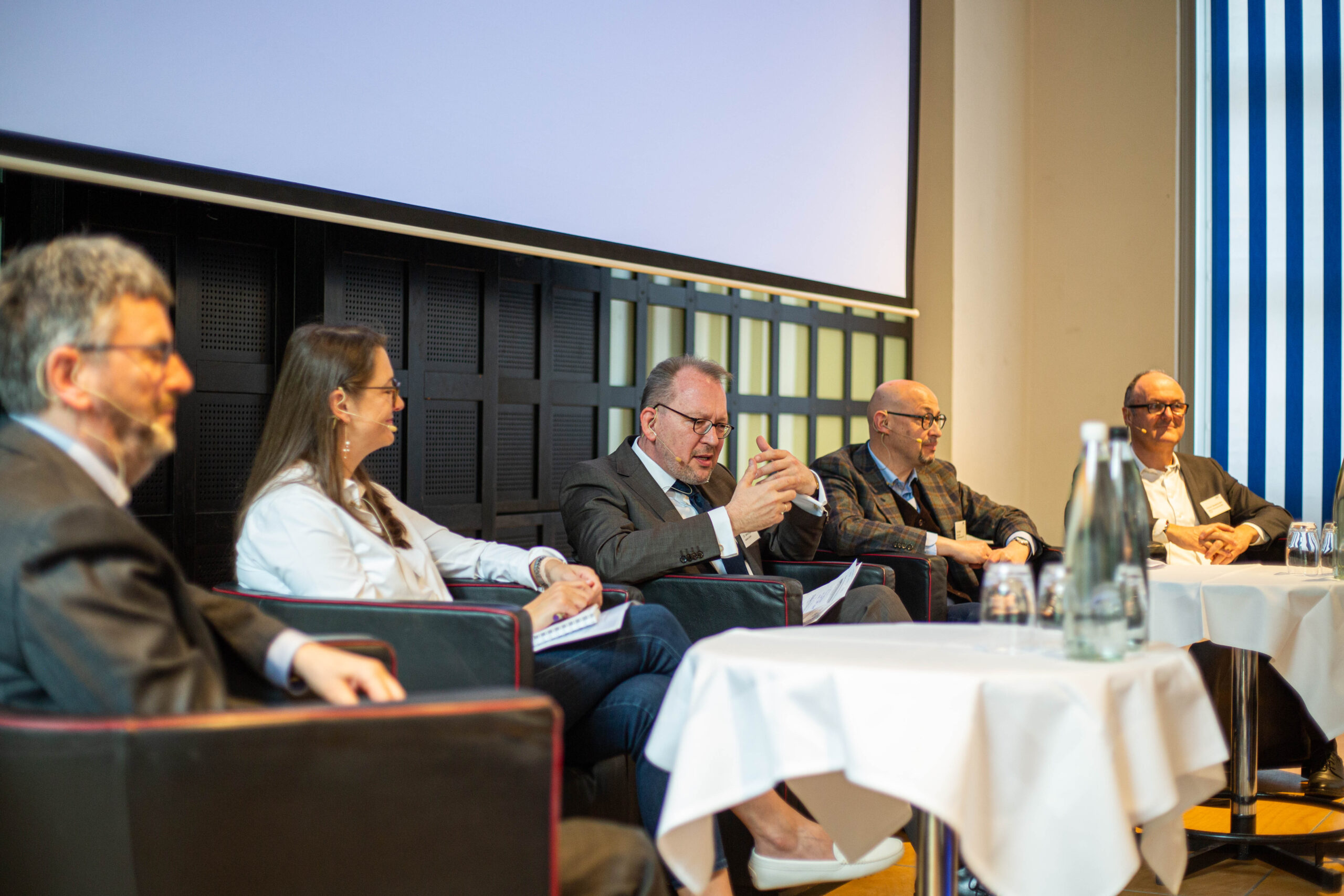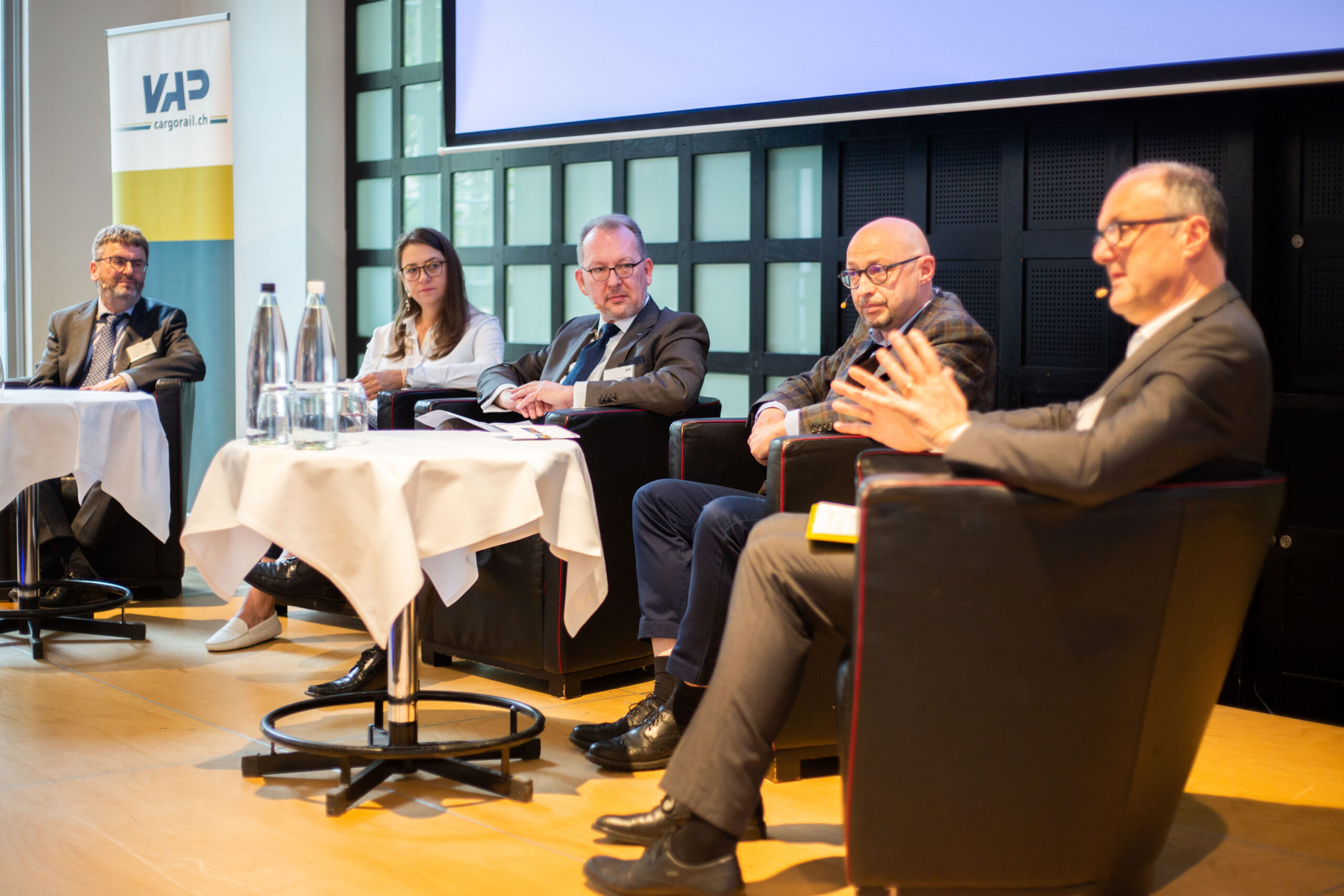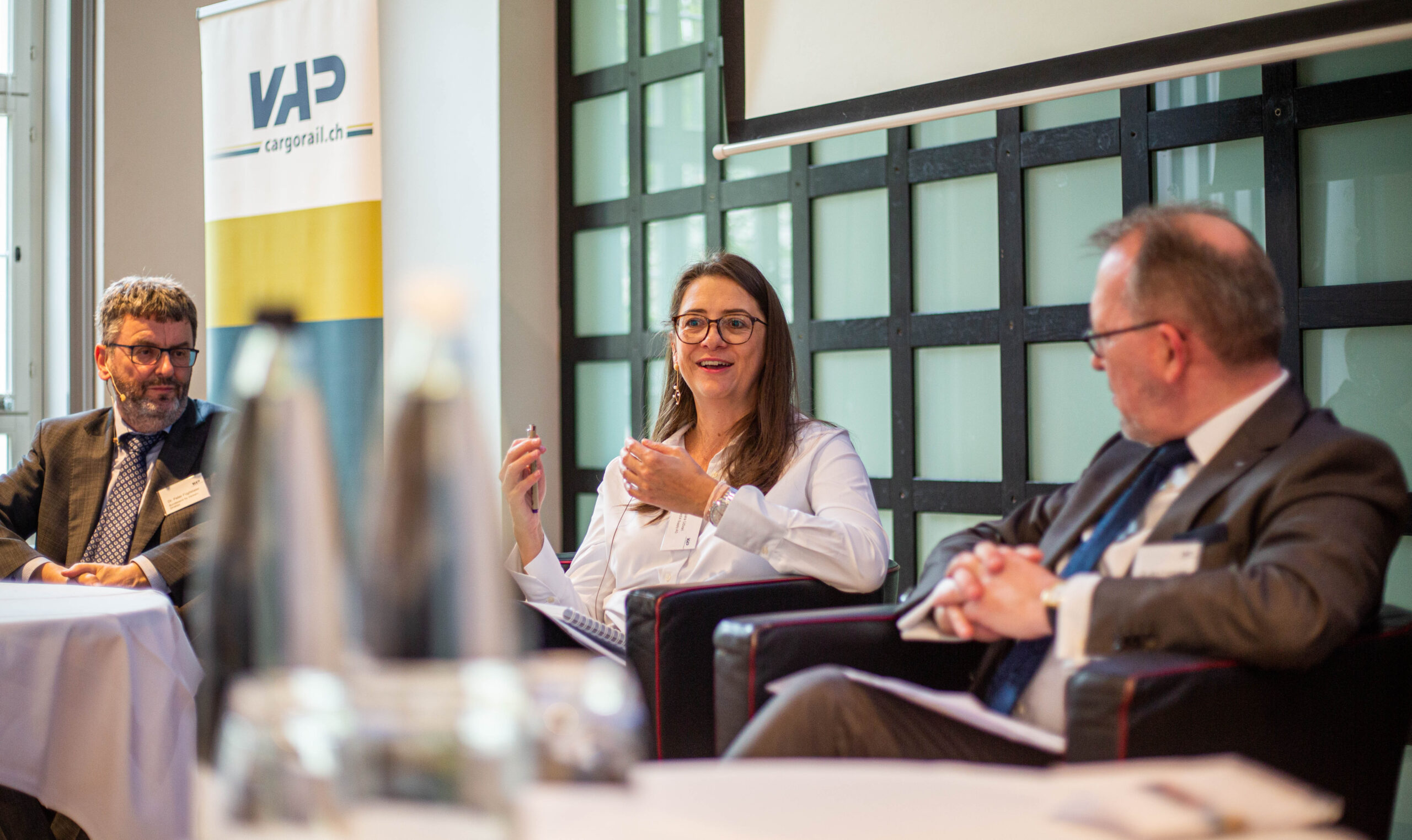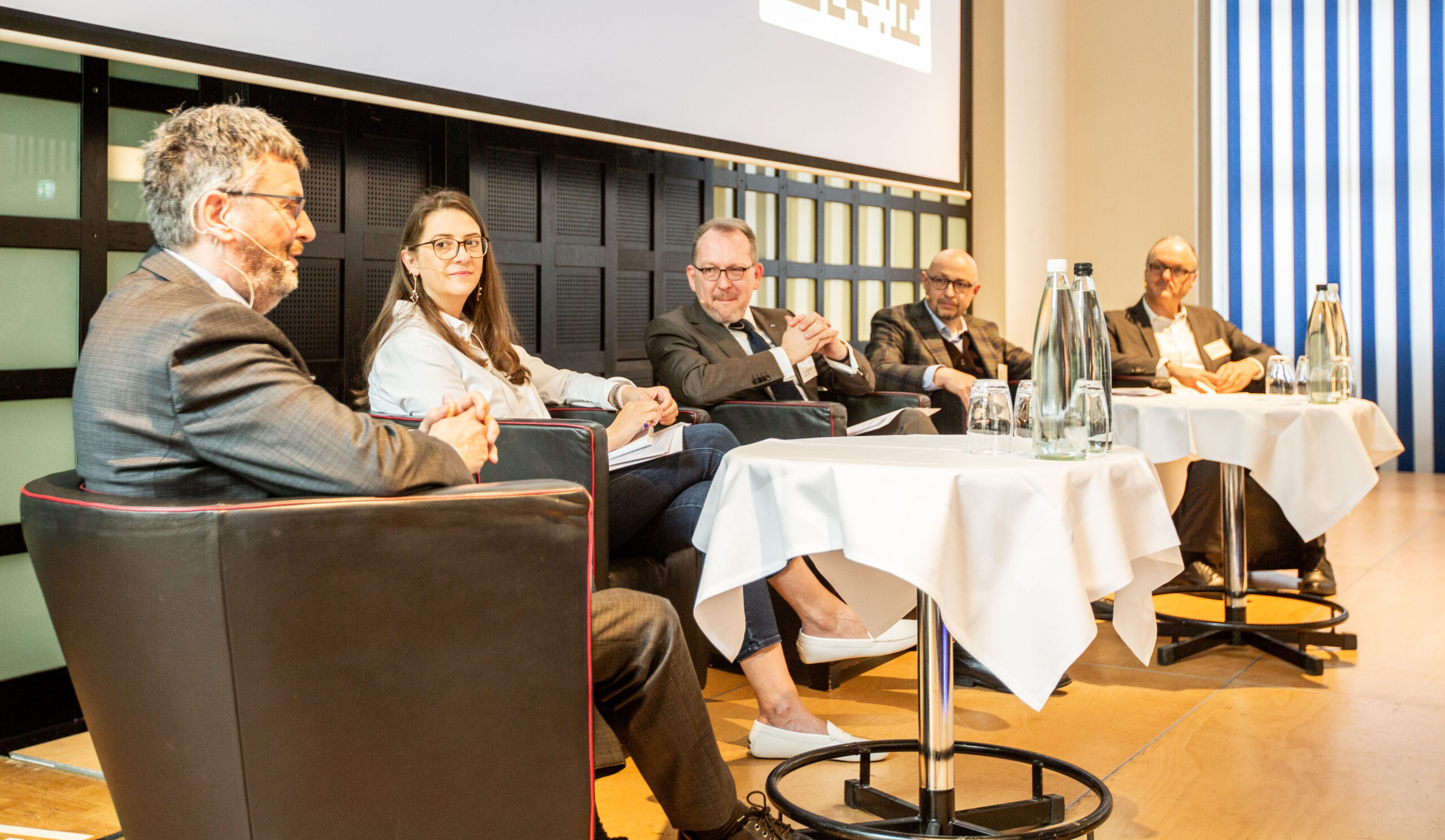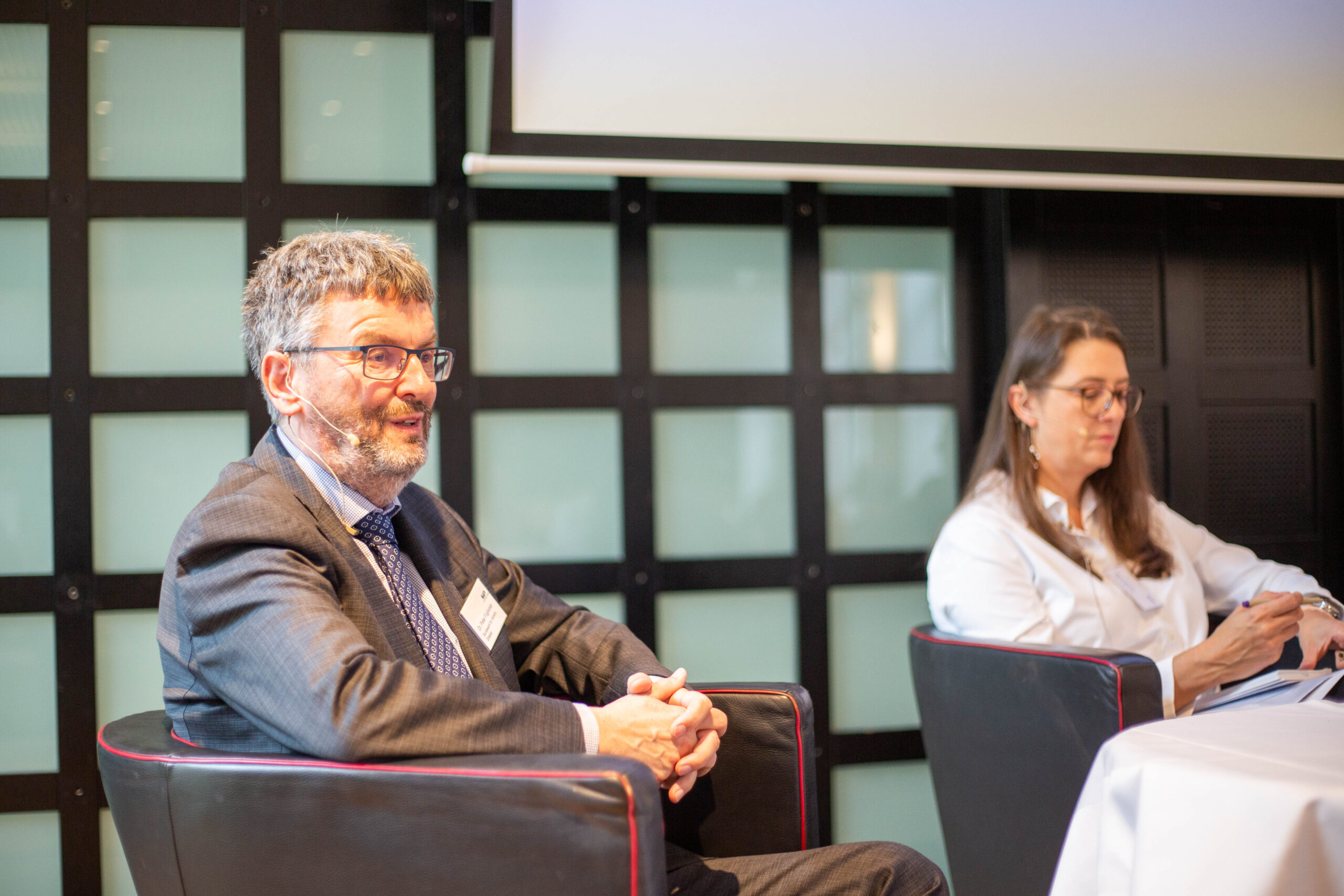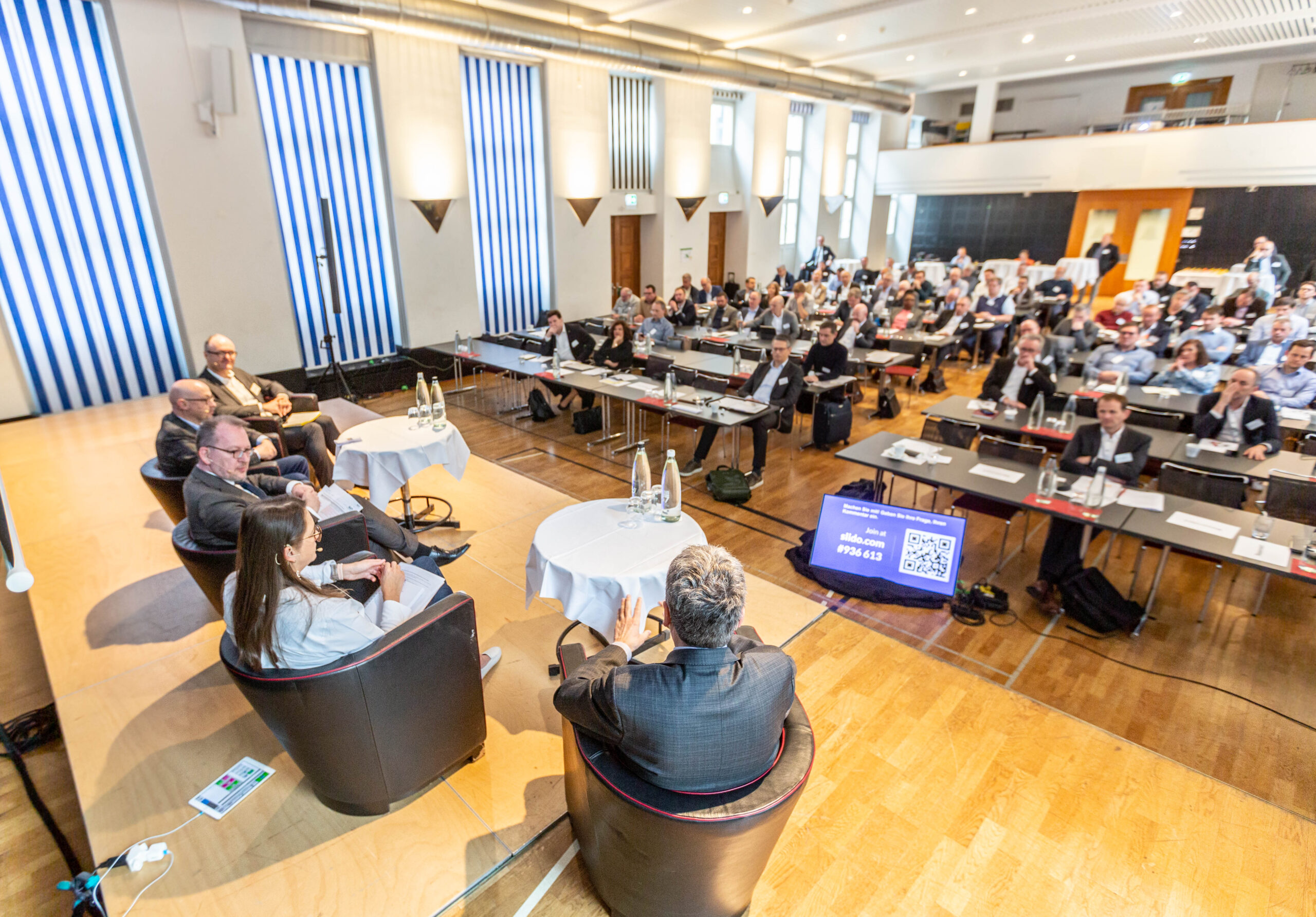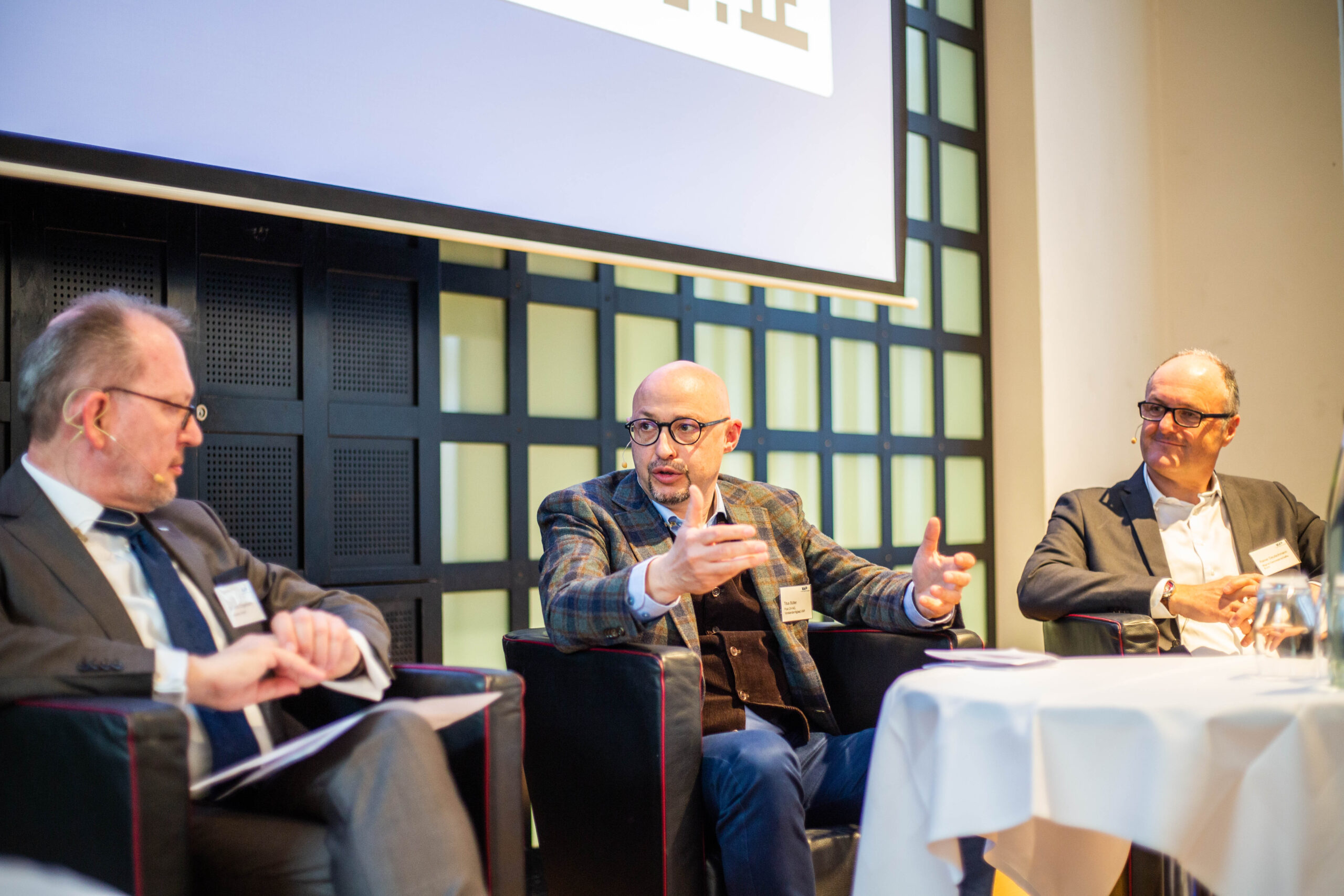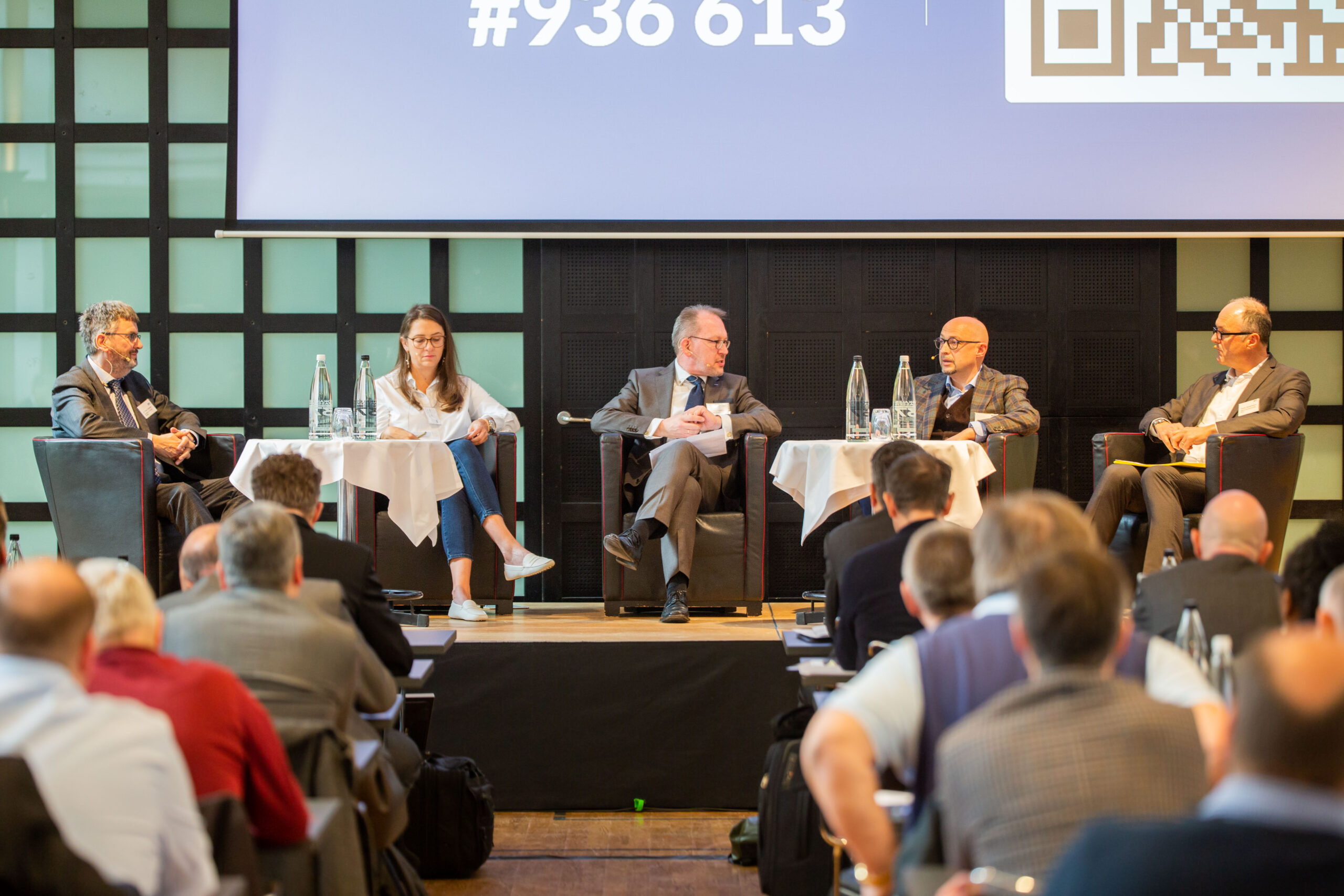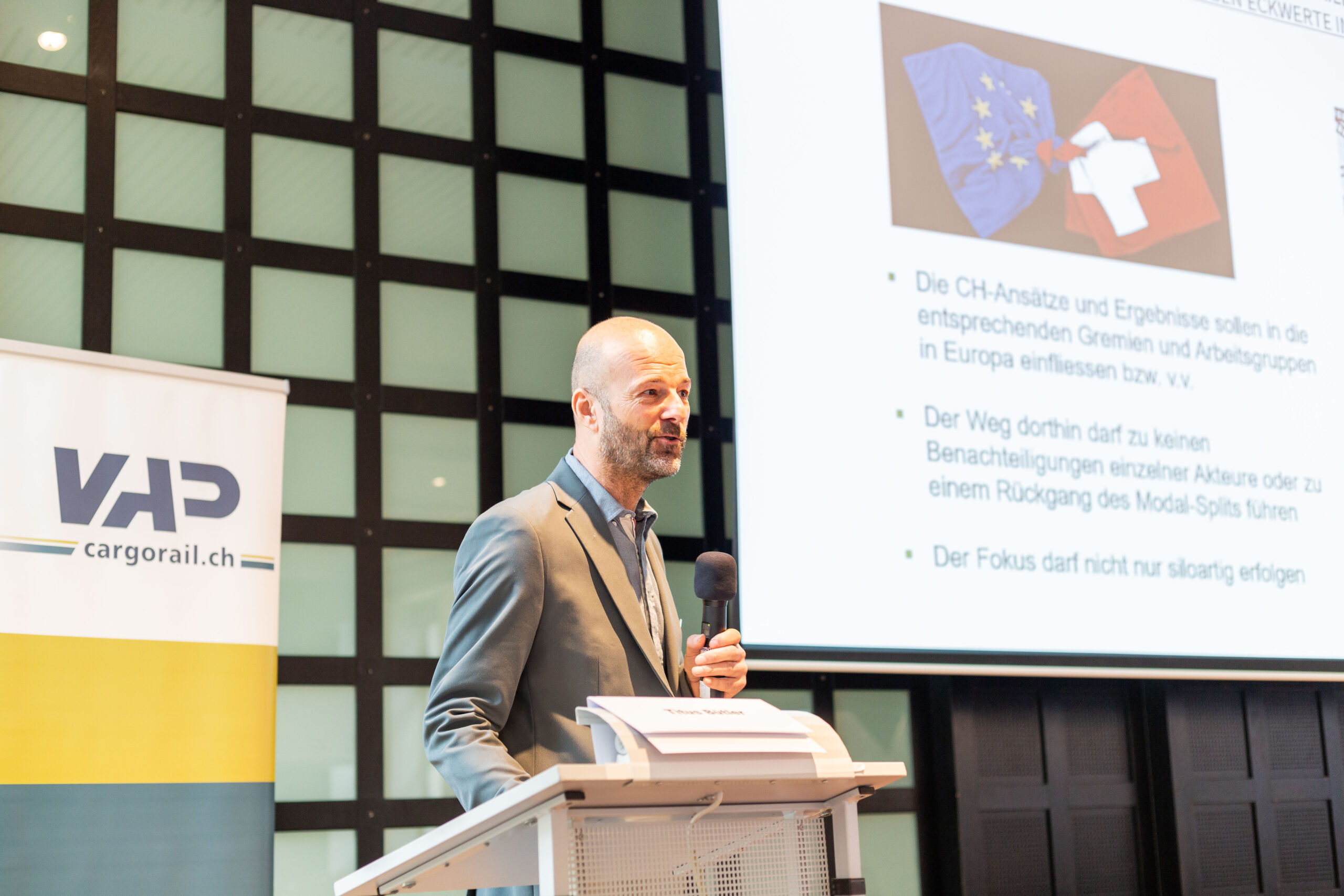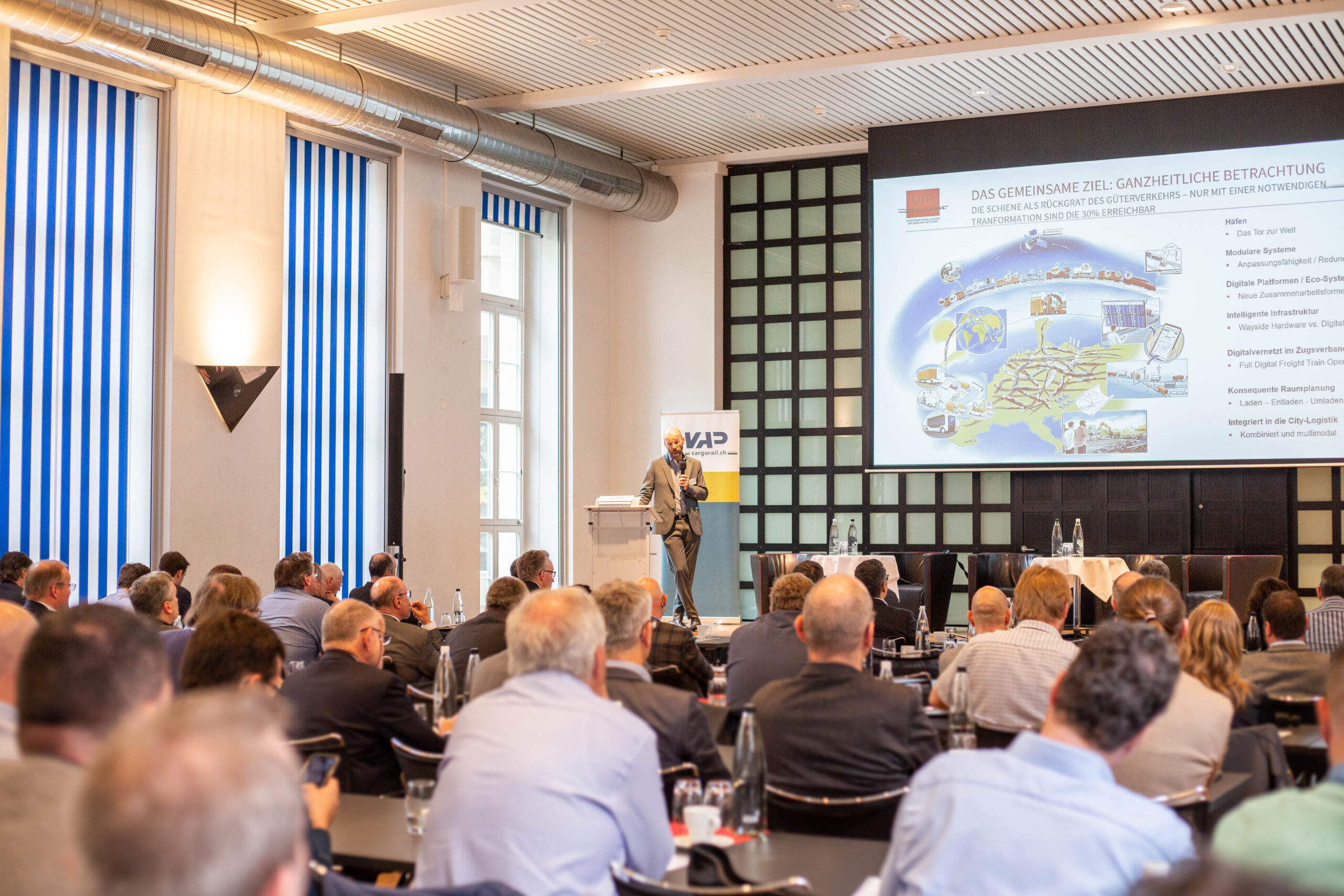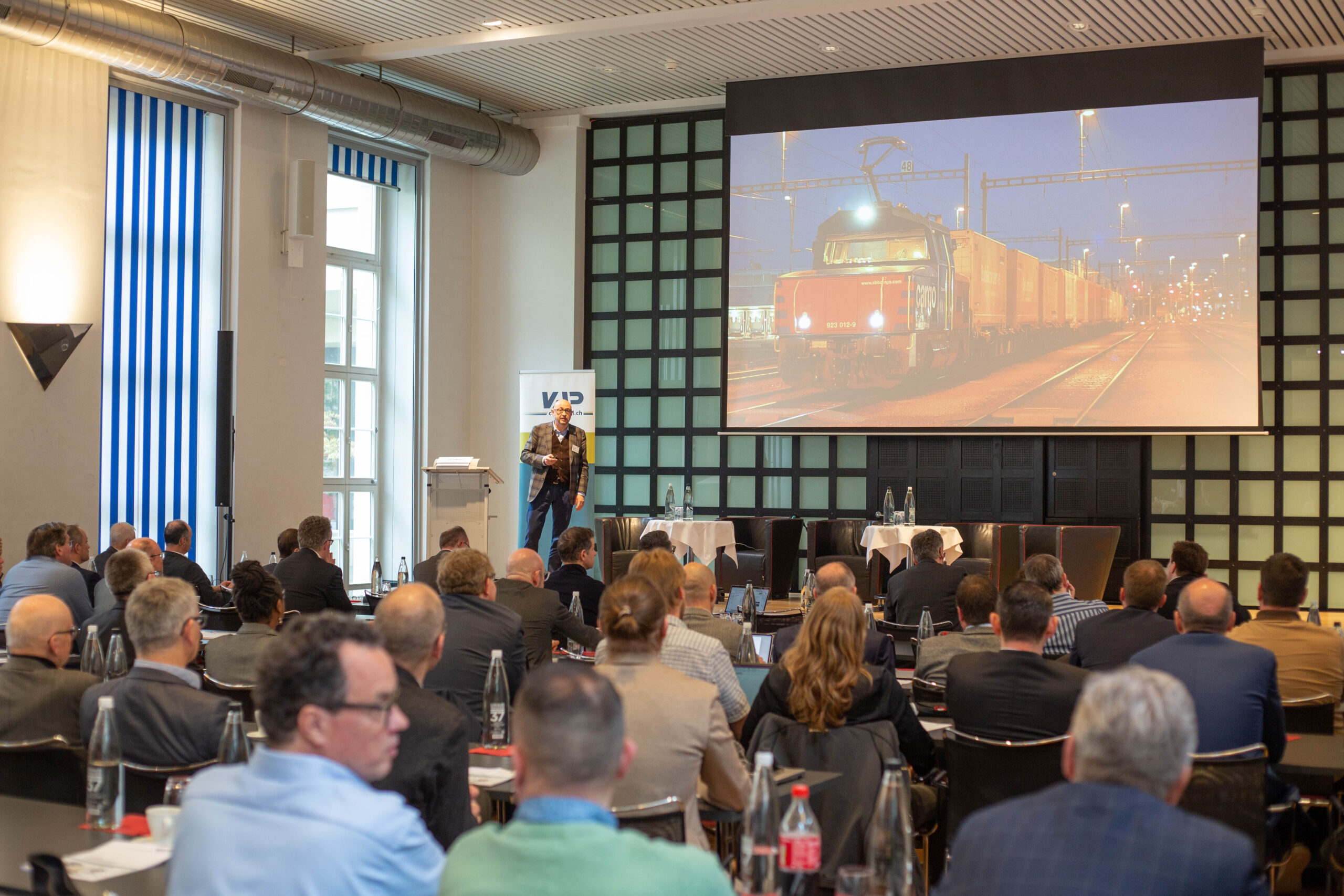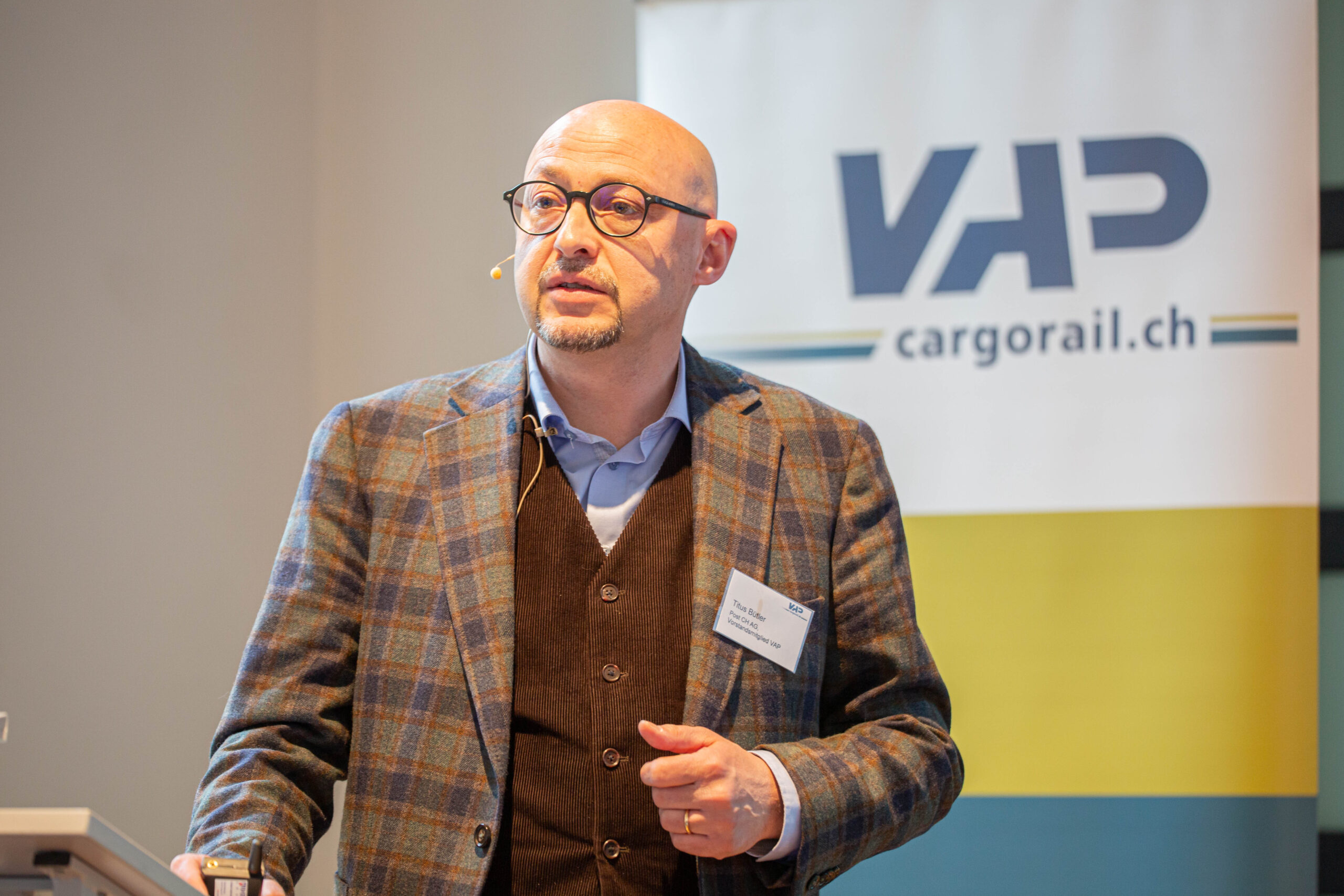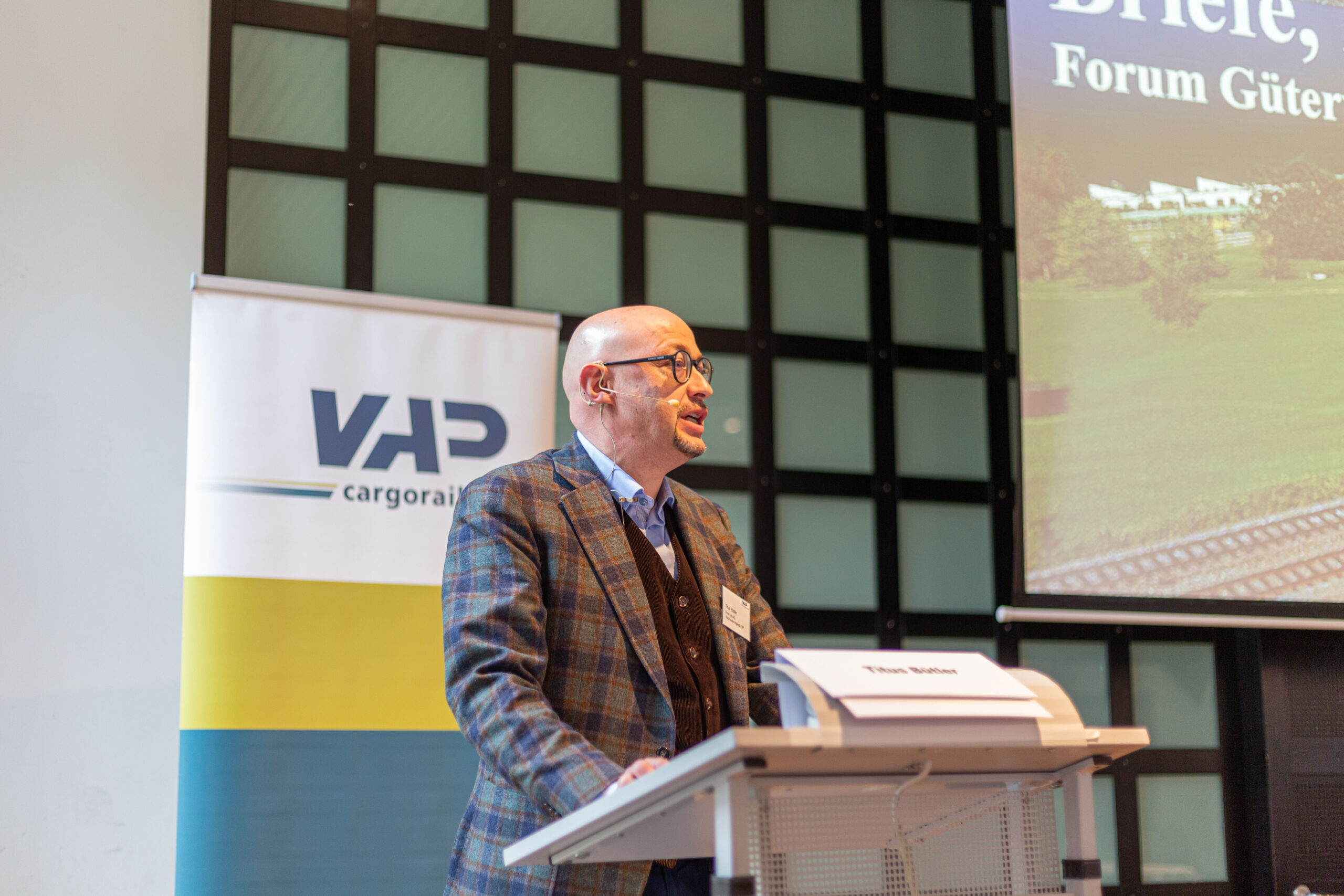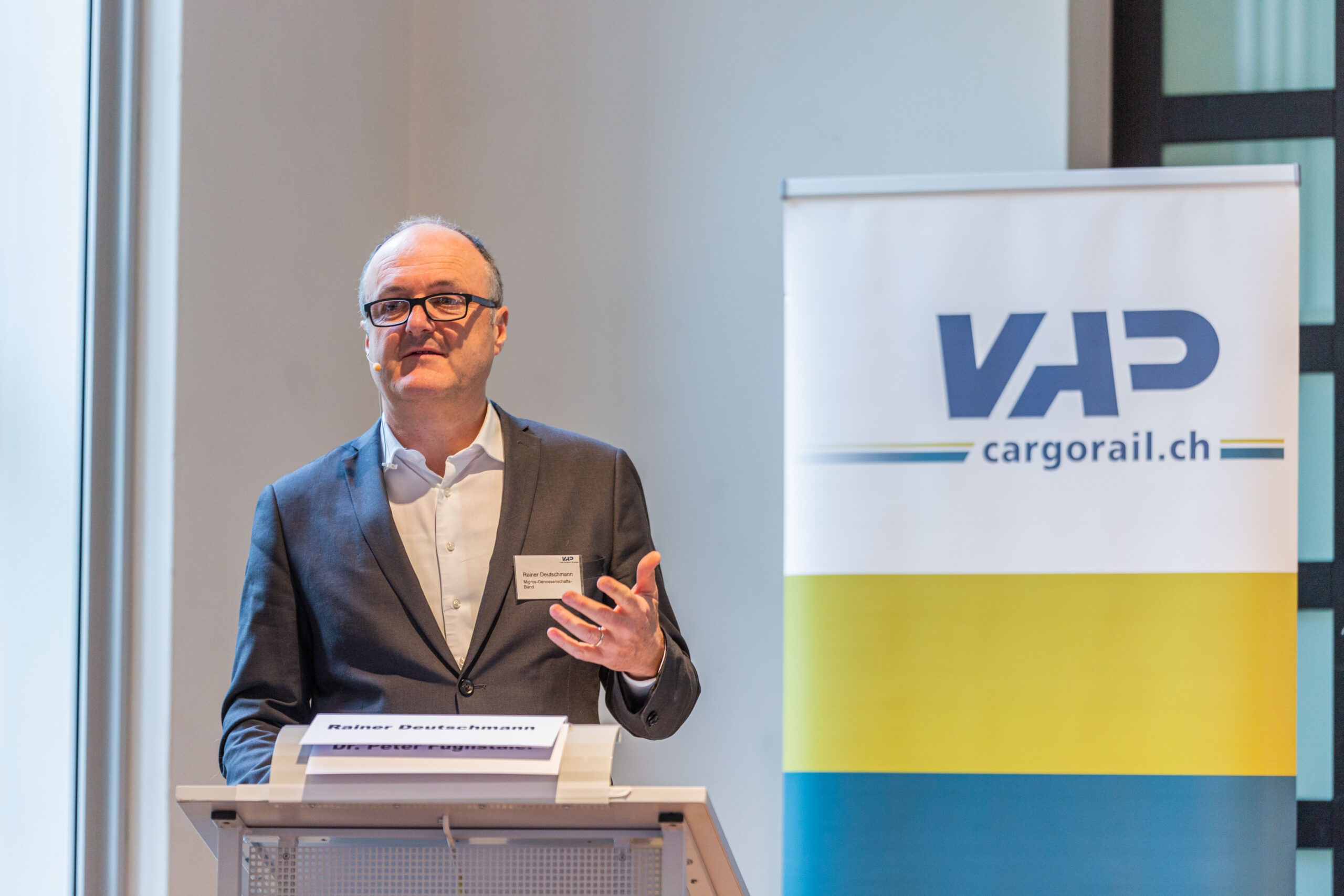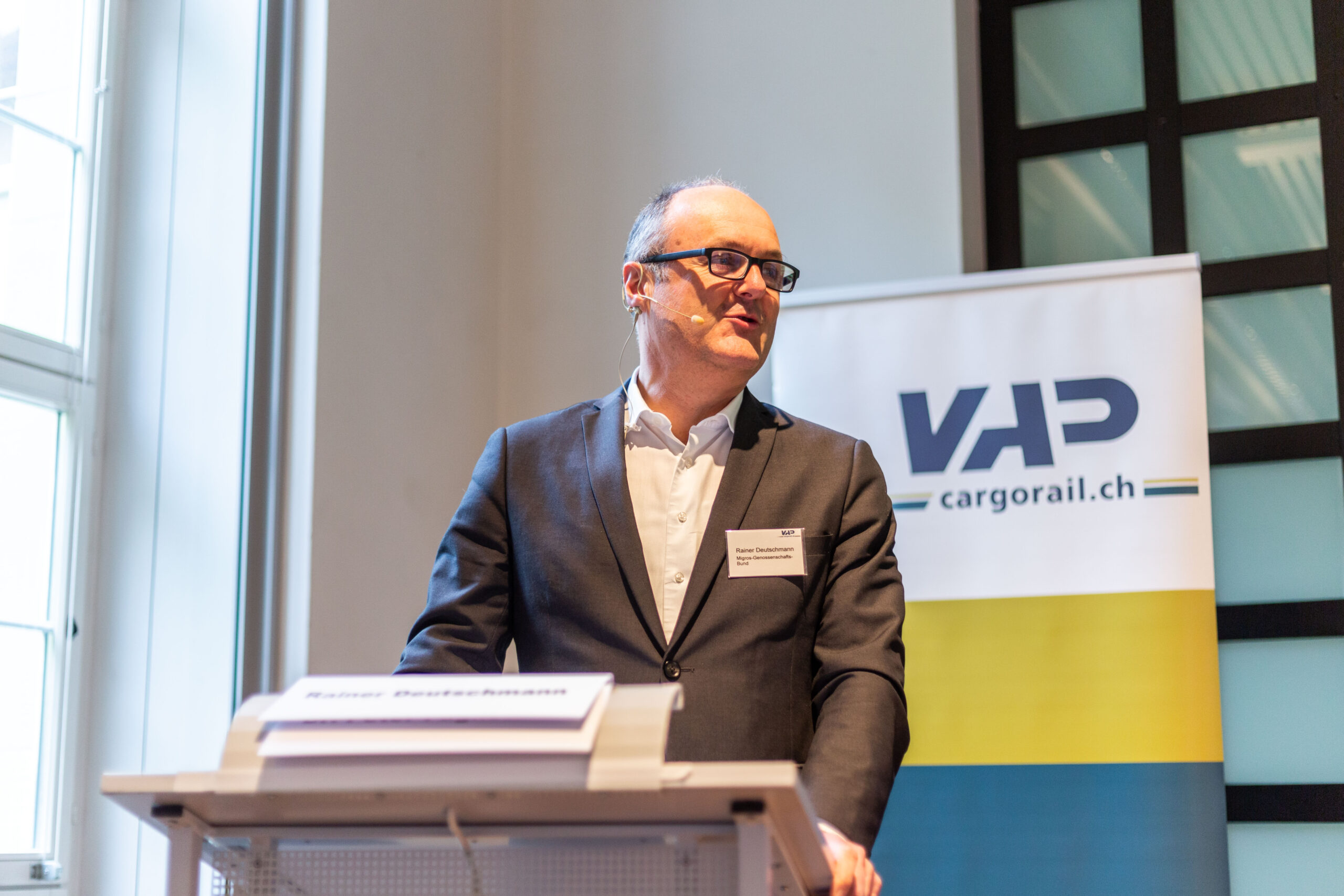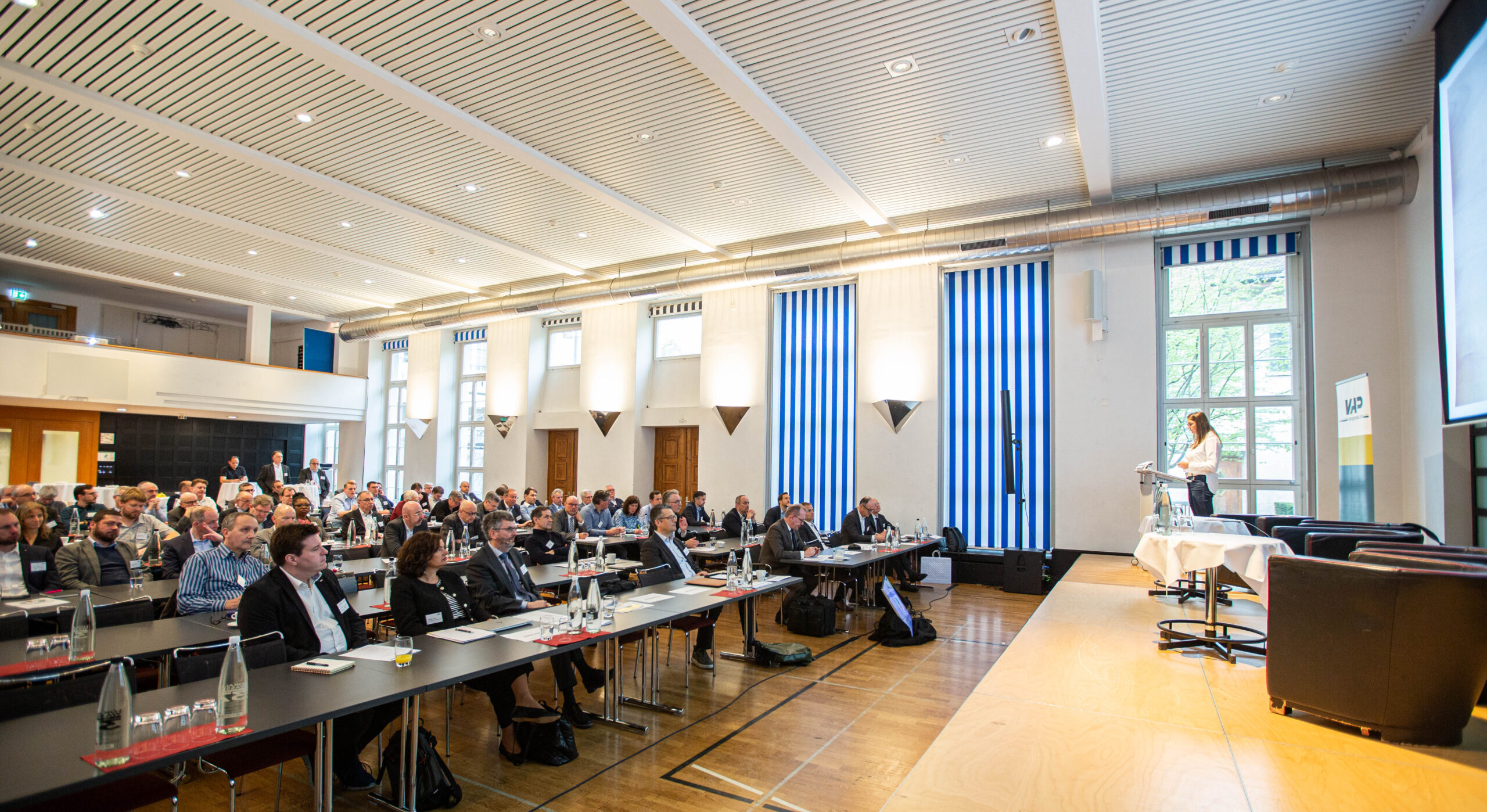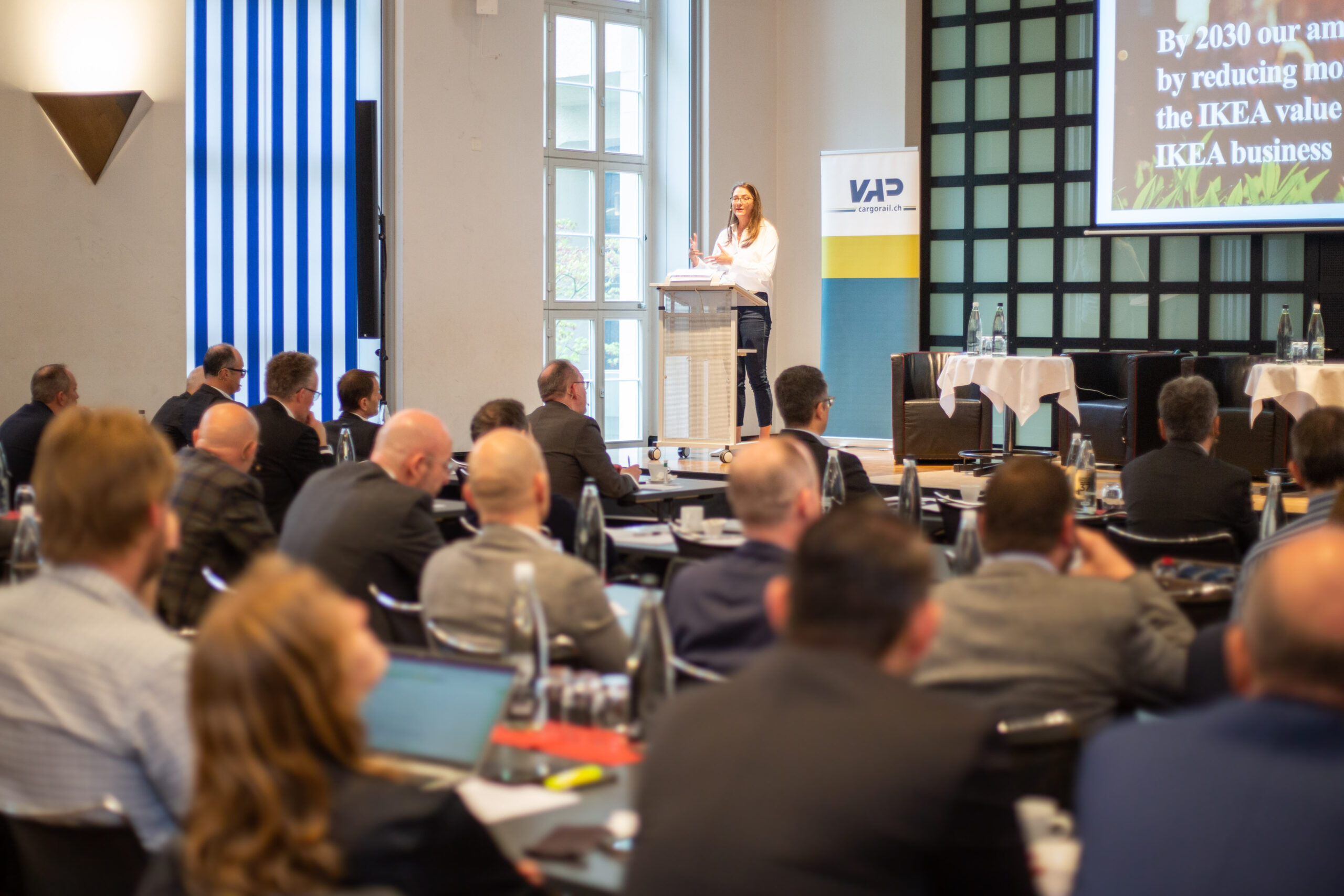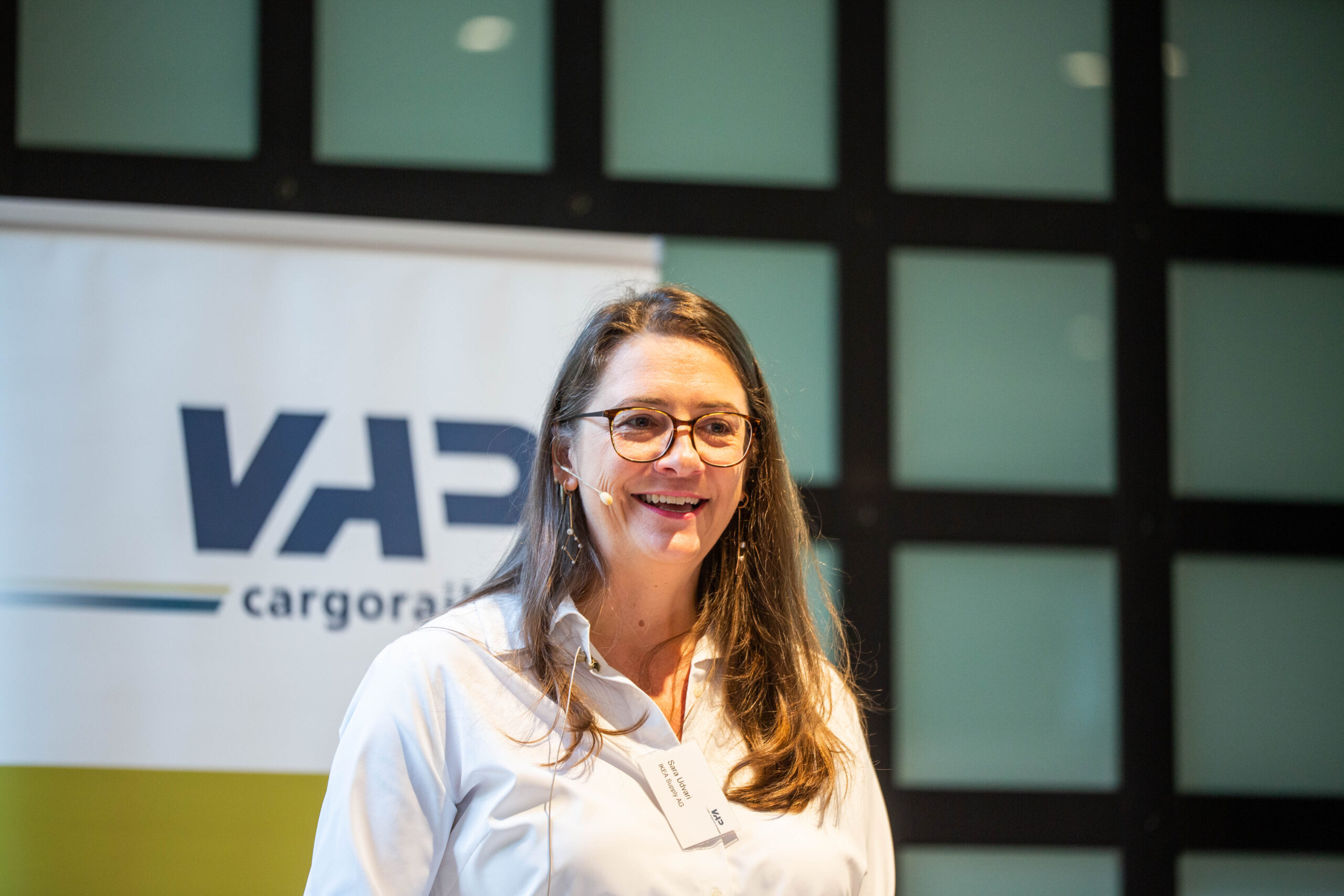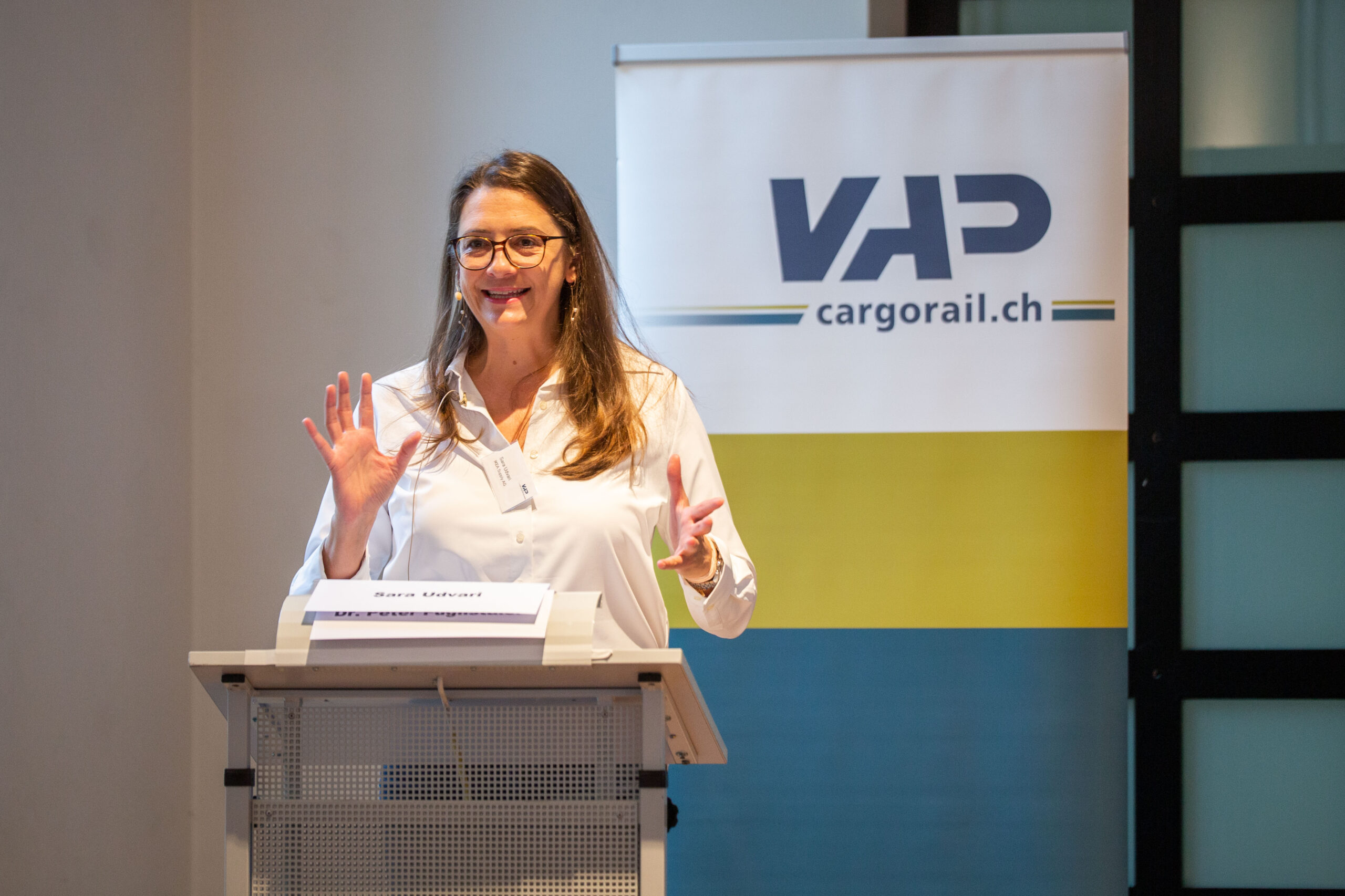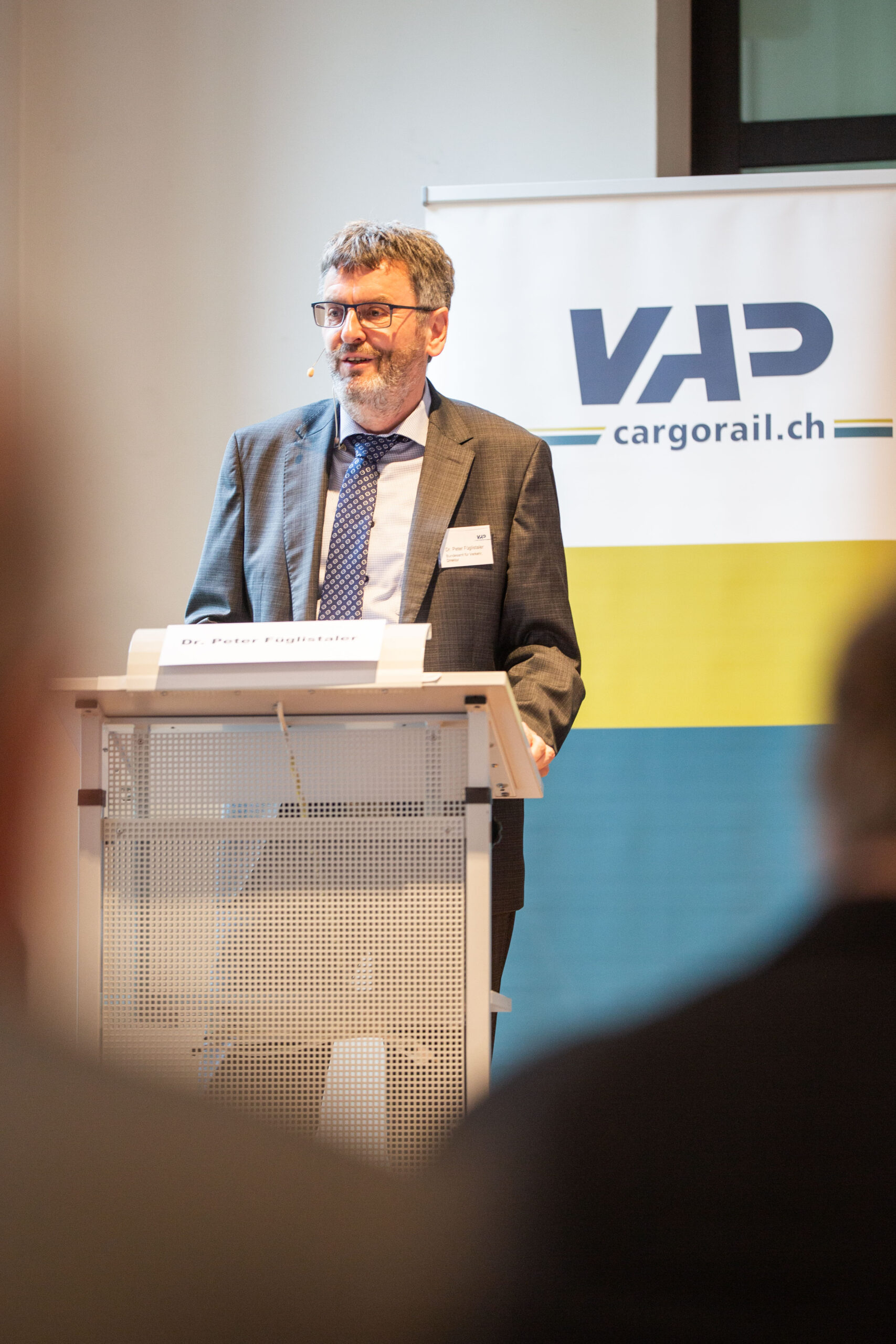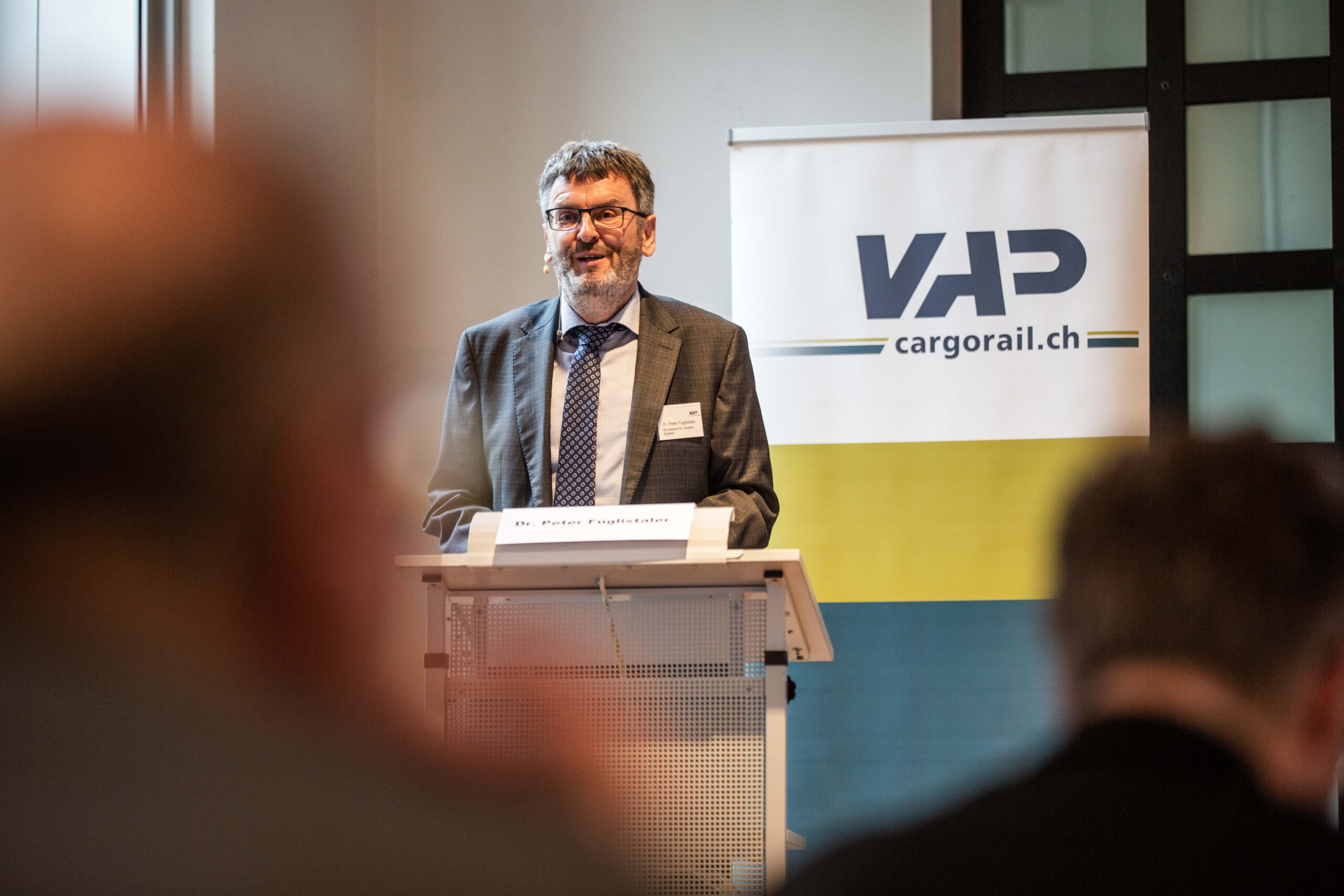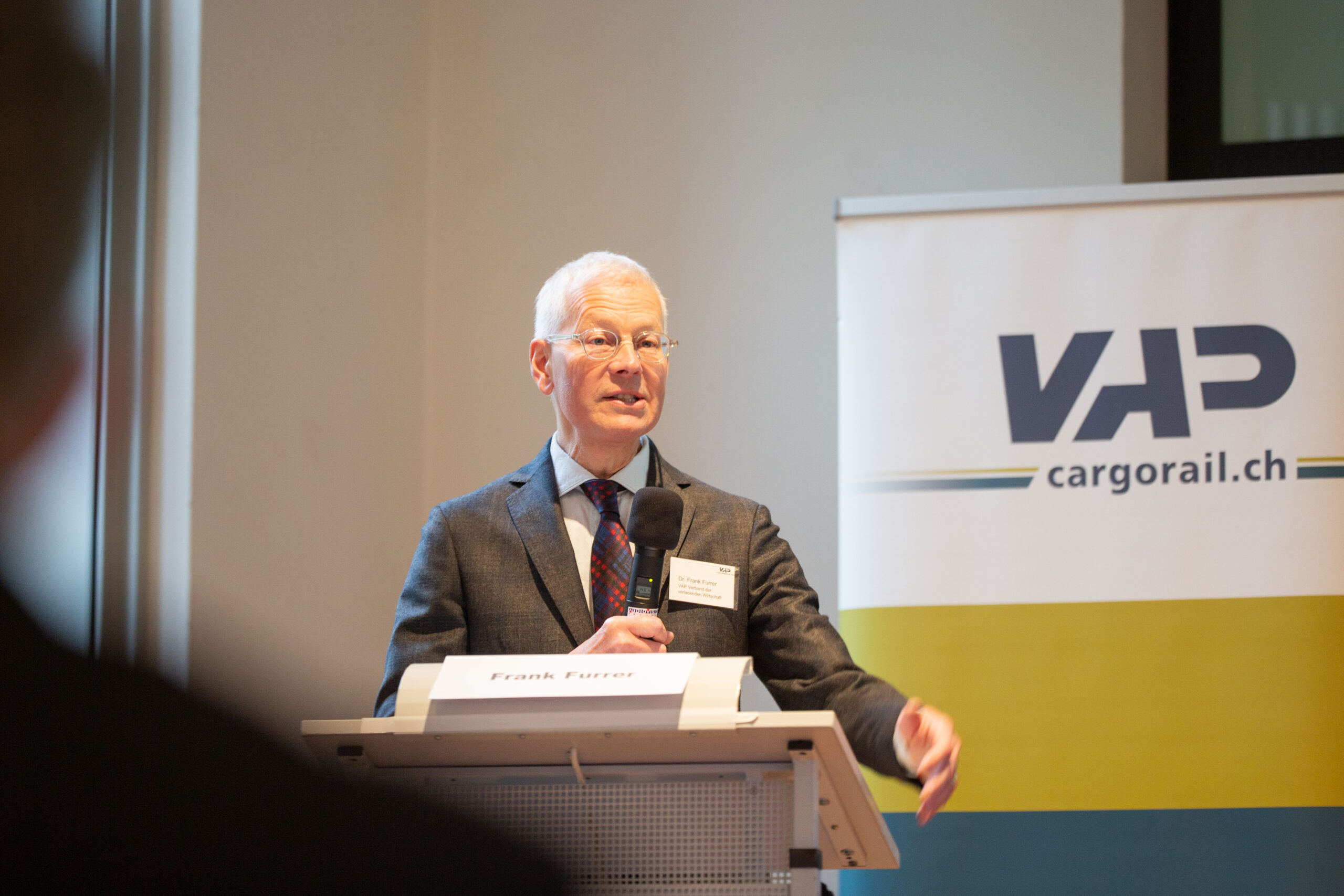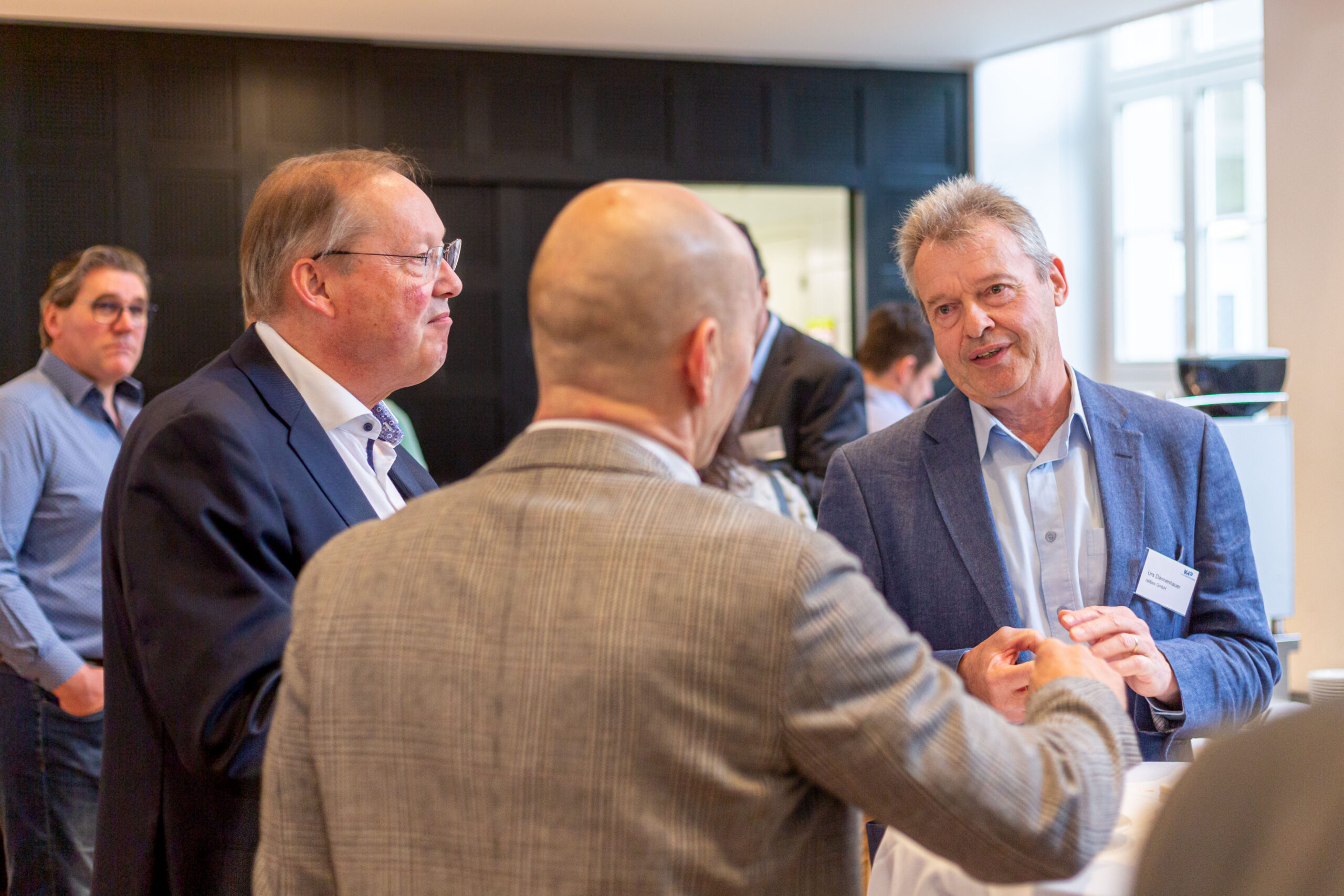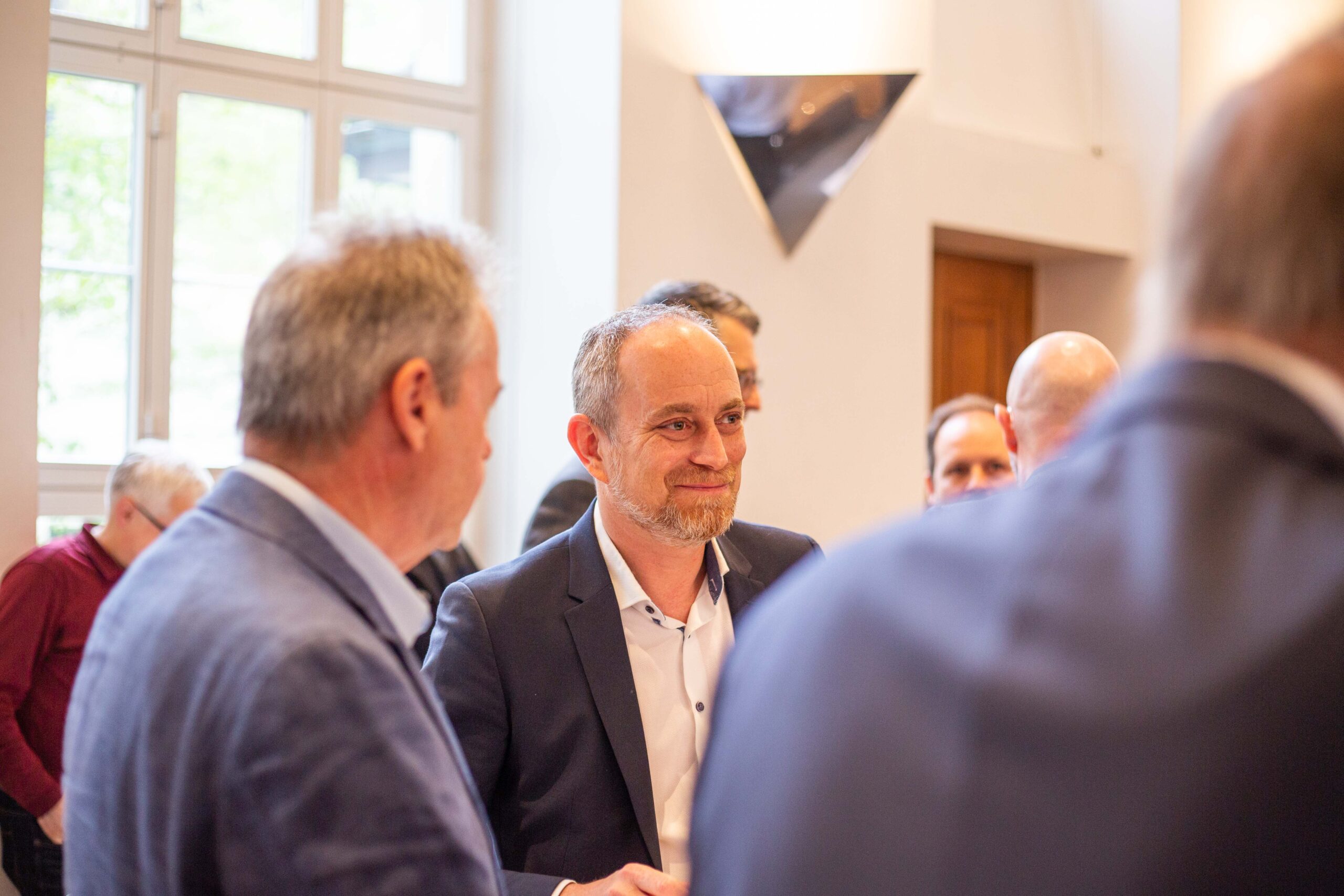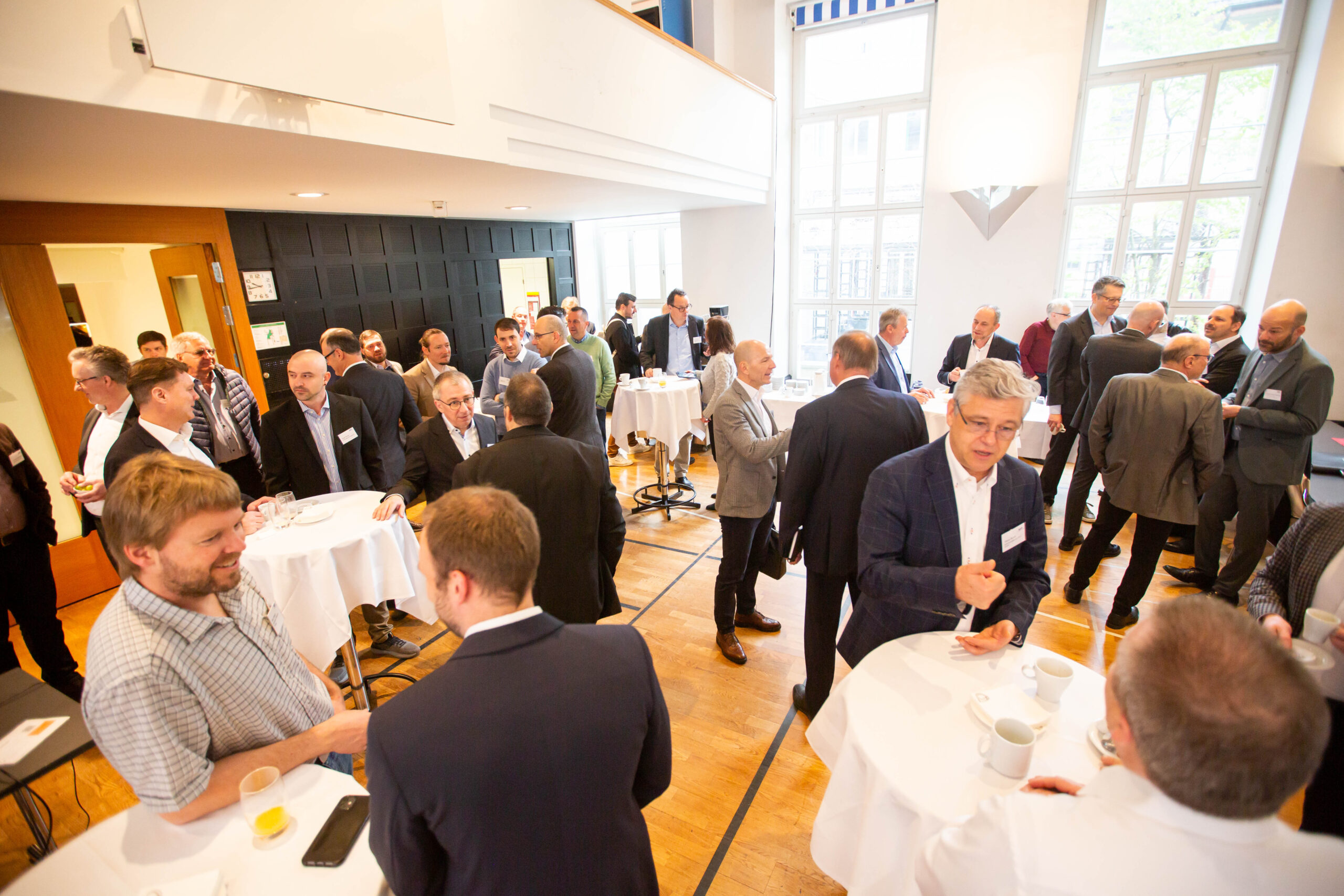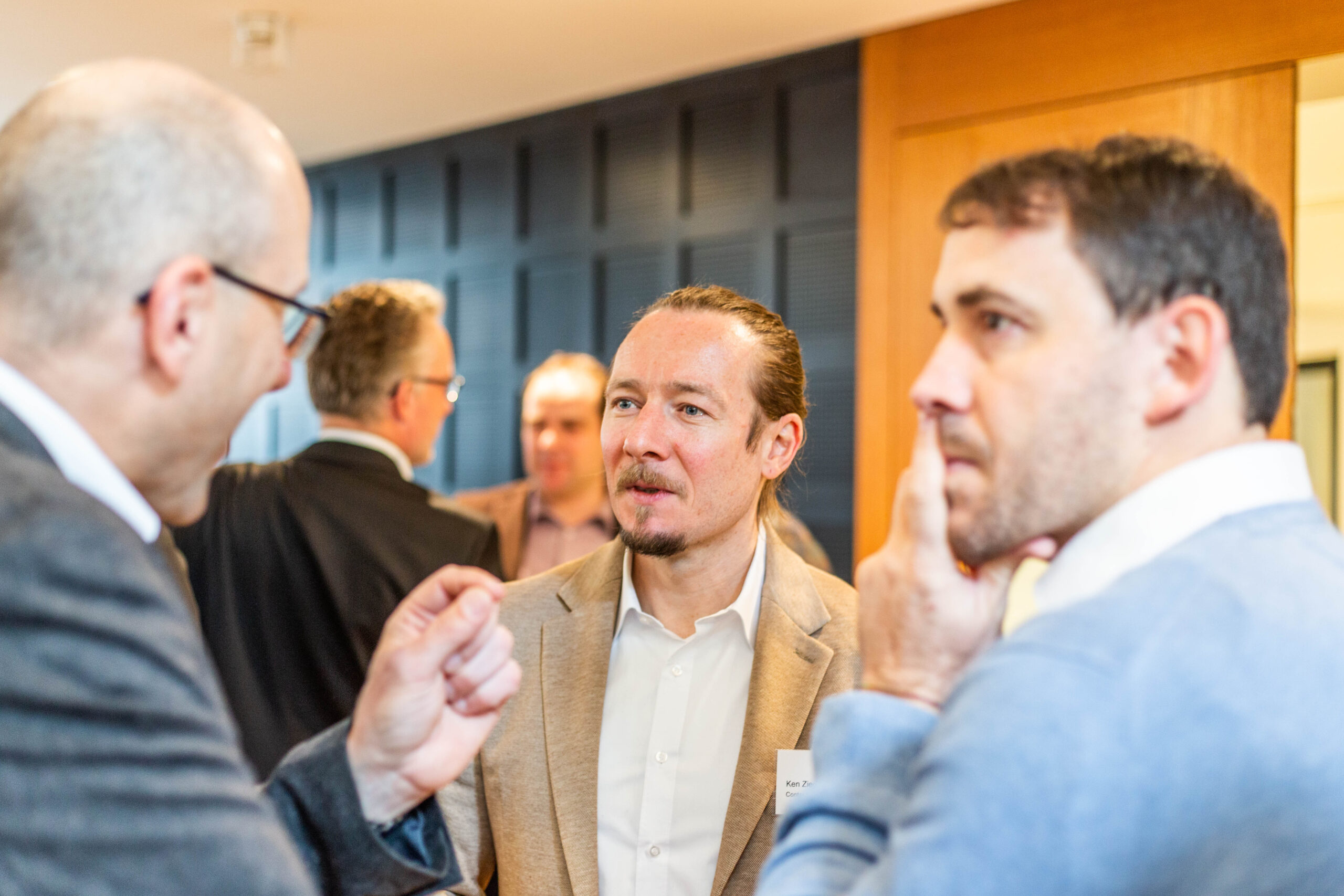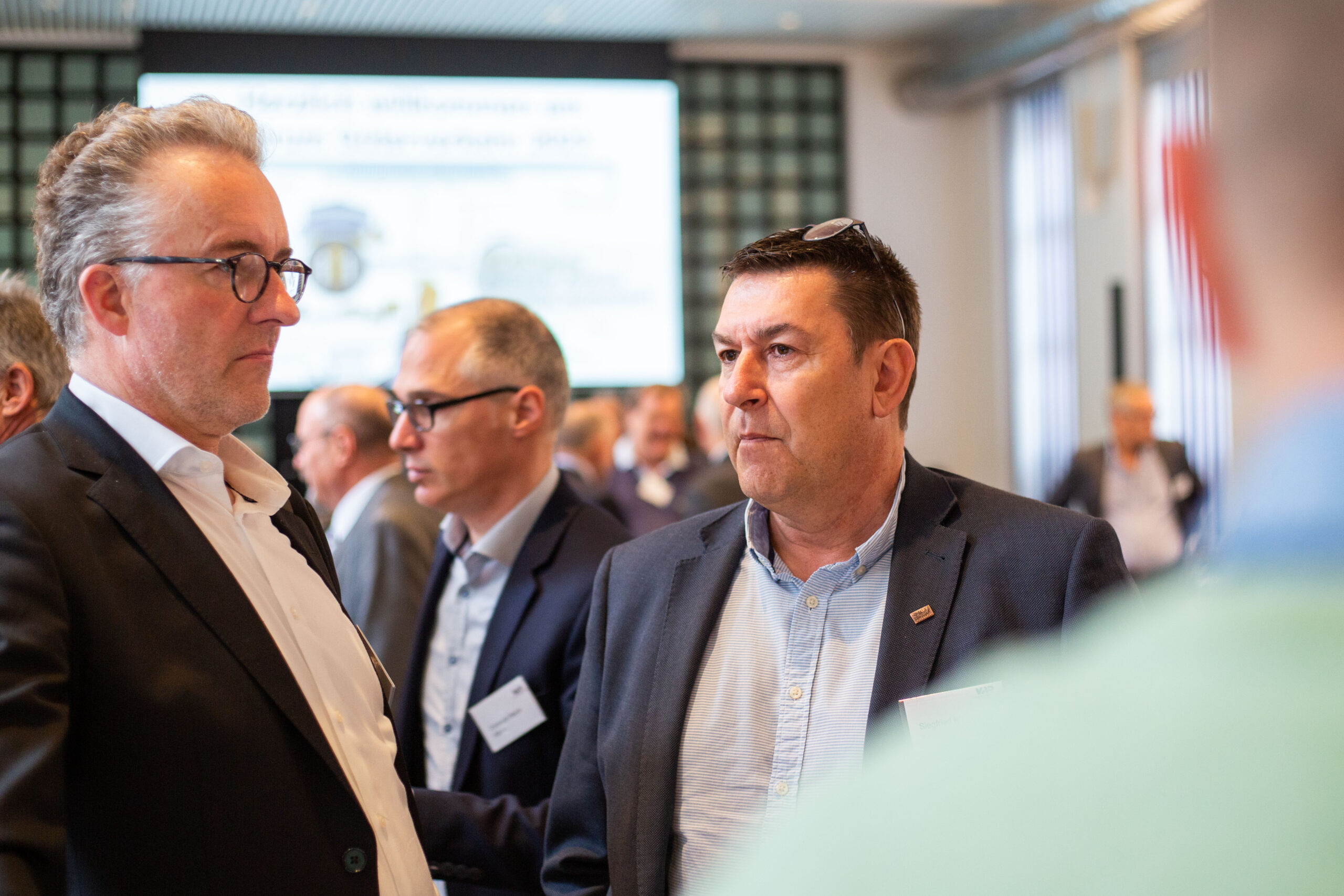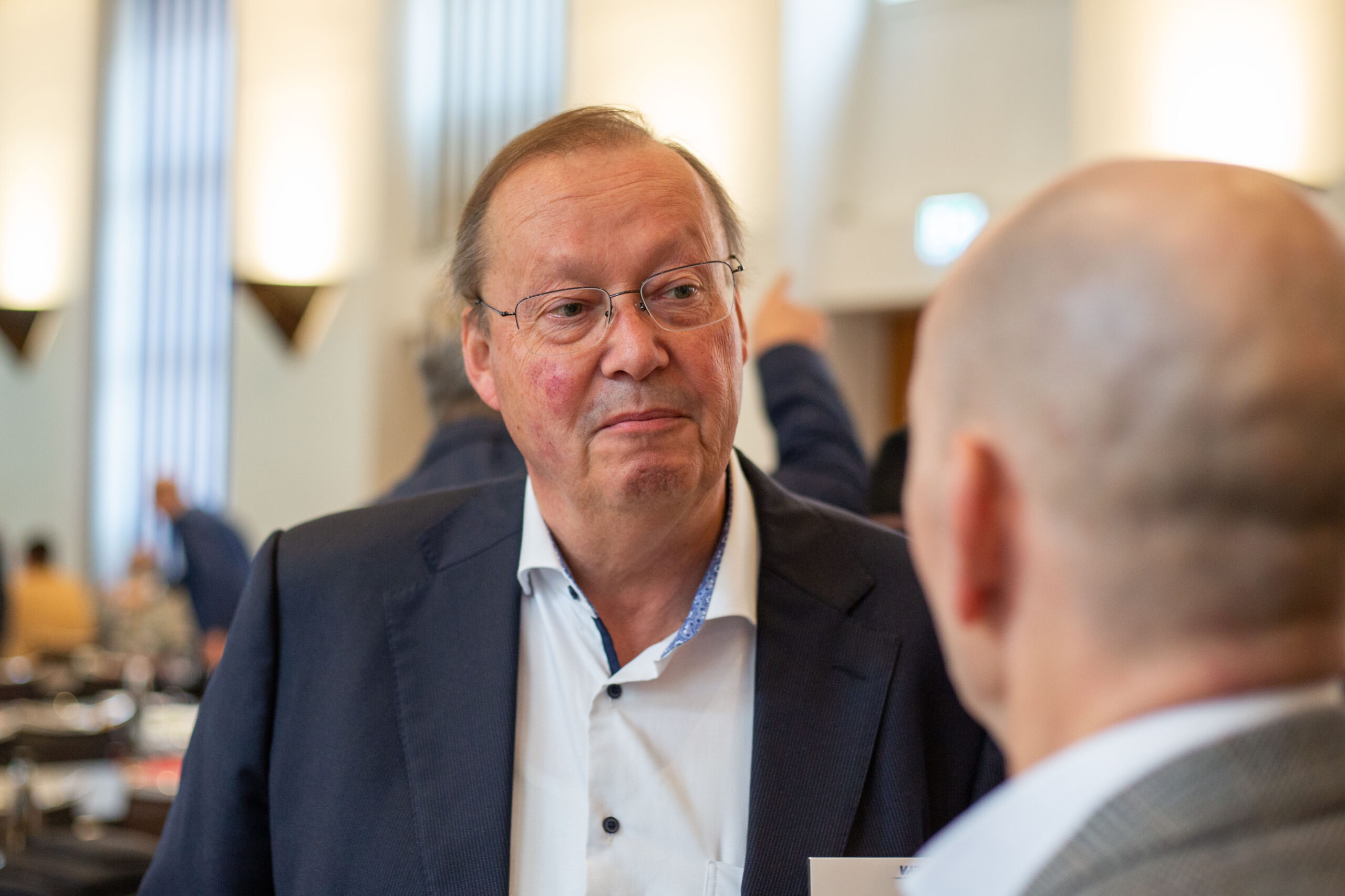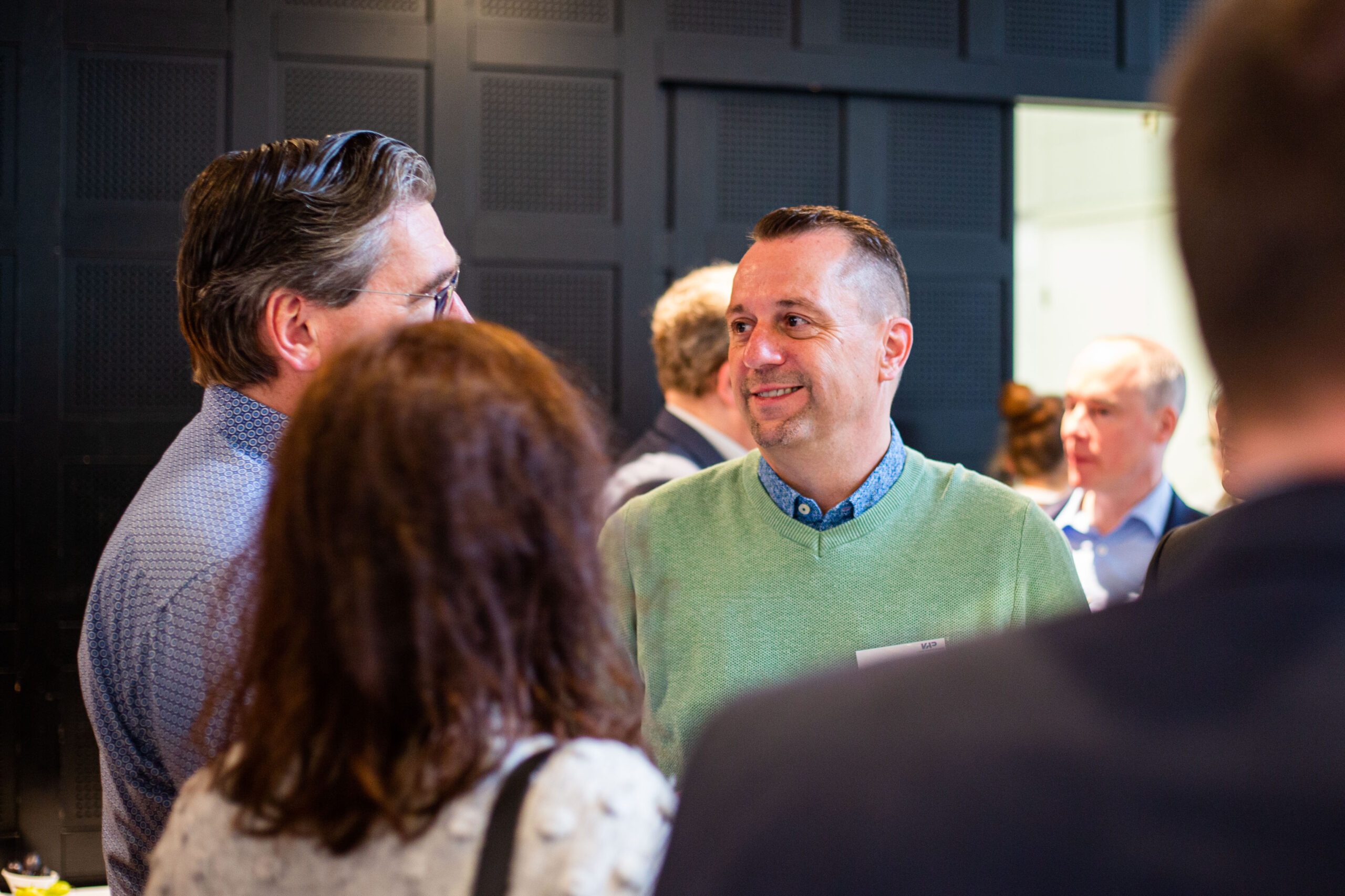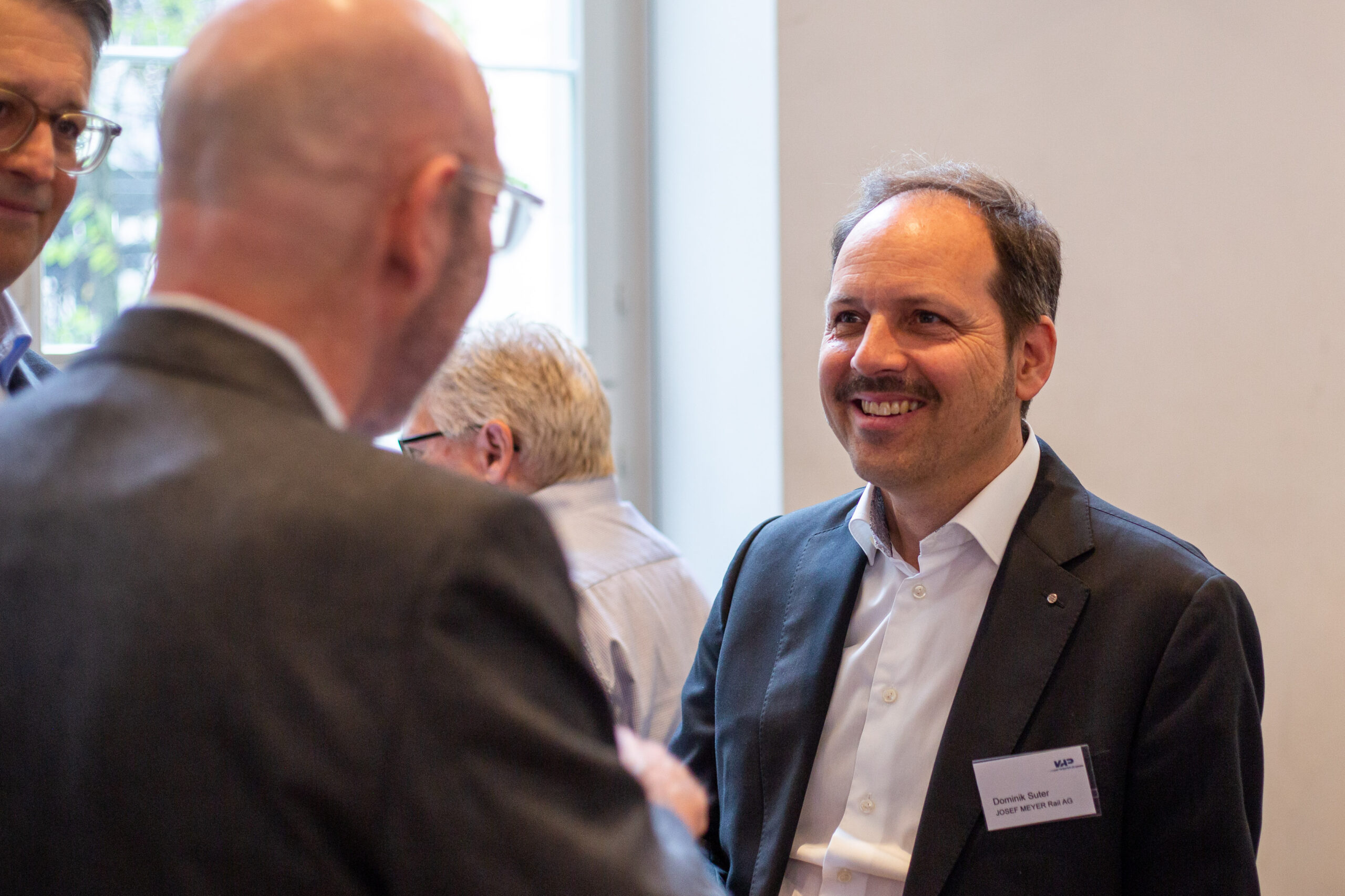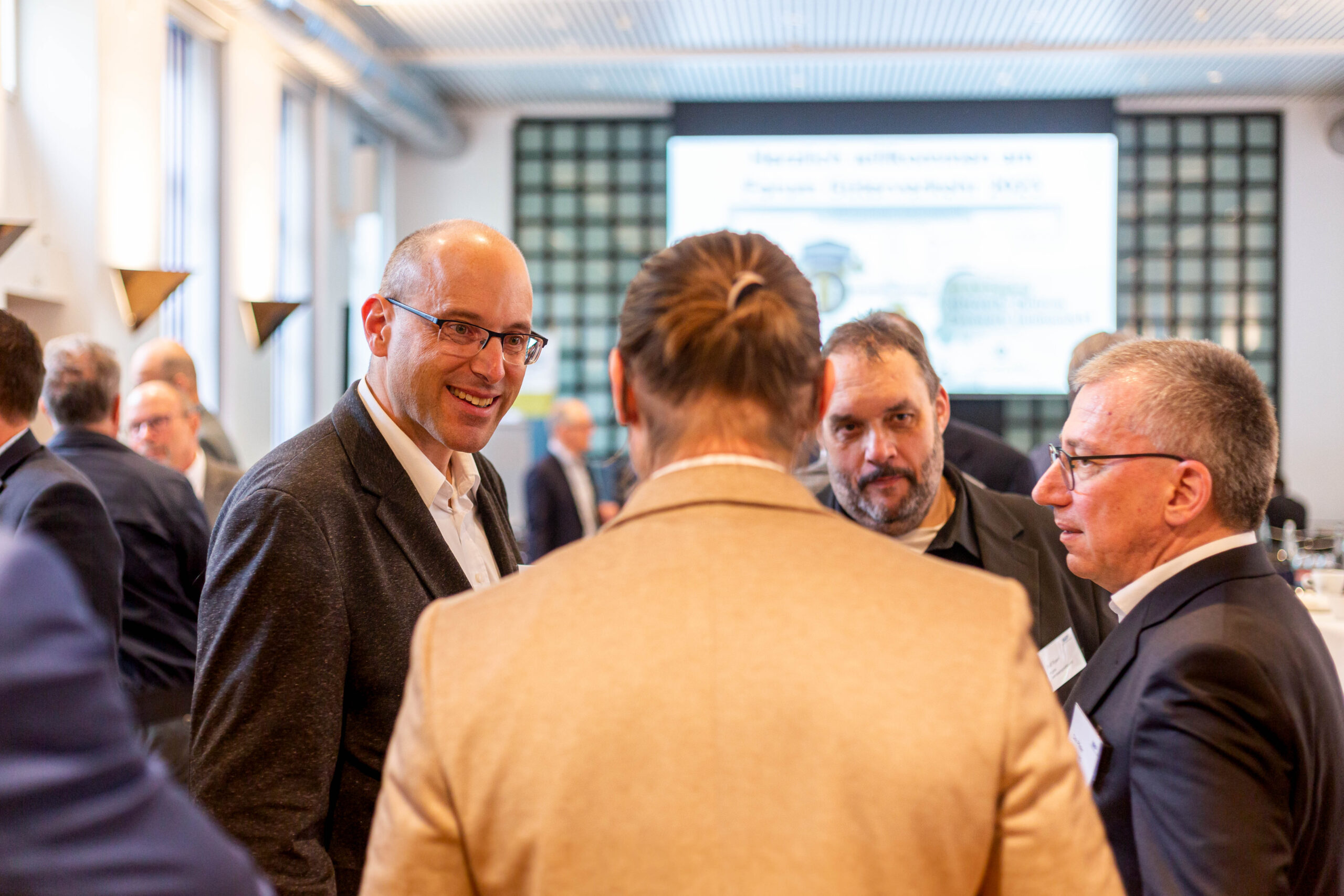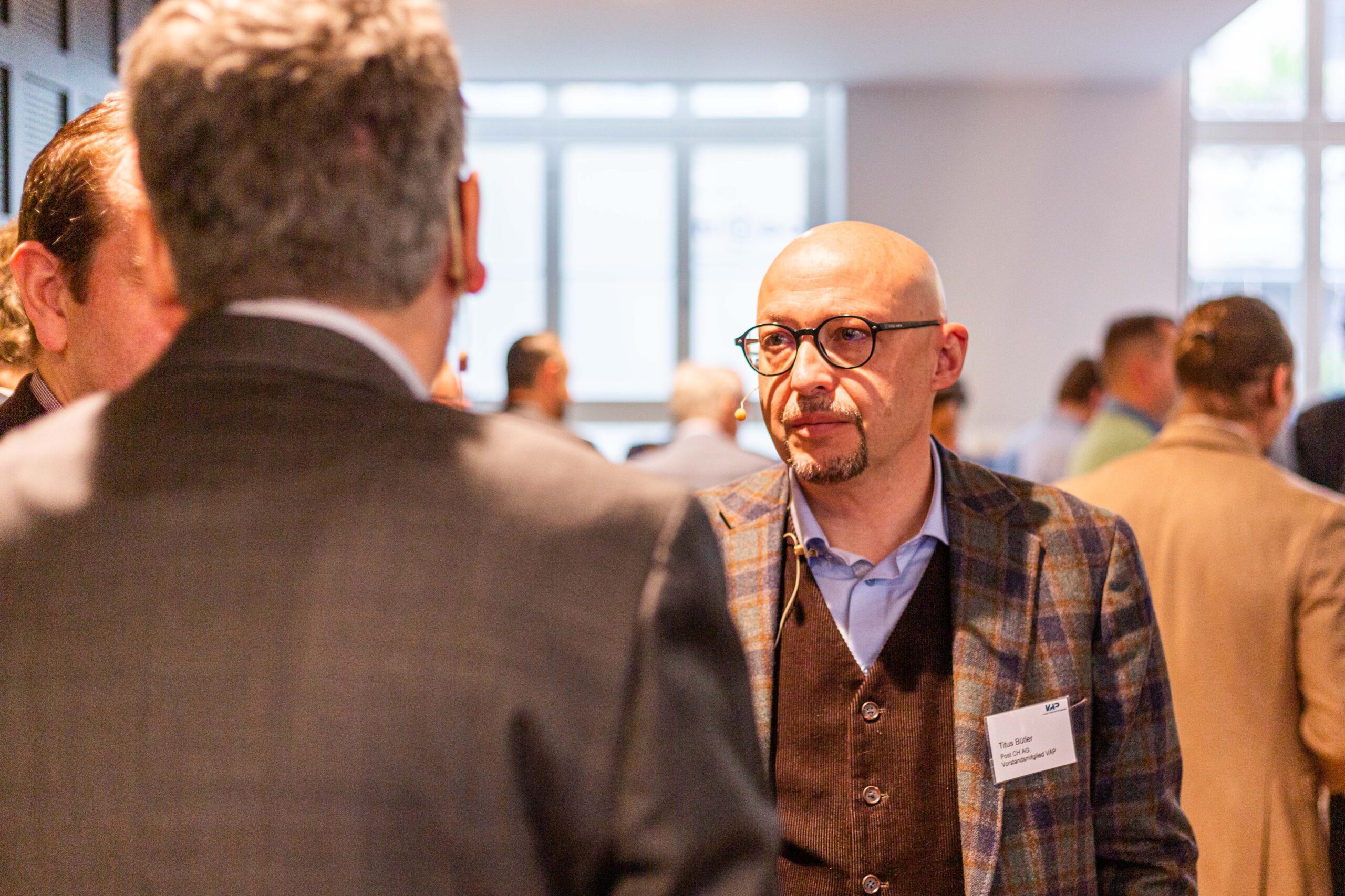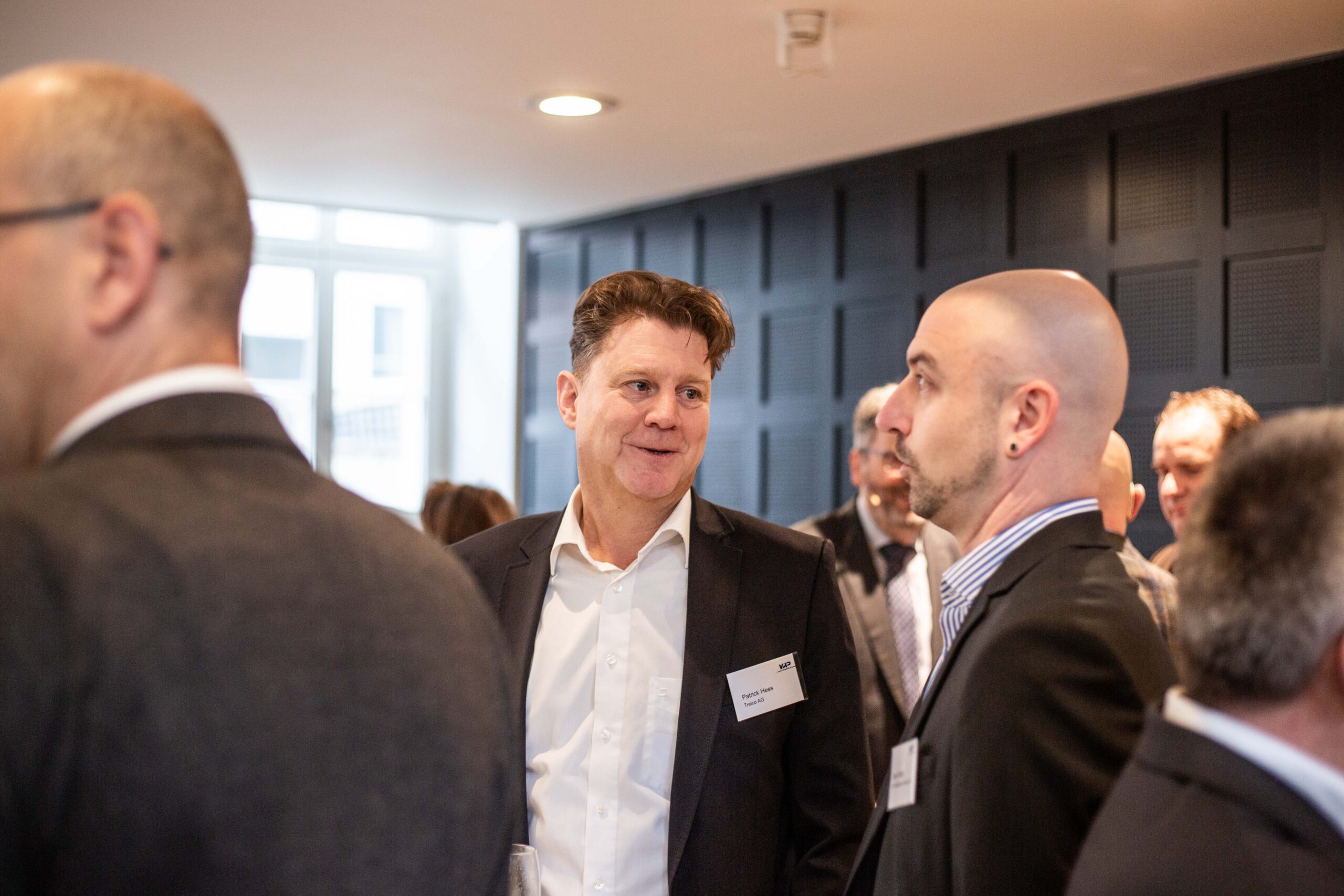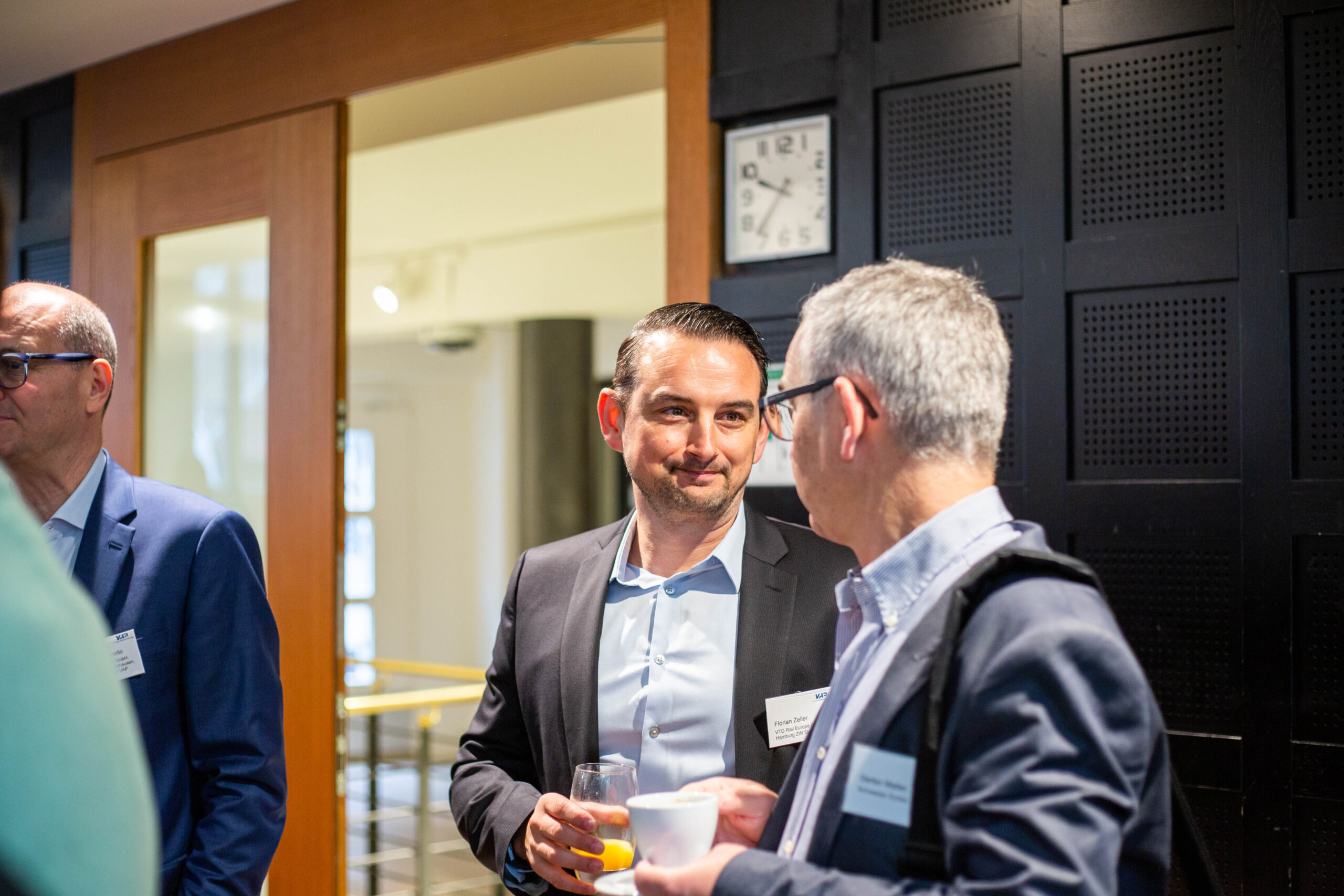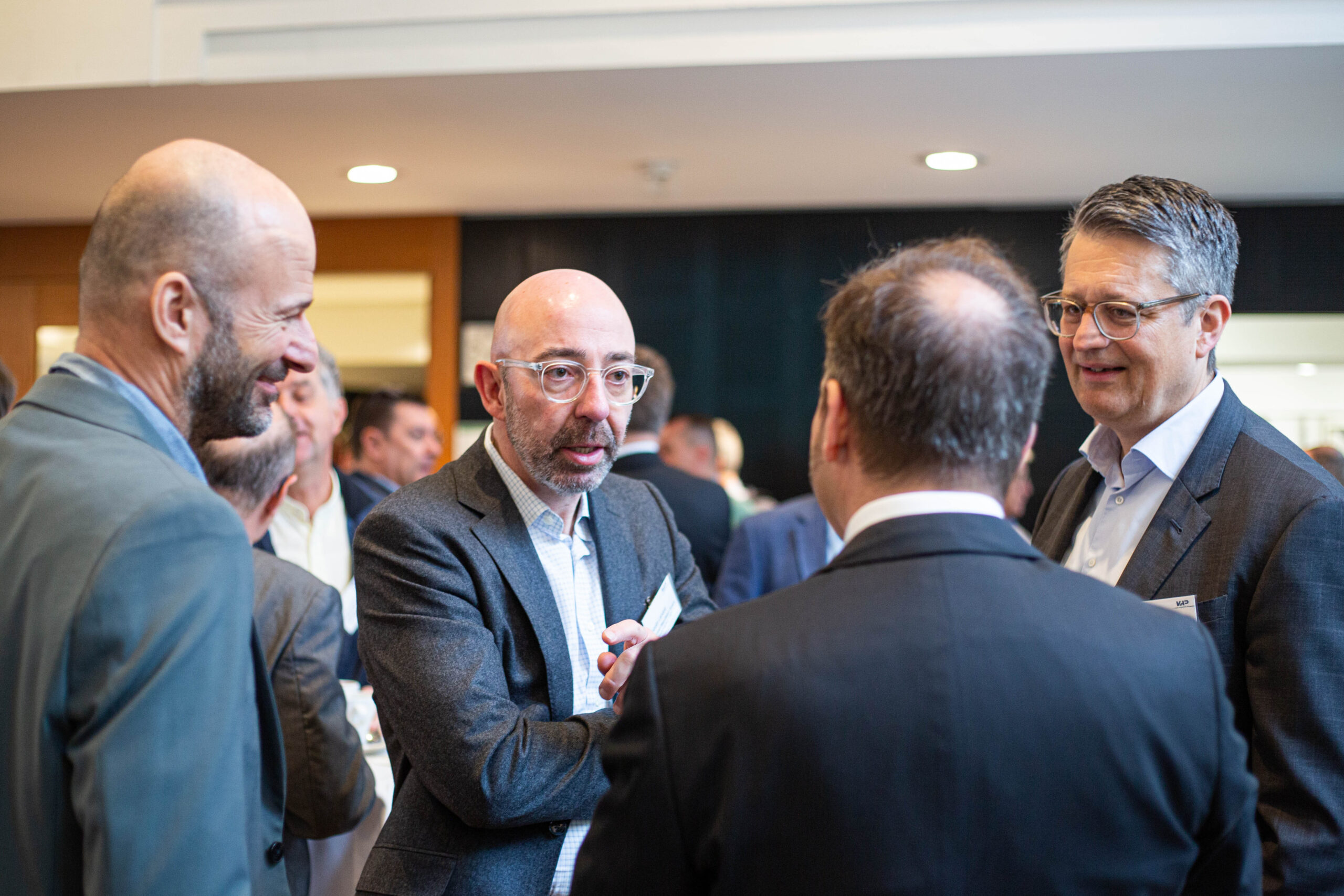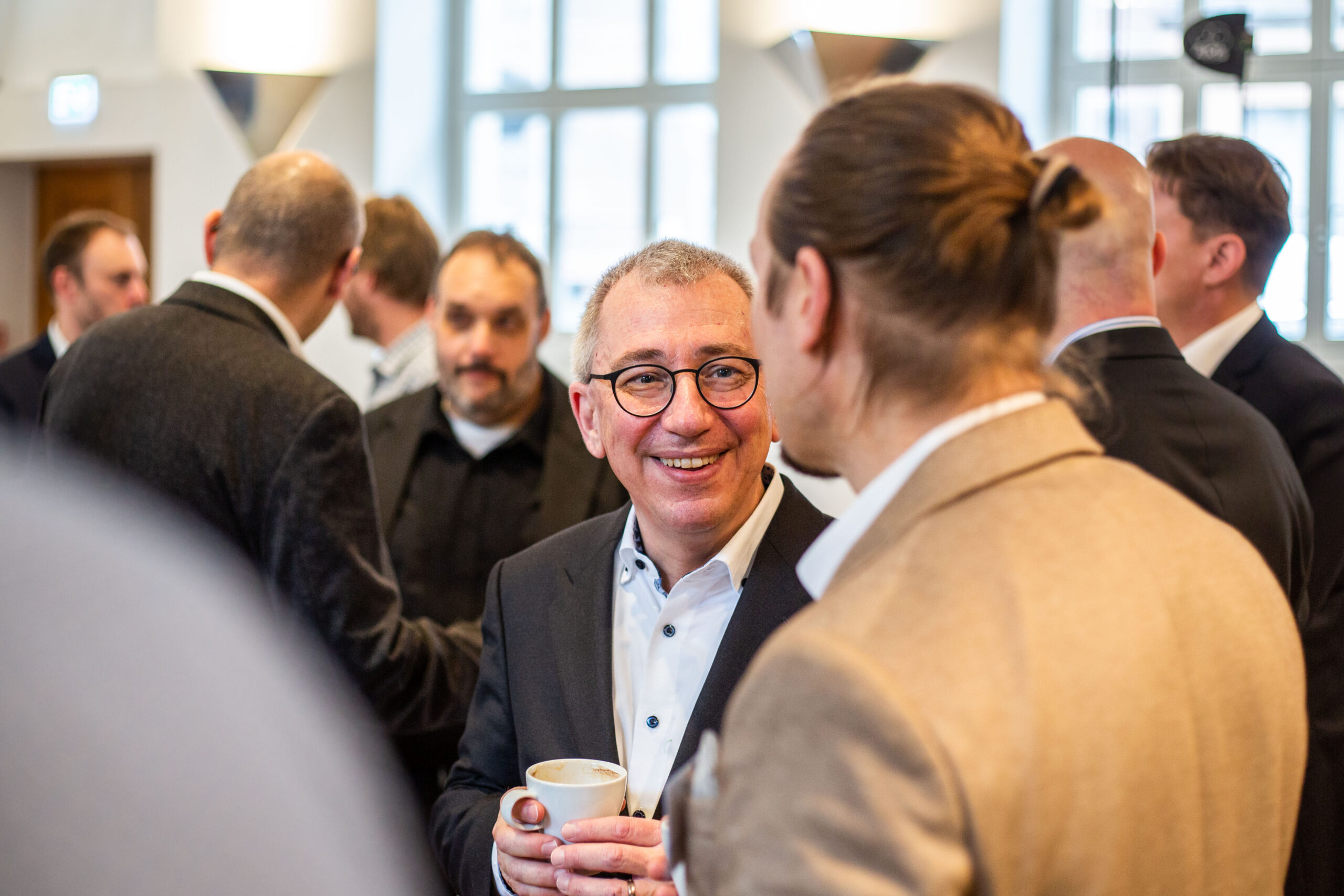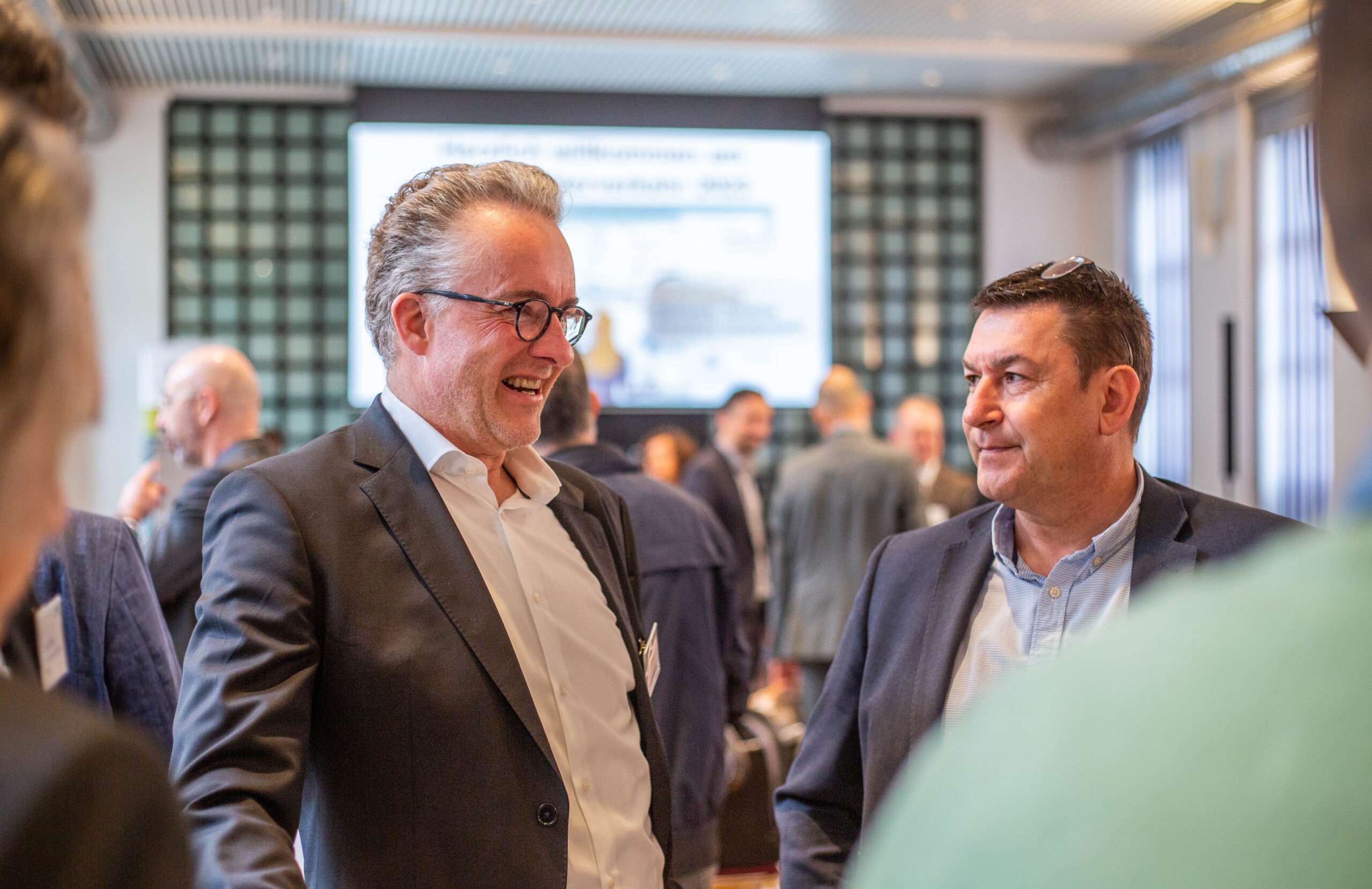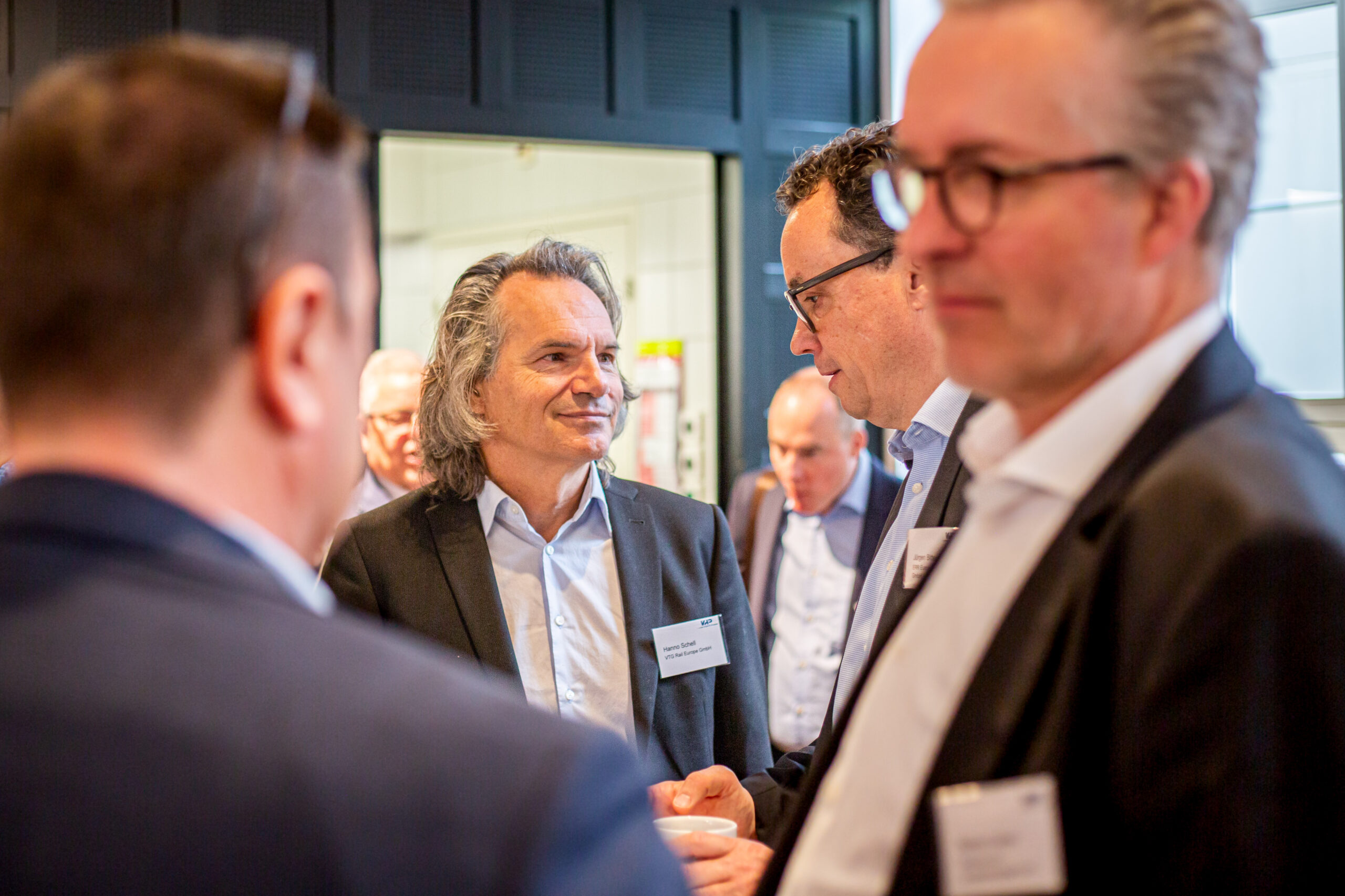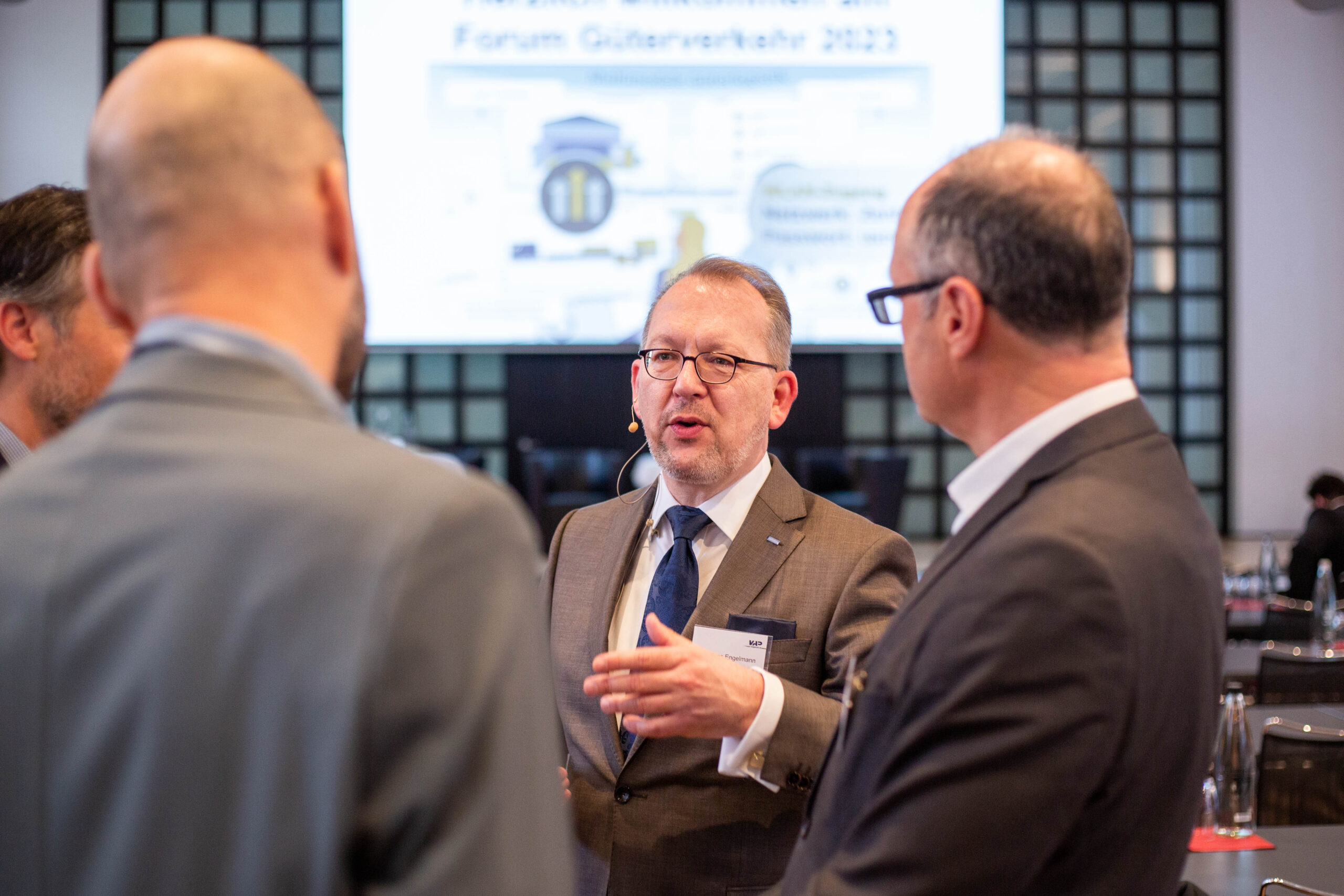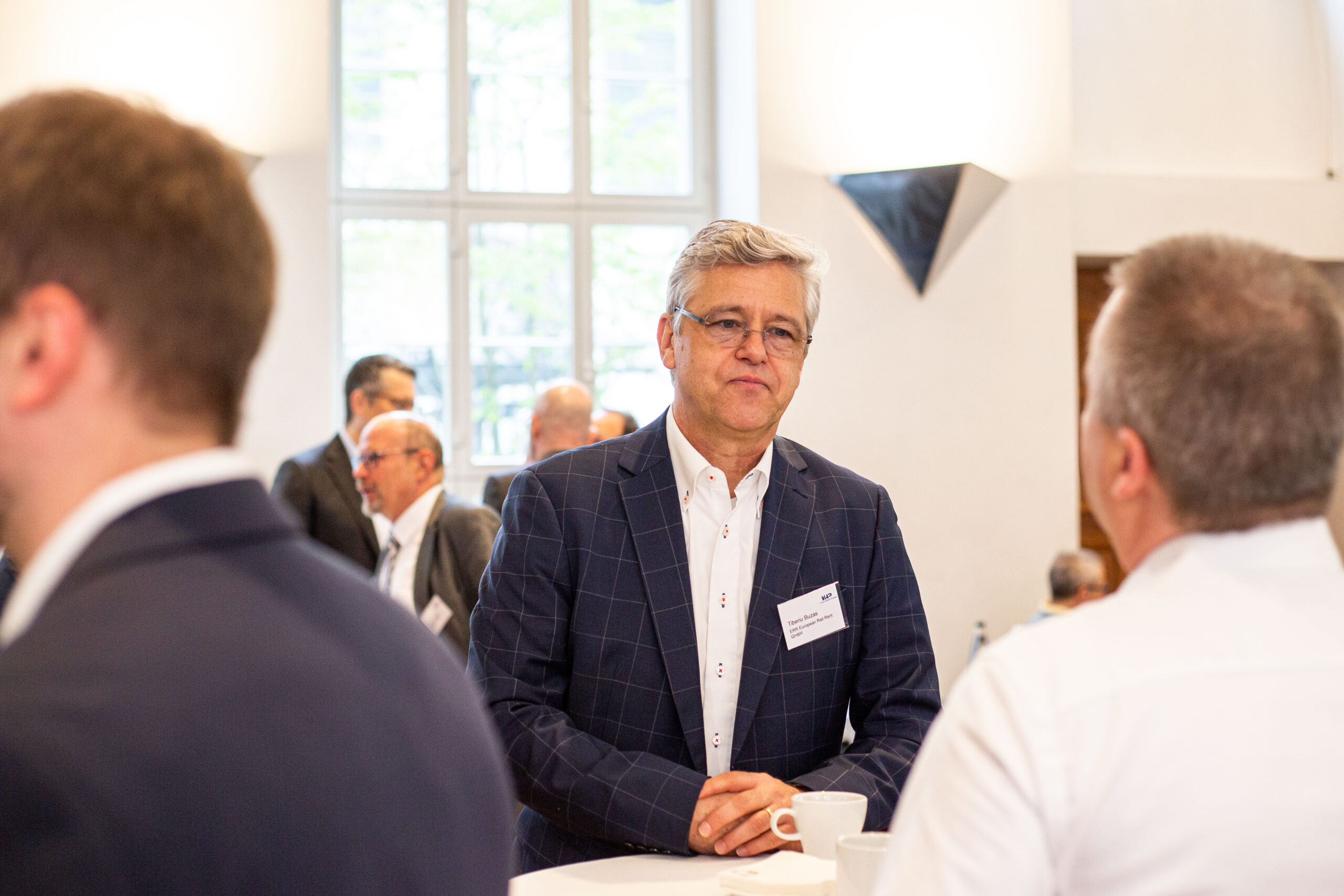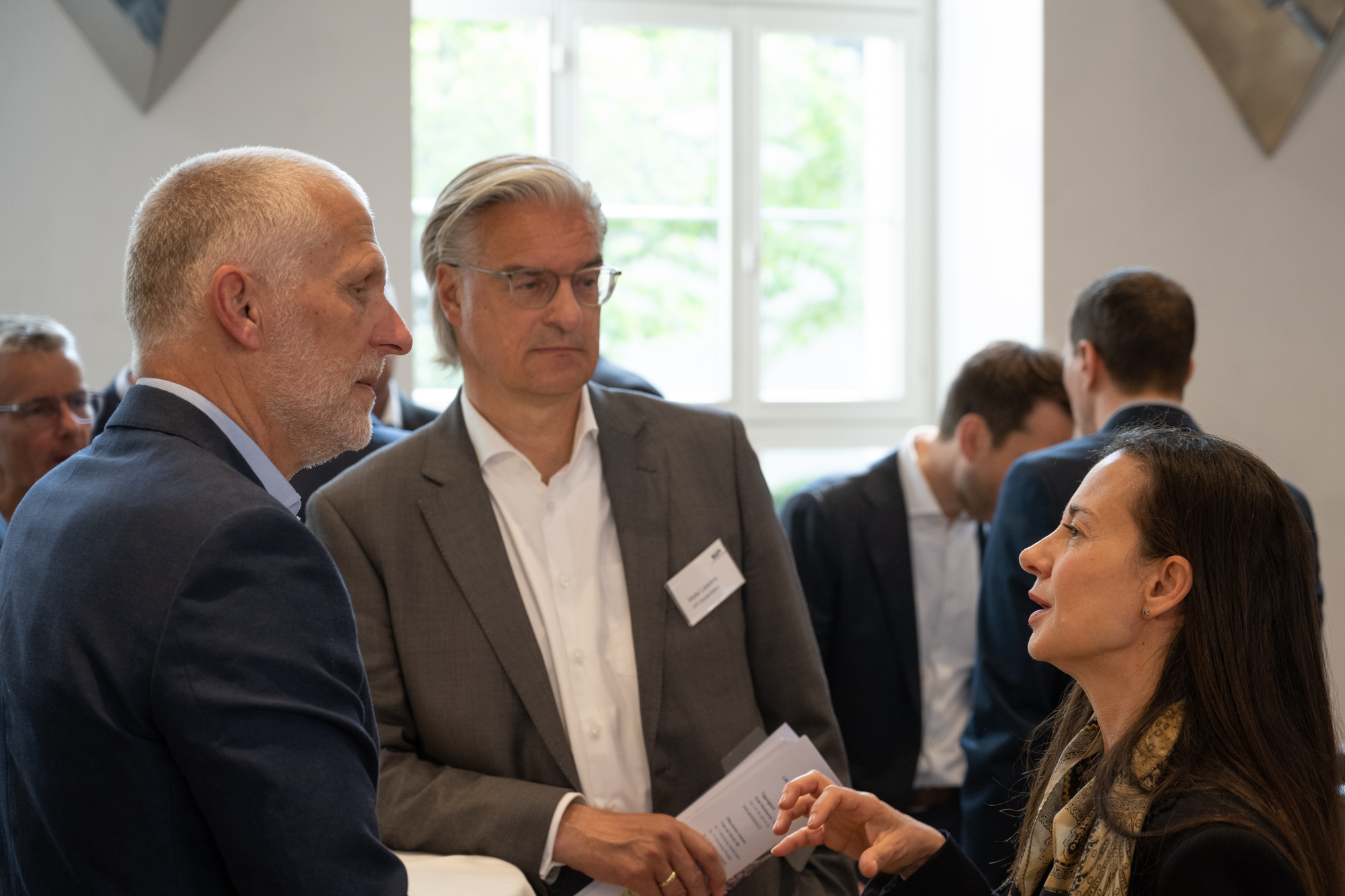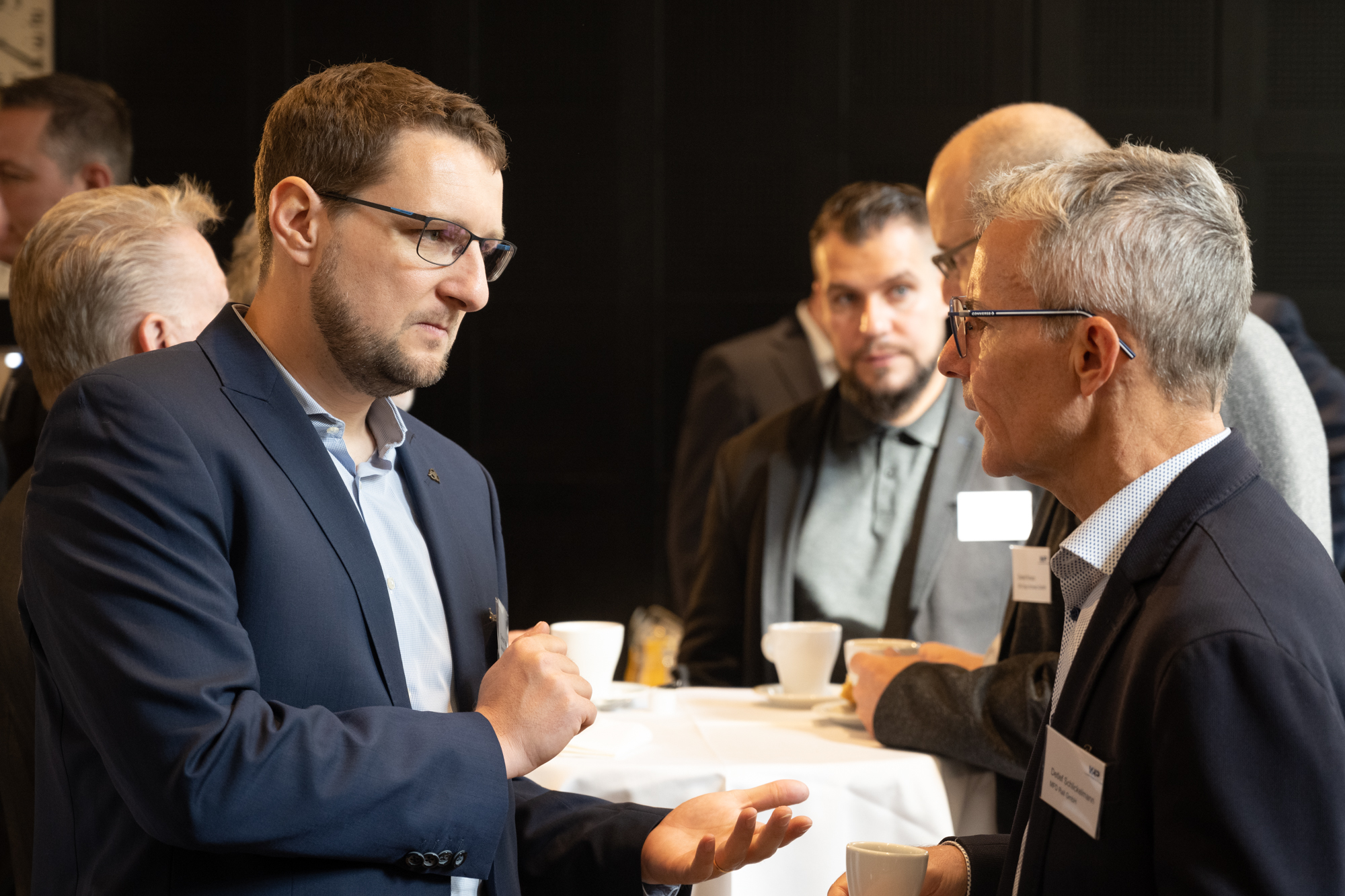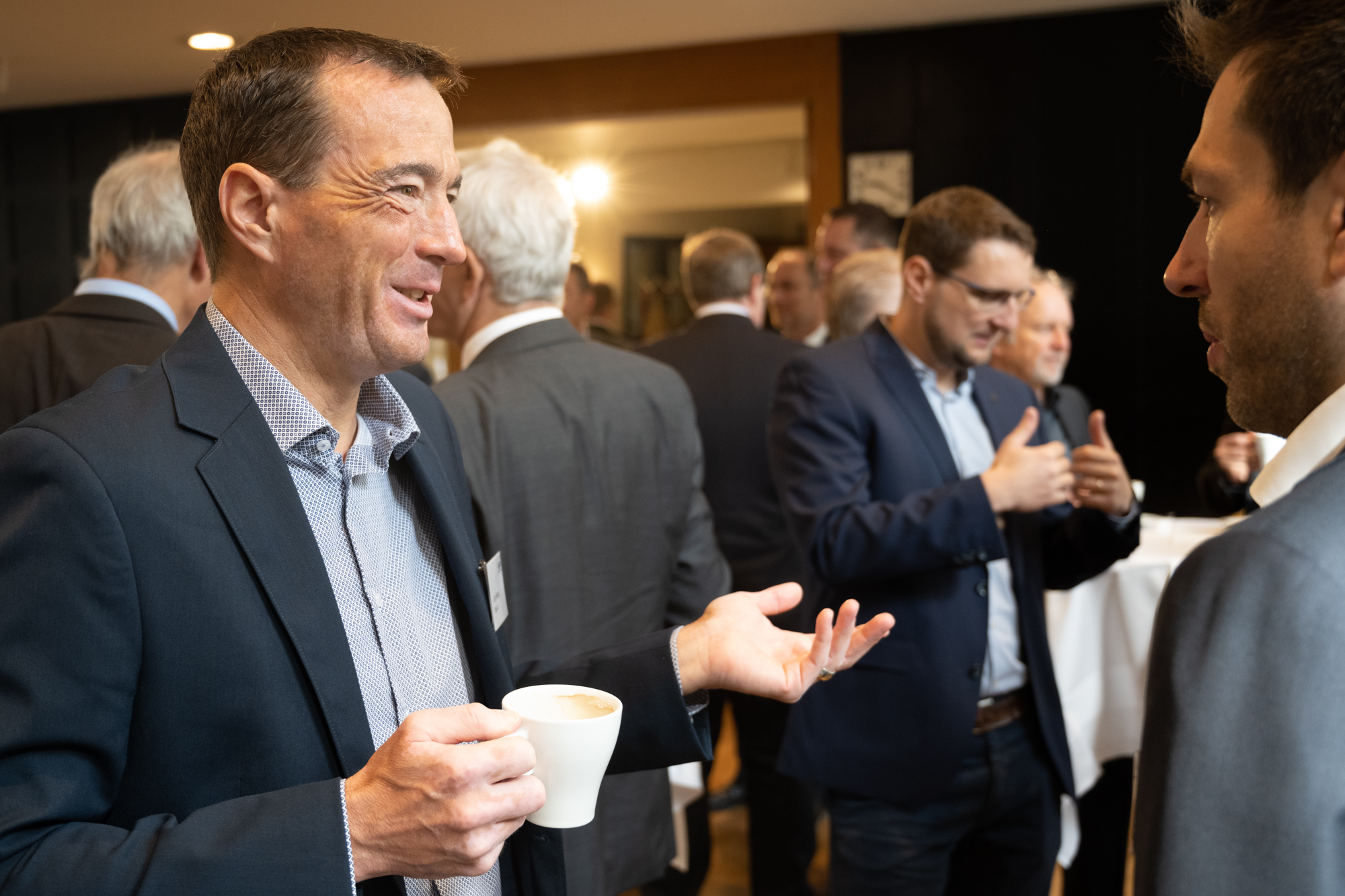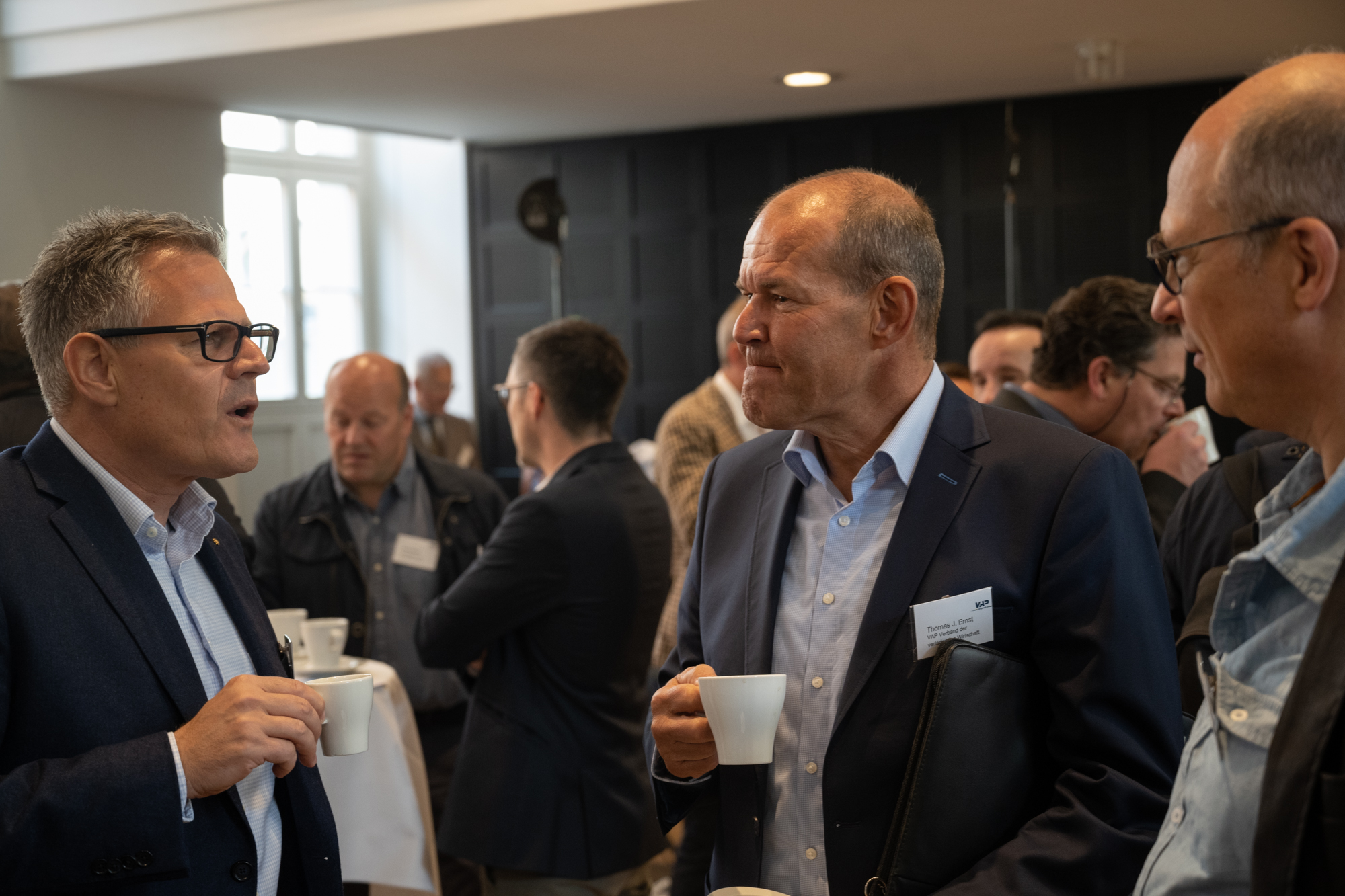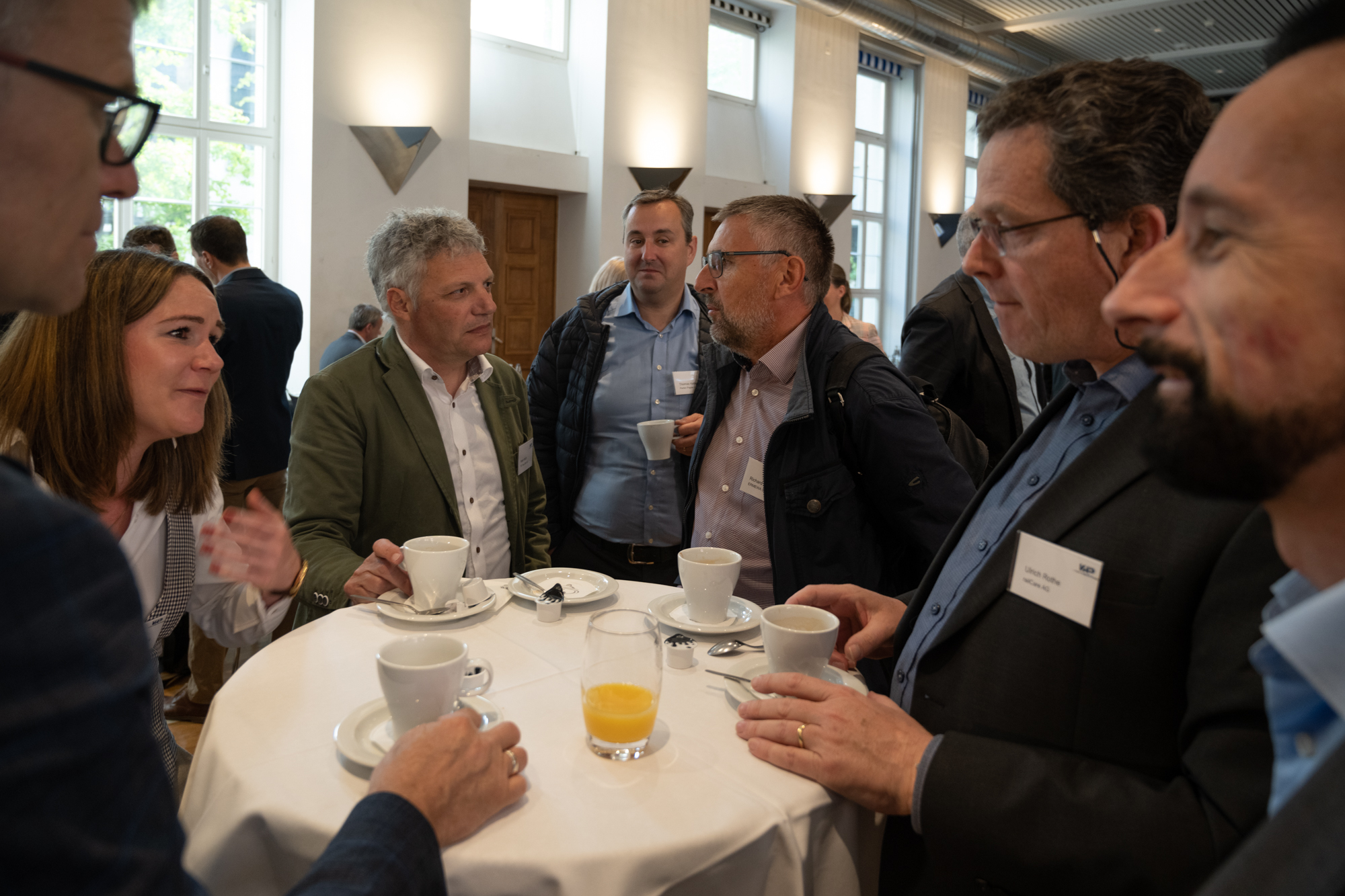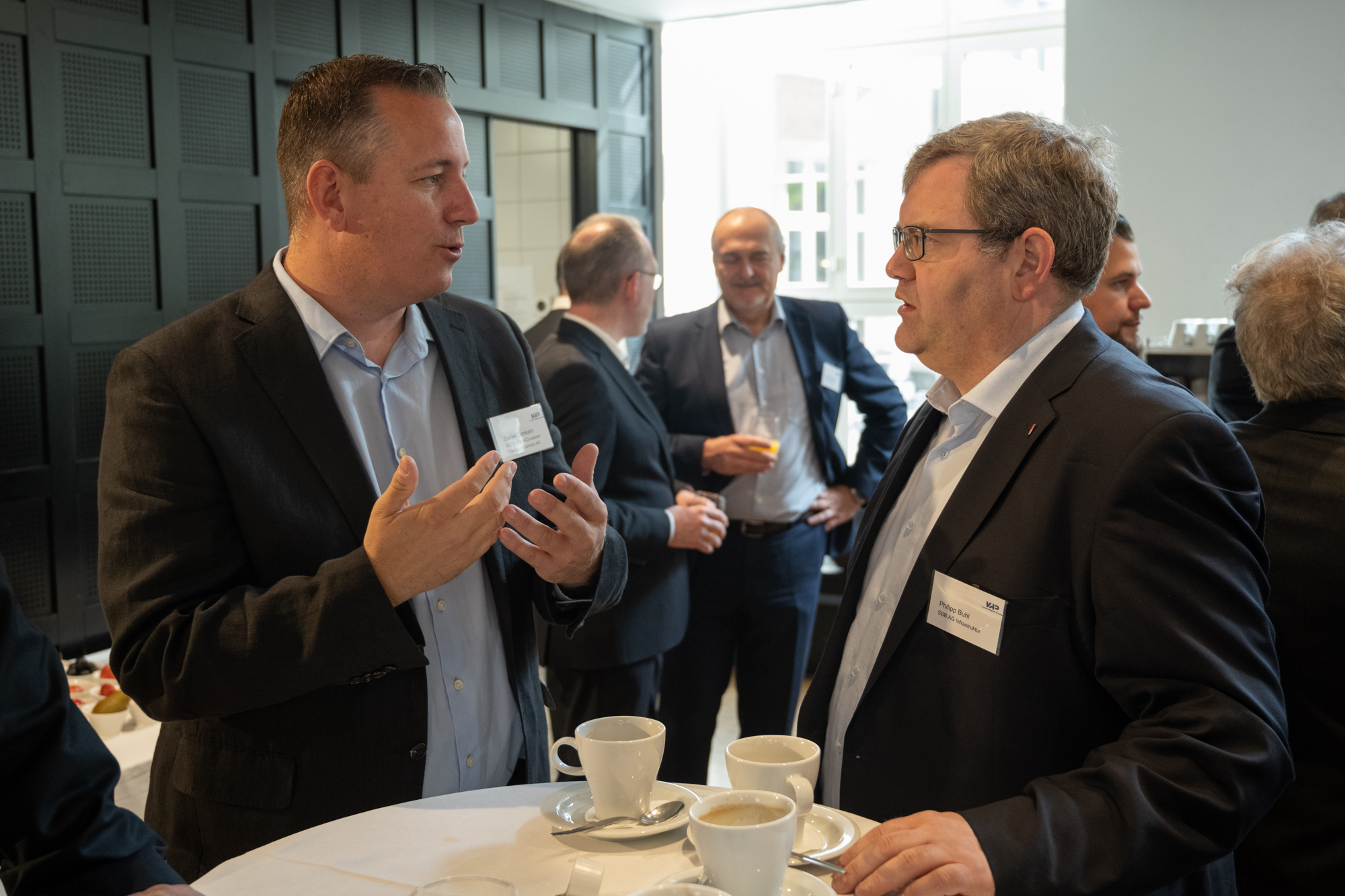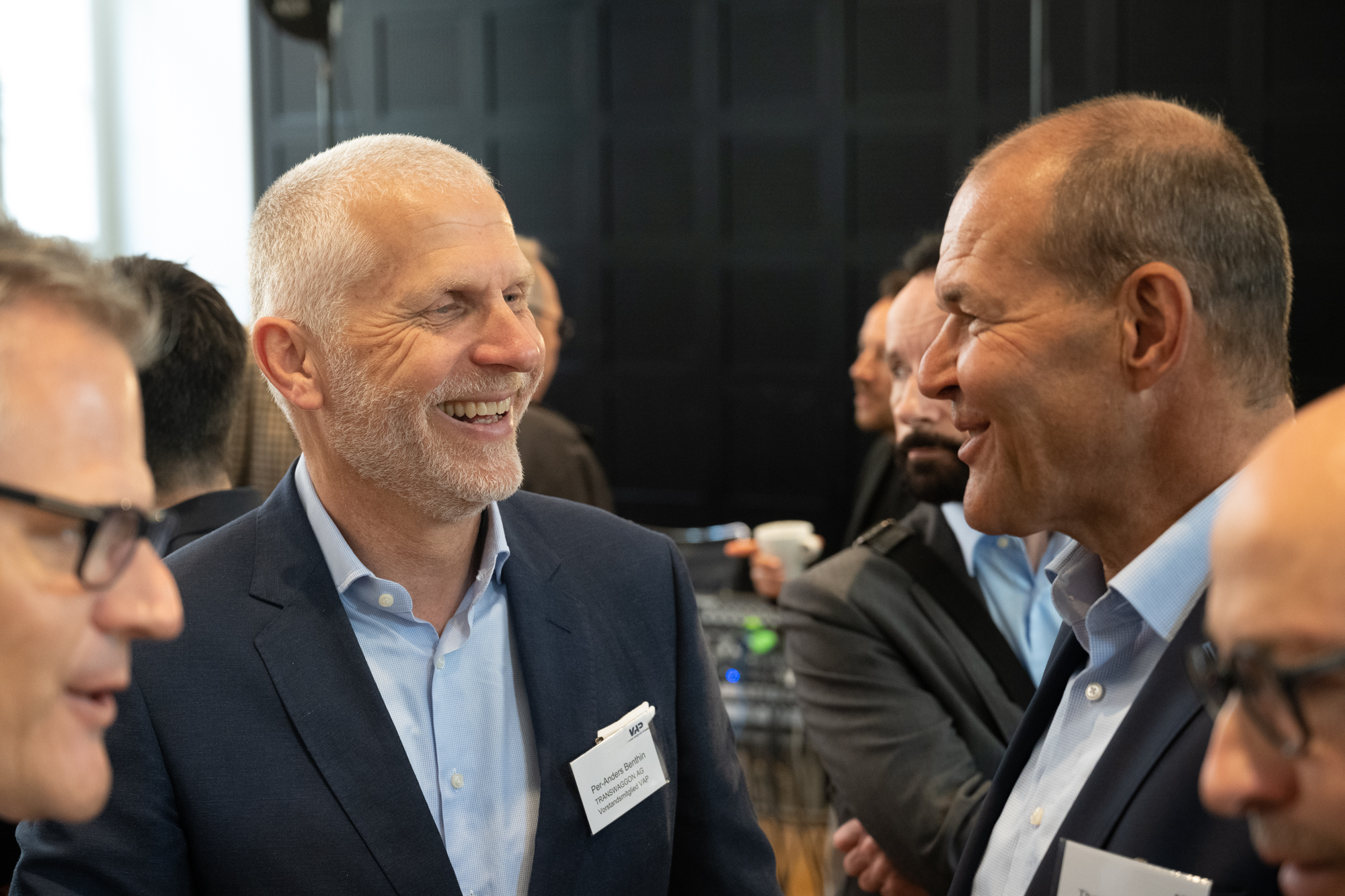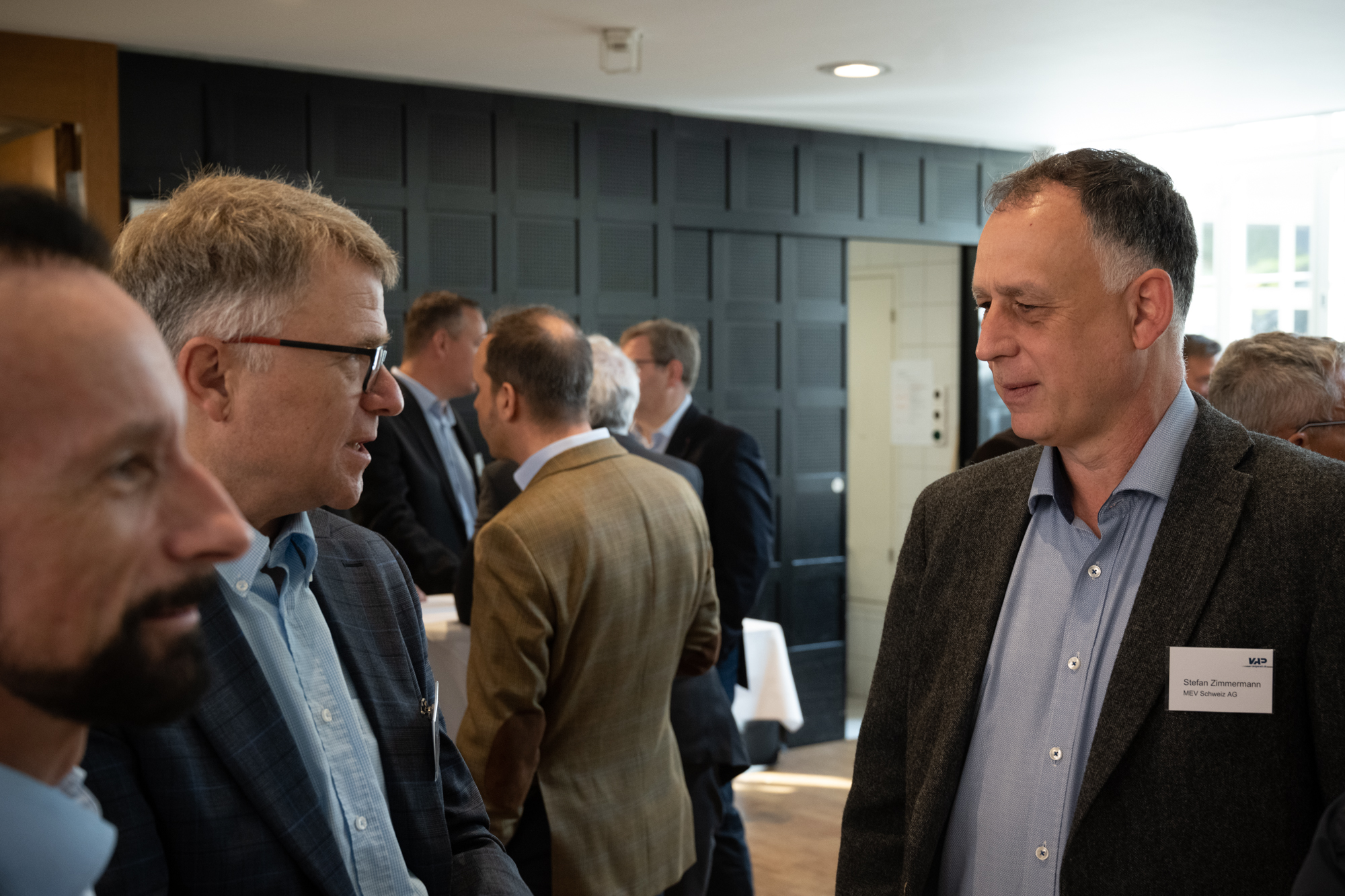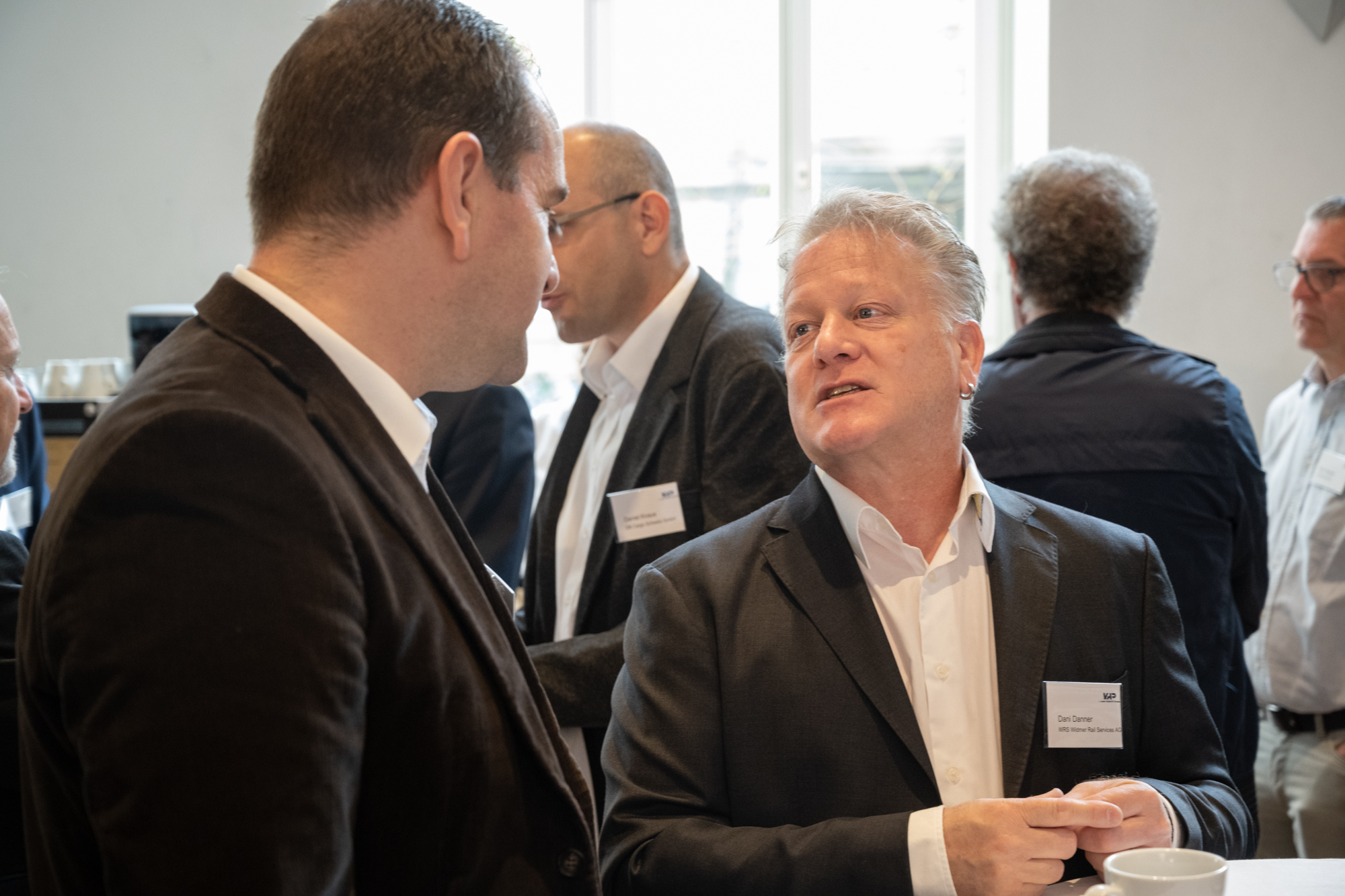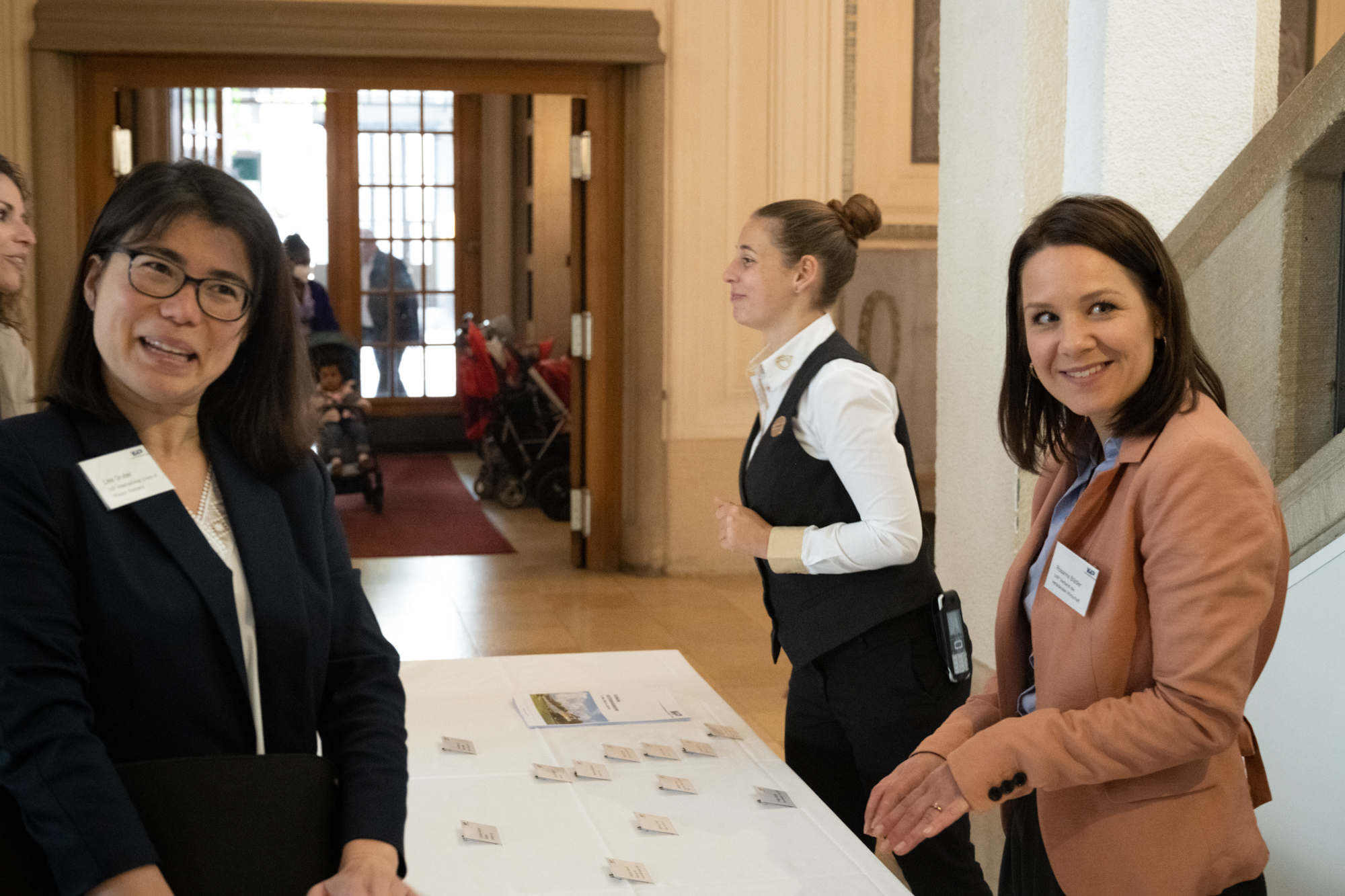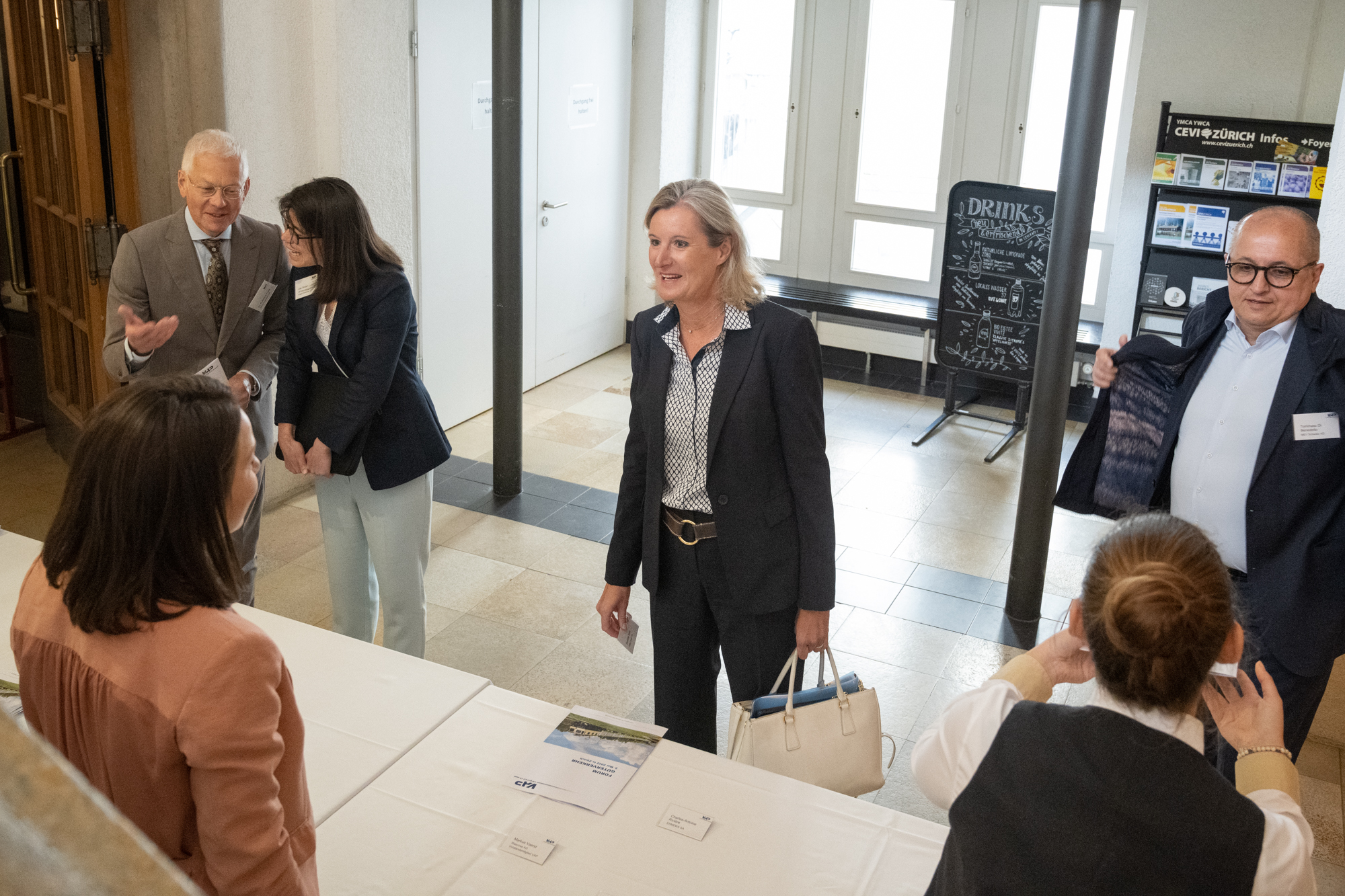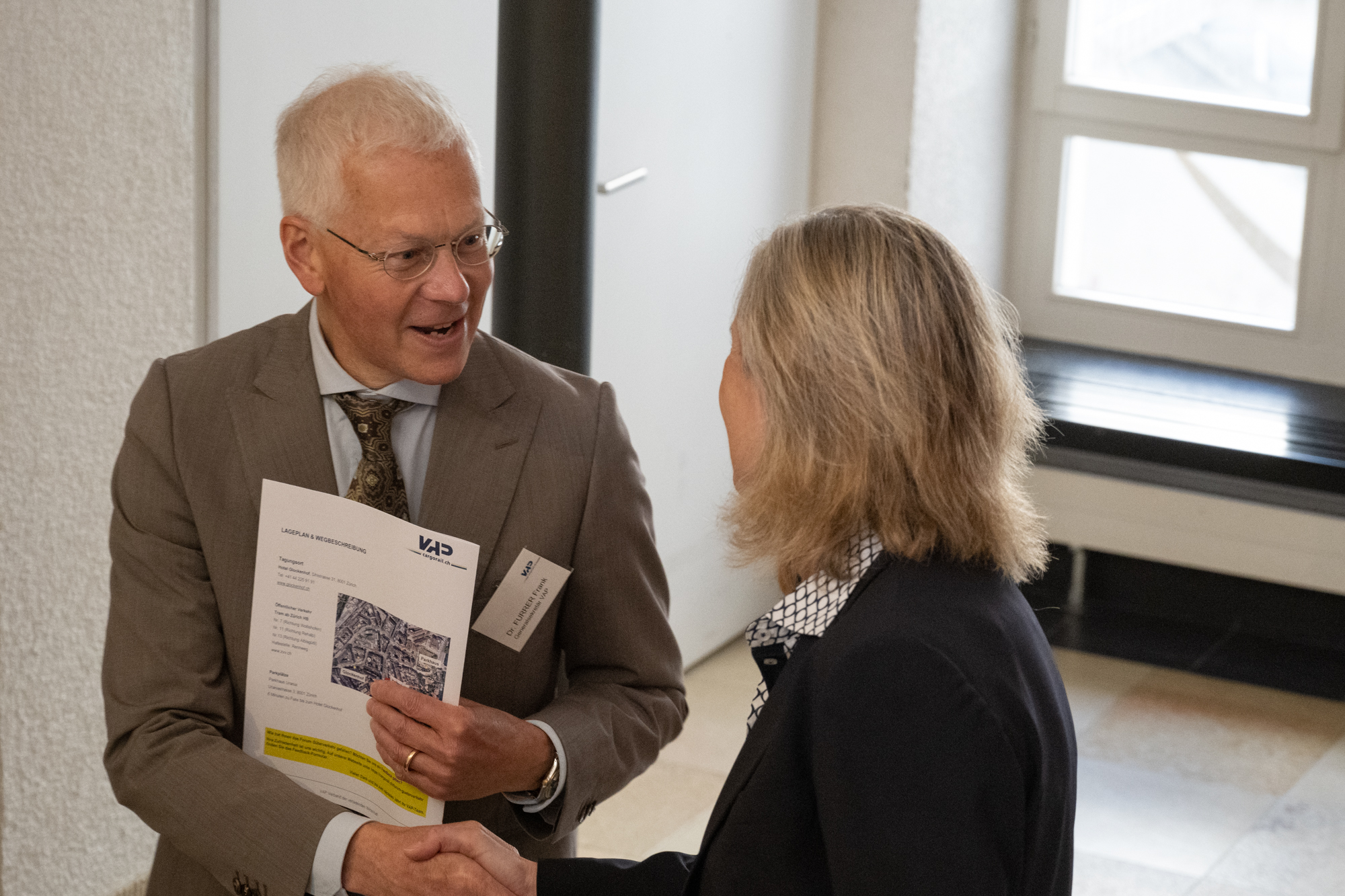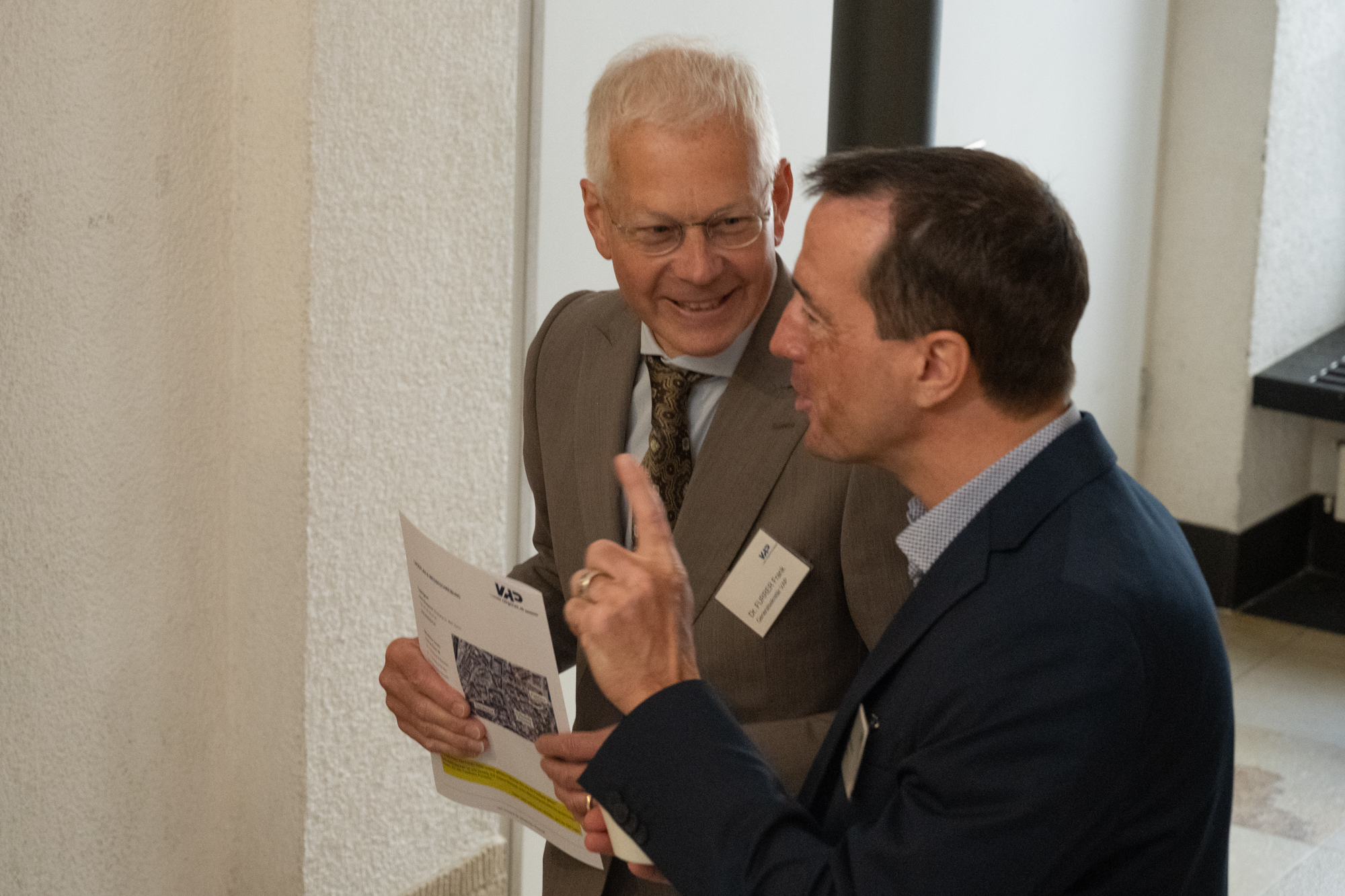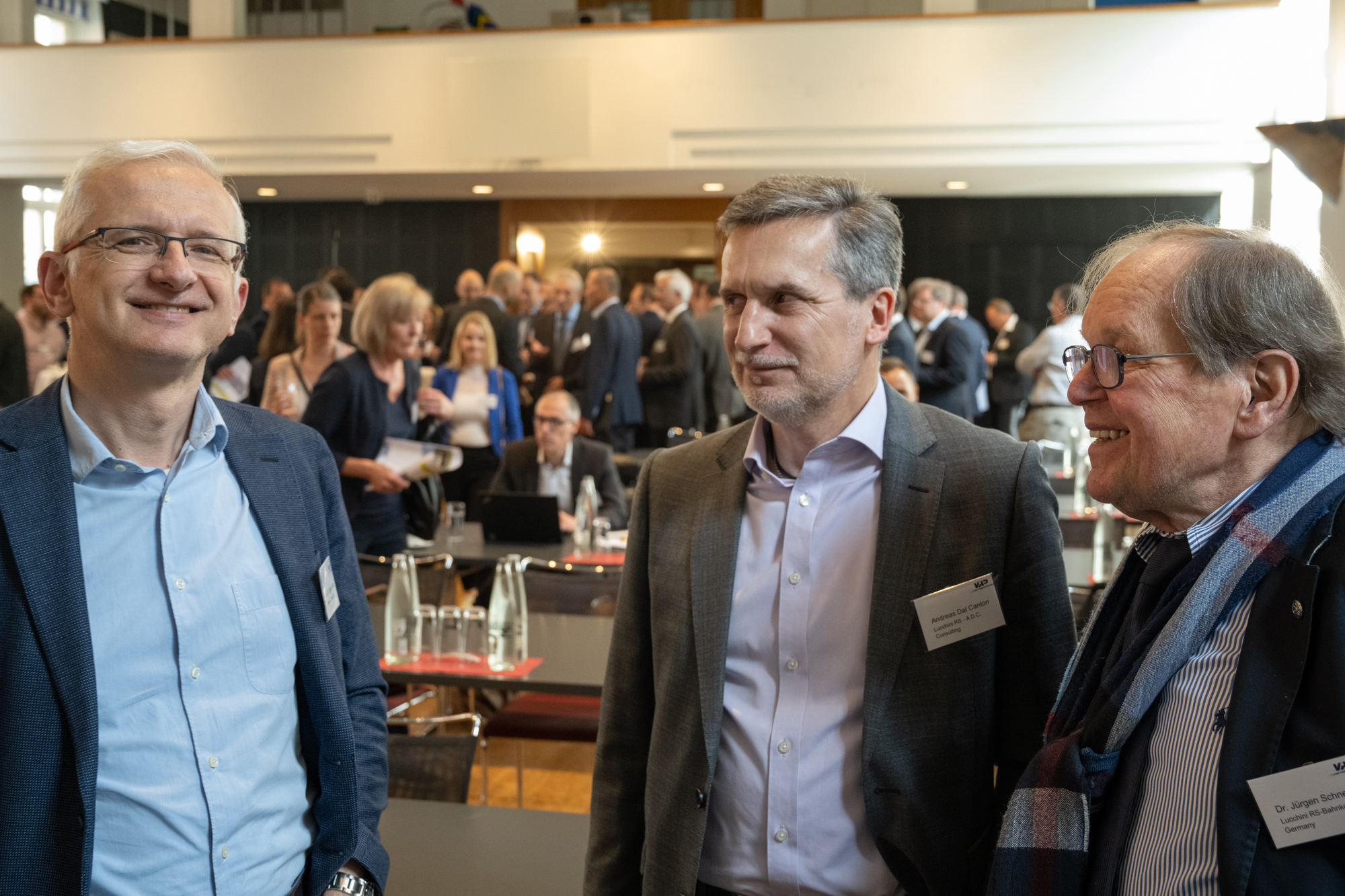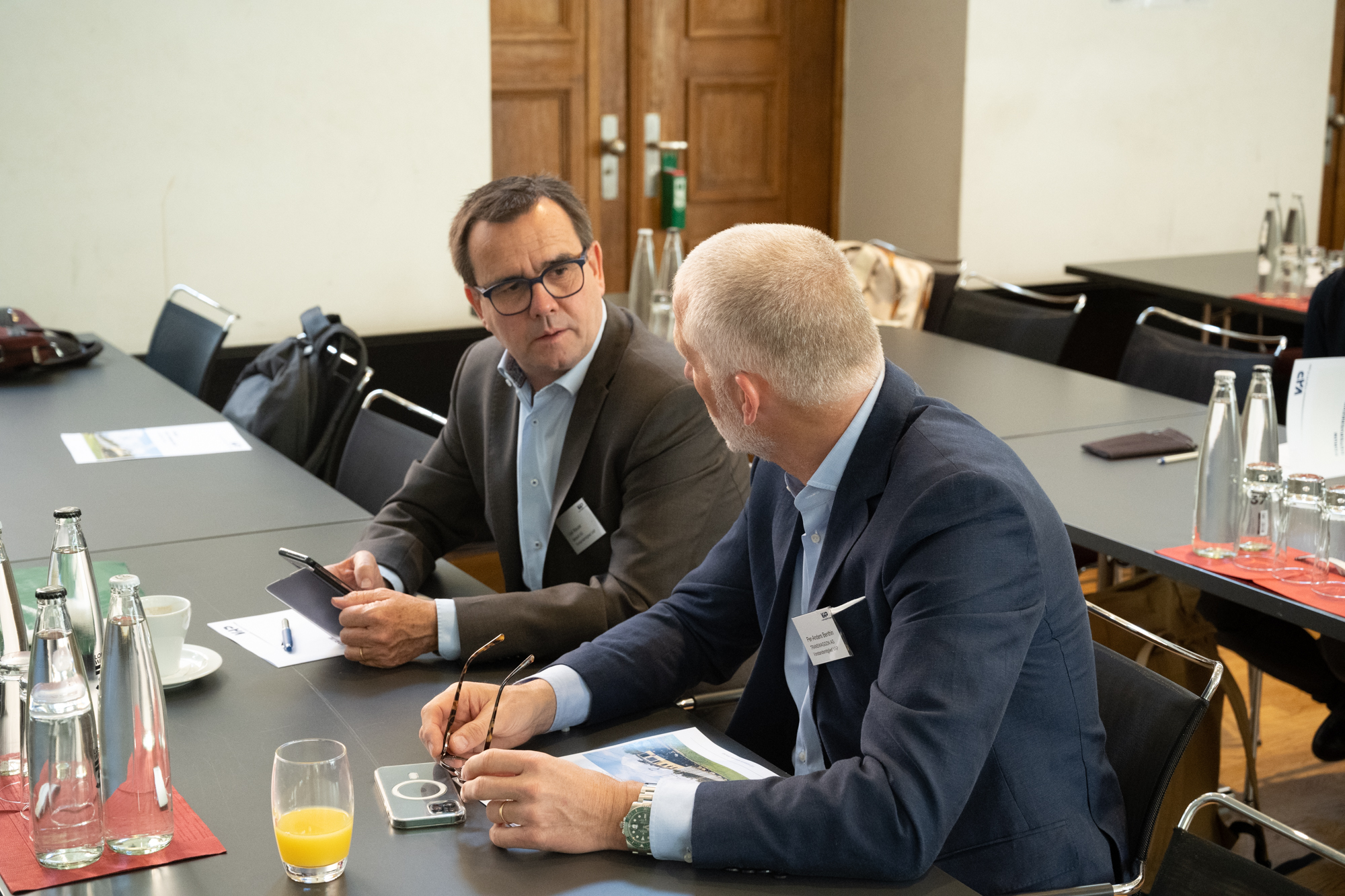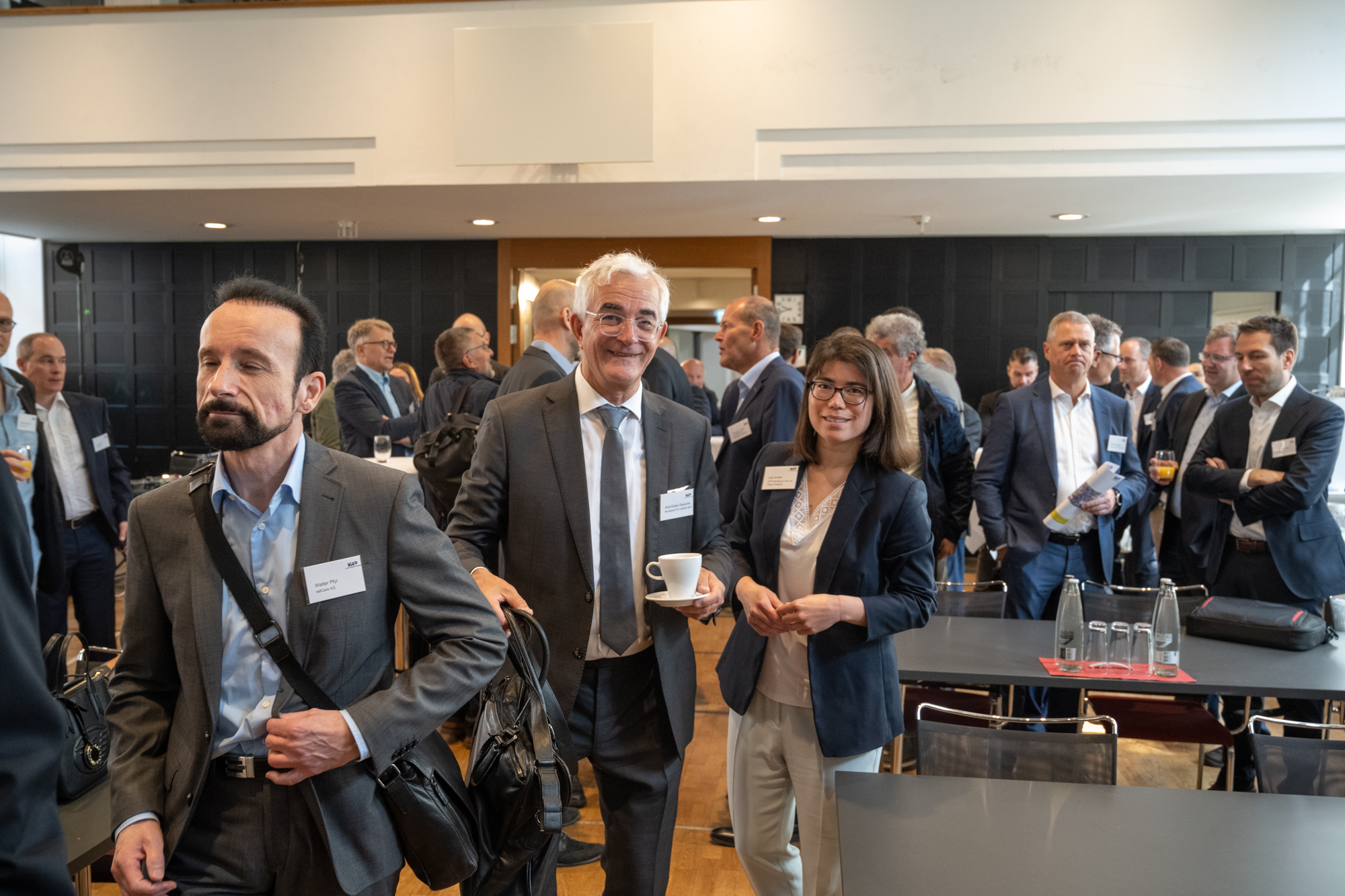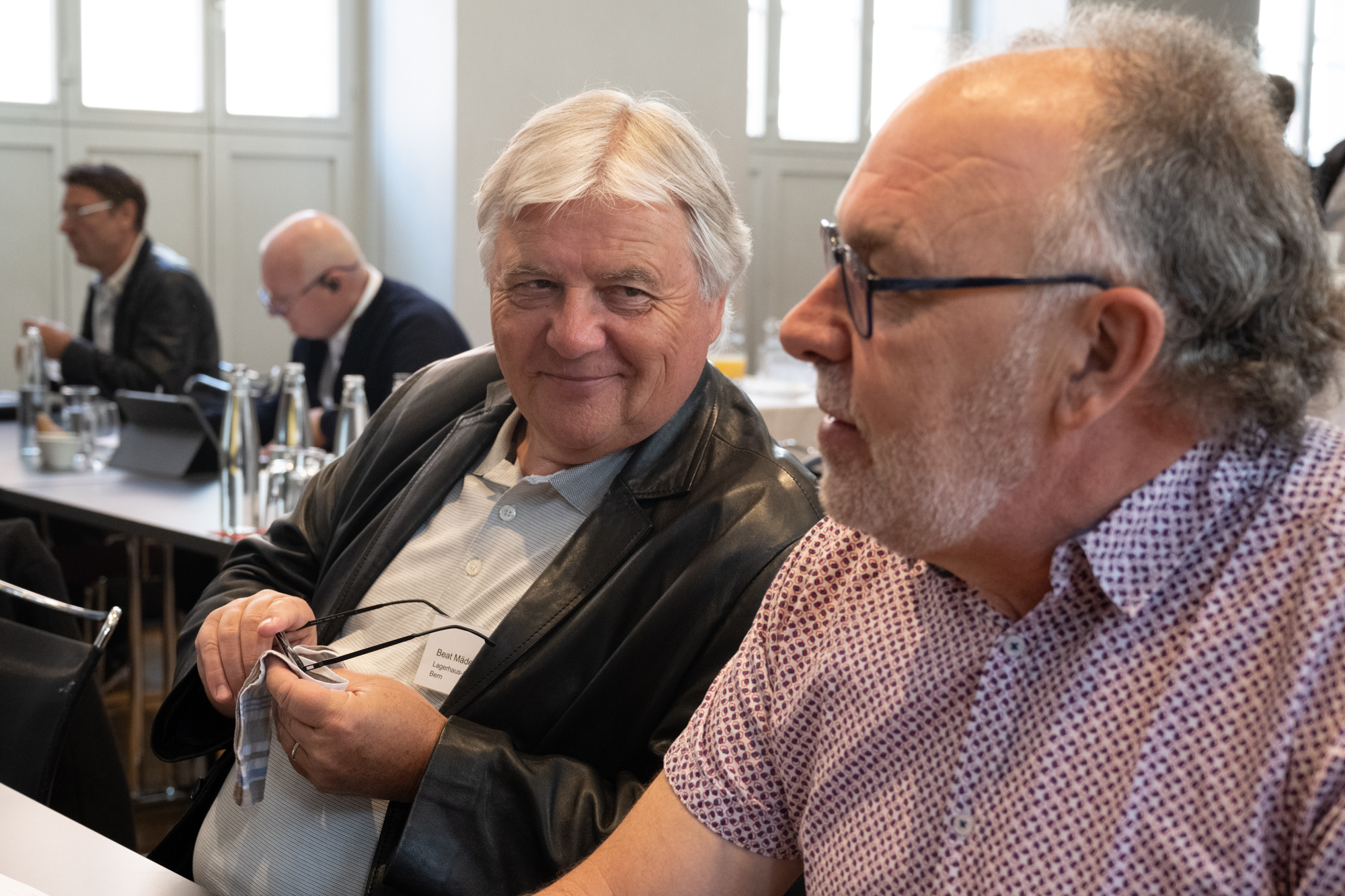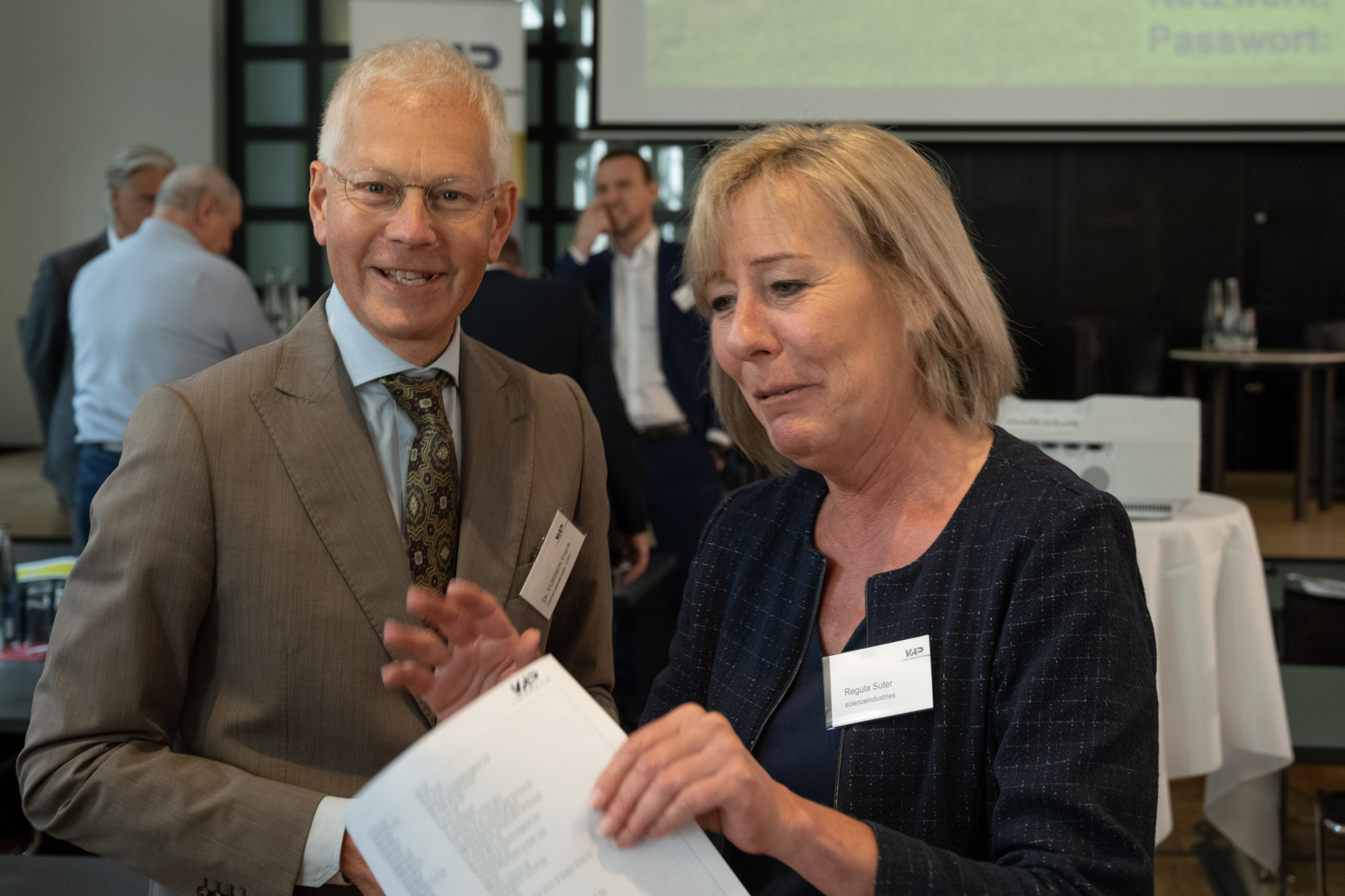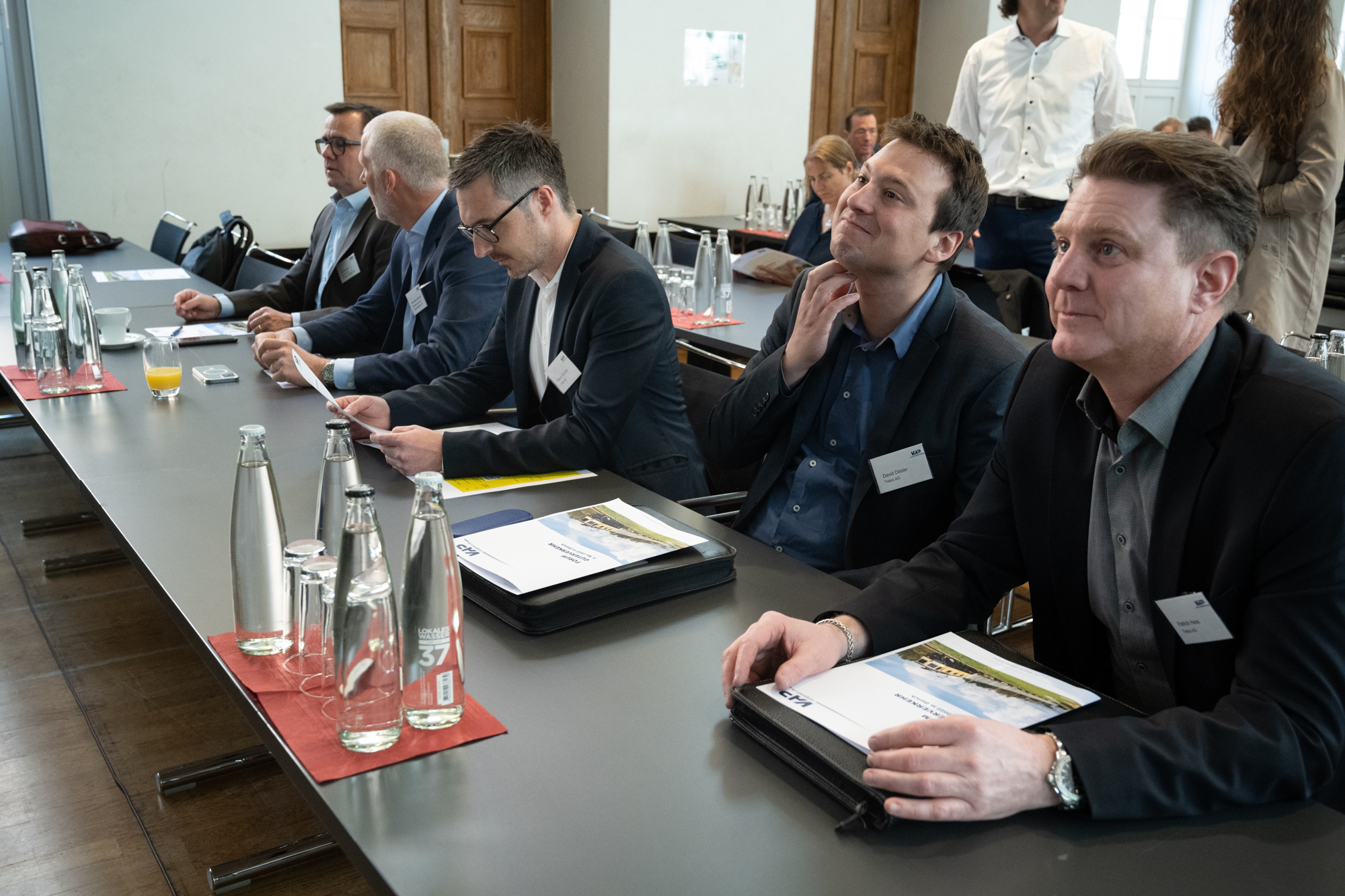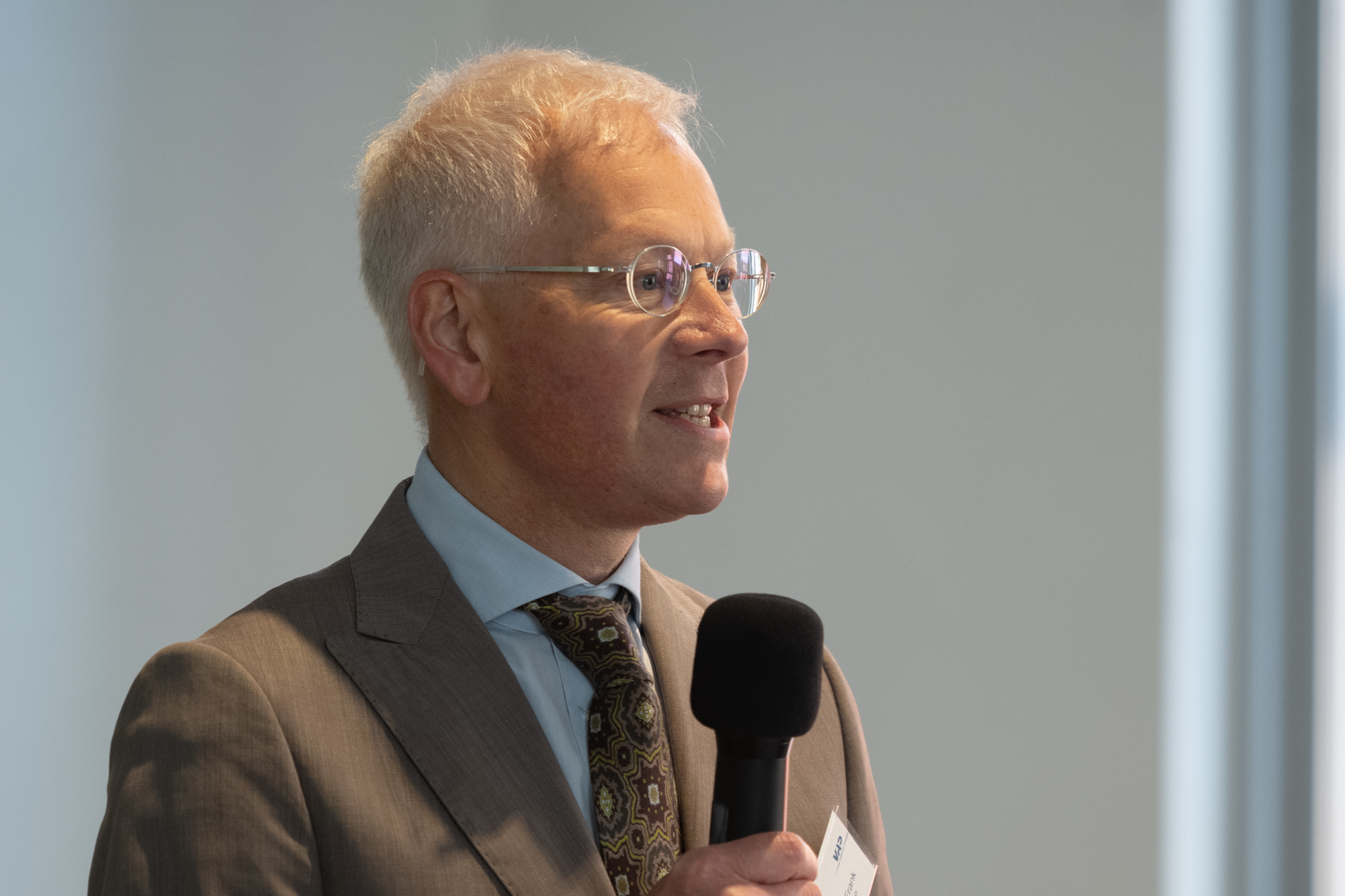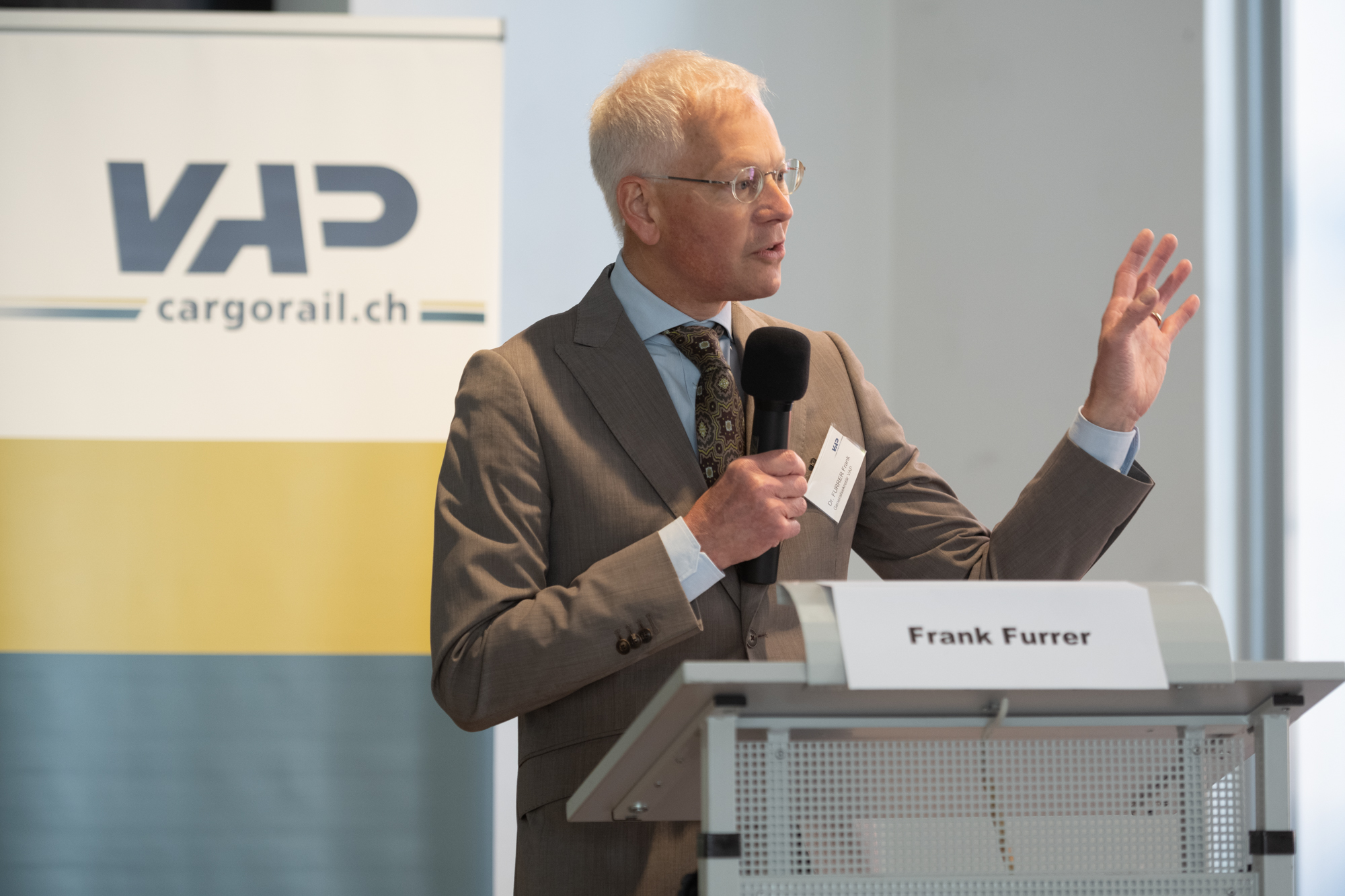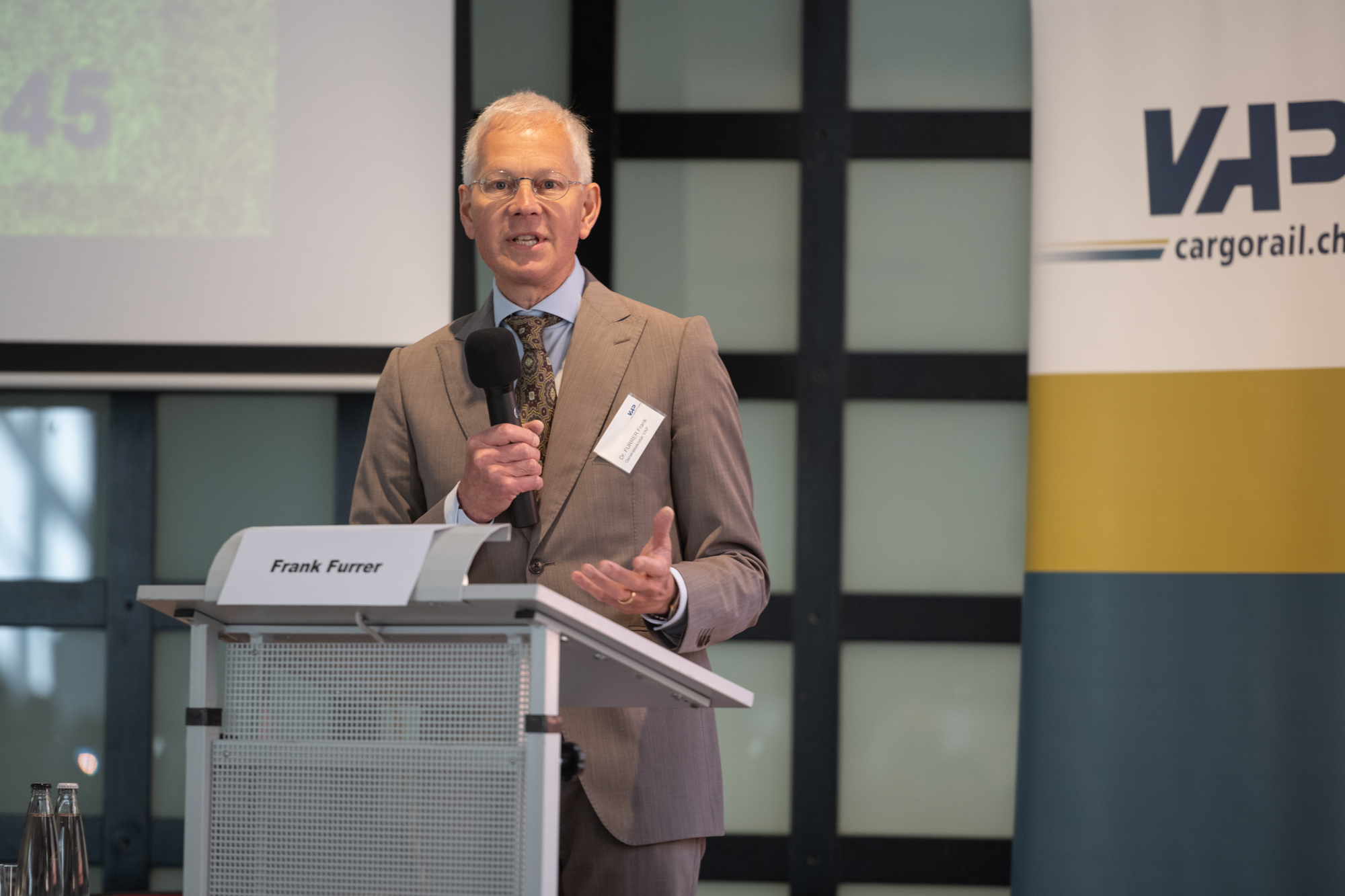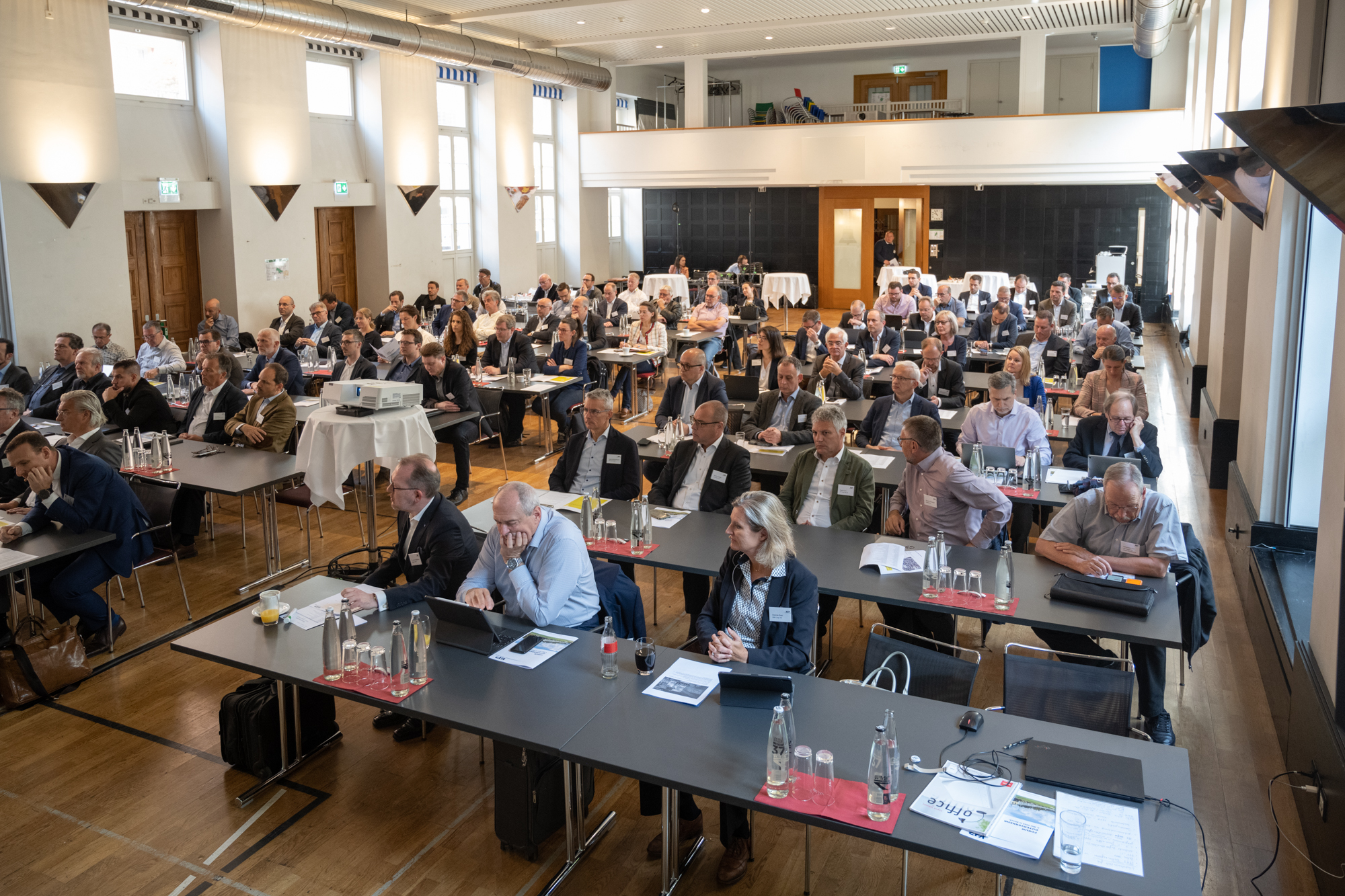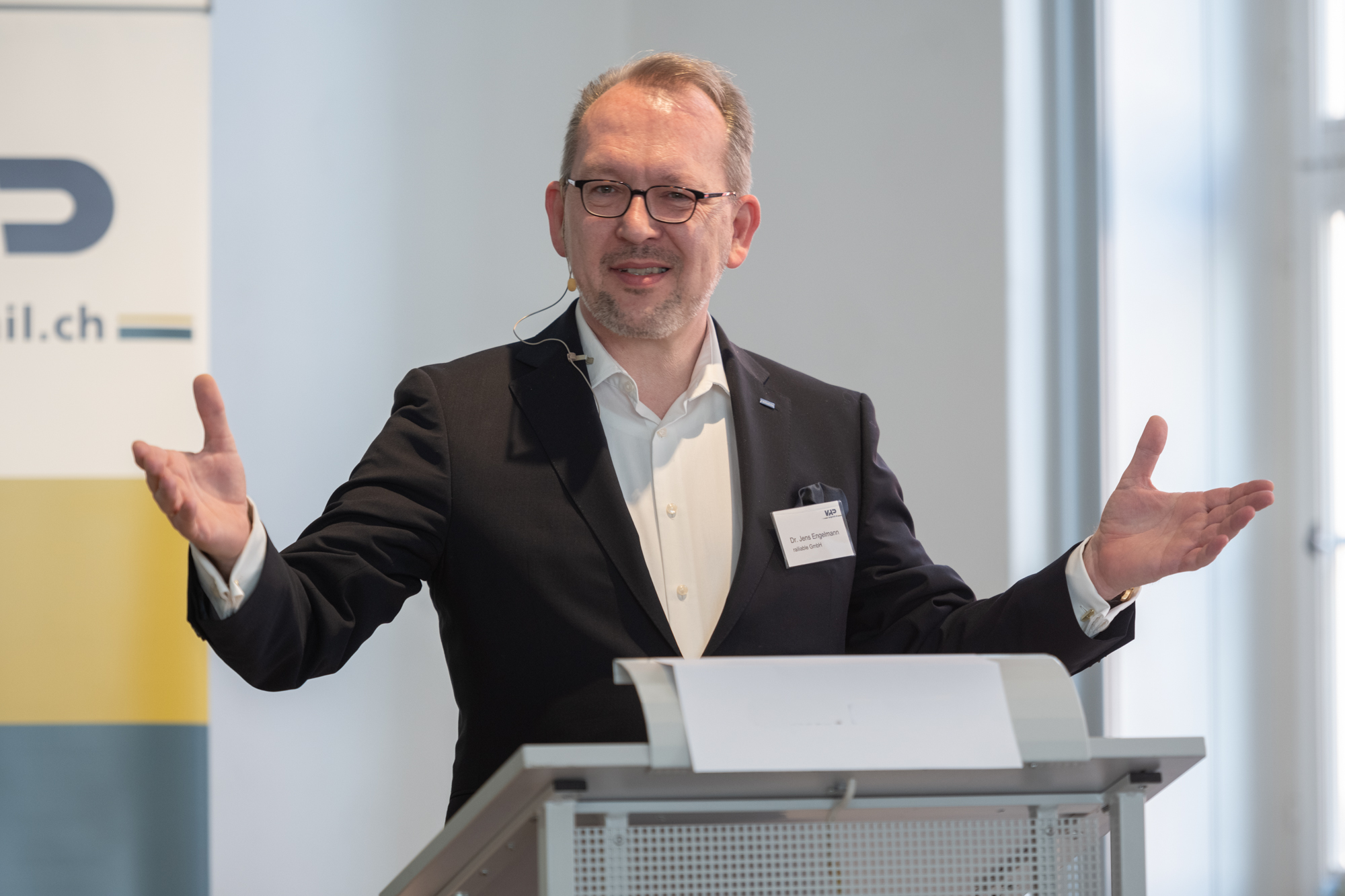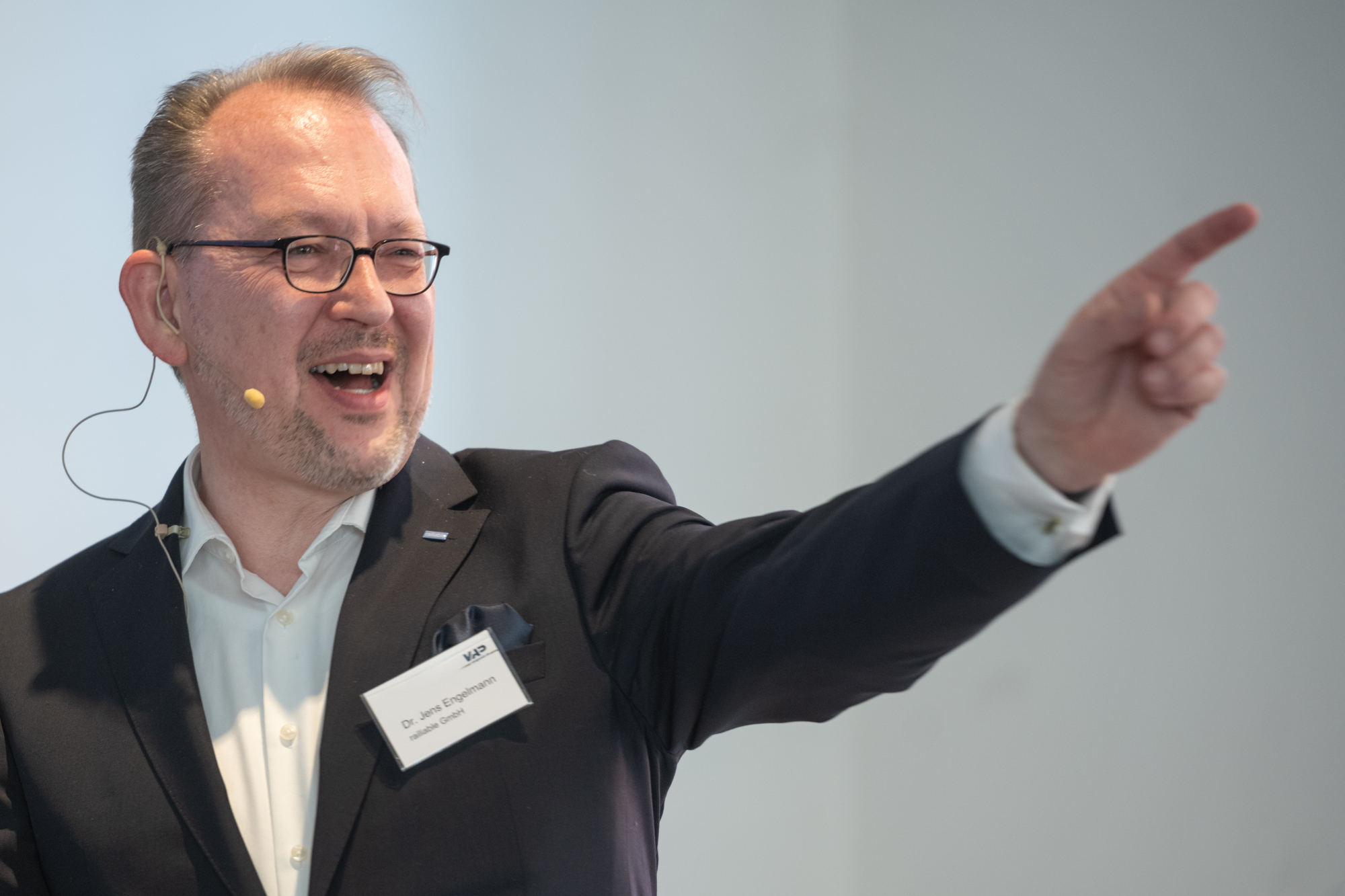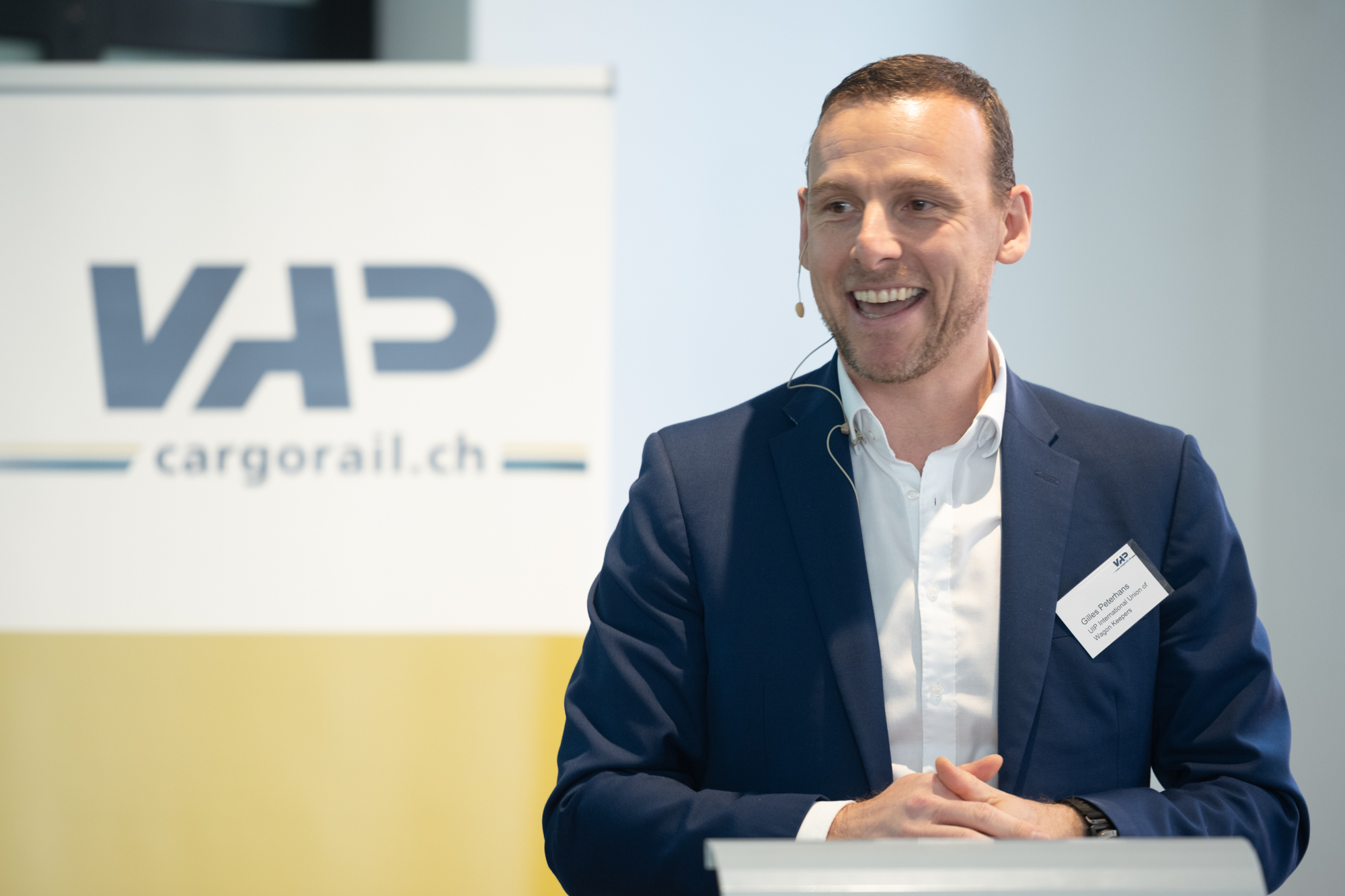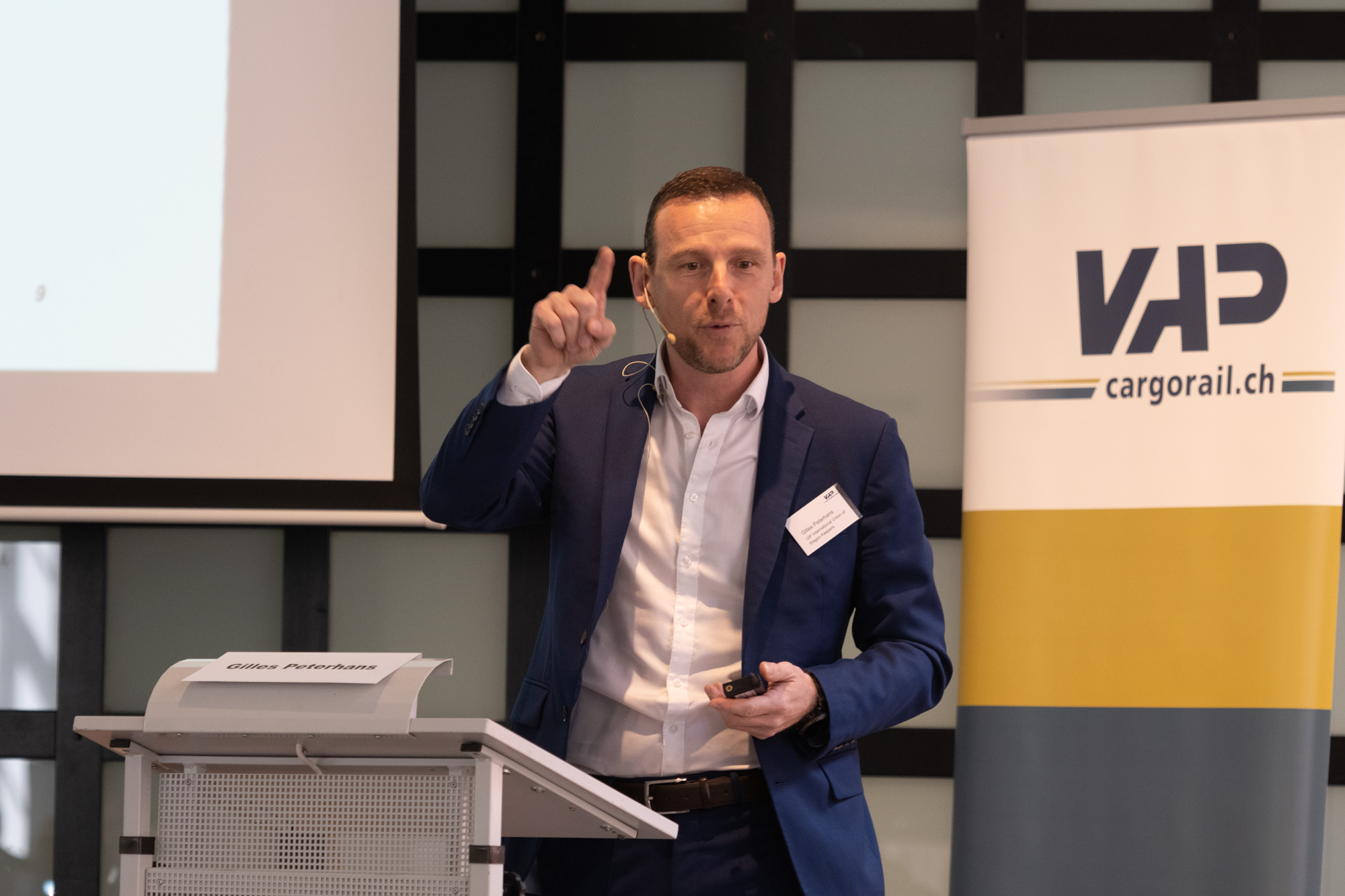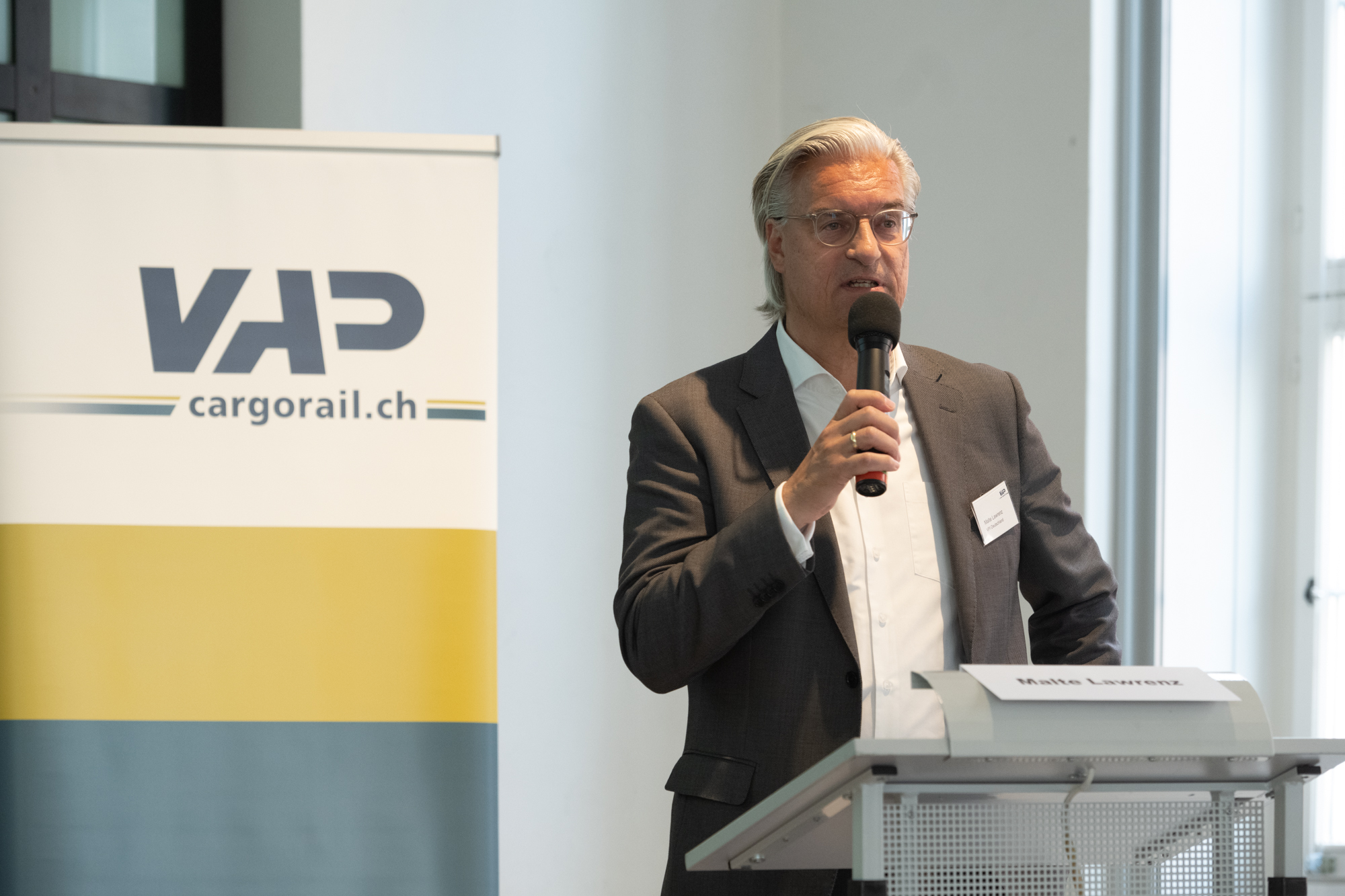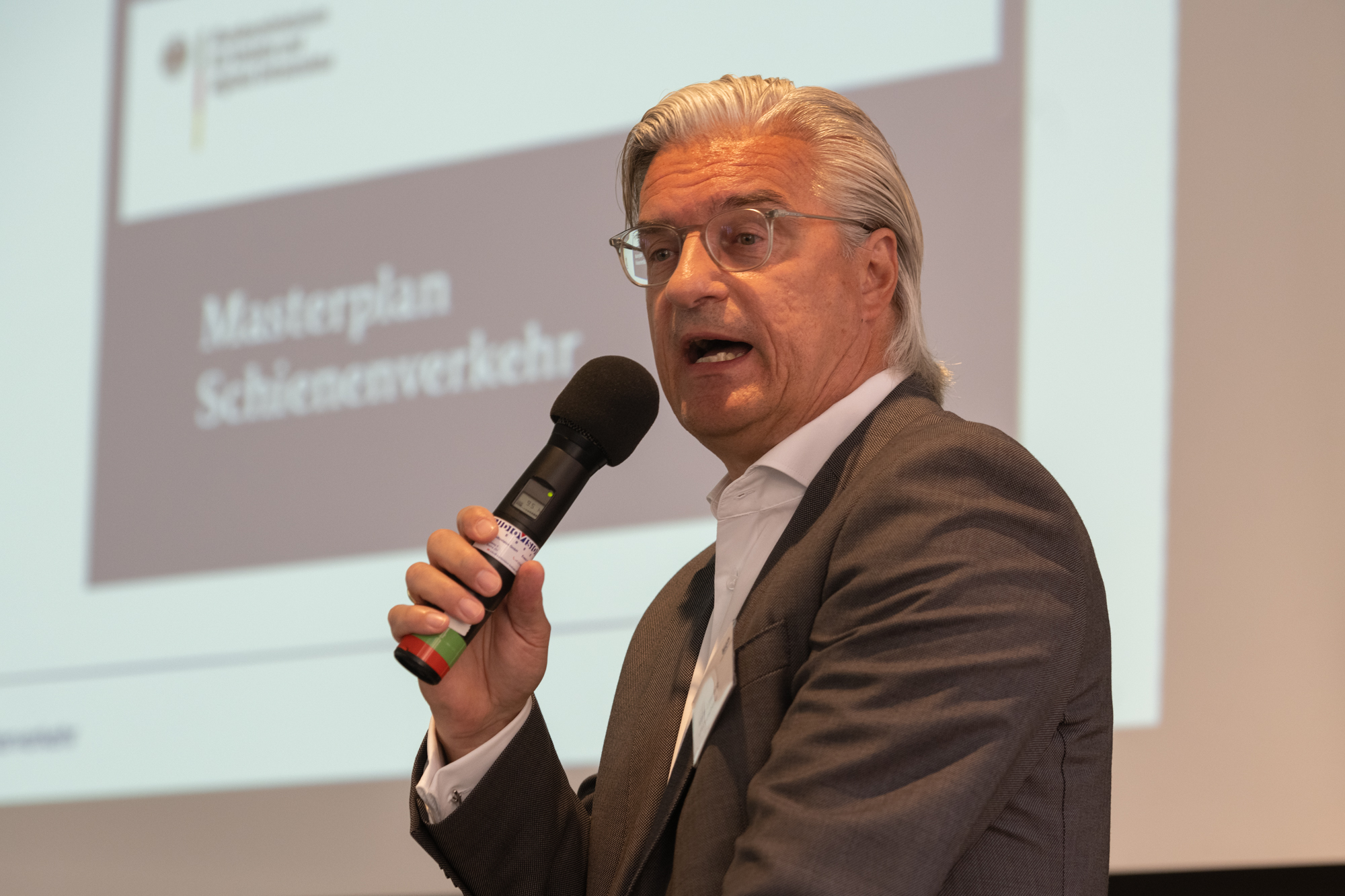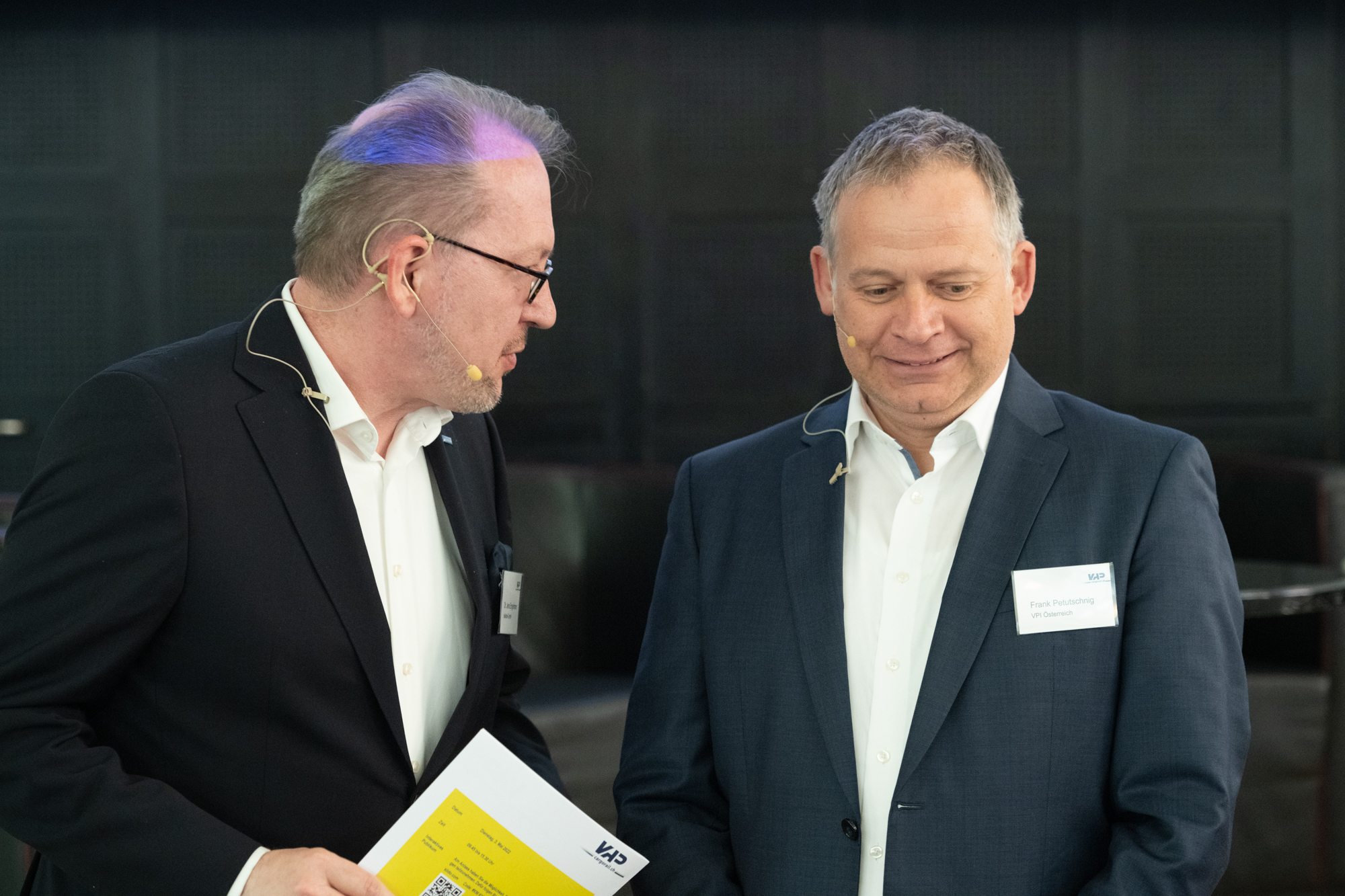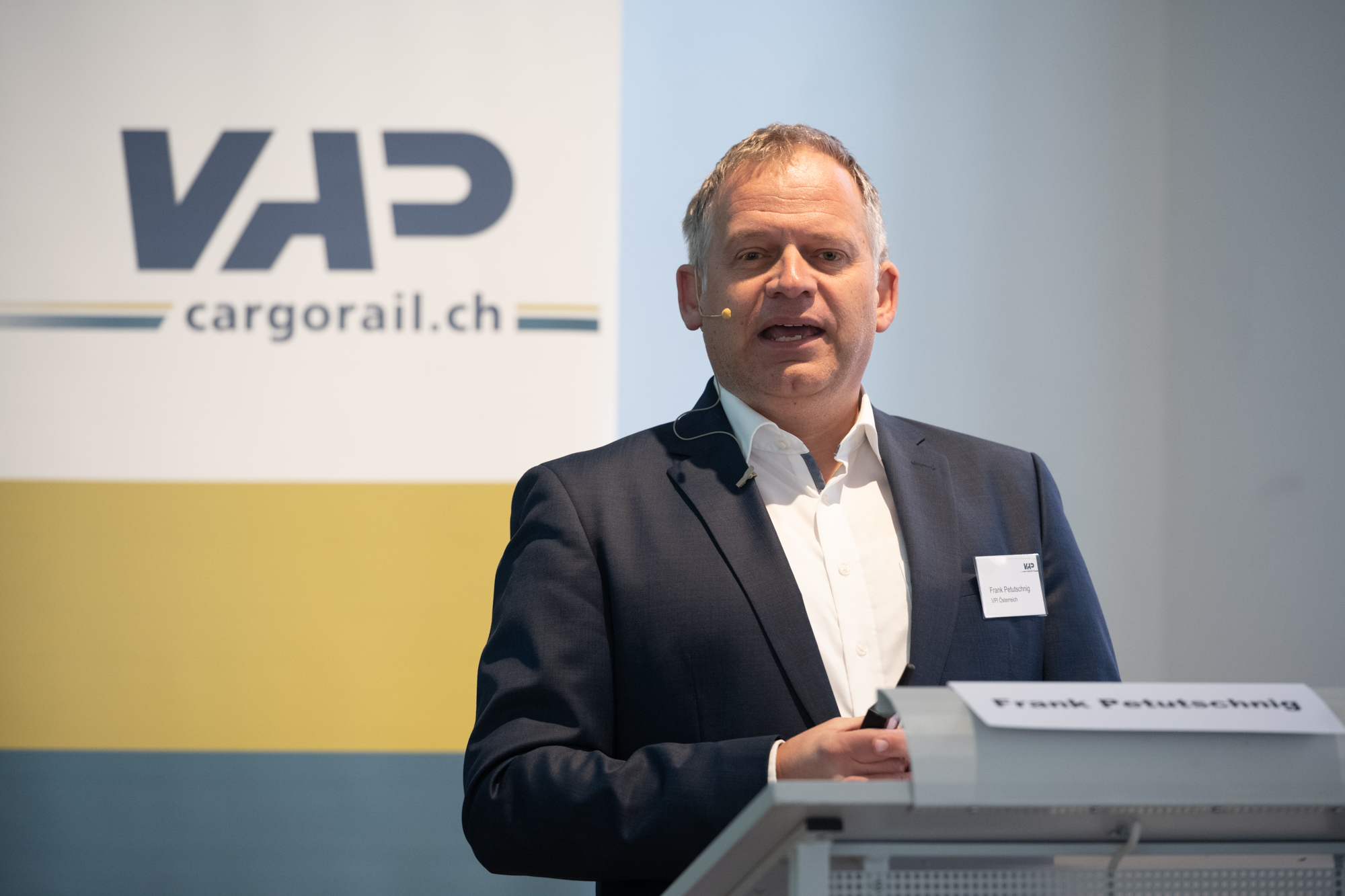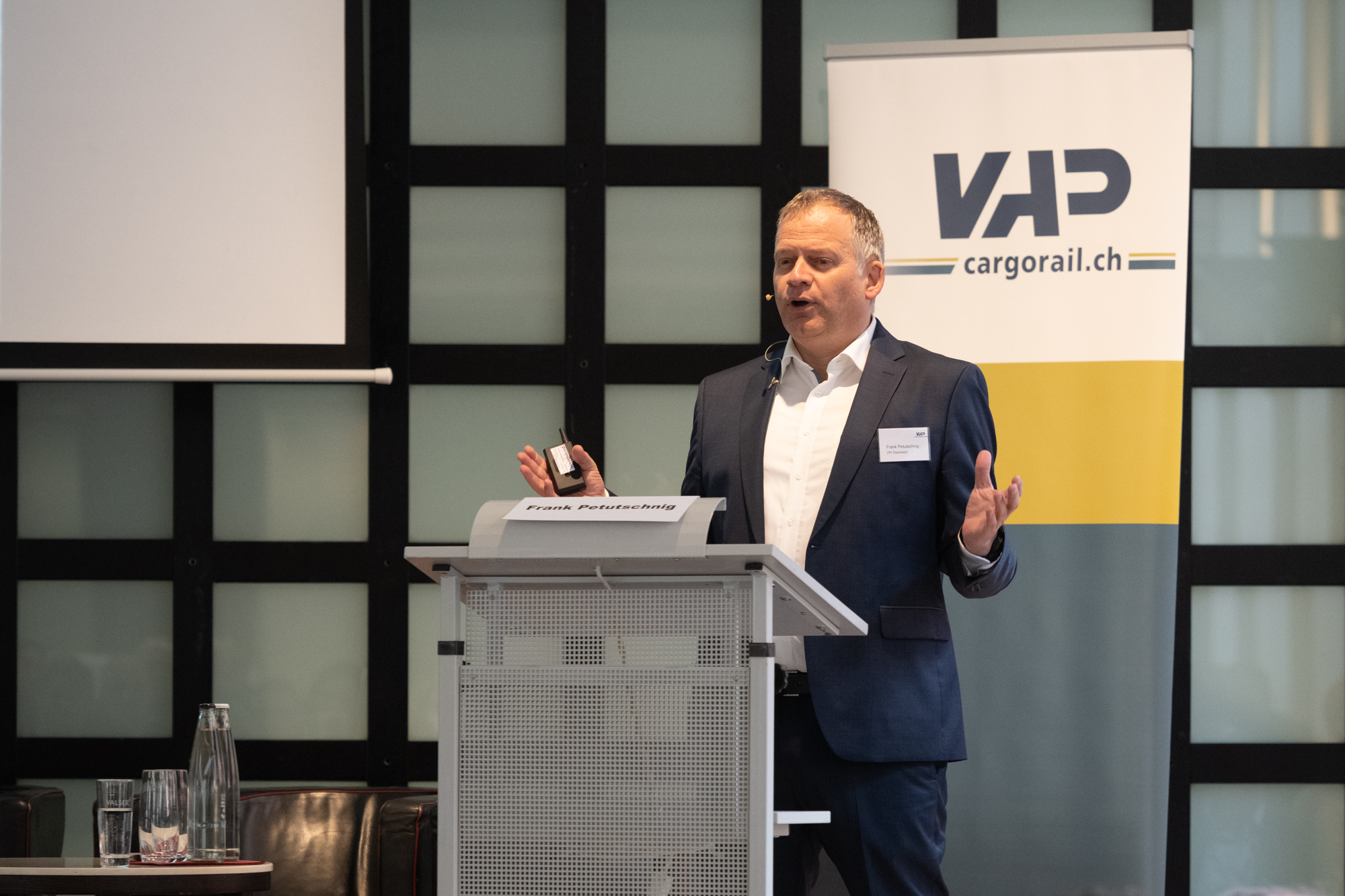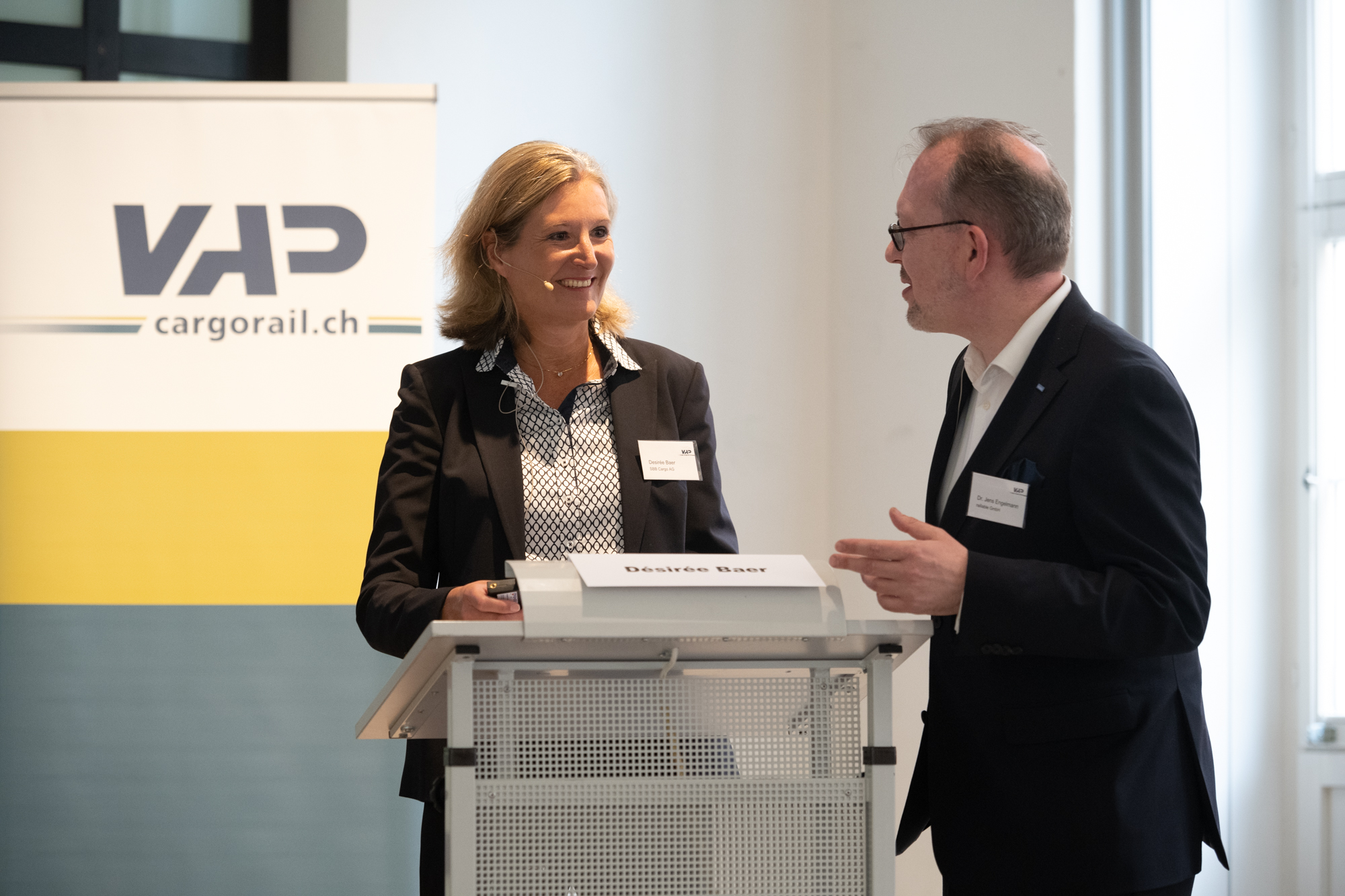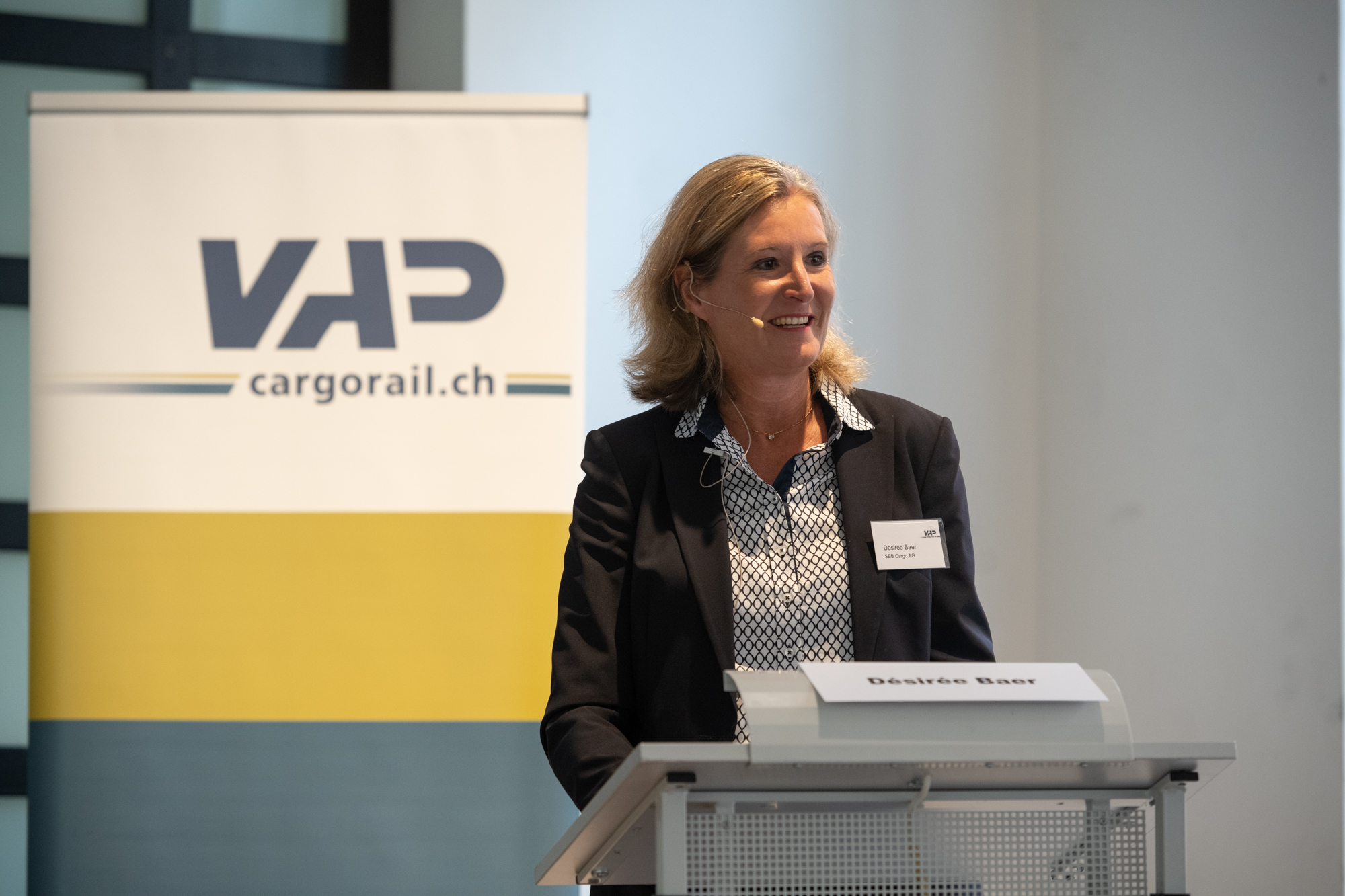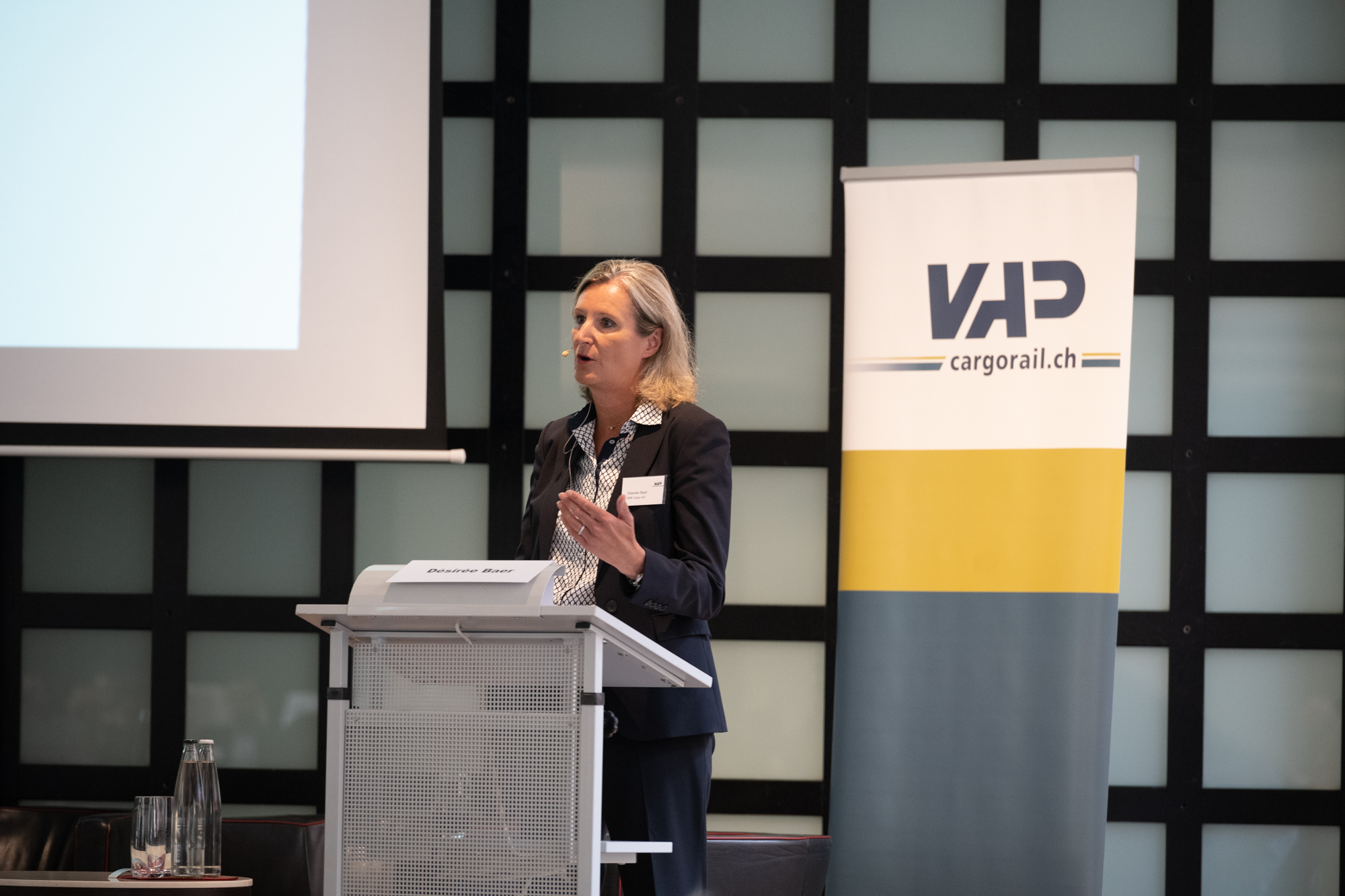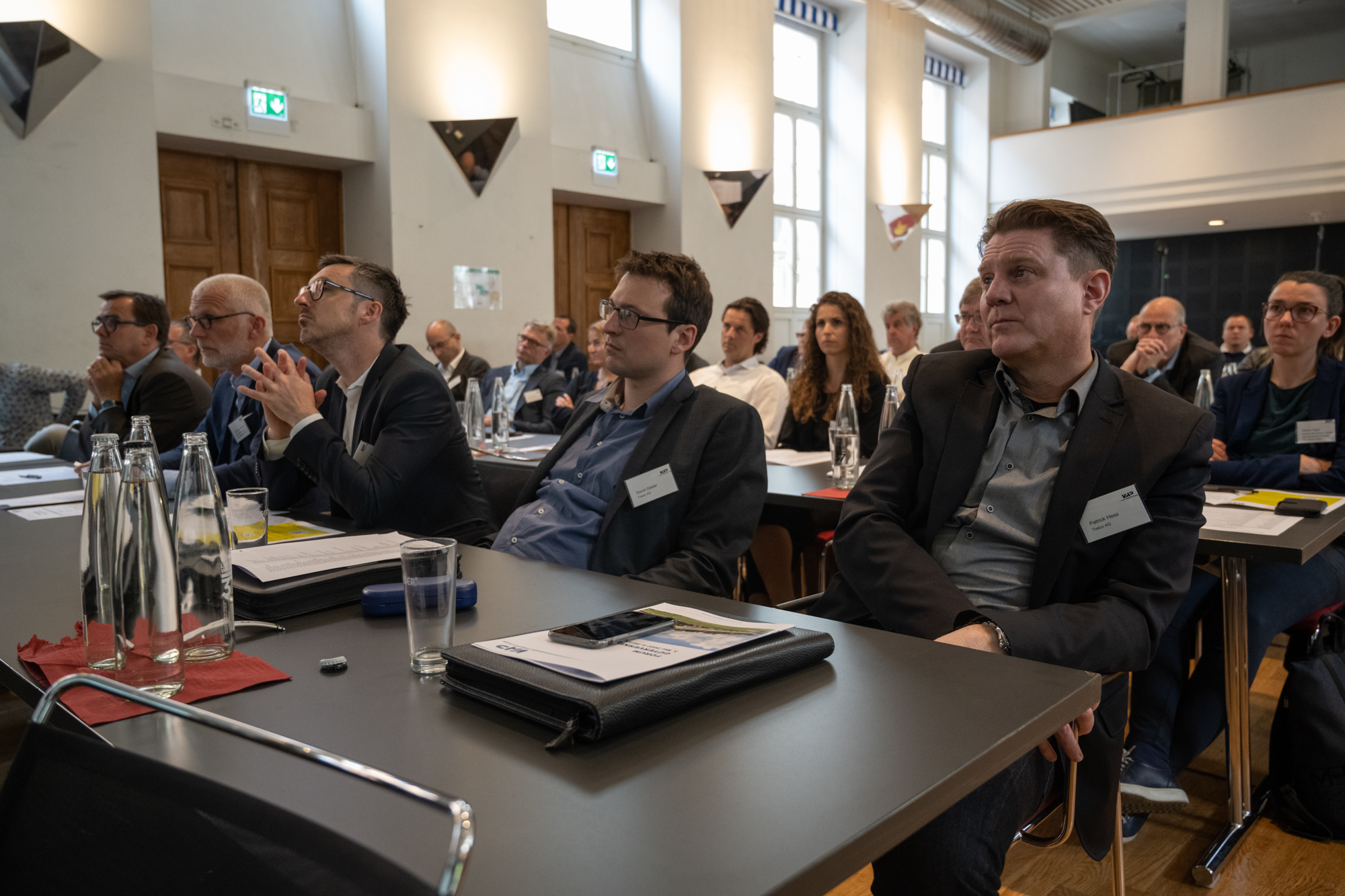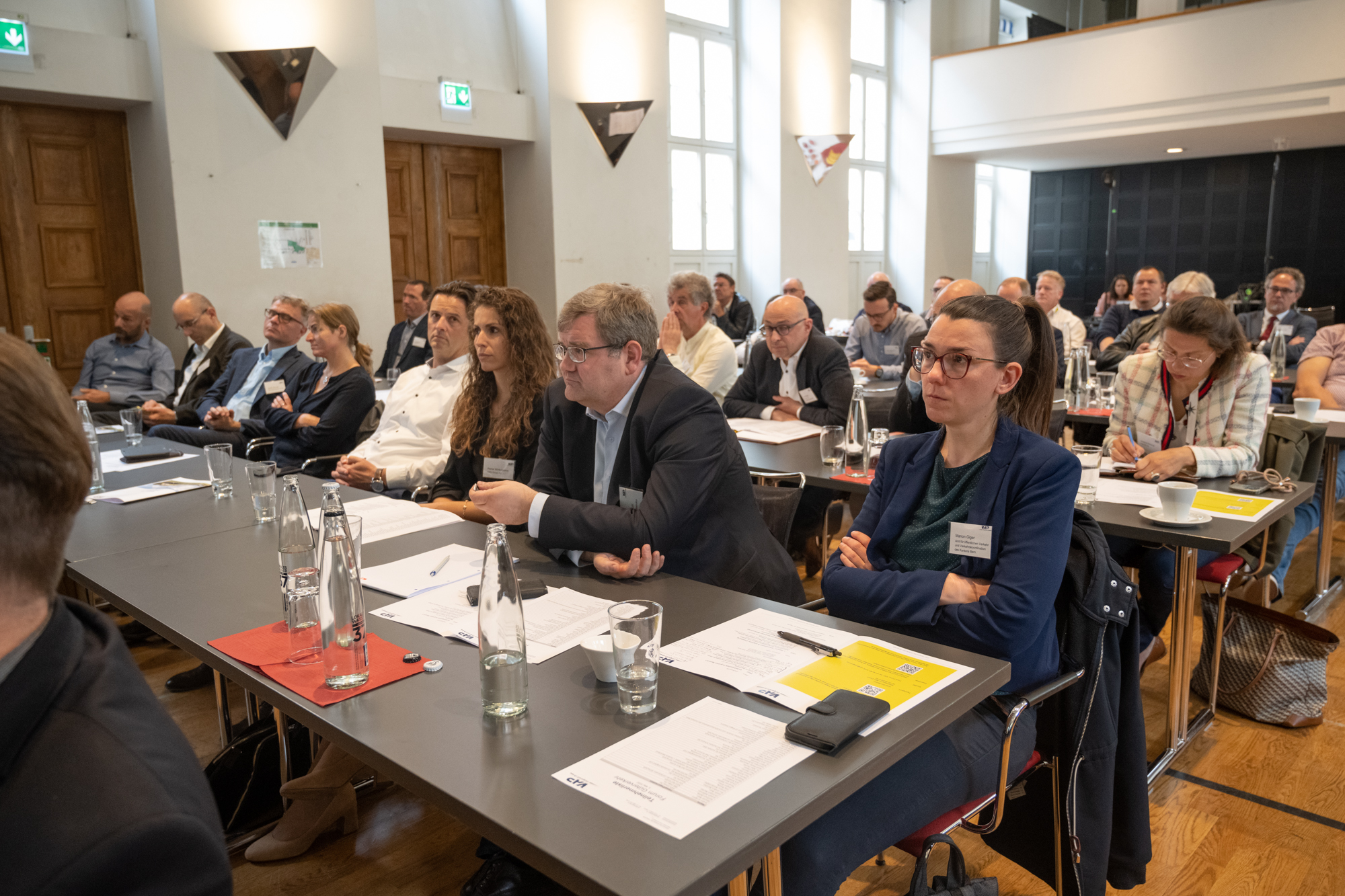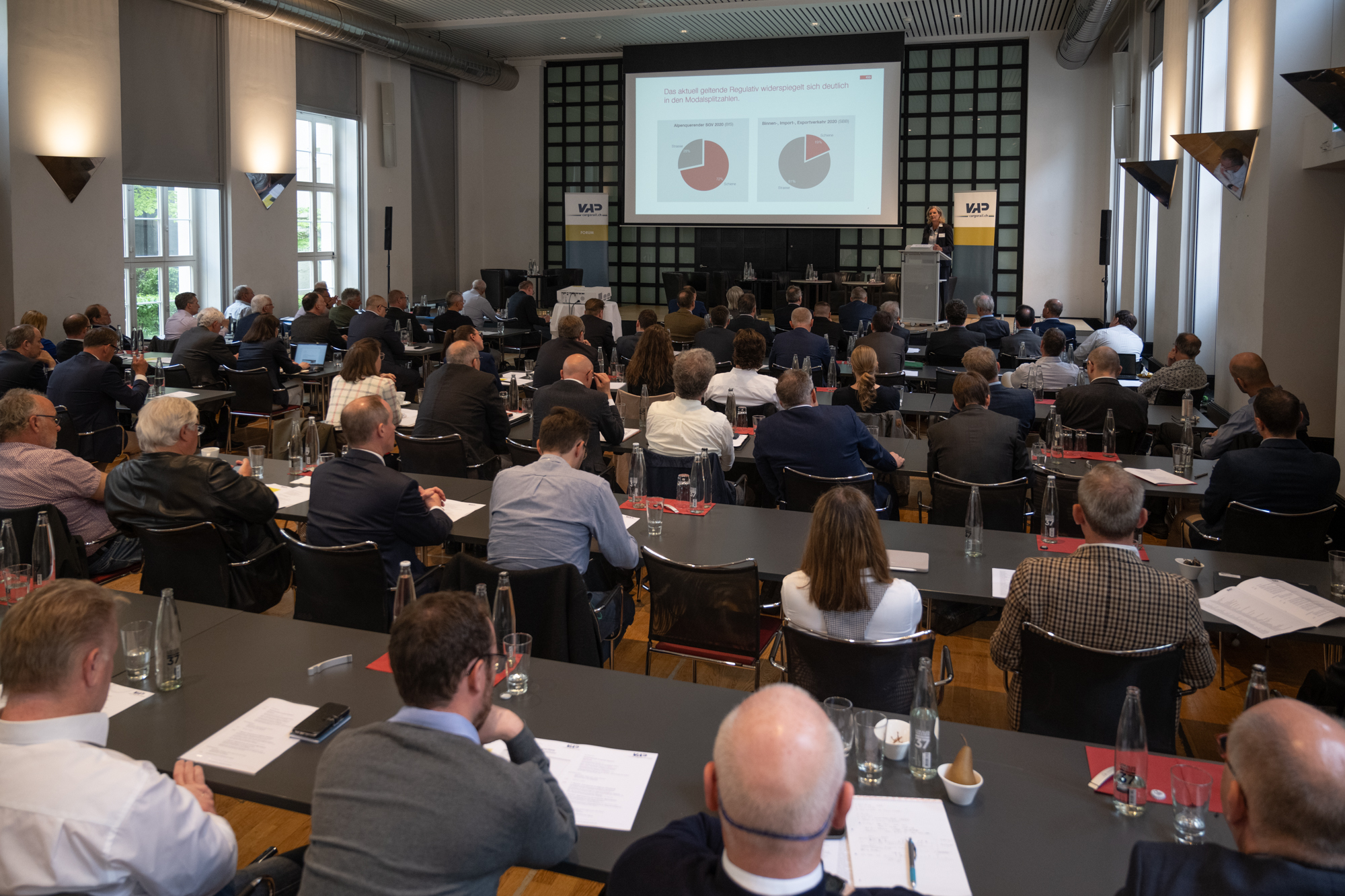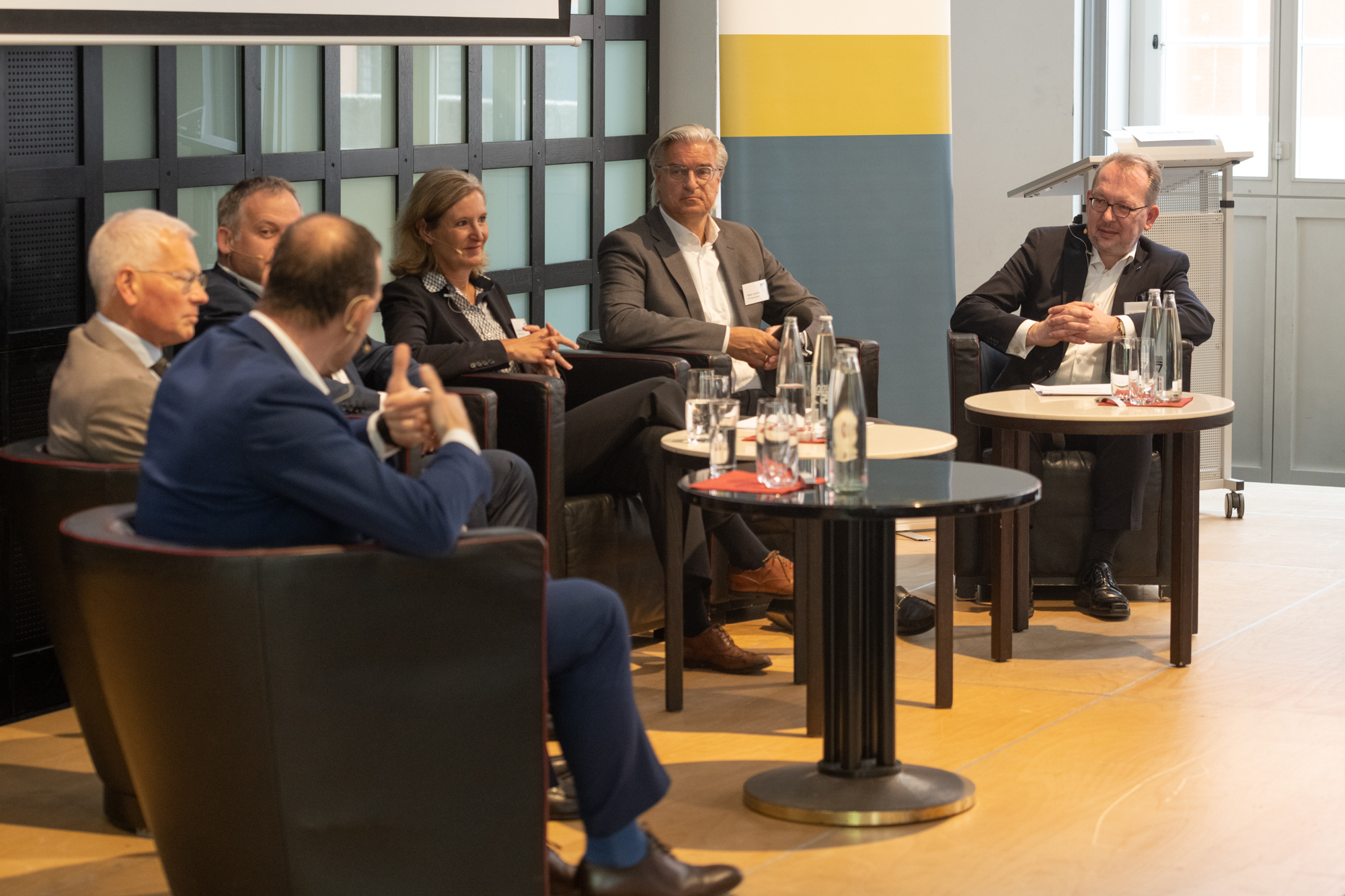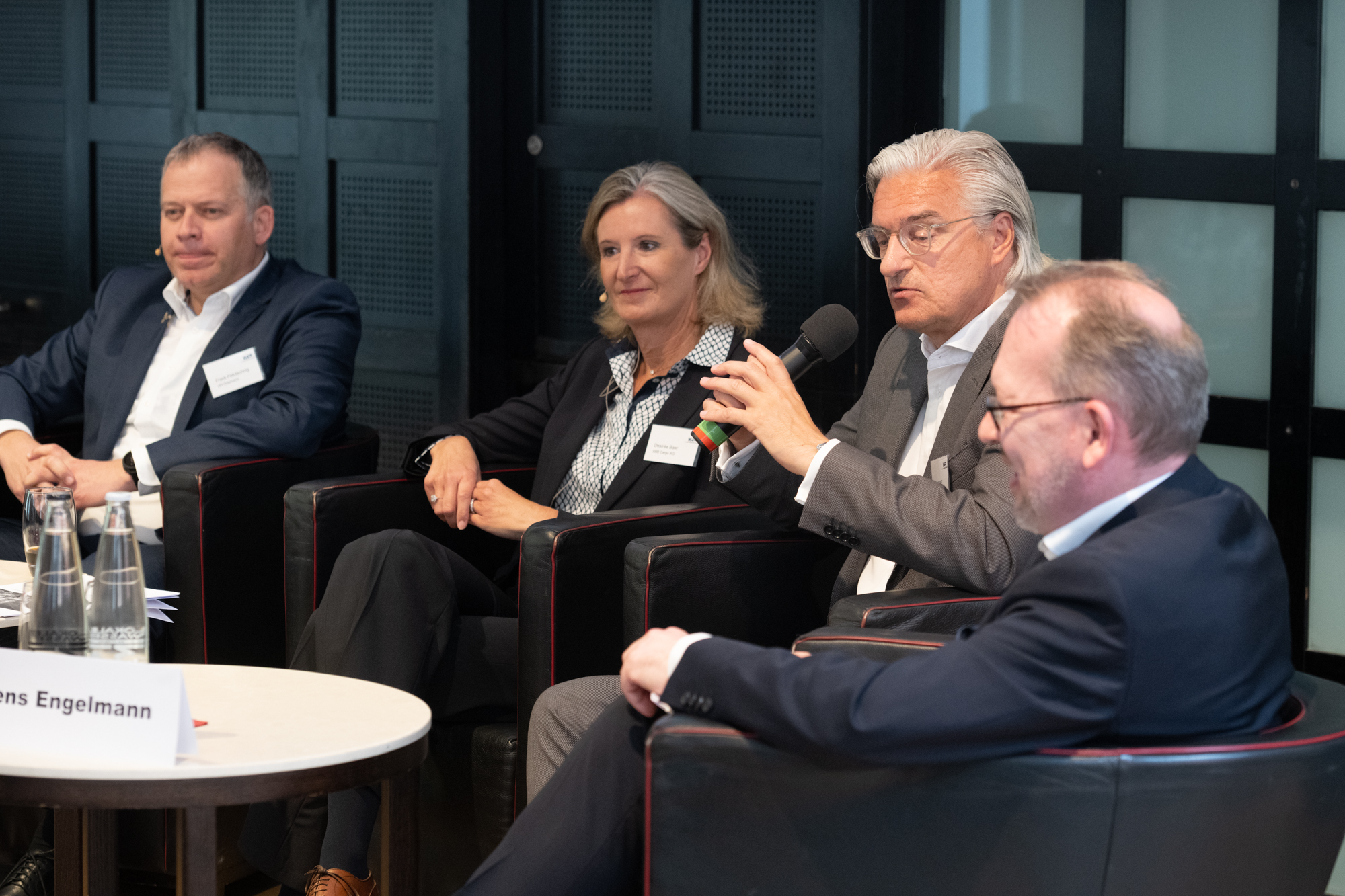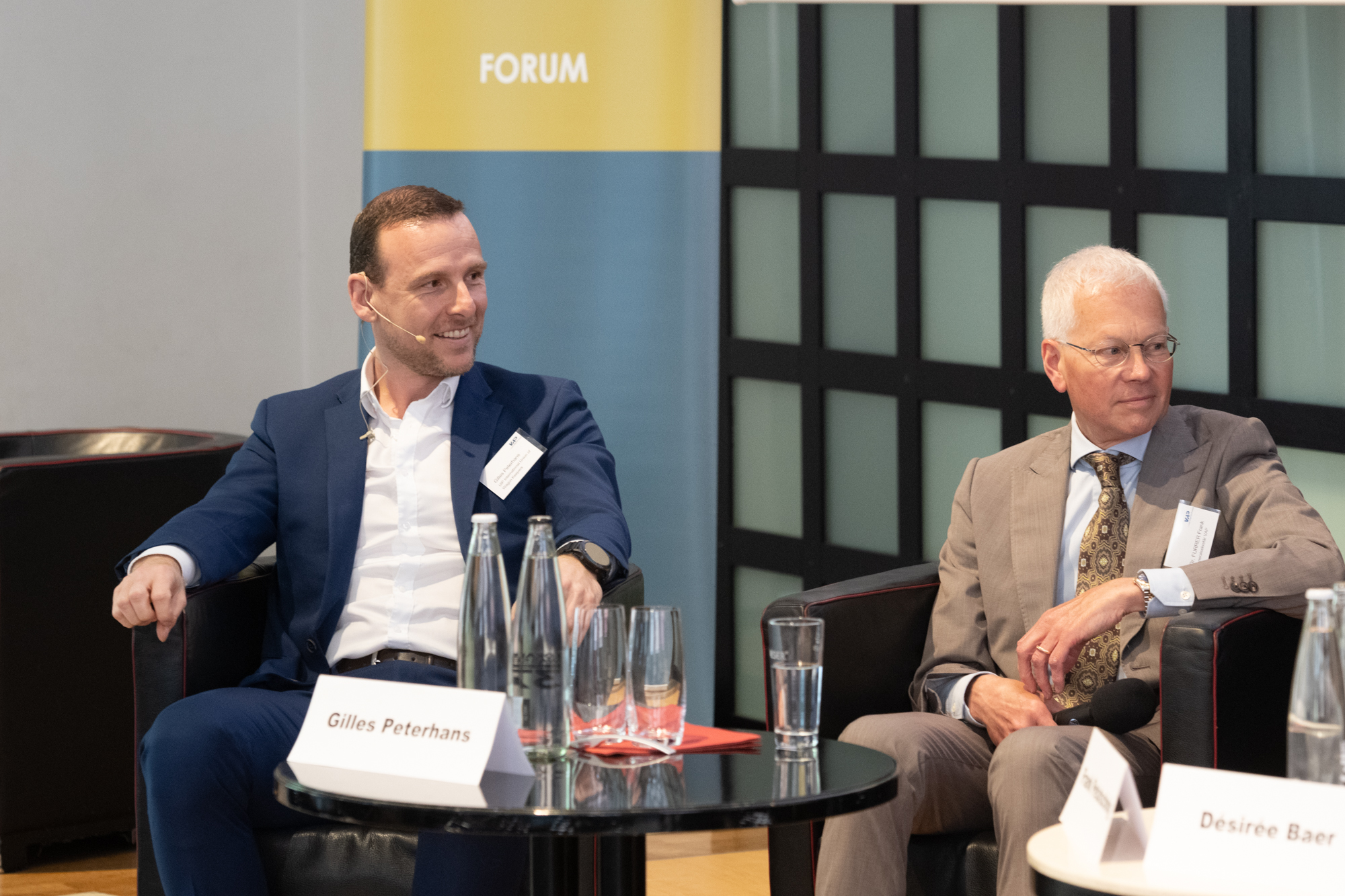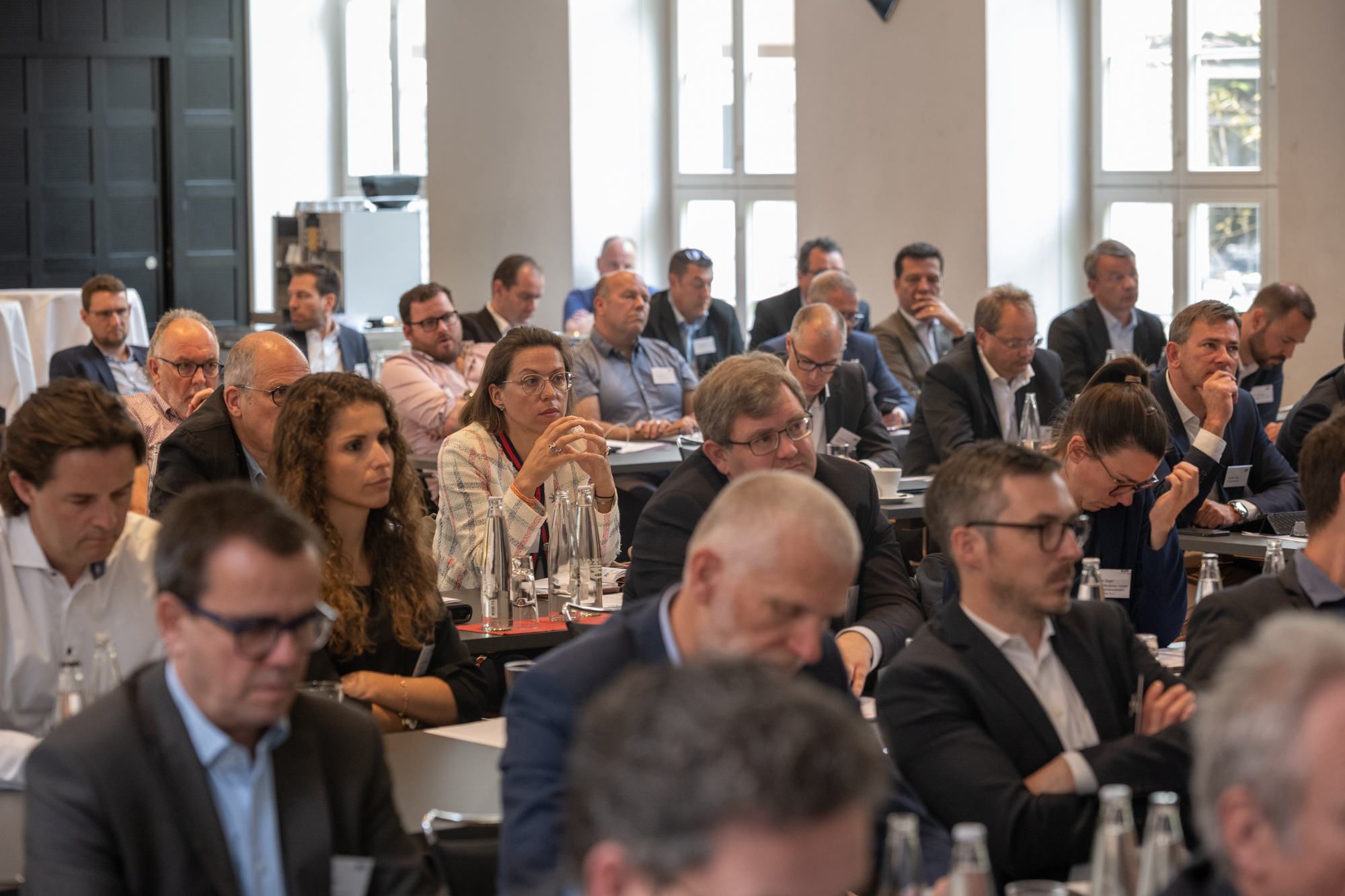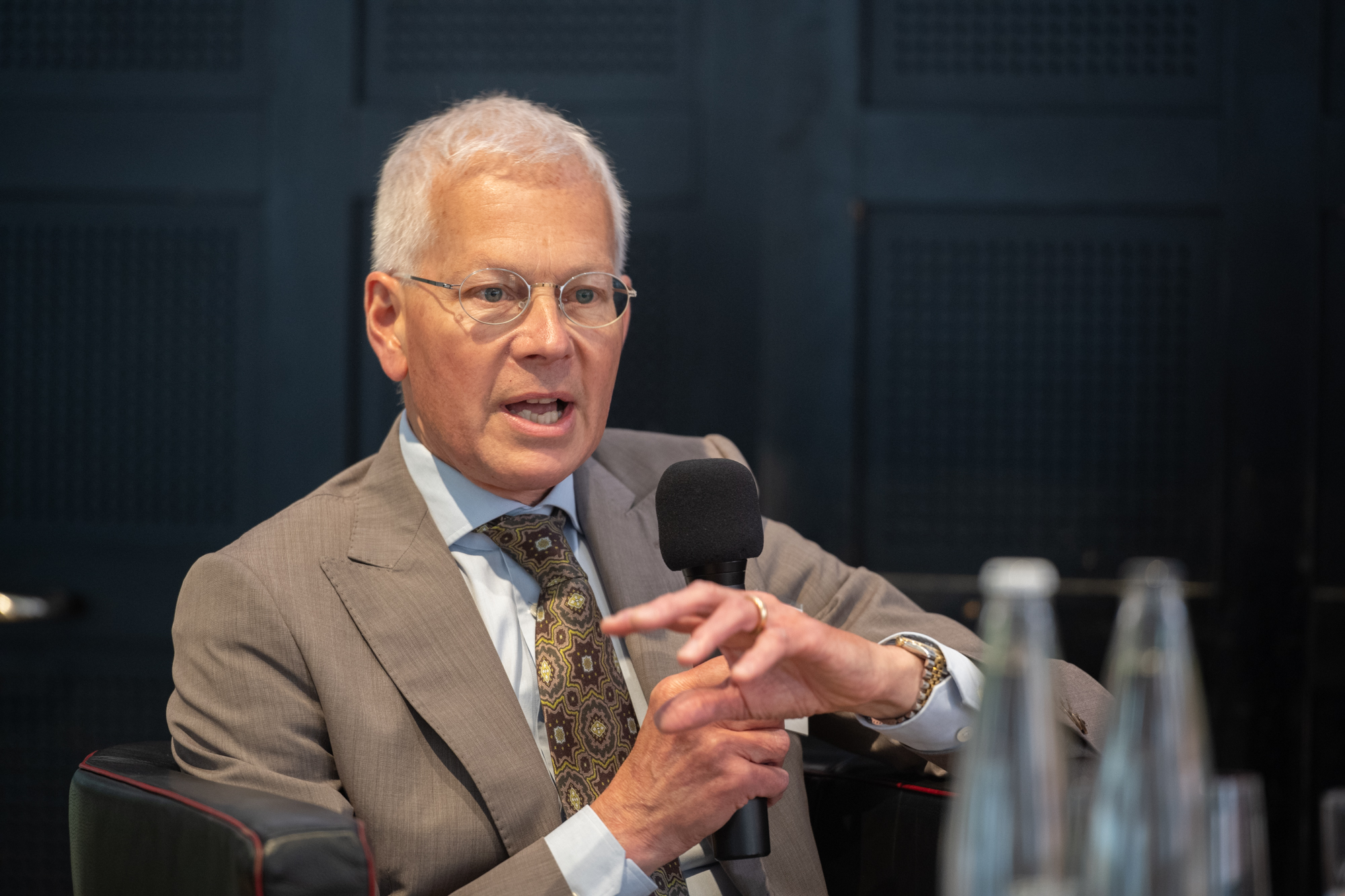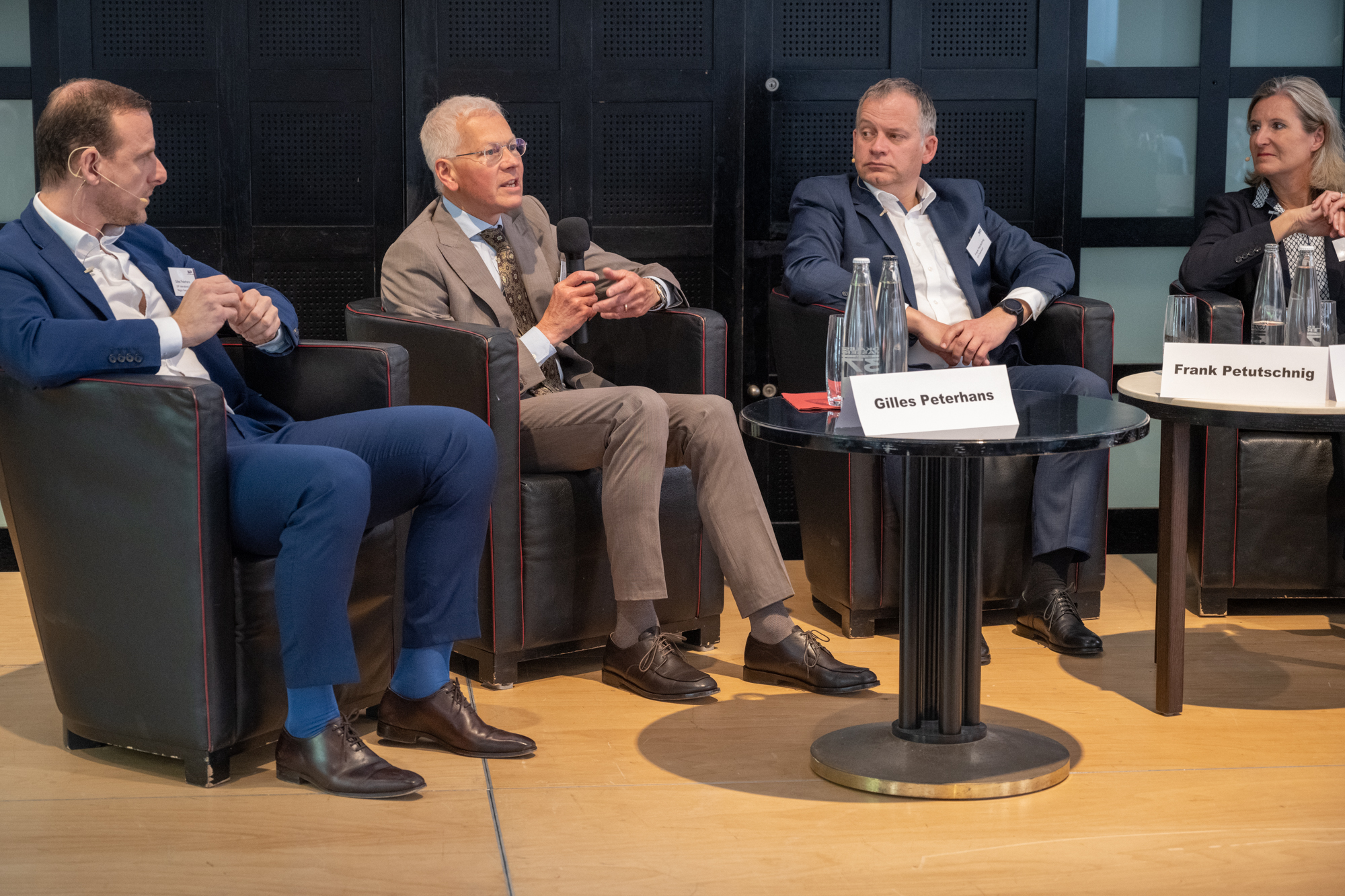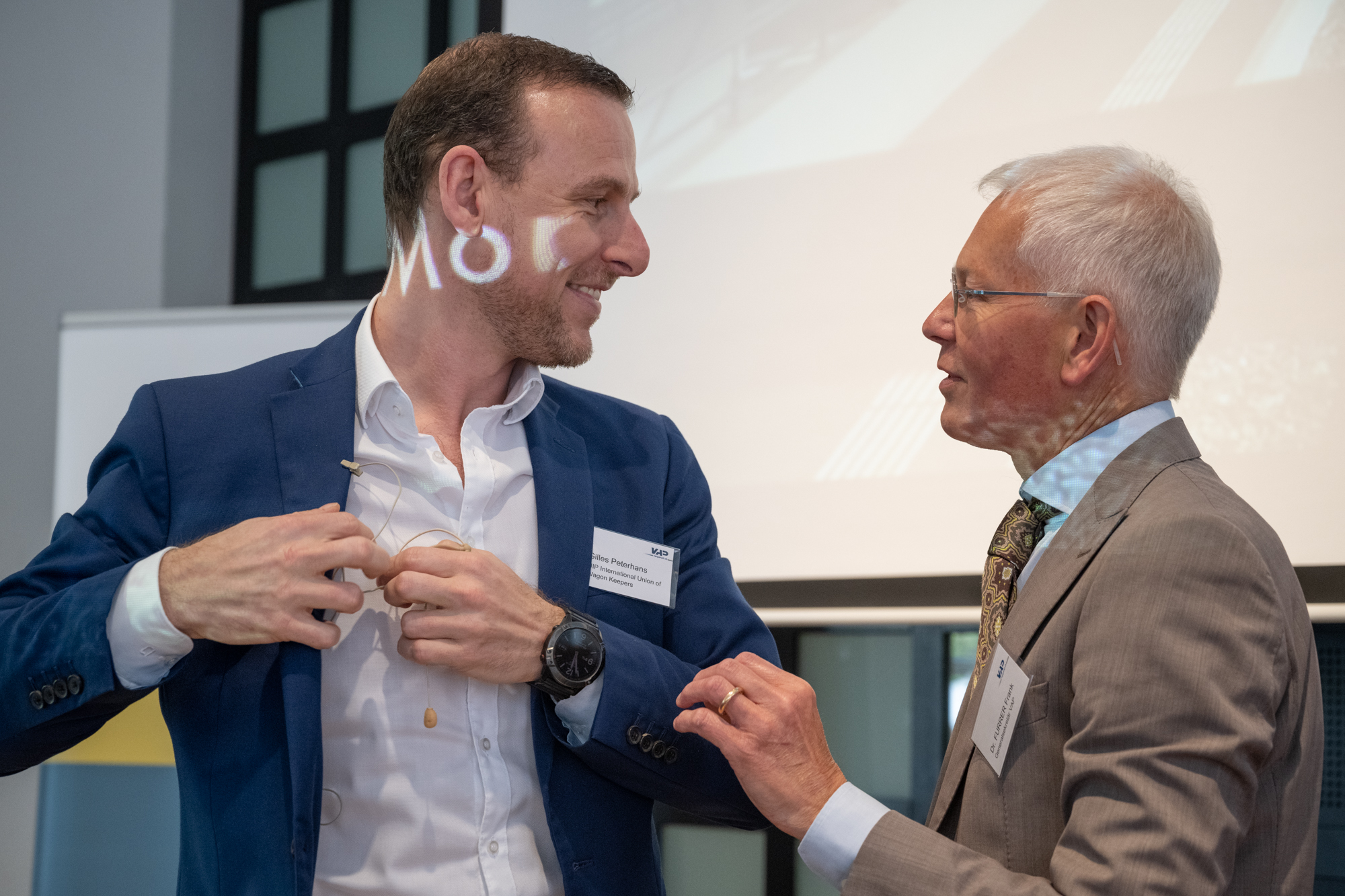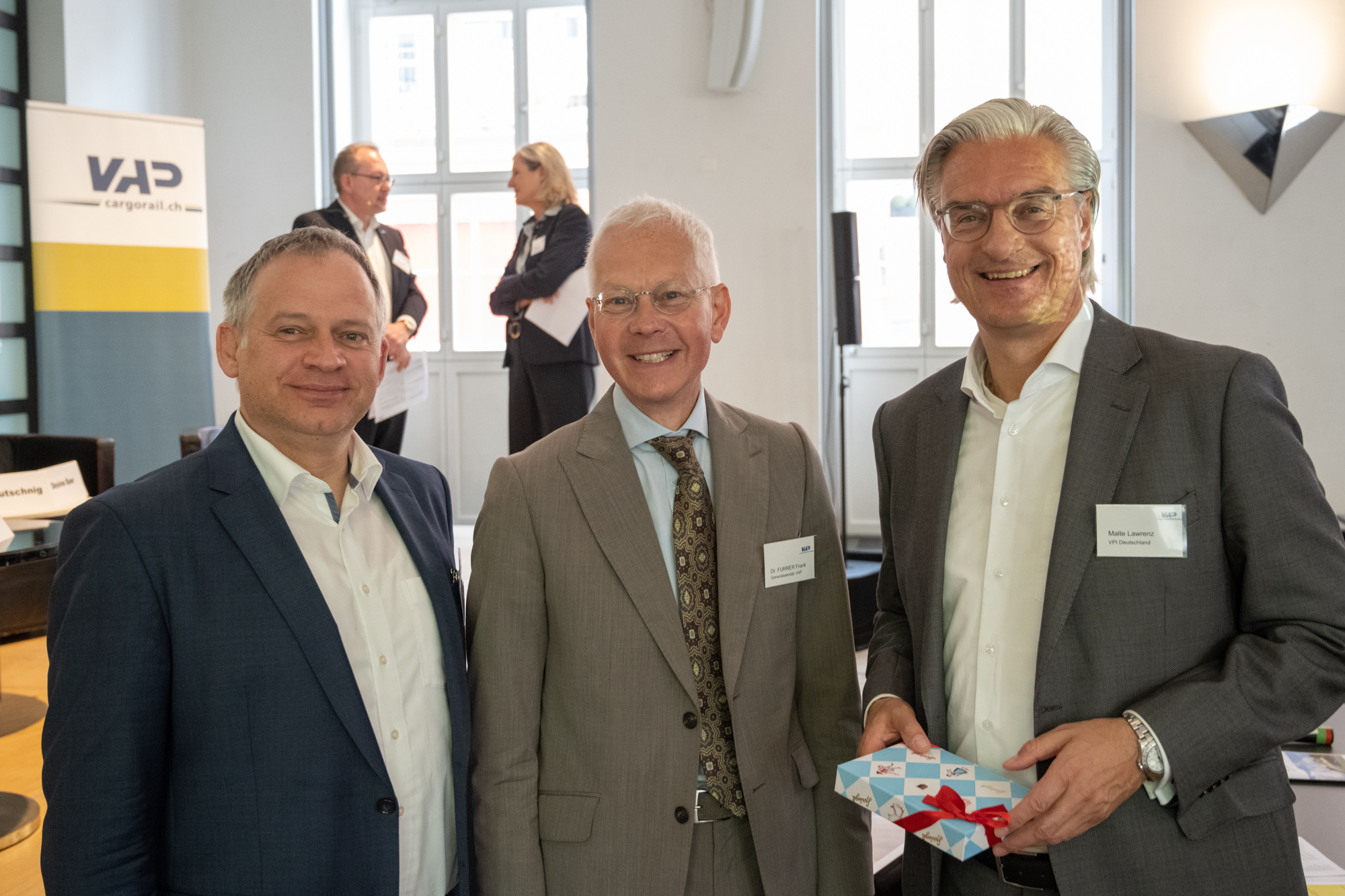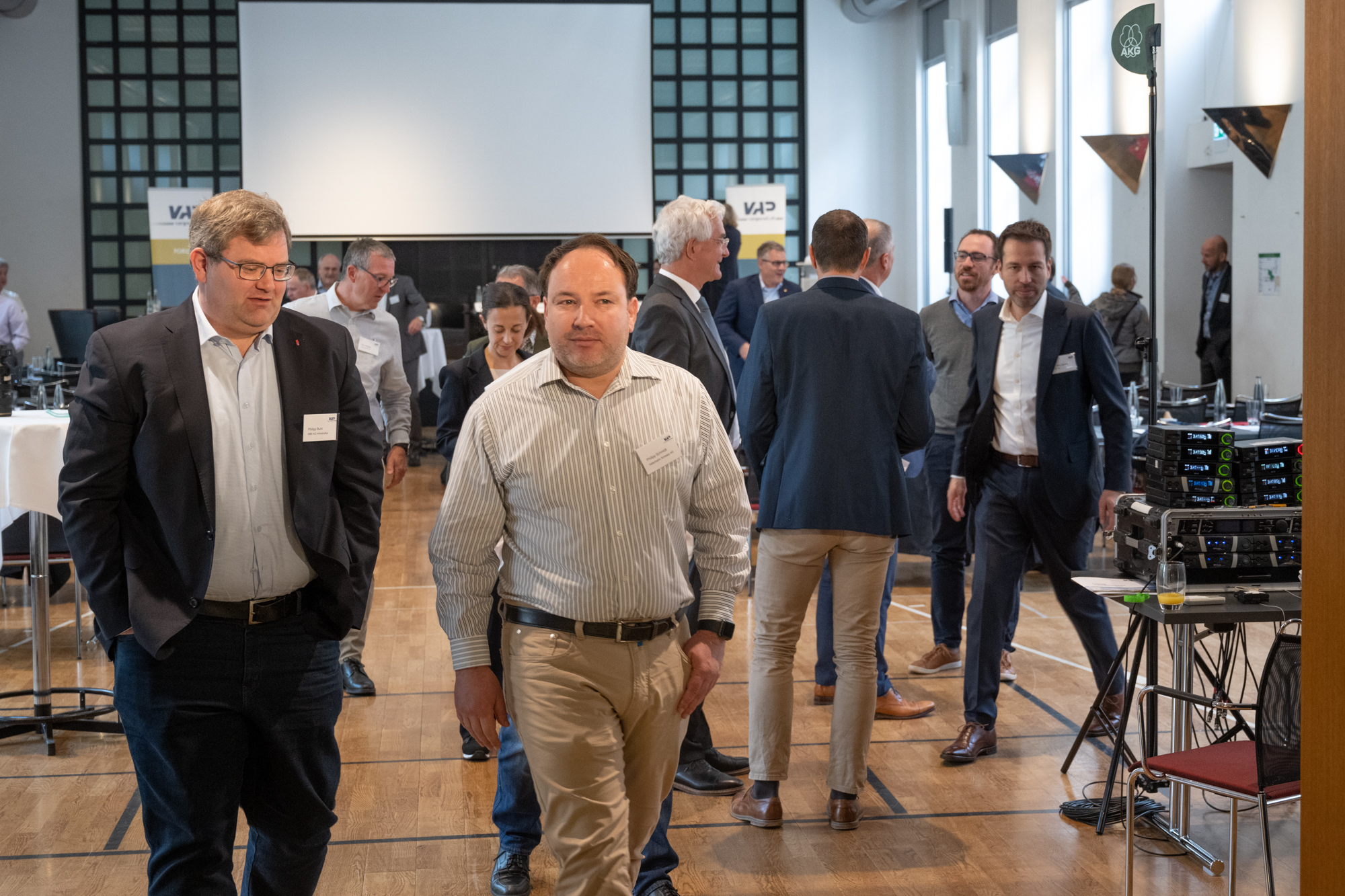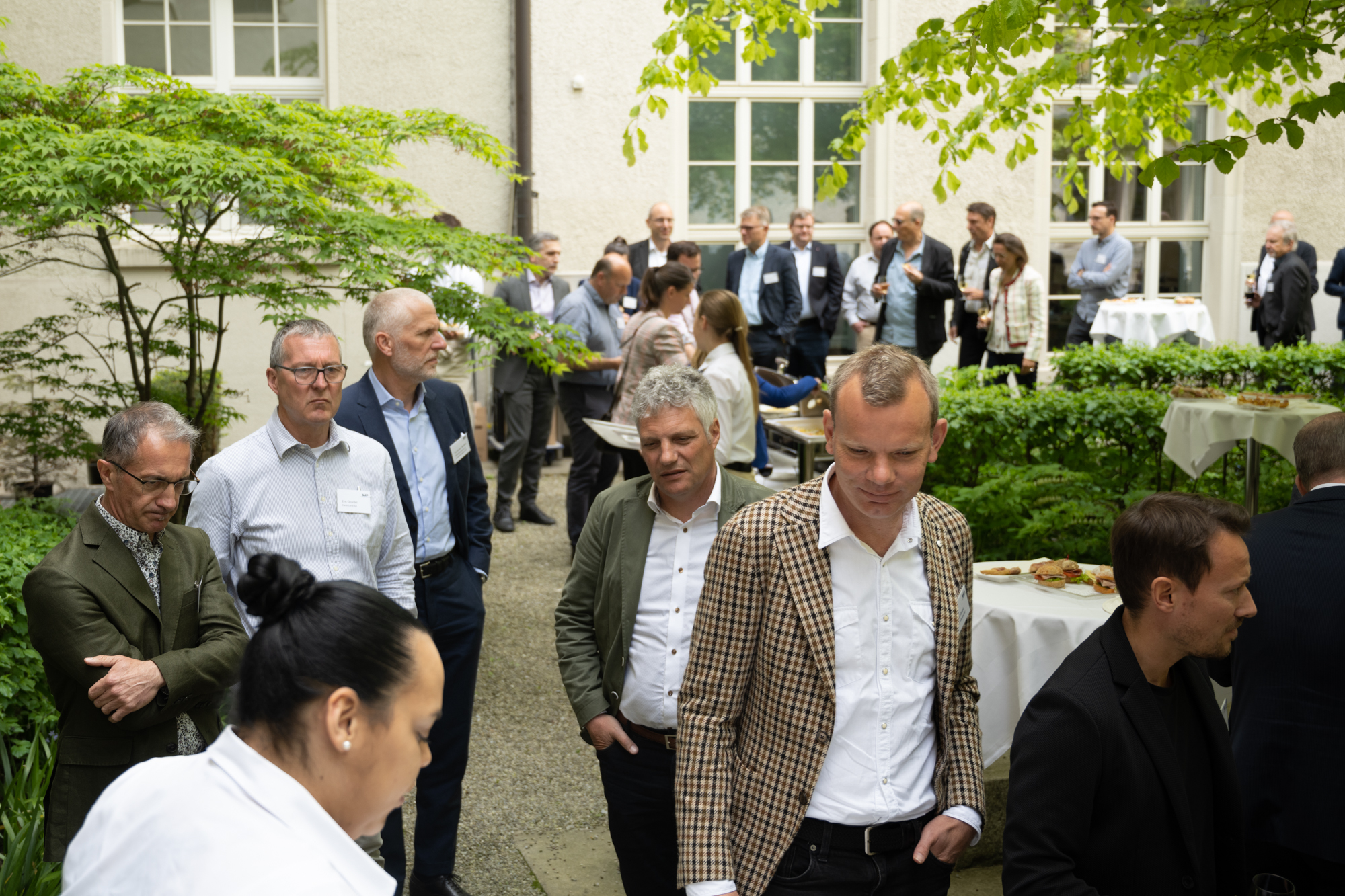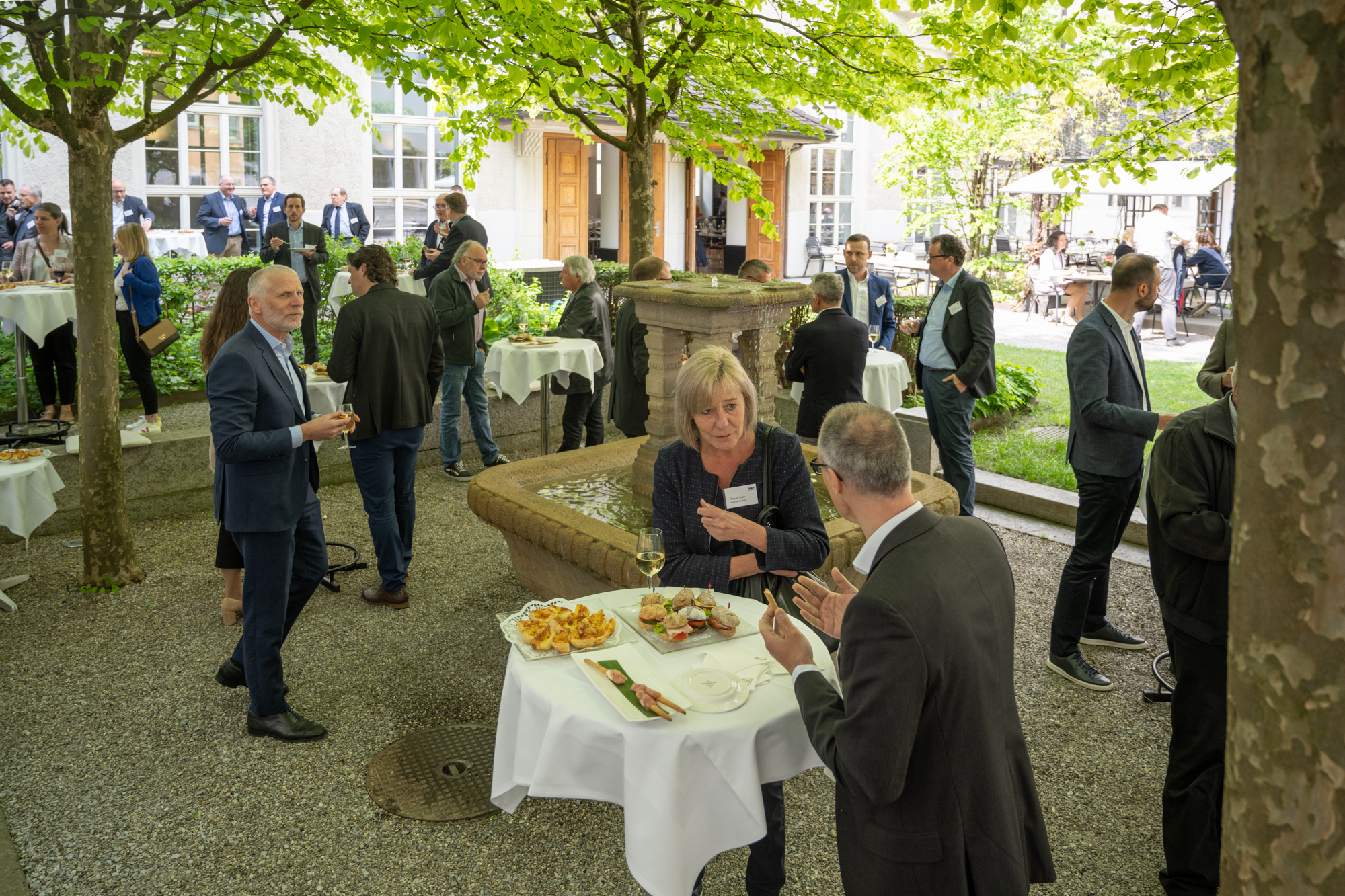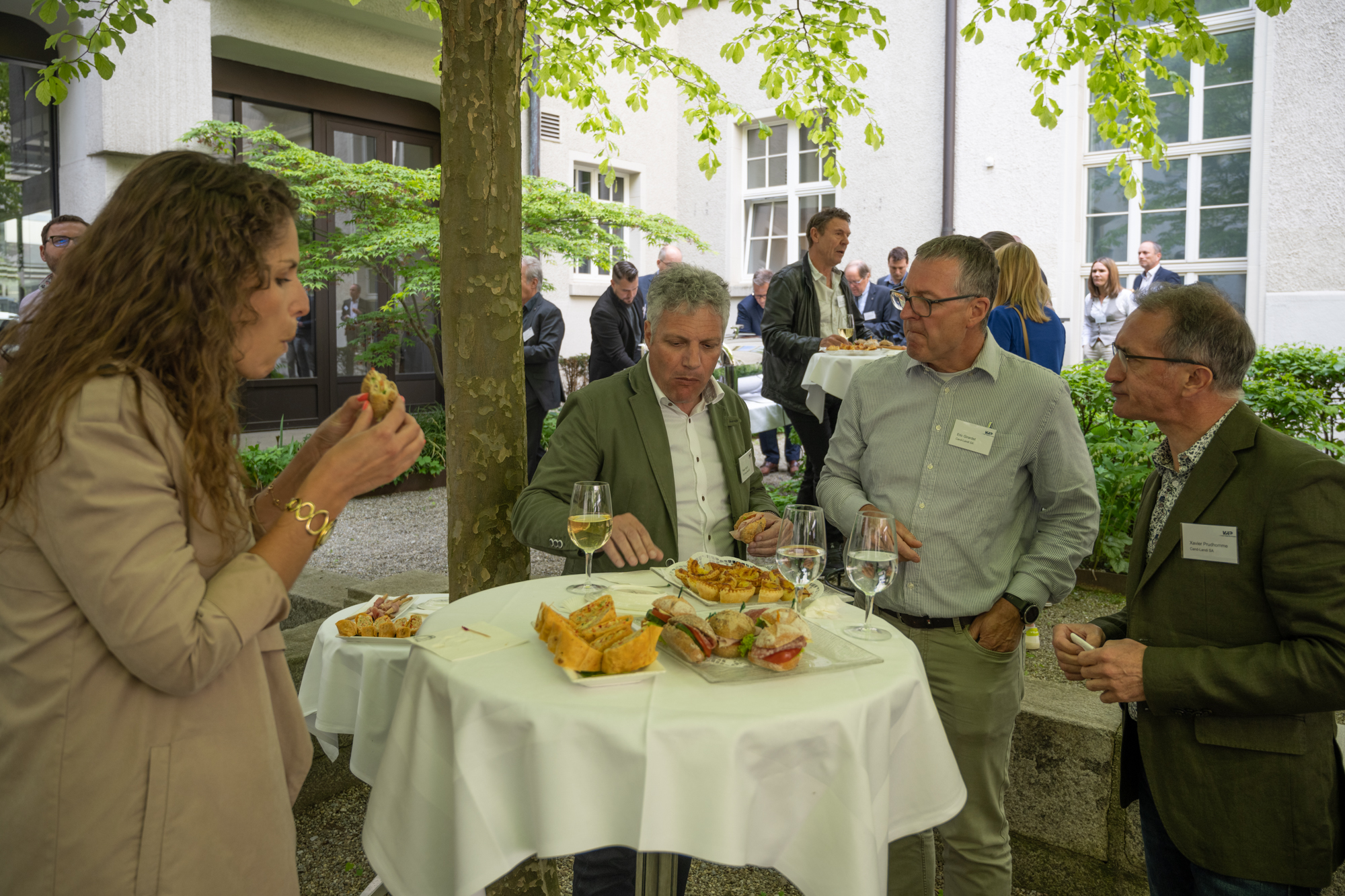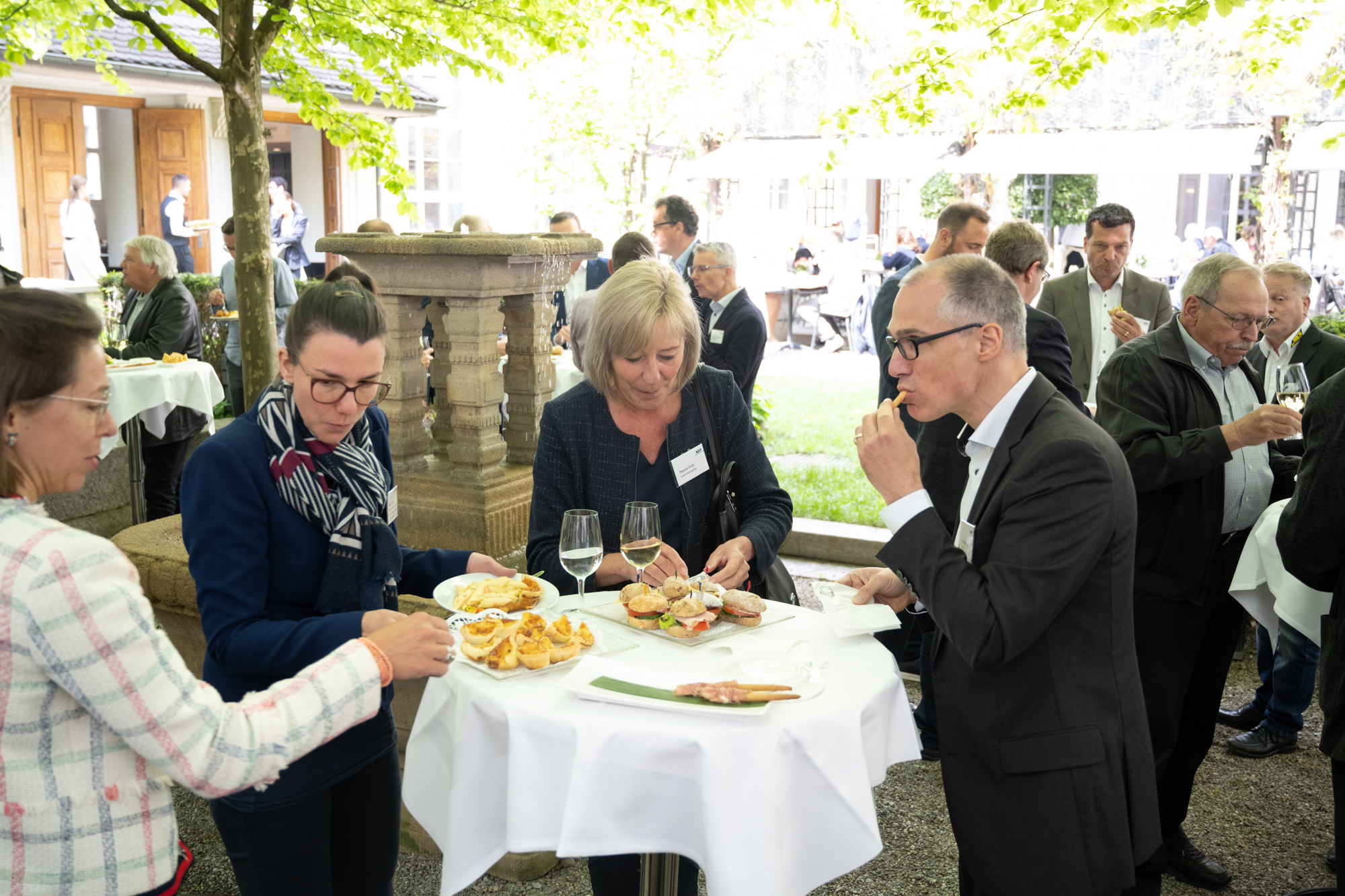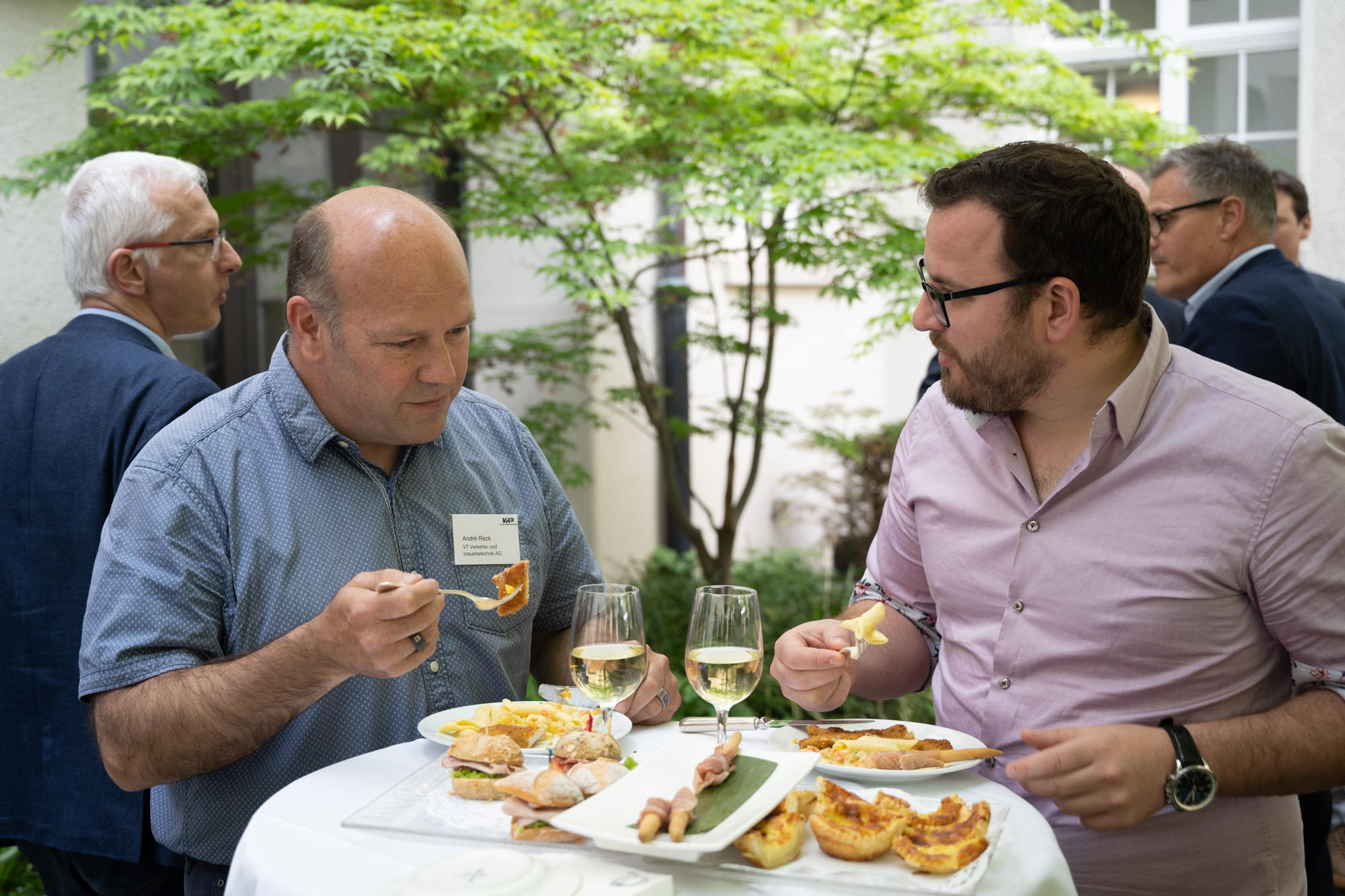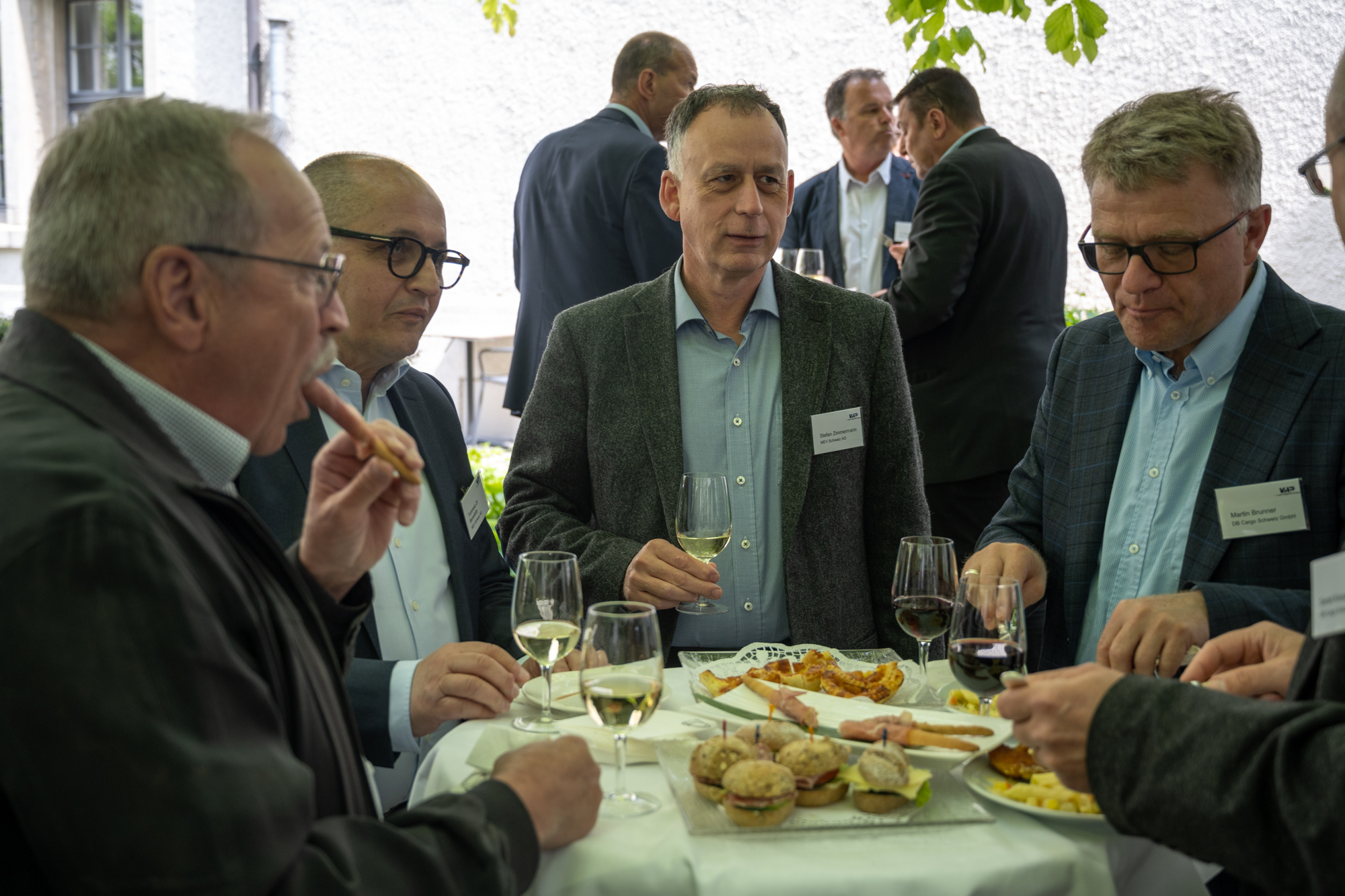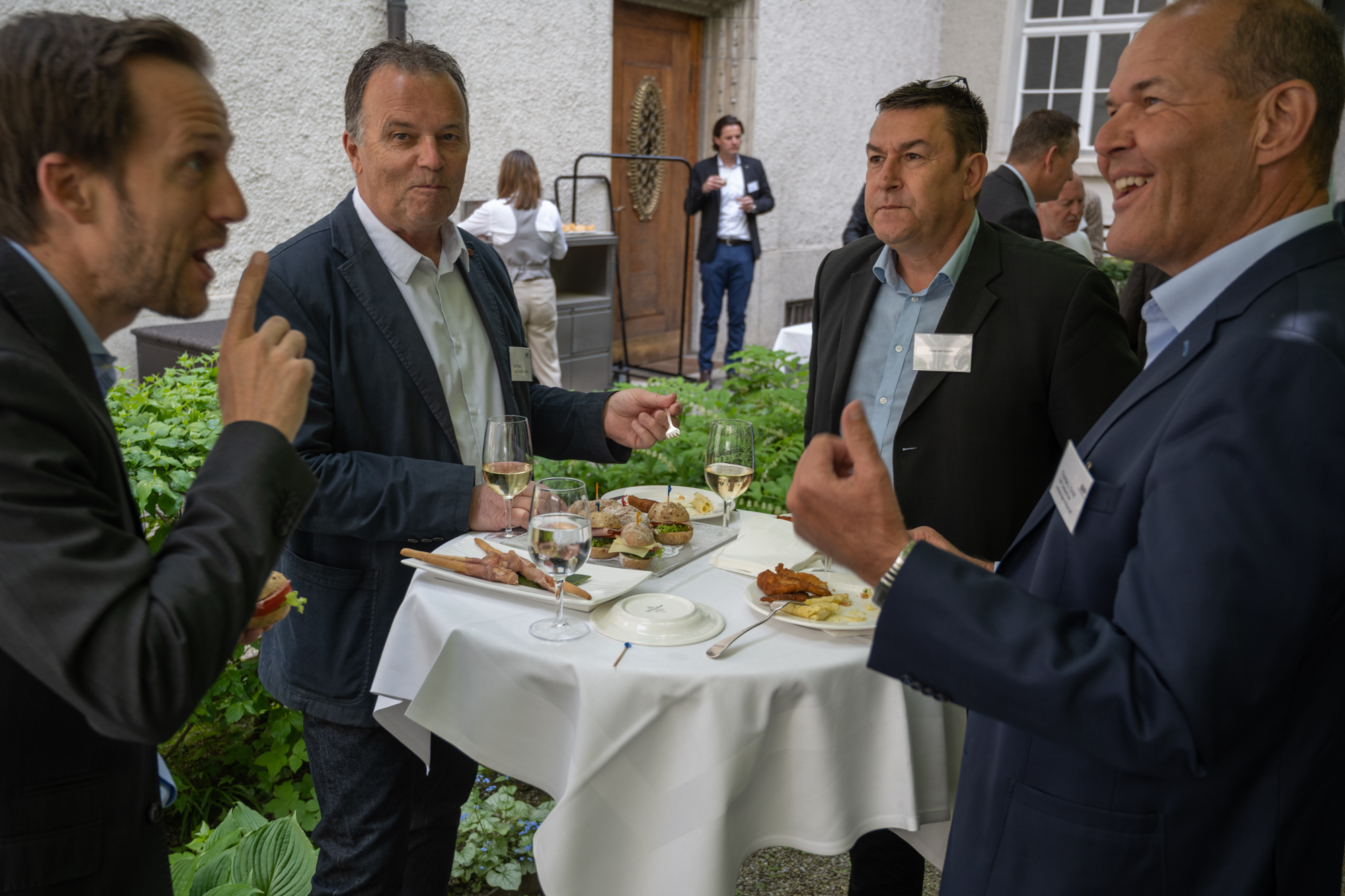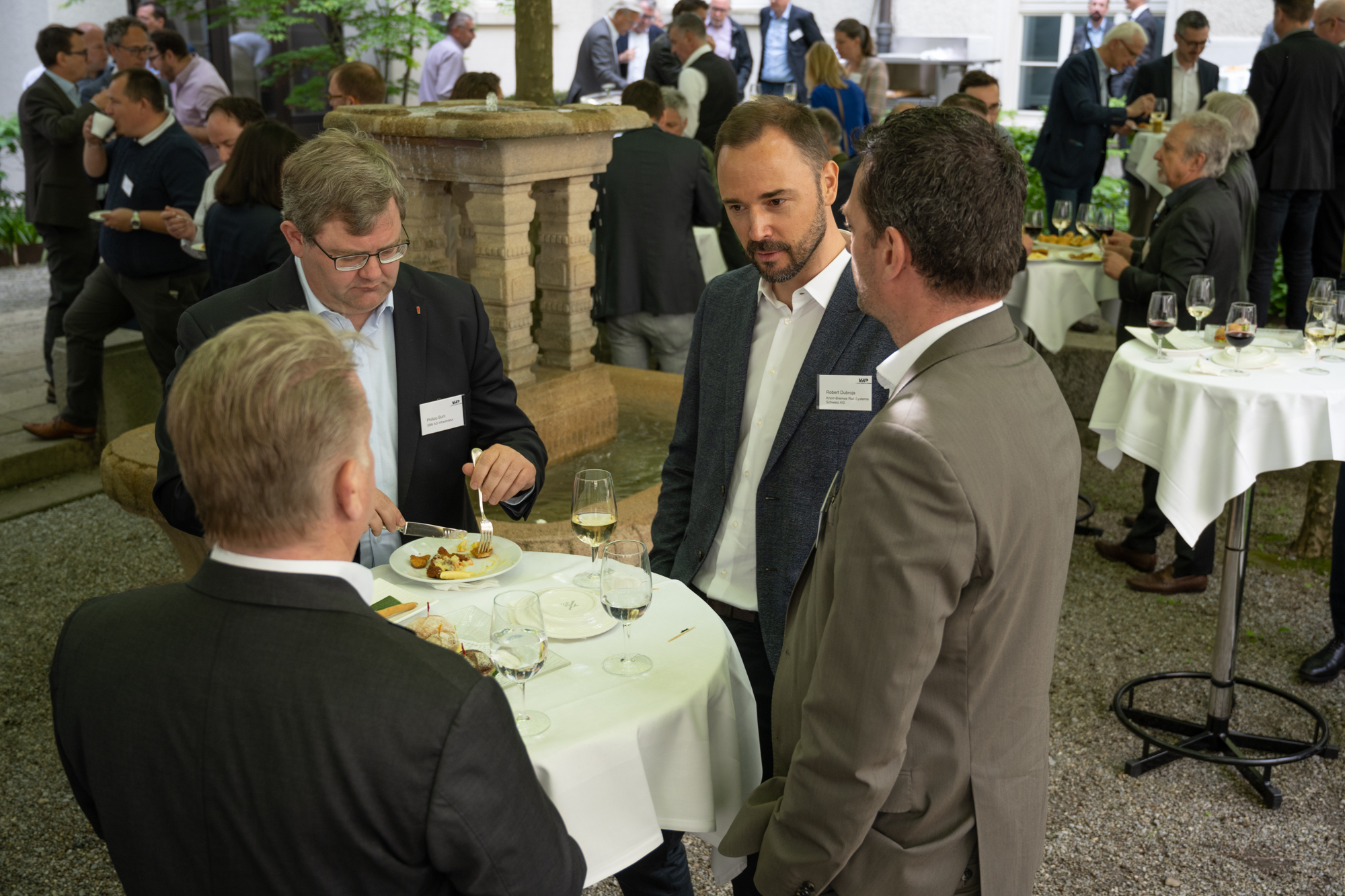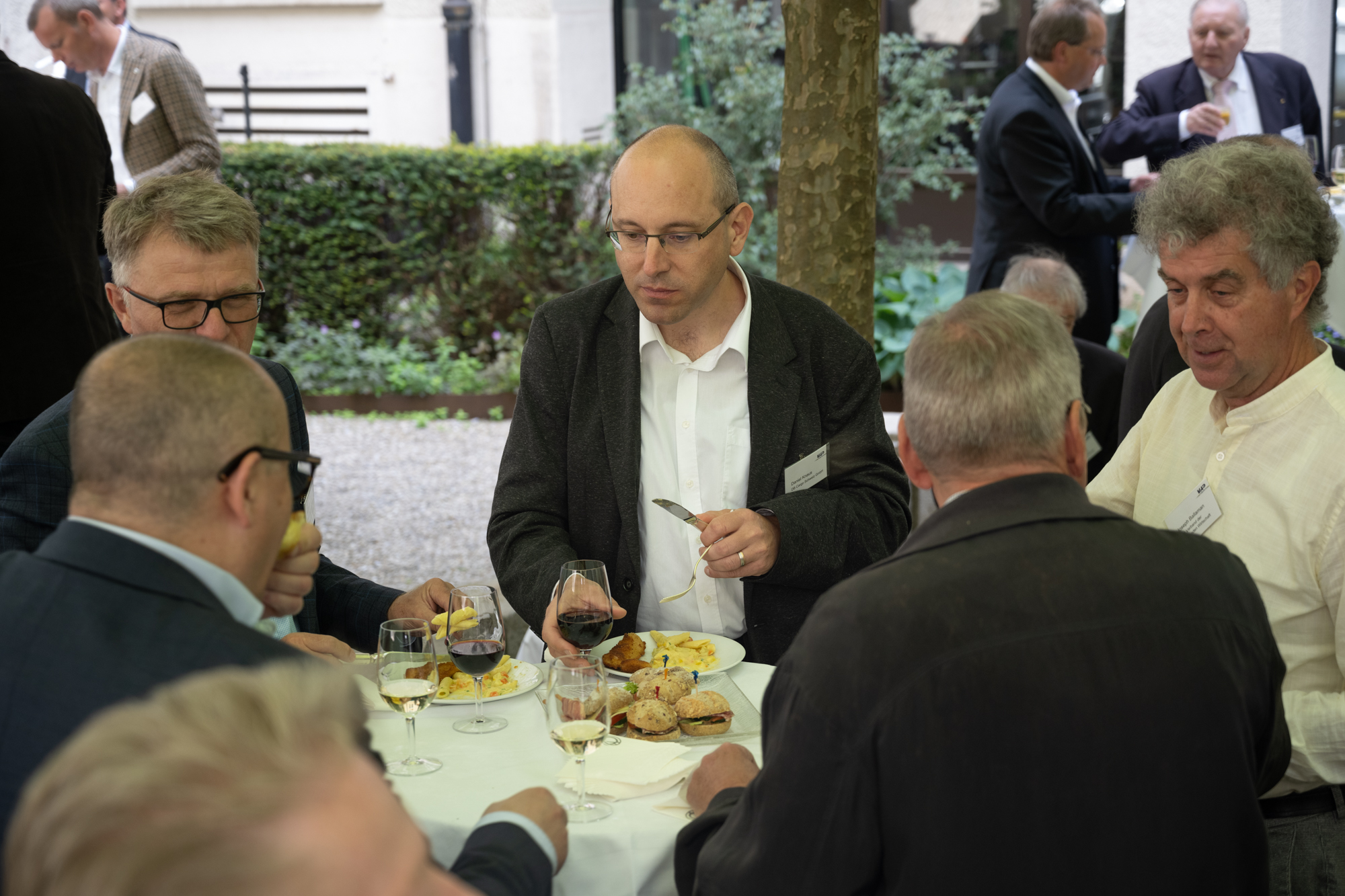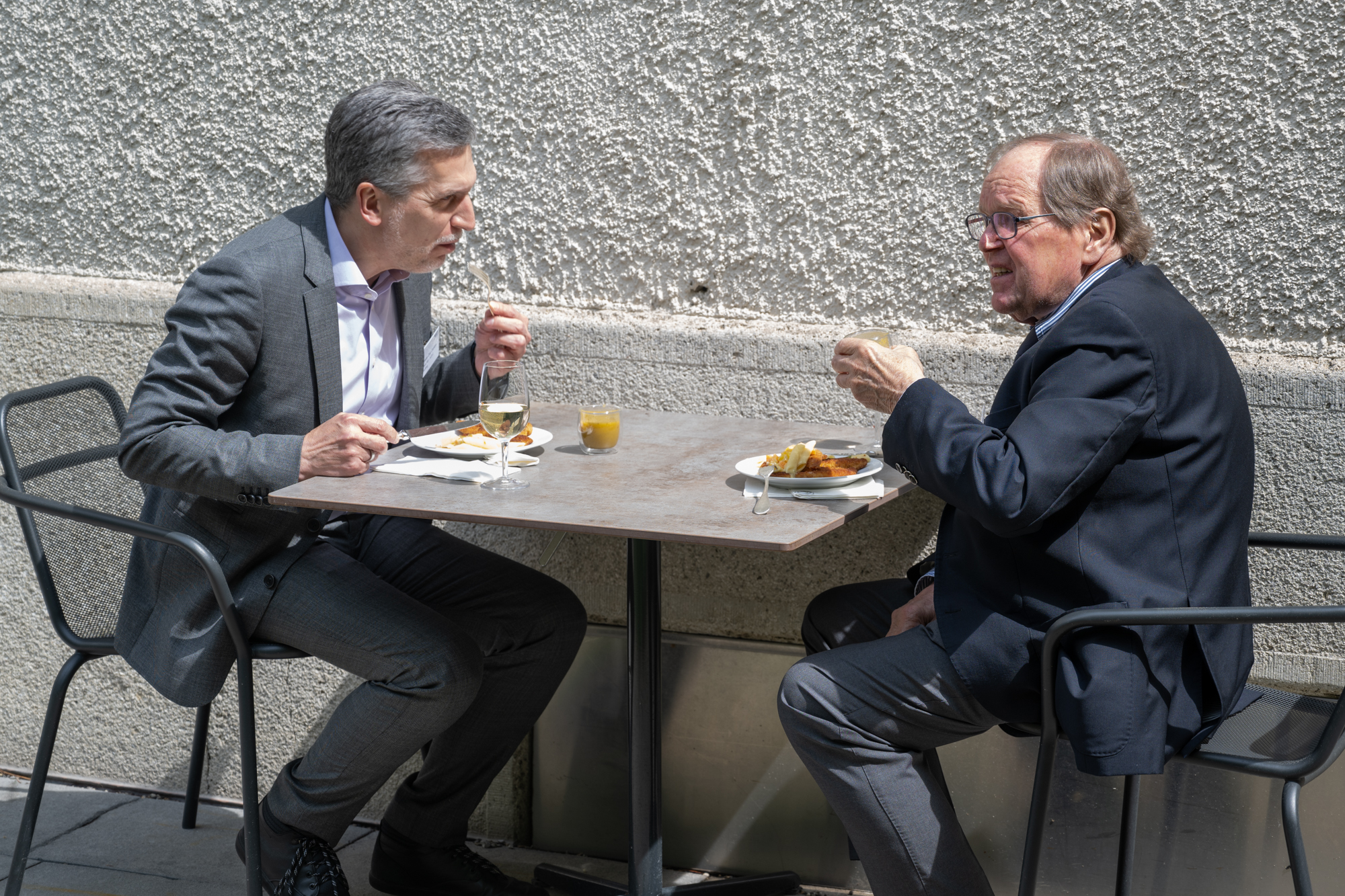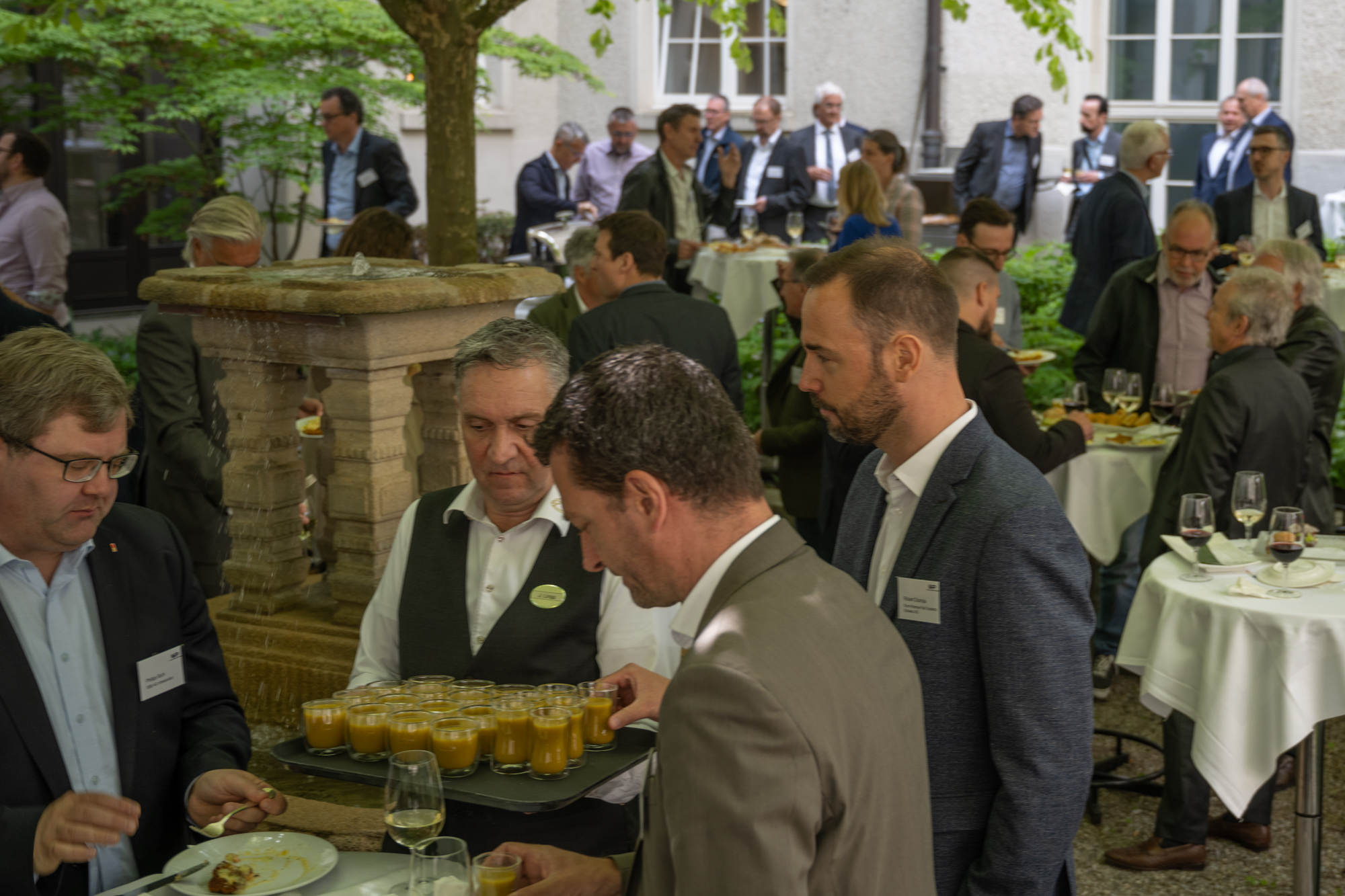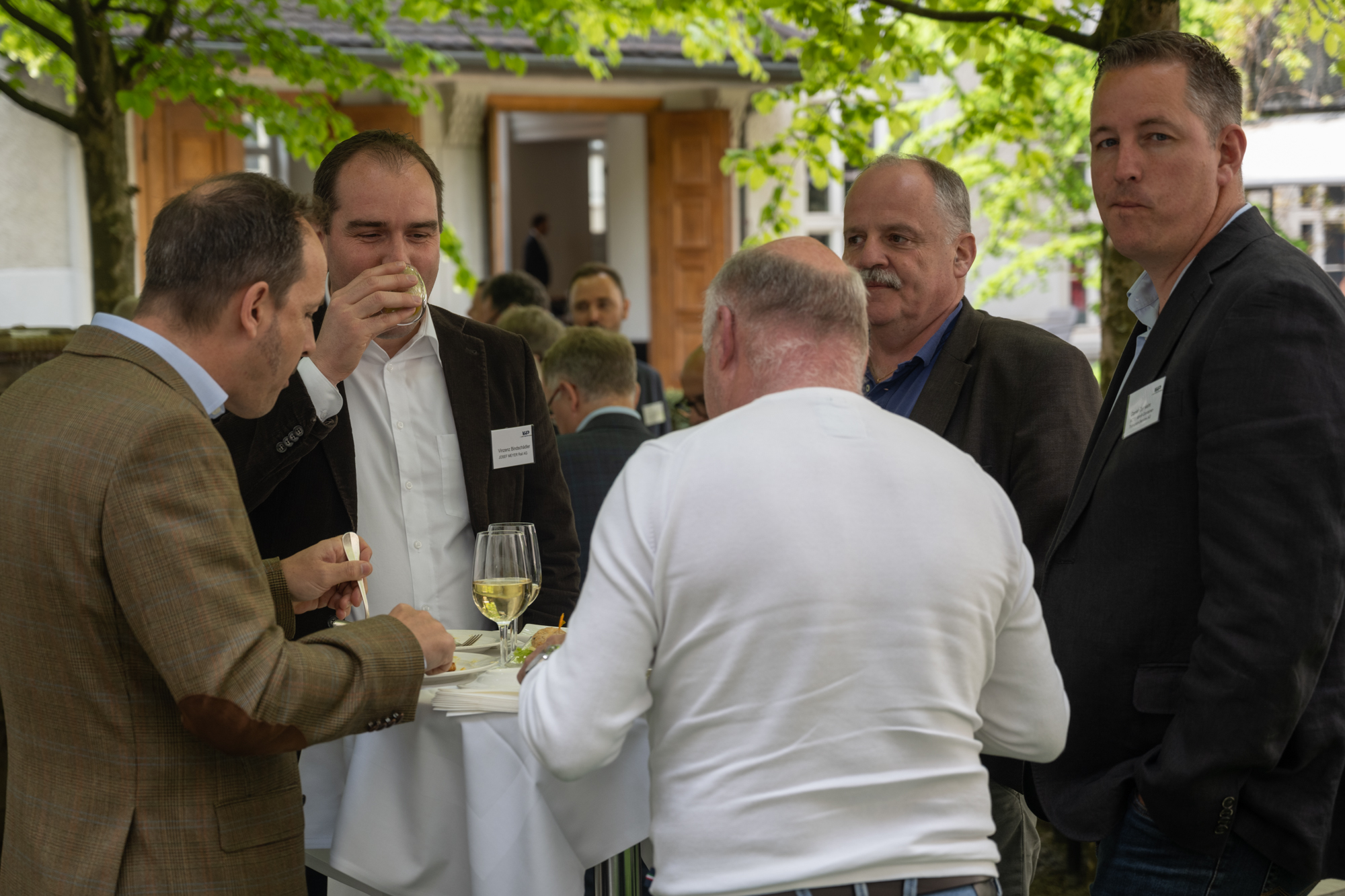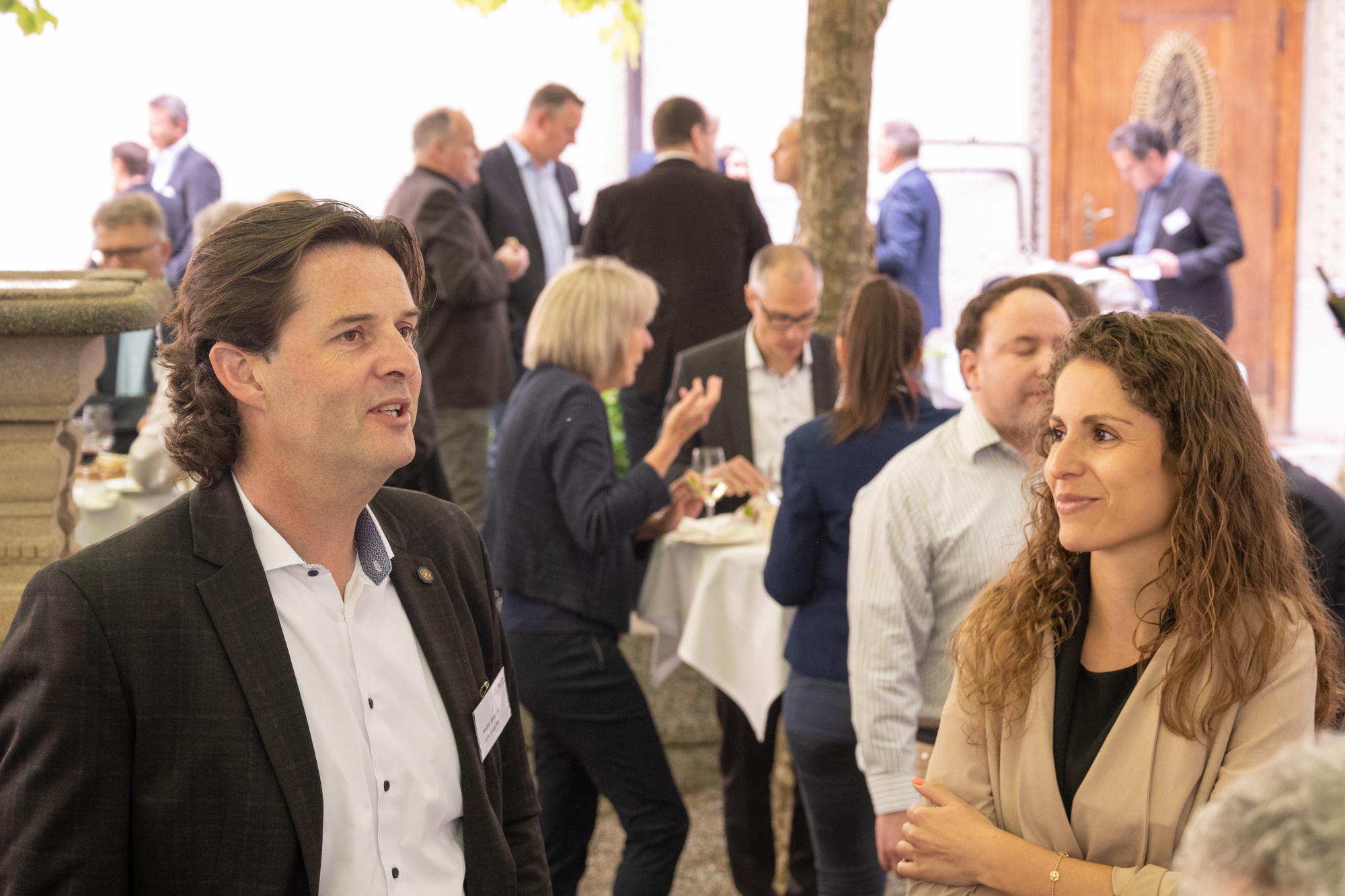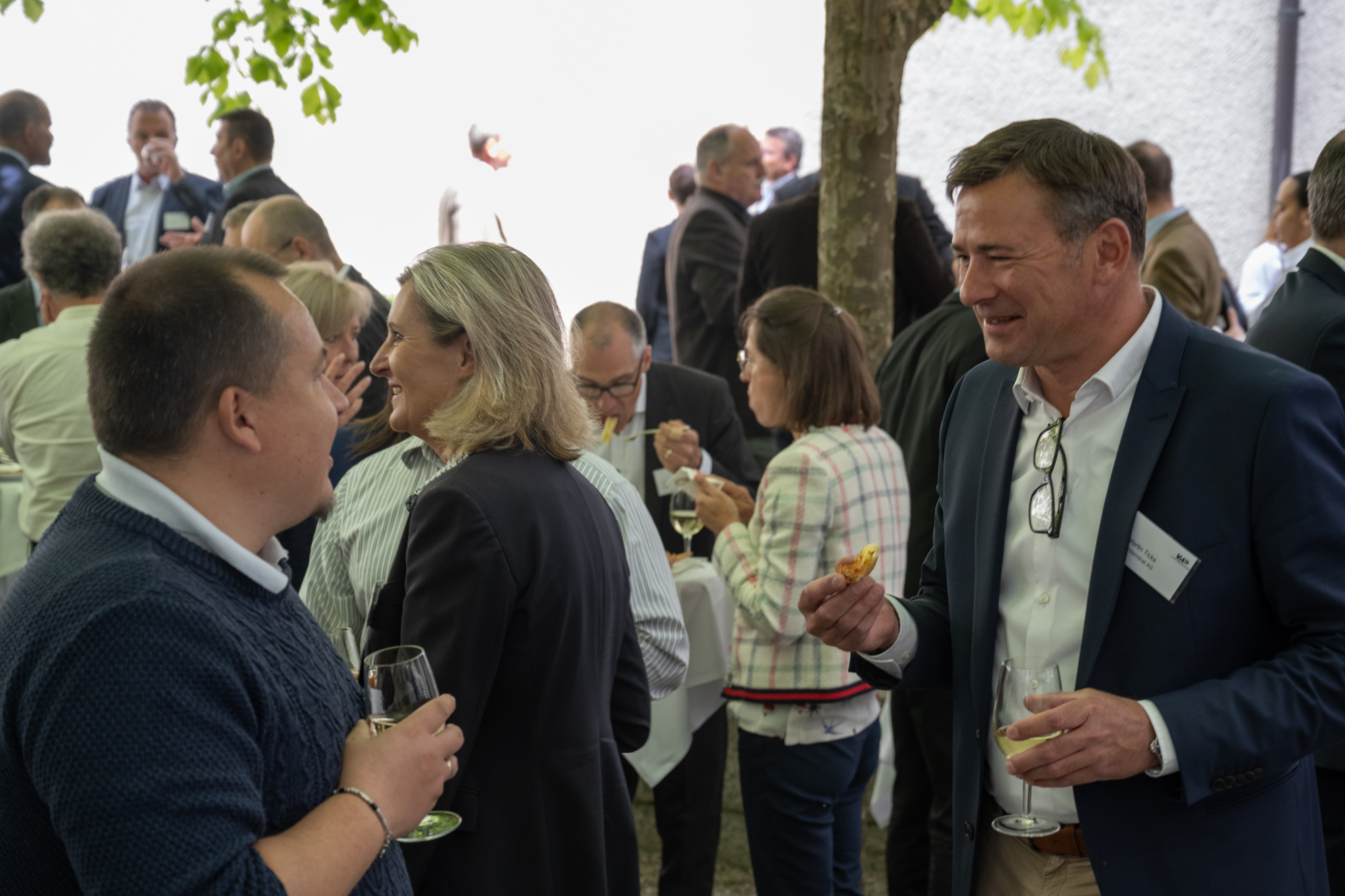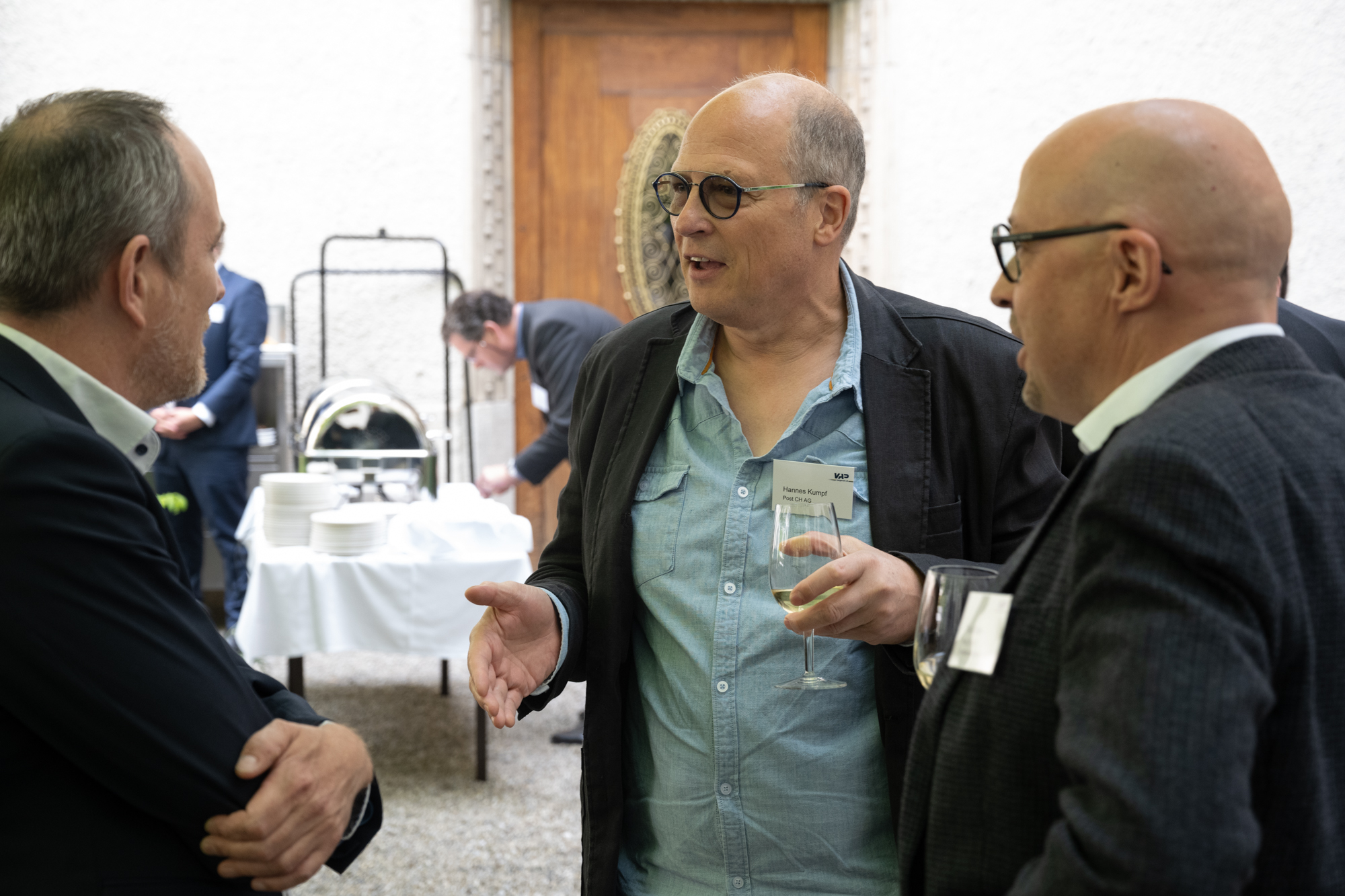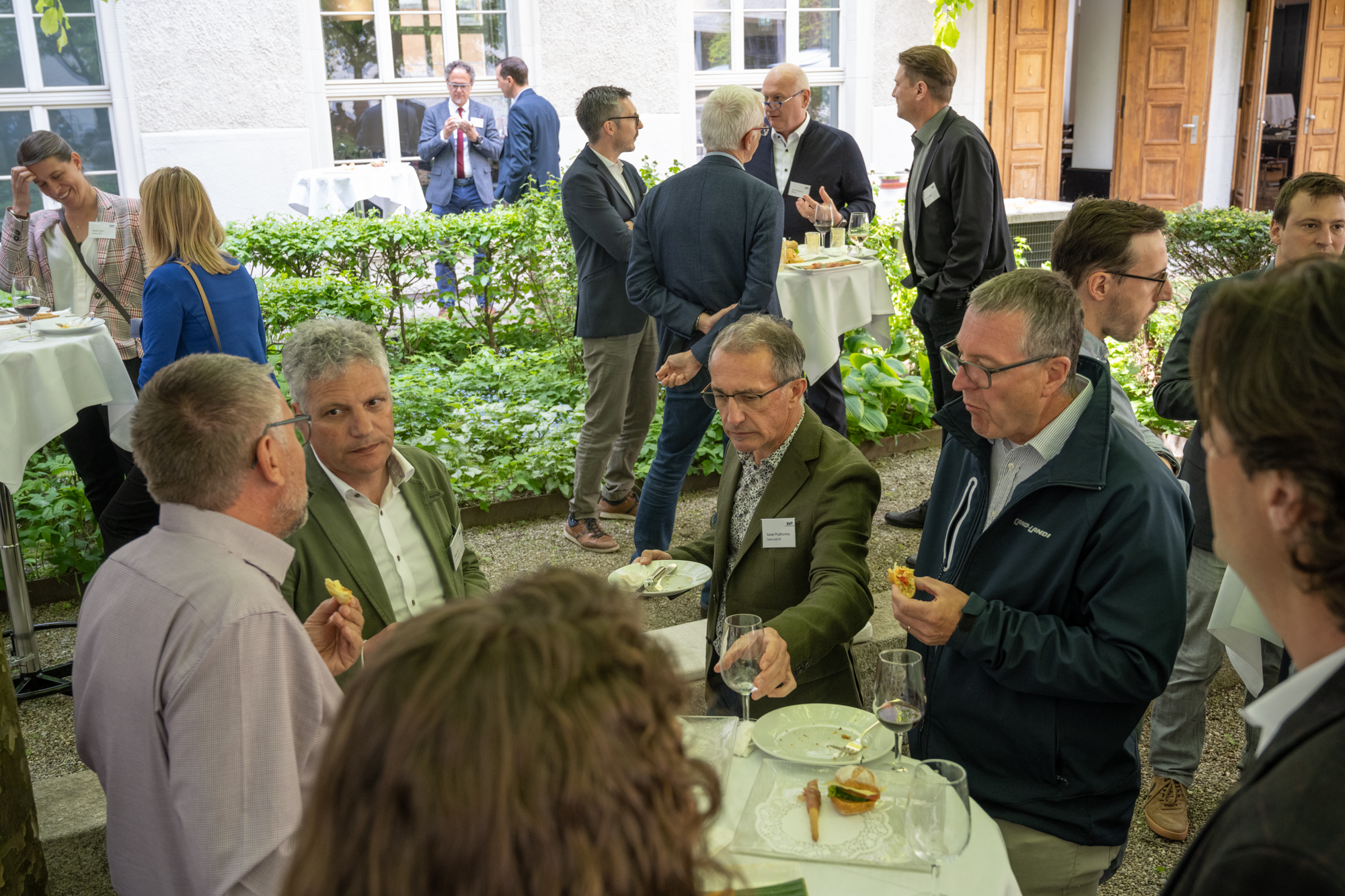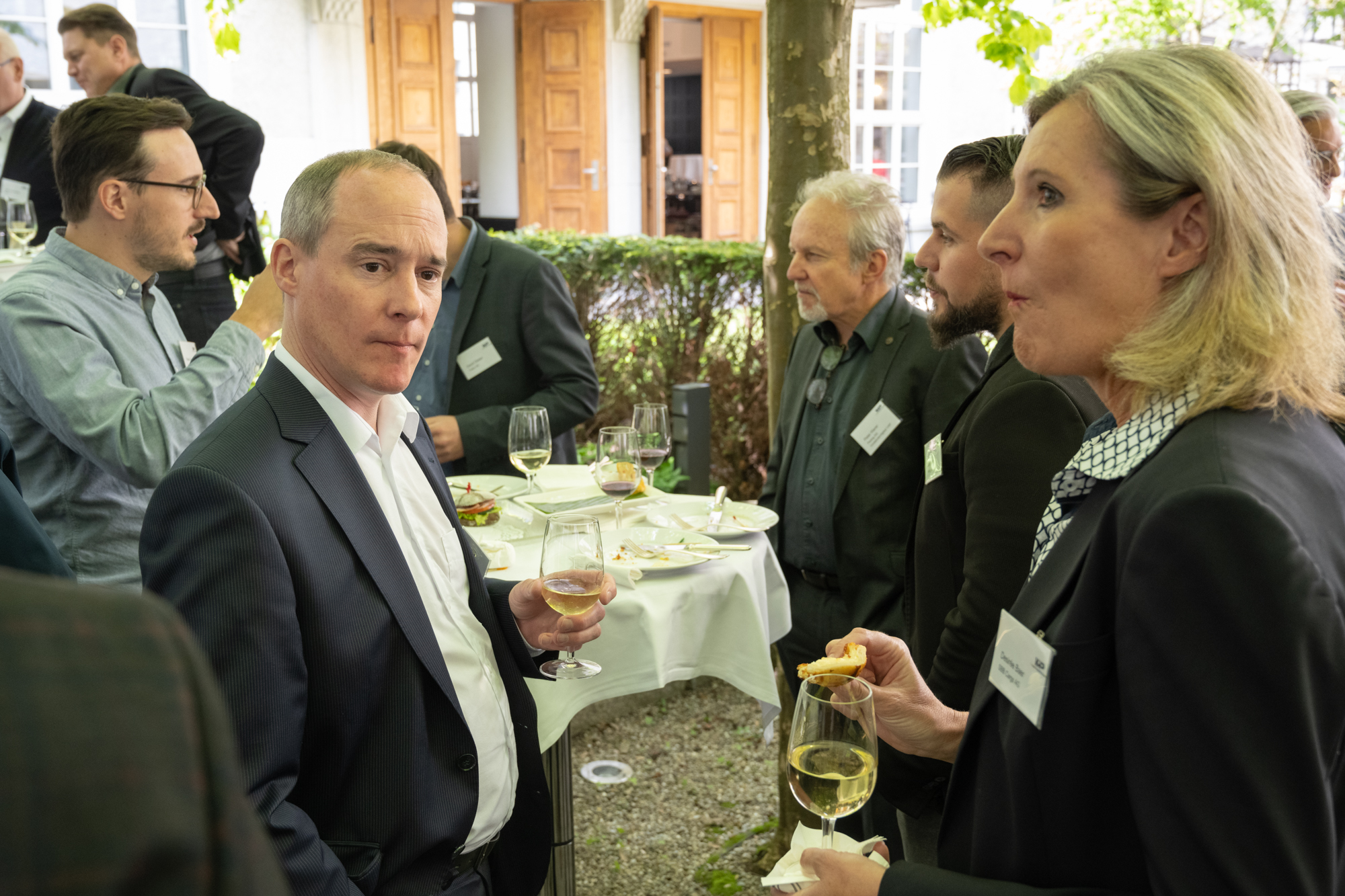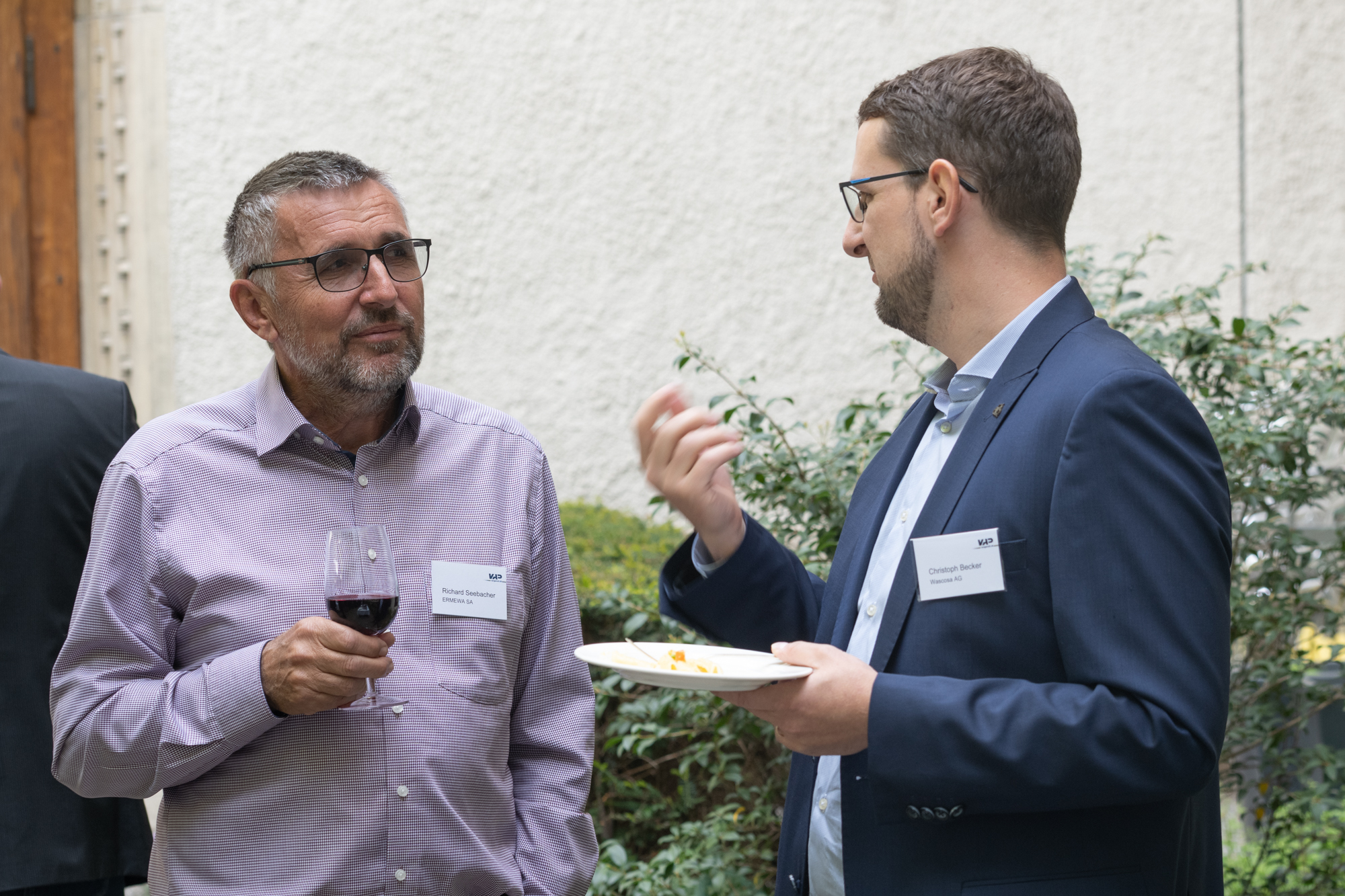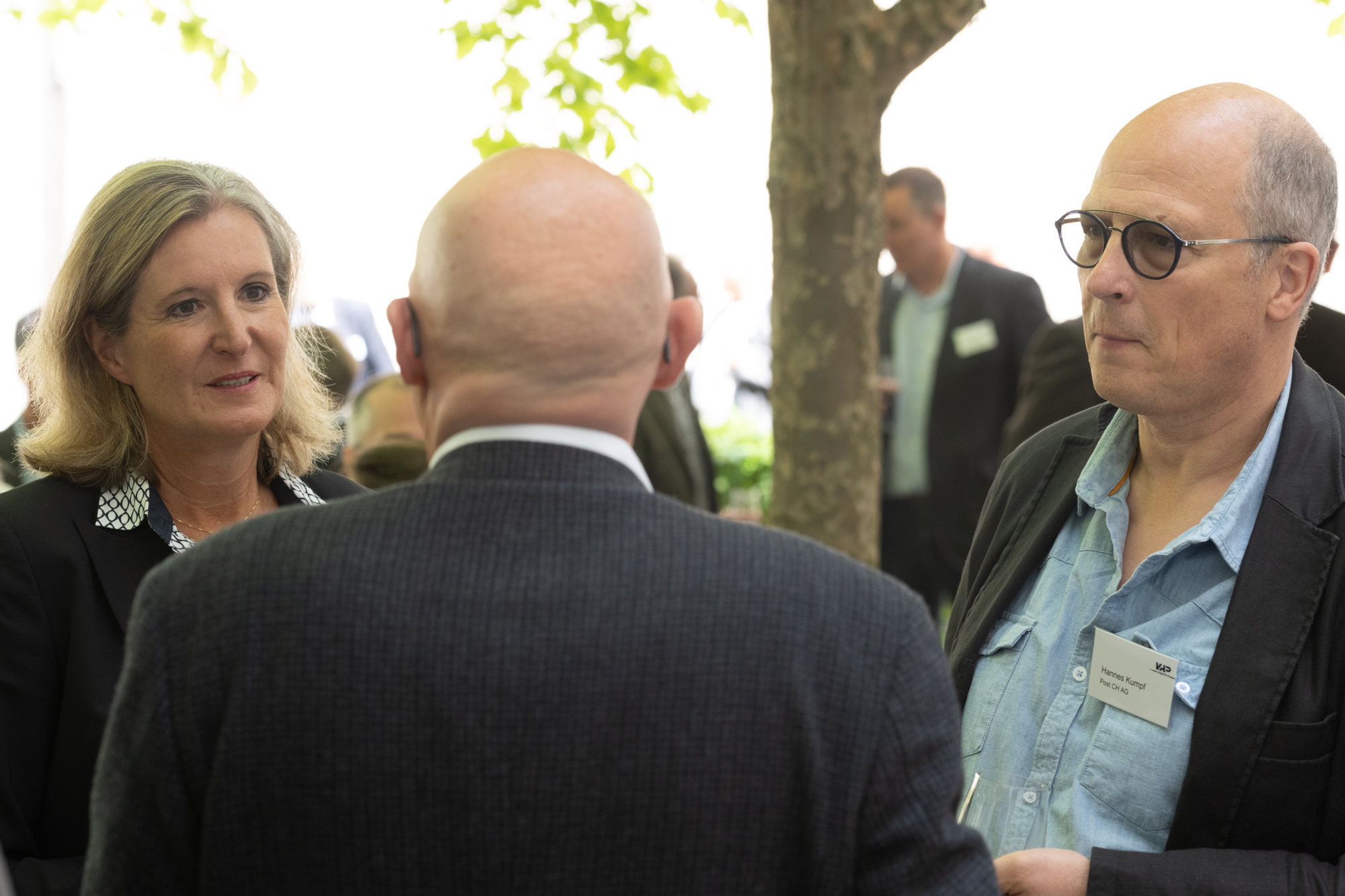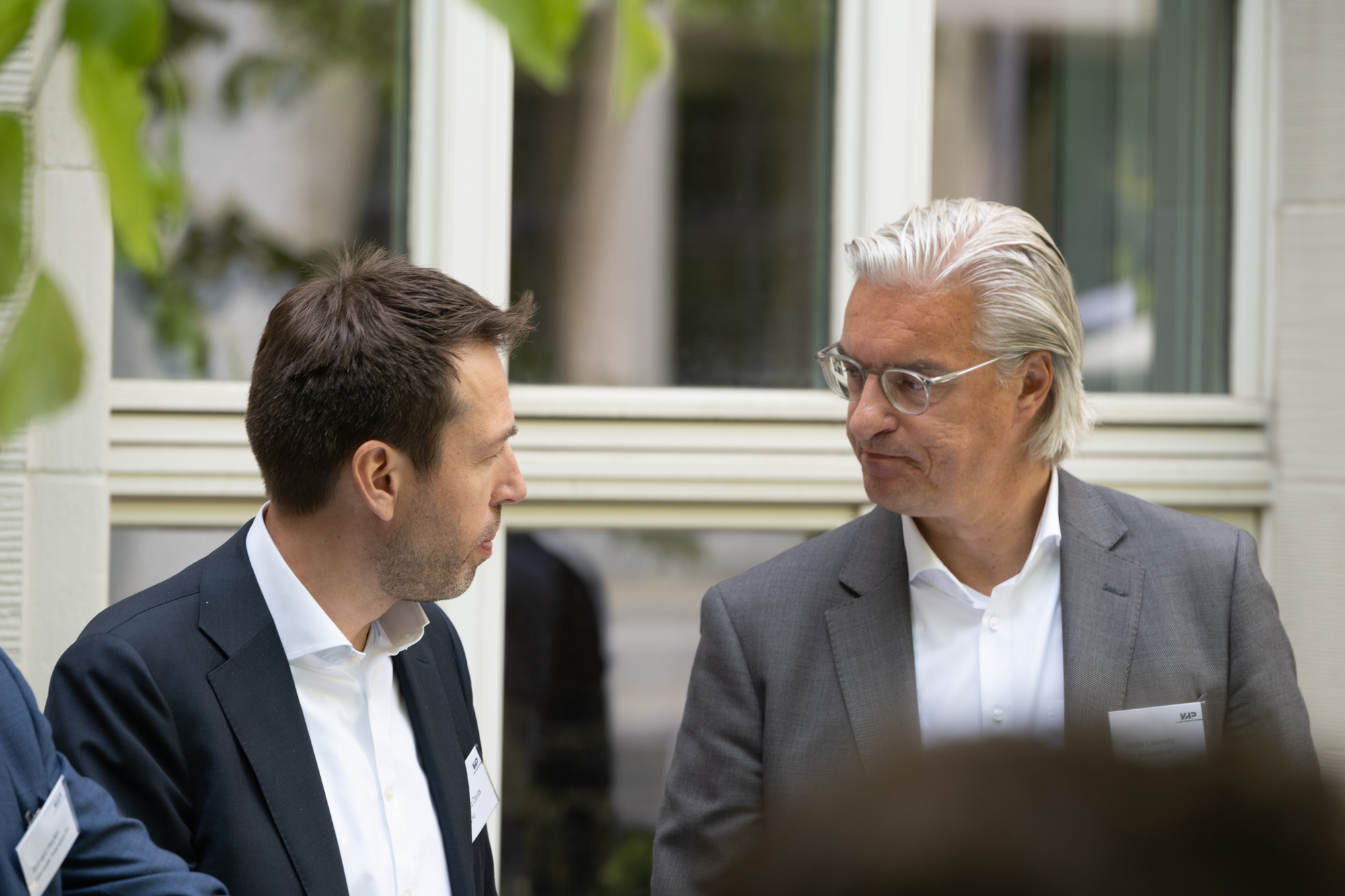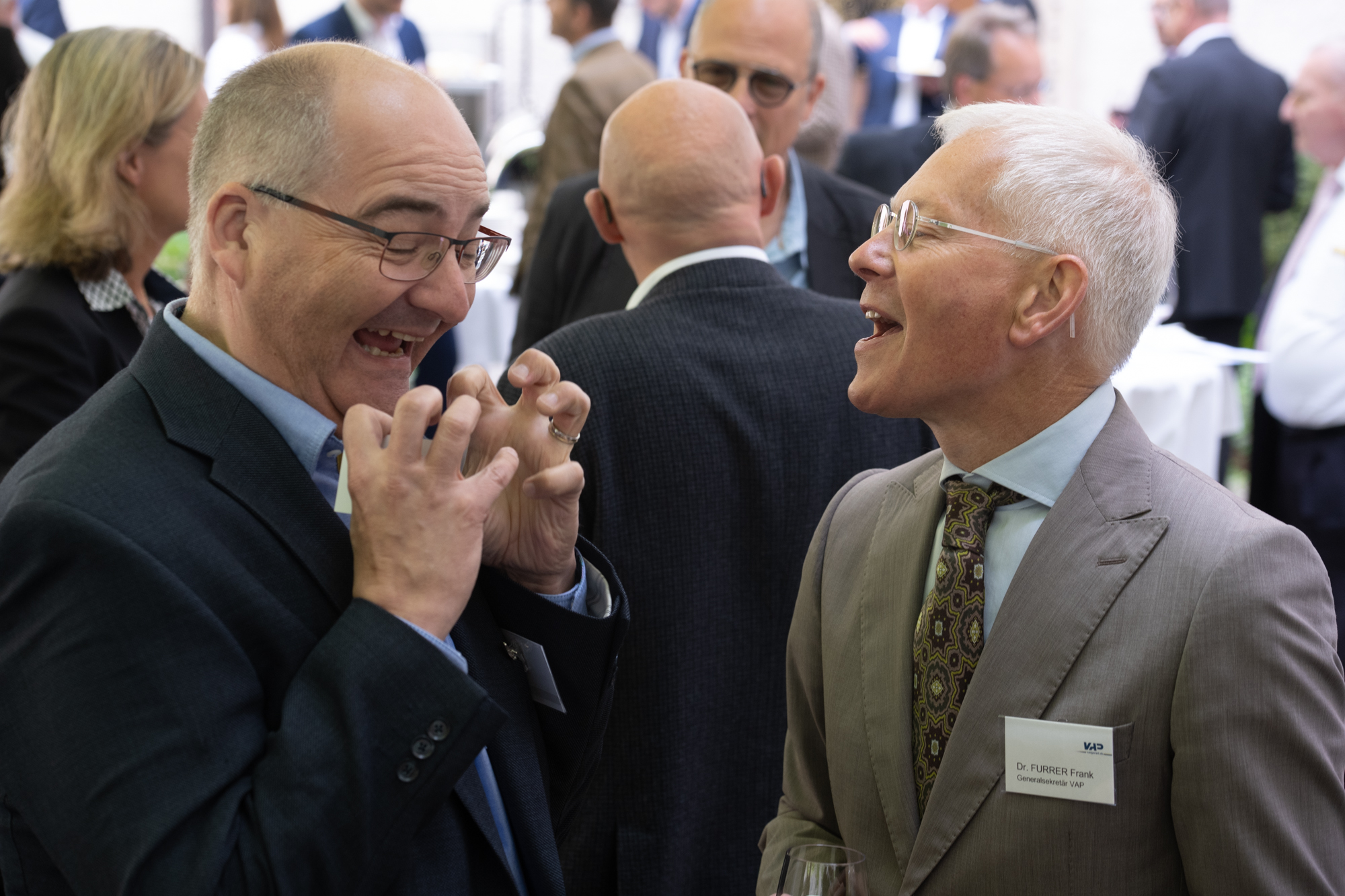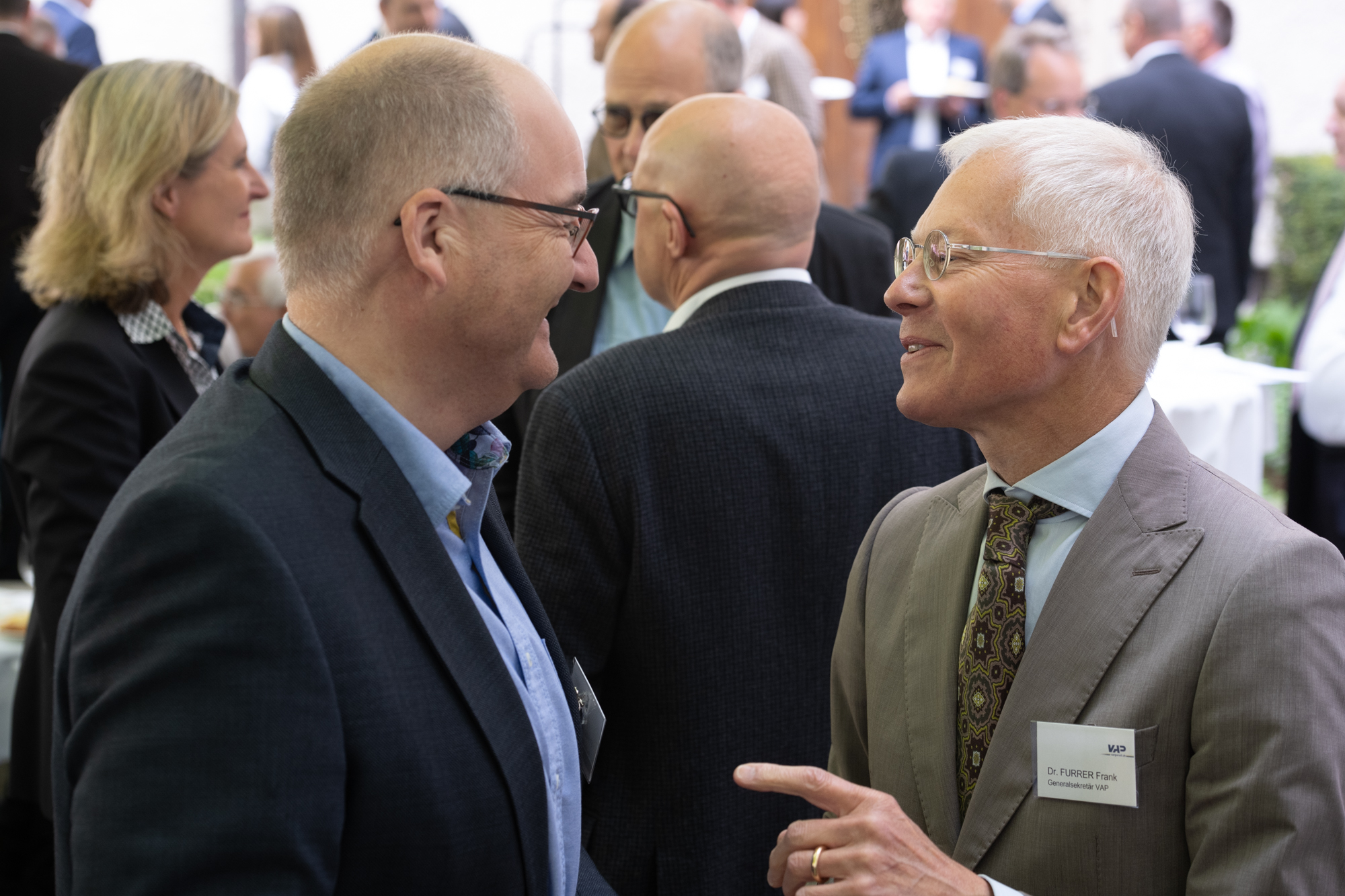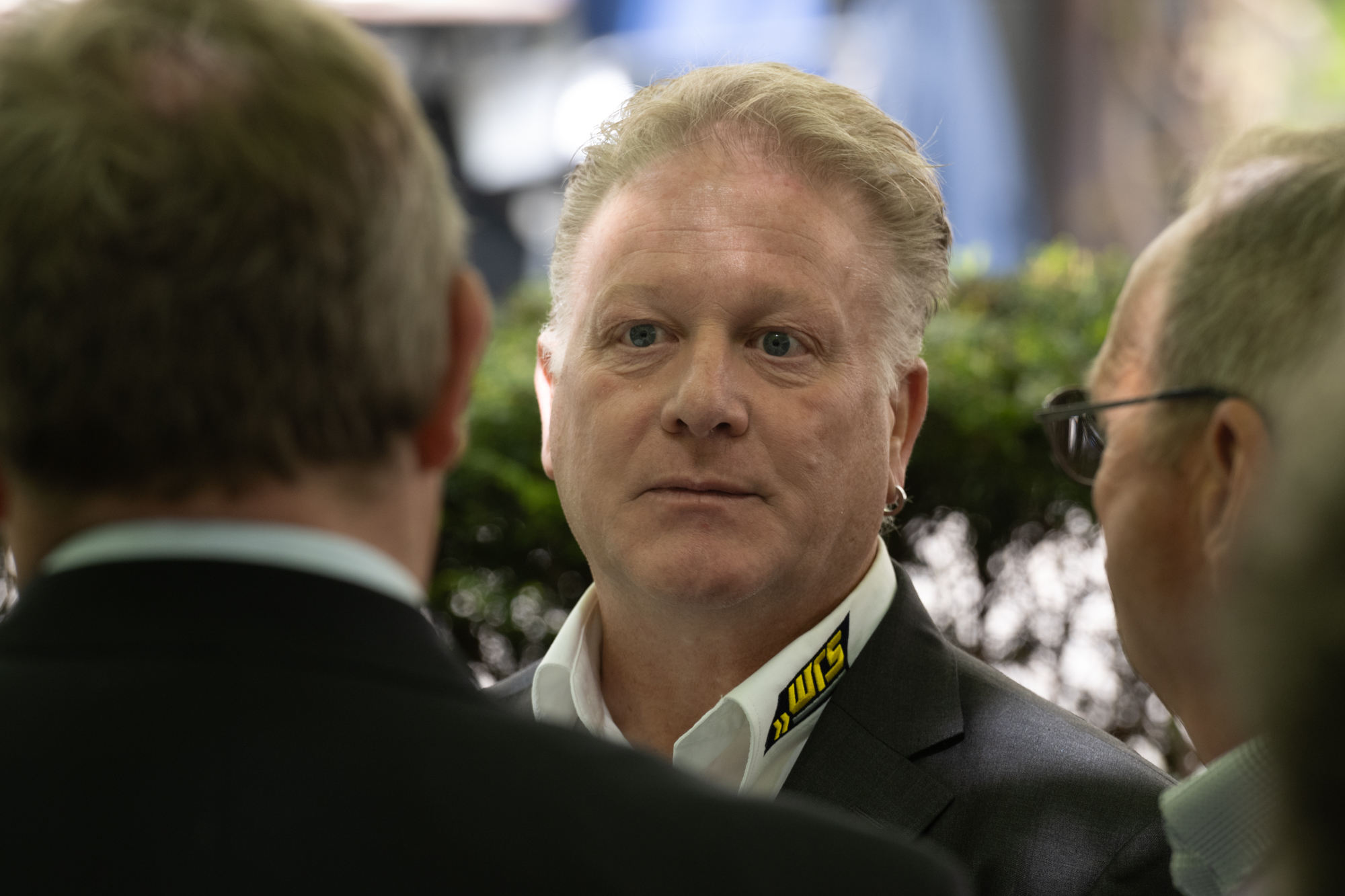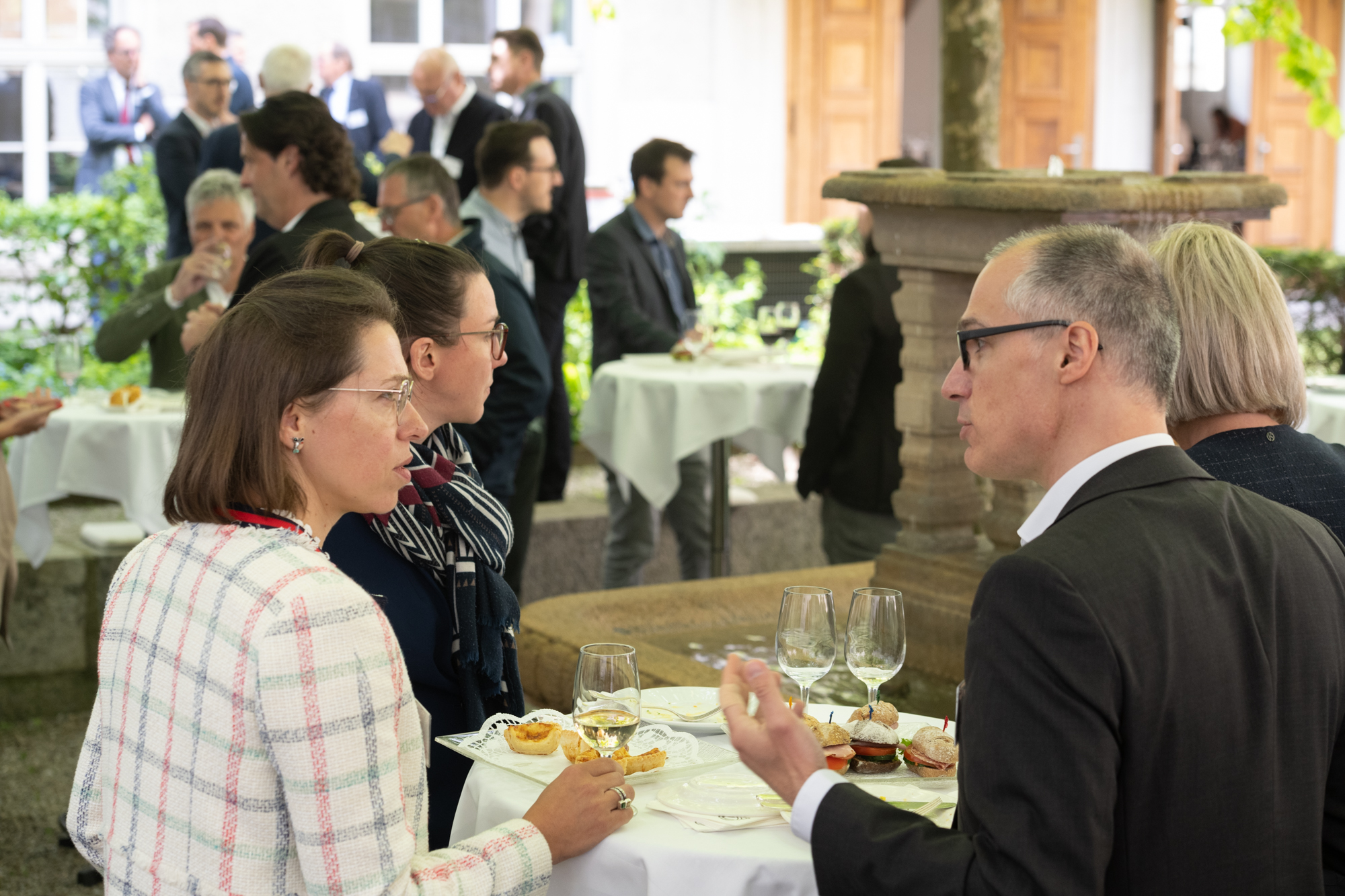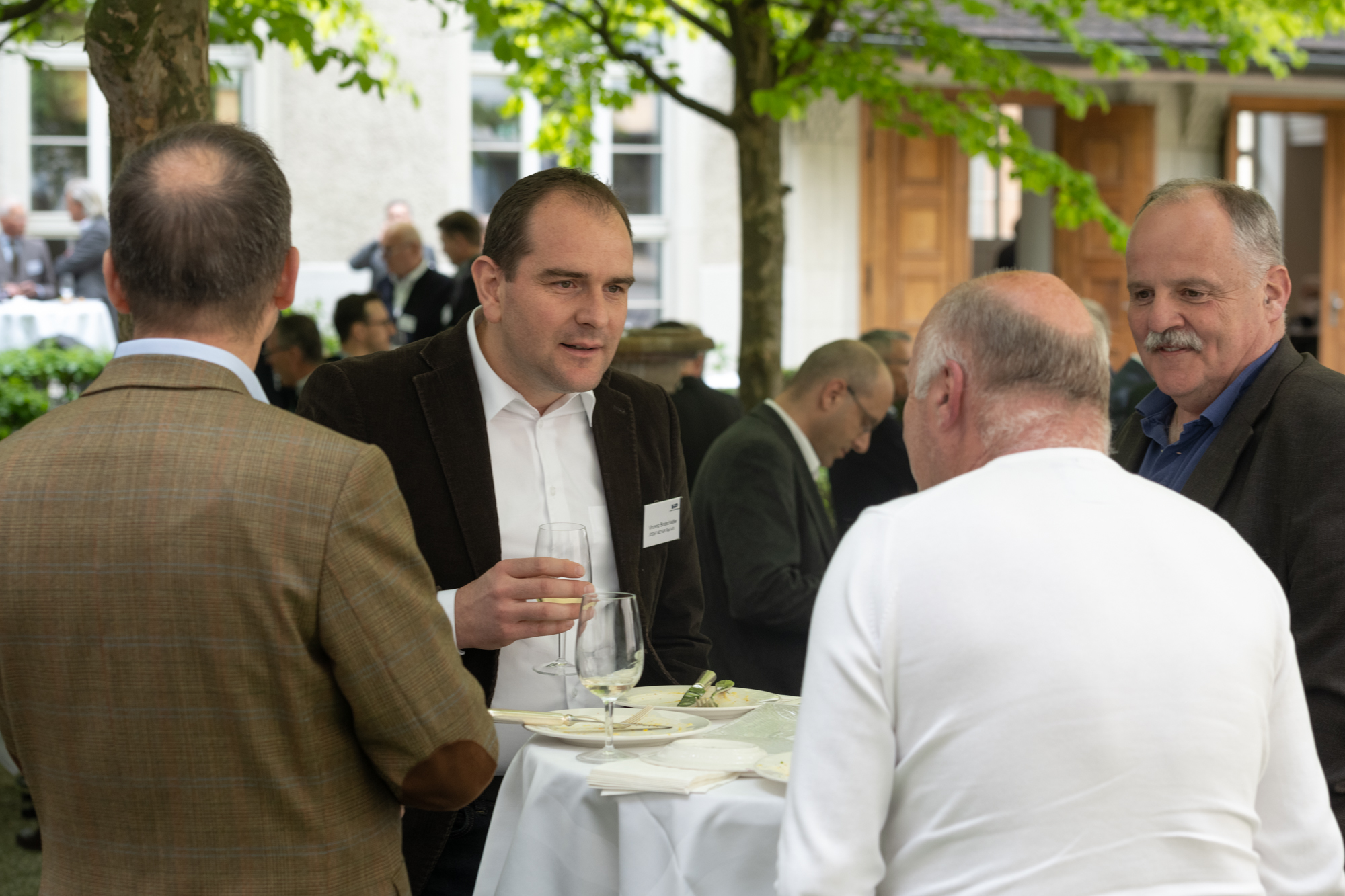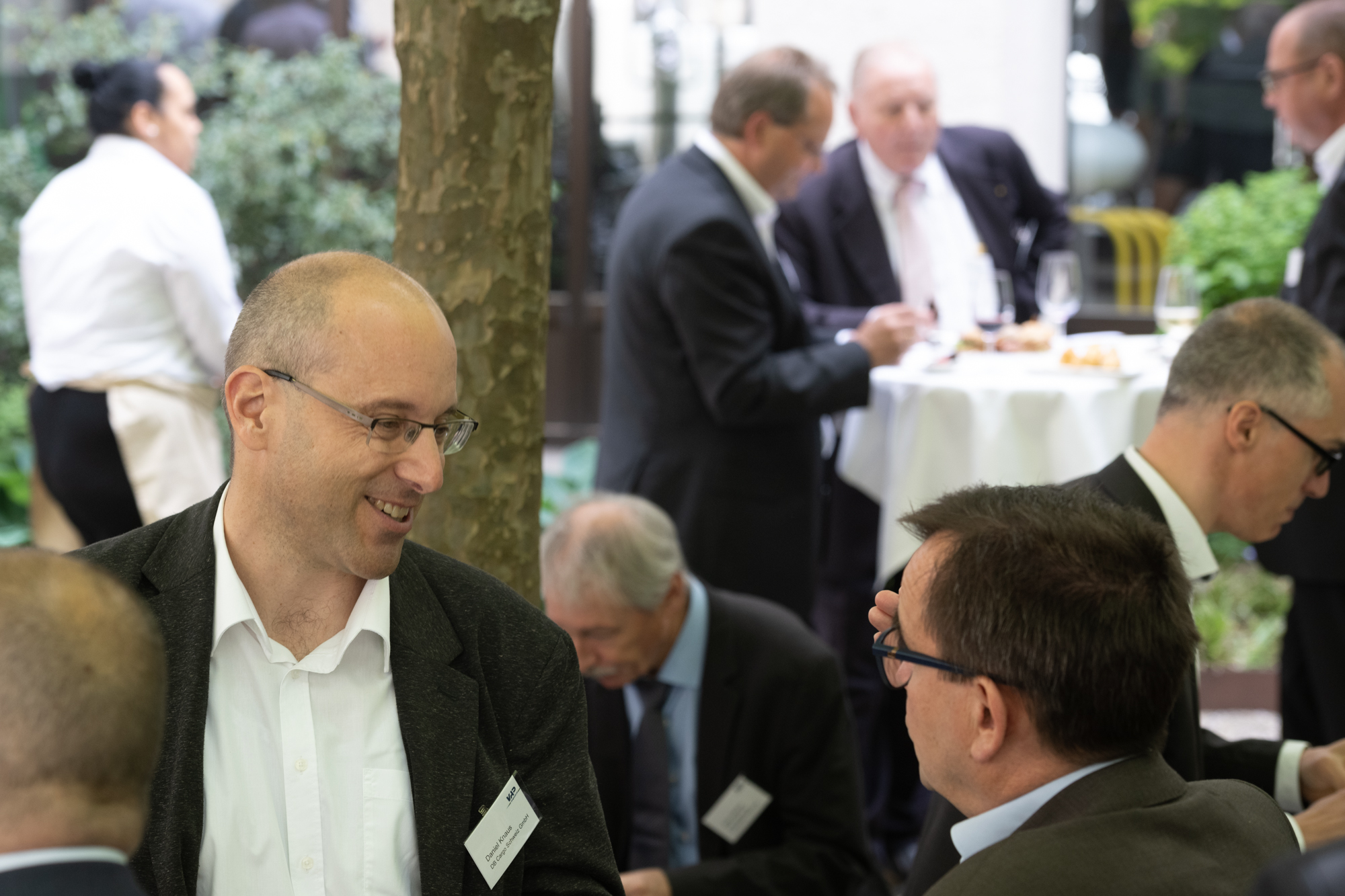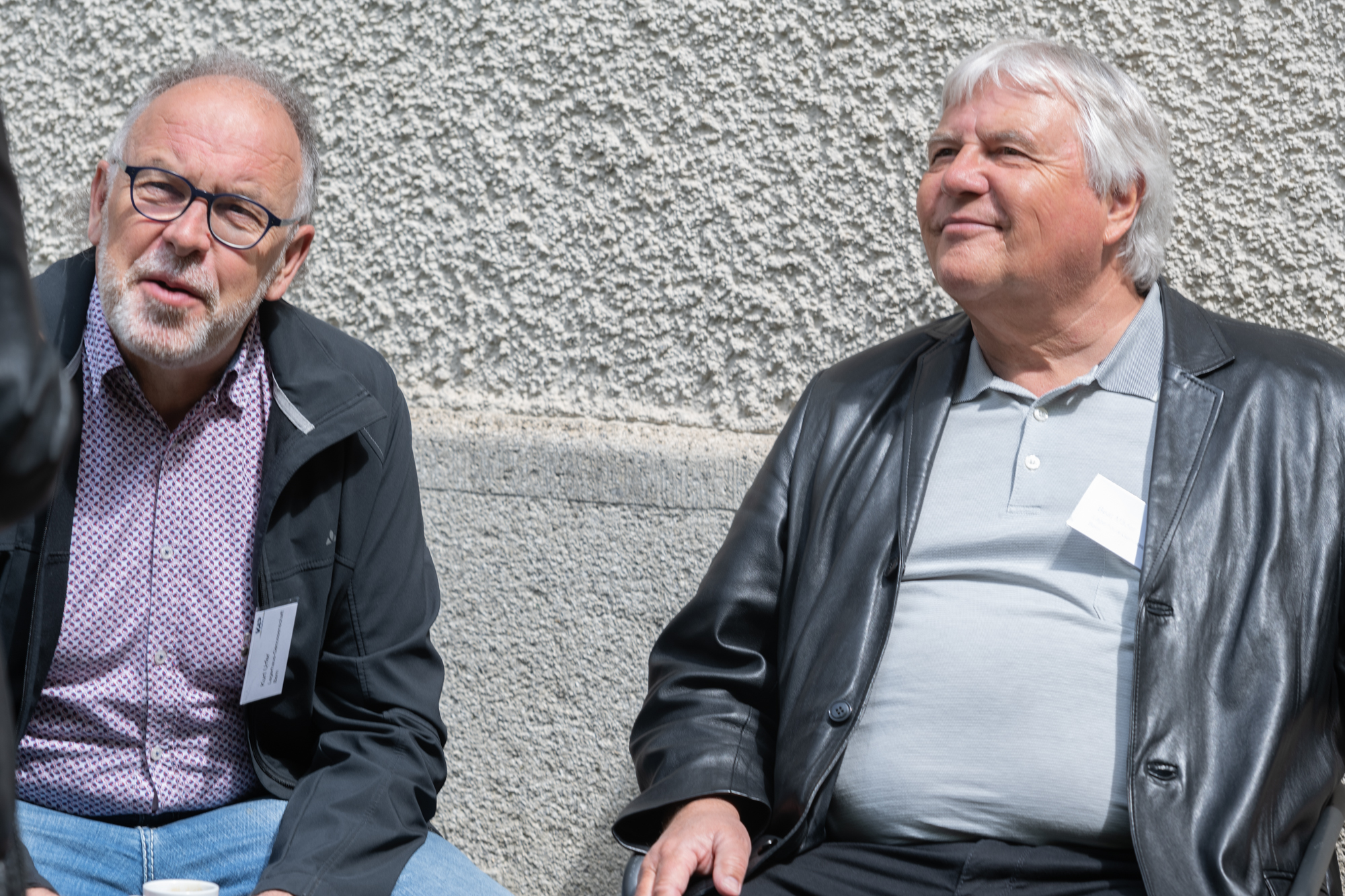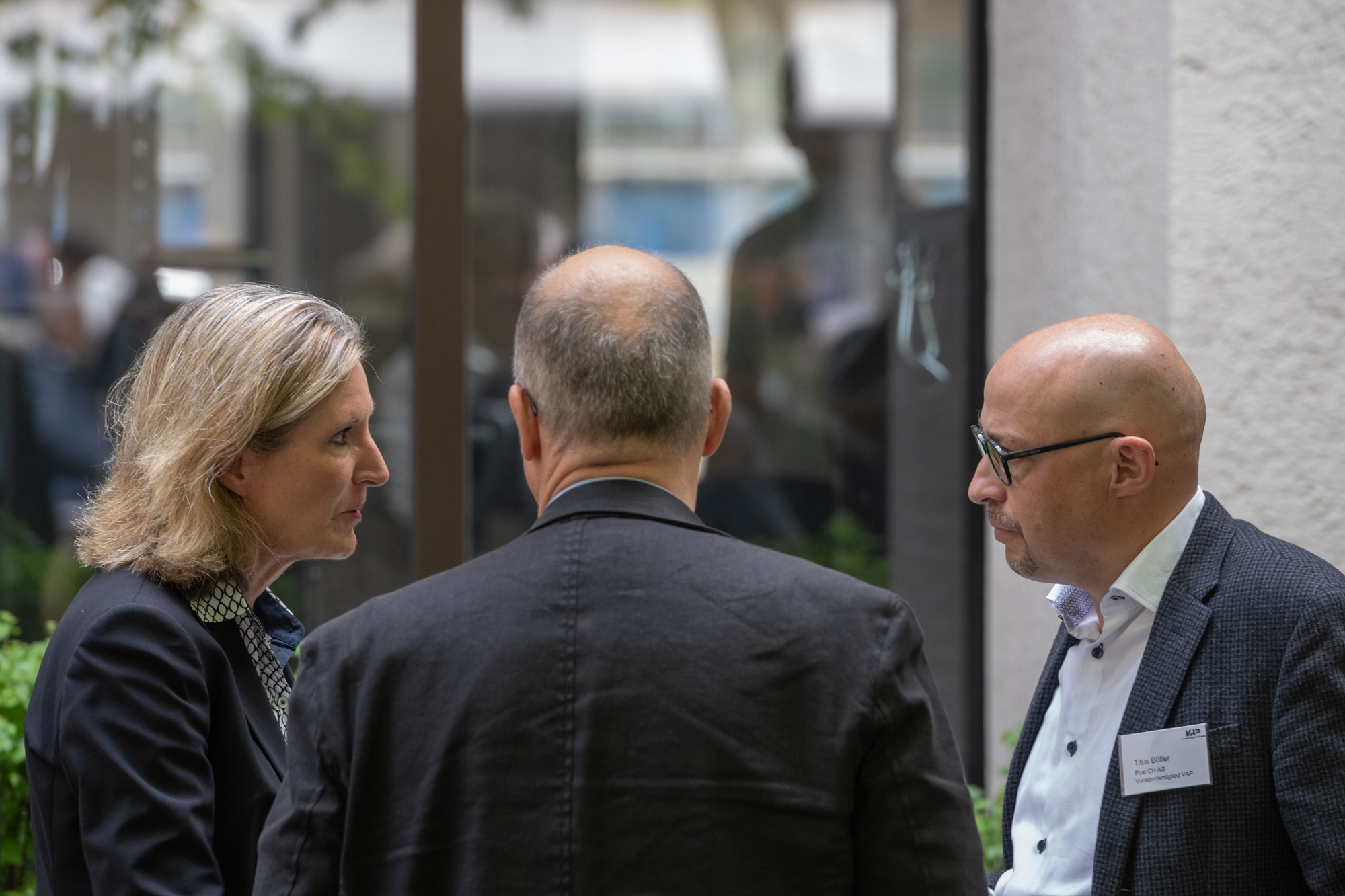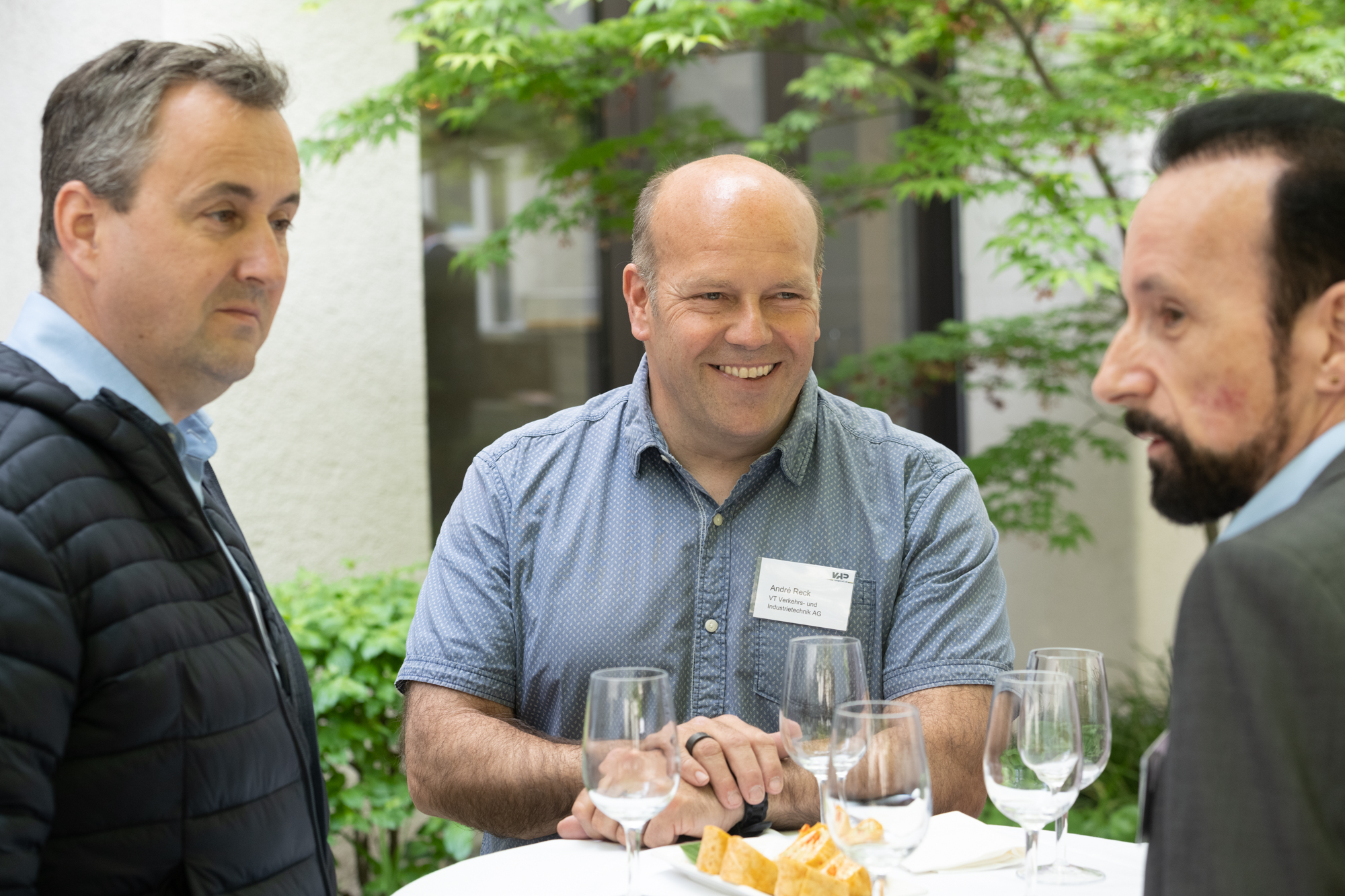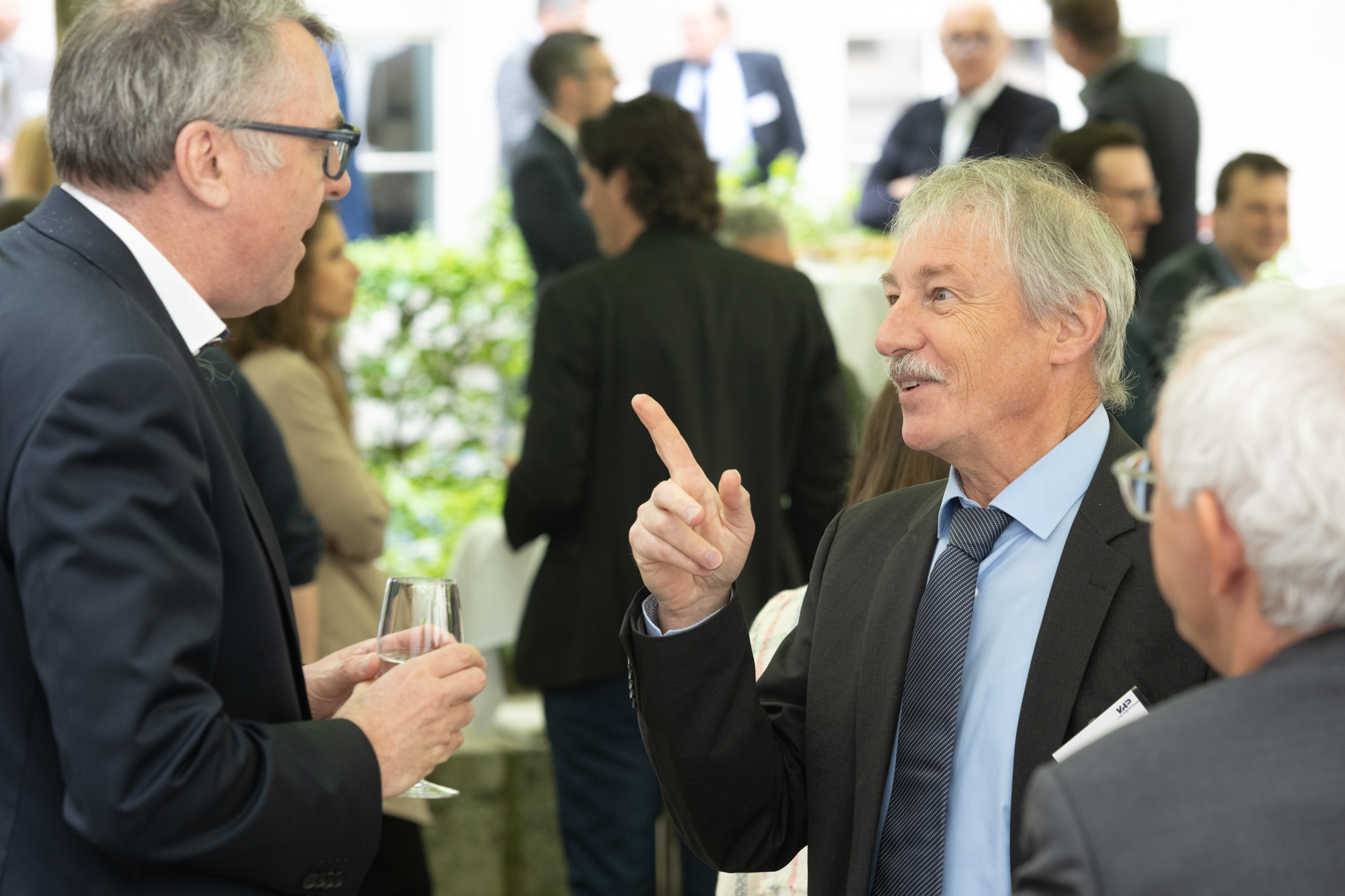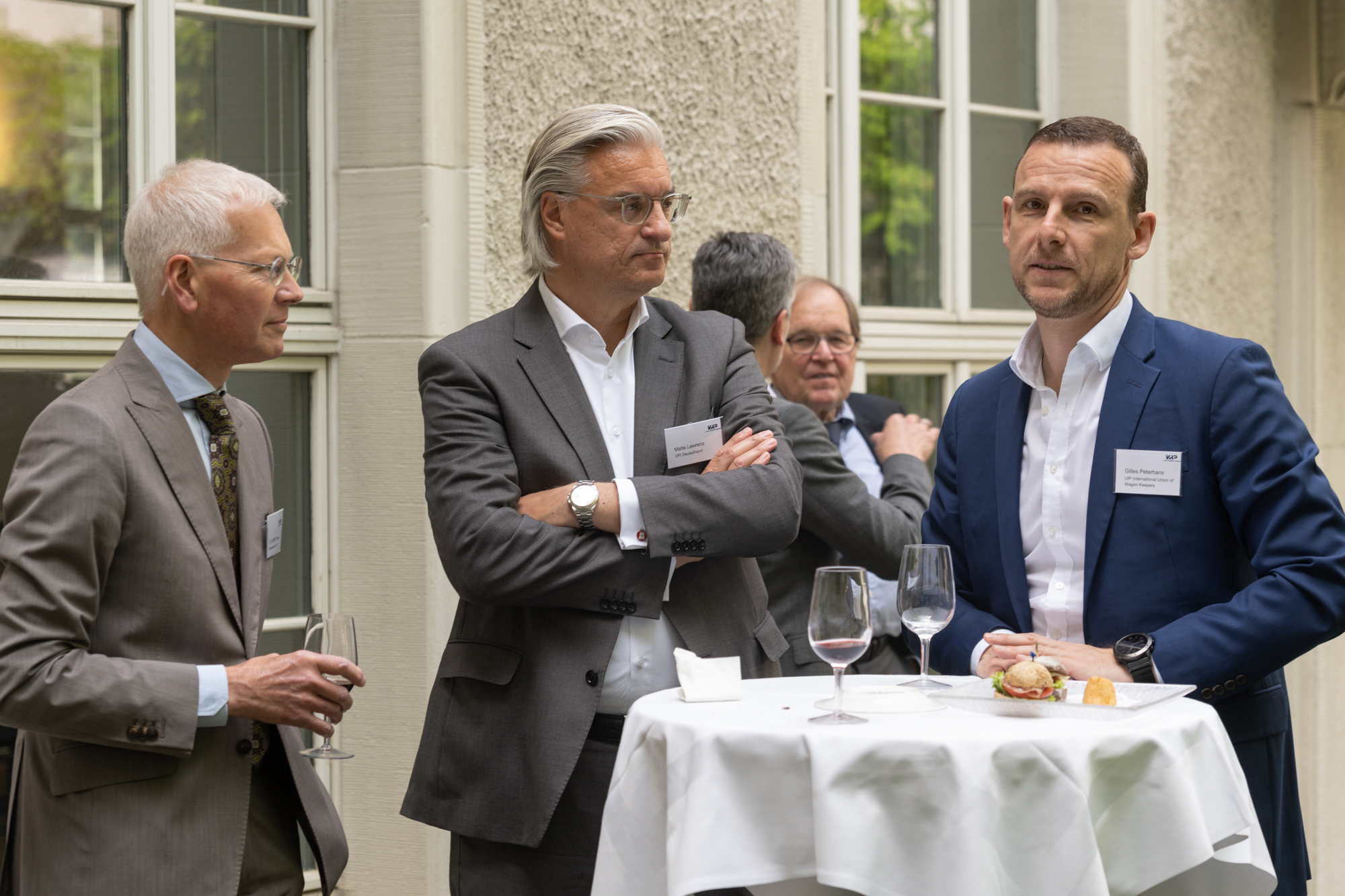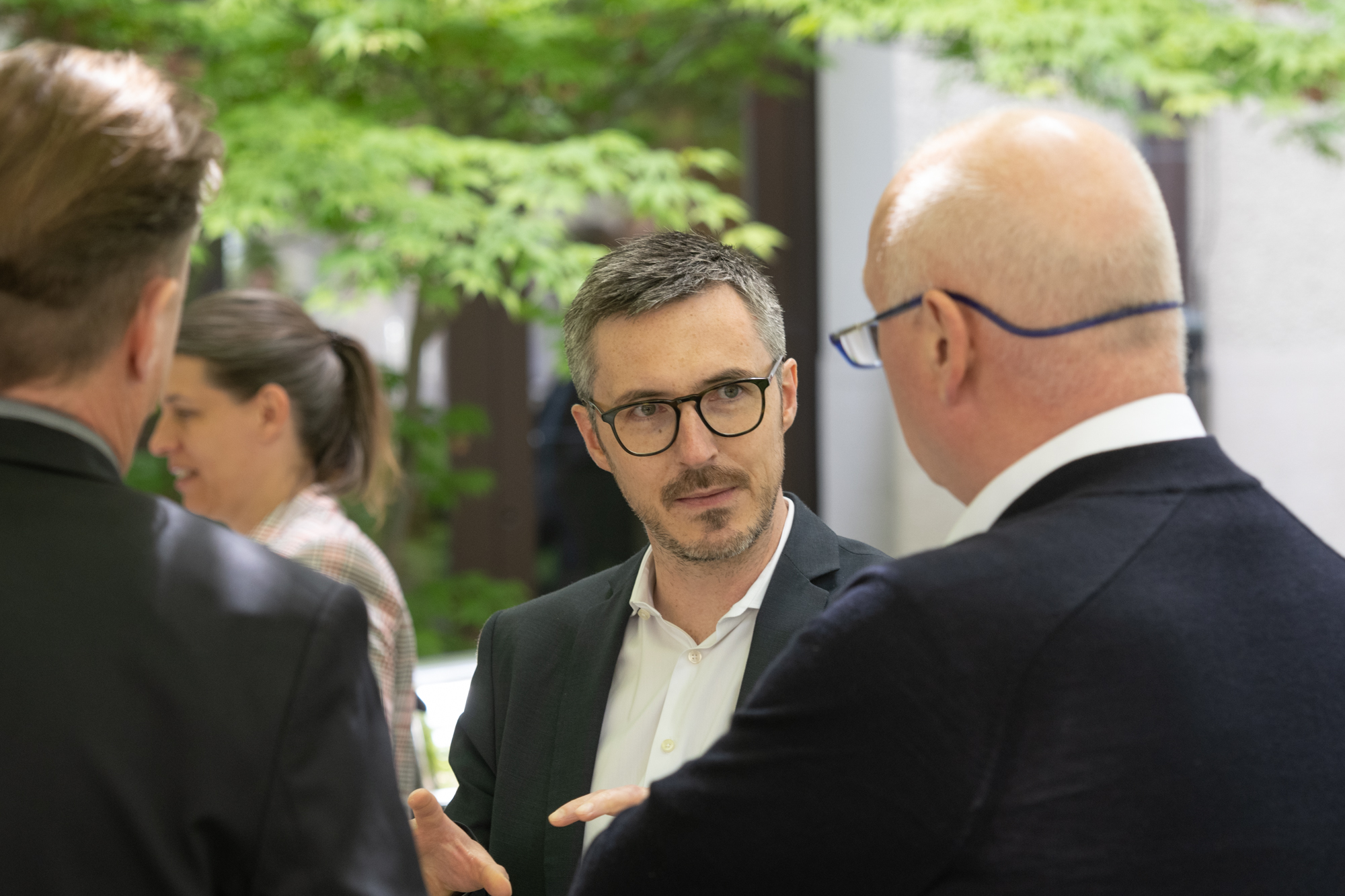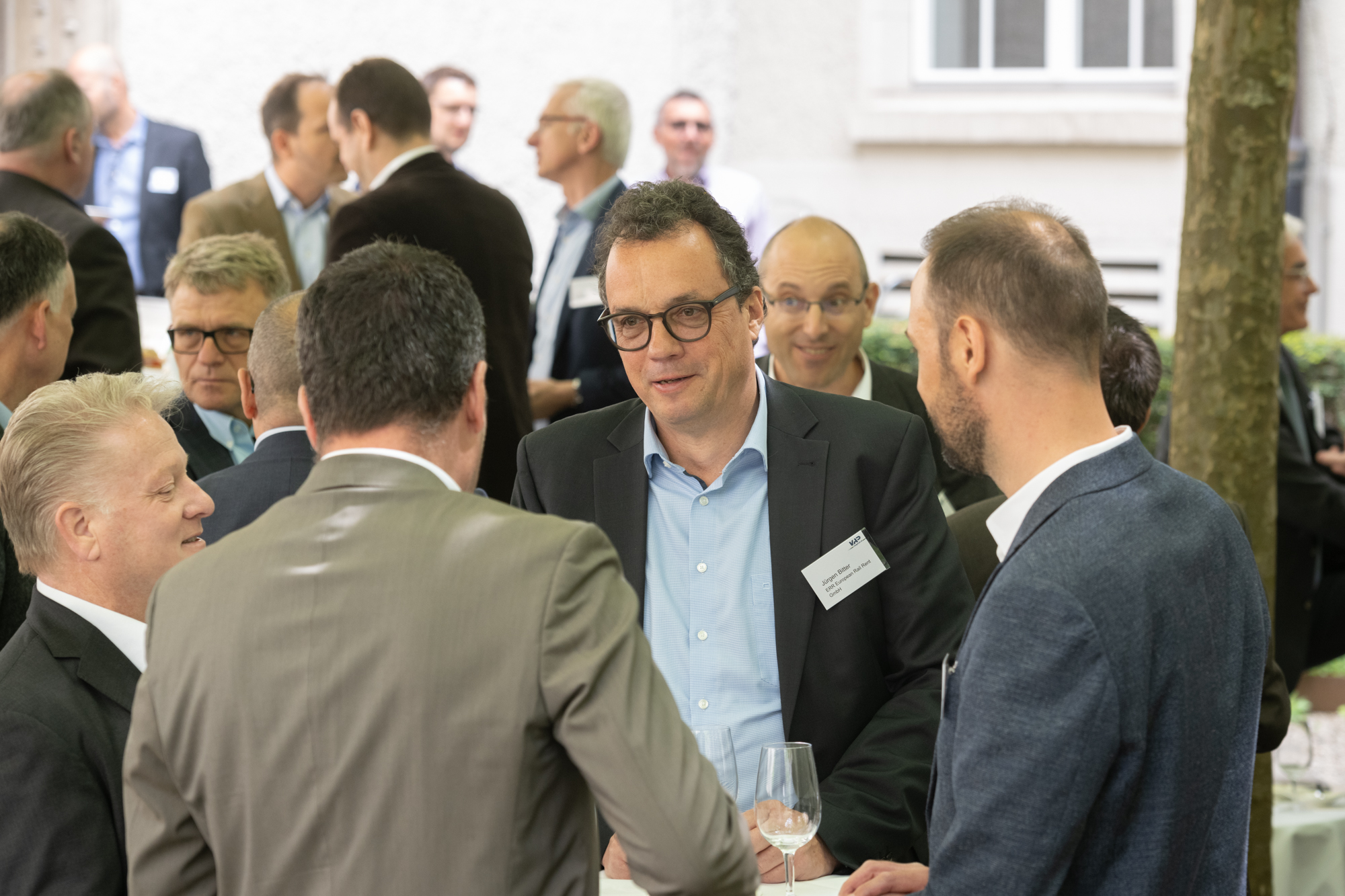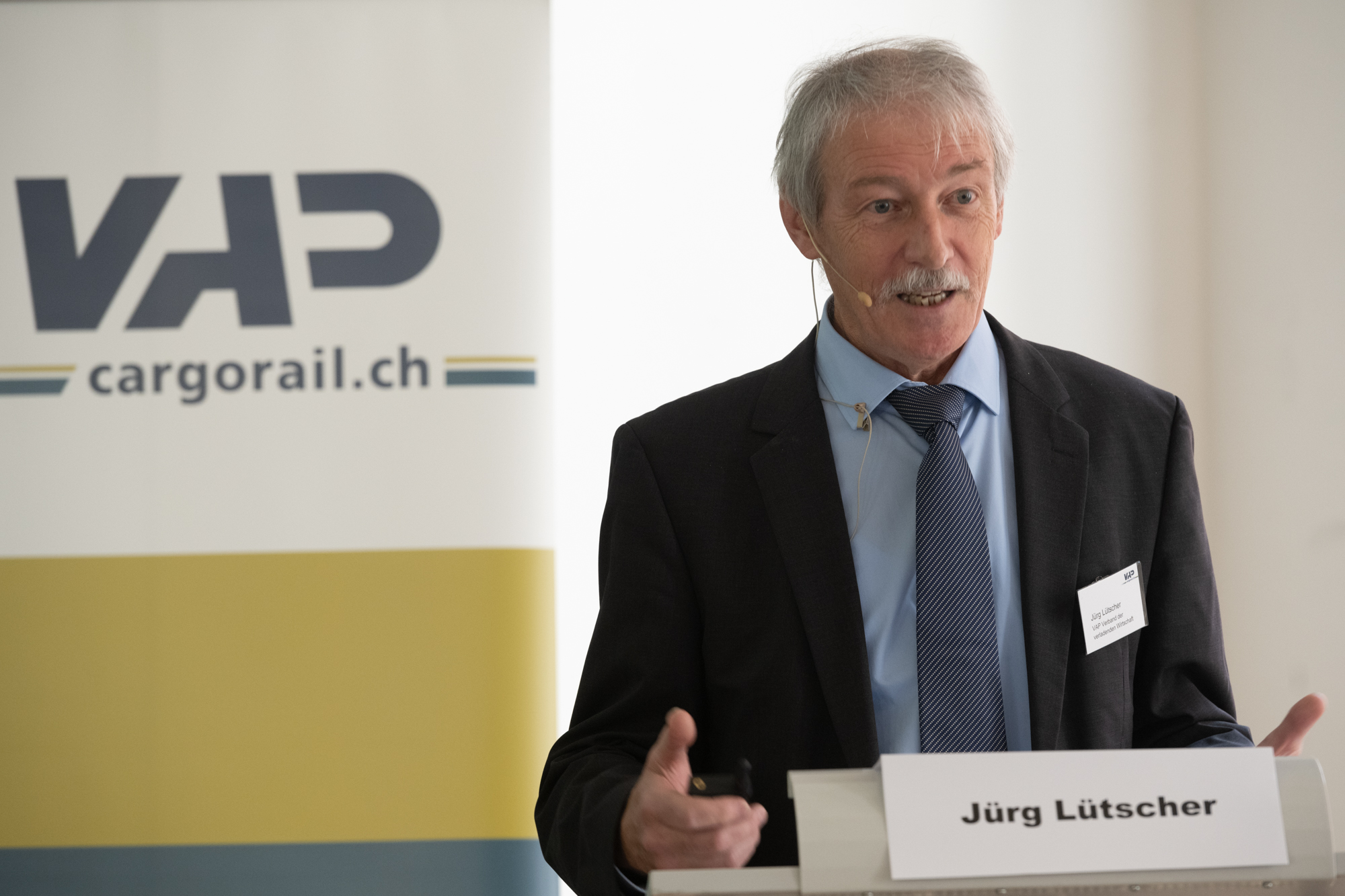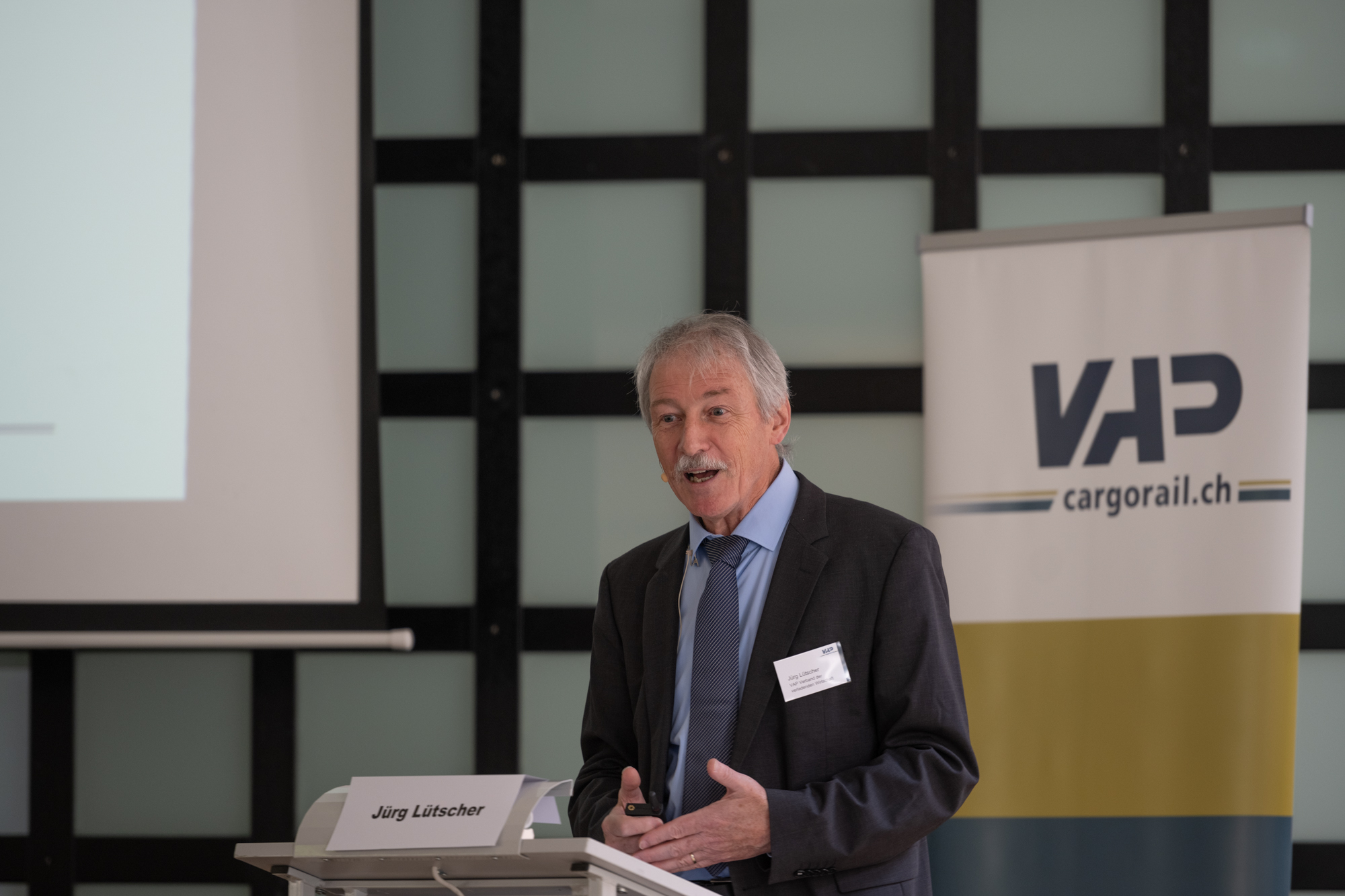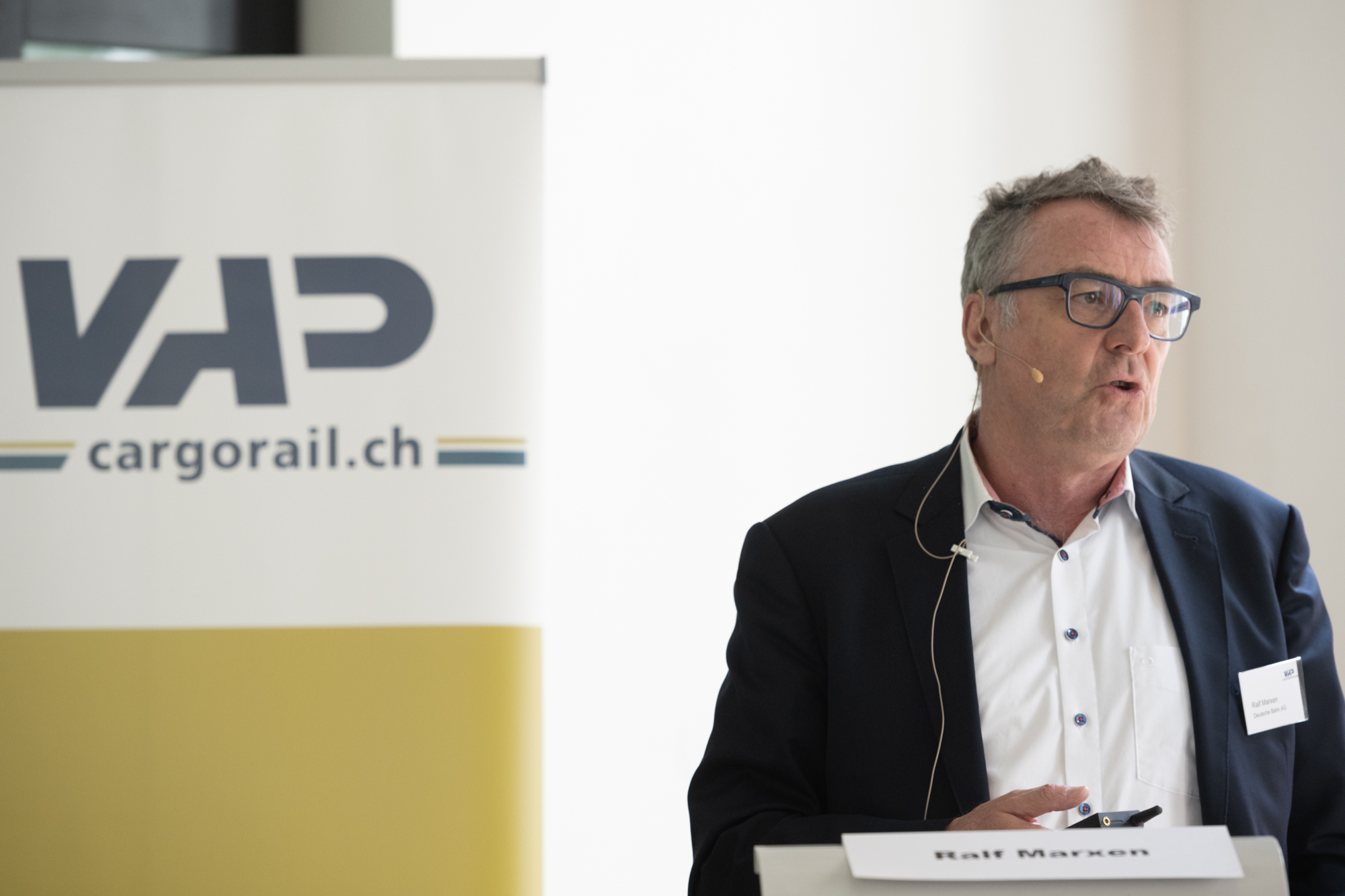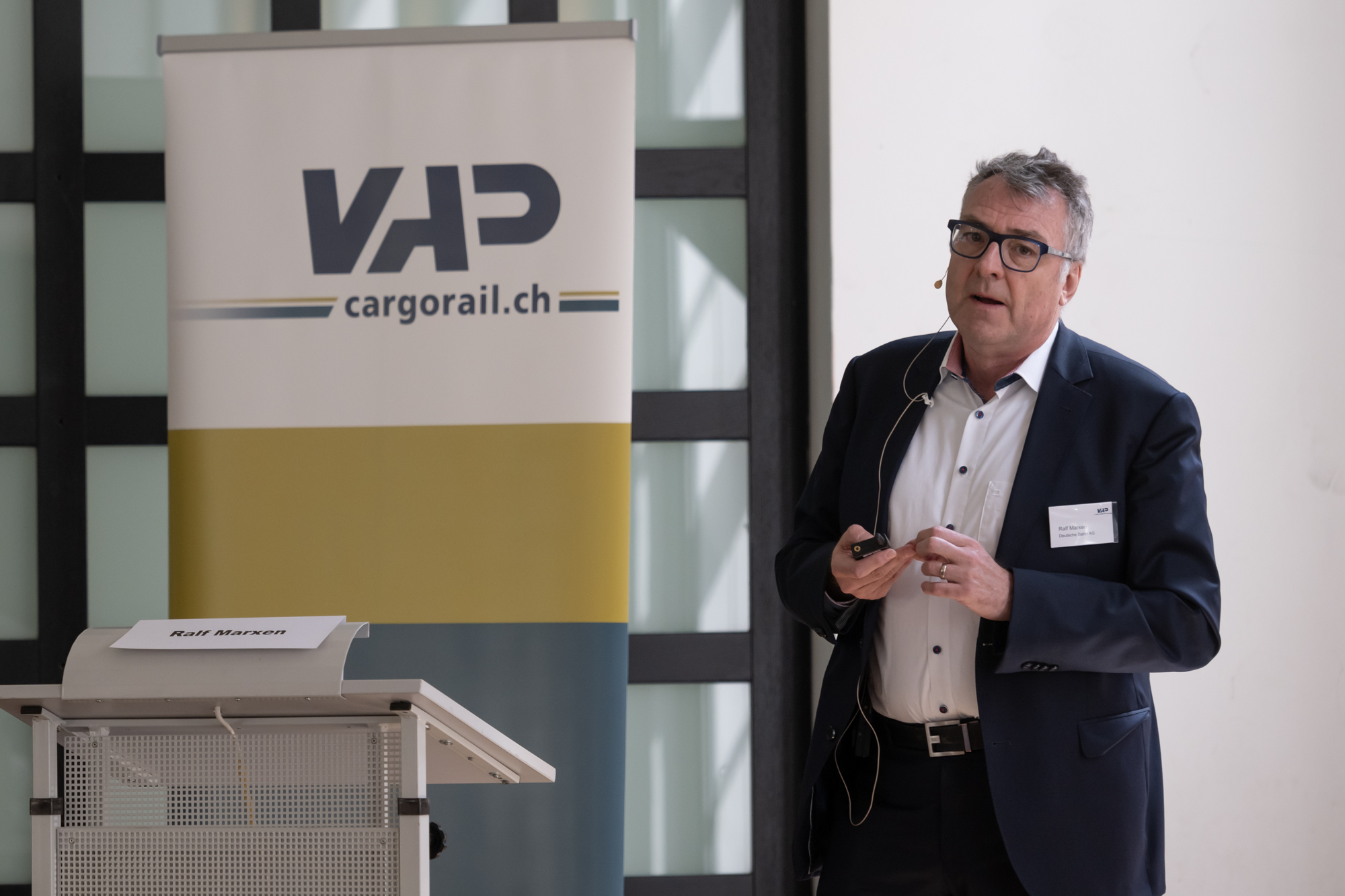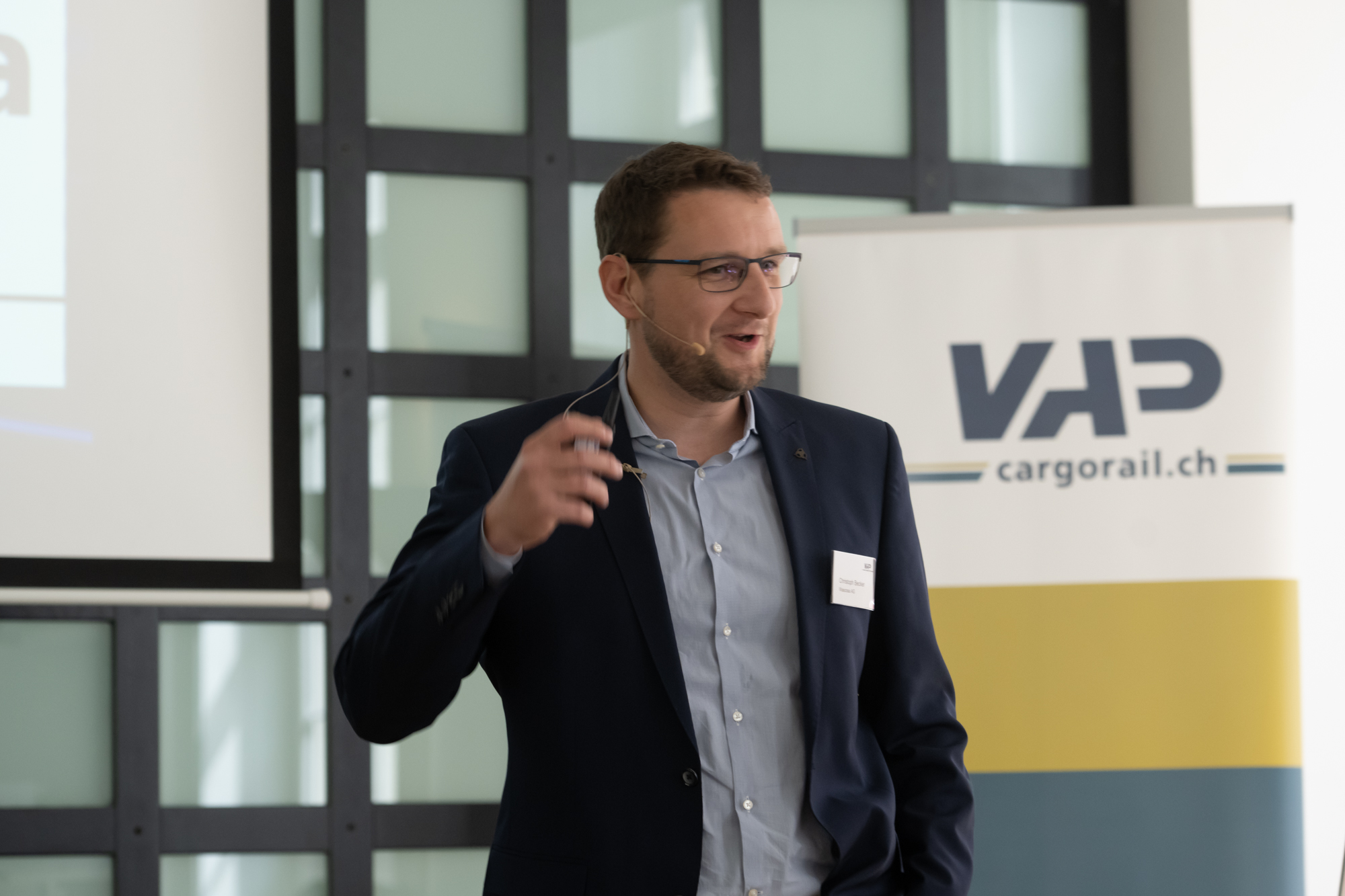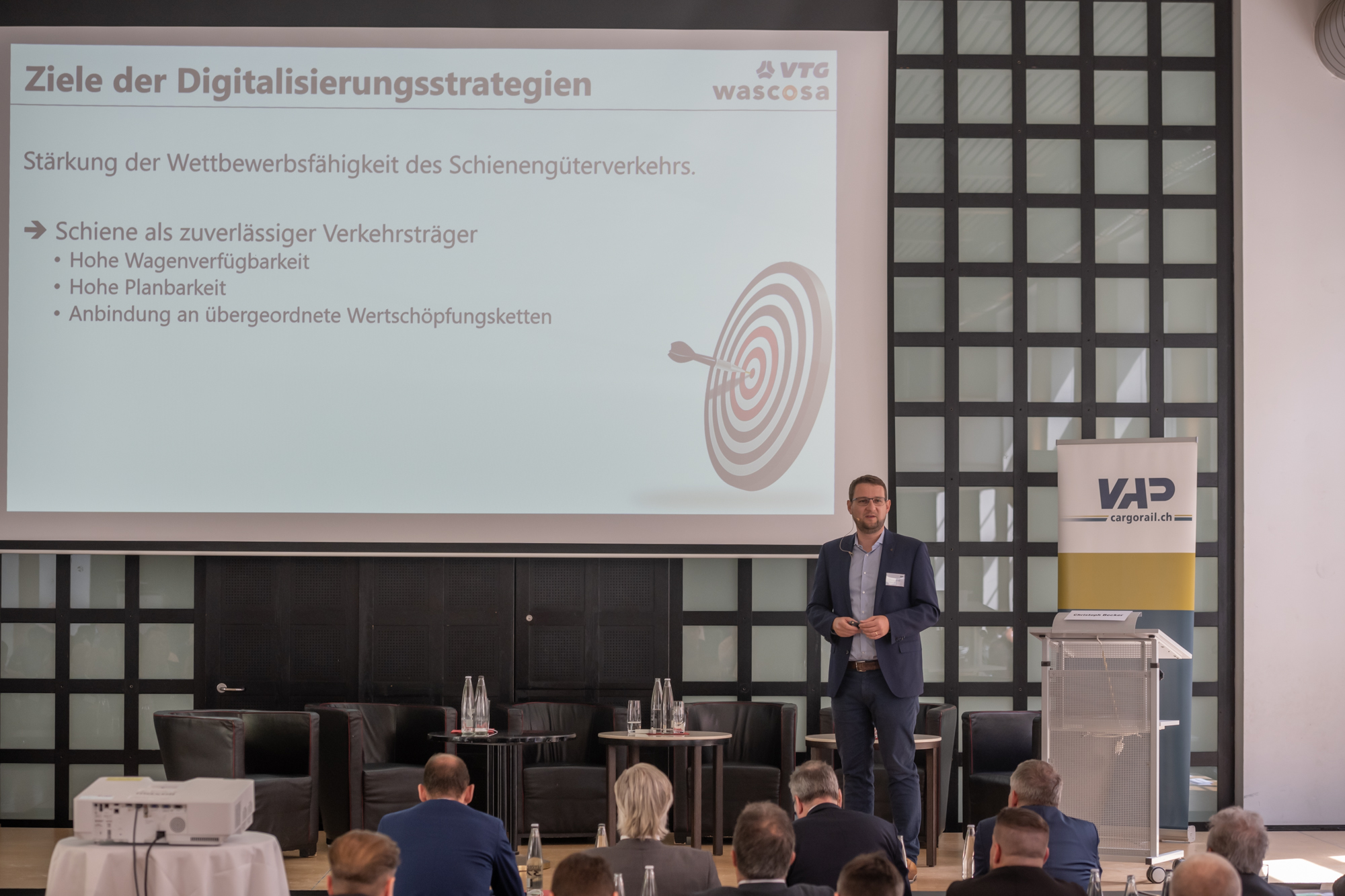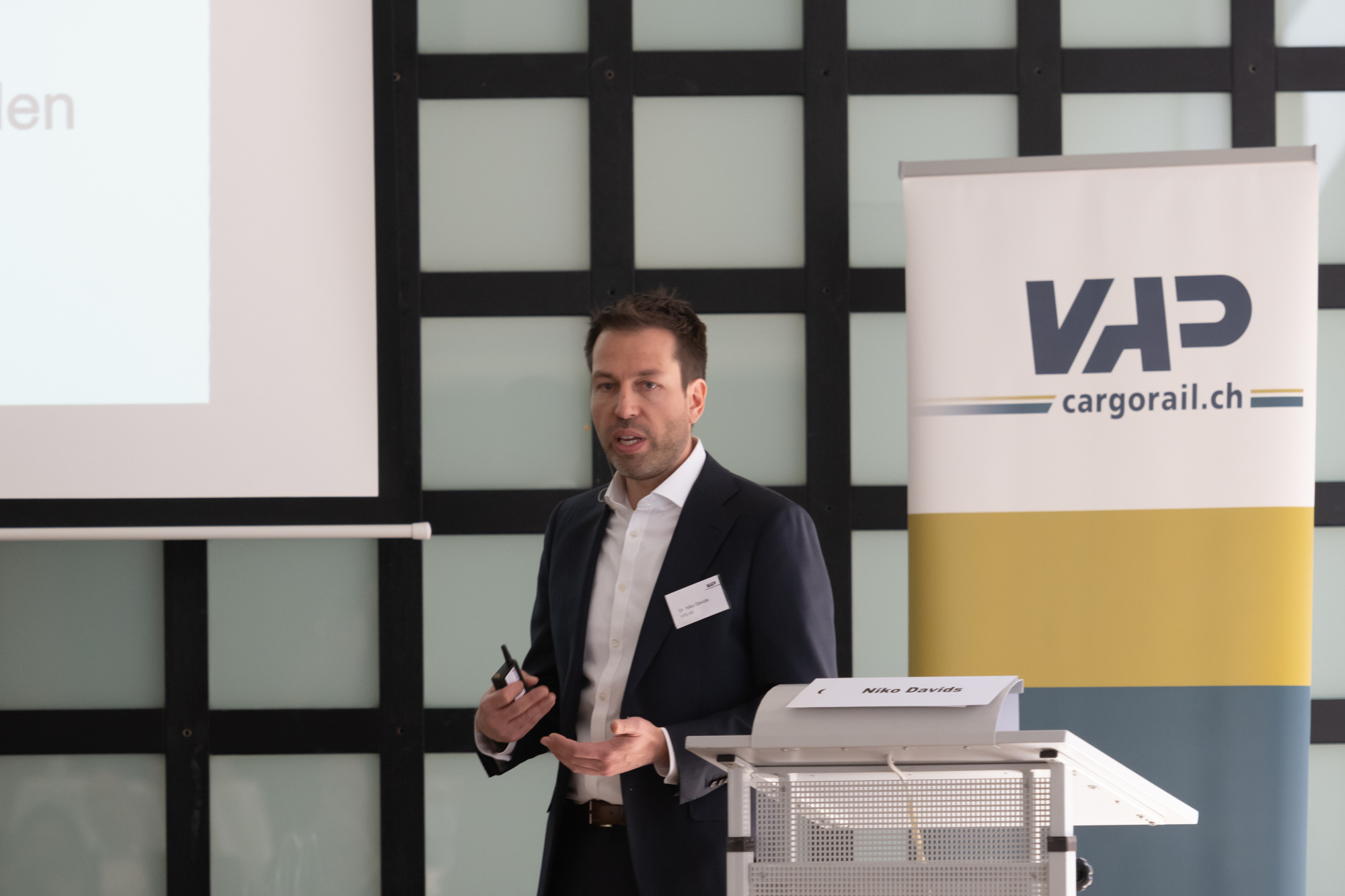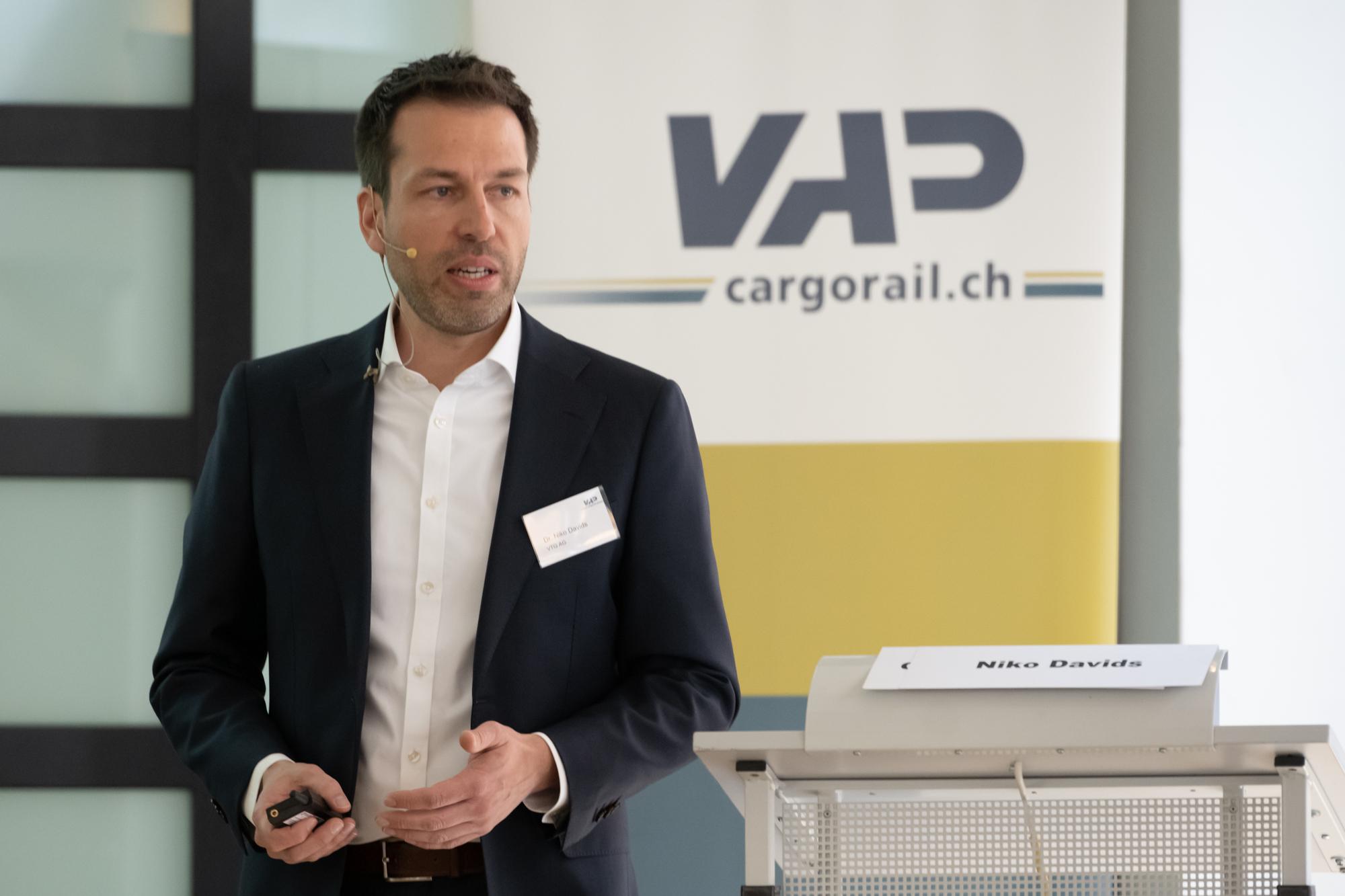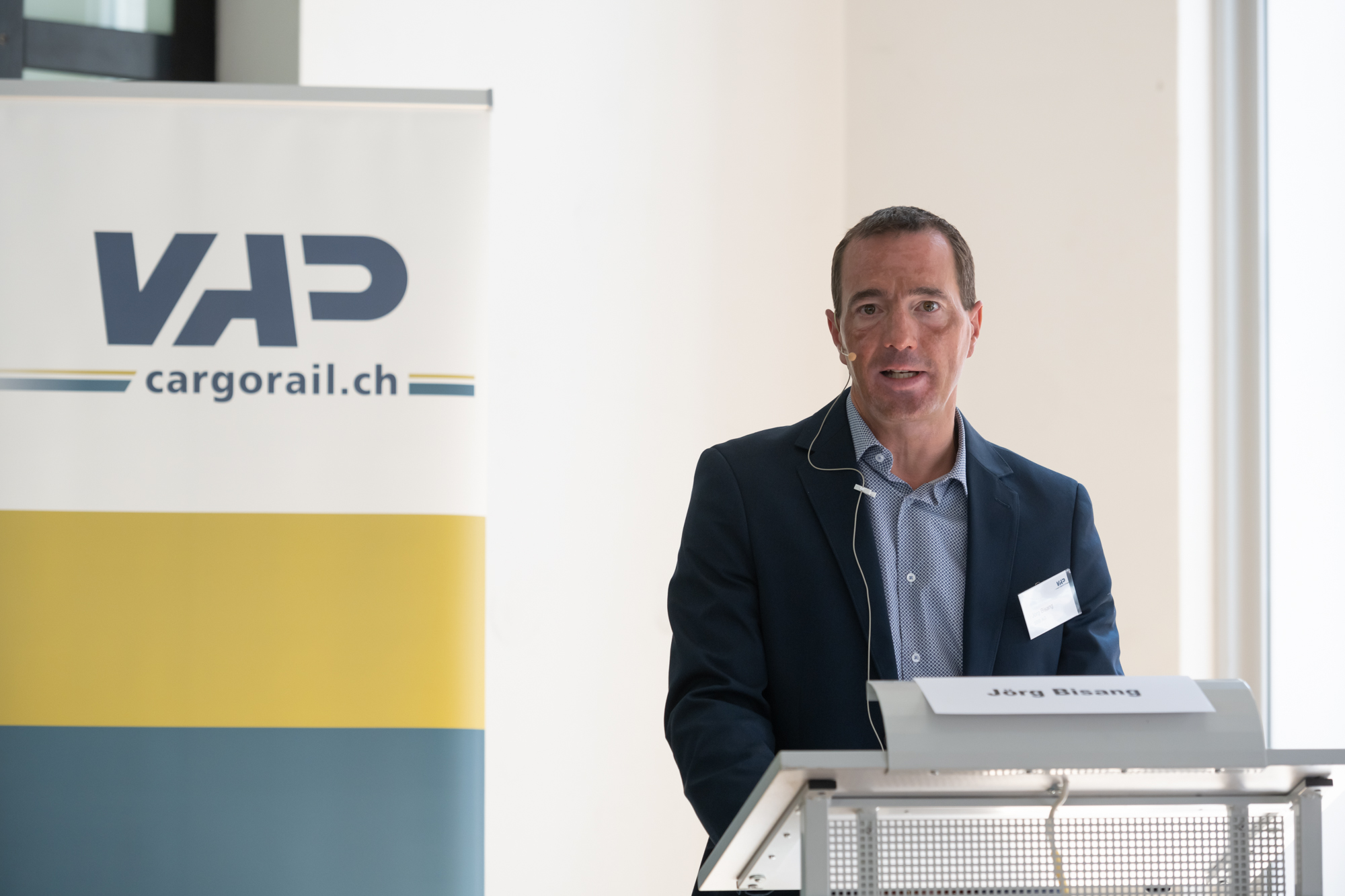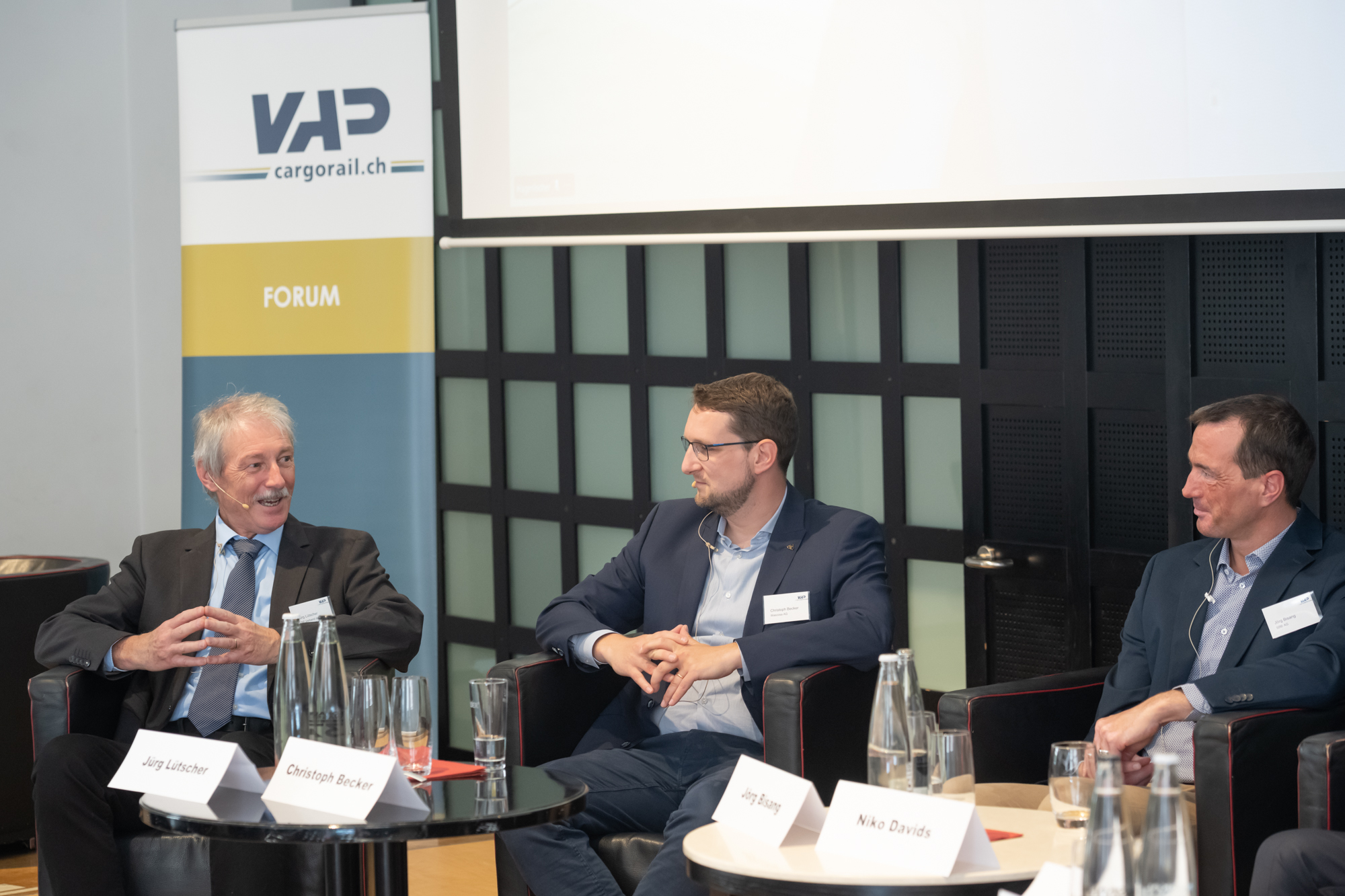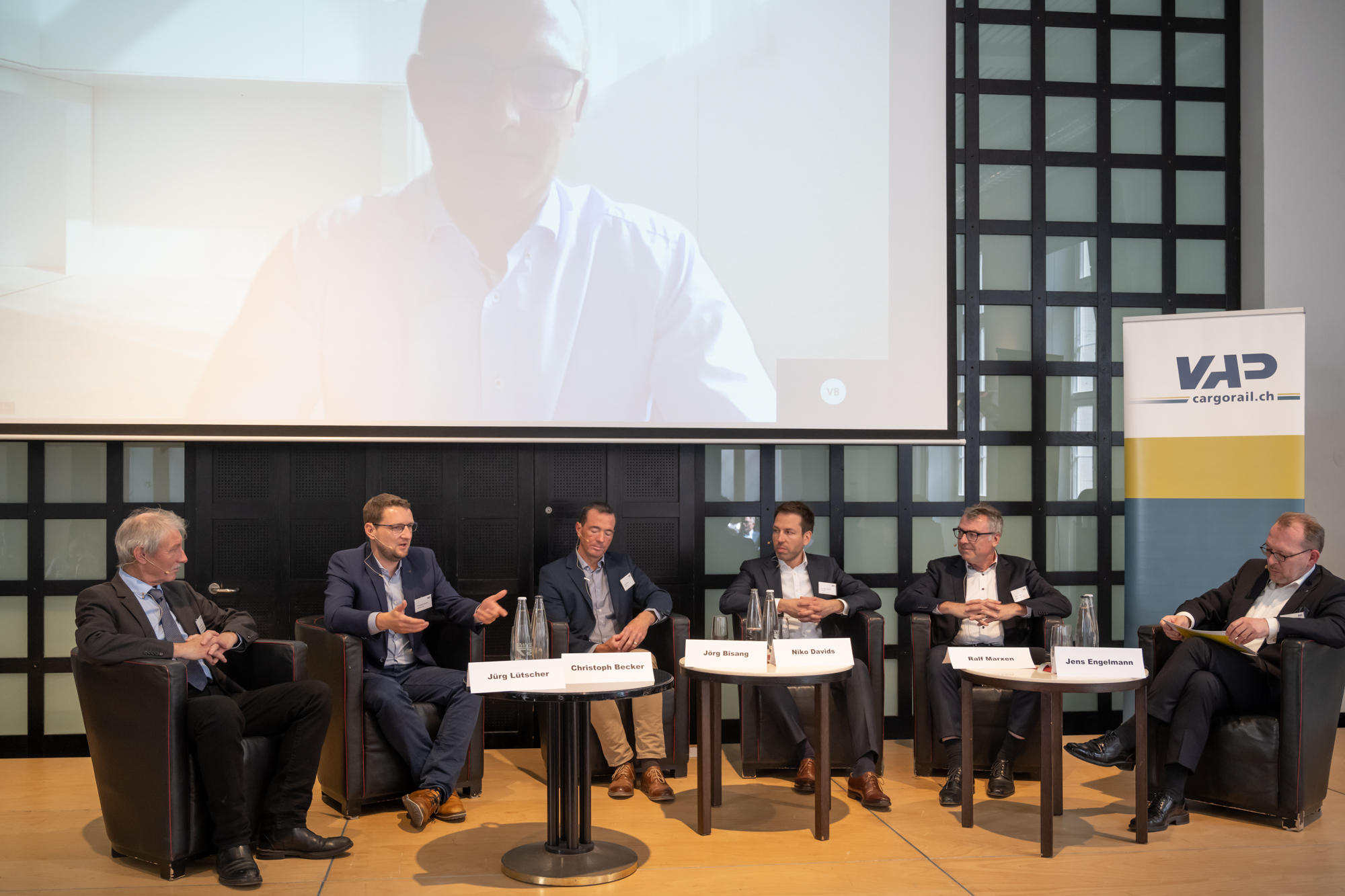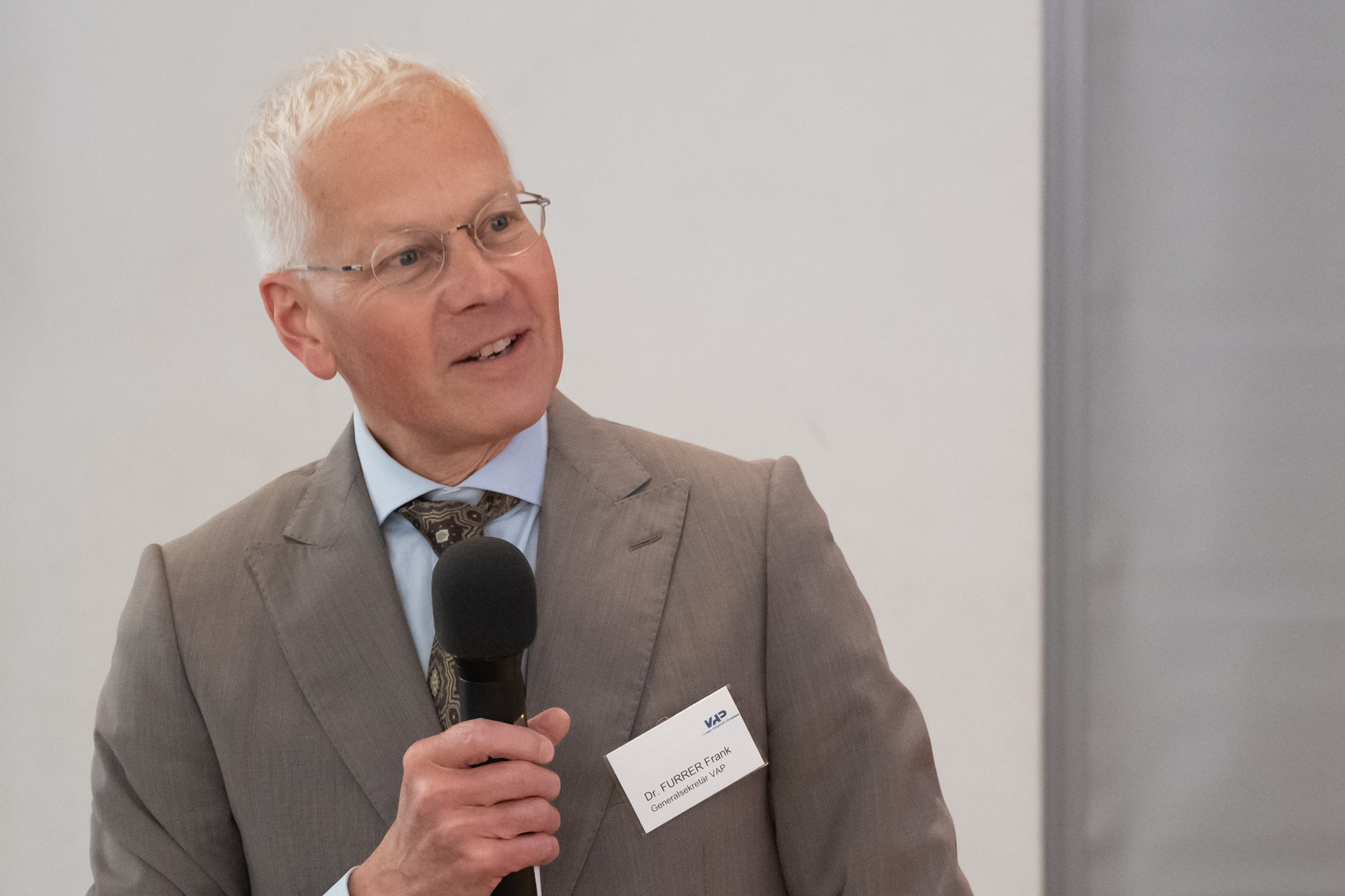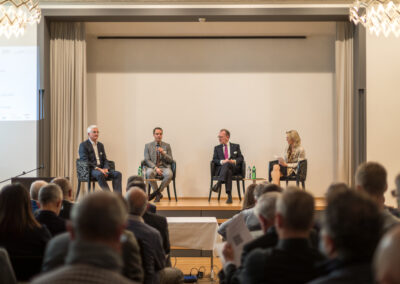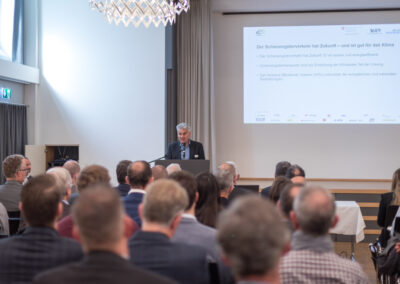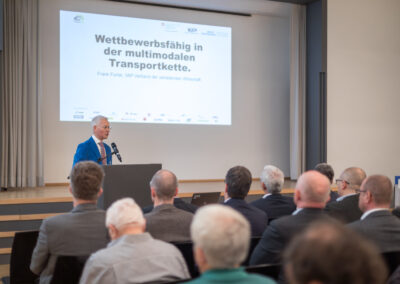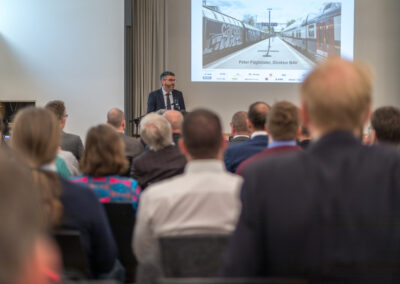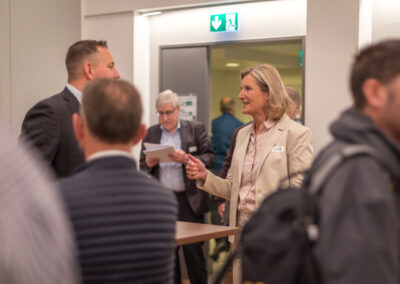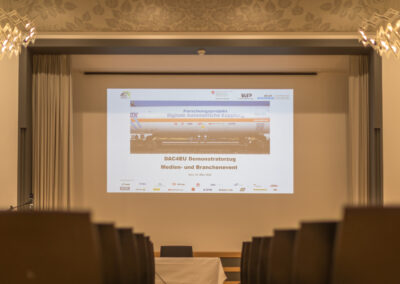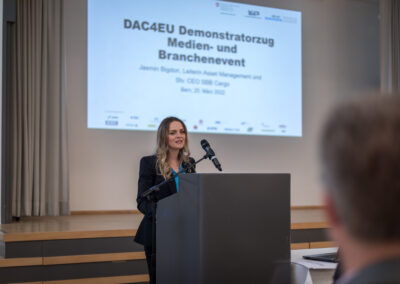VAP Rail Freight Forum
The Freight Transport Forum took place on 14 may 2025 in Zurich.
On the german event page you will find pictures, the presentations of the speakers for download and also archive documents of previous years.
General Assembly VAP
The last GA was held on Tuesday, 27 August 2024 in Bern. We welcomed Federal Councillor Dr Albert Rösti. Further information.
2022 was our last General Assembly. In addition to the statutory part, Federal Councillor Simonetta Sommaruga gave an exciting speech. You will find more information by clicking on the button.
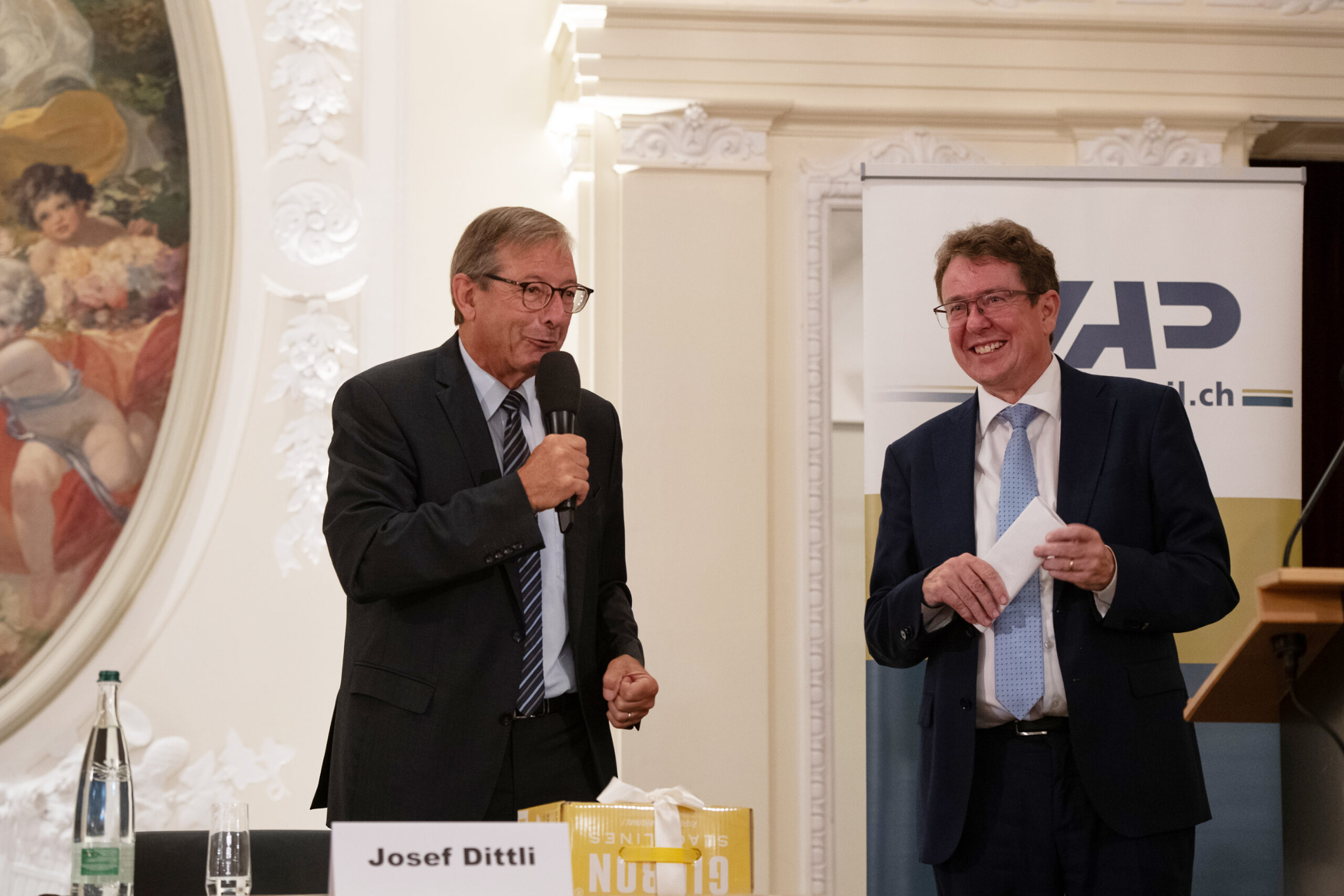
VAP Forum Sidings
The Siding Forum was held in Zurich on 15 November 2022. You will find a detailed review here.
Click the button to find pictures and documents (in german), also of previous years:
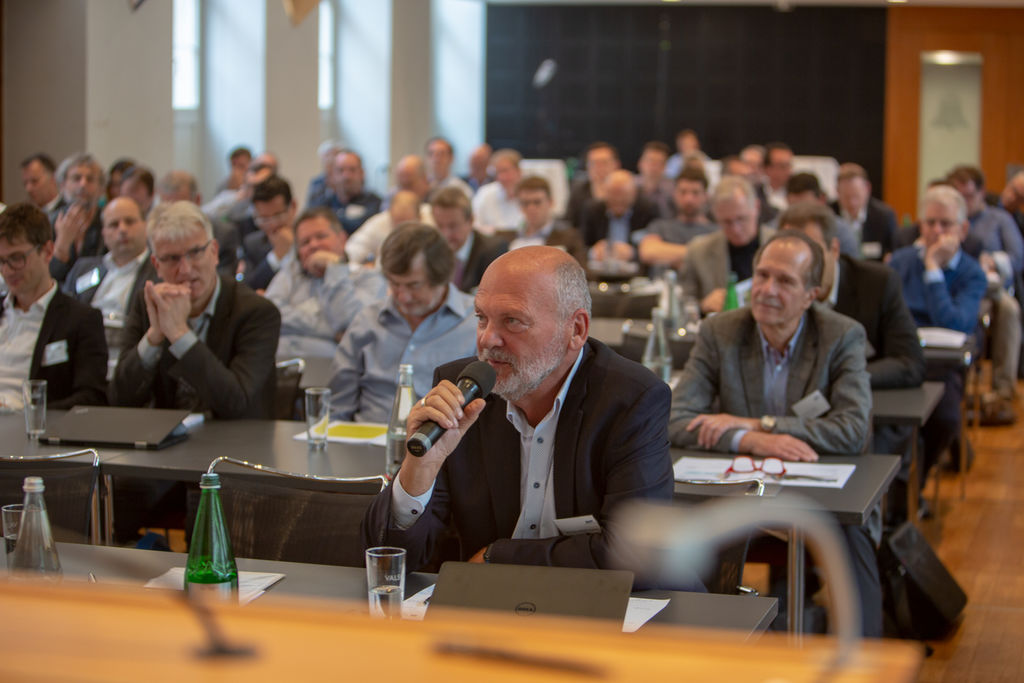
Noise Research Forum

Past events
2025
14 may 2025 – VAP FORUM FREIGHT TRANSPORT, Zurich
The Freight Transport Forum took place on 14 may 2025 in Zurich – to the event page.
2024
11 November 2024 – Second Zurich Freight Transport Round Table, Zurich
Innovations on quiet soles. How can construction sites in town centres be designed in such a way that businesses and passers-by are affected as little as possible? How can rail freight transport be simplified? And what will it take for lorries without combustion engines to achieve a breakthrough? Three experts reported on the steps they have already taken towards these goals. To the summary. Further information.
21. November 2024 – VPI Austria Info Event, Vienna
The popular information event organised by VPI Austria took place at the Novotel Hauptbahnhof in Vienna. Information was provided on current topics in rail freight transport. To the review.
21/22 October 2024 – Members’ meeting DIE GÜTERBAHNEN, Berlin
In addition to the members’ meeting, there was also a professional dialogue, with Jürgen Maier as one of the guest speakers. Impressions on LinkedIn.
27 August 2024 – VAP GENERAL ASSEMBLY, Bern
Our General Assembly was held in Bern on 27 August 2024. To the review
27–29 August – 12th Swiss Green Economy Symposium, Winterthur
The Swiss Green Economy Symposium is a conference on business and sustainability in Switzerland. Individual innovation forums (specialised conferences) were held under this year’s motto “Solving conflicts together”. Information at https://sges.ch/.
27 JUNE 2024 – DAC-DAY 2024
PROSE and Knorr-Bremse Rail Systems Schweiz AG organised the DAC-DAY 2024, a symposium on the digital automatic coupler (DAC) that will modernise rail freight transport. The event offered workshops and networking opportunities for railway industry professionals.
29/30 MAY 2024 – «Rising to the DAC challenge» UIP GA AND KEEPERS’ SUMMIT, VENICE
The conference will take a look at how and where to interface rail with the other modes, the needs of multimodal supply chains and of course the way to finance it all. A look back.
7 may 2024 – VAP FORUM FREIGHT TRANSPORT, Zurich
The Freight Transport Forum took place on 7 may 2024 in Zurich – to the event page.
18/19 April 2024 – Swiss Shippers’ Forum 2024, Interlaken
This year’s motto at the Swiss Shippers’ Forum was «The right innovations for your supply chain! Mastering the challenges, building trust, embracing the future.»
17 April 2024 – VPI General Assembly, Vienna
The annual general assembly of the VPI, Association of Private Freight Wagon Interested Parties Austria, took place on 17 April 2024 in Vienna.
9 January 2024, 14th VPI Symposium, Hamburg
The symposium focussed on “Growth opportunities for sustainable rail freight transport”. A look back.
2023
21 + 22 JUNE 2023 GET TOGETHER AND 23RD TECHNICAL INFORMATION EVENT, DRESDEN
The focus was set on wagons and their maintenance in combined transport. To the review.
15–16 June 2023 – UIP Keepers’ Summit and General Assembly in Nice
The UIP Keepers’ Summit took place in cooperation with AFWP ASSOCIATION FRANCAISE DES DETENTEURS DE WAGONS on 15–16 June 2023 in Nice. UIP also held its General Assembly on 15 June 2023. Click here for the review.
31 MAY 2023 – GS1 EXCELLENCE DAYS INCL. SWISS LOGISTICS AWARD 2023, BERNE
The GS1 Excellence Days provided impulses and solutions for more sustainability. At the parallel industry event Transport & Logistics, pioneering projects for more sustainability have been presented and discussed. Information about the event here.
9–12 MAY 2023 – TRANSPORT LOGISTICS, MUNICH
The international trade fair for logistics, mobility, IT and supply chain management took place at the Trade Fair Center Messe München. To the information.
27 April 2023 – Swiss Shippers’ Forum 2023
On Thursday, 27 April 2023, the Swiss Shippers’ Forum took place at the Hotel Victoria-Jungfrau, Interlaken. To the review.
20 April 2023 – VAP Rail Freight Forum
The Freight Transport Forum took place on Thursday, 20 April 2023. Review and pictures here.
14–16 APRIL 2023 – ROAD AND LOGISTICS DAYS AT THE VERKEHRSHAUS, LUCERNE
A weekend devoted to road transport and logistics. The world of logistics in action – for the whole family. More info here.
21 MARCH 2023 – EUROPEAN COMMISSION STAKEHOLDER CONFERENCE (HYBRID) (DG MOVE), BRUSSELS
Stakeholders from all transport sectors and from passenger and freight transport discussed how to make a smooth transition to automation and digitalisation for transport workers. To the info.
21 FEBRUARY 2023 – STREAMSAVE WORKSHOP, ONLINE
Opportunities for energy savings in (freight) transport: shifting to other modes and improving vehicle efficiency. The online workshop was recorded, the minutes of the workshop are available on the streamSAVE platform.
10.1.2023 – 13TH VPI SYMPOSIUM, HAMBURG
On Tuesday, 10.01.2023, the 13th VPI Symposium took place at the Hotel Hafen Hamburg. You can find the review here.
2022
29.11.2022 – EDDP WEBINAR ON DAC MIGRATION – ONLINE
This webinar, organised by the European DAC Delivery Programme (EDDP) together with DACcelerate, aimed to explain the derivation of the migration strategy as well as the latest developments such as the test set-up of pop-up workshops and the loco survey. To the event page
30.11.2022 – DAC4EU PUBLIC PRESENTATION OF TEST RESULTS – ONLINE
The DAC4EU consortium, funded by the Federal Ministry of Transport and Digital Infrastructure (BMVI), has been conducting the pilot research project “DAC Demonstrator for Rail Freight Transport” for two years. At this online event, the final test results have been presented. The focus was on the operational tests in Europe, in particular shunting operations and energy and data transmission.
1.12.2022 – EDDP WEBINAR ON COST BENEFIT ANALYSIS (CBA) – ONLINE
This webinar, organised by the European DAC Delivery Programme (EDDP) together with DACcelerate, presented the user consultation and feedback received, as well as business cases and case studies. To the event page
15 November 2022 – VAP Forum Railway Sidings
Wagonload transport in Switzerland – or rail freight transport in the countryside – is once again under financial and political scrutiny. At our forum, we talked about new roles in wagonload traffic. Before the culinary networking, we discussed the topic of safety in reality and in theory on the podium – are there differences? Read more.
4 October 2022 – European DAC Day, Prague
At the event, participants discussed how to achieve operational DAC migration across Europe by 2030. Organised by EDDP (European DAC Delivery Programme) and DACcelerate. Registration and programme information.
5–7 October 2022 – International Rail Forum and Conference, Prague
The International Railway Forum & Conference (IRFC) is one of the leading events in the international railway calendar, bringing together top executives and decision-makers, rail and logistics professionals, customers, influential politicians and institutions from across Europe. More information here.
6/7 October 2022 3rd BME/VDV sidings conference, Cologne
Together with 43 other associations from industry, trade, logistics, waste management and public institutions, the German Association of Materials Management, Purchasing and Logistics (BME) and the Association of German Transport Companies (VDV) published the siding charter in 2019. More information here.
6 October 2022 – VPI Austria Info Event, Vienna
he 10th VPI information event took place. Information was provided on current topics in rail freight transport, the main topic was the Digital Automatic Coupling (DAK). A look back.
7 & 8 SEPTEMBER 2022 – 10TH SWISS GREEN ECONOMY SYMPOSIUM
Switzerland’s business summit on sustainability took place under the motto “RESPONSIBLE AND COOPERATIVE”. It brought inspiration, knowledge and networking for representatives from business, politics, science and civil society who decide, implement and drive innovation. Read more here.
19. August 2022 – VAP General Assembly
This year our General Assembly took place again in Bern. In addition to the statutory part, Federal Councillor Simonetta Sommaruga honoured us with an exciting lecture. You can find all the information here.
22 June 2022 – VPI General Meeting / Technical Information Event / Get Together 2022
At the 22nd Technical Information Event, the morning was devoted to running gear (wheelset and brake) in depth with the topics LL soles and ET testing. The afternoon was dedicated to digitalisation and DAC. The topics “The DAC on the way to operational capability”, “Telematics & sensor technology” and “Data exchange” were considered. For more information on the events and to register, please click here.
20 May 2022 – 15th VAP-ECM-Exchange of Experience
The 15th VAP-ECM Experience Exchange took place on Friday, 20 May 2022, in Olten. To review (in german).
11 May 2022 – UIP Keepers’ Summit
The UIP Keepers’ Summit “Pathway to 30 % modal share – rail freight’s digital future” took place on 11 May 2022 in Vienna. The Keepers’ Summit was dedicated to concrete measures for a digital future of rail freight and a modal share of at least 30%. You can find the review on LinkedIn here.
3 May 2022 – Freight Forum
The popular Freight Transport Forum took place on Tuesday, 3 May 2022 in Zurich. To review.
26 & 27 April 2022 – Swiss Shippers’ Forum
The Swiss Shippers’ Forum took place on 26 and 27 April 2022 in Interlaken under the motto “Facing our triple challenge to 2050”. More information here.
25 March 2022 – Industry and media event DAC4EU Demonstrator Train
A key to increasing the competitiveness of rail freight transport is its pan-European automation and digitalisation. A central element is the digital automatic coupling (DAC). Representatives of the Confederation and the industry showed on 25 March 2022 at the Kreuz Congress Centre in Berne how the conversion will take place in the next few years. Here you can find the media kit.
11 January 2022 – 12th VPI Symposium
The 12th VPI Symposium was dedicated to the introduction of the DAC and focused on technology, migration, cost-benefit analysis and financing. A summary and the video of the virtual event can be found here.
2021
16 March 2021 – Noise Research Railway Forum 2021
On Tuesday, 16 March 2021, the virtual forum took place. Read more about it in our news.
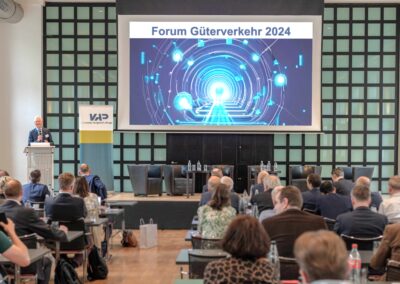
Wagonload transport can become competitive
Forum Freight Transport, 7 May 2024. Nationwide wagonload transport has a very high market share in domestic transport throughout Europe. In export and import transport, on the other hand, it is declining despite long distances. This is due to market compartmentalisation and outdated production structures. Exclusively state railways, exclusively on their home market is the motto. Wagonload transport is seen as system transport. Cooperation in networks, as is common and successfully applied on the roads, is not envisaged on the railway.
However, it is possible to transform wagonload transport into an automated, digitally networked and internationally open railway system. The states are offering the railway sector political and financial support for this.
That’s the point:
- Leading minds from the European transport and logistics industry in Zurich at the Freight Transport Forum
- Morning with an overview of the current legal framework
- Afternoon topic: Transformation of rail freight transport
- Focus on shaping a sustainable freight transport landscape
On 7 May 2024, leading figures from the European transport and logistics industry gathered at the Freight Transport Forum in Zurich to discuss the future of rail freight transport.
In his welcoming address, Frank Furrer, Secretary General of the VAP Association of the Logistics Industry, looked back on the previous forums from 2018 to 2024, at which an ongoing discussion was held on the development of freight transport. The focus was on topics such as multimodality, safety, innovation and digitalisation. He particularly emphasised the role of transport policy as a driver of change. In 2024, the focus will now be on new framework conditions for sustainable freight transport, in particular the transformation of rail freight transport. Frank Furrer emphasised the importance of favourable framework conditions for competition in order to enable multimodality, innovation and environmental protection. He cited the partnership between politics and business, cooperation between rail freight operators, logistics providers and shippers as well as the principle of subsidiarity as fundamental principles. The current bill to modernise rail freight transport was discussed in parliament. The VAP supports measures such as the introduction of digital automatic coupling (DAK) and bridging funding for single wagonload transport (EWLV) under certain conditions.
Dr Peter Füglistaler, Director of the Federal Office of Transport (FOT), gave an overview of the current legal framework and challenges in Swiss freight transport. For him, the temporary financial support for wagonload transport is a last attempt to save inland freight transport by rail. The DAK is the necessary means to achieve this, and with a subsidy of 30% to the owners, it is a good offer. Peter Westenberger, Managing Director of Die Güterbahnen in Deutschland, presented the digital railway and the VDV charter from a German perspective. He called for financial support for wagonload transport exclusively via the service routes, i.e. the reactivation or increase in volume at as many service points as possible. It is very difficult for competitors, as the data situation is extremely opaque. Claudia Nemeth from the Federal Ministry for Climate Protection, Environment, Energy, Mobility, Innovation and Technology (BMK) in Austria explained the instruments and strategies of Austrian transport policy with regard to rail freight transport and compared the per capita investments in Switzerland, Germany and Austria. Austria is committed to actively monitoring the measures of the Freight Transport Masterplan 2030 and recently presented the first monitoring report in this regard. One of these measures is the establishment of a modal shift coach at the end of 2023, who advises companies and municipalities on the modal shift to rail. Together with German Transport Minister Wissmann and Federal Councillor Rösti, Austrian Minister Leonore Gewessler supports the rapid introduction of the DAK. Ueli Maurer, Head of Intermodal Network at Bertschi AG, provided valuable feedback from a business perspective. Waiting for the DAK is impossible in view of the progress made on the road; it must be implemented immediately. The current construction sites, which are still completely inadequately coordinated internationally, as well as energy and track prices are currently fundamentally threatening the marketability of rail freight transport. He also called on infrastructure managers to pass on the savings from complete closures to rail freight transport as compensation for their additional costs.
In the panel discussion that followed, Westenberger spoke about the current chaotic construction site situation and the associated additional costs and called for an improvement in the quality of rail freight transport. Nemeth agreed, but was optimistic about the future of rail freight transport and compared the current challenges to a small child learning to walk: there are setbacks, but it gets better. Füglistaler emphasised that there is no alternative to the corridor renovations and stressed the need for investment in infrastructure. Dr Jens Engelmann, who moderated the panel discussion, raised the issue of the effectiveness of funding measures and discussed the various approaches to supporting rail freight transport. Füglistaler and Nemeth defended the role of the state railways for single wagonload transport. Engelmann concluded the discussion by saying that rail makes an important contribution to sustainability and must continue to be promoted, but that challenges such as capacity bottlenecks and the costs of technological innovations must also be overcome.
After a short break, the event focussed on the transformation of rail freight transport in the future. Gilles Peterhans, Secretary General of the International Union of Wagon Keepers (UIP), shed light on the current status of digital automatic coupling (DAK). He emphasised the difference between technical retrofitting and the associated transformation of archaic rail freight transport. The latter is to be seriously reorganised to make it competitive and transformed into a completely new rail system. Gregor Ochsenbein, Deputy Head of the Data for an Efficient Mobility System programme at the FOT and Jürgen Maier-Gyomlay, Head of the Logistics Working Group / IG WLV at the VAP, highlighted the importance of data ecosystems for efficient logistics. Peter Sutterlüti, CEO of Cargo sous terrain AG, presented the Cargo Sous Terrain (CST) concept. The purely privately financed logistics solution is available exclusively for general cargo. The interplay of underground main leg and overground fine distribution has the potential to significantly complement rail and road transport. Stefan Kirch, Co-Founder and Member of the Management Board at NEVOMO, presented the potential of maglev technology for a more effective and higher-capacity freight transport solution. In particular, autonomous driving of freight wagons in large-scale sidings with a large number of loading and unloading stations as well as consolidation points for dispatch and receipt offer exceptional potential for savings.
The event culminated in another panel discussion, which focussed on the future of logistics in 2035. In addition to the voluntary nature of data disclosure, the challenges of digital transformation, particularly in terms of costs and collaboration with various stakeholders, were also discussed. In conclusion, it was emphasised that we should be open to innovative solutions and not let problems hold us back. Frank Furrer summarised the event with a statement that was as confident as it was challenging: Anything is possible, as long as all industry players join forces and close ranks to move forward pragmatically and with a willingness to compromise.
It was a day full of exciting encounters, informative presentations, stimulating discussions and a clear focus on shaping a sustainable freight transport landscape. The participants left the conference with new insights and impulses for the further development of the industry.
We are already looking forward to the Freight Transport Forum 2025!
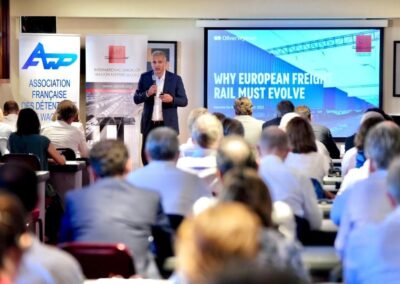
Keepers’ Summit 2023: Adapting to customer requirements and a visionary future for rail freight transport
What it’s all about:
- UIP Keepers’ Summit in Nice
- Customer focus and transformation for rail freight in Europe
- David Zindo new President of the UIP
The International Union of Wagon Keepers (UIP) in collaboration with its French member association AFWP welcomed 120 freight rail stakeholders from across Europe to its annual flagship conference, the Keepers’ Summit, in Nice, France on 15 June 2023. Discussions focused on how environmentally friendly features of rail freight can be used to address climate change while appealing to customers and attracting young talent. The panelists and the audience agreed: rail freight has an important role to play in the future of our society. However, this can only be achieved if rail freight operations transform away from state monopolies towards private sector competition.
In search of change, former UIP President Dr Heiko Fischer challenged the audience to look to the past to better prepare for the future. As the driving force behind the creation of the General Contract of Use (GCU), Mr Fischer pointed to the important role of private wagon keepers in developing rail freight solutions. As a convinced and visionary man, he always placed great emphasis on the need to innovate and transform rail freight to meet the future challenges and expectations of customers and society. The audience acknowledged with standing applause the commitment and achievements of Dr Fischer, who had guided the destiny of UIP as President for 11 years.
Mr Joris D’Inca, Global Head of Logistics at the international management consulting firm Oliver Wyman, confirmed in his keynote speech the need for rail freight to adapt to evolving customer requirements: «Customers expect complete transparency along the transport chain. They place the greatest value on the availability of real-time information and effective corridor management, among other things. Only by adapting to these and other requirements will rail freight be able to gain market share from road freight and play a greater role in combating climate change.» Presentation Joris D’Incà
The expert panel, moderated by Ms Emilie Soulez and composed of Mr Charles Puech d’Alissac (VIIA/Naviland), Mr Paul Mazataud (SNCF Réseau) and Mr Stéphane Gavard (Streem), dove deep into the elements at the heart of the transformation needed to meet the new expectations. Mr Mazataud confirmed SNCF Réseau’s needs and intentions to offer more transparency in maintenance operations, but also RNE’s plans to increase flexibility by adapting the timetabling process. Mr Puech D’Alissac highlighted the elements and benefits of combined transport and the business model behind the activities of Naviland and VIIA. He pointed out the progress made in digitising the interface with customers and encouraged all stakeholders to redouble their efforts in digitising the interfaces between rail freight actors. Mr Gavard provided insights into wagon innovation both in terms of concept and industrial manufacturing, but also explained Streem’s project to develop skills and knowledge in the industry.
Finally, Mr David Zindo, CEO of Streem Group and newly elected UIP President, concluded with a promise: to support the transformation with clear priorities while allowing freight wagon keepers and associations to benefit from the success of the past in order to increase the attractiveness and competitiveness of rail freight. He stressed the importance of the work of UIP and the national federations, which act as consolidated voices and link to local and European political institutions.
«Our societies need to understand the unique selling proposition of rail freight as a crucial means to decarbonise the transport sector. We as a system need to improve our offer to meet the needs of customers, but also to attract and train young talent.» – David Zindo
|
David Zindo becomes new UIP President: A vision for the future of rail freight transport David Zindo will be the new President of UIP, succeeding Dr Heiko Fischer, who led UIP as President for 11 years. Zindo was elected during UIP’s General Assembly on 15 June 2023 in Nice, France. He is supported by Vice Presidents Per-Anders Benthin (CEO of Transwaggon) and Johann Feindert (CEO of GATX Rail Europe). Mr Zindo brings extensive experience to the position, being CEO of Streem Group (formerly Ermewa Group) and a member of the UIP Executive Board since 2015. He previously held senior finance positions at SNCF, Geodis and Veolia Environmental Services. As the new UIP President, David Zindo’s vision is to further strengthen UIP by setting clear priorities, strengthening the team and building alliances with other associations. He wants to strengthen the role of freight wagon keepers in the supply chain and explain the complex EU regulatory landscape. With his long experience and commitment to rail freight, Mr Zindo aims to transform the sector to meet future challenges and the expectations of customers and society. Read more about the newly elected President’s vision in UIP’s interview with David Zindo. |
-
The International Union of Wagon Keepers (UIP) was founded in 1950 and has its headquarters in Brussels. It is the umbrella organisation of national associations from 14 European countries, representing more than 250 wagon keepers and Entities in Charge of Maintenance (ECMs). The fourteen member countries are: Austria, Belgium, Czech Republic, France, Germany, Hungary, Italy, the Netherlands, Poland, Spain, Slovakia, Sweden, Switzerland and the United Kingdom. As the voice for more than 234,000 freight wagons, UIP represents half of the total European freight wagon fleet and is one of the most important resources for the freight rail sector in Europe. Research, lobbying and constant exchange with all stakeholders and organisations interested in the rail freight sector play an important role for the association to direct all efforts towards increasing efficiency in the rail freight service. Through participation in many working groups and committees at European and international level, UIP brings the perspective and interests of freight wagon keepers and works in cooperation with all interested parties to secure the long-term future of rail freight. UIP is recognised by the European Commission as a representative body in the rail sector.
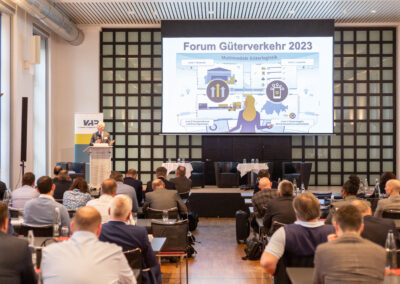
Freight Transport Forum: Multimodality and the Future of (Rail) Logistics
The Freight Transport Forum, which took place on 20 April 2023, addressed the future of logistics, multimodality and, in particular, the steps needed to modernise Swiss freight transport in a digital and dynamic world. Top-class speakers informed the audience about the latest research results, developments and challenges in practice as well as new legal framework conditions.
The three introductory speeches by representatives of the business community, Sara Udavri (IKEA Supply AG), Titus Bütler (Swiss Post) and Rainer Deutschmann (Migros-Genossenschafts-Bund) clearly demonstrated the business community’s commitment to sustainable logistics. One lever for this is the shift of transports into multimodal logistics chains, in which energy- and space-efficient modes of transport such as shipping and rail should also play a leading role. This is difficult in a dynamic world with traditionally less flexible partners and limited infrastructure capacities and involves considerable supply risks. However, based on the findings of research, presented by Dr. Matthias Prandtstetter (AIT Austrian Institute of Technology) for the provision and use of data and artificial intelligence, solutions are emerging to be able to organise increasingly dynamic and resilient transport chains. The data exchange structures that are necessary for this are already active in the field of CT, as exemplified by the DX I hub presented by Christoph Büchner (DX International) with government support from Germany, or are in the process of being created due to the new legal basis in Switzerland, presented by Monika Zosso (Federal Office of Transport BAV). Dr. Peter Füglistaler (Federal Office of Transport FOT) outlined how Switzerland intends to integrate the rail freight transport system into multimodal logistics and transfer it to the digital world of tomorrow.
In Europe, a negative development can be observed despite EEC Directive 91/440: Declining modal split and high subsidies for state railways, little customer orientation and innovation, as in many places in Europe competitors in rail freight transport still play a subordinate role. A fundamental restructuring of the rail system is therefore inevitable in order to find a way out of the subsidy trap. In doing so, the system must be made sustainable and risk-optimised through the implementation of automation and digitalisation by means of the DAK as the first step without alternative. However, this must be followed by the further development of the system, especially in wagonload traffic, in order to reduce the risk of failure for the customers and the owners of the state railways operationally and financially and to promote customer orientation and innovation. One possible solution is to split the system into a network provider of several players with a system integrator and a neutral last mile provider outside the transport market (see blog article «Outsourcing the last mile and making it non-discriminatory»).
Review of the Freight Transport Forum: The most important points in detail
MULTIMODALITY – MODERNISING SWISS FREIGHT TRANSPORT
Against the backdrop of the current debate on the financing of rail freight transport by the federal government, the Freight Transport Forum dealt with the challenges of multimodality in logistics.
Welcome
In his welcome address, Frank Furrer pointed out the thread running through the VAP’s forums, from safety in the area of conflict between costs and quality and new forms of cooperation in wagonload traffic in 2019, through politics in the green rush and the actual innovation potential of automation and digitalisation in 2022, to the current forum, which deals with the future of logistics and multimodality. The fundamental renewal of the rail system and the harmonious and powerful interplay of all modes of transport are necessary to make optimal use of the available capacities of the various infrastructures, to ensure a secure supply of Switzerland and also to create a place for rail in logistics. All this is in the interest of Switzerland as a place to live and do business. Since EU Directive 91/440, i.e. well over thirty years ago, the states in Europe have been trying to lead their own railway companies to success. Despite large subsidy programmes in UCT, a declining share of rail freight transport in the modal split can be observed and rapidly increasing subsidies to the state railways are necessary. There is no alternative to modernising and fundamentally restructuring the system. It will once again cost the states a great deal of money and demand a lot from the industry. What it could look like will be discussed together today.
Multimodality – On the Revision of the Freight Transport Act
Dr. Peter Füglistaler, Director of the Federal Office of Transport, presented the Federal Council’s proposal for the revision of the Freight Transport Act. This focuses quite strongly on measures to strengthen multimodality, as there are practically no monomodal transports by rail. A redefinition of the transhipment platforms, which are to enable more multimodality and bundling, especially as city hubs, and their financial and spatial planning support are an essential improvement of the framework conditions. A transhipment bonus is intended to provide incentives to shippers to increasingly combine different modes of transport in their logistics chains. For the director of the Federal Office of Transport, the Digital Automatic Coupling DAK is a key factor for success and less future than urgently needed reality. The state is happy to help on the way to this new reality, but the initiative must come from the economy.
Multimodality – On the needs of business – IKEA
Sara Udvari, Category Manager Logistics at IKEA Supply AG, emphasises the importance of sustainability in the company’s supply chain. The vision of creating a better everyday life for people includes responsibility for the environment. As IKEA’s products often make a long journey through the supply chain, it is important to find sustainable solutions. To be climate positive by 2030, IKEA focuses on reducing greenhouse gases, improving energy efficiency and supporting suppliers. In transport, the aim is to reduce greenhouse gas emissions by 70%, while in storage the target is to reduce CO2 emissions by 80%. To achieve these goals, IKEA is focusing on three key areas: increasing efficiency, replacing fossil fuels with intermodal solutions and electrification, and rethinking the way products are delivered. IKEA is already committed to intermodal transport and is currently at 46% intermodal solutions globally. Fact-based CO2 calculation is an important part of IKEA’s sustainability strategy. Preset calculations only give average values, so fact-based tools should be used to get a realistic calculation of the carbon footprint. IKEA aims to further develop multimodality in order to find even more sustainable solutions. A prerequisite for this is dynamic transport chains and a corresponding organised constant exchange of data. Cooperation with partners who share the same values is central to this.
Multimodality – On the needs of the economy – Migros
Rainer Deutschmann, Head of Safety & Transport, is committed to a sustainable supply chain at Migros. The focus is on multimodal goods logistics that combine different means of transport such as rail, truck, autonomous driving and Cargo Sous Terrain (CST). Together with economiesuisse, VAP, Astag and IG DH, the role that the various means of transport should play in sustainable freight logistics is being worked out. Although Migros is fundamentally opposed to subsidies, a limited subsidy in the area of technology transfer is advocated as long as it does not distort competition and the benefits reach the customer. In order to make goods logistics more sustainable, the focus is on reducing the number of kilometres driven and increasing automation. Good multimodality requires a complete redesign of the railway. CST is in the implementation phase and is already well advanced. Switzerland’s largest warehouse in Ebikon also serves as a test site for autonomous driving. For trucks, several drive technologies are still being investigated, such as biogas, electric or H2. In order to select the most efficient means of travel with the most suitable drive, Migros evaluates data from GPS tracks. Rainer Deutschmann’s commitment shows that companies can and must live up to their responsibility towards the environment. Cooperation with various partners and the use of new technologies are key success factors.
Multimodality – On the needs of business – Post Office
Titus Bütler shed light on multimodality in Swiss Post’s transports and the needs of its customers, who expect fast, reliable and affordable deliveries. Swiss Post strives to meet these needs by ensuring frequent and reliable transport, offering competitive prices and providing important data. There are 45 postal trains daily with a punctuality rate of 94.4%. However, the truck is about 25–40% faster from ramp to ramp compared to the train, even if the truck still has to pile up the goods. This has led to a decline in the rail share. Nevertheless, Swiss Post continues to rely on rail and is therefore trying to build infrastructure to speed up rail transport, such as letter centres with ramp tracks and its own rail terminals (kV) at the three large parcel centres. Since Swiss Post has to fulfil a basic service mandate, the acceleration of rail transports must also be supported in the framework conditions. Approaches for this are qualified express routes, prioritisation of time-critical freight traffic next to passenger trains (key words: priority departure of the fast goods train before the suburban train at the node), acceleration of shunting work including brake tests and the use of fixed bi-modal drive compositions.
Modernisation of freight transport in Switzerland and Europe through multimodality
Jürgen Maier has summarised facts on the modernisation of freight transport in Switzerland and Europe through multimodality on the basis of information from the umbrella organisation UIP – INTERNATIONAL UNION OF WAGON KEEPERS. Surveys show that multimodal logistics are in demand and that rail is regarded by politicians as the backbone of multimodal freight transport. However, for rail to turn this opportunity into reality, a Europe-wide system change is necessary. Especially in WLV, the processes and organisation have remained unchanged for 100 years. A holistic view is required that includes ports, modular systems, digital platforms, intelligent infrastructure, digital networking in the train network, consistent spatial planning and integration into city logistics. The future is digital, and the technologically innovative Digital Automatic Coupler (DAC) project, which is currently being tested by wagon keepers and freight railways, is a key step in this direction.
Modernisierung des Güterverkehrs in der Schweiz und Europa durch Multimodalität
Jürgen Maier hat anhand von Informationen der Dachorganisation UIP – INTERNATIONAL UNION OF WAGON KEEPERS Fakten zur Modernisierung des Güterverkehrs in der Schweiz und Europa durch Multimodalität zusammengefasst. Umfragen zeigen, dass eine multimodale Logistik gefragt ist und die Schiene in der Politik als Rückgrat des multimodalen Güterverkehrs betrachtet wird. Damit die Bahn diese Chance in die Realität umsetzen kann, ist allerdings ein europaweiter Systemwechsel notwendig. Vor allem im WLV sind die Prozesse und die Organisation seit 100 Jahre unverändert. Eine ganzheitliche Betrachtung ist erforderlich, die Häfen, modulare Systeme, digitale Plattformen, intelligente Infrastruktur, digitale Vernetzung im Zugsverband, konsequente Raumplanung und Integration in die City-Logistik einschliesst. Die Zukunft ist digital, und das technologische innovative Projekt “Digital Automatic Coupler (DAC)”, das derzeit von Wagenhaltern und Güterbahnen getestet wird, ist wegweisend. The “C” in DAC can also stand for “connected”. Automated and networked systems are necessary for a thriving economy and society in the future. Jürgen Maier emphasises that cooperation at the political, strategic, operational and technical levels is important to achieve the goals.
Panel discussion
In the panel discussion that followed, there was agreement that for the WLV to exist, its comprehensive reorganisation is necessary, as was also made clear in the consultation responses on the further development of freight transport. It was mentioned in passing that this political debate was initiated by VAP President Josef Dittli with his motion and that the VAP has contributed a lot to the industry’s united stand on this issue. The aspect of an overall vision that includes the topics of energy and food policy was interesting. In surface freight transport there is no modal shift target, there is a free choice of transport mode. This makes it all the more important to make rail transport more attractive in order to develop a competitive alternative and supplement to road transport, because the road would not be able to absorb the loss of all WLV. The DAK offers a first step towards increasing efficiency and thus offers an inevitable prerequisite for the fundamental transformation of WLV.
There was also a debate on whether transport always has to be faster and how to reconcile the competitive advantage of fast transport with sustainable logistics and an aligned supply chain. The participants agreed that all stakeholders involved must participate in a networked redesign to find a sustainable solution for the future. The discussion ended with the conclusion that prioritisation, reduction of process inefficiencies and digital networking are the keys to on-time, low-cost and fast delivery.
The future of (rail) logistics
With the Federal Mobility Infrastructure Act, the federal government plans to create a public data platform to simplify multimodal solutions and network all the players involved. In the afternoon, speakers from the federal government, academia and business highlighted in their presentations how the federal government is approaching the topic and what requirements the shipping industry has for multimodality.
The future of logistics
The presentation by Dr. Matthias Prandtstetter dealt with the future of logistics and the need to act to achieve climate neutrality. It was stressed that just switching to e‑trucks is not enough and alternative logistics solutions must be used. Rail should be established as a real alternative to road, as it is more energy efficient and allows for strong bundling. Synchromodal transports were presented as the concept of the future, where ships and railways form the basic supply and trucks serve as feeders and back-up solutions. Transport decisions are made in real time and by the system, similar to the digital internet, which is called the physical internet. The importance for the railways lies in digitalisation, reliability and flexibility, as well as the equivalence of freight and passenger transport.
Federal law on the federal mobility data infrastructure
Monika Zosso holds the co-leadership of the Directorate Business Section as well as the project management “Data for an efficient mobility system” at the Federal Office of Transport. In her presentation, she introduced the Federal Mobility Data Infrastructure Act (MODIG). Mobility data is to be considered as a system-relevant infrastructure to make the mobility system more efficient, to satisfy individual mobility needs, to operate infrastructures more efficiently and to promote innovations. MODIG shall facilitate innovative solutions for all actors in the mobility ecosystem and enable the spatial data infrastructure for mobility. The National Data Networking Infrastructure Mobility (NADIM) supports the operation and further development of MODI and provides technical support, standardisation, expert support, consolidation and integration of data. This solution is provided by the state without any commercial benefit being sought. Possible use cases in the field of logistics are transport and route planning for all modes of transport, whereby an application for this should be provided by the industry. Exchange with the freight sector is necessary and desirable for this.
CT4.0 – Digital data hub for combined transport
Christoph Büchner, Co-Director at DX Intermodal in Frankfurt, was pleased to be able to show an innovation from Germany, as the EU normally looks rather enviously at Switzerland. His presentation on the topic of KV4.0 dealt with the goal of the Federal Ministry of Digital Affairs and Transport BMVD to create a common data hub for the exchange of data within the intermodal supply chain. The KV4.0 data hub is intended to enable an end-to-end information chain and transparency so that the data is understood by everyone in the same way, and to avoid digital isolated solutions. The data hub supports various message types and is marketed by DX Intermodal GmbH and is internationally positioned with project partners. Currently, 16 players are already connected to the platform and are testing it. It is a data hub, not a platform, and DXI has no access to the data. The KV4.0 project is a promising step towards the digitalisation of intermodal supply chains and can contribute to reducing the competitive disadvantages of combined transport compared to road haulage.
New innovation approaches from practice – unfortunately dropped out. Jens Engelmann made a spontaneous input on optimised transport options with artificial intelligence.
Panel discussion
In the concluding panel discussion, the afternoon’s topics were discussed in greater depth, in particular the importance of planning data and real-time data in the future as well as the concept of the physical internet. Here, goods independently find their way through an intermodal transport network, which reduces empty runs and enables better utilisation of capacities. Standardisation on an EU-wide level was also discussed to achieve harmonisation of language in data platforms and enable network optimisation with AI. One participant stressed that AI is not intelligent, but that the algorithm must have the right data and definitions to achieve good results. Data security was also an important aspect, with data sovereignty always remaining with the sender of the data in the models presented. The possibilities that arise with digitalisation, the correct handling of data and artificial intelligence are also very great for transport logistics.
Summary of the Forum and Farewell
At the end of the forum, Dr. Frank Furrer summarised the findings of the day. The customers have shown that rail is not folklore, but a possible instrument to achieve environmental and supply policy goals. The self-image of the members of the VAP is to promote the shift of industry to rail. The VAP advocates for better framework conditions in politics and for simplification of the often unnecessarily complicated regulated railway system in its expert advice to its members. A more dynamic world demands adaptable transport chains and redundant approaches to meet needs. For this, rail freight, which has remained unchanged for the last 100 years, needs a fundamental redesign. We need networking of all modes of transport, including underground and across borders. For the future, transport logistics needs a mobility ecosystem that enables data exchange and networking. The challenge here is harmonised interfaces. Two years ago, the VAP submitted a funding application for the SGV data platform, which was rejected, citing MODIG. However, it should not be overlooked that the project was developed for passenger transport and that, for example, no trucks are yet planned on MODIG. The VAP wants to bring goods onto the railway. To achieve this, the railway must perform well, satisfying all providers, customers and politicians, in cooperation and competition, using the capacities in a targeted way. It makes sense to start small but think big.
We look back on a successful Freight Transport Forum, where meeting and exchanging ideas was not neglected either.
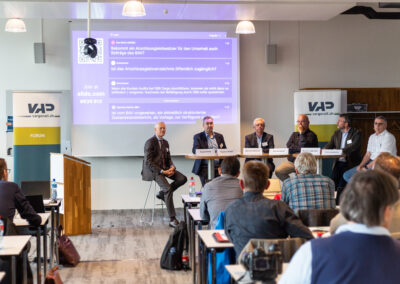
Forum Sidings 2022 – Review
For the first time since 2018, the Siding Forum was held again on 15 November 2022. The speakers agreed: sidings can very well be operated successfully, as long as the operators invest money and time in planning, expertise and safety.
That’s what it’s all about:
- Sidings can be operated successfully. But it requires money and planning.
- Pragmatic safety checks make it possible to compare theory and practice.
- The exchange of experience within the industry and the expert support provided by the VAP are welcomed.
Critical view
In the first part of the forum we brought up the new roles in wagonload traffic. In his welcome address, VAP Secretary General Frank Furrer took a critical look at the current consultation process. He called on those present to contribute their ideas for successful rail freight transport in industry discussions. What is needed is a reorganisation of the roles of the players on the last mile, in distribution and in production. There is also a need for a more flexible use of resources such as wagons and locomotives through new business models. A study by the VAP in 2013 already showed at that time that competition-oriented cooperation leads to a system with more efficient service provision and more traffic.
Operation
Thomas Keller, Head of Logistics at Perlen Papier AG, spoke about the successful operation of the sidings. He described the recruitment of qualified employees as a major challenge for his sidings in Gisikon/Root. The necessary training costs a lot of money and requires far-sighted planning. Other factors are the complex operating regulations and the maintenance of the company’s own locomotives. Thomas Keller shared with the guests his experiences with Article 6a of the Freight Transport Ordinance and RailCom. Thanks to good advice from the VAP, it was possible to find an adequate special solution for access to the Perlen Papier AG siding, according to which no use by third parties is possible because the facilities are not suitable for this and expansion projects exist.
Safety checks
Ueli Remund, member of the siding staff at Planzer Transport AG, used the organisation and processes as an example to show how important clean documentation and safety checks are, e.g. to ensure safety and traceability. Such documentation is essential for the successful operation of railway sidings. Planzer needed to refine the internal controls of the sidings. Ueli Remund recommended hiring the VAP expert service provider to do this if the expertise is lacking in-house.
Maintenance
Heinrich Maurer, Head of Real Estate at mobilog AG, highlighted maintenance and its reliable planning with the support of the VAP, using the example of the company’s own siding. This is an important part of the transport logistics; after all, 70% of the inbound volume is delivered by rail. mobilog AG decided to load onto the train after the Gotthard tunnel was closed for a long time due to an accident. Heinrich Maurer considers this decision to have been the right one in the long term.
Duty of supervision
In the second part, Henrik Lippmann, lead auditor at the FOT’s Safety Supervision Section, reported on the experience gained from the safety supervision of adjoining companies. This supervisory duty brings added value to the companies. Many railway operators are not familiar with the railway, which is why the audits are often tantamount to advice. The online siding directory is an important tool. Siding owners can use this to file documents digitally, set up automatic notifications and for other useful functions. Henrik Lippmann also provided information about the upcoming changes in the 2024 amendment cycle to the Driving Service Regulations (FDV), which will lead to simplifications in the shunting area of the sidings.
Dialogue
In the panel discussion, the speakers discussed the topic “Safety in reality and theory – are there differences?”. Interested shippers, freight railways and service providers took part in the forum. They were able to take away valuable insights and practical tips from the presentations and the discussion. And, of course, networking was not neglected at the subsequent stand-up lunch.
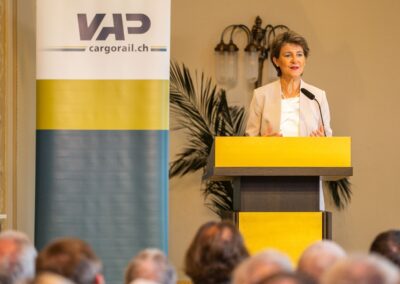
VAP General Assembly of 19 August 2022
Our General Assembly made it clear: 2050 is fast approaching. On site and virtually, numerous VAP members and guests followed the statutory part with a memorable opening speech by President Josef Dittli. A special highlight was the speech by Federal Councillor Simonetta Sommaruga on the importance of rail freight transport for Switzerland.
General assembly, association, freight transport – after these words most people are mentally gone. Today, reading on is recommended. Because on the occasion of our general assembly, it was not only about statutory matters of the shipping industry. In her guest speech, Federal Councillor Simonetta Sommaruga gave a noteworthy signal to the logistics industry: «For the Federal Council it is clear: we want to further strengthen the potential that rail has for freight transport.»
Memorable things about then, today and the day after tomorrow
The opening speech by VAP President Josef Dittli gave the participants valuable food for thought about everything that was, is and should be in rail freight transport. He said that rail freight had played a major role in ensuring that Switzerland survived Corona without any damage in terms of supply, because routes with little passenger traffic suddenly allowed it to operate as it should be able to in normal times. Dittli described the digital automatic coupler as the epitome of digital transformation in rail freight transport, because it stands for the kind of innovative further development that we urgently need. For example, so that all freight railways can establish cooperative and flexible network transport across the board together and without disadvantage. The President looks to Europe with concern. In his opinion, Switzerland must not miss the connection to the European railway sector and the EU innovation programmes under any circumstances.- Download the presidential address by Josef Dittli (in german)
- Watch the video of the presidential address
Landmark decision imminent
We were very pleased that the Minister of Transport, Simonetta Sommaruga, agreed to give a guest speech at our General Assembly. In her speech, she emphasised that the Confederation wants to further strengthen the railways and pay more attention to domestic transport, which is also of great importance for the supply of Switzerland. “We must improve and further develop the system,” said the head of DETEC. She said that the Federal Council would send a bill on this subject for consultation in the autumn. “We are facing a groundbreaking decision. That is why we should not lose sight of what is the recipe for Switzerland’s success, what has always made our country strong: That we tackle the necessary changes best together, that we take responsibility together: Railways, industry and, of course, the Confederation.” The VAP is happy to respond to her invitation to involve ourselves in the discourse, not least with its contribution to the discussion “Rail Freight Traffic 2050″ and the film “Customer-oriented, Innovative, Profitable – Rail Freight Transport of the Future”.- Download guest speech by Federal Councillor Simonetta Sommaruga
- Watch the video of the guest speech
Elections successfully held
Of the items on the agenda that were put to the vote in the statutory part, all were accepted. We welcome the following new members to the Board: Titus Bütler, Bernhard Hoffmann, Bernhard Kunz. We congratulate all of them on their election or re-election and look forward to a constructive cooperation in the Board.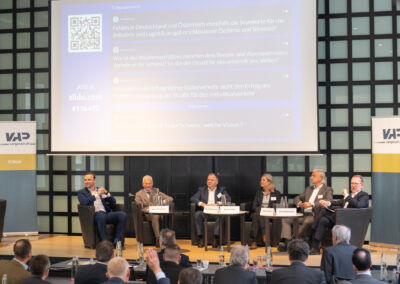
Freight Transport Forum: the industry stands together for progress in rail freight transport
On 3 May 2022, the popular Freight Transport Forum finally took place again after three years. The most important players and representatives from the shipping industry from all over Europe met to refresh their expertise and exchange ideas with colleagues across companies. The chances of making rail freight transport fit for the future in a joint effort are good!
Interesting approaches
The freight transport master plans and rail freight transport in particular, which were launched in Germany and Austria, provide a comprehensive overview of the political strategies and measures. Something comparable is lacking in Switzerland; instead, there is still a strong focus on the individual modes of transport. The VAP therefore continues to pursue an overall view of freight transport and logistics, in close cooperation with economiesuisse and ASTAG. Austria presents an amendment to the Waste Management Act. This stipulates that transports of waste with a total weight of more than ten tonnes, starting from a defined transport distance (decreasing between 1.1.2023 and 1.1.2026 from 300, 200, 100 km), must in future be carried out by rail or by other means of transport with equivalent or lower pollutant or greenhouse gas potential (e.g. propulsion by fuel cell or electric motor). Similar developments can also be seen in the canton of Zurich, for example in the Ordinance on the Transport of Excavated Material and Aggregates by Rail of 3 February 2021, which requires that a significant proportion of excavated material must be transported by rail – or else a substitute levy is payable. In principle, we welcome such regulations to achieve the environmental goals, but we do not consider a specification of the choice of means of transport by means of gentle coercion to be very effective. Rather, the VAP strives to make the railways fit and attractive for shippers, so that paternalism is not necessary.
We therefore consider the common interest in promoting digitalisation to be very positive. As never before, the players in the shipping industry stand united for progress. It is impressive how the various players networked across Europe have decided in favour of digitalisation and want to use this lever together to make rail freight transport fit for the future. Various presentations showed that the Digital Automatic Coupling (DAC) not only brings considerable relief for mechanical work, but is above all a switch for the connectivity of an entire train. This is the prerequisite for digitalisation, which is so important for rail freight transport and which has long since taken place in other industries. With more efficient and transparent processes, rail can become competitive alongside other modes of transport. The motto is collaboration and coopetition, which we at the VAP Association of Shippers also support.
VAP members can download the speakers’ presentations here with their personal login.
The course of the forum in detail
The morning revolved around the question «Transport policy in the green rush?». Gilles Peterhans, Secretary General of UIP explained the transport policy issues at European level. Malte Lawrenz, Chairman of VPI Germany, showed the transport policy framework for Germany, how priority should be given to rail and what funding is needed to be able to implement the master plan for rail freight transport. Frank Petutschnig, Secretary General VPI Austria, presented the situation in Austria on the same topic, where the focus is on the overall view of freight transport, namely the most efficient choice of transport mode in terms of energy demand per tonne. Désirée Baer, CEO of SBB Cargo, added to the situation of the transport policy framework in Switzerland with her presentation and introduced the Wagonload Transport Interest Group (IG WLV), the platform for cooperation between railways and shippers.
In the subsequent panel discussion it became clear that the course for the future of rail freight transport has been set for innovation and that the next step is to define how the investments will be financed. It became clear that the innovations affect all players and that a collaborative approach is therefore the right way forward. Cooperation and competition – or coopetition – are two other buzzwords that are not only desired by the rail actors, but also in the interaction between rail and road.
The afternoon was divided into the two exciting key topics «Innovations & possible implementation» and «Digitalisation with concrete measures». Jürg Lütscher, expert in innovation and regulation at the VAP, spoke about the automation of rail freight transport in Switzerland. He emphasised the importance of optimising processes and interfaces in the course of innovation, the so-called interoperability. Ralf Marxen, Head of External Technical Affairs at Deutsche Bahn AG, spoke about the path to the intelligent goods train: «From Shift2Rail to Europe’s Rail». He pointed out important milestones for innovation, with the Digital Automatic Coupling (DAC) taking on the key function for digitalisation and enabling, for example, automated processes and monitoring, as well as precise customer communication, thus raising the service level of the transport of goods by rail many times over. Stefan Hagenlocher, Managing Director of HWH and TIS Project Manager, who was connected live via video channel, showed what the Technical Innovation Circle for Rail Freight Transport (TIS) requires for digital and competitive rail freight transport. He clearly communicated that there will be no complete automation of rail freight transport without DAC and that standardisation of the technical aspects and a coordinated migration strategy are essential.
The two wagon hire companies Niko Davids, Chief Digital Officer, VTG AG, and Christoph Becker, Head of ECM II and Safety Management at Wascosa AG, demonstrated their digitalisation strategies to strengthen the competitiveness of rail freight transport. Their message too – especially as the two competitors were already sending out a signal with their joint appearance: «Collaboration and coopetition: digitalisation is not a project for one individual! Only through active and open cooperation will there be a benefit for the sector!»
Jörg Bisang, Head of Product Management ZKE, impressed with the possibilities that digitalisation of technical vehicle control with «Wayside Intelligence» already brings today, and called on RUs and wagon keepers to make use of these possibilities.
In the concluding panel discussion it then also became clear that everyone wants to focus together on the migration of the DAC, in the sense of interoperable innovation. This cooperation concerns the entire railway system, which is why it is important to work together on this not as competitors, but as an innovation team that exchanges ideas about their goals. Quick and courageous decisions can enable efficient implementation.
We look back on a successful Freight Transport Forum, where everyone enjoyed finally being able to meet and exchange ideas in the «real world» again.
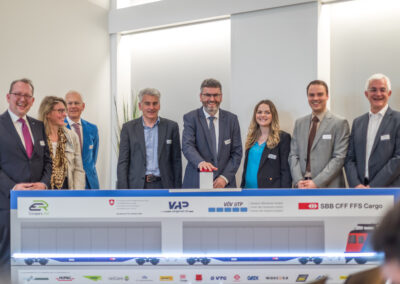
Industry and media event DAC4EU Demonstrator Train
On 25 March 2022, the FOT, the SBB, the VAP and the VöV provided information about the test phase and the far-reaching advantages resulting from the Digital Automatic Coupling (DAK). The message was that the DAK lays the foundations for digitisation and thus for a groundbreaking innovation in rail freight transport.
Since autumn 2021, a digital goods train has been on the road for the first time in Europe for test purposes. The aim is to test the Digital Automatic Coupling (DAK) in real-life operation.
in real operation. SBB Cargo is subjecting the train to an extensive test programme until the end of March. The industry agrees that close national cooperation and coordination in Europe are important factors for the successful introduction of the DAK. The test train is funded by the German Federal Ministry of Digital Affairs and Transport (BMVD).
Presentations of the speakers:
- Wettbewerbsfähig in der multimodalen Transportkette. Frank Furrer, VAP Verband der verladenden Wirtschaft
- Speech by Frank Furrer, VAP (in German)
- Erfahrungen und Details zur DAK. Jasmin Bigdon, Head of Asset Management and Deputy CEO SBB Cargo
- Presentation Peter Füglistaler, Director BAV
- Die ÖV-Branche unterstützt DAC4EU. Ueli Stückelberger, Director Verband öffentlicher Verkehr
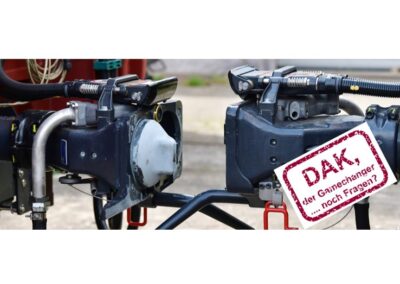
12th VPI Symposium “Digital Automatic Coupling“
PRESS RELEASE OF VPI Hamburg
The gamechanger for rail freight transport is up and running!
1,250 participants found out about the status of the DAC introduction at the digital event on 11 January 2022.
“Rolling out the DAC across Europe is a thick board. We have managed the first centimetres”. With these words, Chairman Malte Lawrenz welcomed the participants of the 12th VPI Symposium “Digital Automatic Coupling” (DAC) in Hamburg. He referred to last year’s agreement on a uniform European coupling standard, the anchoring of the DAC in the coalition agreement of the German government and the work of the European DAC Delivery Programme (EDDP) in Brussels. More than 1,250 participants had joined the symposium via livestream – a record number. Interest in the event was also high in non-German-speaking countries: more than half of the audience followed the symposium in simultaneous English translation.
A dozen experts, all members of the EDDP, reported at the digital event on the state of the European DAC discussion in the fields of “technology”, “migration”, “costs/benefits” and “financing” and presented current results of initiatives such as the DAC4EU demonstrator train.
With the event, the VPI offered the sector the opportunity to ask questions to the EDDP representatives. Keepers, shippers and rail transport companies were particularly interested in aspects of migration and financing, but also in safety issues in the transport of dangerous goods.
“The symposium was definitely worthwhile for everyone involved,” said Jens Engelmann, EDDP Programme Manager, at the end of the event. Not only were the stakeholders happy to answer questions, but conversely, they also took important clarification topics back to Brussels, which will be taken into account in the design of the complex implementation process.
The 12th VPI Symposium took place this year in cooperation with the VPI Austria as well as with important DAC institutions at the European level: European DAC Delivery Programme, DACcelerate and Shift2Rail.
In an interview on Journalistico.de, Malte Lawrence talks about the current status of the DAC project, how much higher productivity will be with DAC and what hurdles there are to overcome until then.
https://journalistico.com/wirtschaft/digitale-automatische-kupplung-das-ebnet-den-weg-fuer-den-intelligenten-gueterzug/
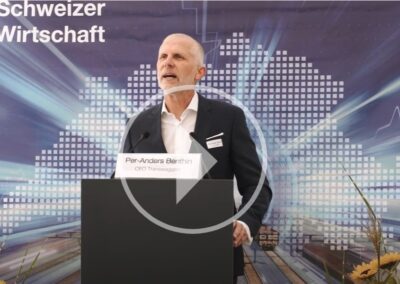
Impressions of the publication of the declaration of intent on automation
Next Stop: Container Terminal Basel Wolf
On 28 September 2021, the signatories publicly presented the declaration of intent for the automation of Swiss rail freight transport. The occasion was a stop of the “Connecting Europe Express” – a special train of the EU for the “Year of Rail” – at the container terminal Basel Wolf. This special train convinces the transit countries in Europe of the feasibility of automatic coupling.
Click here for the video with the complete interviews.
Joining forces for the future
Together with the Federal Office of Transport (FOT) and the Association of Public Transport (VöV), we at the VAP have signed a declaration of intent for the automation of Swiss rail freight transport. The long-term major project started on 1 October 2021 with the preparation and implementation of the migration of the screw coupler to the digital automatic coupler (DAC). Background information on the declaration of intent can be found here.
Revolutionary technology
At the event at the Basel Wolf container terminal, BAV Director Peter Füglistaler, VAP/UIP Board Member Per-Anders Benthin (CEO TRANSWAGGON AG), Désirée Baer (CEO SBB Cargo AG) and Dirk Stahl (CEO BLS Cargo AG) from VöV presented the declaration of intent to their guests and the media. They emphasised that the DAC will revolutionise rail freight transport. Especially for the actors in the logistics chain, it provides indispensable real-time data for a high-quality and thus competitive performance. Finally, the hosts demonstrated the simple coupling process to the interested audience.
